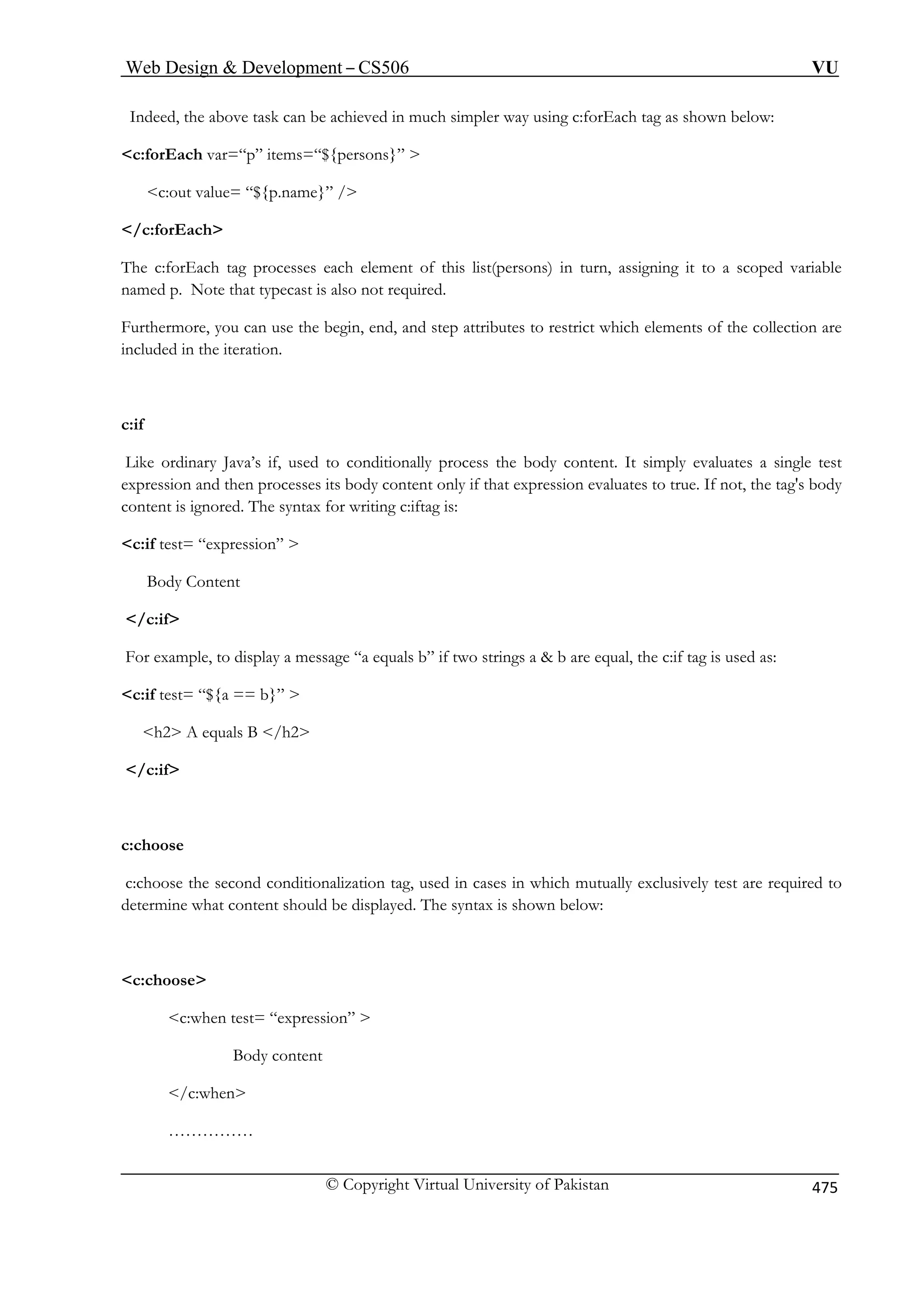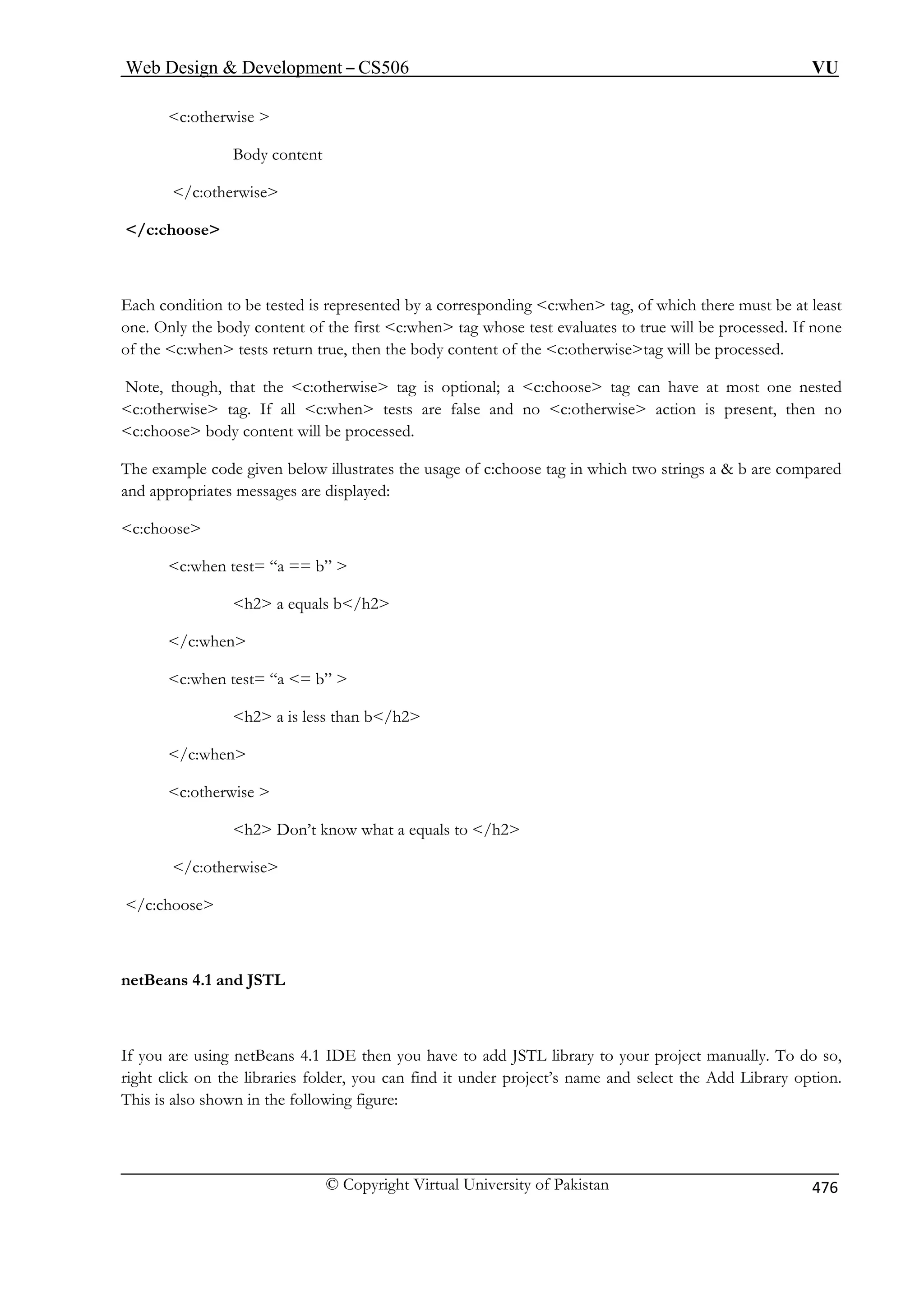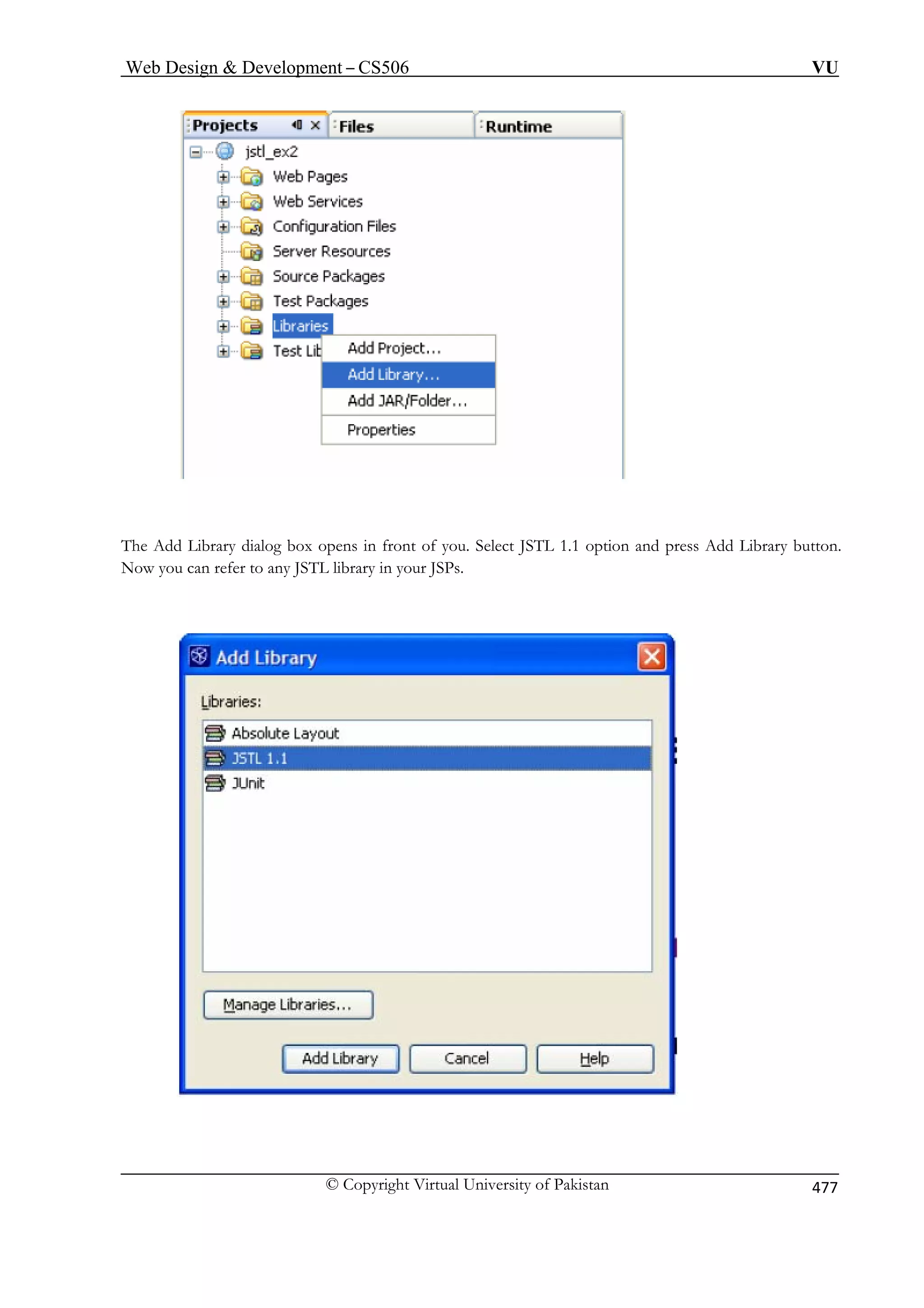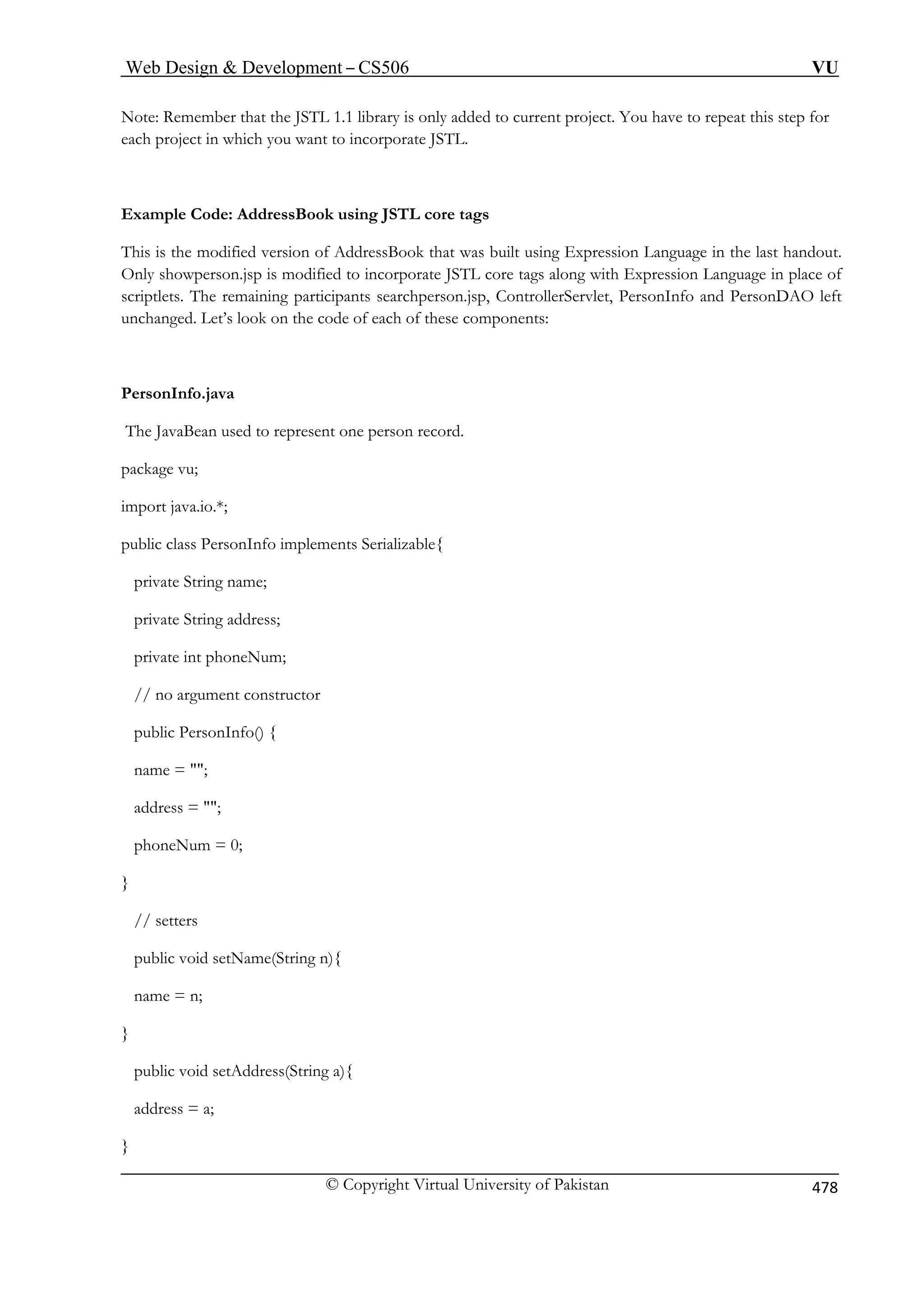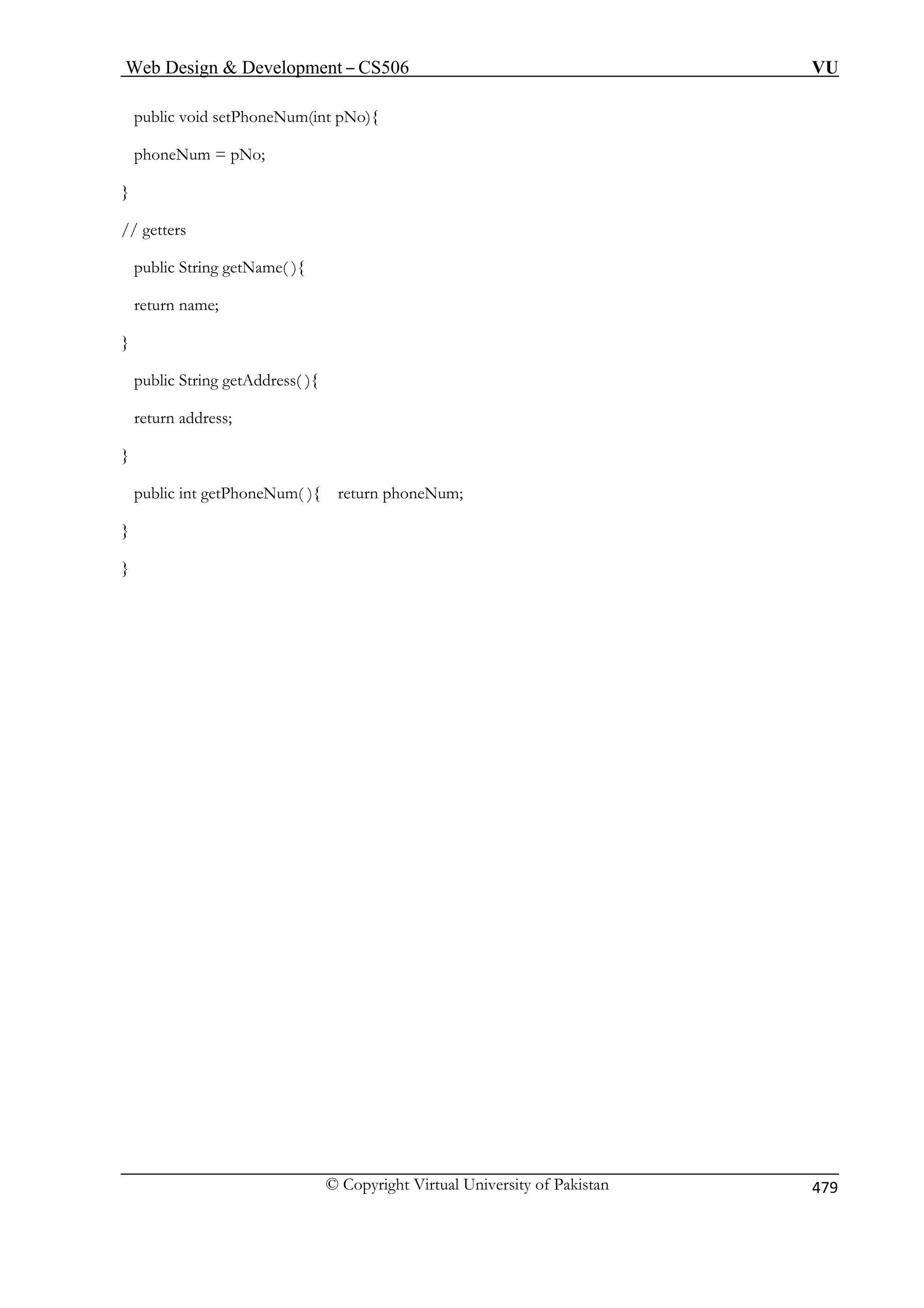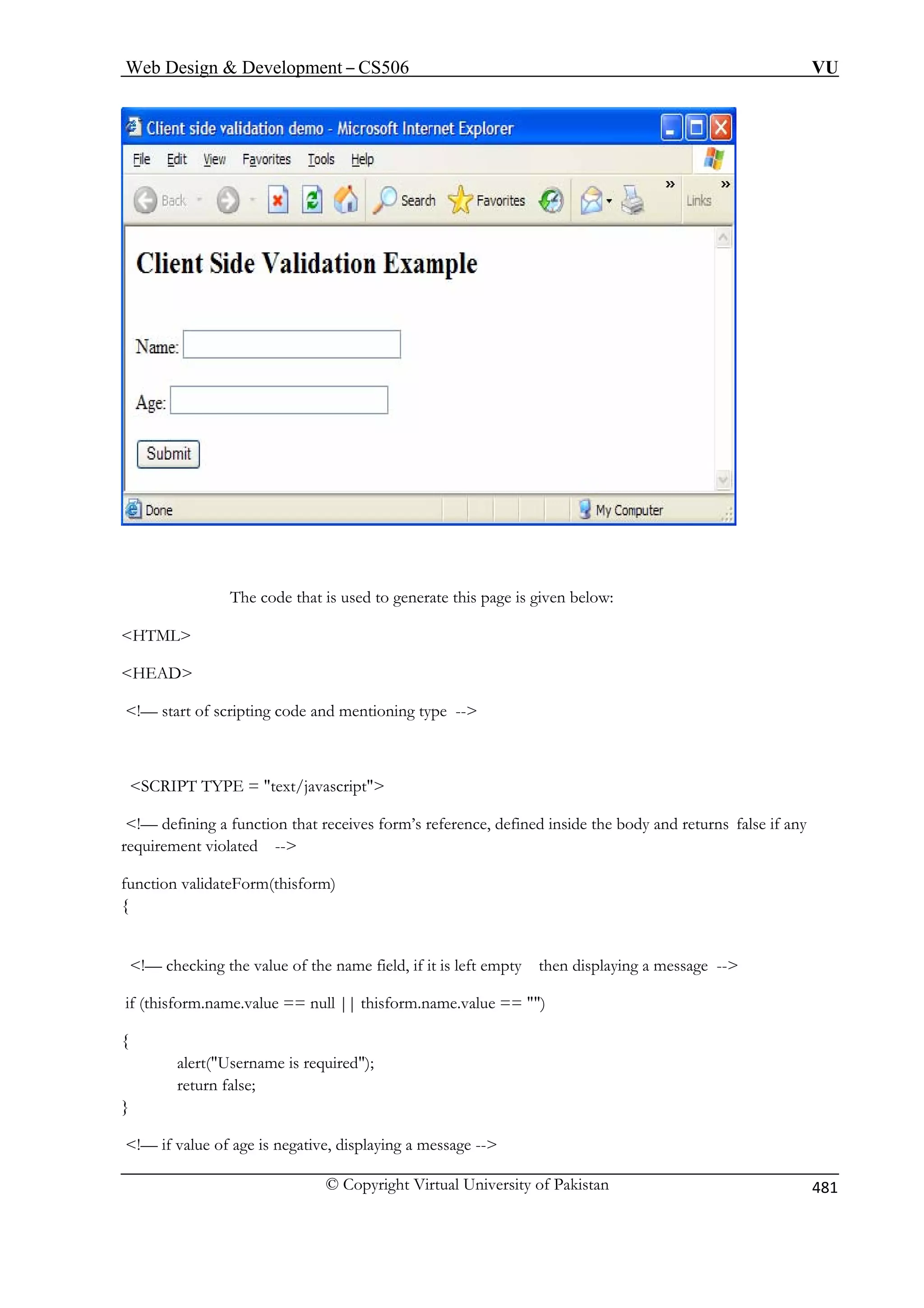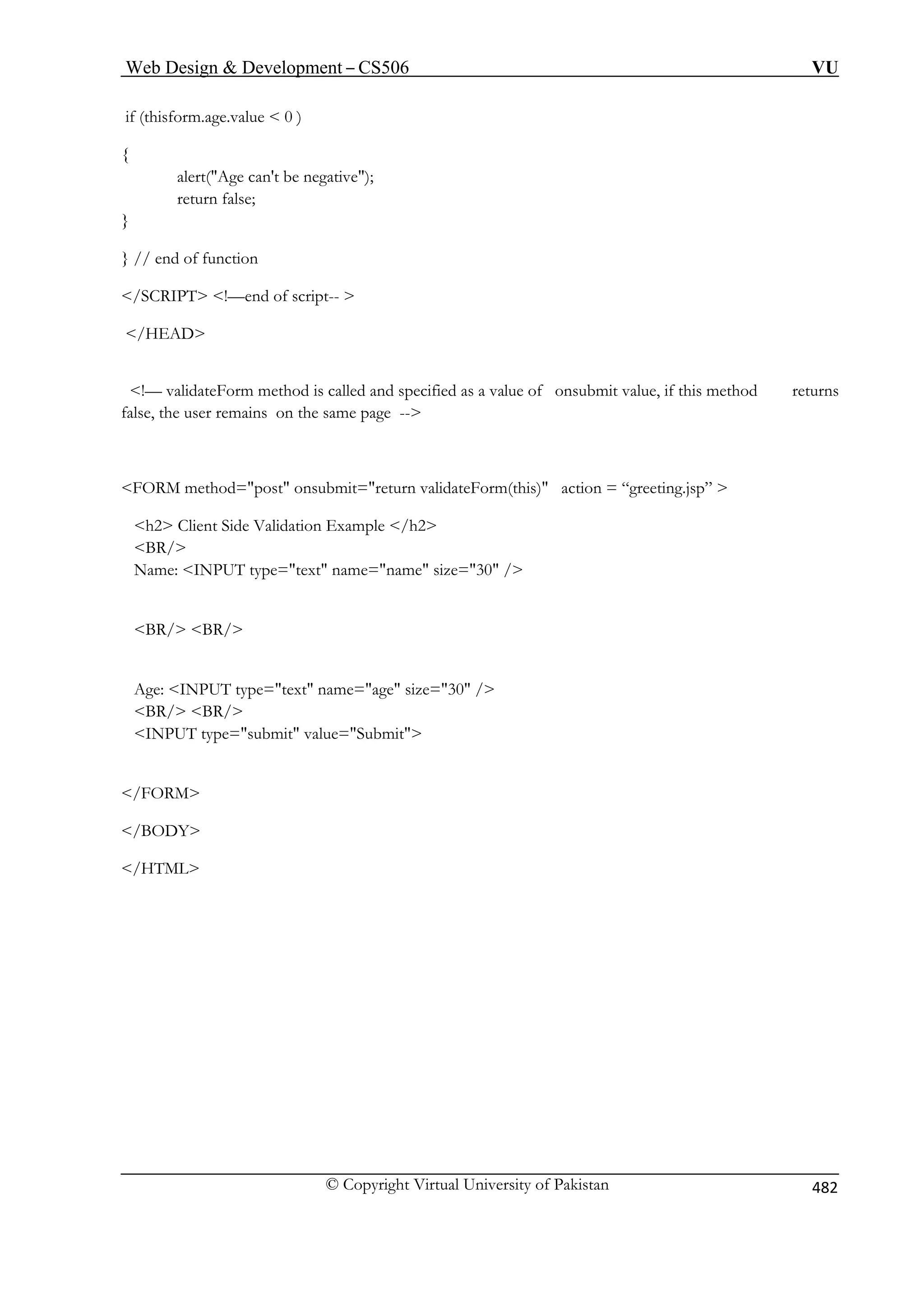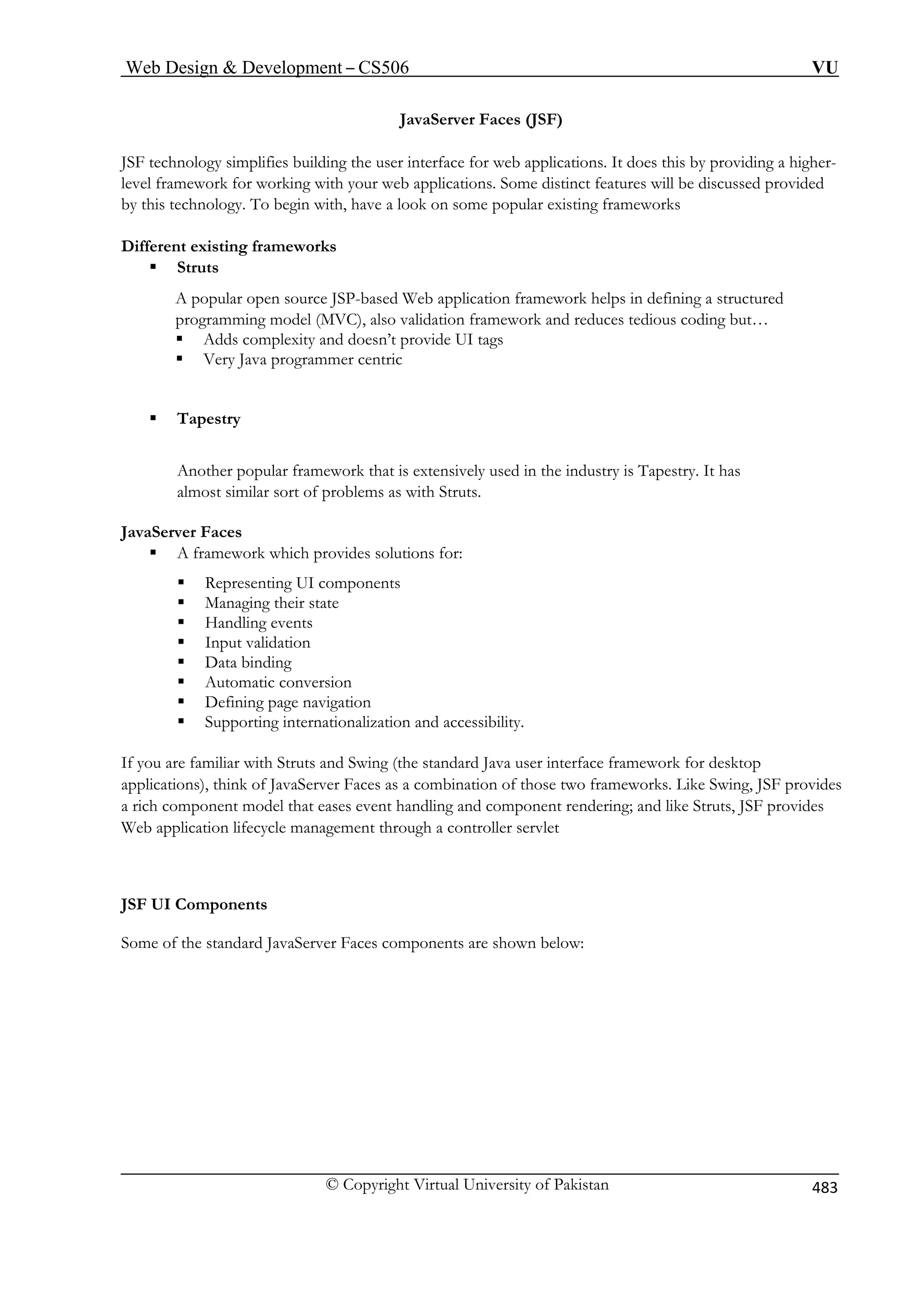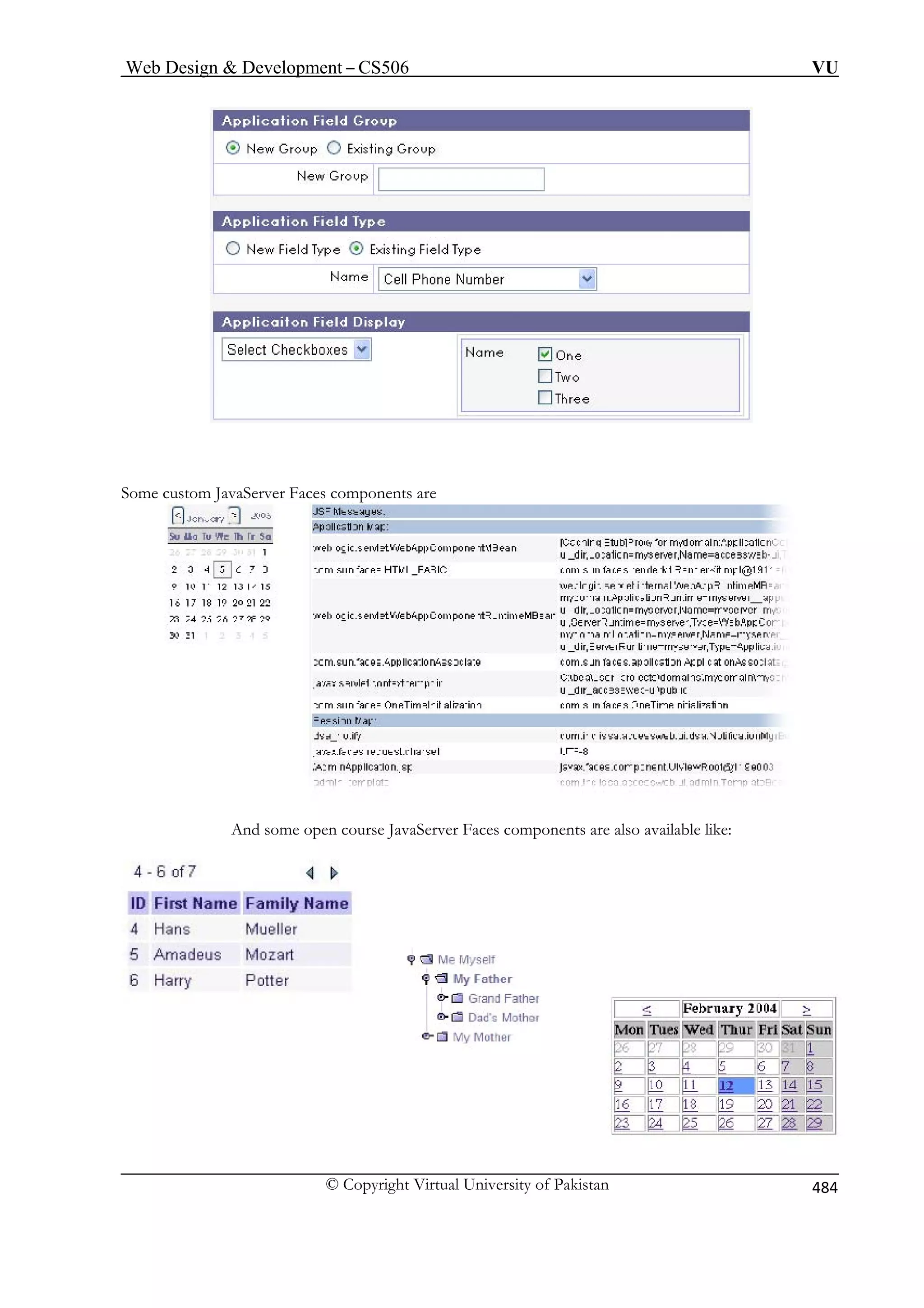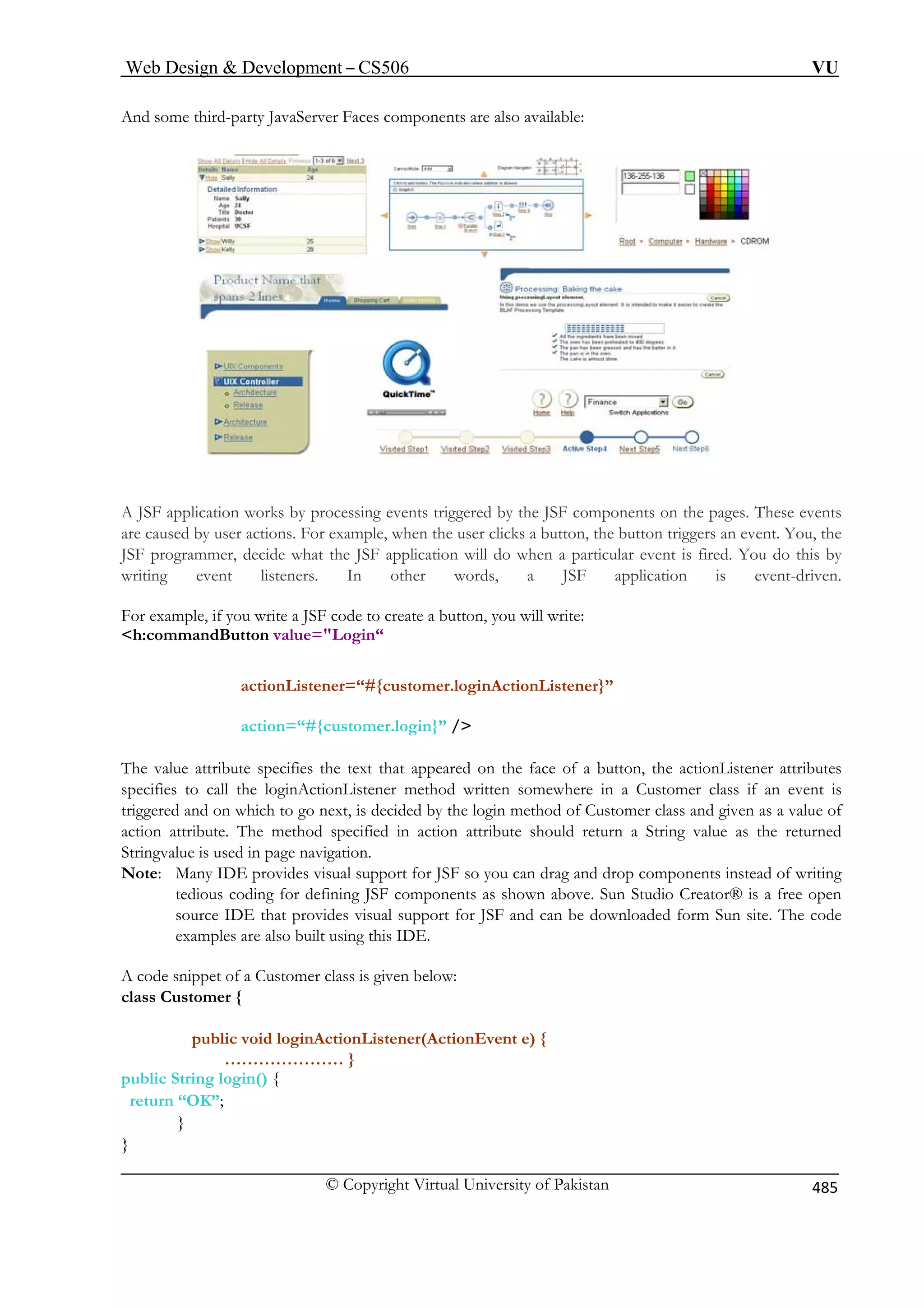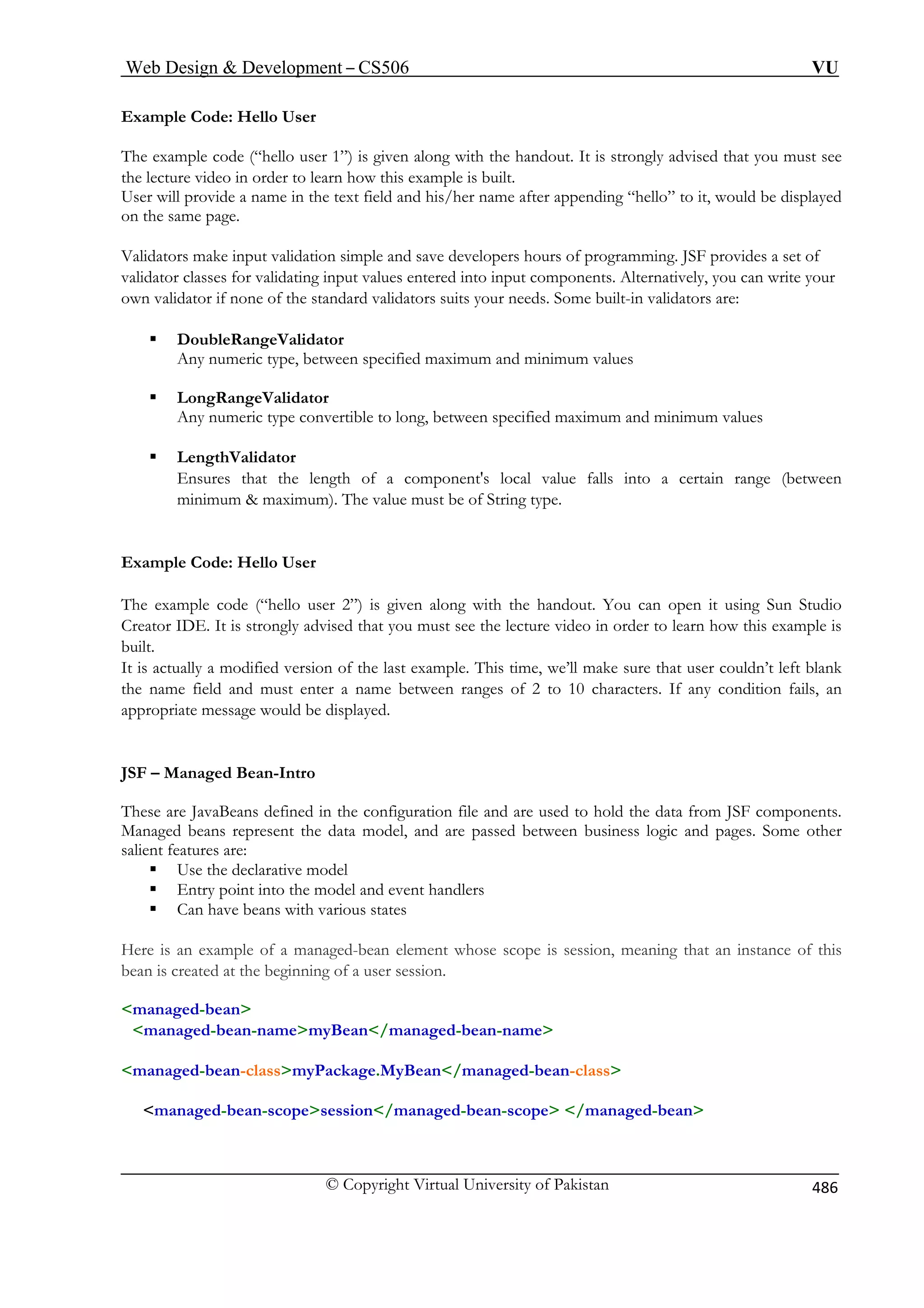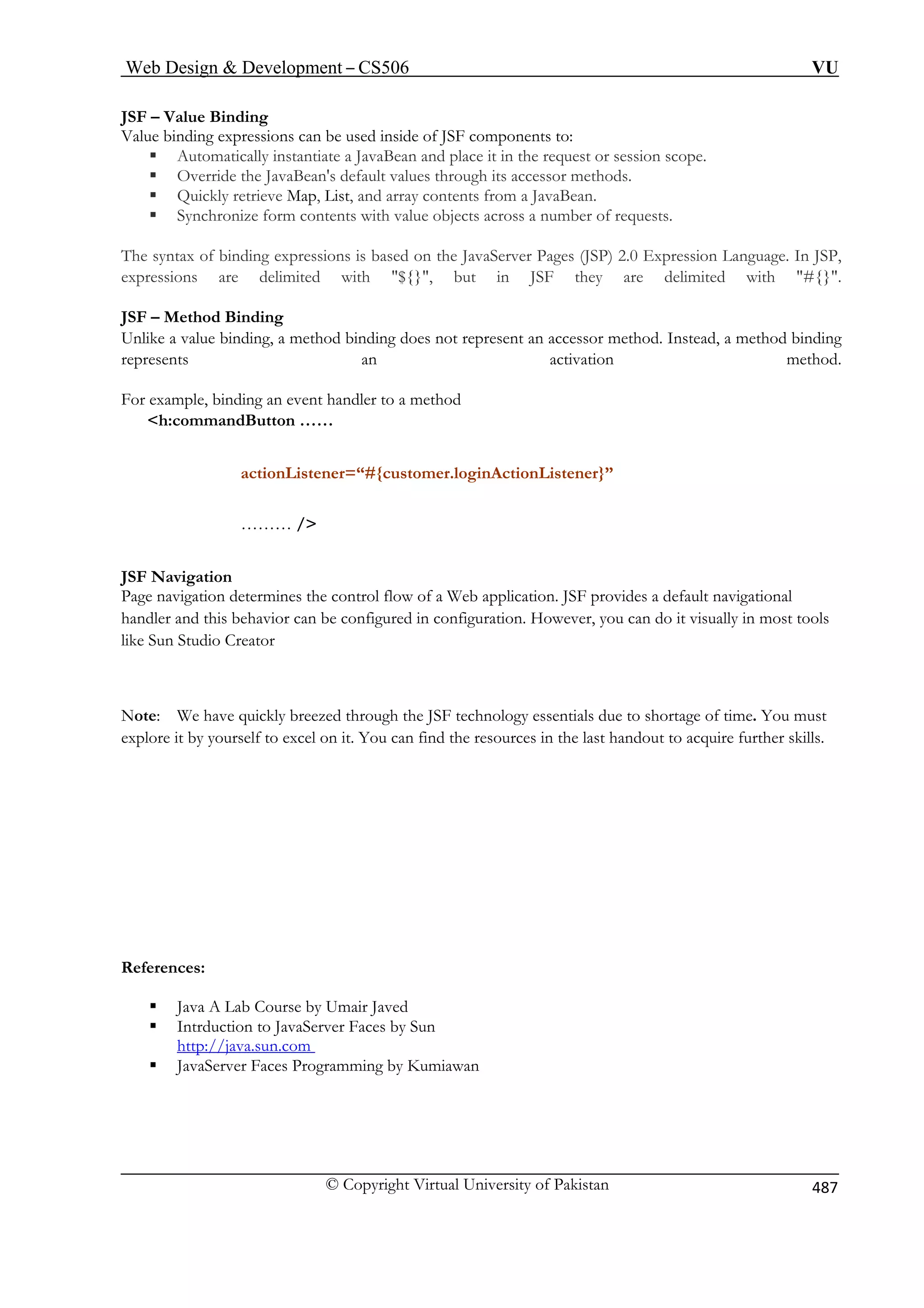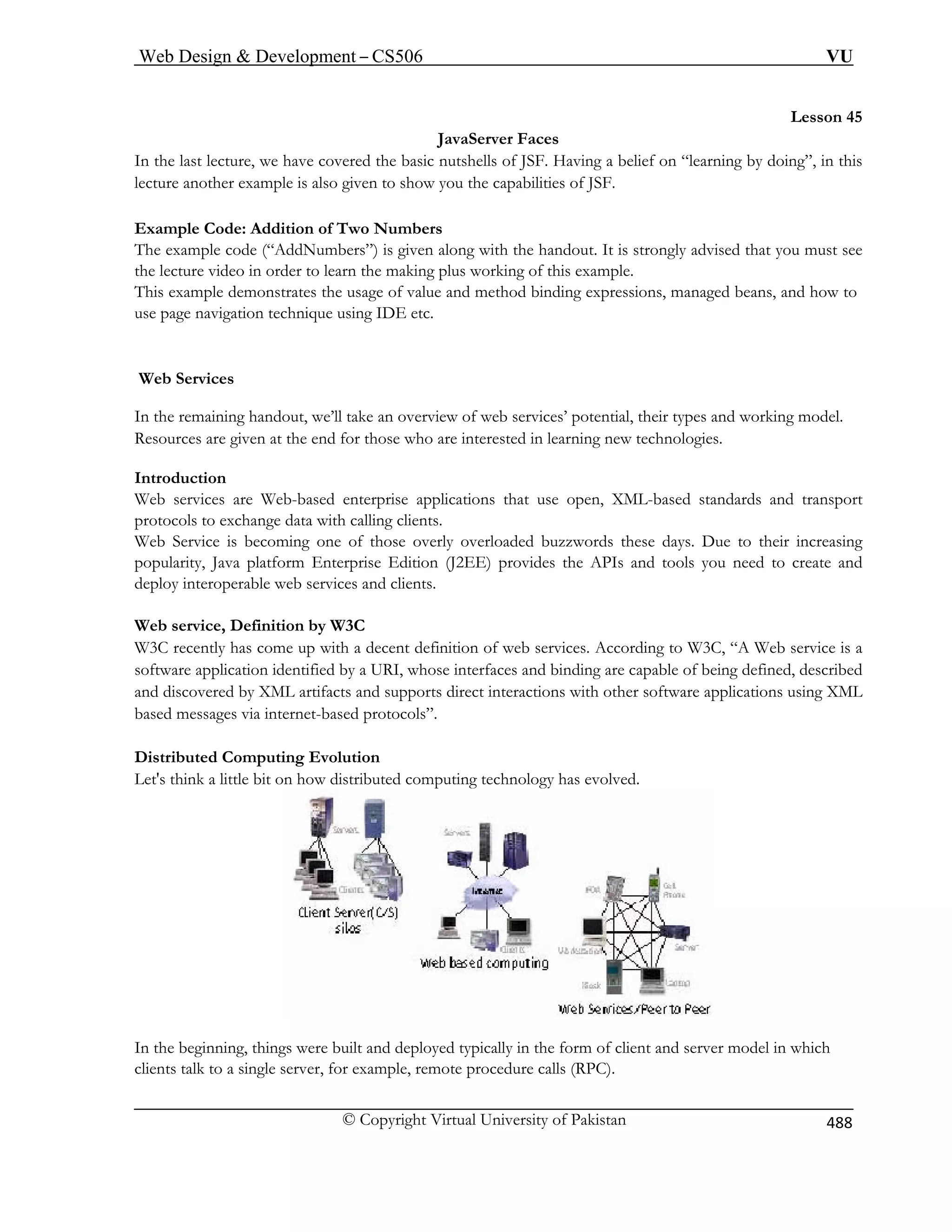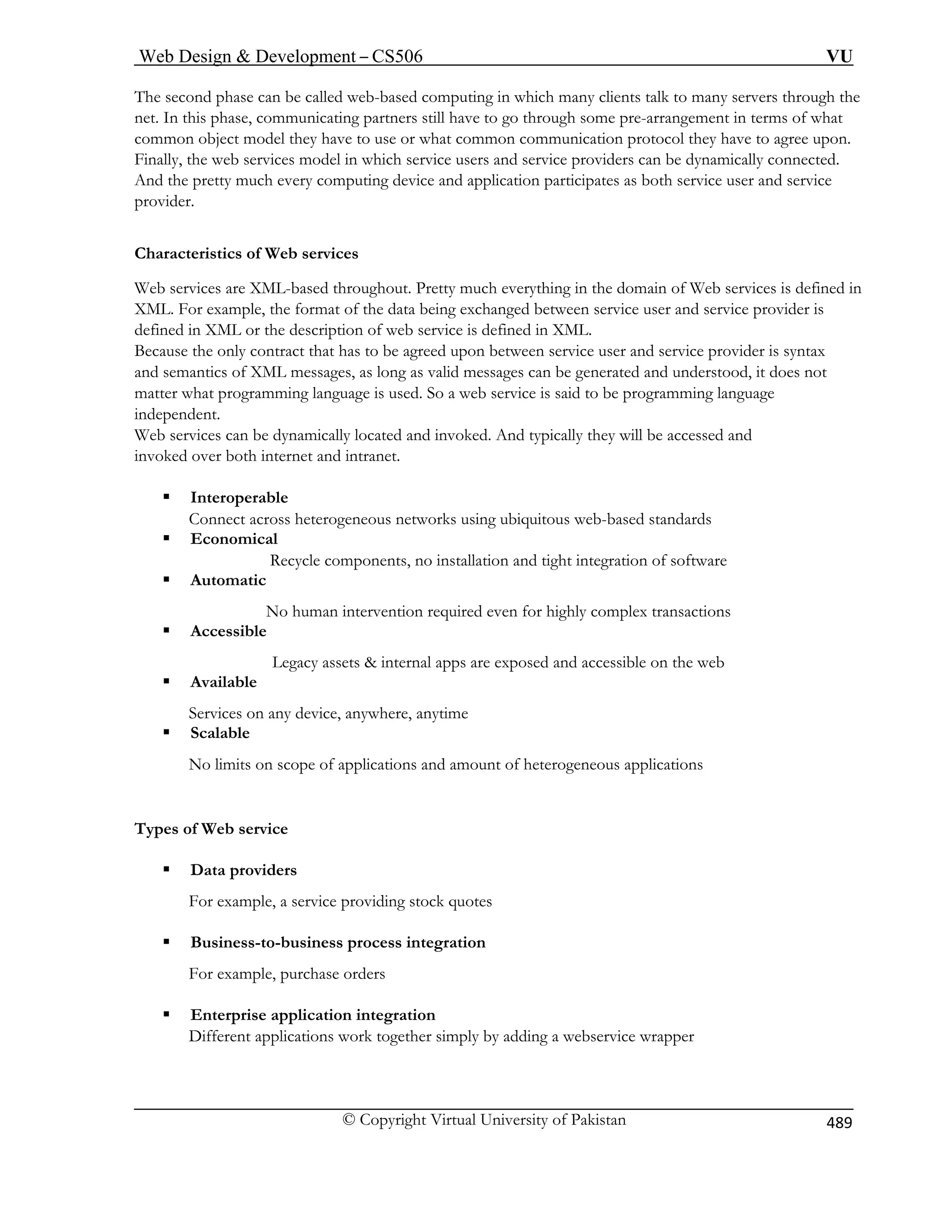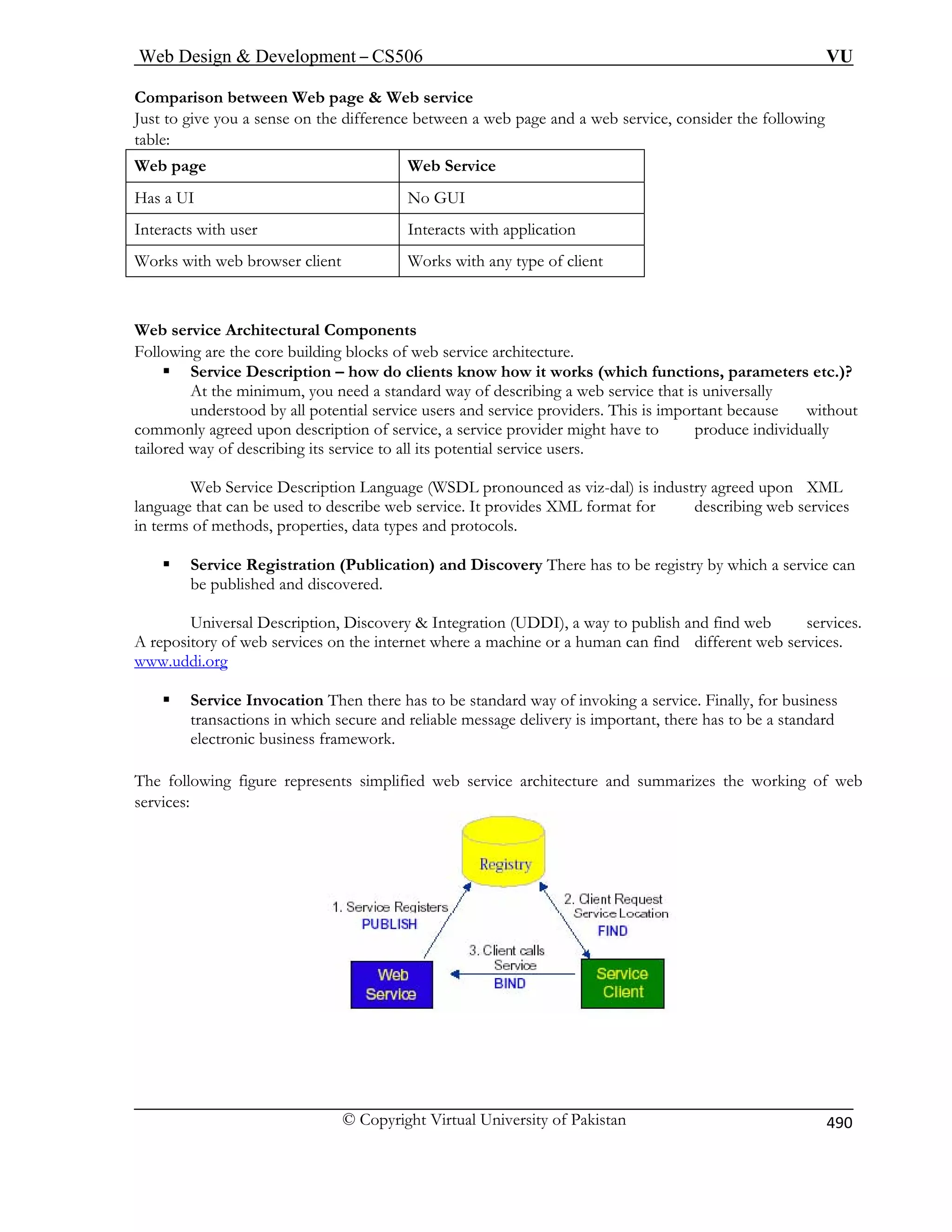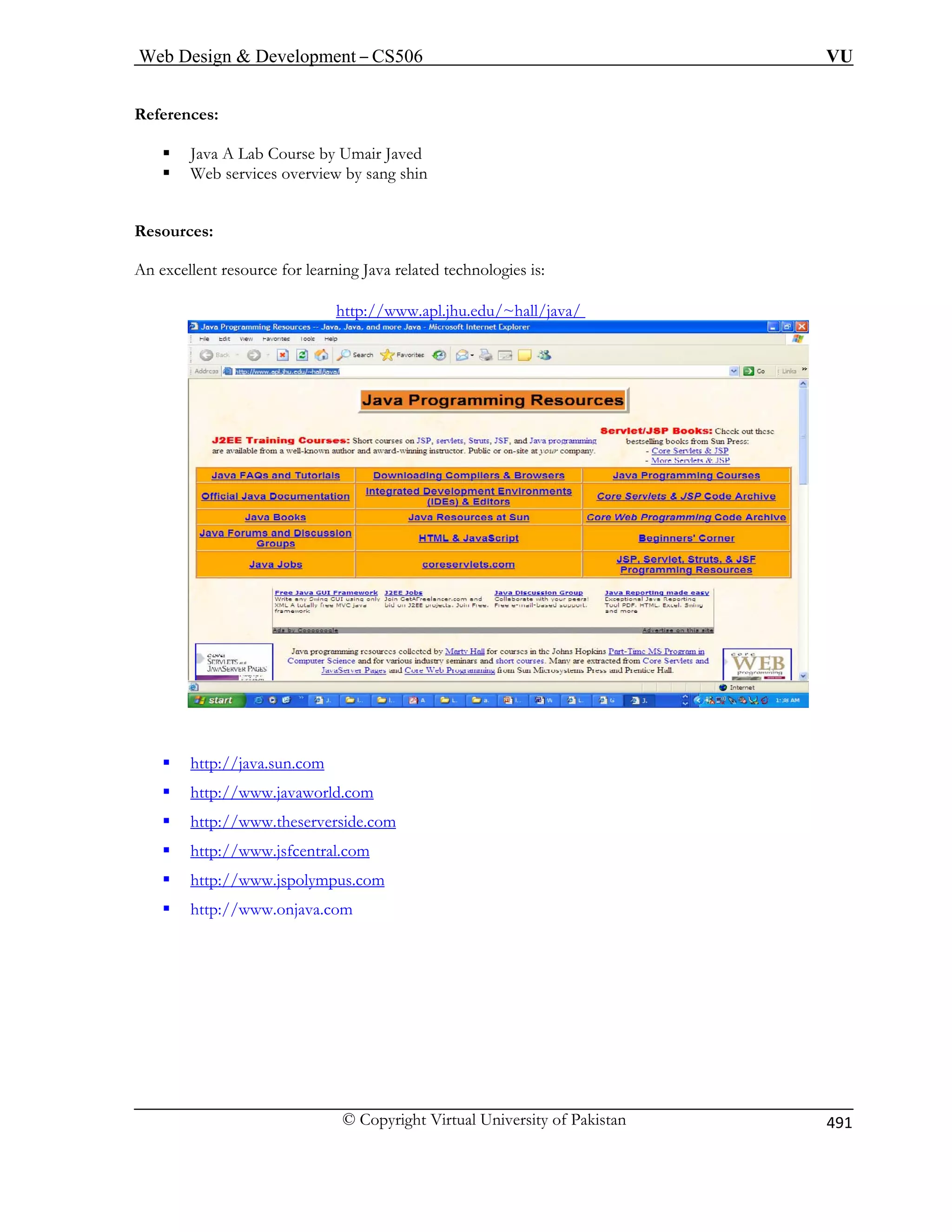This document contains a table of contents for a book on Web Design & Development in Java. It outlines 28 chapters that cover topics like Java features, the Java virtual machine, object-oriented programming, inheritance, collections, exceptions, streams, graphical user interfaces, event handling, Java database connectivity, graphics, animation, applets, socket programming, serialization, multithreading, web application development, Java servlets, and a case study using servlets. The document provides an overview of the technical concepts and examples that will be discussed in the book.
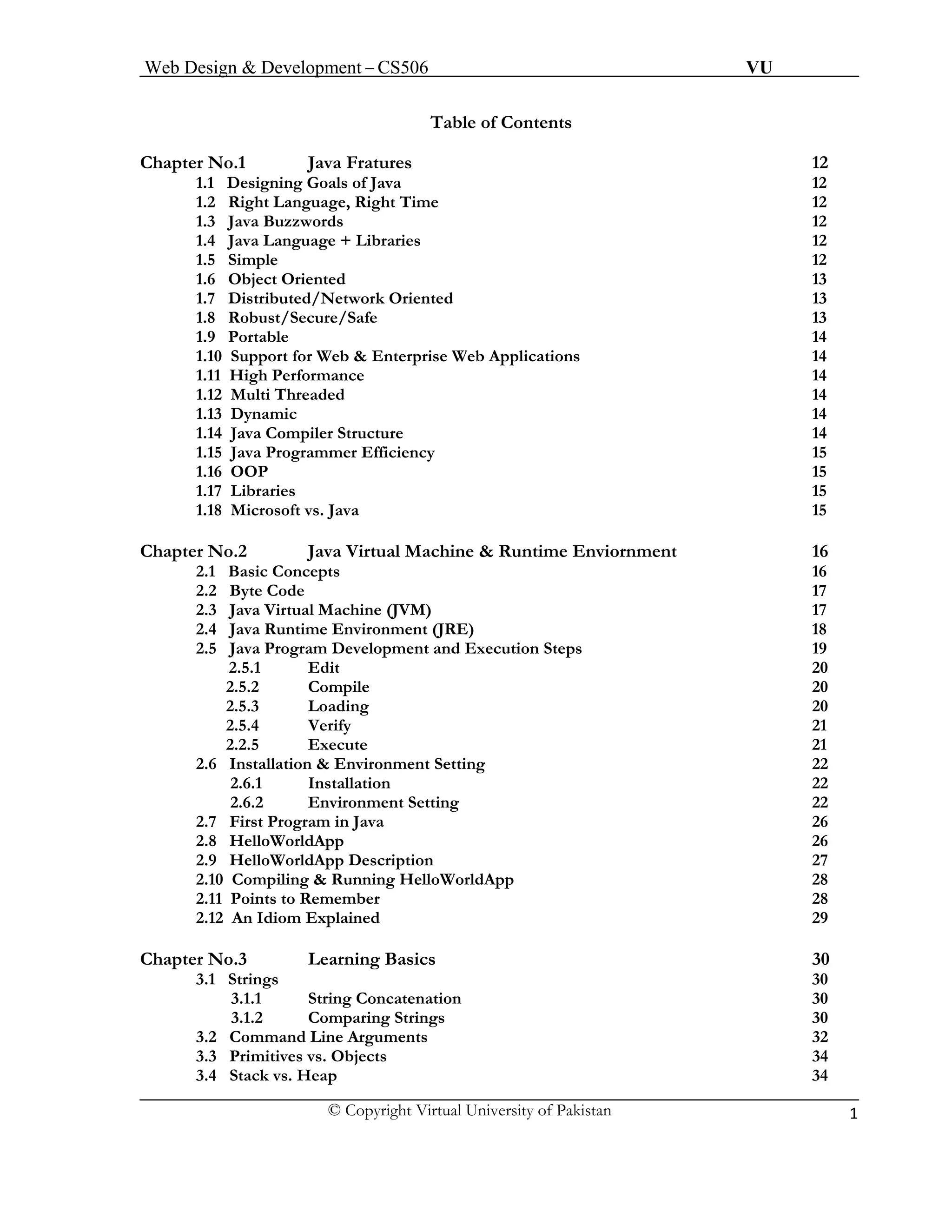
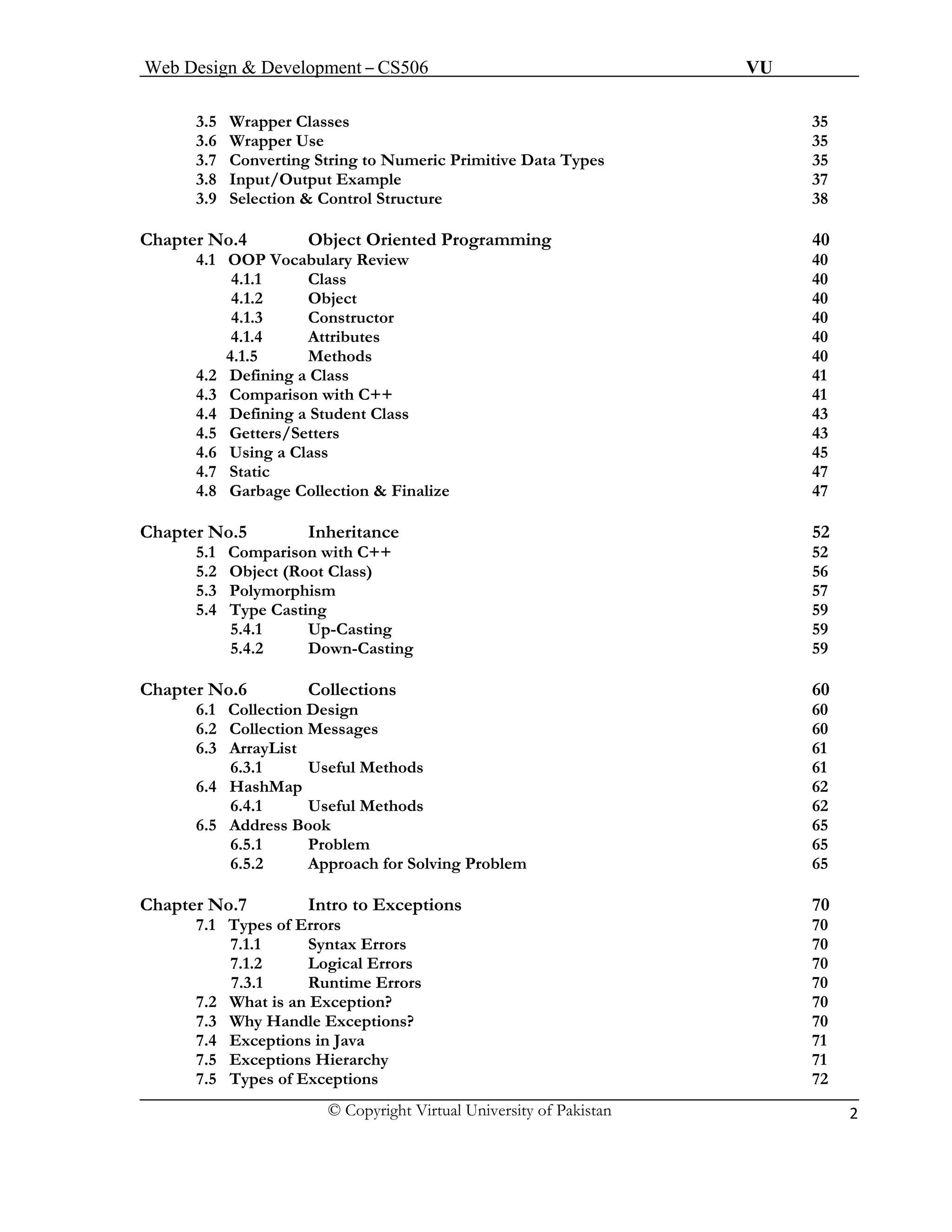
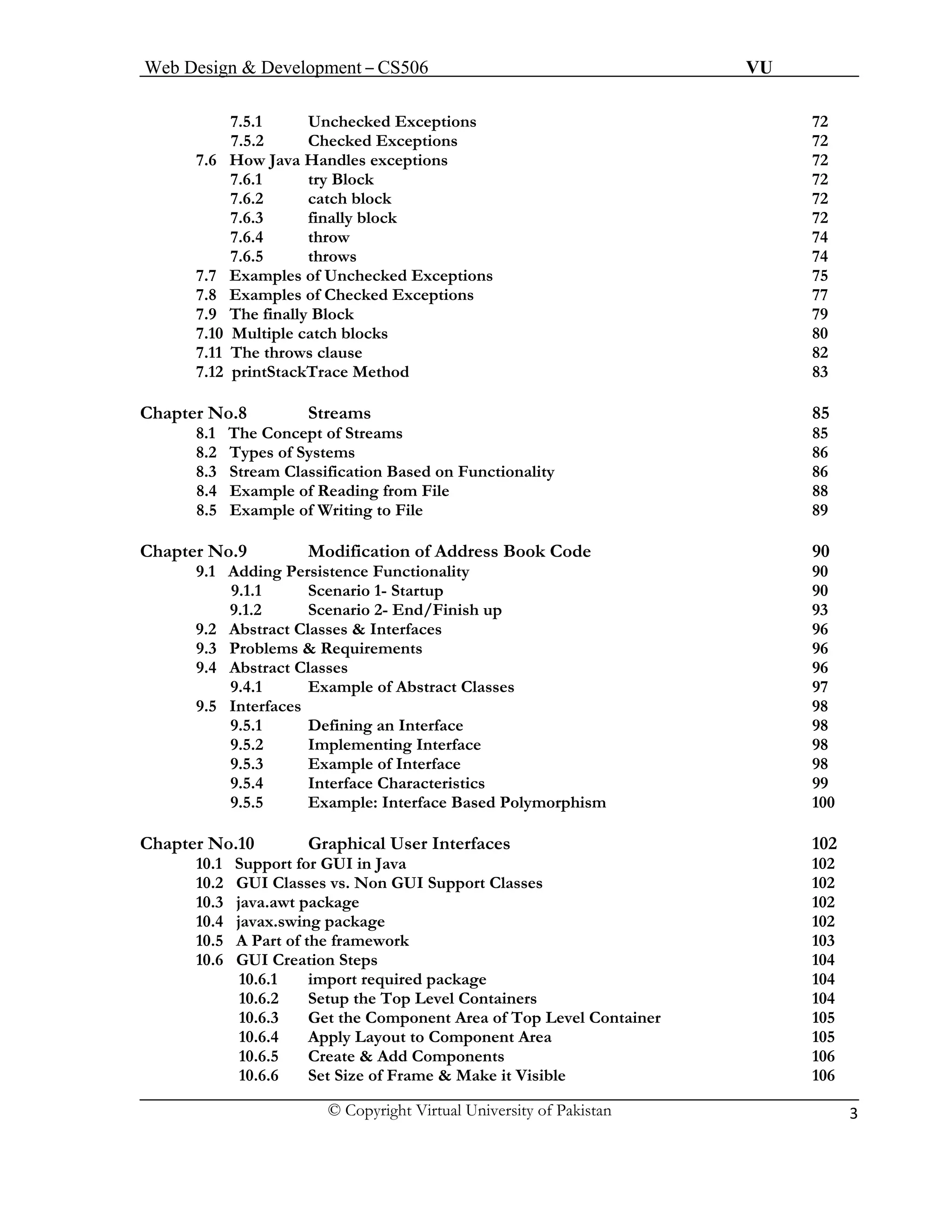
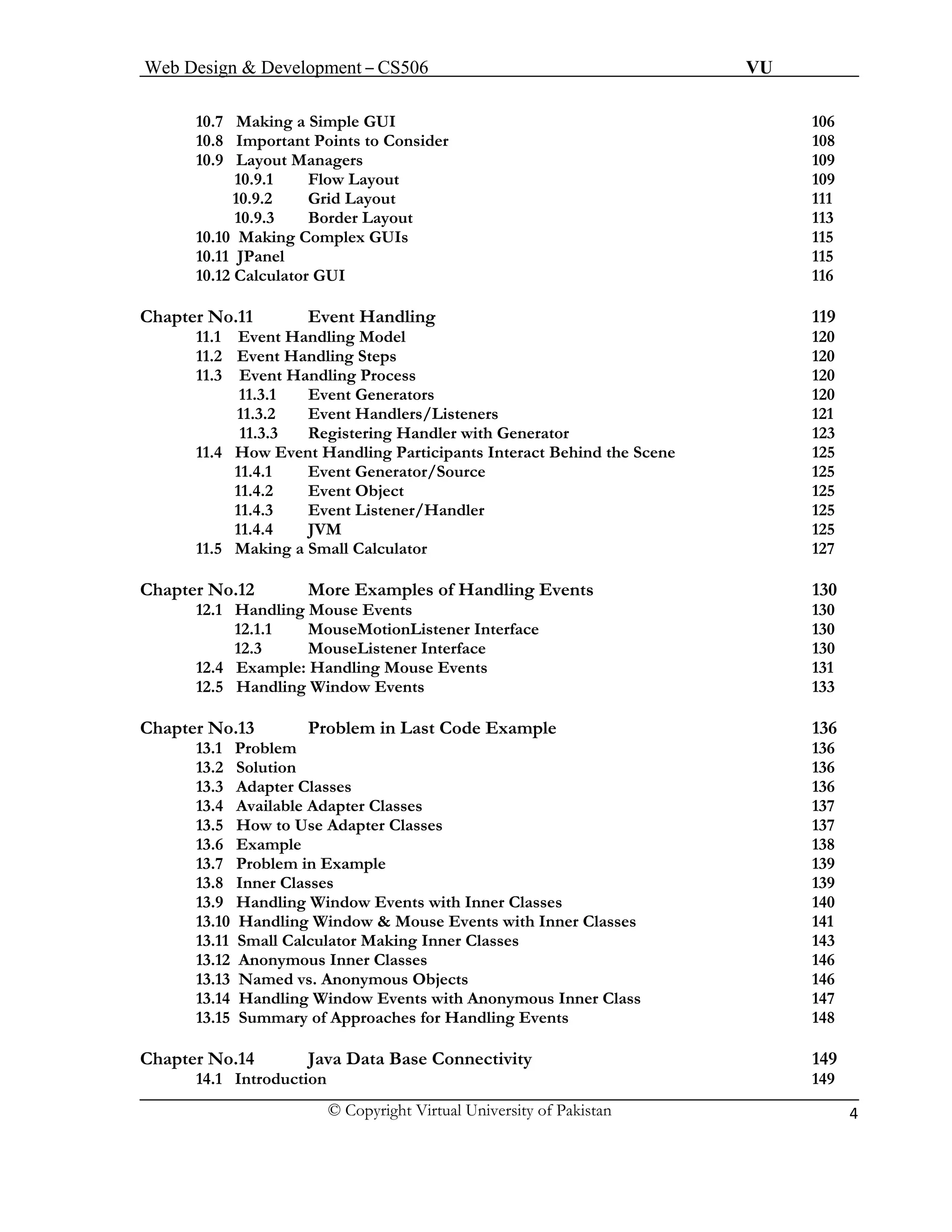
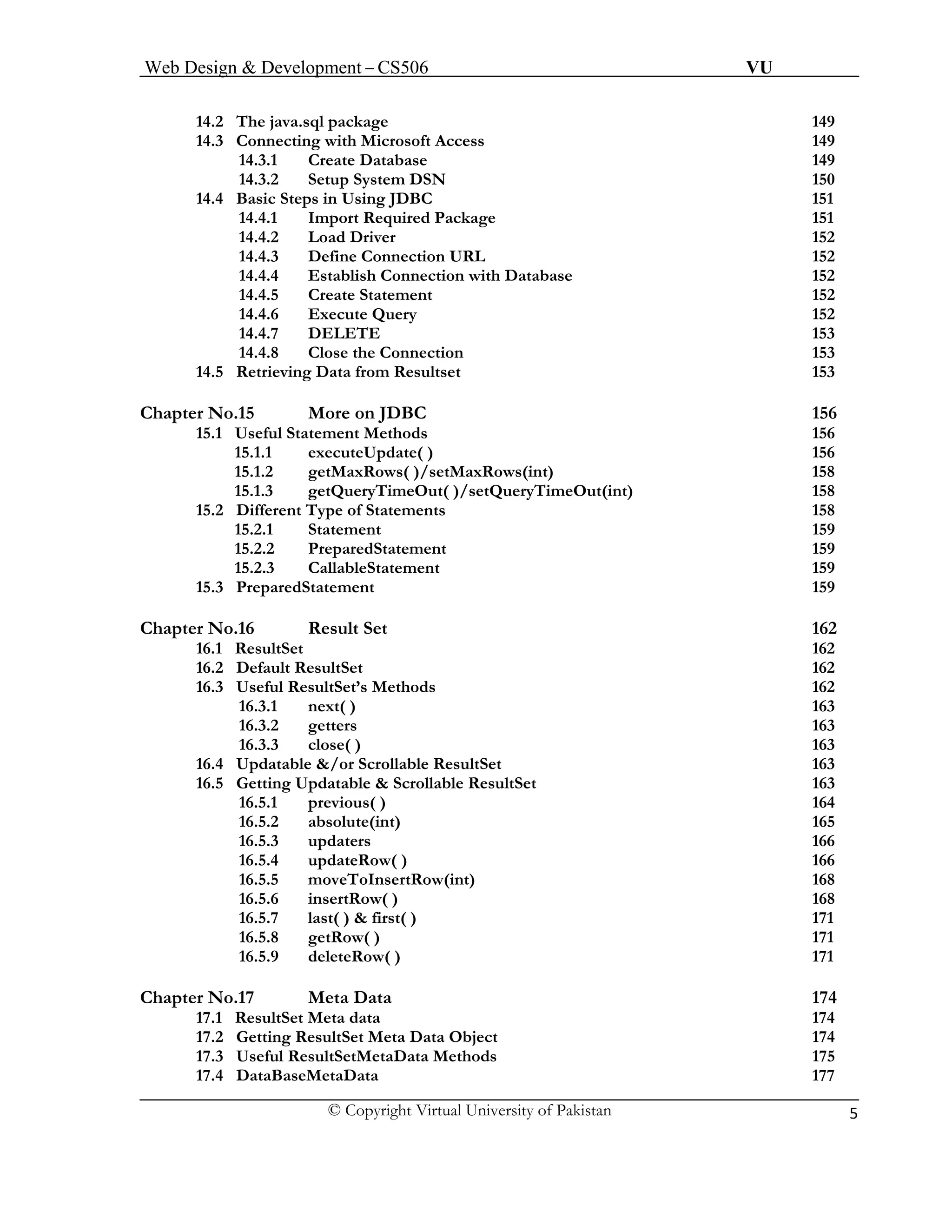
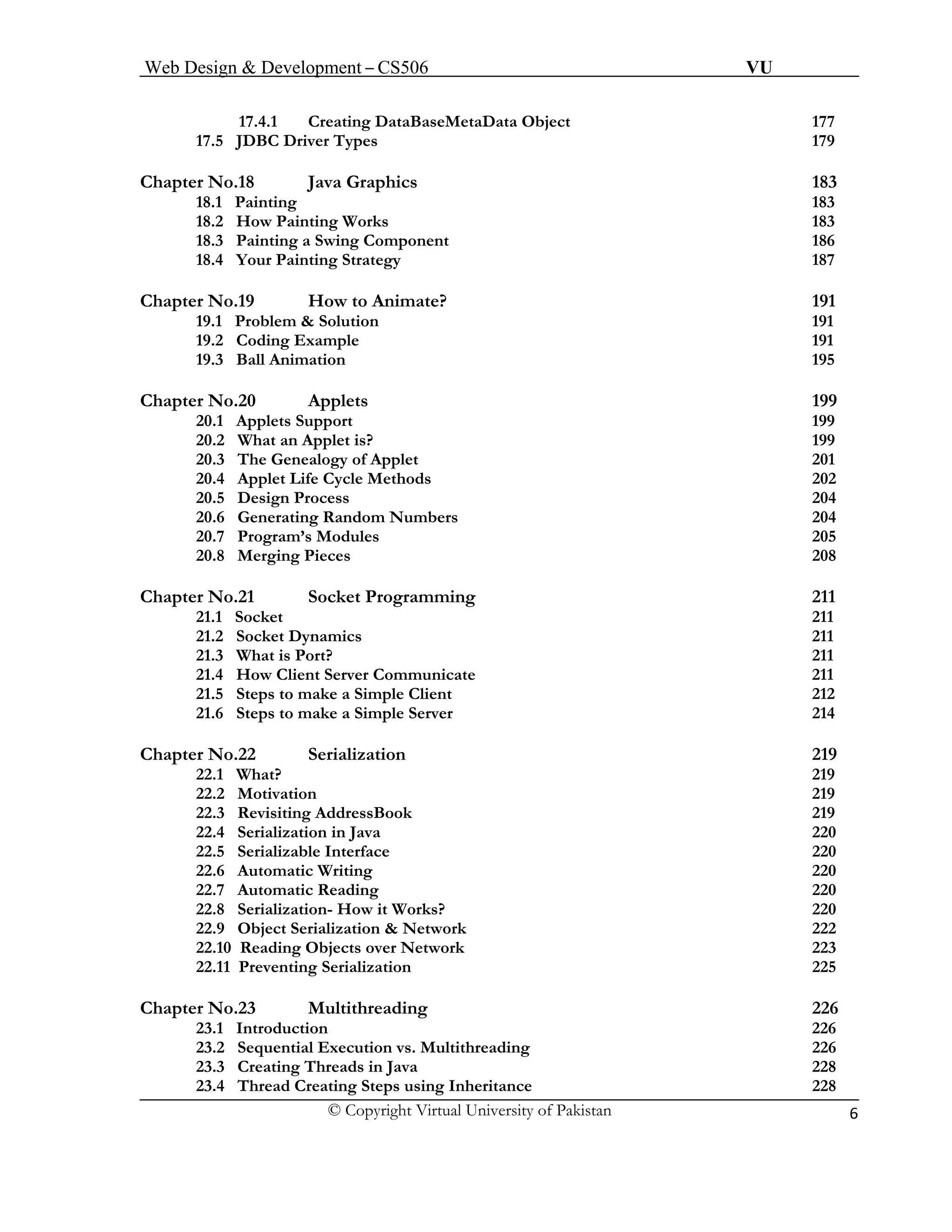
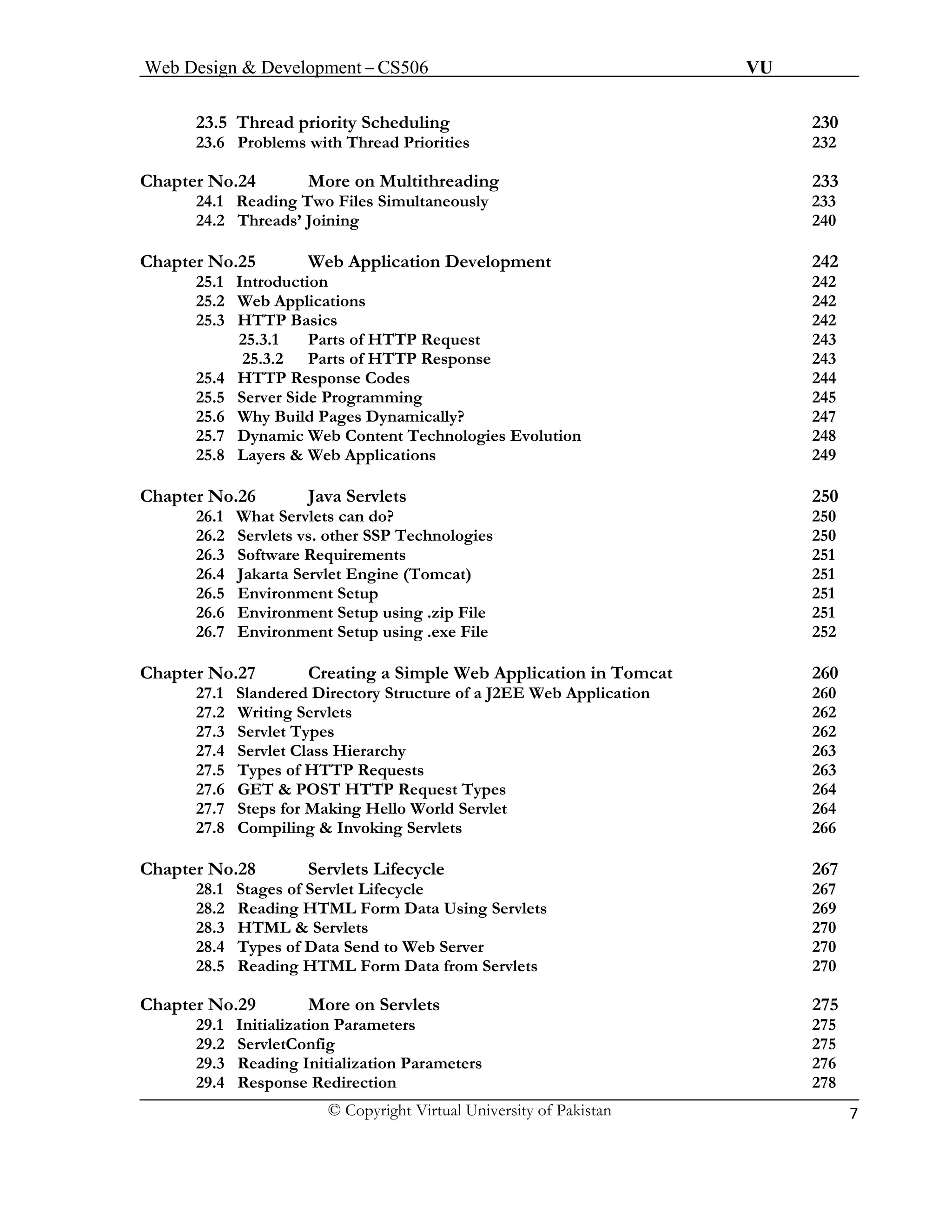
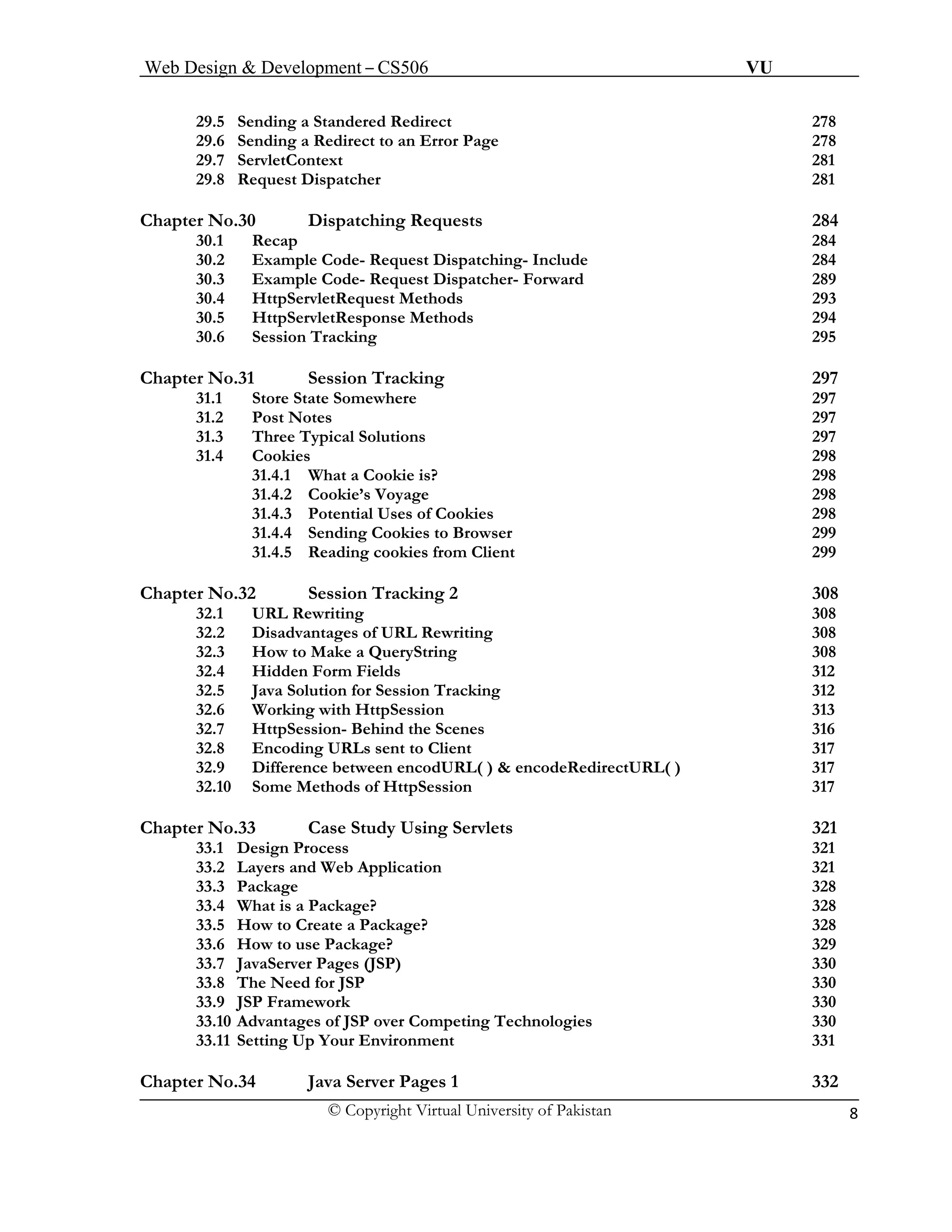
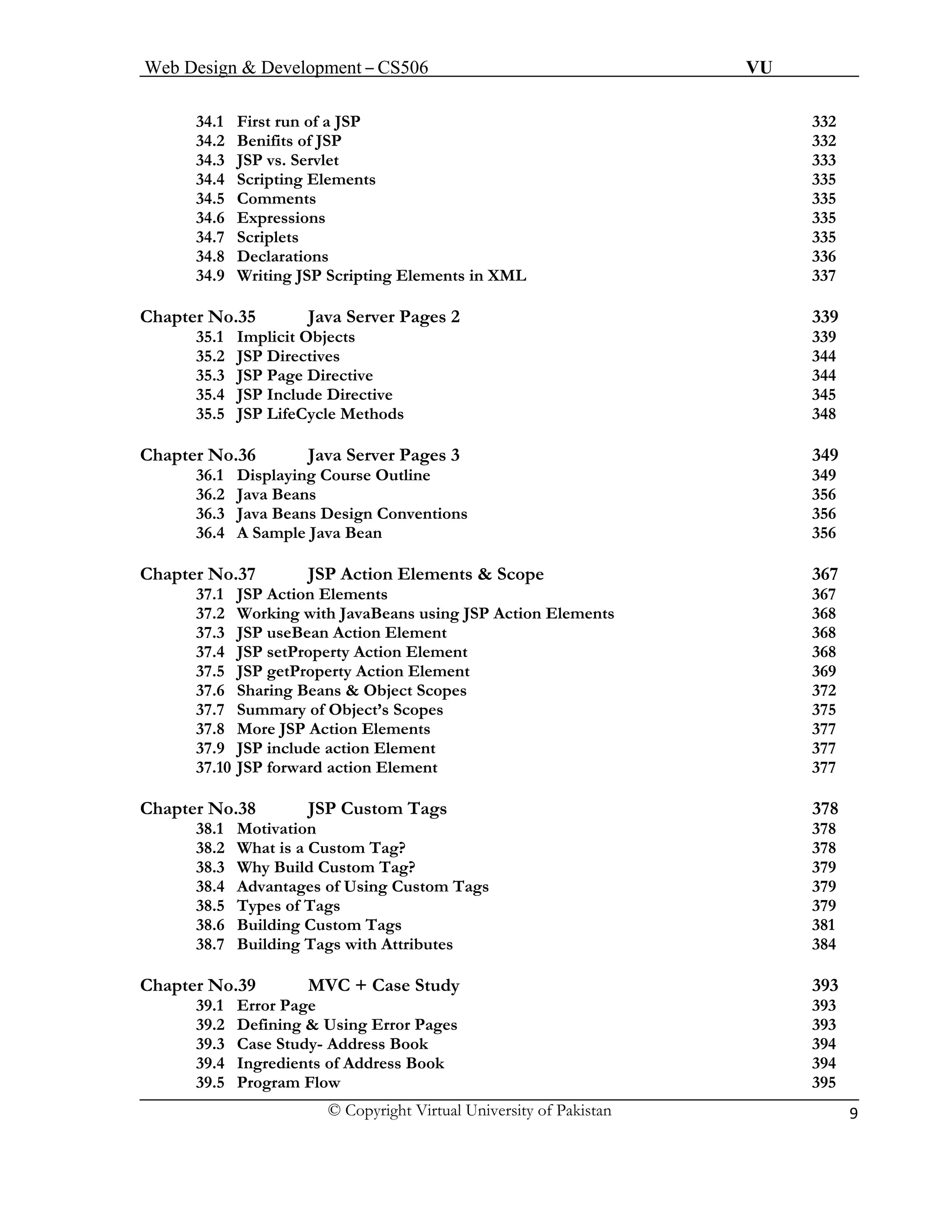
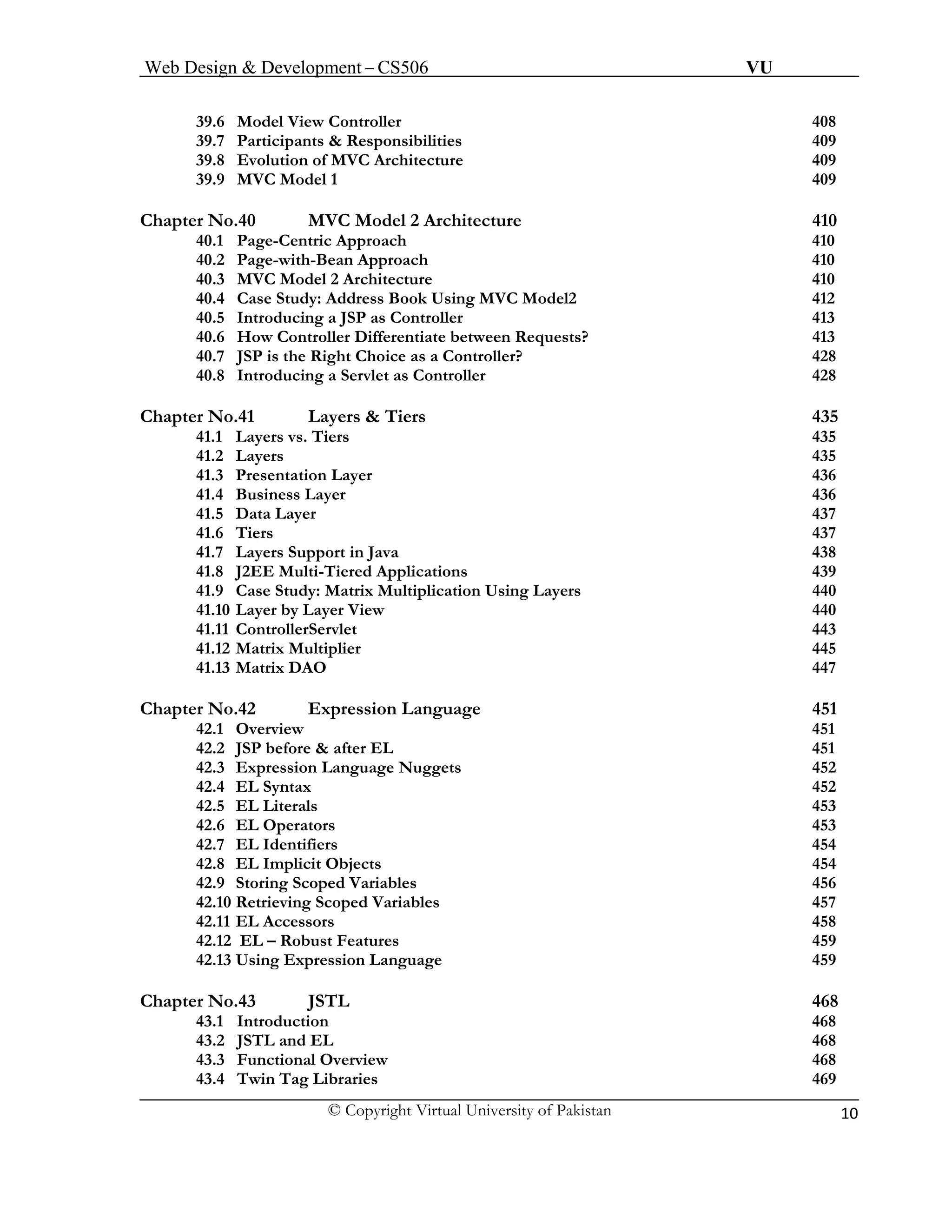
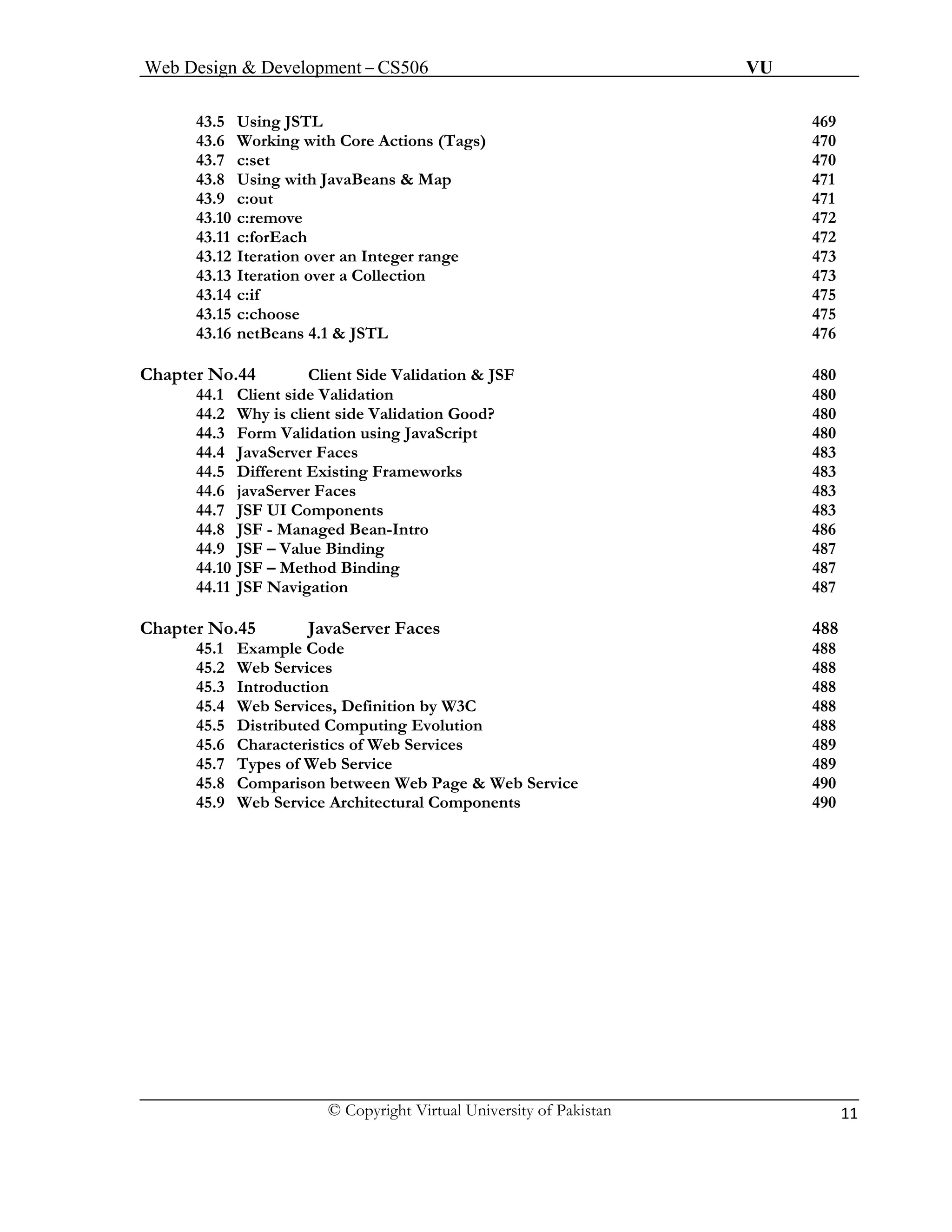
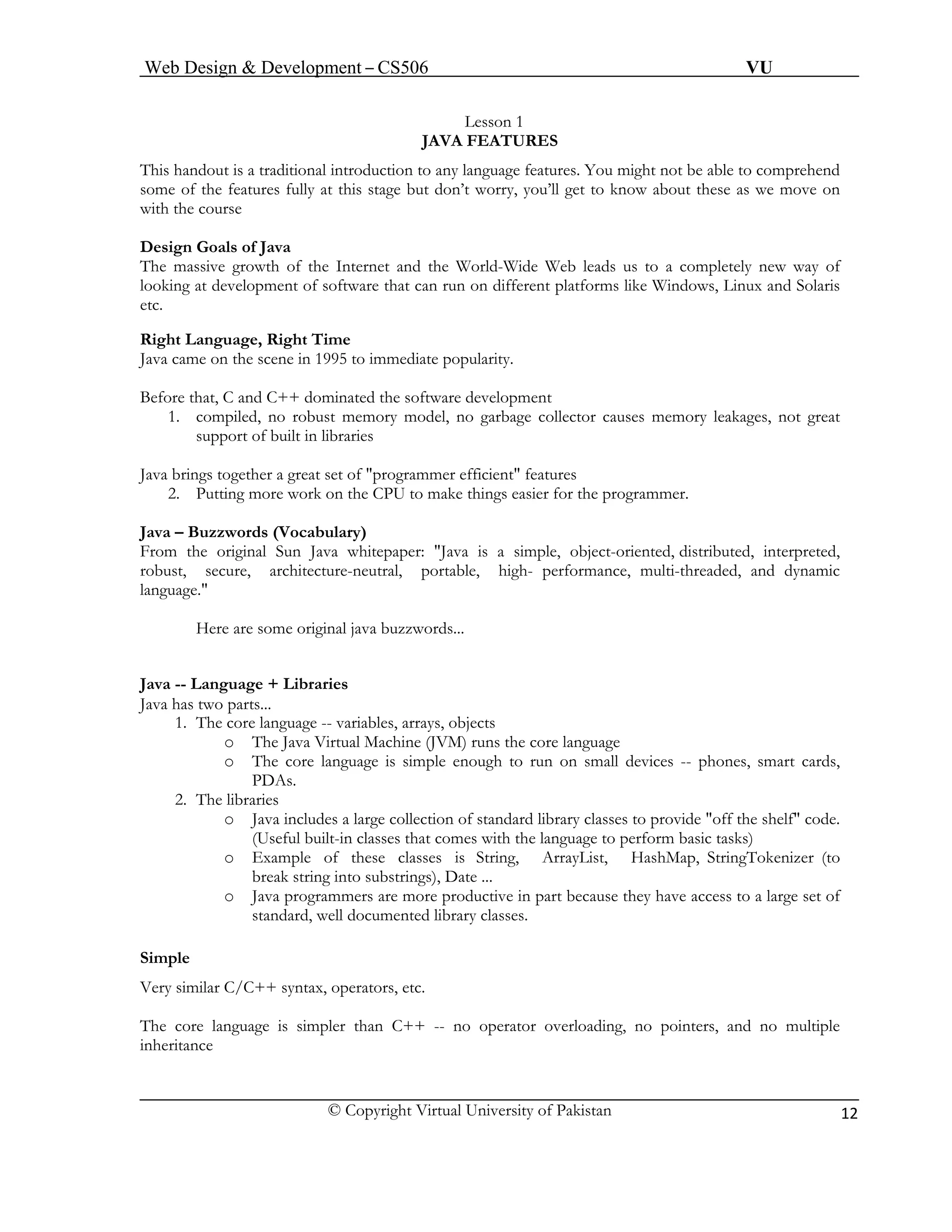
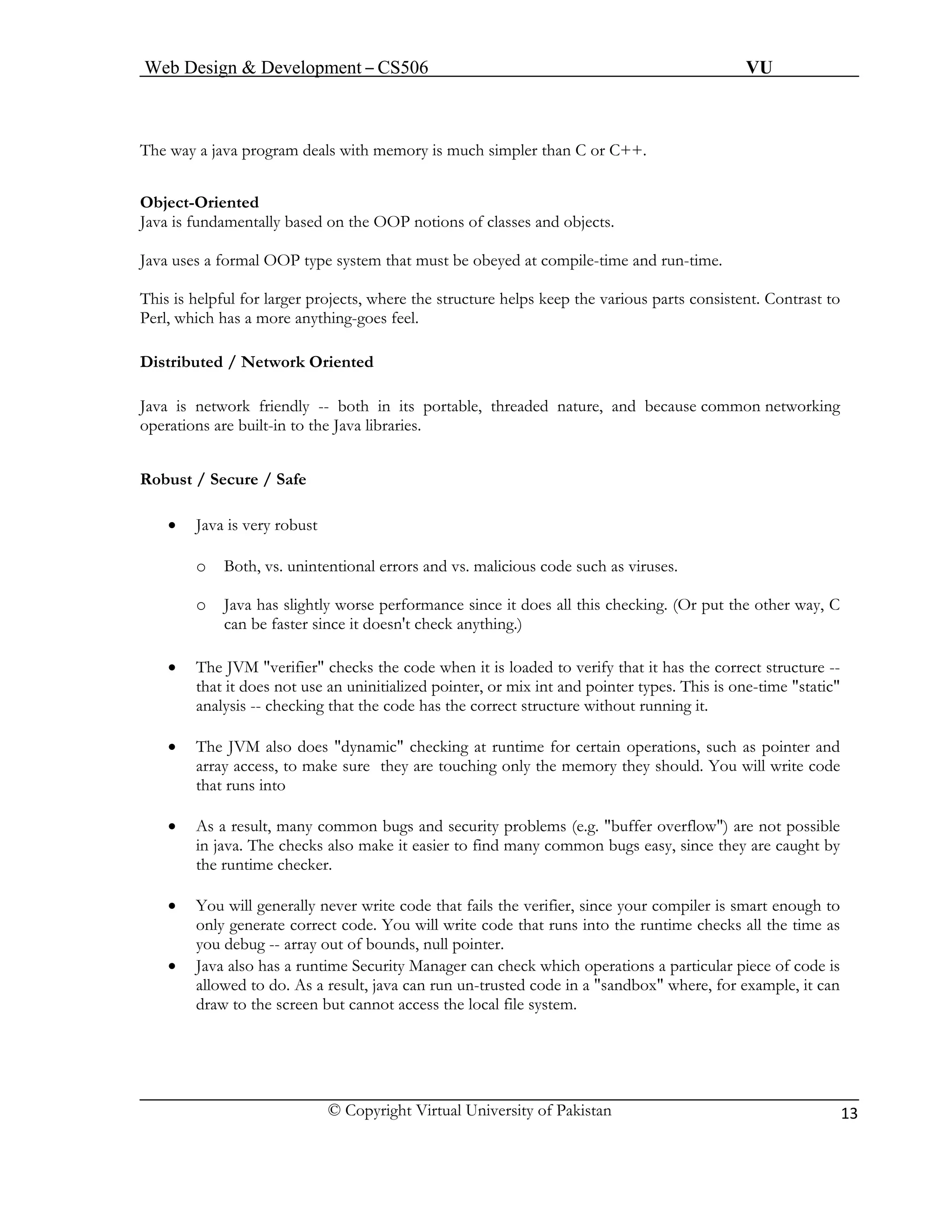
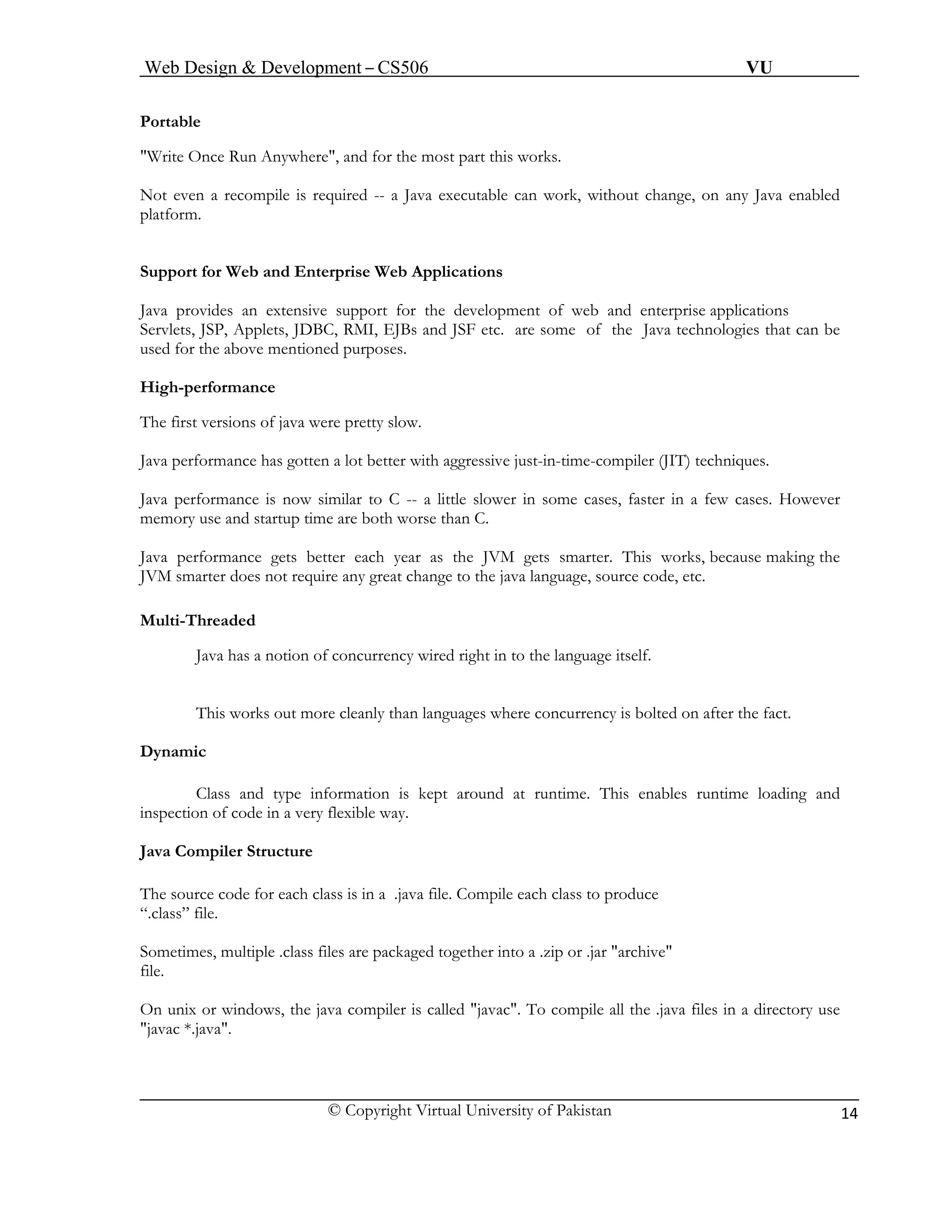
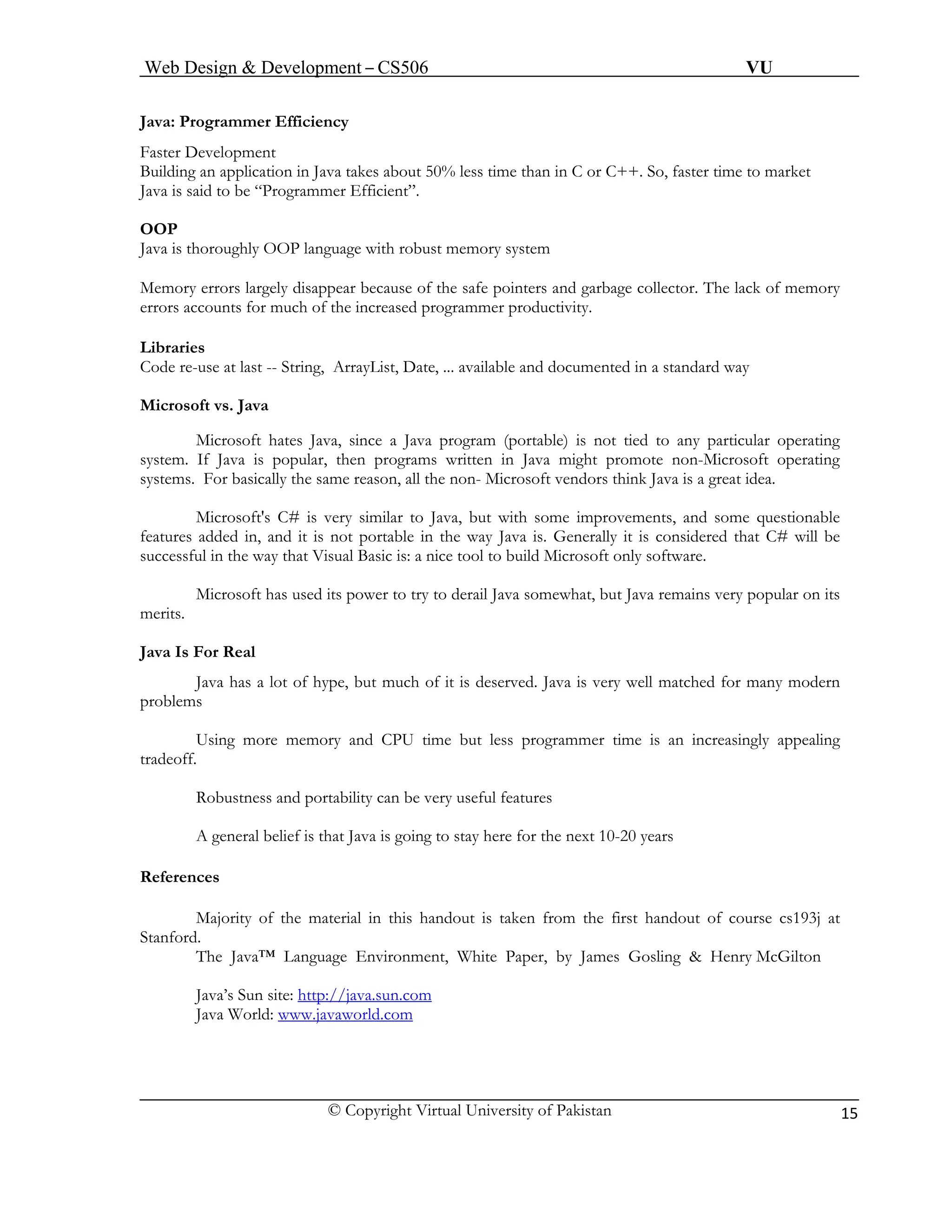
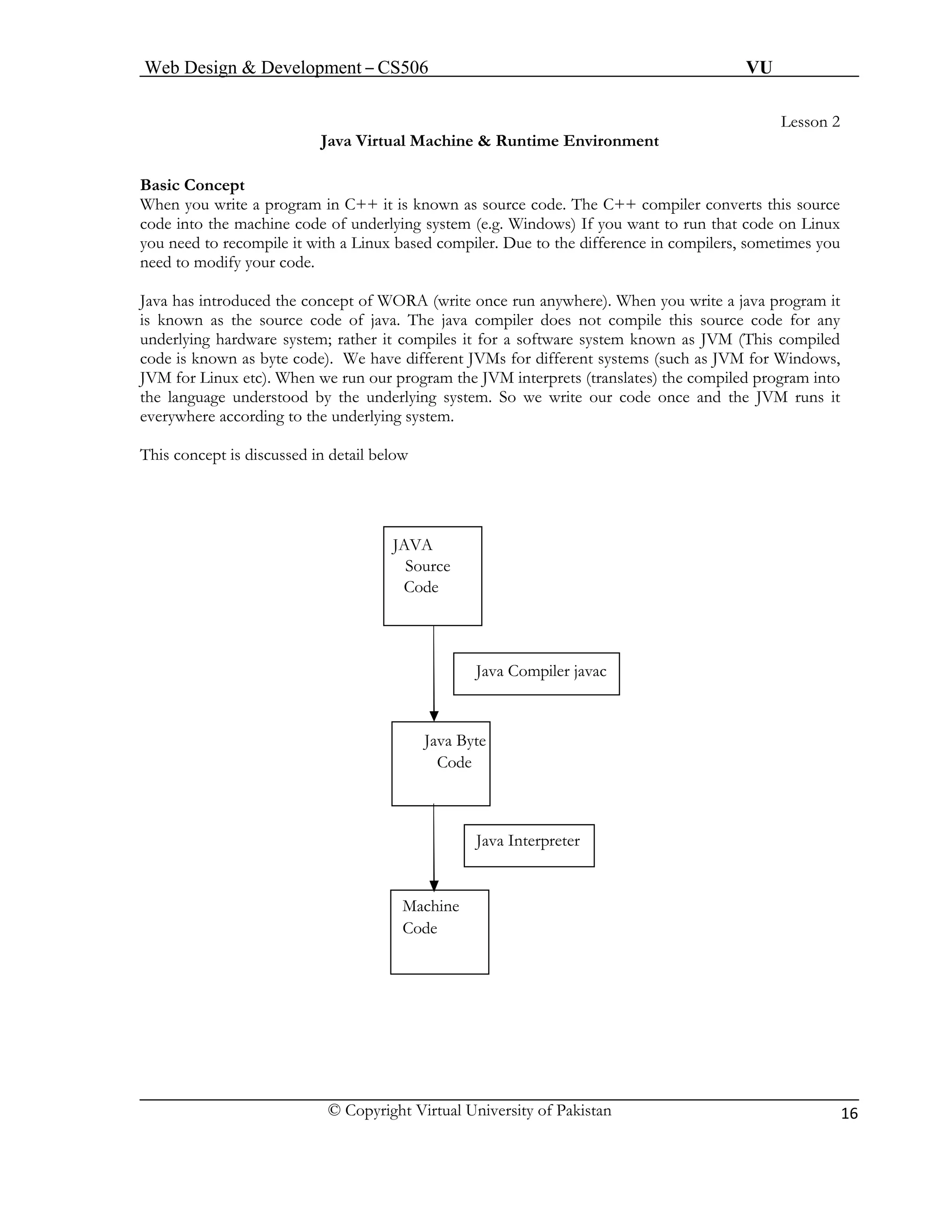
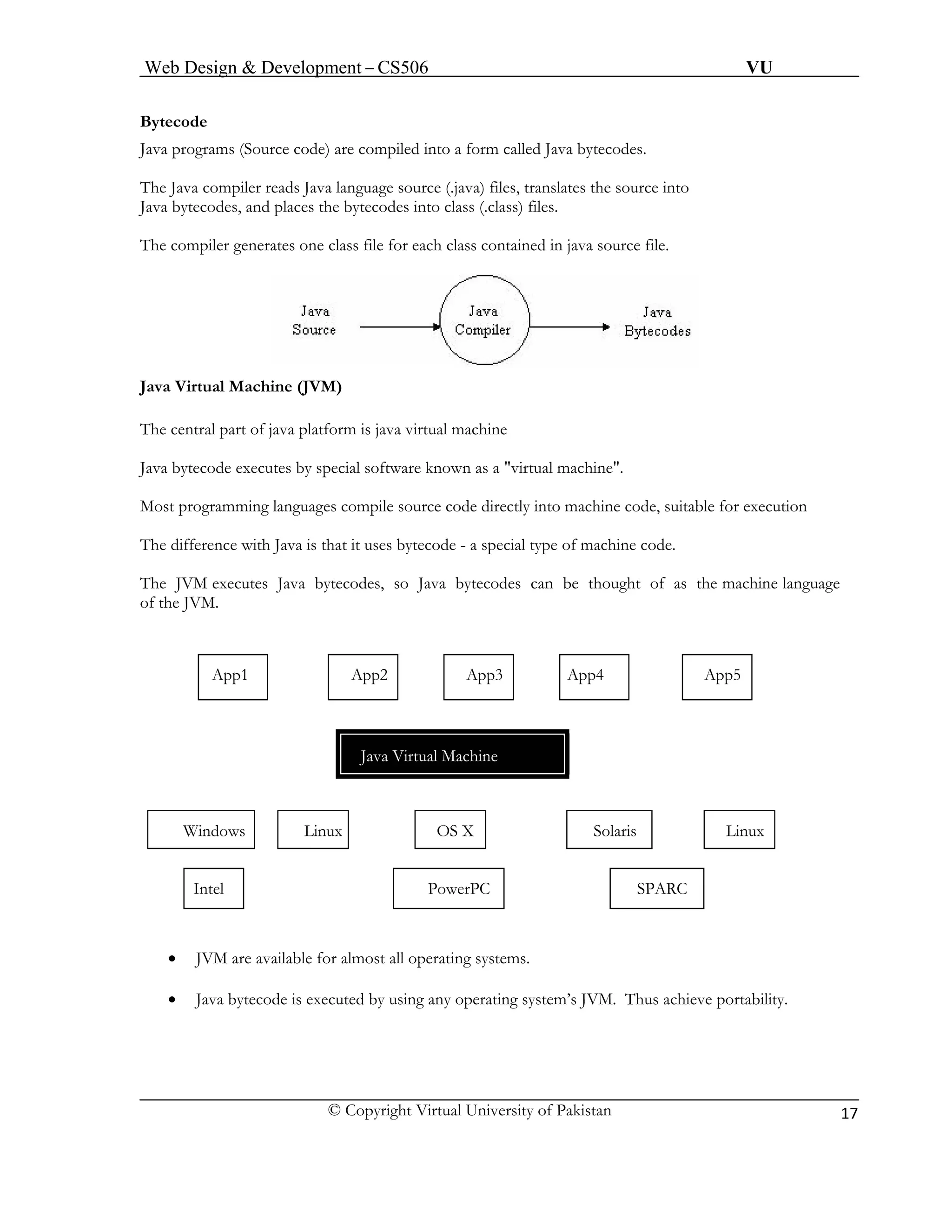
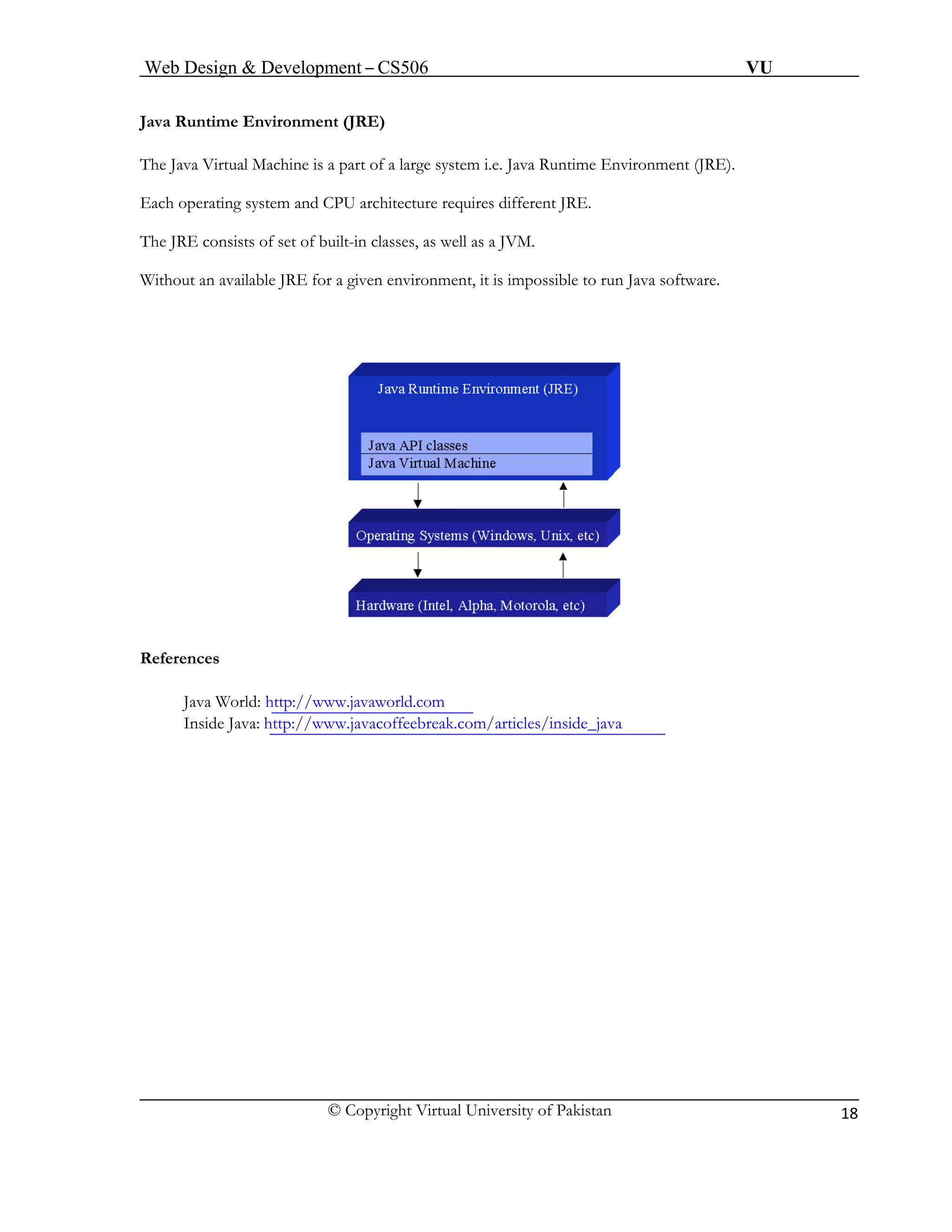
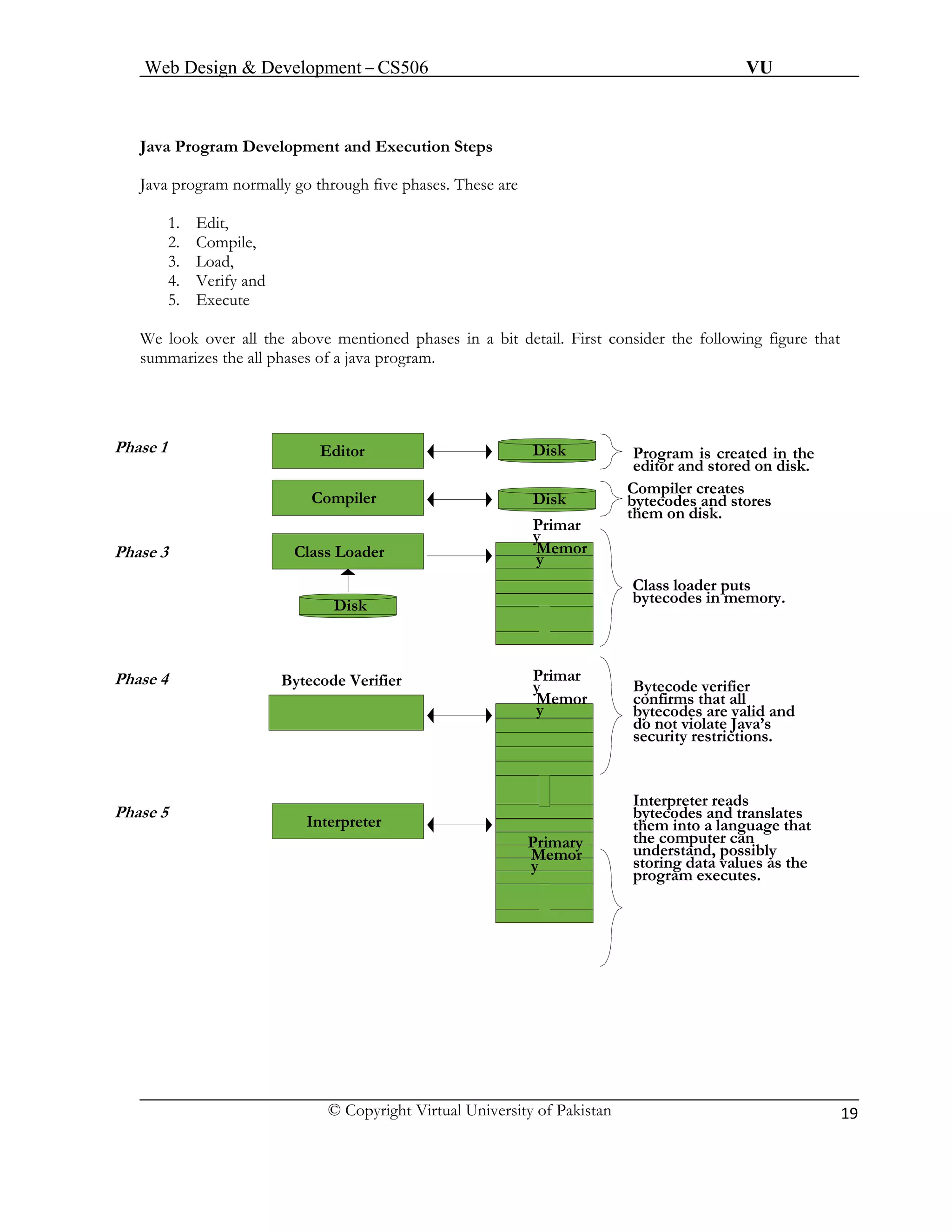
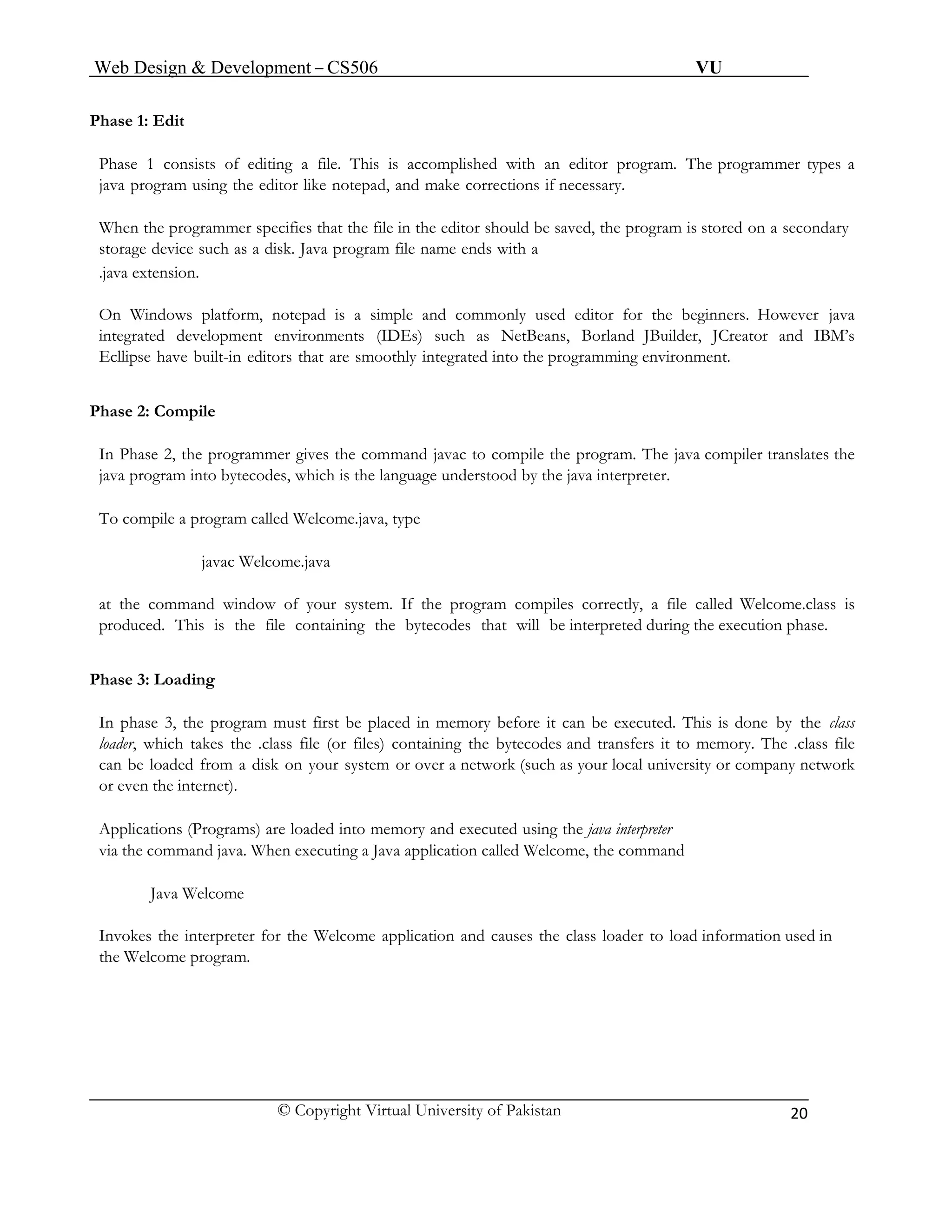
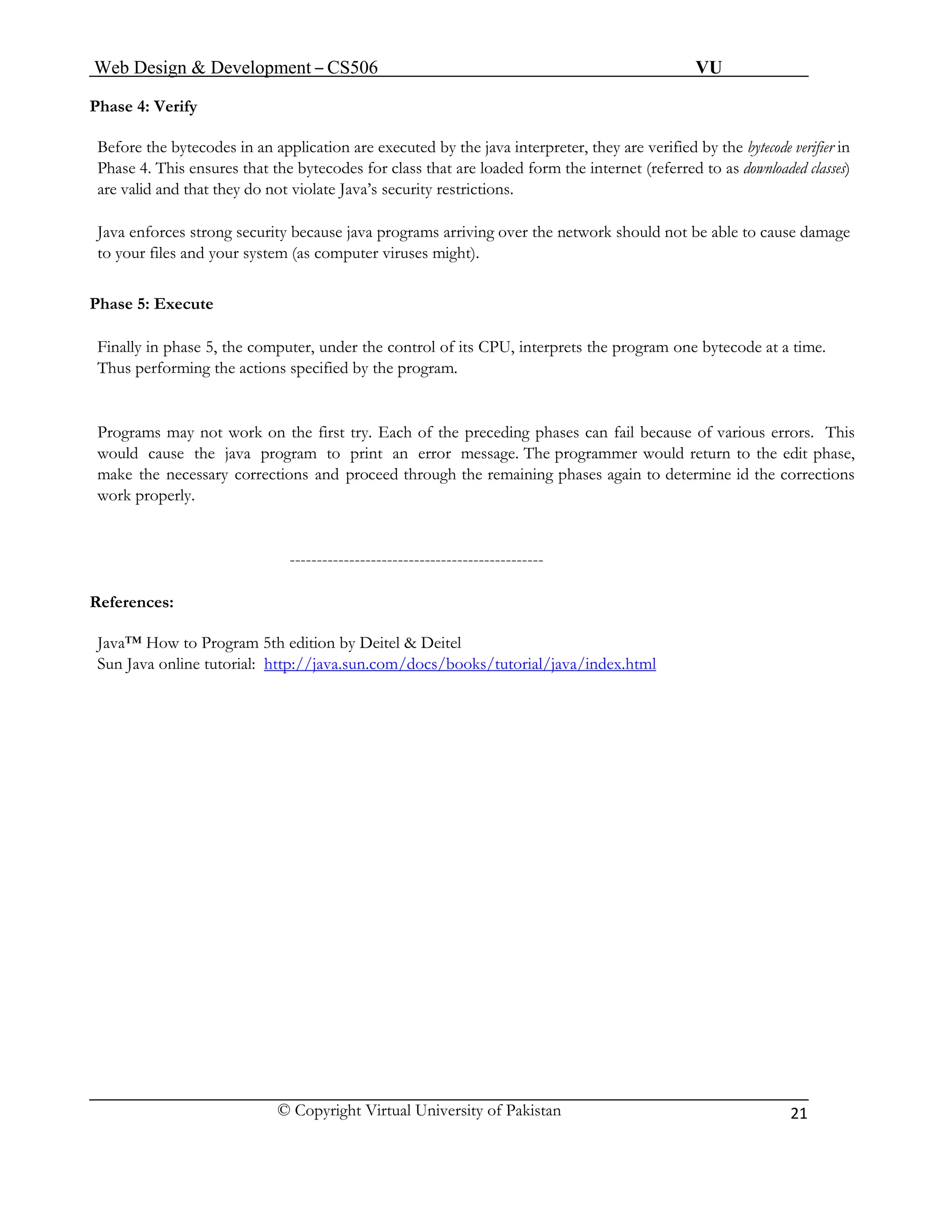
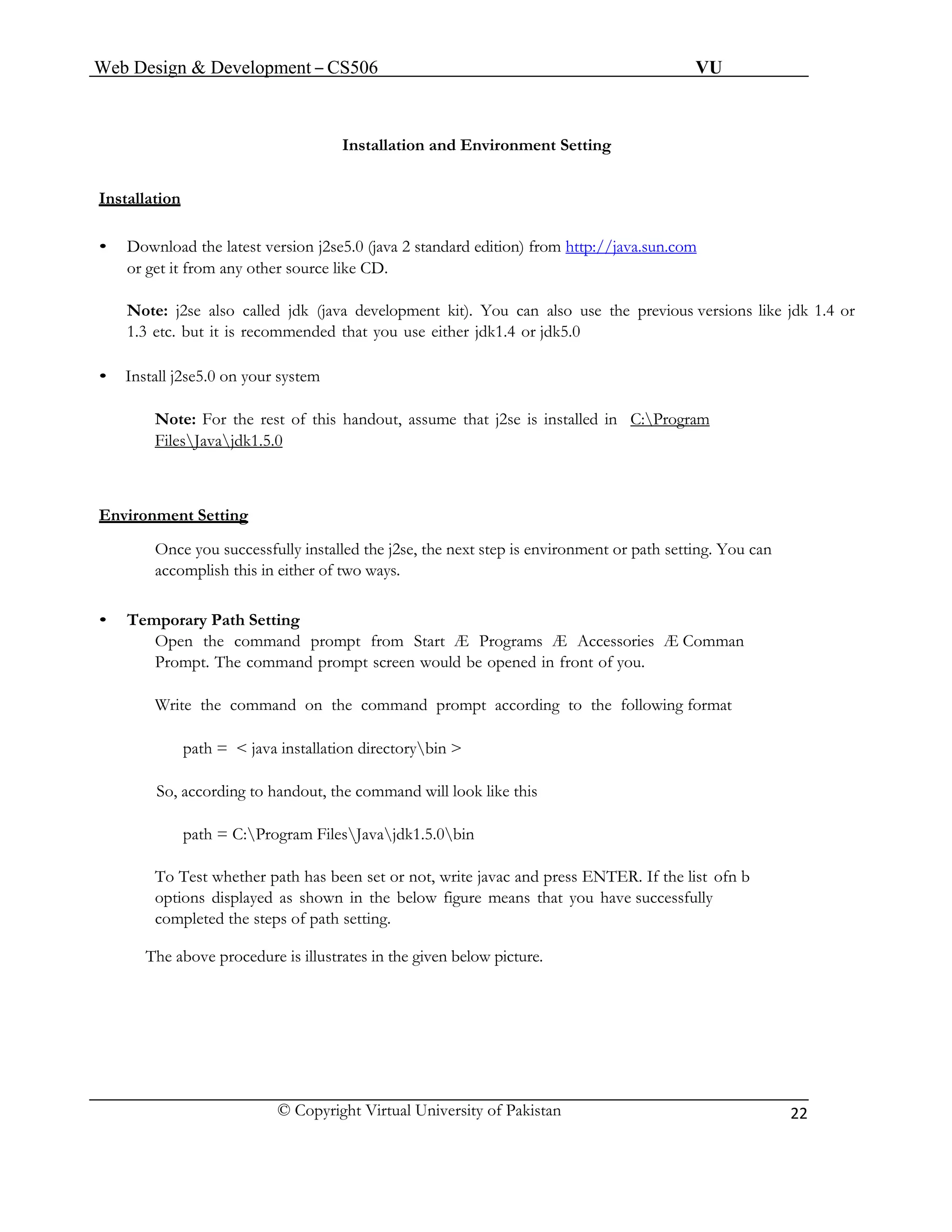
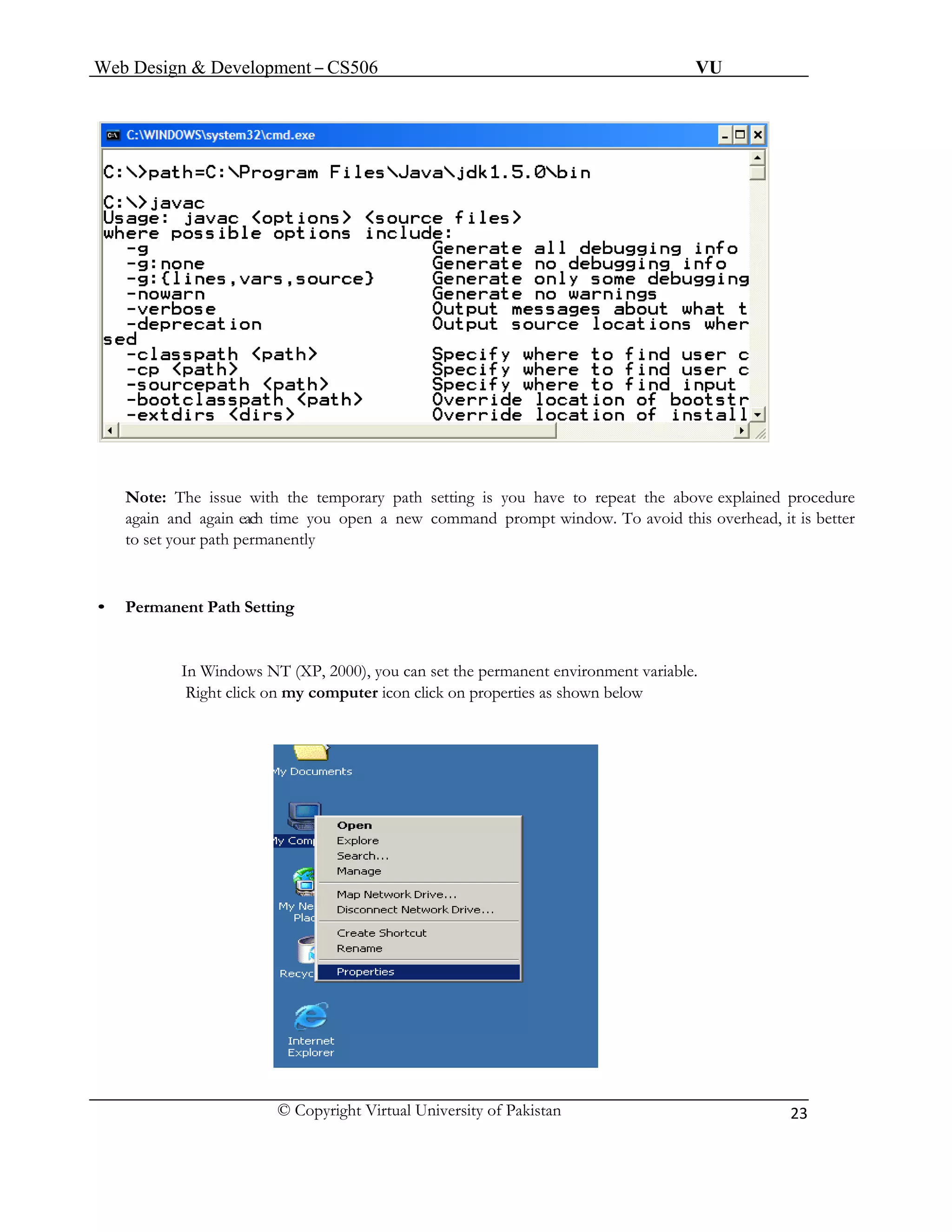
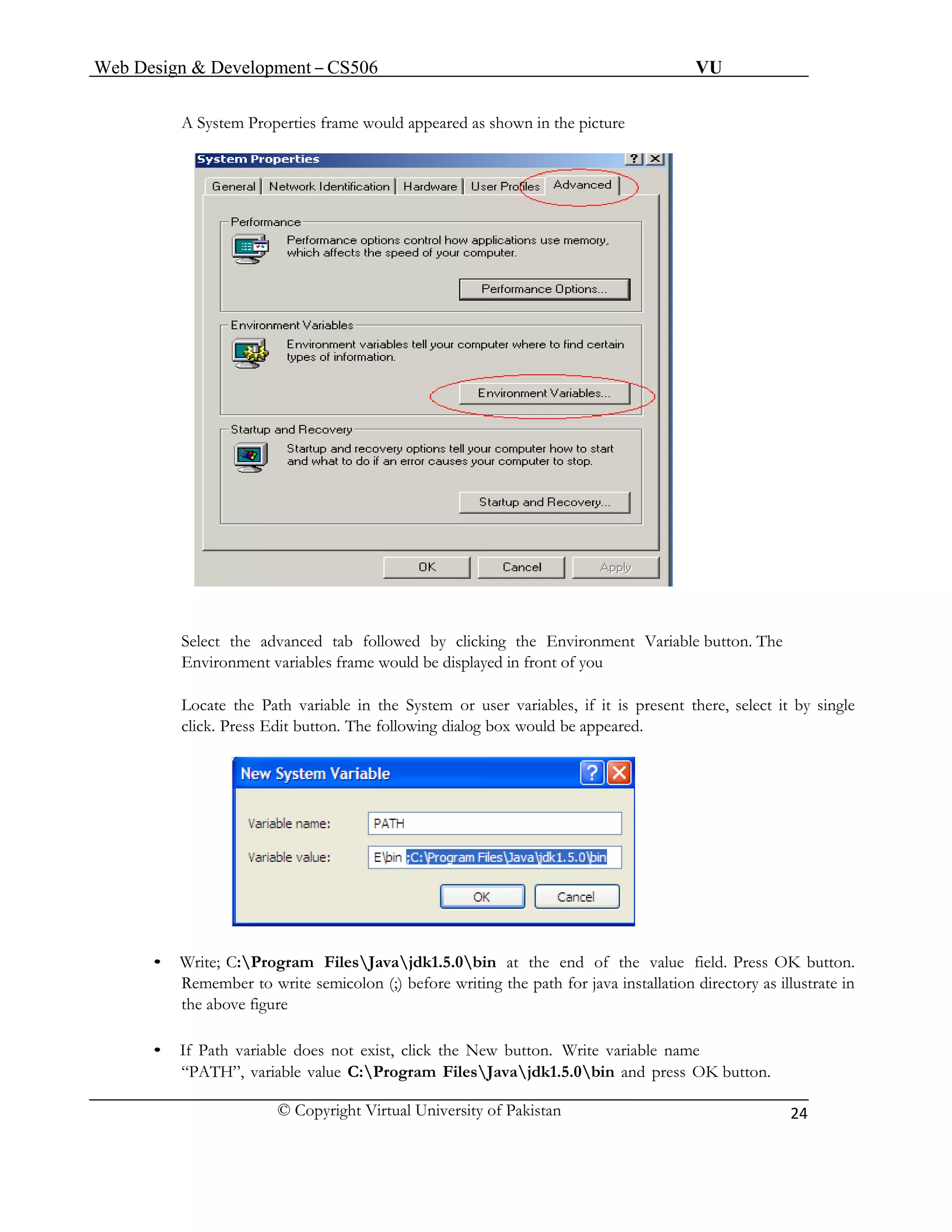
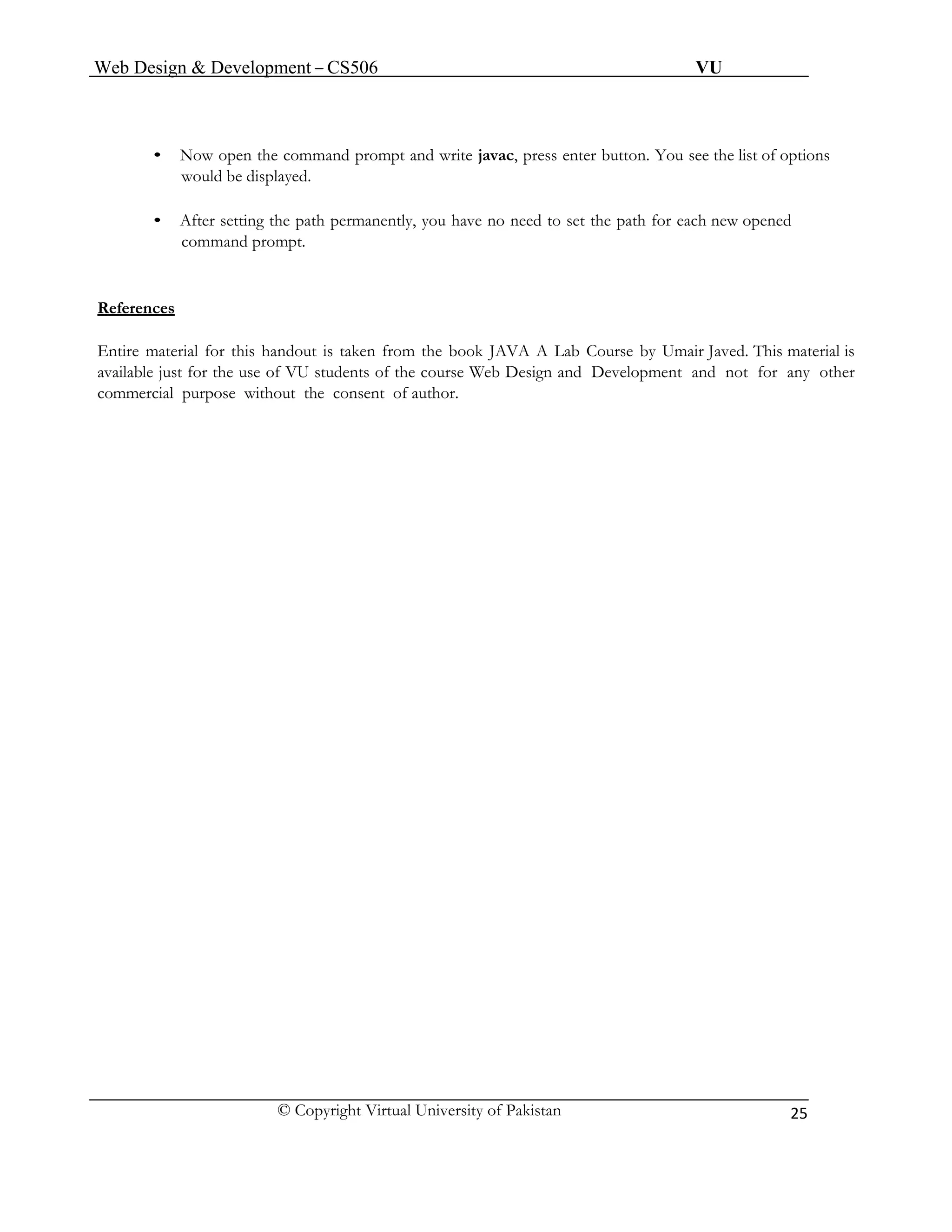
![Web Design & Development – CS506 VU
© Copyright Virtual University of Pakistan
26
First Program in Java
Like any other programming language, the java programming language is used to create applications. So, we start from building a classical “Hello World” application, which is generally used as the first program for learning any new language.
HelloWorldApp
1. Open notepad editor from Start Æ ProgarmFiles Æ AccessoriesÆ Notepad.
2. Write the following code into it.
Note: Don’t copy paste the given below code. Probably it gives errors and you can’t able to remove them at the beginning stage.
1. /* The HelloWorldApp class implements an application that
2. simply displays "Hello World!" to the standard output.
3. */
4. public class HelloWorldApp {
5. public static void main(String[] args) {
6. //Display the string. No global main
7. System.out.println(“Hello World”);
8. }
9. }
3. To save your program, move to File menu and choose save as option.
4. Save your program as “HelloWorldApp.java” in some directory. Make sure to add double quotes around class name while saving your program. For this example create a folder known as “examples” in D: drive
Note: Name of file must match the name of the public class in the file (at line 4). Moreover, it is case sensitive. For example, if your class name is MyClass, than file name must be MyClass. Otherwise the Java compiler will refuse to compile the program.
For the rest of this handout, we assume that program is saved in D:examples directory.](https://image.slidesharecdn.com/webdesignanddevelopment-cs506handouts-141110100145-conversion-gate01/75/Web-design-and-development-cs506-handouts-26-2048.jpg)
![Web Design & Development – CS506 VU
© Copyright Virtual University of Pakistan
27
HelloWorldApp Described
Lines 1-3
Like in C++, You can add multiple line comments that are ignored by the compiler.
Lines 4
Line 4 declares the class name as HelloWorldApp. In java, every line of code must reside inside class. This is also the name of our program (HelloWorldApp.java). The compiler creates the HelloWorldApp.class if this program successfully gets compiled.
Lines 5
Line 5 is where the program execution starts. The java interpreter must find this defined exactly as given or it will refuse to run the program. (However you can change the name of parameter that is passed to main. i.e. you can write String[] argv or String[] some Param instead of String[] args)
Other programming languages, notably C++ also use the main( ) declaration as the starting point for execution. However the main function in C++ is global and reside outside of all classes where as in Java the main function must reside inside a class. In java there are no global variables or functions. The various parts of this main function declaration will be covered at the end of this handout.
Lines 6
Again like C++, you can also add single line comment
Lines 7
Line 7 illustrates the method call. The println( ) method is used to print something on the console. In this example println( ) method takes a string argument and writes it to the standard output i.e. console.
Lines 8-9
Line 8-9 of the program, the two braces, close the method main( ) and the class
HelloWorldApp respectively.](https://image.slidesharecdn.com/webdesignanddevelopment-cs506handouts-141110100145-conversion-gate01/75/Web-design-and-development-cs506-handouts-27-2048.jpg)
![Web Design & Development – CS506 VU
© Copyright Virtual University of Pakistan
28
Compiling and Running HelloWorldApp
1. Open the command prompt from Start Æ Program Files Æ Accessories. OR
alternatively you can write cmd in the run command window.
2. Write cd.. to came out from any folder, and cd [folder name] to move inside the specified directory. To move from one drive to another, use [Drive Letter]: See figure given below
3. After reaching to the folder or directory that contains your source code, in our case
HelloWorldApp.java.
4. Use “javac” on the command line to compile the source file (“.java” file).
D:examples> javac HelloWorld.java
5. If program gets successfully compiled, it will create a new file in the same directory named HelloWorldApp.class that contains the byte-code.
6. Use “java” on the command line to run the compiled .class file. Note “.class” would be added with the file name.
D:examples> java HelloWorld
7. You can see the Hello World would be printed on the console. Hurrah! You are successful in writing, compiling and executing your first program in java ☺
Points to Remember
ƒ Recompile the class after making any changes
ƒ Save your program before compilation
ƒ Only run that class using java command that contains the main method, because program executions
always starts form main](https://image.slidesharecdn.com/webdesignanddevelopment-cs506handouts-141110100145-conversion-gate01/75/Web-design-and-development-cs506-handouts-28-2048.jpg)
![Web Design & Development – CS506 VU
© Copyright Virtual University of Pakistan
29
An Idiom Explained
You will see the following line of code often:
– public static void main(String args[]) { …}
• About main()
“main” is the function from which your program starts
Why public?
Since main method is called by the JVM that is why it is kept public so that it is accessible from outside. Remember private methods are only accessible from within the class
Why static?
Every Java program starts when the JRE (Java Run Time Environment) calls the main method of that program. If main is not static then the JRE have to create an object of the class in which main method is present and call the main method on that object (In OOP based languages method are called using the name of object if they are not static). It is made static so that the JRE can call it without creating an object.
Also to ensure that there is only one copy of the main method per class
Why void?
• Indicates that main ( ) does not return anything.
What is String args[] ?
Way of specifying input (often called command-line arguments) at startup of application. More on it latter
References
Entire material for this handout is taken from the book JAVA A Lab Course by Umair Javed. This material is available just for the use of VU students of the course Web Design and Development and not for any other commercial purpose with out the consent of author.](https://image.slidesharecdn.com/webdesignanddevelopment-cs506handouts-141110100145-conversion-gate01/75/Web-design-and-development-cs506-handouts-29-2048.jpg)
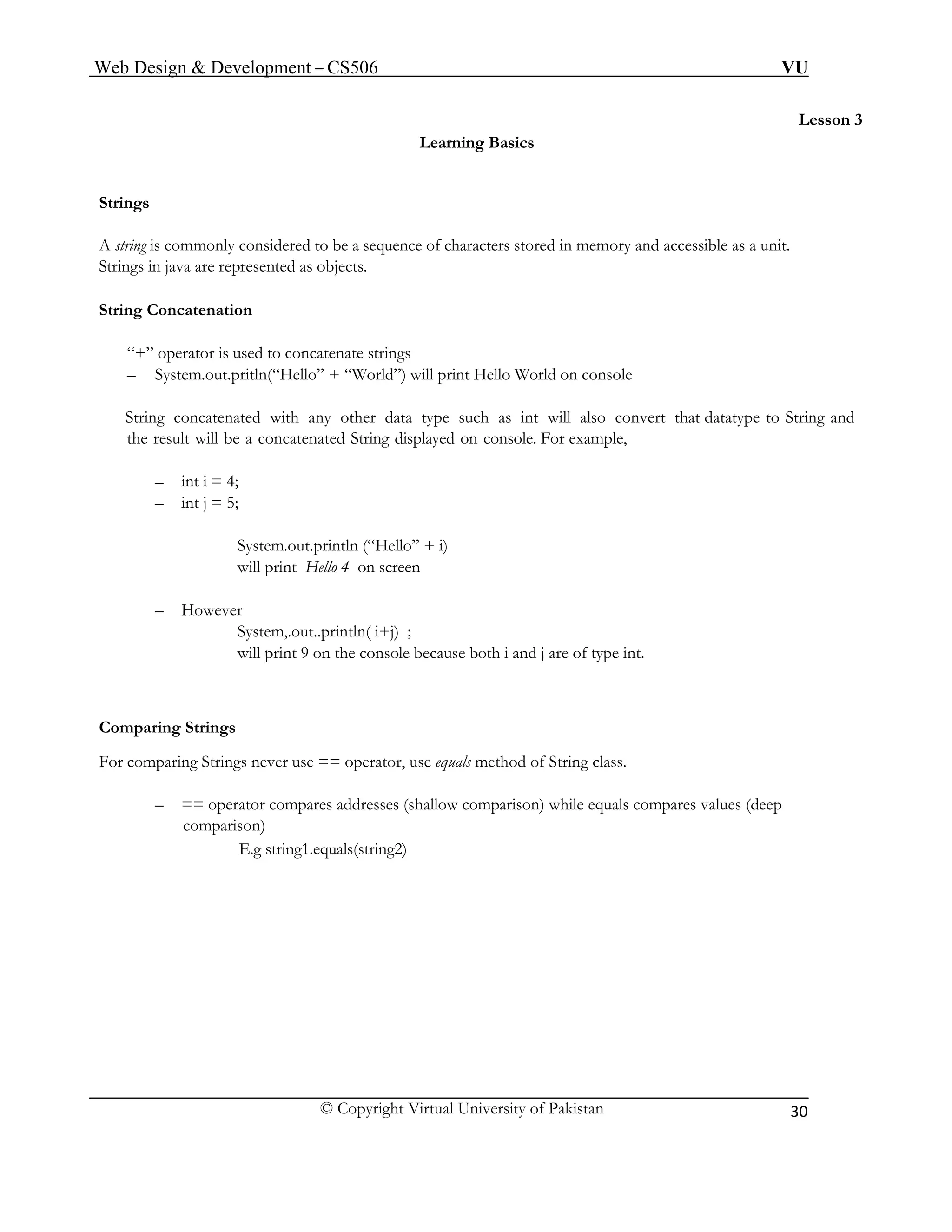
![Web Design & Development – CS506 VU
© Copyright Virtual University of Pakistan
31
Example Code: String concatenation and comparison
public class StringTest {
public static void main(String[] args) {
int i = 4;
int j = 5;
System.out.println("Hello" + i); // will print Hello4
System.out.println(i + j); // will print 9
String s1 = new String (“pakistan”);
String s2 = “pakistan”;
if (s1 == s2) {
System.out.println(“comparing string using == operator”);
}
if (s1.equals( s2) ) {
System.out.println(“comparing string using equal method”);
}
}
}
On execution of the above program, following output will produce](https://image.slidesharecdn.com/webdesignanddevelopment-cs506handouts-141110100145-conversion-gate01/75/Web-design-and-development-cs506-handouts-31-2048.jpg)
![Web Design & Development – CS506 VU
© Copyright Virtual University of Pakistan
32
Taking in Command Line Arguments
In Java, the program can be written to accept command-line-arguments.
Example Code: command-line arguments
/* This Java application illustrates the use of Java command-line arguments. */
public class CmdLineArgsApp {
public static void main(String[] args){ //main method
System.out.println(”First argument ” + args[0]);
System.out.println(”Second argument ” + args[1]);
}//end main
}//End class.
To execute this program, we pass two arguments as shown below:
public void someMethod( ) {
int x; //local variable
System.out.println(x); // compile time error
• These parameters should be separated by space. .
• The parameters that we pass from the command line are stored as Strings inside the “args” array. You can see that the type of “args” array is String.
Example Code: Passing any number of arguments
In java, array knows their size by using the length property. By using, length property we can determine how many arguments were passed. The following code example can accept any number of arguments
/* This Java application illustrates the use of Java
command-line arguments. */
public class AnyArgsApp {
public static void main(String[] args){ //main method
for(int i=0; i < args.length; i++)
System.out.println(“Argument:” + i + “value” +args[i]);
}//end main
}//End class.](https://image.slidesharecdn.com/webdesignanddevelopment-cs506handouts-141110100145-conversion-gate01/75/Web-design-and-development-cs506-handouts-32-2048.jpg)
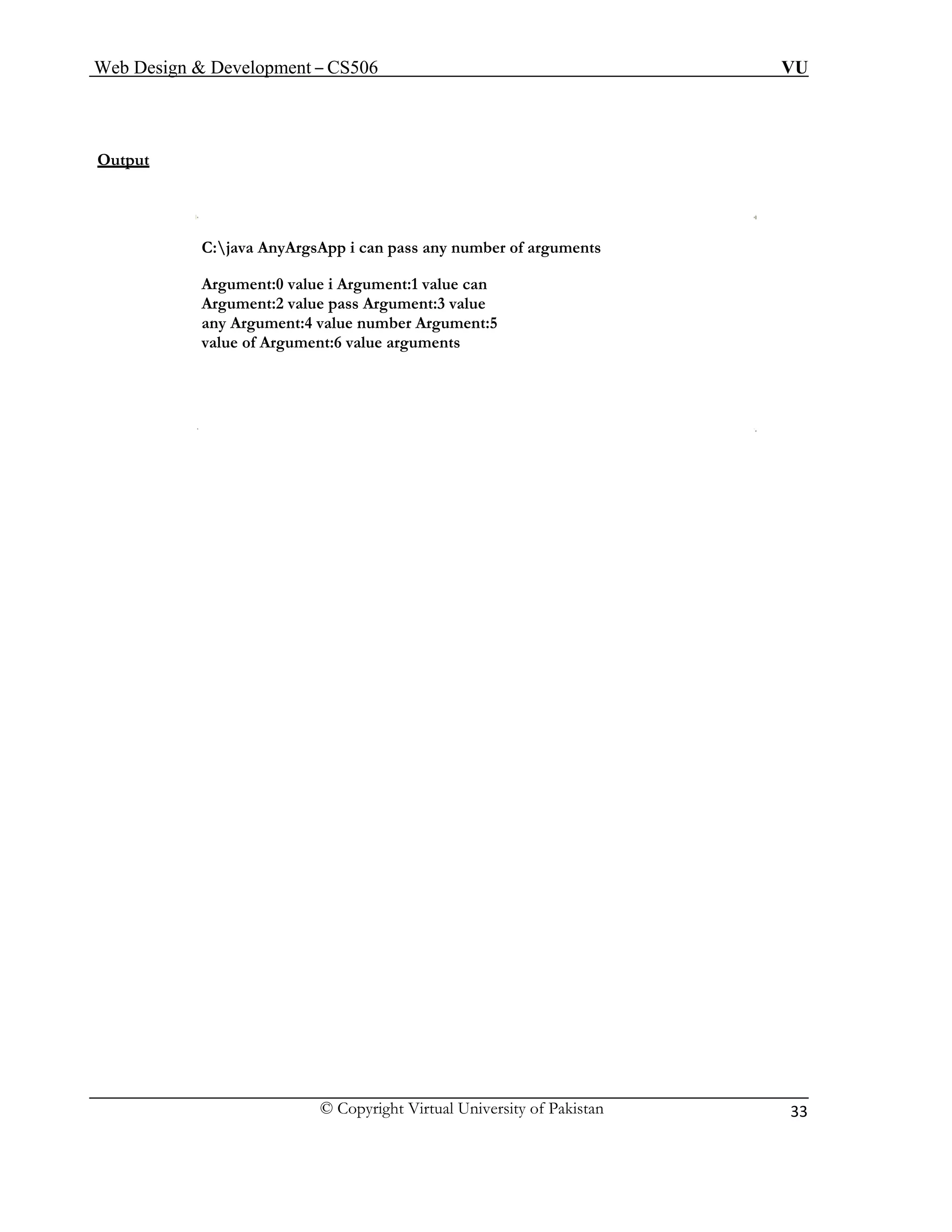
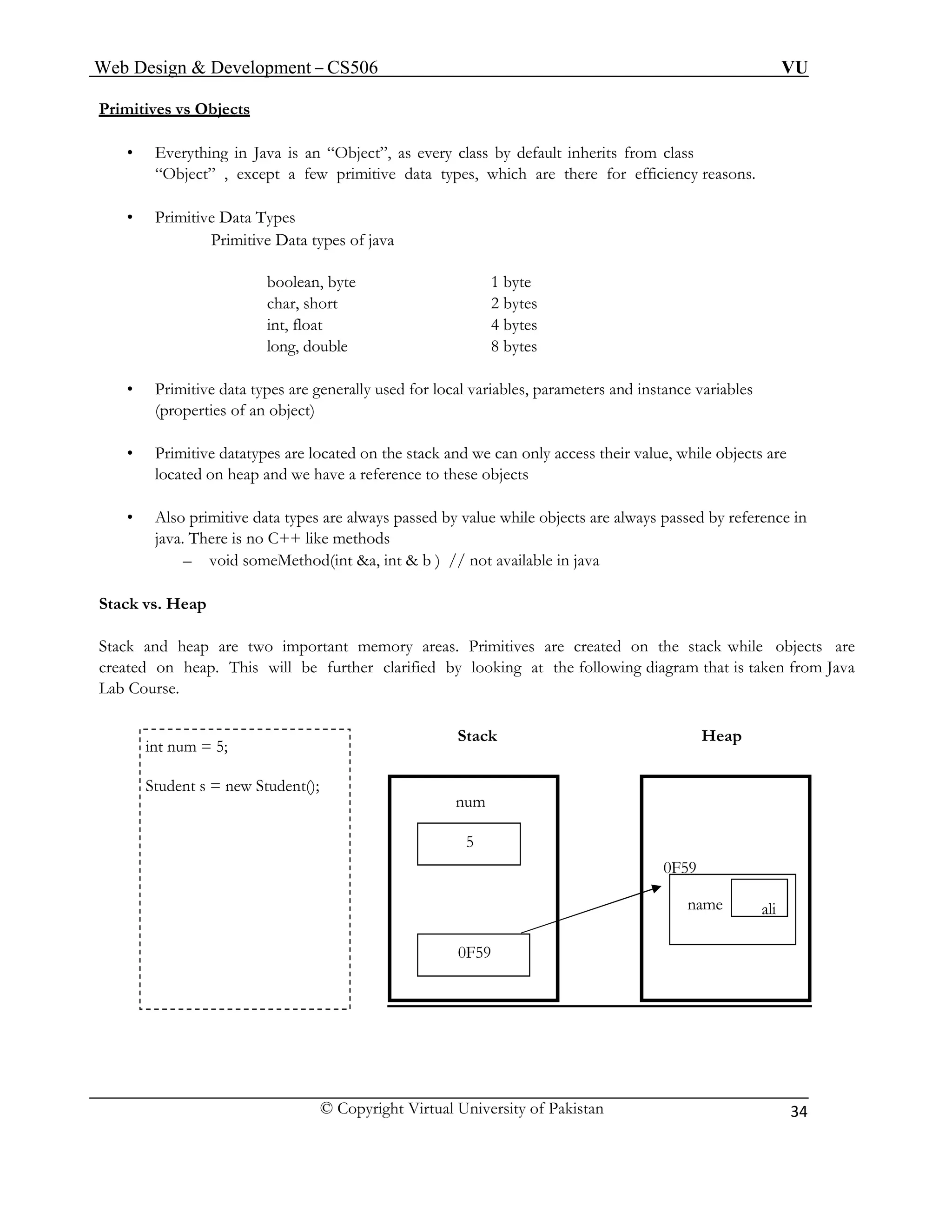
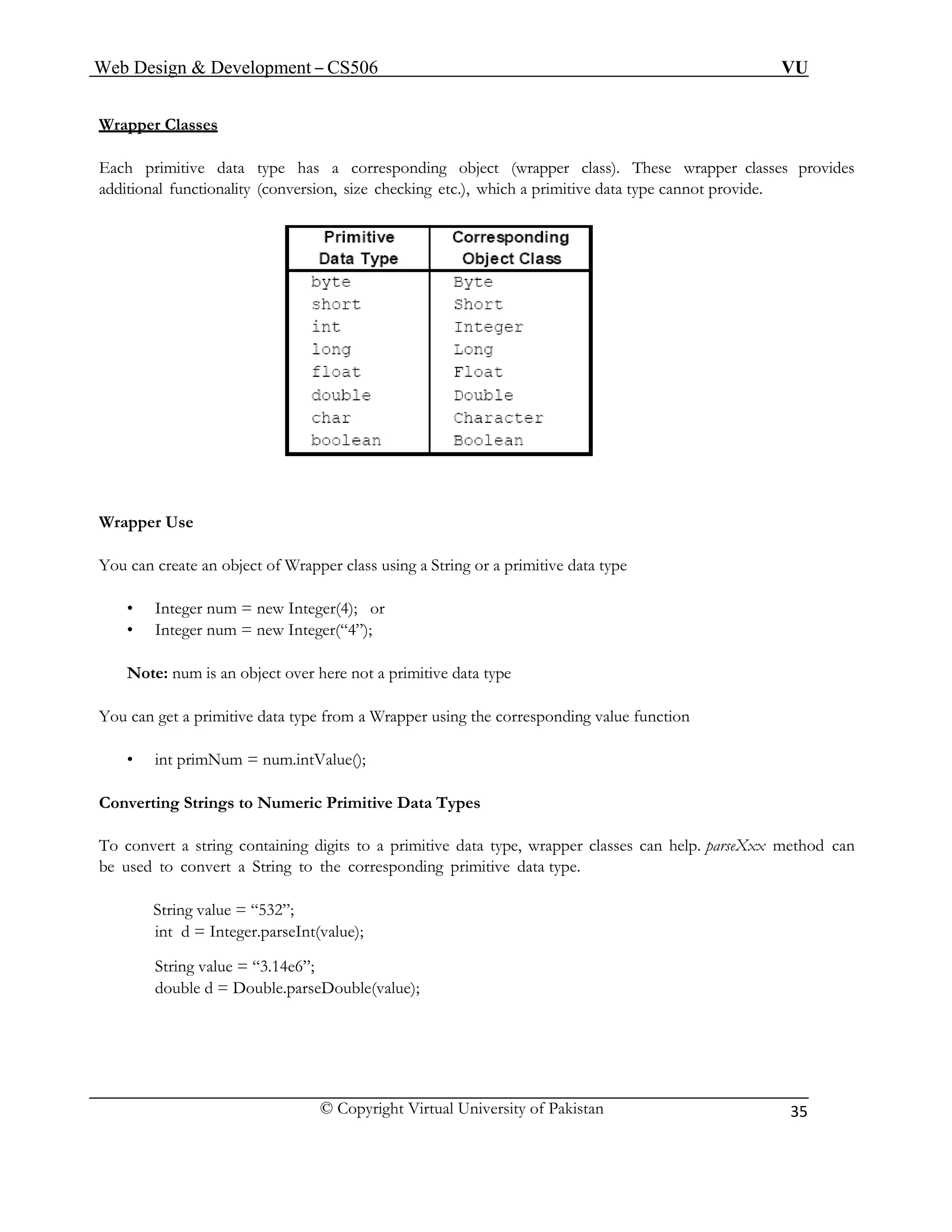
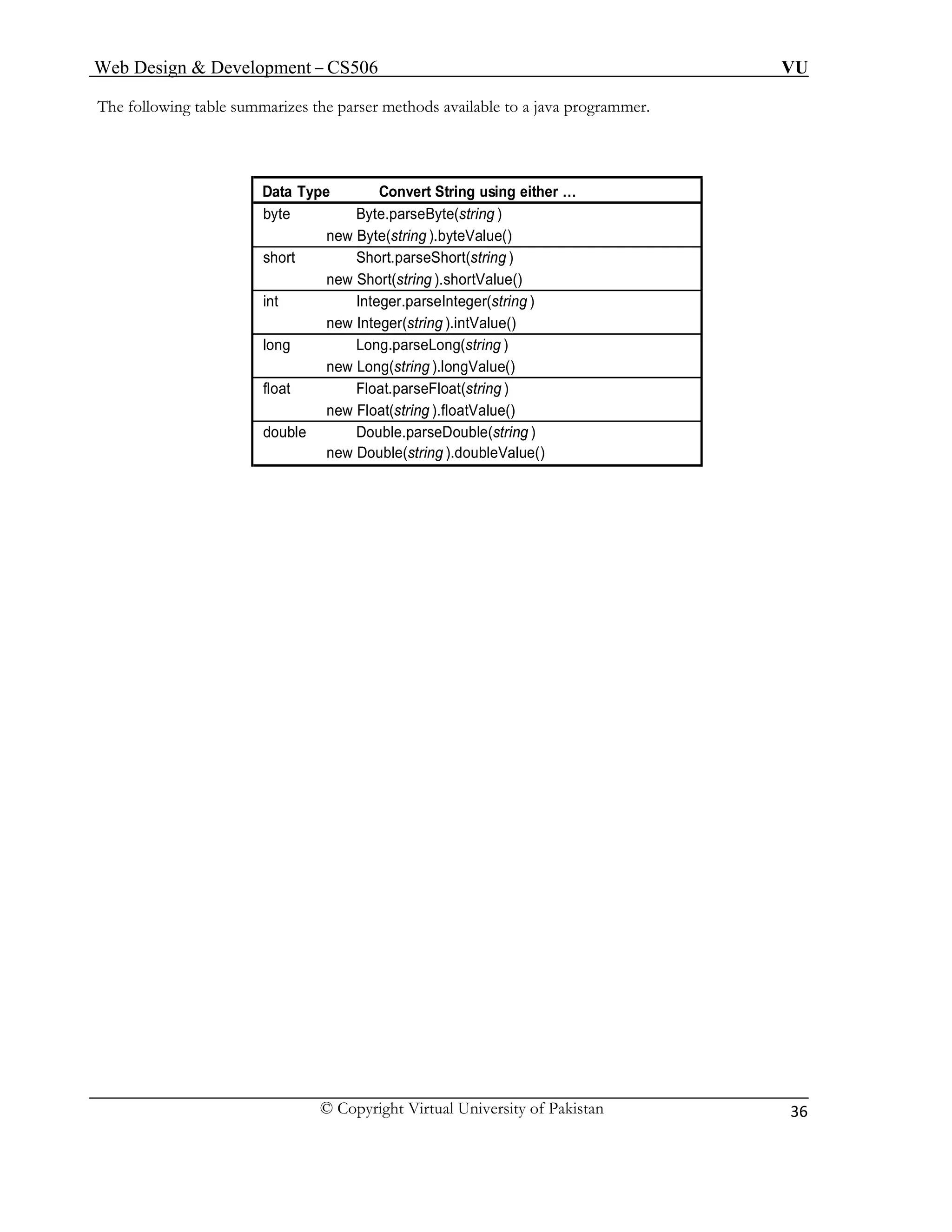
![Web Design & Development – CS506 VU
© Copyright Virtual University of Pakistan
37
Example Code: Taking Input / Output
So far, we learned how to print something on console. Now the time has come to learn how to print on the GUI. Taking input from console is not as straightforward as in C++. Initially we’ll study how to take input through GUI (by using JOPtionPane class).
The following program will take input (a number) through GUI and prints its square on the console as well on GUI.
1. import javax.swing.*;
2. public class InputOutputTest {
3. public static void main(String[] args) {
4. //takes input through GUI
5. String input = JOptionPane.showInputDialog("Enter number");
6. int number = Integer.parseInt(input);
7. int square = number * number;
8. //Display square on console
9. System.out.println("square:" + square);
10. //Display square on GUI
11. JOptionPane.showMessageDialog(null, "square:"+ square);
12. System.exit(0);
13. }
14. }
On line 1, swing package was imported because it contains the JOptionPane class that will be used for taking input from GUI and displaying output to GUI. It is similar to header classes of C++.
On line 5, showInputDialog method is called of JOptionPane class by passing string argument that will be displayed on GUI (dialog box). This method always returns back a String regardless of whatever you entered (int, float, double, char) in the input filed.
Our task is to print square of a number on console, so we first convert a string into a number by calling parseInt method of Integer wrapper class. This is what we done on line number 6.
Line 11 will display square on GUI (dialog box) by using showMessageDialog method of JOptionPane class. The first argument passed to this method is null and the second argument must be a String. Here we use string concatenation.
Line 12 is needed to return the control back to command prompt whenever we use
JoptionPane class.](https://image.slidesharecdn.com/webdesignanddevelopment-cs506handouts-141110100145-conversion-gate01/75/Web-design-and-development-cs506-handouts-37-2048.jpg)
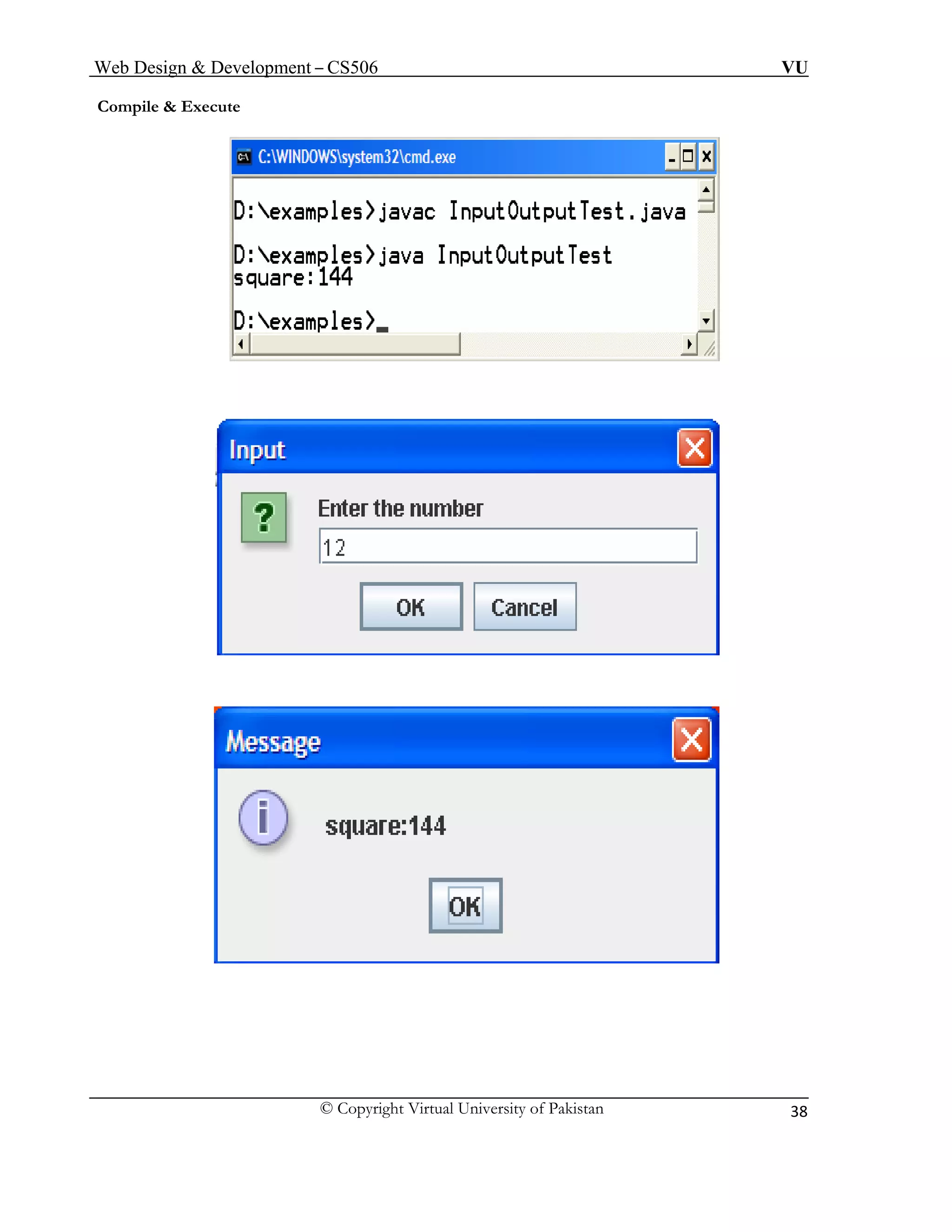
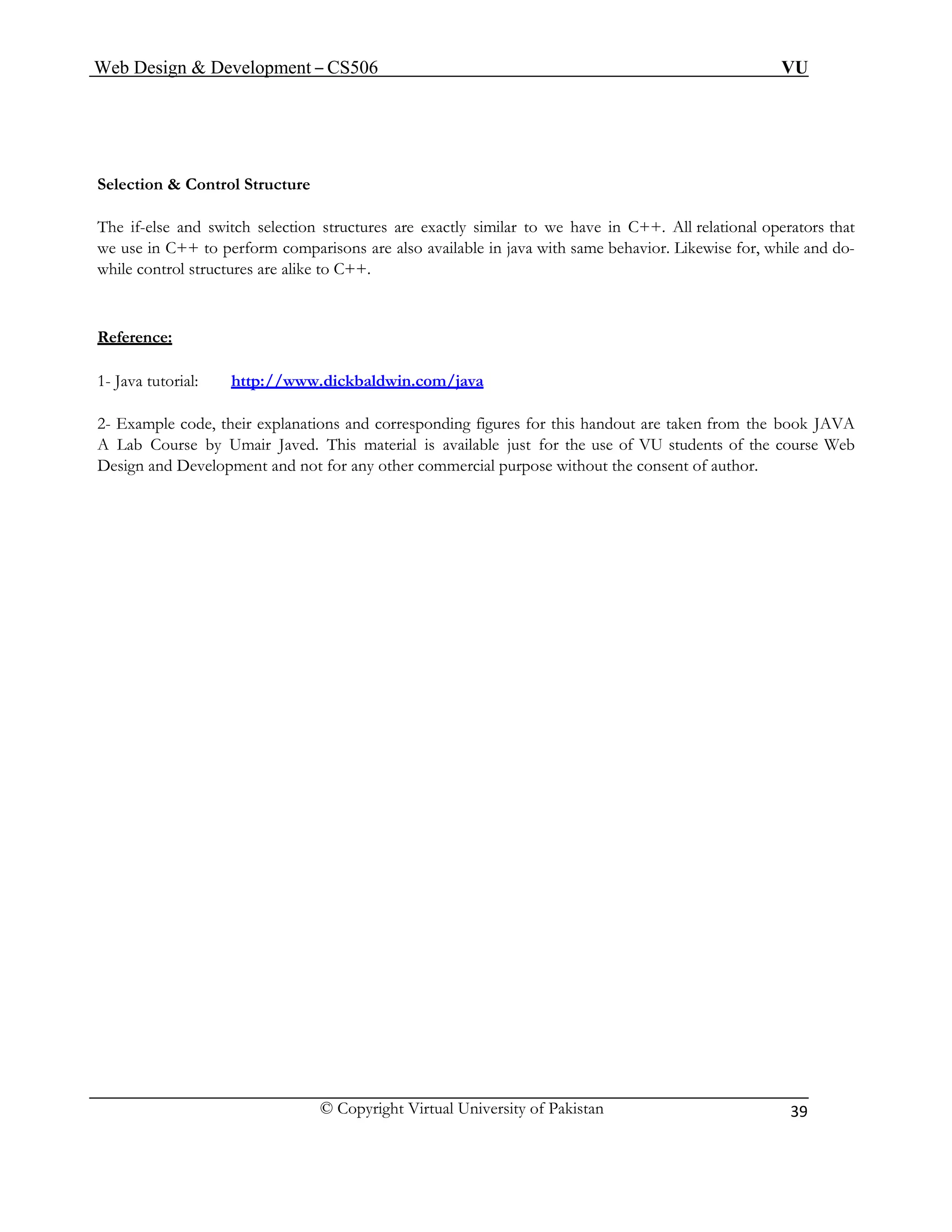
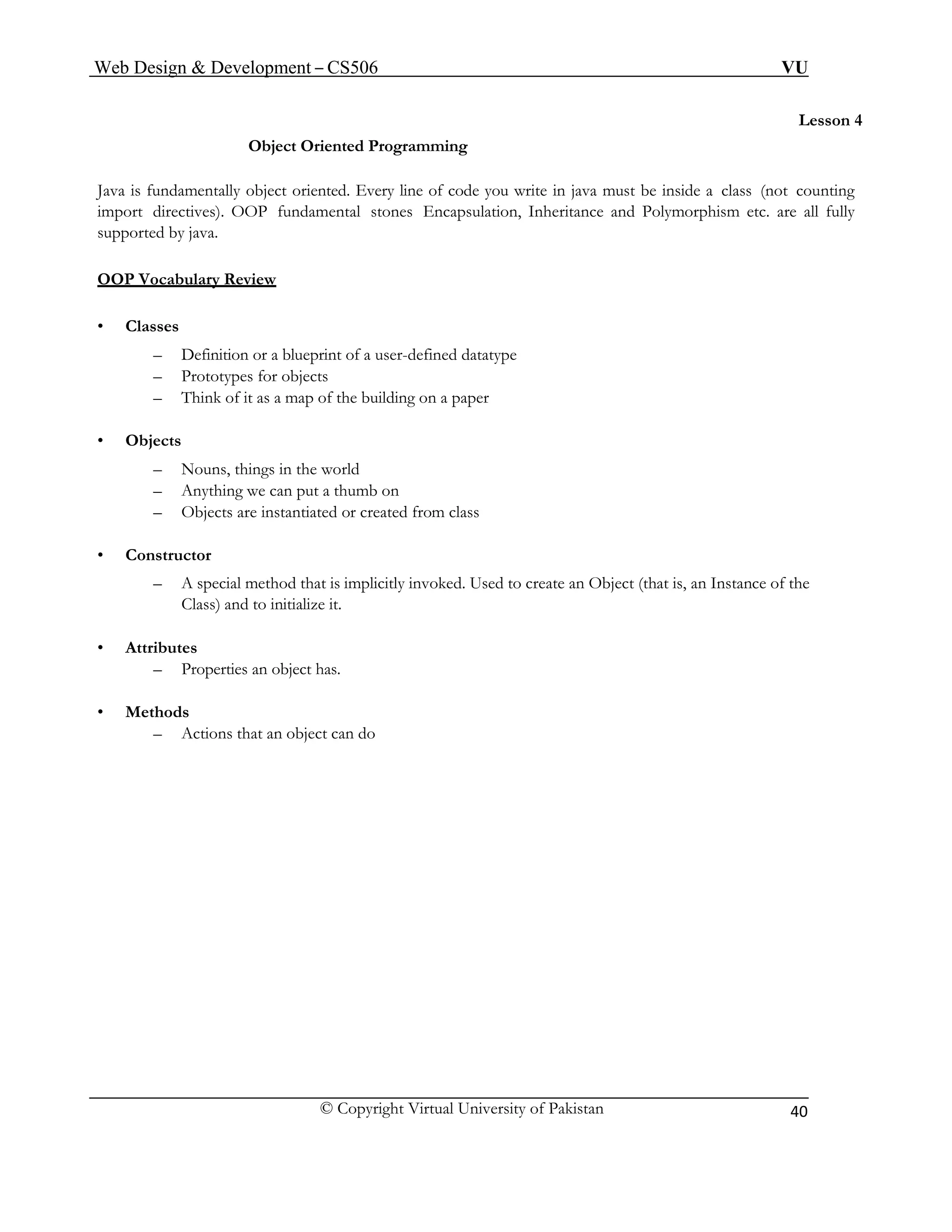
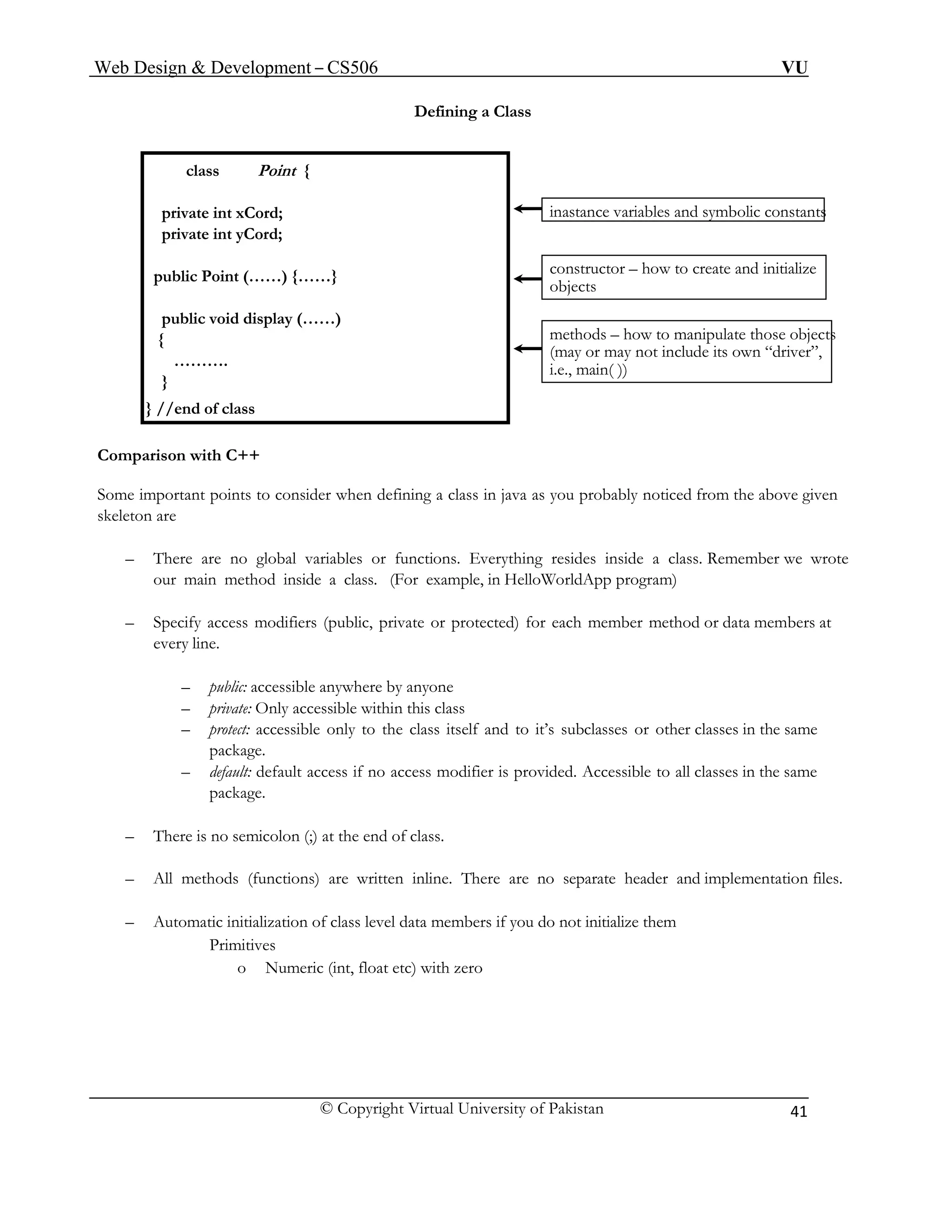
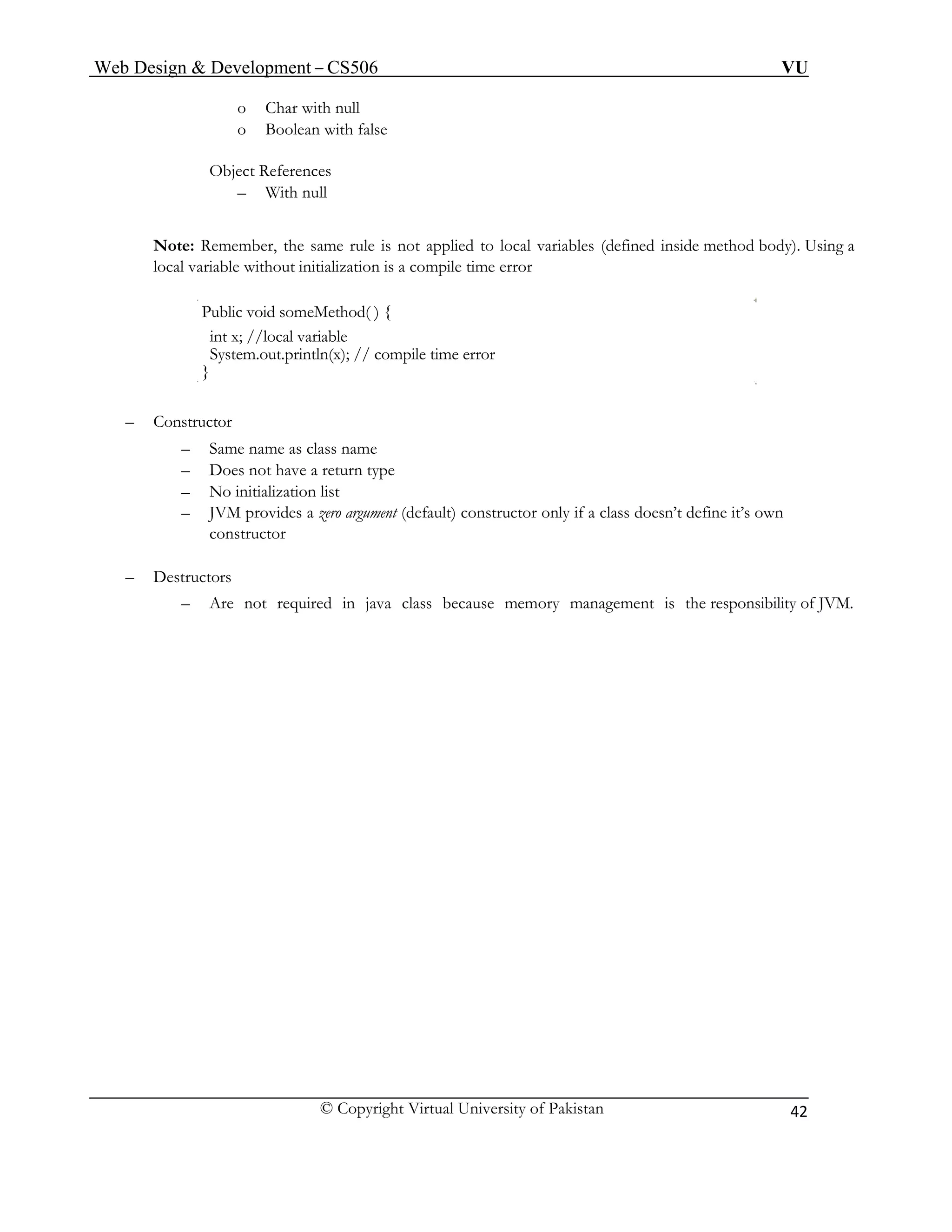
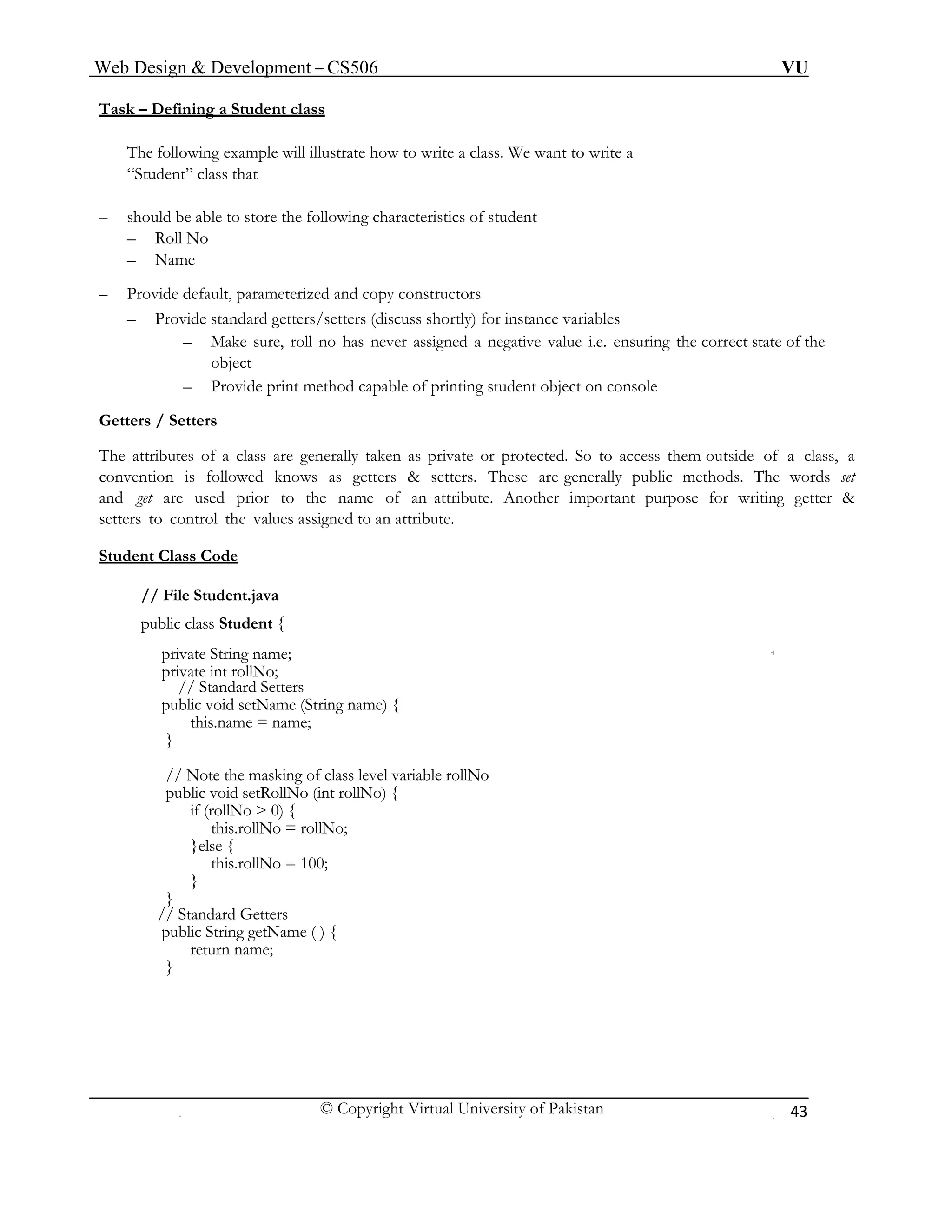
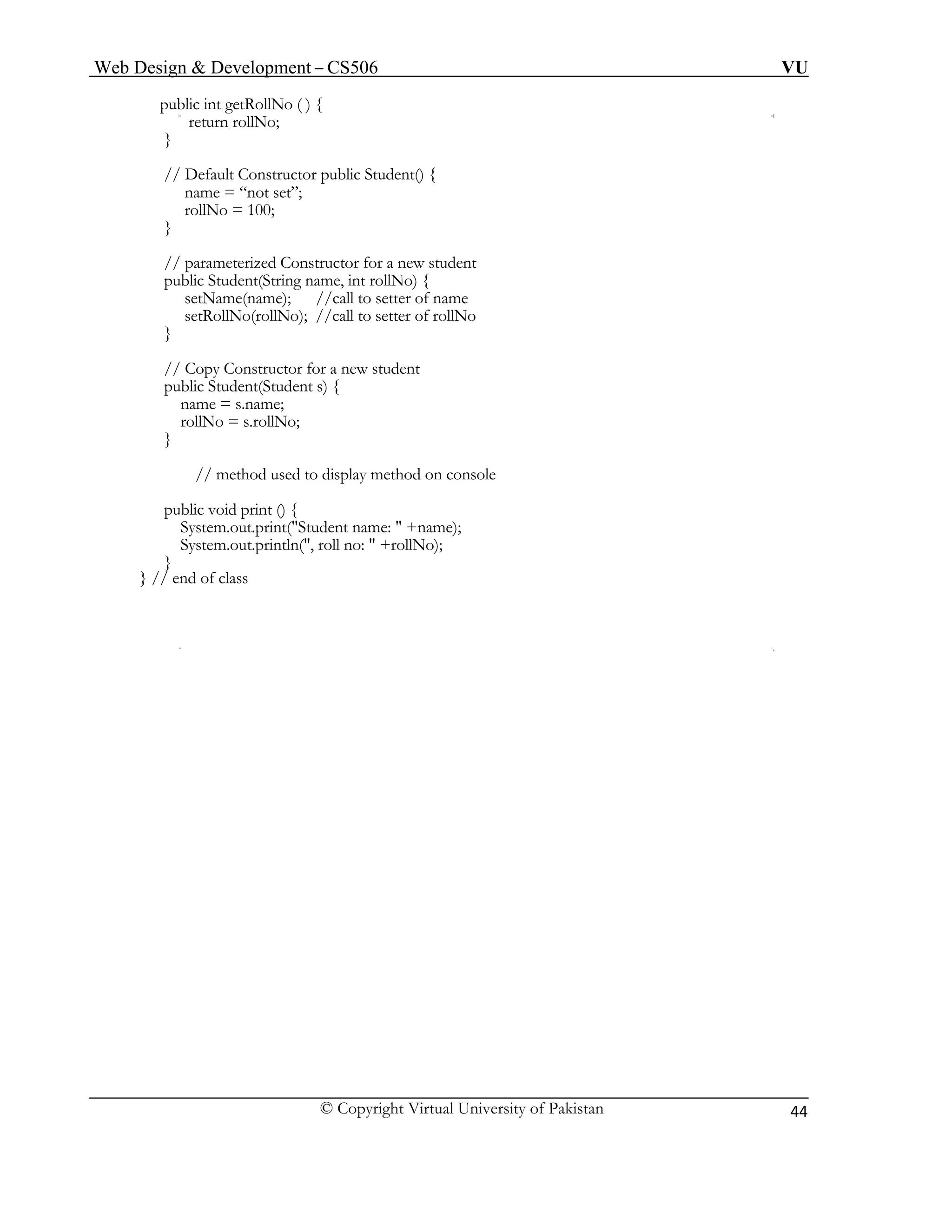
![Web Design & Development – CS506 VU
© Copyright Virtual University of Pakistan
45
Using a Class
Objects of a class are always created on heap using the “new” operator followed by constructor
• Student s = new Student ( ); // no pointer operator “*” between Student and s
• Only String constant is an exception
String greet = “Hello” ; // No new operator
• However you can also use
String greet2 = new String(“Hello”);
Members of a class ( member variables and methods also known as instance variables/methods ) are accessed using “.” operator. There is no “Æ” operator in java
s.setName(“Ali”);
sÆsetName(“Ali”) is incorrect and will not compile in java
Note: Objects are always passed by reference and primitives are always passed by value in java.
Task - Using Student Class
Create objects of student class by calling default, parameterize and copy constructor
Call student class various methods on these objects
Student client code
// File Test.java
/* This class create Student class objects and demonstrates
how to call various methods on objects
*/
public class Test{
public static void main (String args[]){
// Make two student obejcts
Student s1 = new Student("ali", 15);
Student s2 = new Student(); //call to default costructor
s1.print(); // display ali and 15
s2.print(); // display not set and 100
s2.setName("usman");
s2.setRollNo(20);
System.out.print("Student name:" + s2.getName());
System.out.println(" rollNo:" + s2.getRollNo());](https://image.slidesharecdn.com/webdesignanddevelopment-cs506handouts-141110100145-conversion-gate01/75/Web-design-and-development-cs506-handouts-45-2048.jpg)

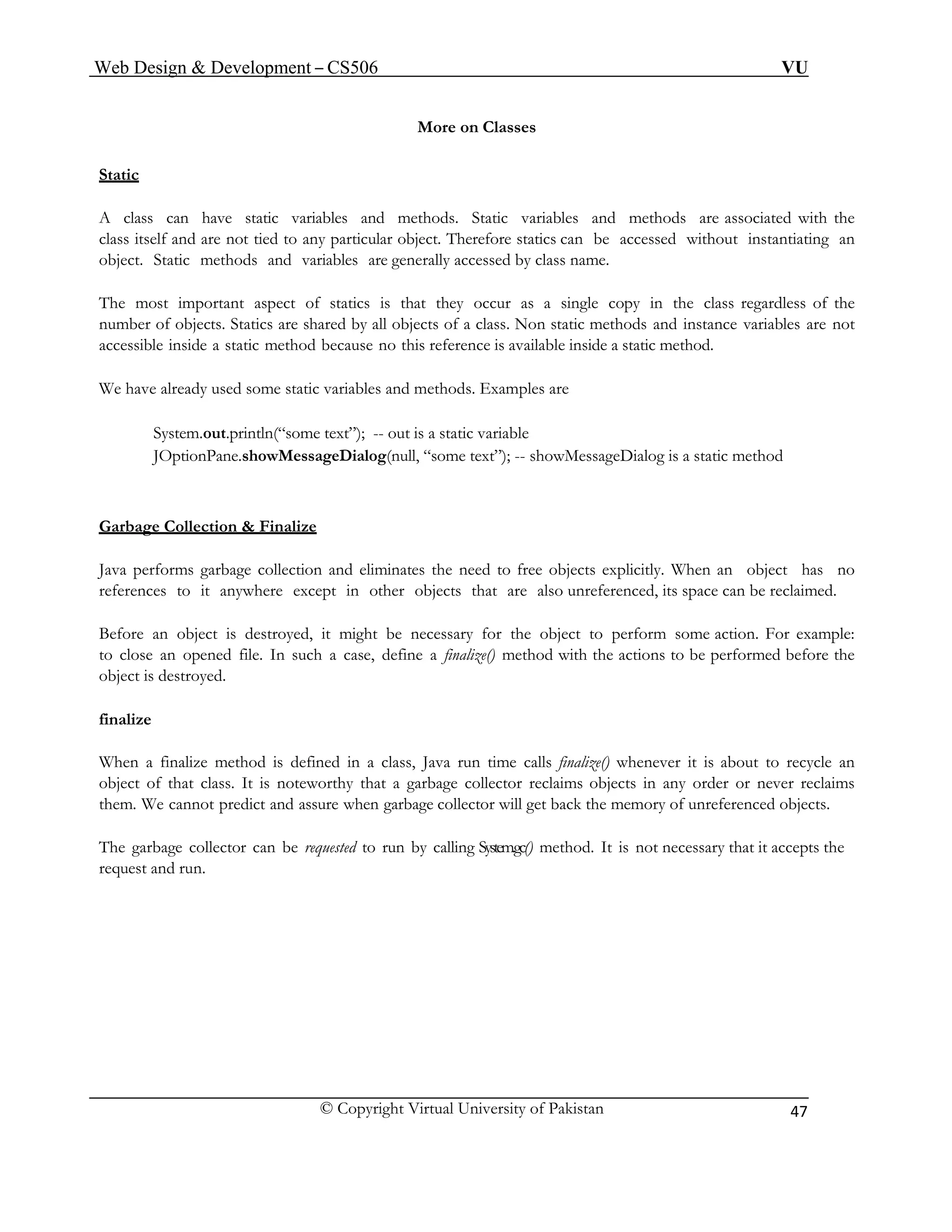
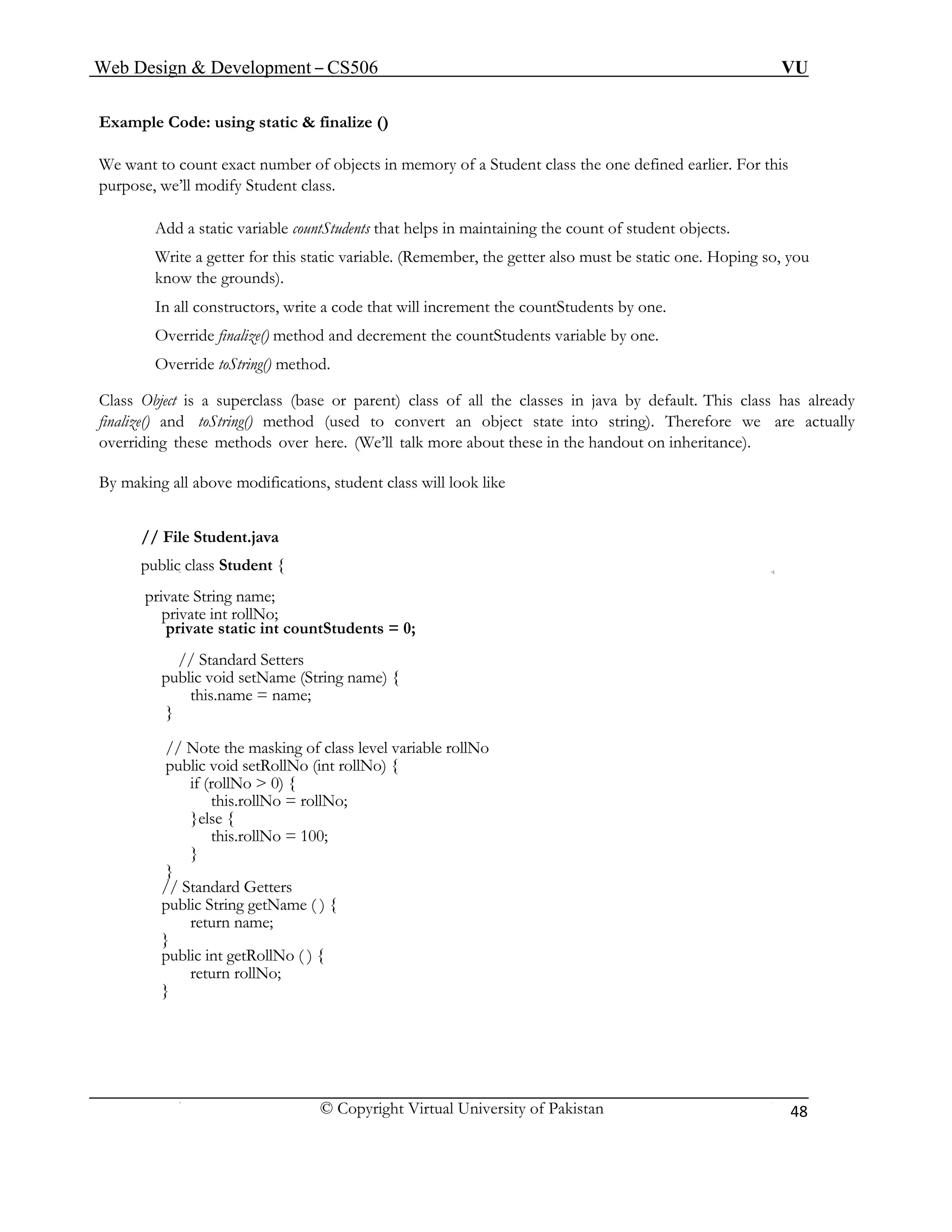
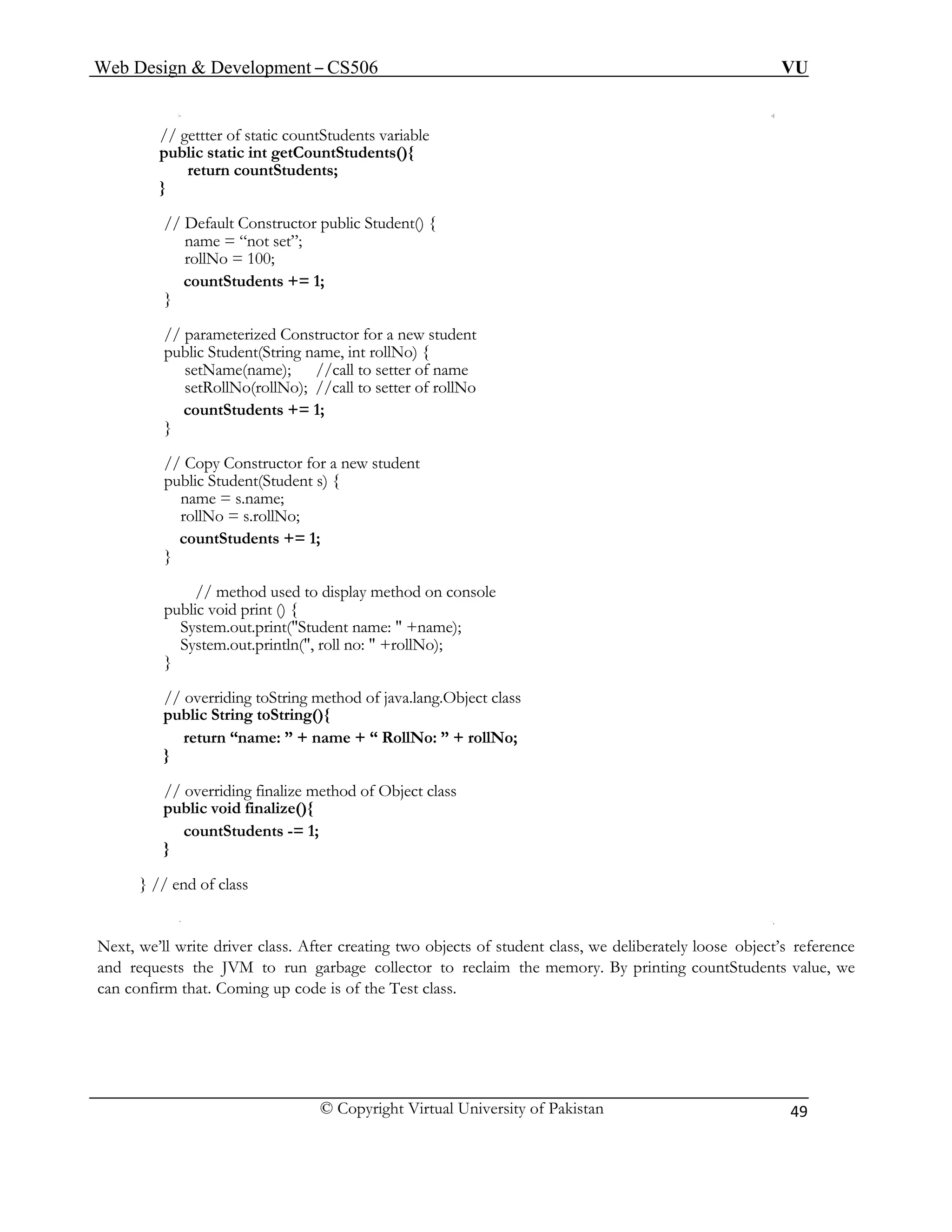
![Web Design & Development – CS506 VU
© Copyright Virtual University of Pakistan
50
// File Test.java
public class Test{
public static void main (String args[]){
int numObjects;
// printing current number of objects i.e 0
numObjs = Student.getCountStudents();
System.out.println(“Students Objects” + numObjects);
// Creating first student object & printing its values
Student s1 = new Student("ali", 15);
System.out.println(“Student: ” + s1.toString());
// printing current number of objects i.e. 1
numObjs = Student.getCountStudents();
System.out.println(“Students Objects” + numObjects);
// Creating second student object & printing its values
Student s2 = new Student("usman", 49);
// implicit call to toString() method
System.out.println(“Student: ” + s2);
// printing current number of objects i.e. 2
numObjs = Student.getCountStudents();
System.out.println(“Students Objects” + numObjects);
// loosing object reference
s1 = null
// requesting JVM to run Garbage collector but there is
// no guarantee that it will run
System.gc();
// printing current number of objects i.e. unpredictable
numObjs = Student.getCountStudents();
System.out.println(“Students Objects” + numObjects);
} //end of main
} //end of class](https://image.slidesharecdn.com/webdesignanddevelopment-cs506handouts-141110100145-conversion-gate01/75/Web-design-and-development-cs506-handouts-50-2048.jpg)
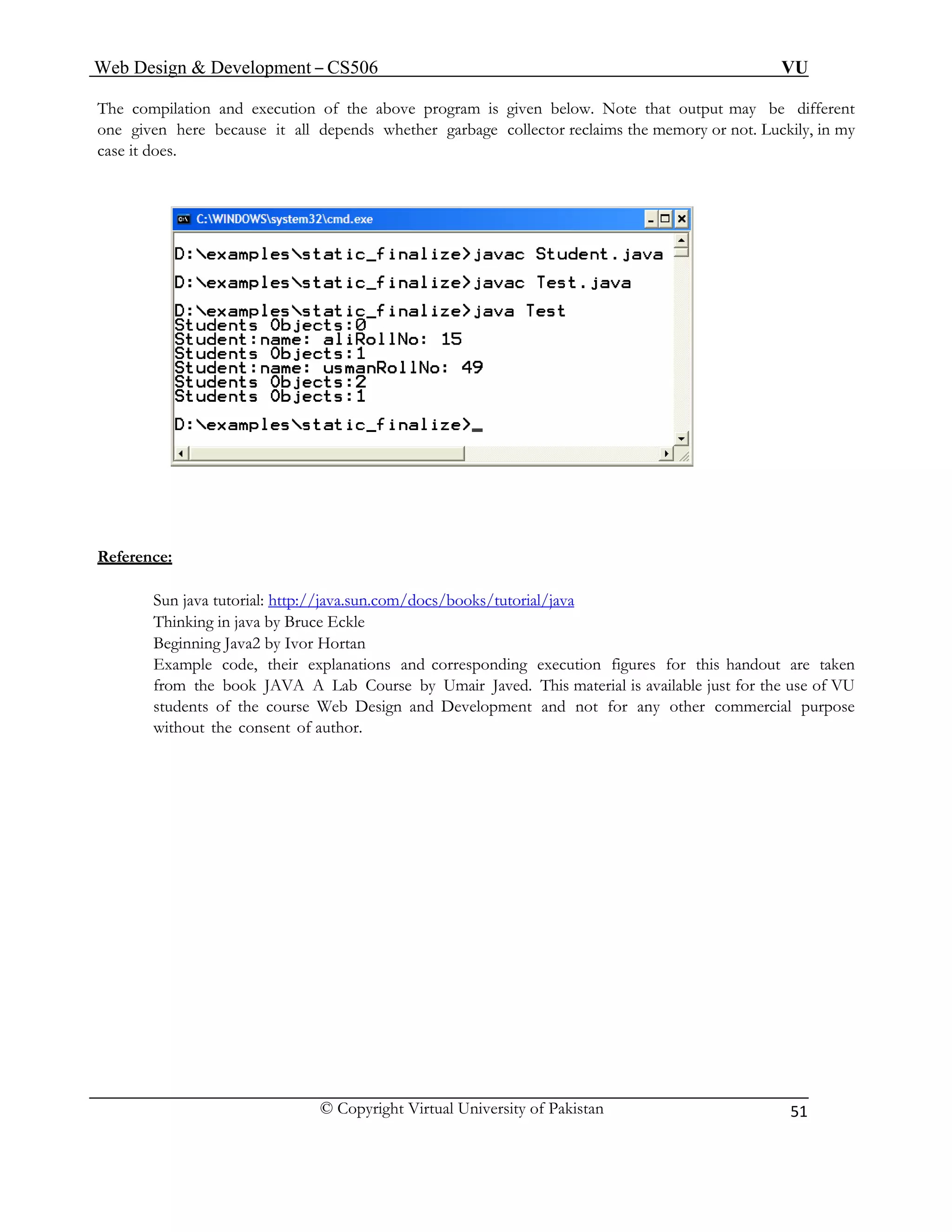
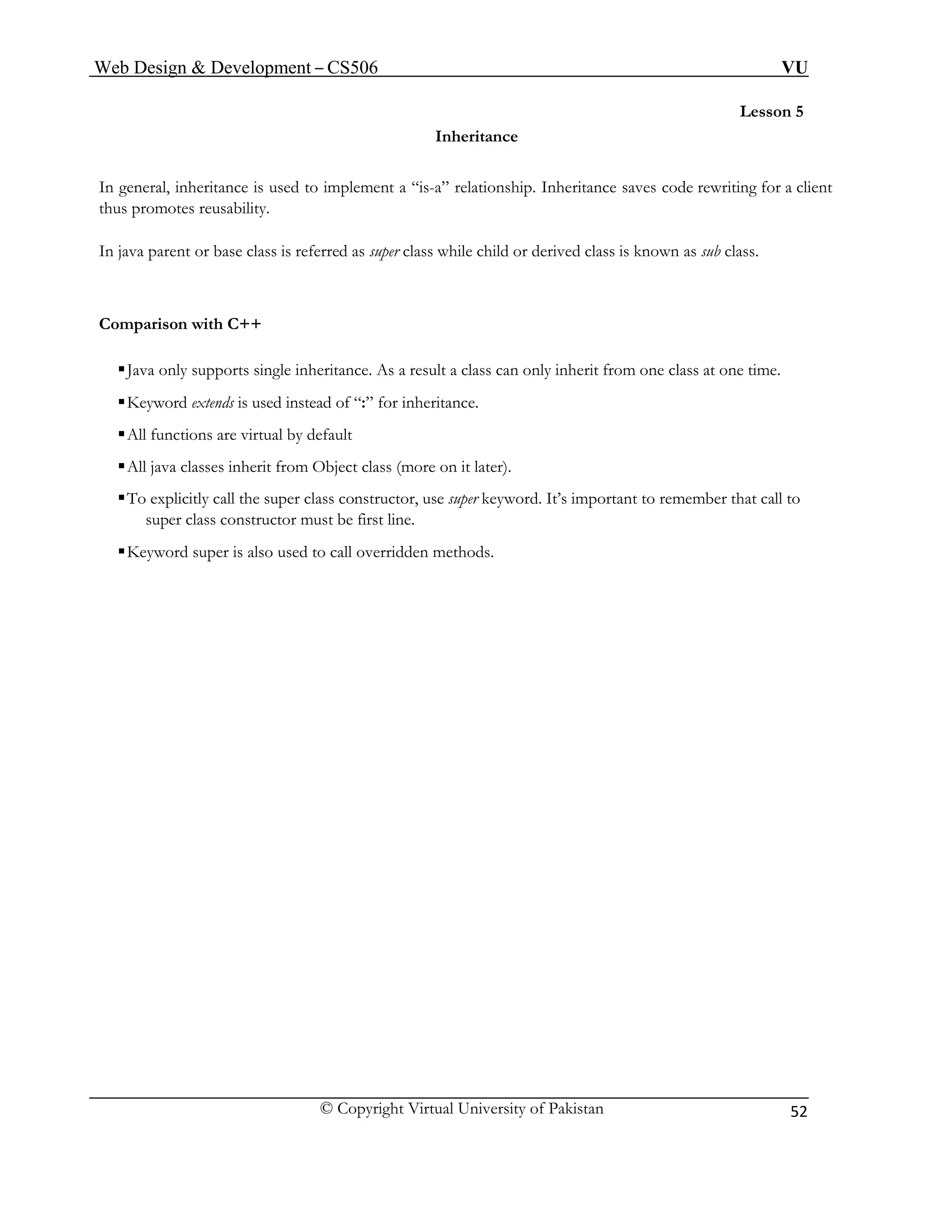
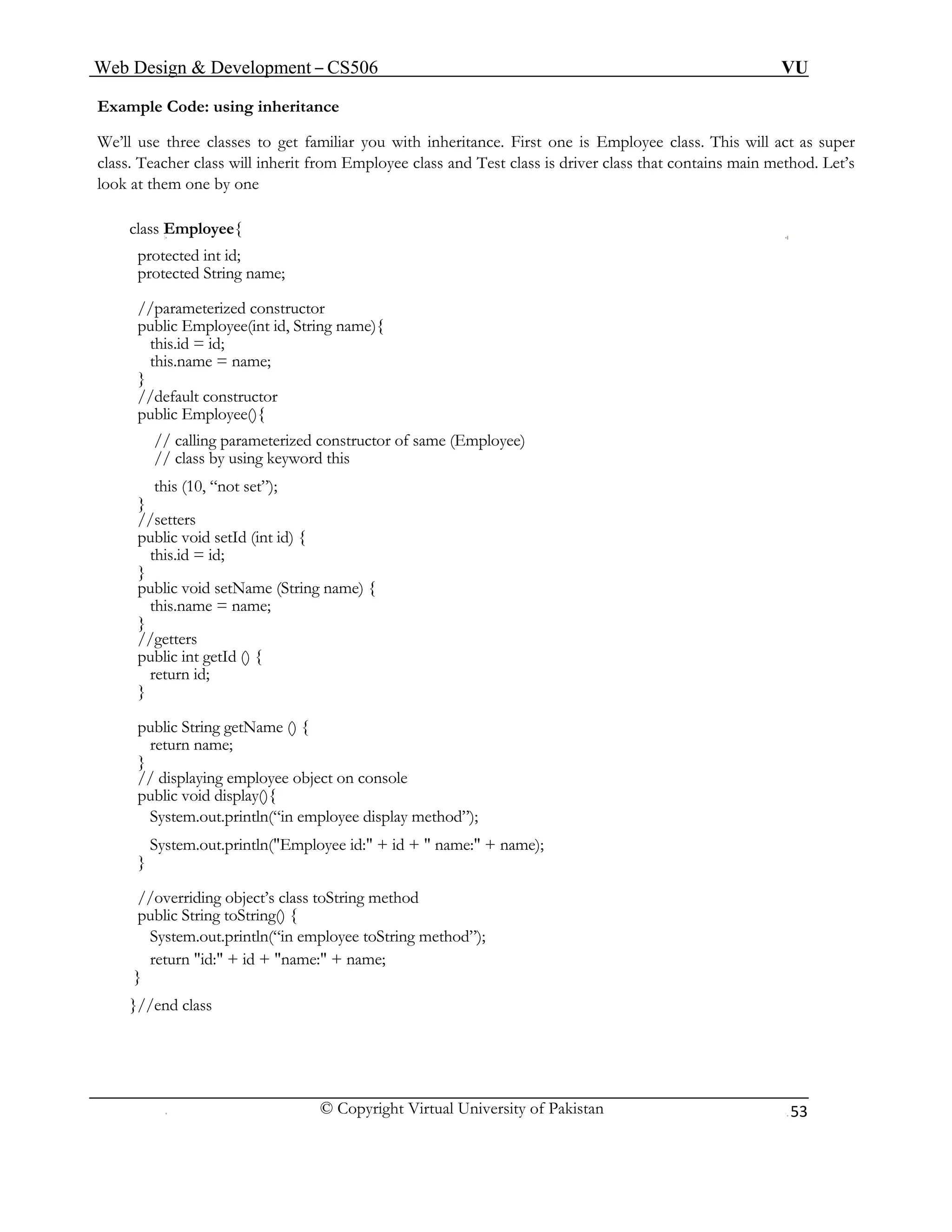
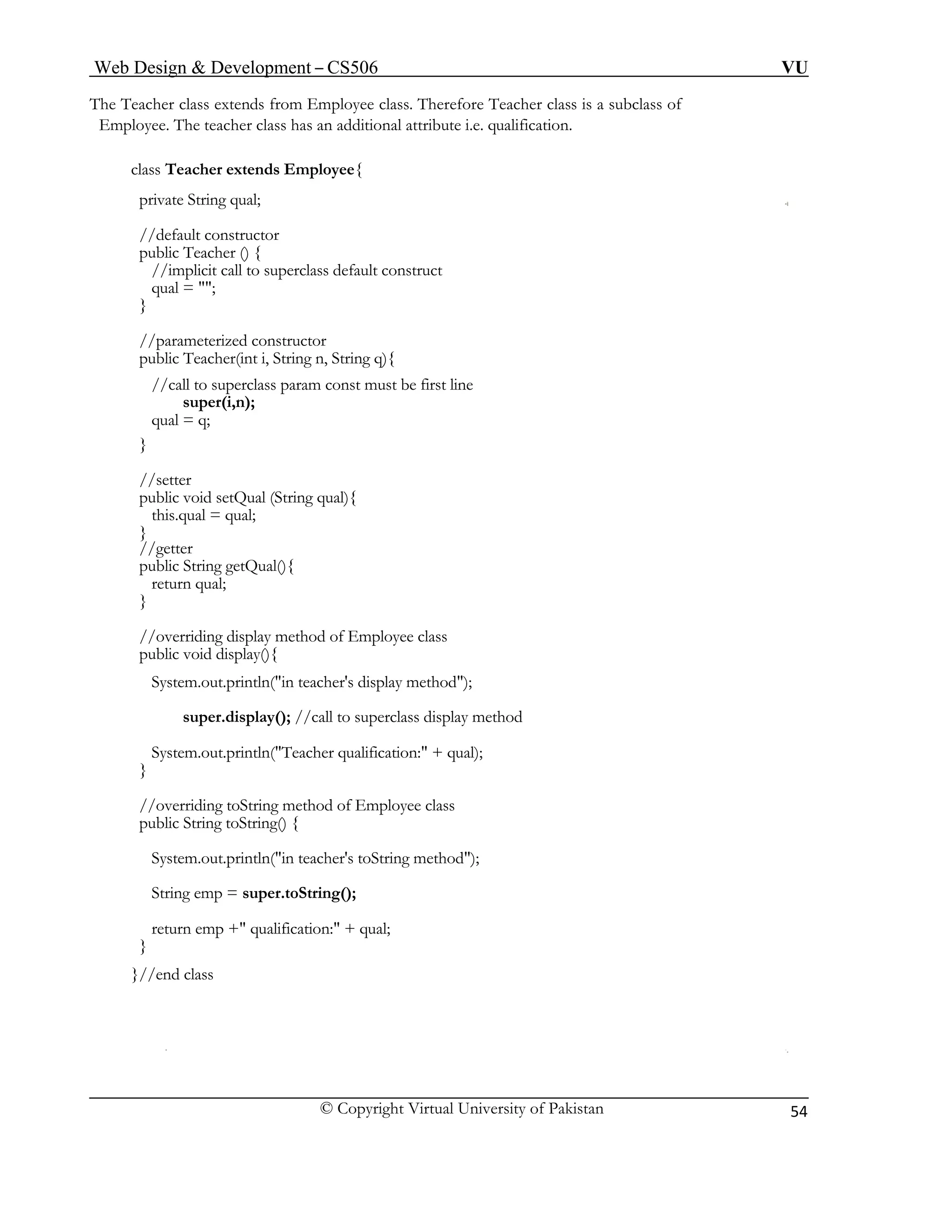
![Web Design & Development – CS506 VU
© Copyright Virtual University of Pakistan
55
Objects of Employee & Teacher class are created inside main method in Test class. Later calls are made to display and toString method using these objects.
class Test{
public static void main (String args[]){
System.out.println("making object of employee");
Employee e = new Employee(89, "khurram ahmad");
System.out.println("making object of teacher");
Teacher t = new Teacher (91, "ali raza", "phd");
e.display(); //call to Employee class display method
t.display(); //call to Teacher class display method
// calling employee class toString method explicitly
System.out.println("Employee: " +e.toString());
// calling teacher class toString implicitly
System.out.println("Teacher: " + t);
} //end of main
}//end class
Output](https://image.slidesharecdn.com/webdesignanddevelopment-cs506handouts-141110100145-conversion-gate01/75/Web-design-and-development-cs506-handouts-55-2048.jpg)
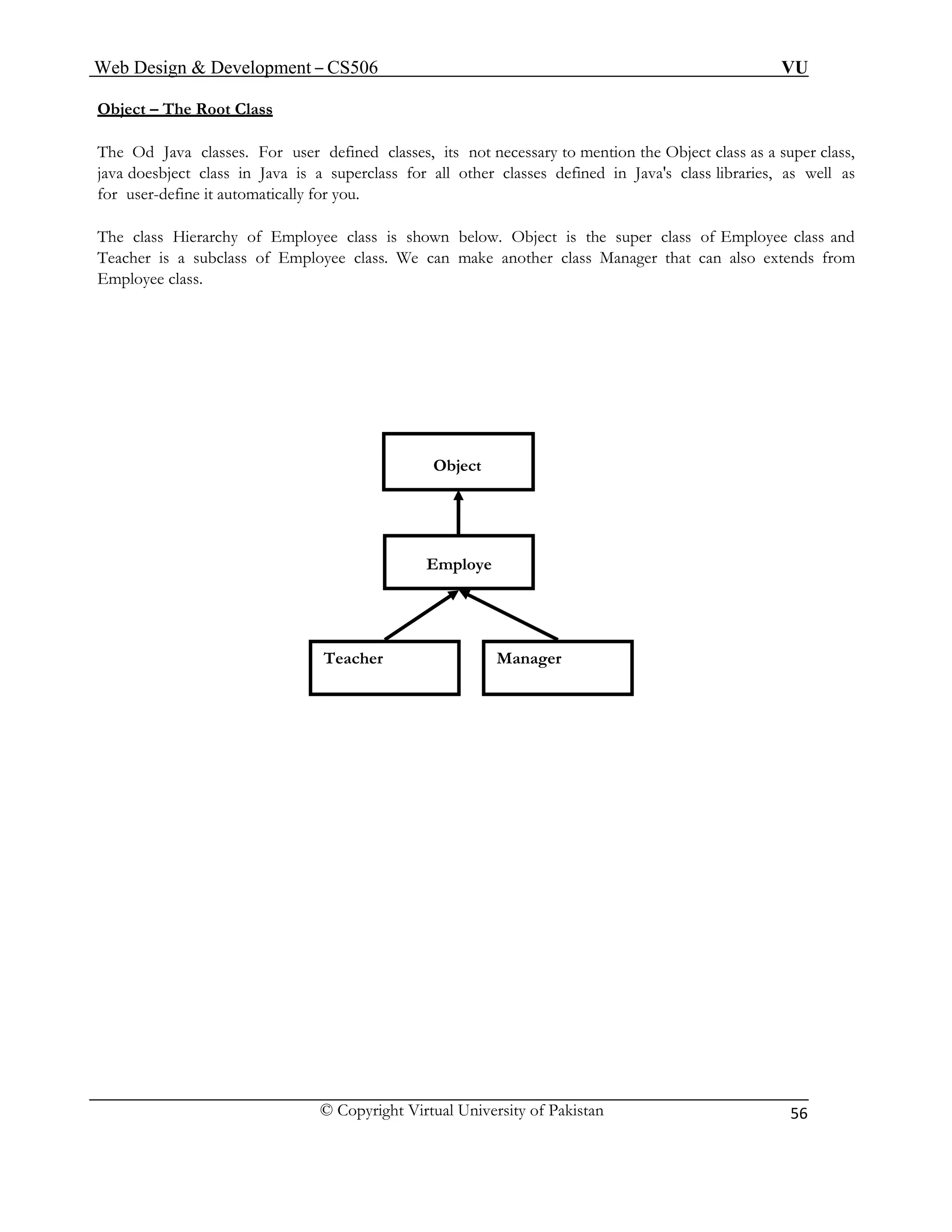
![Web Design & Development – CS506 VU
© Copyright Virtual University of Pakistan
57
Polymorphism
“Polymorphic” literally means “of multiple shapes” and in the context of OOP, polymorphic means “having multiple behavior”.
A parent class reference can point to the subclass objects because of is-a relationship. For example a Employee reference can point to:
o Employee Object
o Teacher Object
o Manager Object
A polymorphic method results in different actions depending on the object being referenced
o Also known as late binding or run-time binding
Example Code: using polymorphism
This Test class is the modification of last example code. Same Employee & Teacher classes are used. Objects of Employee & Teacher class are created inside main methods and calls are made to display and toString method using these objects.
class Test{
public static void main (String args[]){
// Make employee references
Employee ref1, ref2;
// assign employee object to first employee reference
ref1 = new Employee(89, "khurram ahmad");
// is-a relationship, polymorphism
ref2 = new Teacher (91, "ali raza", "phd");
//call to Employee class display method
ref1.display();
//call to Teacher class display method
ref2.display();
// call to Employee class toString method
System.out.println("Employee: " +ref1.toString());
// call to Teacher class toString method
System.out.println("Teacher: " + ref2.toString());
} //end of main
}//end class](https://image.slidesharecdn.com/webdesignanddevelopment-cs506handouts-141110100145-conversion-gate01/75/Web-design-and-development-cs506-handouts-57-2048.jpg)
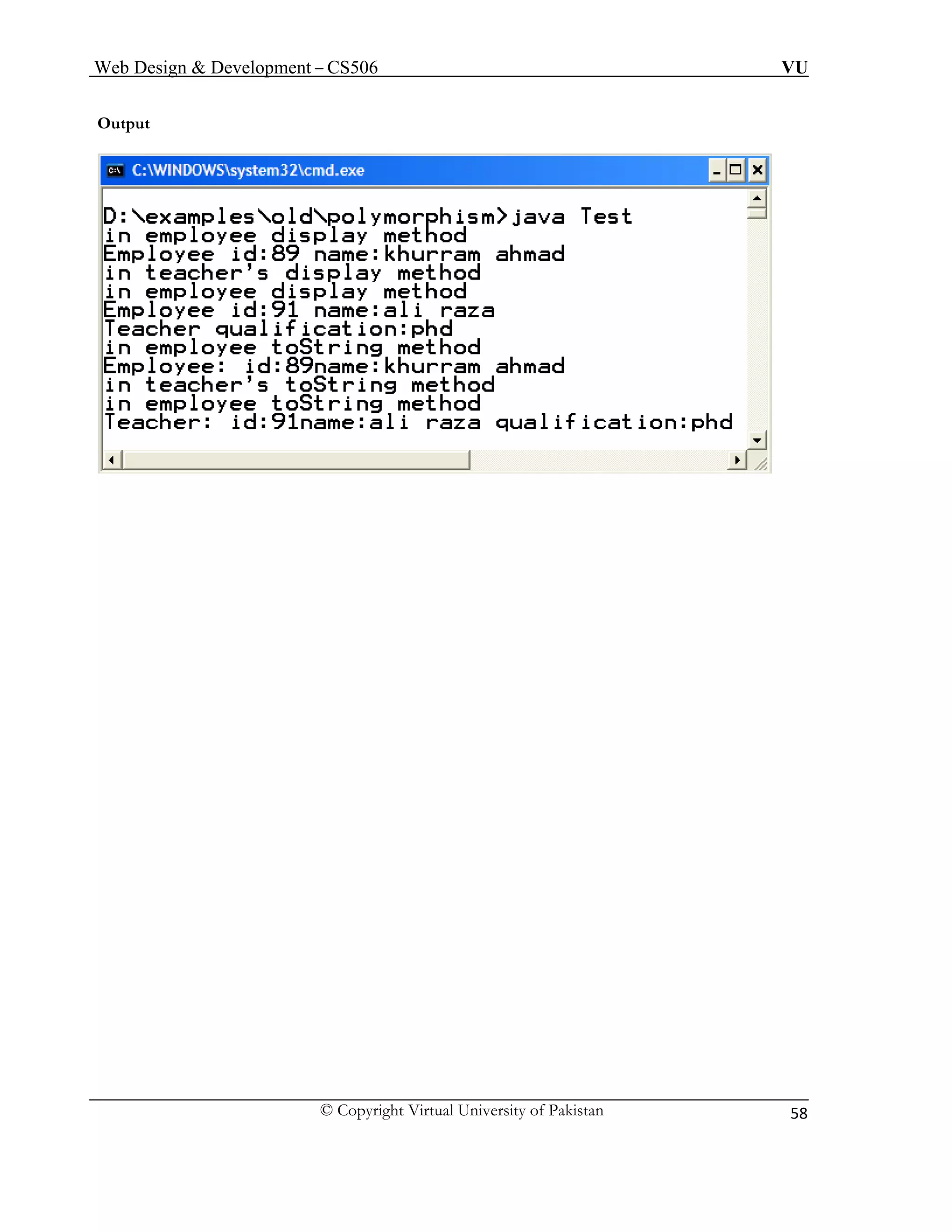
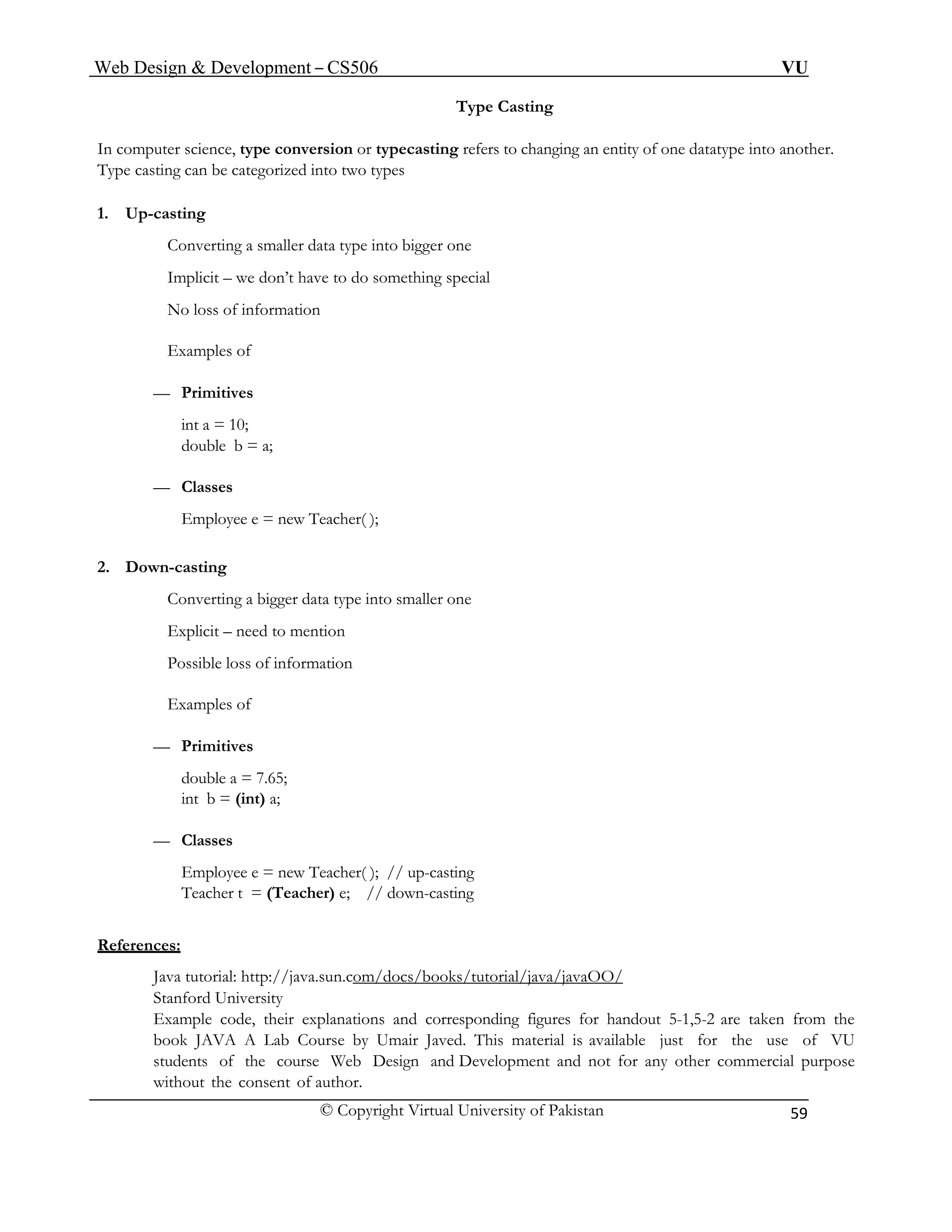
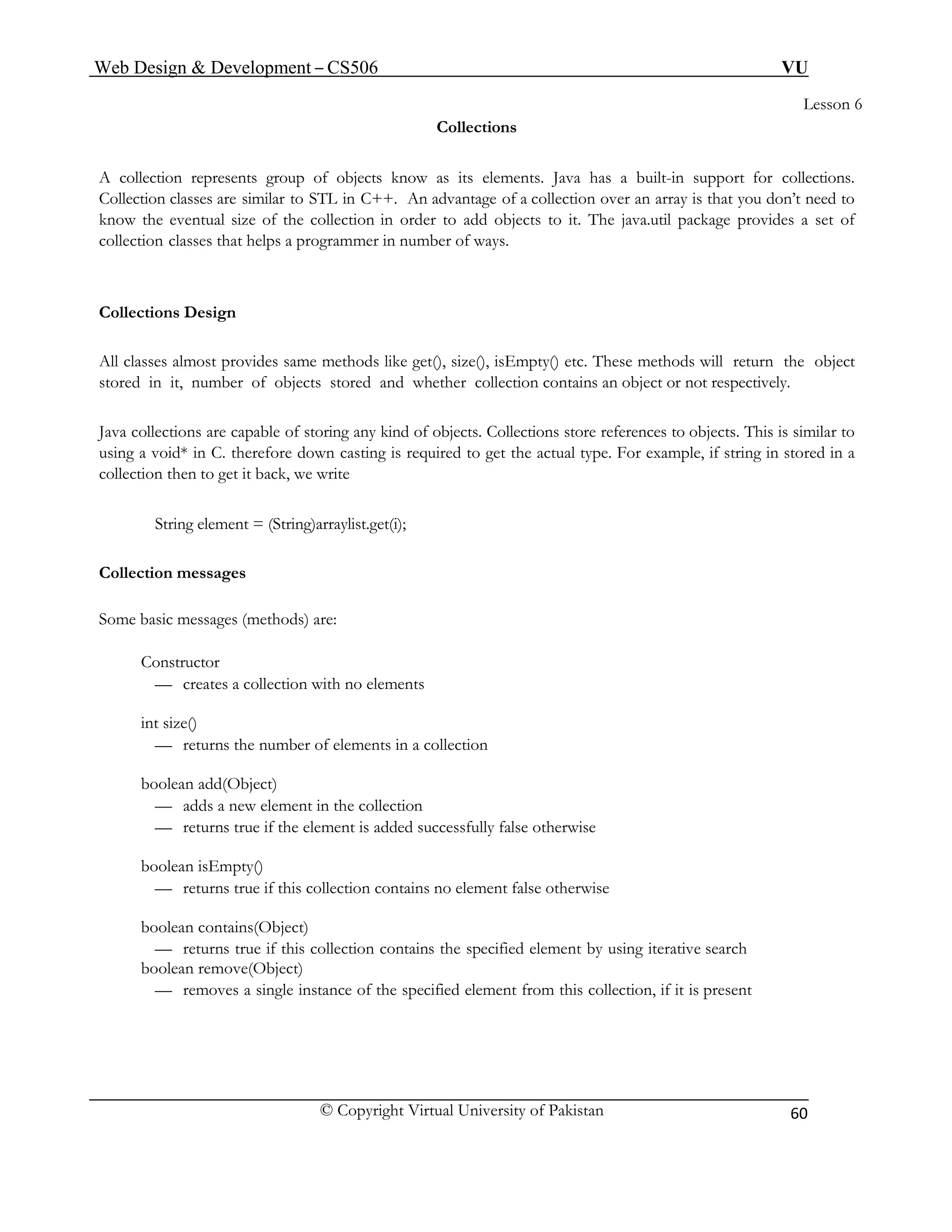
![Web Design & Development – CS506 VU
© Copyright Virtual University of Pakistan
61
ArrayList
It’s like a resizable array. ArrayList actually comes as a replacement the old “Vector” collection. As we add or remove elements into or from it, it grows or shrinks over time.
Useful Methods
add (Object)
— With the help of this method, any object can be added into ArrayList because
Object is the super class of all classes.
— Objects going to add will implicitly up-cast.
Object get(int index)
— Returns the element at the specified position in the list
— index ranges from 0 to size()-1
— must cast to appropriate type
remove (int index)
— Removes the element at the specified position in this list.
— Shifts any subsequent elements to the left (subtracts one from their indices).
int size( )
Example Code: Using ArrayList class
We’ll store Student objects in the ArrayList. We are using the same student class which we built in previous lectures/handouts.
We’ll add three student objects and later prints all the student objects after retrieving them from ArrayList. Let’s look at the code
iport java.util.*;
public class ArrayListTest {
public static void main(String[] args) {
// creating arrayList object by calling constructor
ArrayList al= new ArrayList();
// creating three Student objects
Student s1 = new Student (“ali” , 1);
Student s2 = new Student (“saad” , 2);
Student s3 = new Student (“raza” , 3);
// adding elements (Student objects) into arralylist al.add(s1);
al.add(s2);
al.add(s3);](https://image.slidesharecdn.com/webdesignanddevelopment-cs506handouts-141110100145-conversion-gate01/75/Web-design-and-development-cs506-handouts-61-2048.jpg)
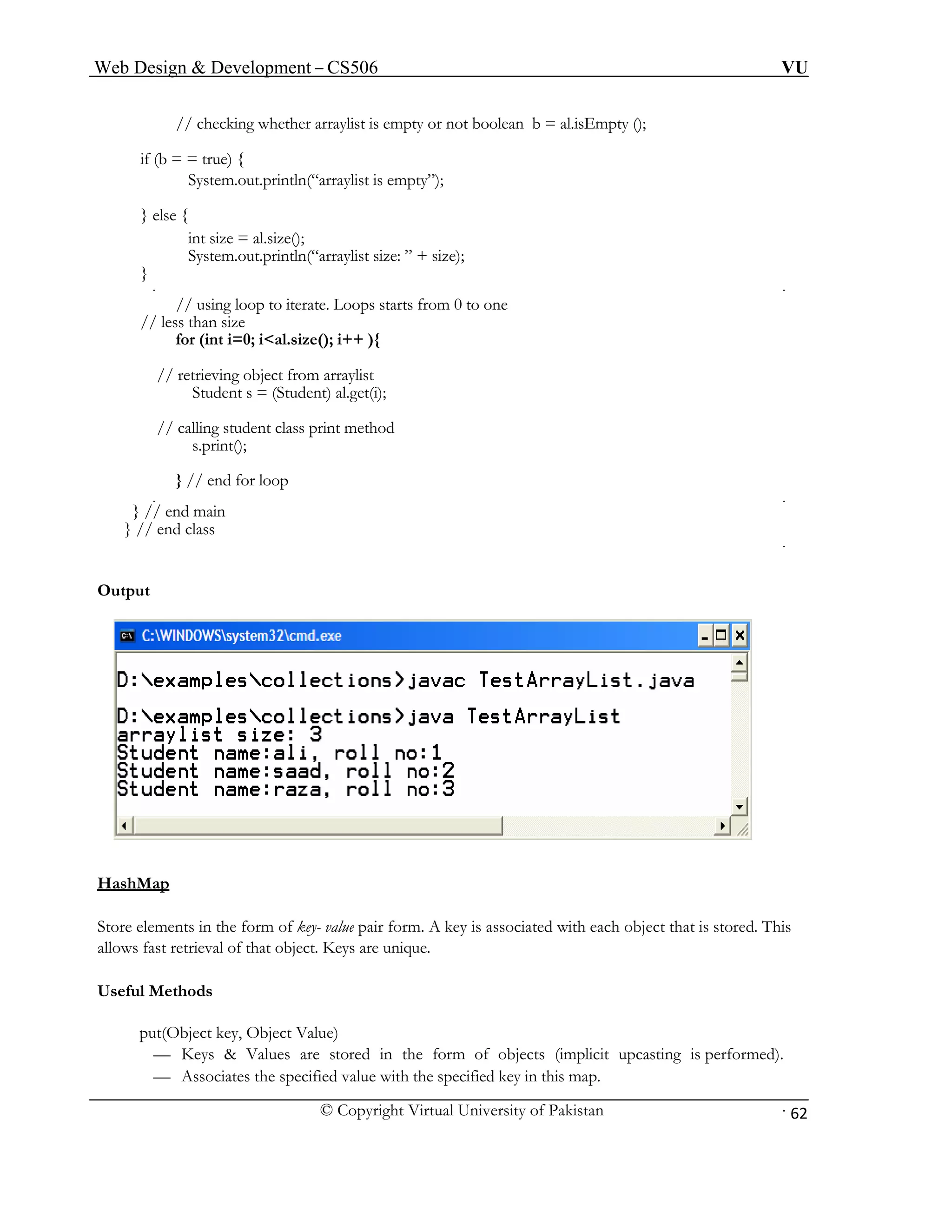
![Web Design & Development – CS506 VU
© Copyright Virtual University of Pakistan
63
— If the map previously contained a mapping for this key, the old value is replaced.
Object get(Object key)
ing for this key.
owncast to appropriate type when used
int
Example Code: usin
In of strings as keys. Same
Student cla
iport java.util.*;
public g[] args) {
p object
HashMap();
// creating Student objects
= new Student (“ali” , 1); Student s2 = new Student (“saad” ,
dding elements (Student objects) where roll nos
// are stored as keys and student objects as values
h.put(“six”, s3);
// checking whether hashmap is empty or not boolean b = h.isEmpty ();
ty”);
} else {
int size = h.size();
.out.println(“hashmap size: ” + size);
// retrieving student object against rollno two and
performing downcasting
Student s = (Student) h.get(“two”);
// calling student’s class print method s.print();
— Returns the value to which the specified key is mapped in this identity hash map, or null if the map contains no mapp
— Must d
size( )
g HashMap class
this example code, we’ll store St
udent objects as values and their rollnos in the form ss is used. The code is;
public c
lass HashMapTest {
static void main(Strin
// creating HashMa
HashMap h= new
Student s1
2); Student s3 = new Student (“raza” , 6);
// a
h.put(“one” , s1);
h.put(“two” , s2);
if (b = = true) {
System.out.println(“hashmap is emp
System
}
//](https://image.slidesharecdn.com/webdesignanddevelopment-cs506handouts-141110100145-conversion-gate01/75/Web-design-and-development-cs506-handouts-63-2048.jpg)
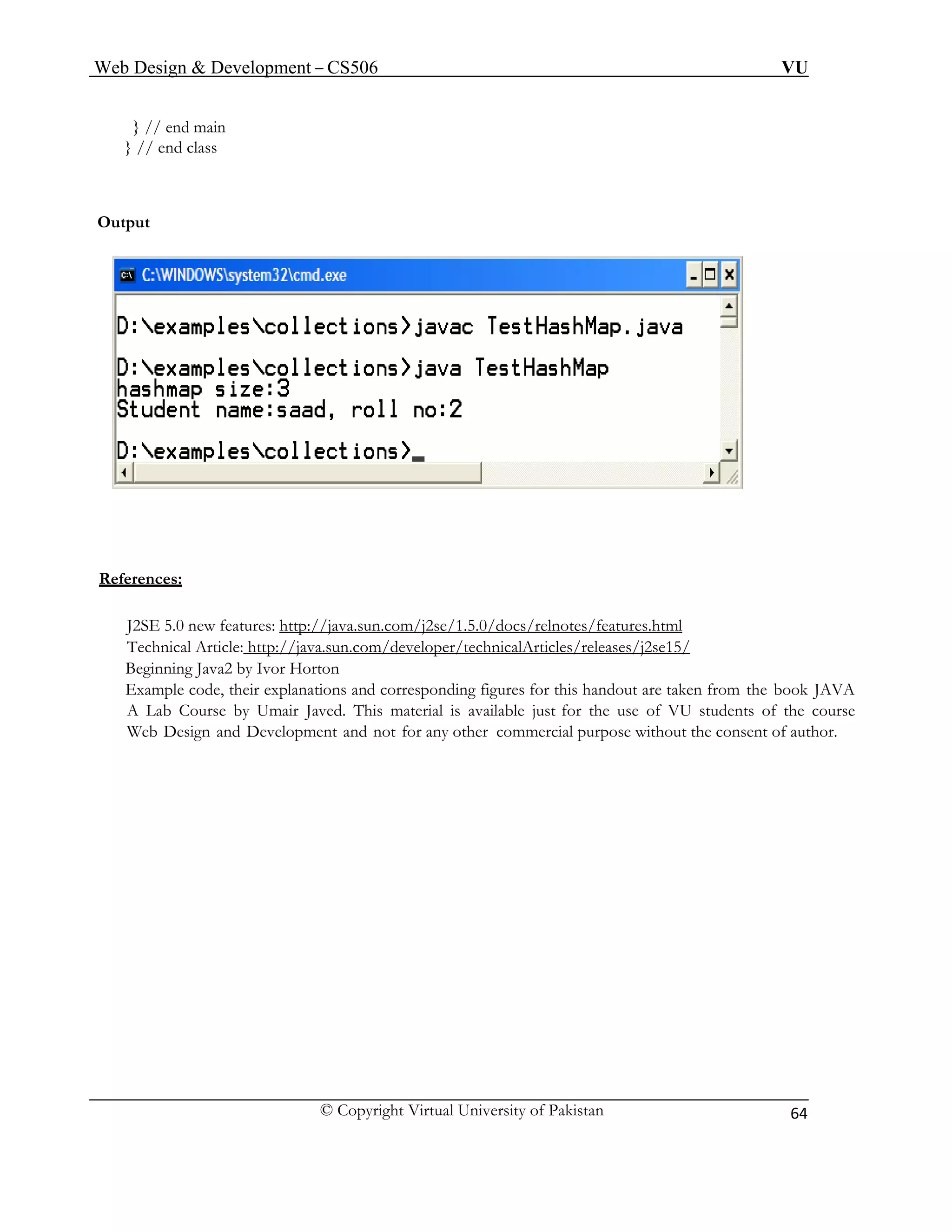
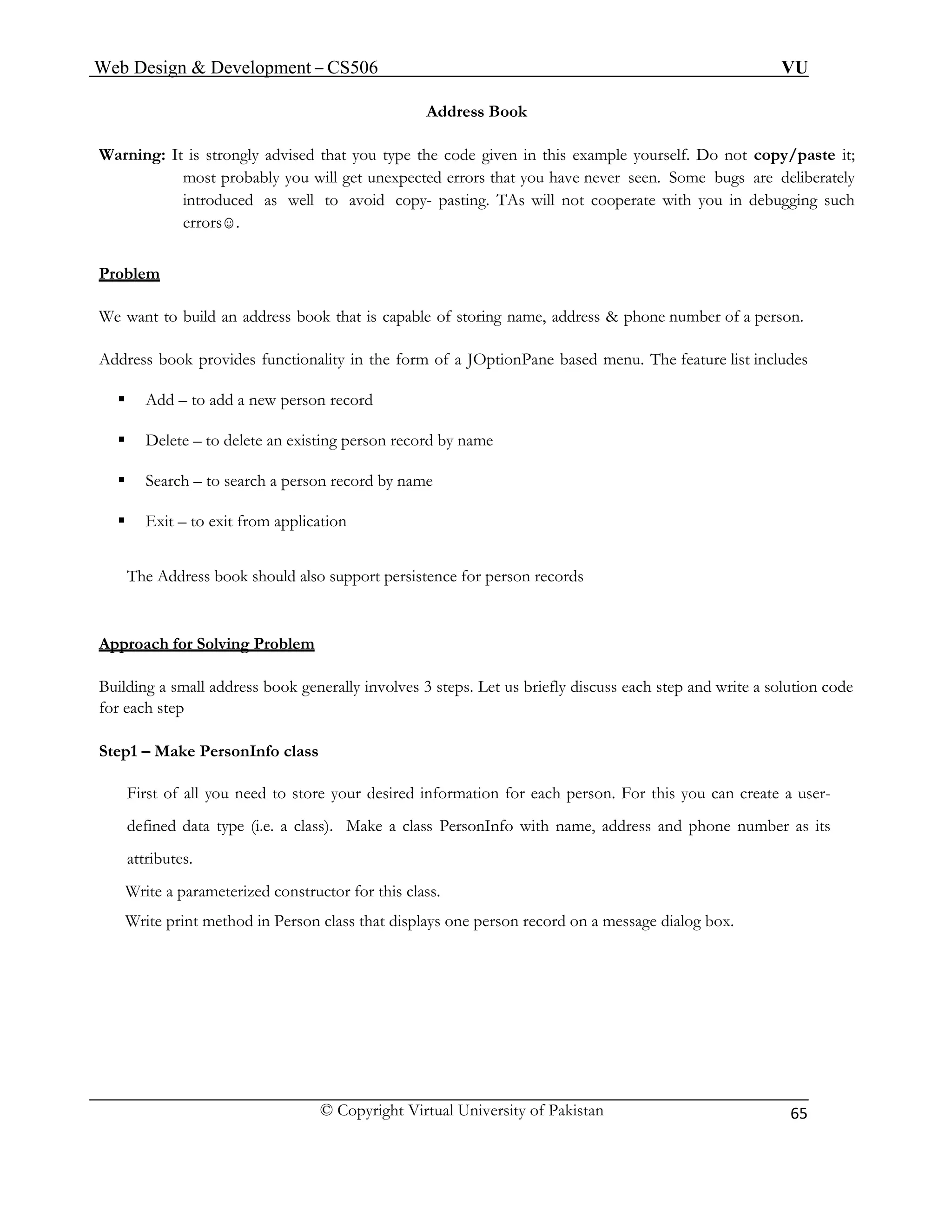
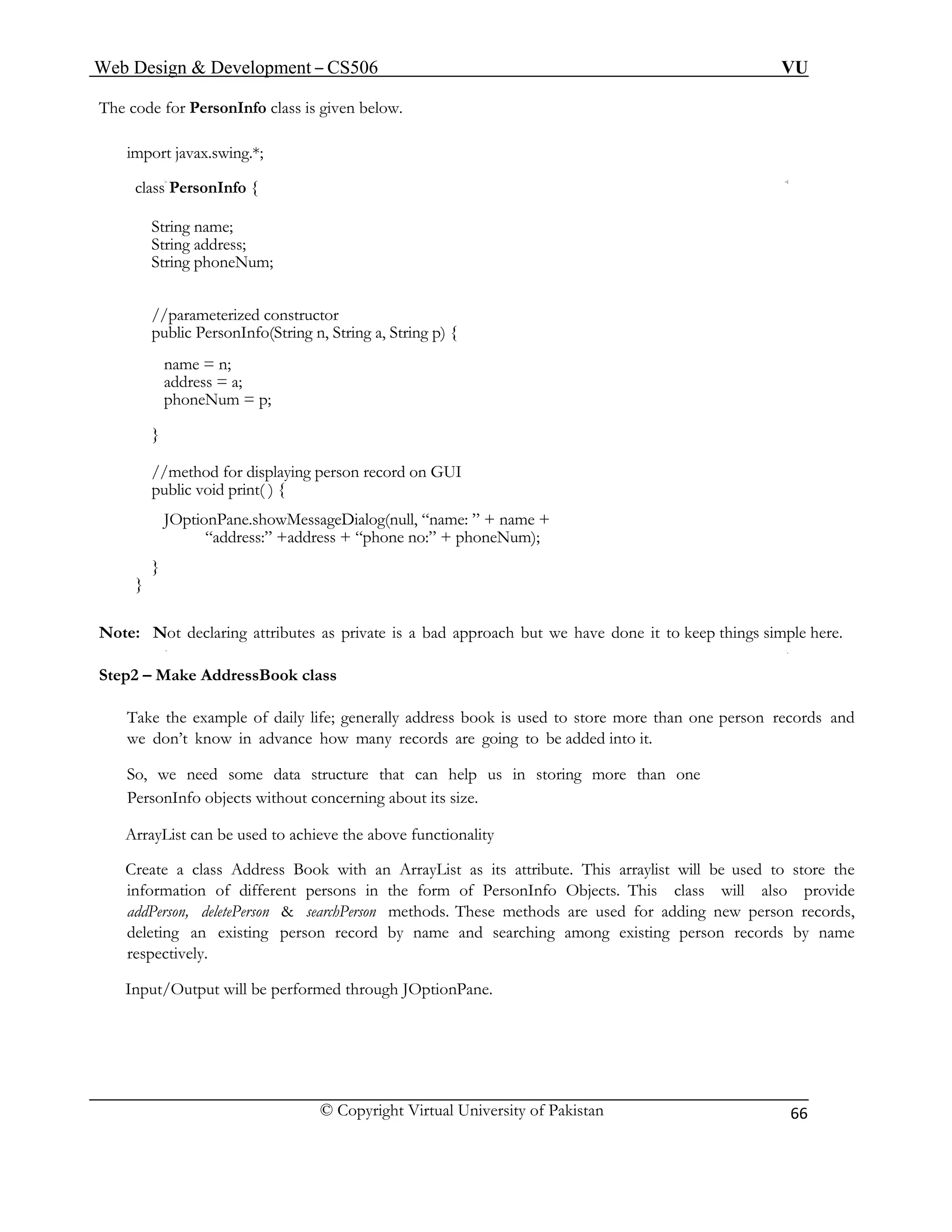
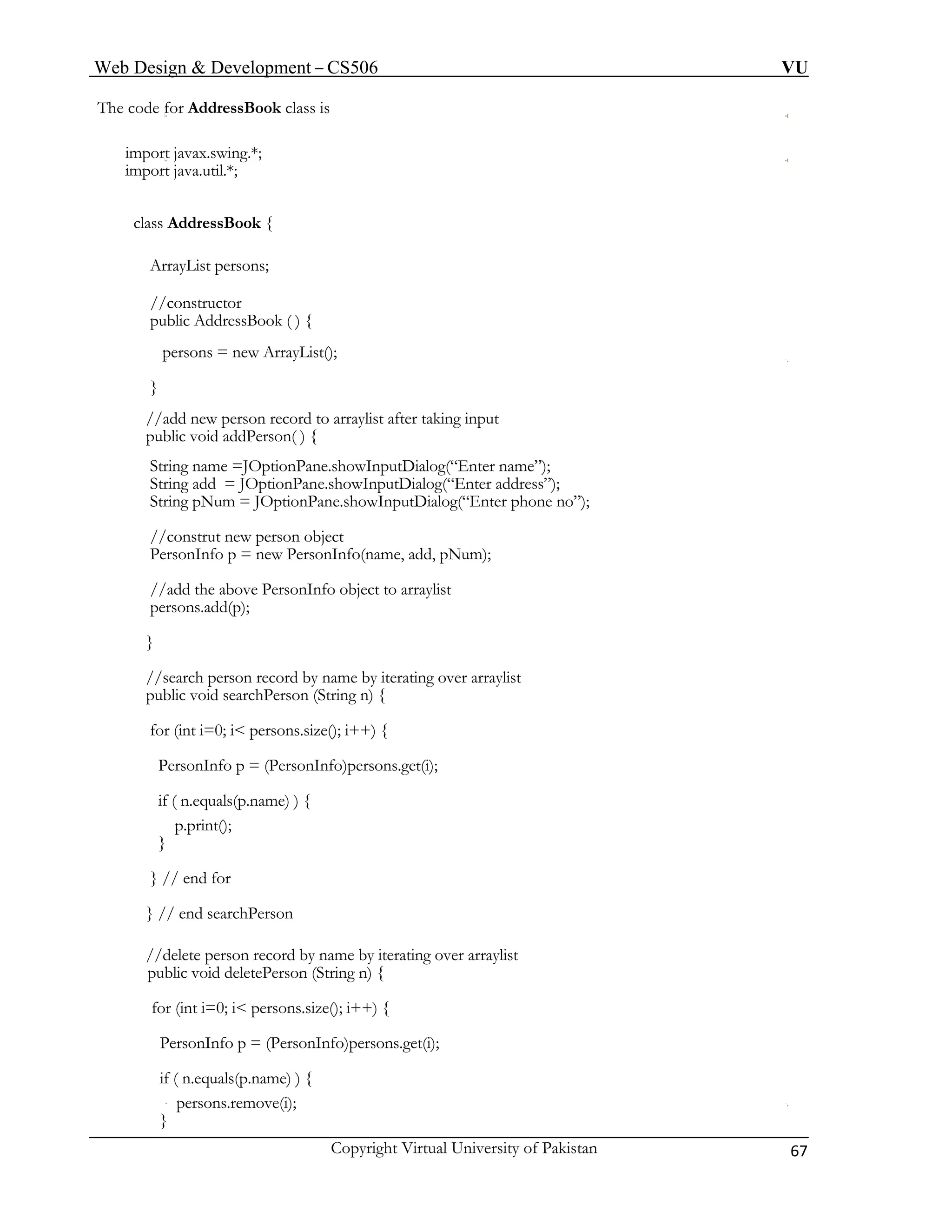
![Web Design & Development – CS506 VU
Copyright Virtual University of Pakistan 68
}
}
} // end class
The addperson method first takes input for name, address and phone number and than construct a PersonInfo object by using the recently taken input values. Then the newly constructed object is added to the arraylist – persons.
The searchPerson & deletePerson methods are using the same methodology i.e. first they search the required record by name and than prints his/her detail or delete the record permanently from the ArrayList.
Both the methods are taking string argument, by using this they can perform their search or delete operation. We used for loop for iterating the whole ArrayList. By using the size method of ArrayList, we can control our loop as ArrayList indexes range starts from 0 to one less than size.
Notice that, inside loop we retrieve each PersonInfo object by using down casting operation. After that we compare each PersonInfo object’s name by the one passed to these methods using equal method since Strings are always being compared using equal method.
Inside if block of searchPerson, print method is called using PersonInfo object that will display person information on GUI. On the other hand, inside if block of deletePerson method, remove method of ArrayList class is called that is used to delete record from persons i.e. ArrayList.
Step3 – Make Test class (driver program)
This class will contain a main method and an object of AddressBook class.
Build GUI based menu by using switch selection structure
Call appropriate methods of AddressBook class
The code for Test class is
import javax.swing.*;
class Test {
Public static void main (String args[]) {
AddressBook ab = new AddressBook();
String input, s;
int ch;
while (true) {
input = JOptionPane.showInputDialog(“Enter 1 to add ” +
“n Enter 2 to Search n Enter 3 to Delete“ +
“n Enter 4 to Exit”);](https://image.slidesharecdn.com/webdesignanddevelopment-cs506handouts-141110100145-conversion-gate01/75/Web-design-and-development-cs506-handouts-68-2048.jpg)
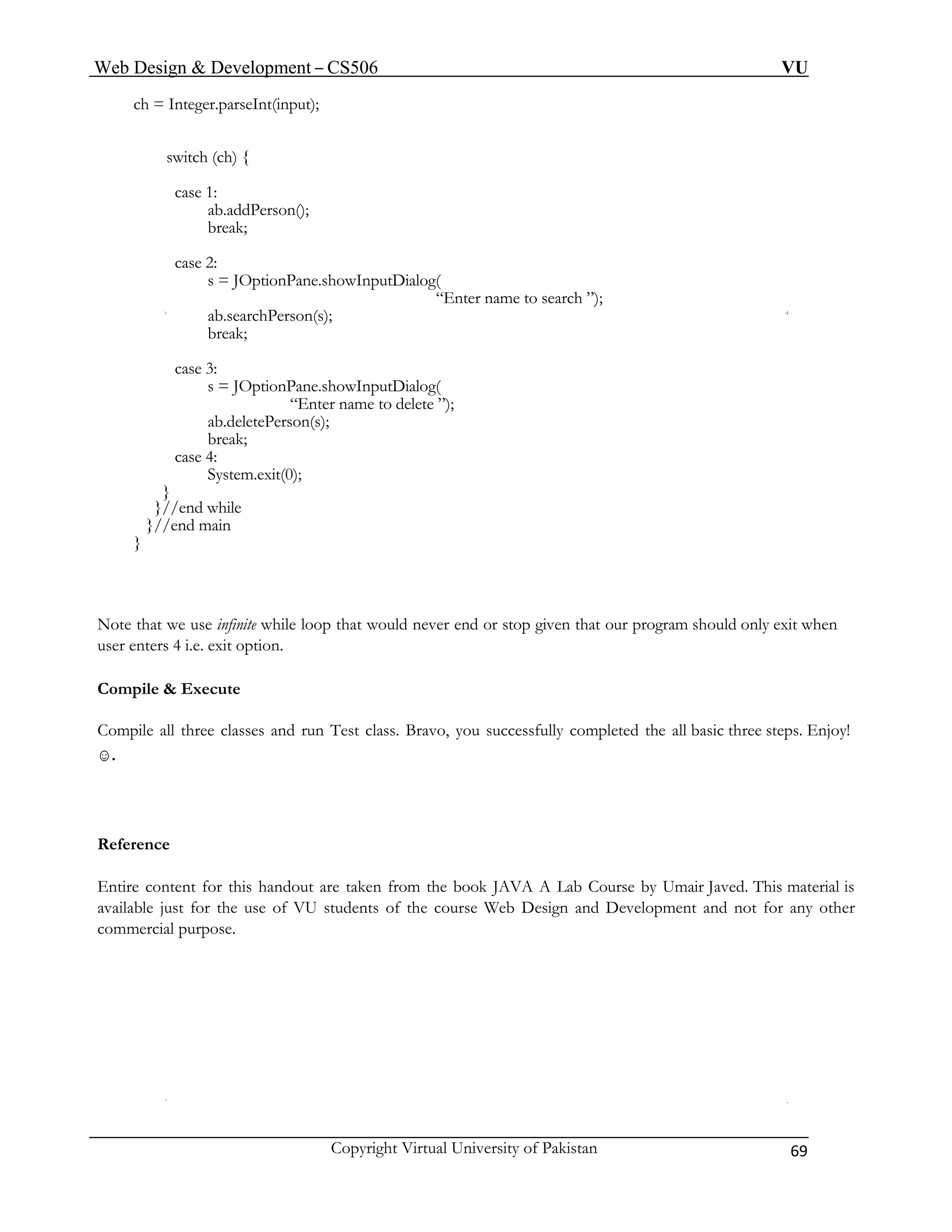
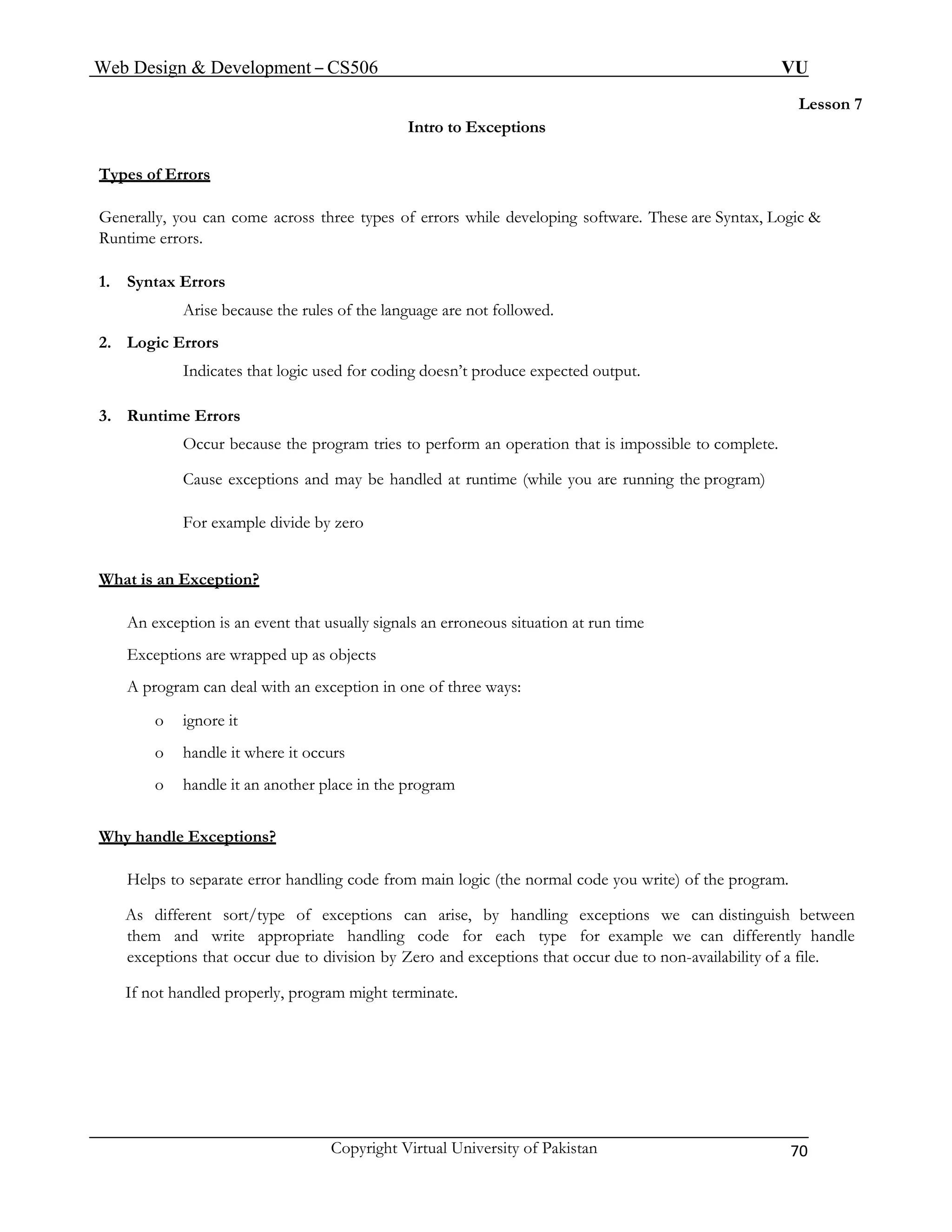
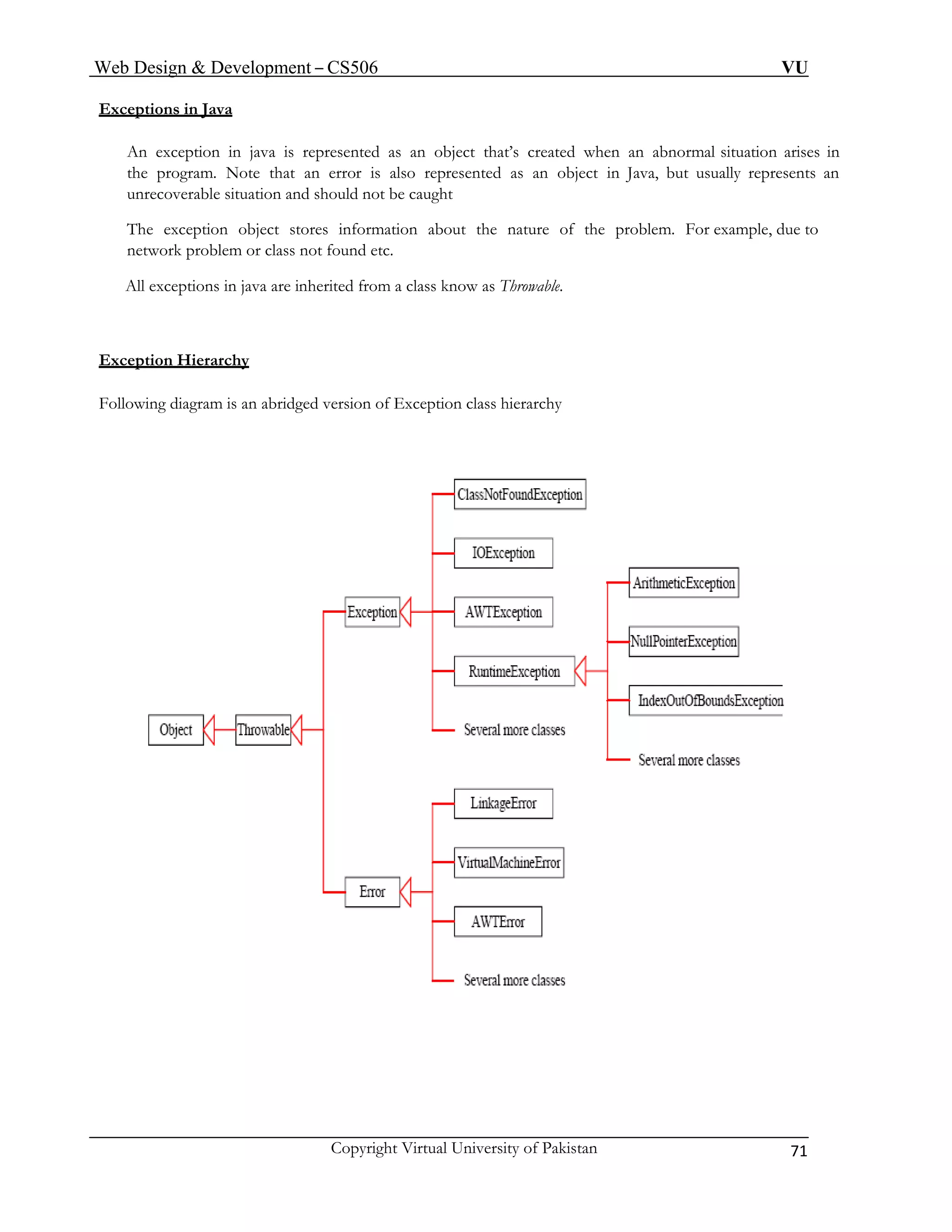
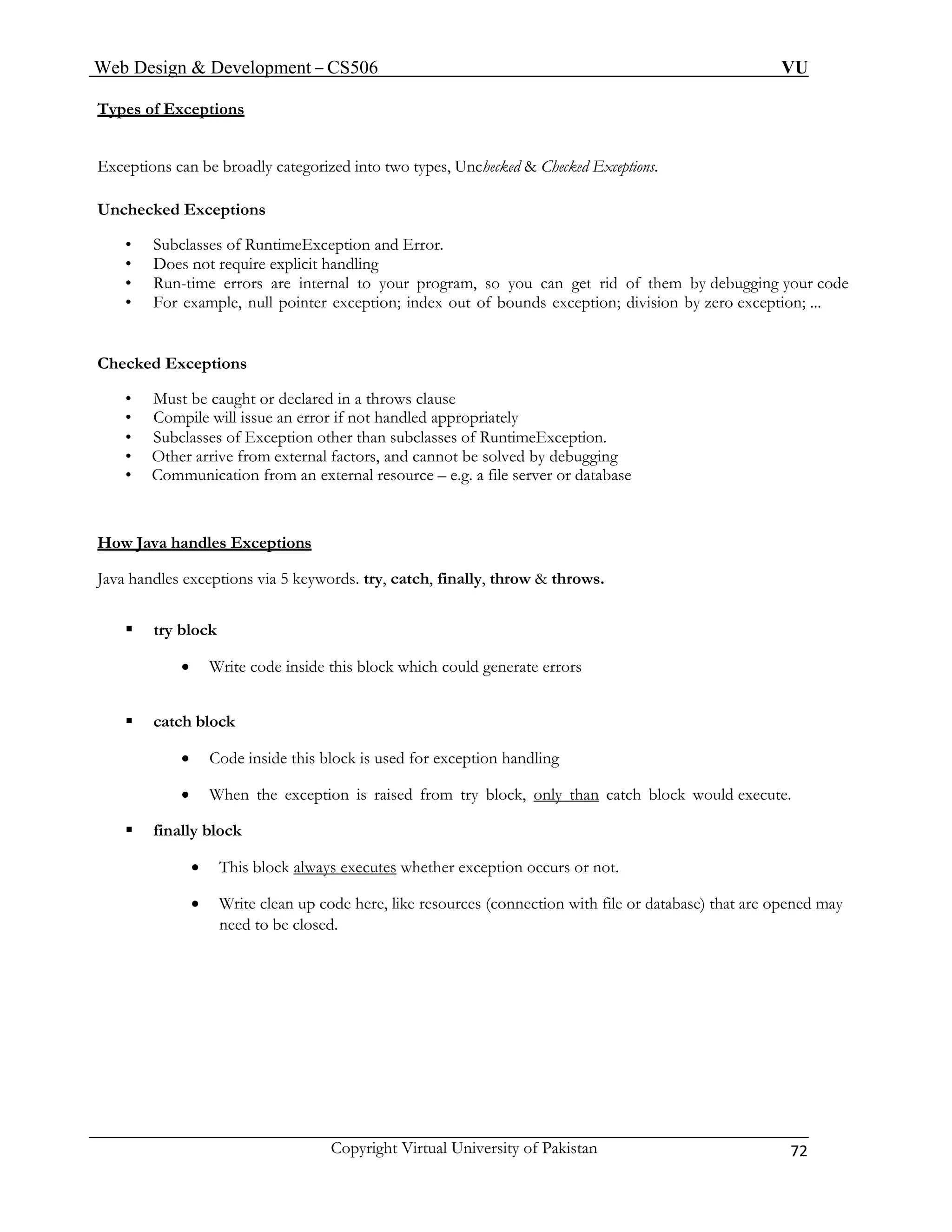
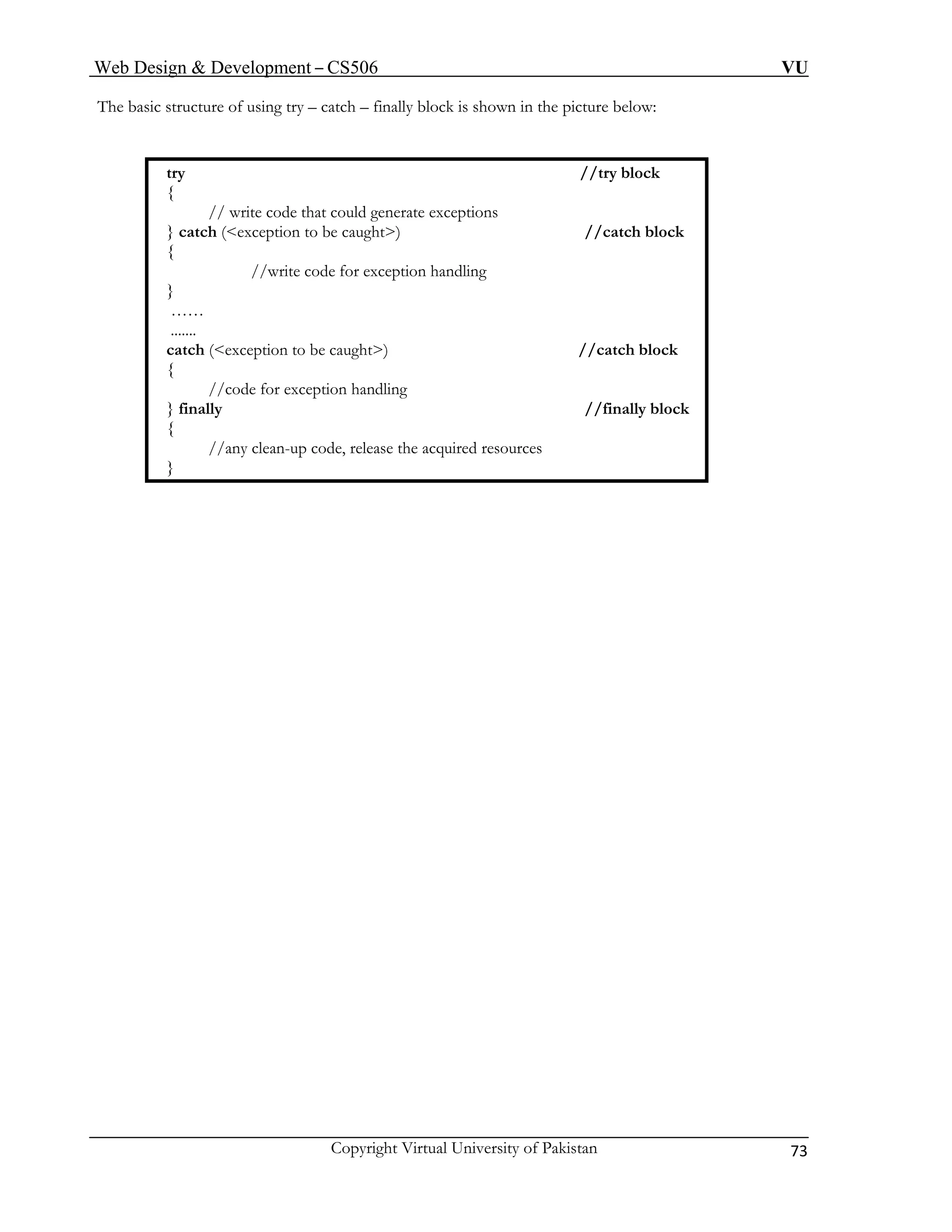
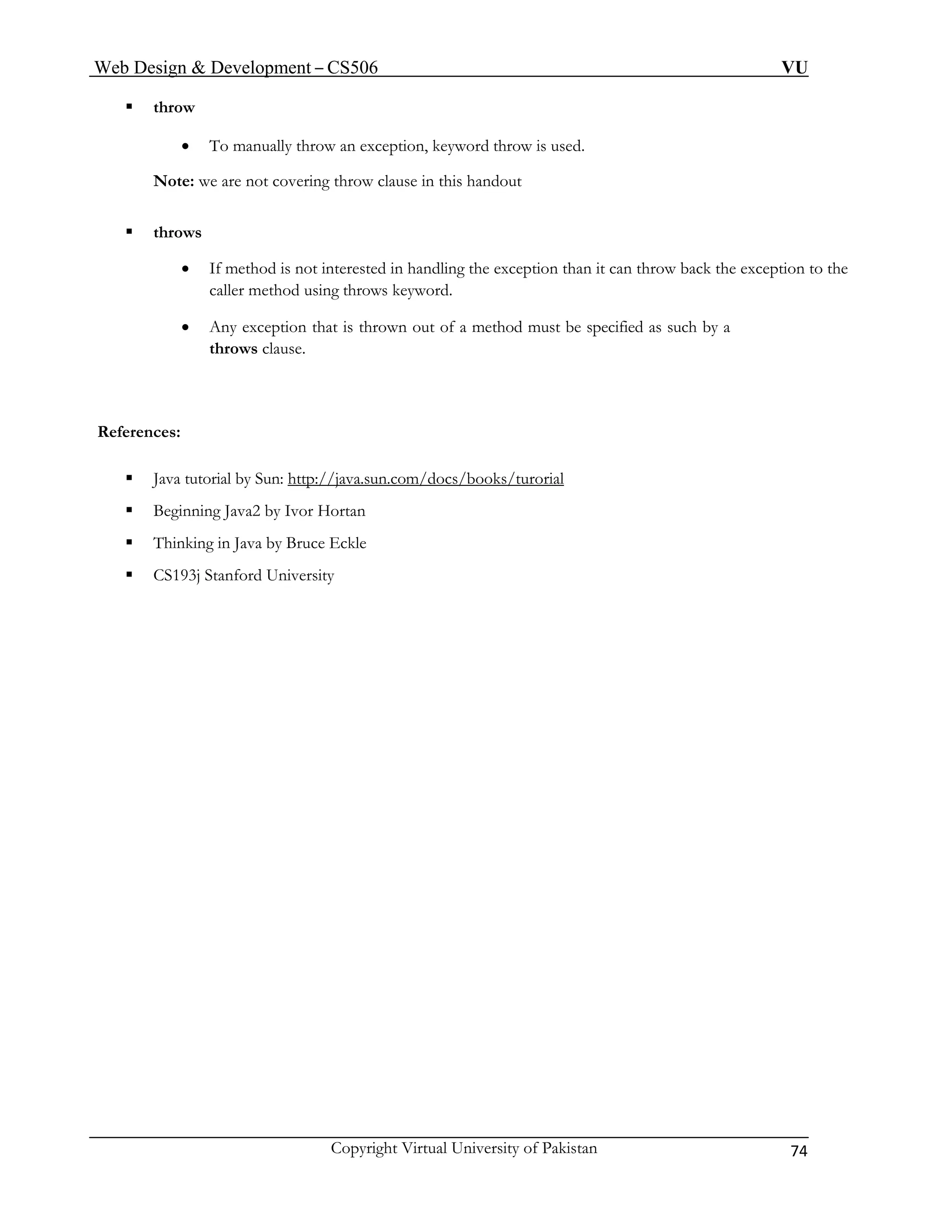
![Web Design & Development – CS506 VU
Copyright Virtual University of Pakistan 75
Code Examples of Exception Handling
Unchecked Exceptions
Example Code: UcException.java
The following program takes one command line argument and prints it on the console
// File UcException.java
public class UcException {
public static void main (String args[ ]) {
System.out.println(args[0]);
}
}
Compile & Execute
If we compile & execute the above program without passing any command line argument, an ArrayIndexOutOfBoundsException would be thrown. This is shown in the following picture
Since we have passed size of String args[ ] is zero, and we have tried to access the first
element (first element has index zero) of this array.
From the output window, you can find out, which code line causes the exception to be raised. In the above
example, it is
System.out.println(args[0]);
Why?
no argument, therefore the](https://image.slidesharecdn.com/webdesignanddevelopment-cs506handouts-141110100145-conversion-gate01/75/Web-design-and-development-cs506-handouts-75-2048.jpg)
![Web Design & Development – CS506 VU
Copyright Virtual University of Pakistan 76
Modify UcException.java
Though it is not mandatory to handle unchecked exceptions we can still handle
Unchecked Exceptions if we want to. These modifications are shown in bold.
// File UcException.java
public class UcException {
public static void main (String args[ ]) {
try {
System.out.println(args[0]);
catch (IndexOutOfBoundsExceptoin ex) {
System.out.println(“You forget to pass command line argument”);
}
}
The possible exception that can be thrown is IndexOutOfBoundsException, so we handle it in the catch block.
When an exception occurs, such as IndexOutOfBoundsException in this case, then an object of type IndexOutOfBoundesException is created and it is passed to the corresponding catch block (i.e. the catch block which is capable of handling this exception). The catch block receives the exception object inside a variable which is ex in this case. It can be any name; it is similar to the parameter declared in the method signature. It receives the object of exception type (IndexOutOfBoundsExceptoin) it is declared.
Compile & Execute
If we execute the modified program by passing command line argument, the program would display on console the provided argument. After that if we execute this program again without passing command line argument, this time information message would be displayed which is written inside catch block.](https://image.slidesharecdn.com/webdesignanddevelopment-cs506handouts-141110100145-conversion-gate01/75/Web-design-and-development-cs506-handouts-76-2048.jpg)
![Web Design & Development – CS506 VU
Copyright Virtual University of Pakistan 77
Checked Exceptions
Example Code: CException.java
The following program reads a line (hello world) from a file and prints it on the console. The File reading code is probably new for you. We’ll explain it in the coming handouts
(Streams). For now, assumed that the code written inside the main read one line from a file and prints that to console.
// File CException.java
import java.io.* ;
public class CException {
public static void main (String args[ ]) {
FileReader fr = new FileReader (“input.txt”);
BufferedReader br = new BufferedReader (fr);
//read the line form file
String line = br.readLine();
System.out.println(line);
}
}
Compile & Execute
If you try to compile this program, the program will not compile successfully and displays the message of unreported exception. This happens when there is code that can generate a checked exception but you have not handled that exception. Remember checked exceptions are detected by compiler. As we early discussed, without handling Checked exception, out program won’t compile.](https://image.slidesharecdn.com/webdesignanddevelopment-cs506handouts-141110100145-conversion-gate01/75/Web-design-and-development-cs506-handouts-77-2048.jpg)
![Web Design & Development – CS506 VU
Copyright Virtual University of Pakistan 78
Modify CException.java
As we have discussed earlier, it is mandatory to handle checked exceptions. In order to compile the code above, we modify the above program so that file reading code is placed inside a try block. The expected exception (IOException) that can be raised is caught in catch block.
// File CException.java
import java.io.* ;
public class CException {
public static void main (String args[ ]) {
try{
FileReader fr = new FileReader (“input.txt”);
BufferedReader br = new BufferedReader (fr);
//read the line form file
String line = br.readLine();
System.out.println(line);
catch( IOExceptoin ex) {
System.out.println(ex);
}
}
}
The code line written inside the catch block will print the exception name on the console if exception occurs
Compile & Execute
After making changes to your program, it would compile successfully. On executing this program, hello world would be displayed on the console
Note: Before executing, make sure that a text file named input.txt must be placed in the same directory where the program is saved. Also write hello world in that file before saving it.](https://image.slidesharecdn.com/webdesignanddevelopment-cs506handouts-141110100145-conversion-gate01/75/Web-design-and-development-cs506-handouts-78-2048.jpg)
![Web Design & Development – CS506 VU
Copyright Virtual University of Pakistan 79
The finally block
The finally block always executes regardless of exception is raised or not while as you remembered the catch block only executes when an exception is raised.
Exampel Code : FBlockDemo.java
// File FBlockDemo.java
import java.io.* ;
public class FBlockDemo {
public static void main (String args[ ]) {
try{
FileReader fr = new FileReader (“strings.txt”);
BufferedReader br = new BufferedReader (fr);
//read the line form file
String line = br.readLine();
System.out.println(line);
catch( IOExceptoin ex) {
System.out.println(ex);
}
finally {
System.out.println(“finally block always execute”);
}
}
}
Compile & Execute
The program above, will read one line from string.txt file. If string.tx is not present in the same directory the FileNotFoundException would be raised and catch block would execute as well as the finally block.
If string.txt is present there, no such exception would be raised but still finally block executes. This is shown
in the following output diagram](https://image.slidesharecdn.com/webdesignanddevelopment-cs506handouts-141110100145-conversion-gate01/75/Web-design-and-development-cs506-handouts-79-2048.jpg)
![Web Design & Development – CS506 VU
Copyright Virtual University of Pakistan 80
Mul
tiple catch blocks
•
Possible to have multiple catch clau ses for a single try statement
• Evaluated in the order of the code
– tion hierarchy when writing multiple catch clauses!
– t and then IOException, the IOException will never be caught!
Exam
The f ing program would read a number form a file numbers.txt and than prints its square on the console
g args[ ]) {
try{
tion
ers.txt”);
BufferedReader br = new BufferedReader (fr);
String s = br.readLine();
//may throws NumberFormatException, if s is not a no.
number);
toin nfEx) {
catch( FileNotFoundExceptoin fnfEx) {
– Essentially checking for different types of exceptions that may happen
Bear in mind the Excep
If you catch Exception firs
ple code: MCatchDemo.java
ollow
// File MCatchDemo.java
import java.io.* ;
public class MCatchDemo {
public static void main (Strin
// can throw FileNotFound or IOExcep
FileReader fr = new FileReader (“numb
//read the number form file
int number = Integer.parseInt(s);
System.out.println(number *
catch( NumberFormatExcep
System.out.println(nfEx);
}](https://image.slidesharecdn.com/webdesignanddevelopment-cs506handouts-141110100145-conversion-gate01/75/Web-design-and-development-cs506-handouts-80-2048.jpg)
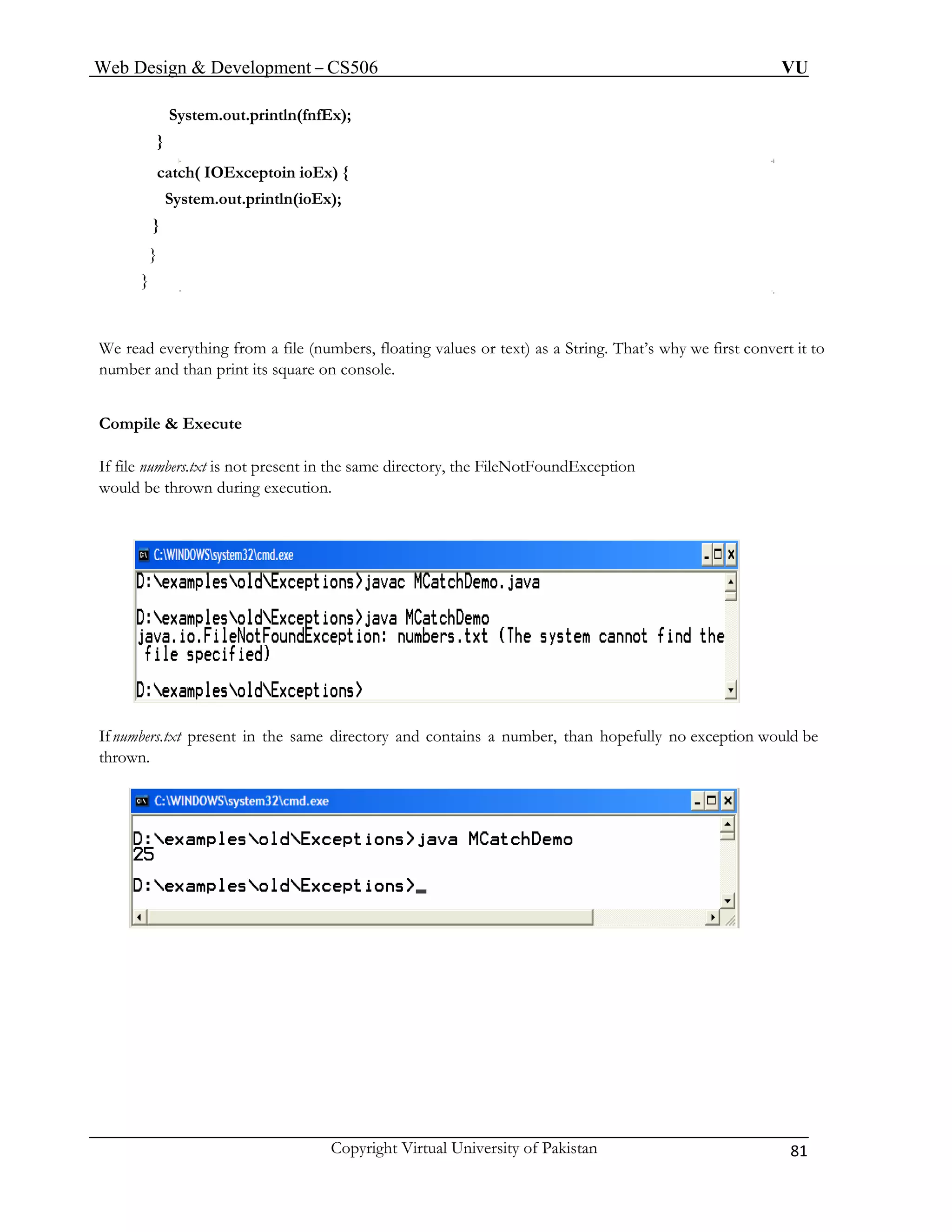
![Web Design & Development – CS506 VU
© Copyright Virtual University of Pakistan
82
The throws clause
The following code examples will introduce you with writing & using throws clause.
Example Code: ThrowsDemo.java
The ThrowsDemo.java contains two methods namely method1 & method2 and one main method. The main method will make call to method1 and than method1 will call method2. The method2 contains the file reading code. The program looks like one given below
// File ThrowsDemo.java
import java.io.* ;
public class ThrowsDemo {
// contains file reading code
public static void method2( ) {
try{
FileReader fr = new FileReader (“strings.txt”);
BufferedReader br = new BufferedReader (fr);
//read the line form file
String s = br.readLine();
System.out.println(s);
catch( IOExceptoin ioEx) {
ioEx.printStackTrace();
}
}// end method 2
//only calling method2
public static void method1( ) {
method2();
}
public static void main (String args[ ]) {
ThrowsDemo.method1();
}
}](https://image.slidesharecdn.com/webdesignanddevelopment-cs506handouts-141110100145-conversion-gate01/75/Web-design-and-development-cs506-handouts-82-2048.jpg)
![Web Design & Development – CS506 VU
© Copyright Virtual University of Pakistan
83
printStackTrace method
Defined in the Throwable class – superclass of Exception & Error classes
Shows you the full method calling history with line numbers.
Extremely useful in debugging
Modify: ThrowsDemo.java
Let method2 doesn’t want to handle exception by itself, so it throws the exception to the caller of method2 i.e. method1
So method1 either have to handle the incoming exception or it can re-throw it to its caller i.e. main.
Let method1 is handling the exception, so method1& method2 would be modified as:
// File ThrowsDemo.java
import java.io.* ;
public class ThrowsDemo {
// contains file reading code
public static void method2( ) throws IOEception{
FileReader fr = new FileReader (“strings.txt”);
BufferedReader br = new BufferedReader (fr);
//read the line form file
String s = br.readLine();
System.out.println(s);
}// end method 2
// calling method2 & handling incoming exception
public static void method1( ) {
try {
method2();
catch (IOException ioEx) {
ioEx.printStackTrace();
}
}
public static void main (String args[ ]) {
ThrowsDemo.method1();
}
}](https://image.slidesharecdn.com/webdesignanddevelopment-cs506handouts-141110100145-conversion-gate01/75/Web-design-and-development-cs506-handouts-83-2048.jpg)
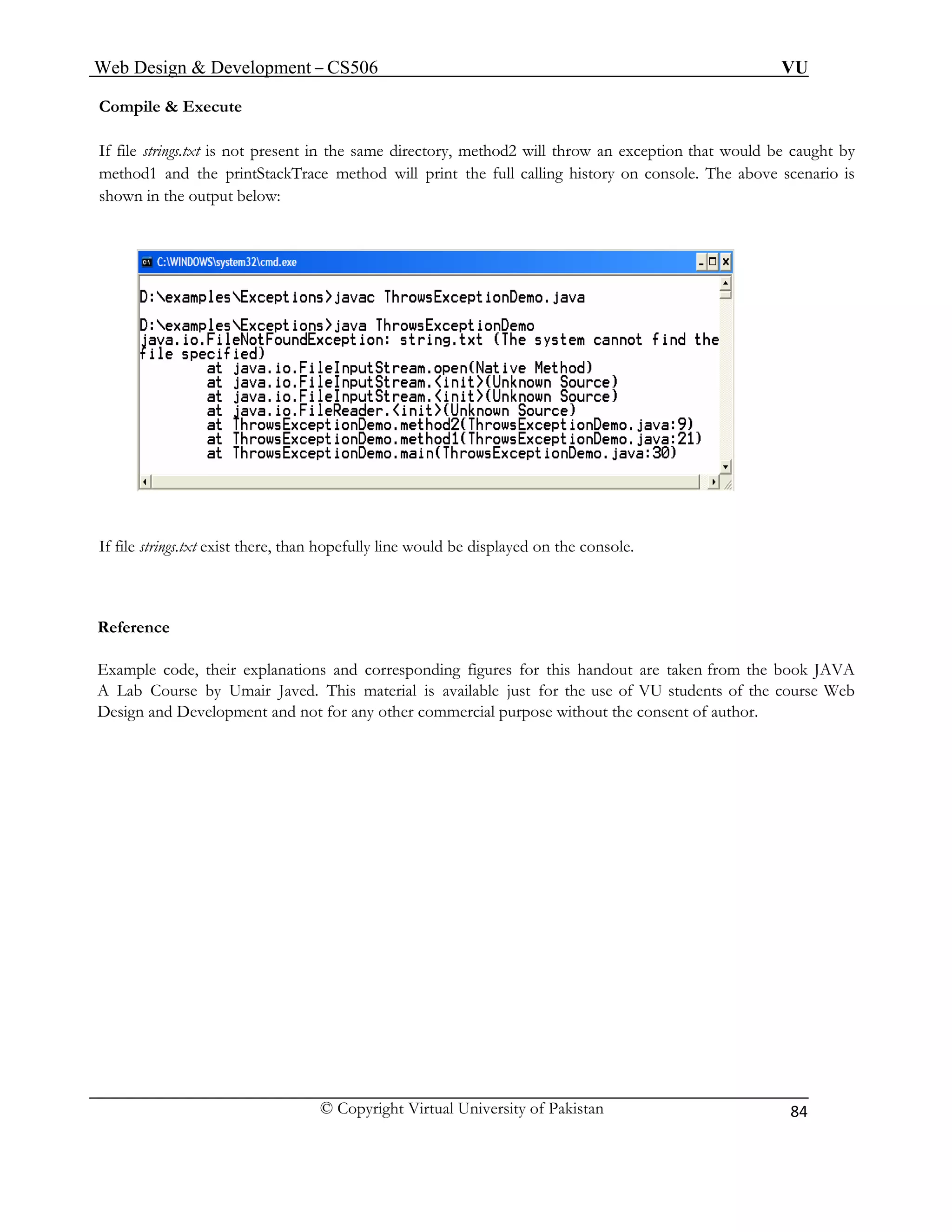
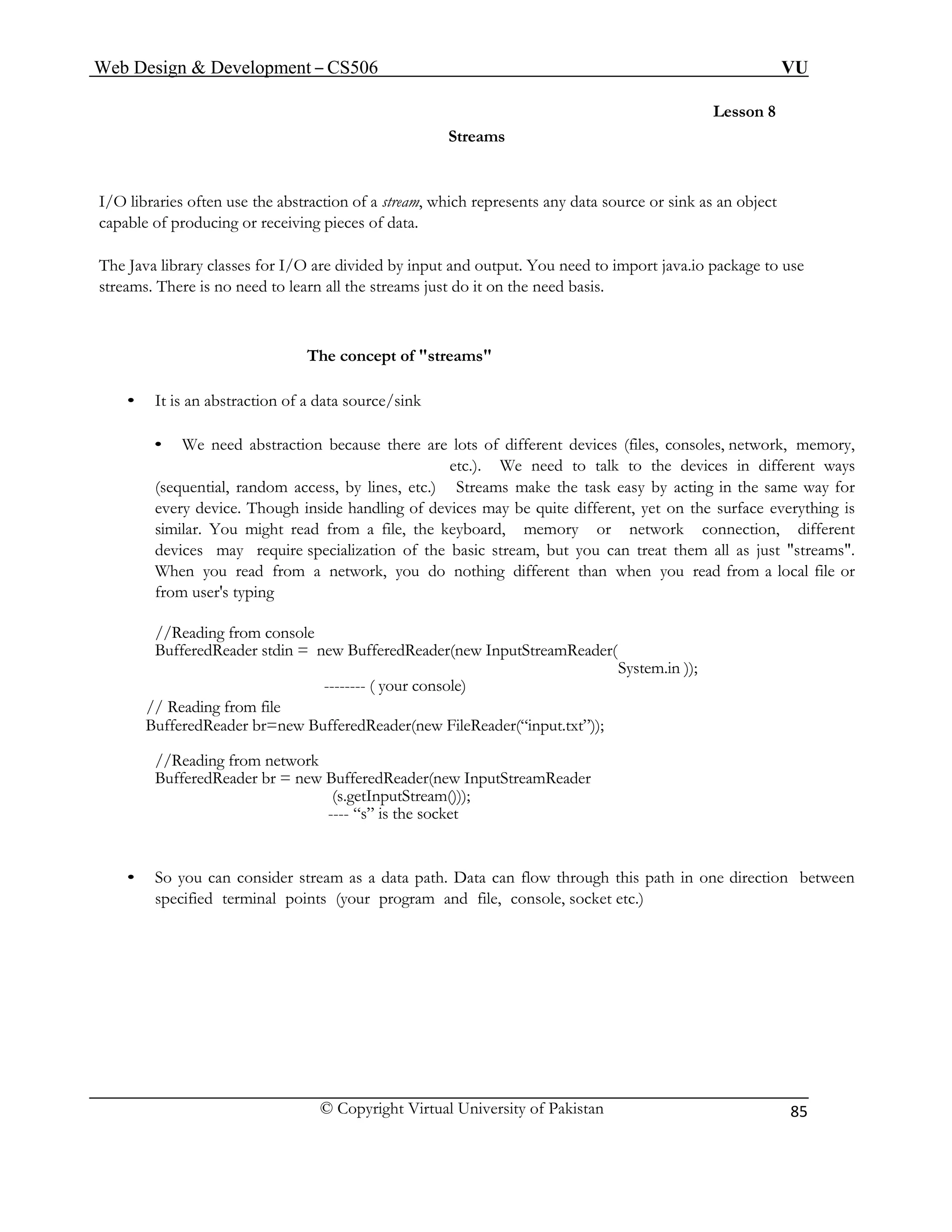
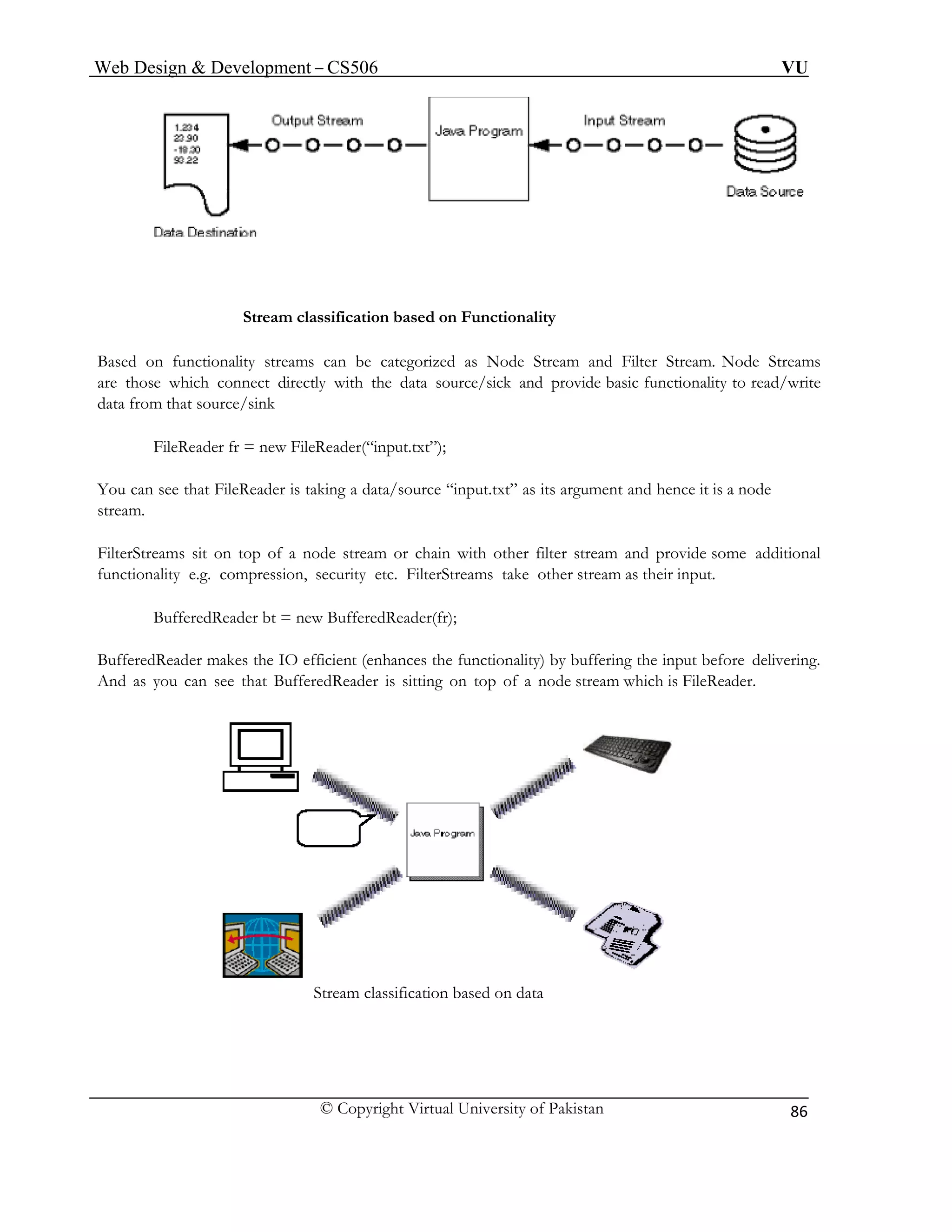
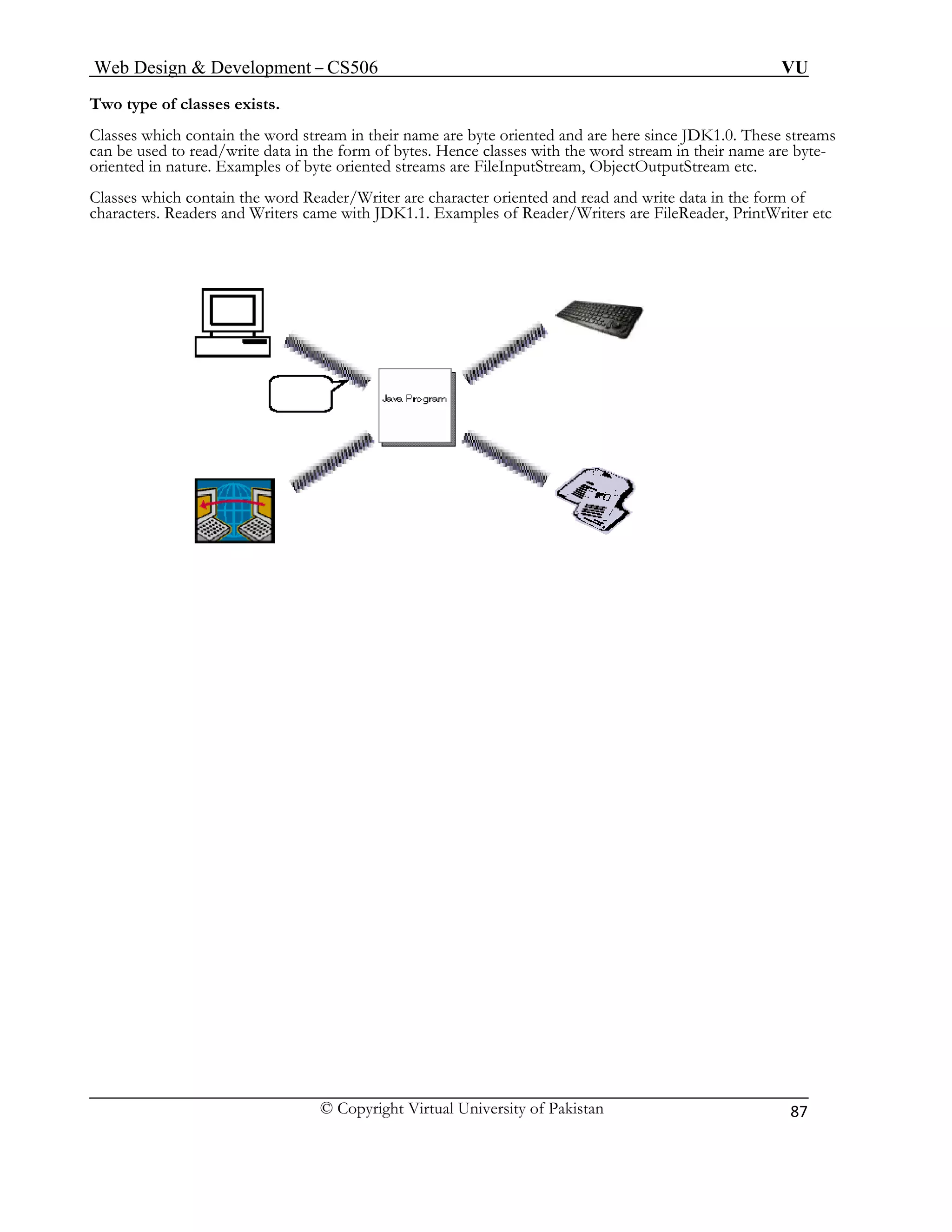
![Web Design & Development – CS506 VU
© Copyright Virtual University of Pakistan
88
Example Code 8.1: Reading from File
The ReadFileEx.java reads text file line by line and prints them on console. Before we move on to the code, first create a text file (input.txt) using notepad and write following text lines inside it.
Hello World
Text File: input.txt
Pakistan is our homeland
Web Design and Development
// File ReadFileEx.java
import java.io.*;
public class ReadFileEx {
public static void main (String args[ ]) {
FileReader fr = null;
BufferedReader br = null;
try {
// attaching node stream with data source
fr = new FileReader(“input.txt”);
// attatching filter stream over node stream
br = new BufferedReader(fr);
// reading first line from file
String line = br.readLine();
// printing and reading remaining lines
while (line != null){
System.out.println(line);
line = br.readLine();
}
// closing streams
br.close();
fr.close();
}catch(IOException ioex){
System.out.println(ioex);
}
} // end main
} // end class](https://image.slidesharecdn.com/webdesignanddevelopment-cs506handouts-141110100145-conversion-gate01/75/Web-design-and-development-cs506-handouts-88-2048.jpg)
![Web Design & Development – CS506 VU
© Copyright Virtual University of Pakistan
89
Example Code 8.2: Writing to File
The WriteFileEx.java writes the strings into the text file named “output.txt”. If
“output.txt” file does not exist, the java will create it for you.
// File WriteFileEx.java
import java.io.*;
public class WriteFileEx {
public static void main (String args[ ]) {
FileWriter fw = null;
PrintWriter pw = null;
try {
// attaching node stream with data source
// if file does not exist, it automatically creates it
fw = new FileWriter (“output.txt”);
// attatching filter stream over node stream
pw = new PrintWriter(fw);
String s1 = “Hello World”;
String s2 = “Web Design and Development”;
// writing first string to file
pw.println(s1);
// writing second string to file
pw.println(s2);
// flushing stream
pw.flush();
// closing streams
pw.close();
fw.close();
}catch(IOException ioex){
System.out.println(ioex);
}
} // end main
} // end class
After executing the program, check the output.txt file. Two lines will be written there.
Reference
Example code, their explanations and corresponding figures for this handout are taken from the book JAVA A Lab Course by Umair Javed. This material is available just for the use of VU students of the course Web Design and Development and not for any other commercial purpose without the consent of author.](https://image.slidesharecdn.com/webdesignanddevelopment-cs506handouts-141110100145-conversion-gate01/75/Web-design-and-development-cs506-handouts-89-2048.jpg)
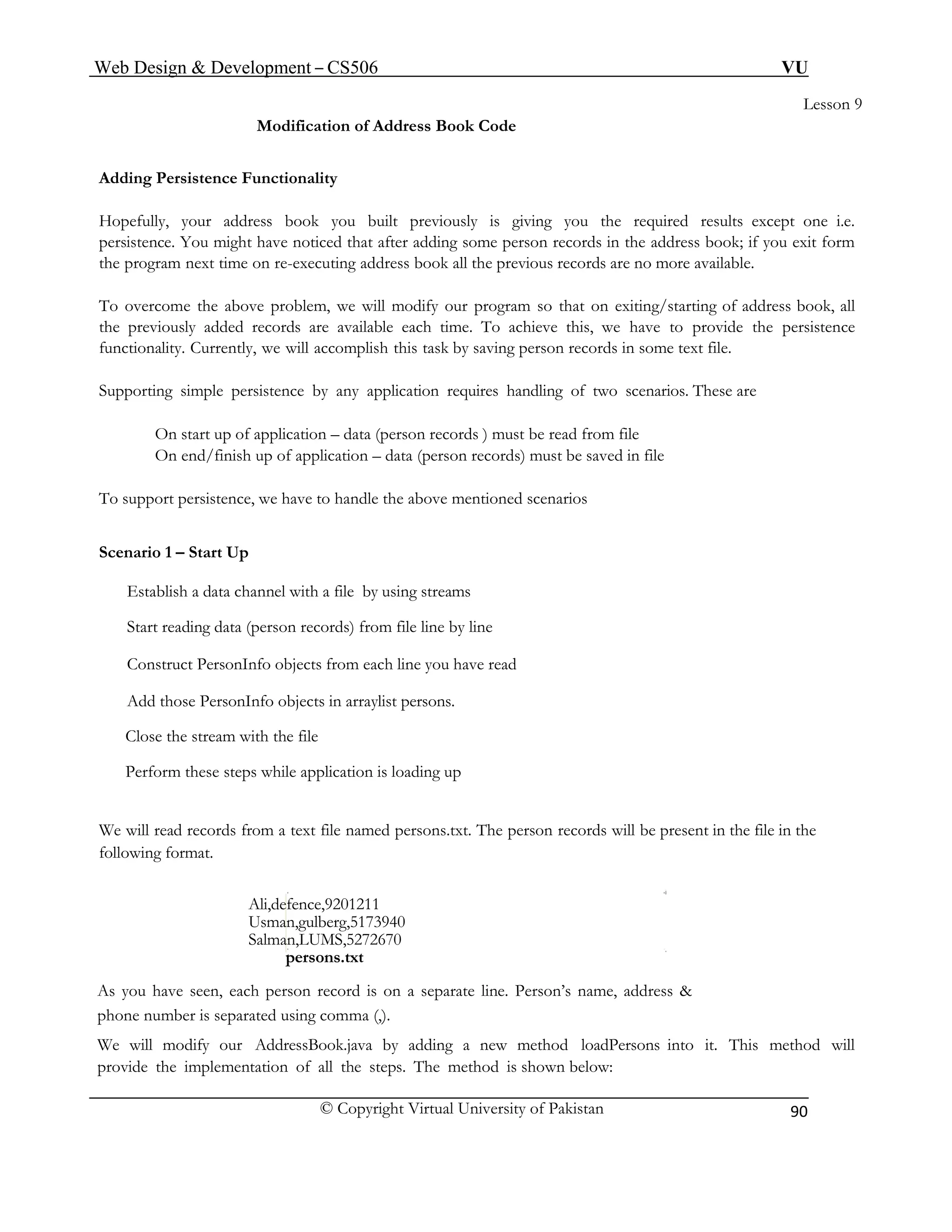
![Web Design & Development – CS506 VU
© Copyright Virtual University of Pakistan
91
public void loadPersons ( ){
String tokens[] = null;
String name, add, ph;
try {
FileReader fr = new FileReader("persons.txt");
BufferedReader br = new BufferedReader(fr);
String line = br.readLine();
while ( line != null ) {
tokens = line.split(",");
name = tokens[0];
add = tokens[1];
ph = tokens[2];
PersonInfo p = new PersonInfo(name, add, ph);
persons.add(p);
line = br.readLine();
}
br.close();
fr.close();
}catch(IOException ioEx){
System.out.println(ioEx);
}
}
First, we have to connect with the text file in order to read line by line person records from it. This task is accomplished with the following lines of code
FileReader fr = new FileReader(“persons.txt”); BufferedReader br = new BufferedReader(fr);
FileReader is a character based (node) stream that helps us in reading data in the form of characters. As we are using streams, so we have to import the java.io package in the AddressBook class.
We passed the file name persons.txt to the constructor of the FileReader.
Next we add BufferedReader (filter stream) on top of the FileReader because BufferedReader facilitates reading data line by line. (As you can recall from the lecture that filter streams are attached on top of node streams). That’s why the constructor of BufferedReader is receiving the fr – the FileReader object.
The next line of code will read line from file by using readLine( ) method of
BufferedReader and save it in a string variable called line.
String line = br.readLine( );](https://image.slidesharecdn.com/webdesignanddevelopment-cs506handouts-141110100145-conversion-gate01/75/Web-design-and-development-cs506-handouts-91-2048.jpg)
![Web Design & Development – CS506 VU
© Copyright Virtual University of Pakistan
92
After that while loop starts. The condition of while loop is used to check whether the file is reached to end (returns null) or not. This loop is used to read whole file till the end. When end comes (null), this loop will finish.
while (line != null)
Inside loop, the first step we performed is tokenizing the string. For this purpose, we have used split method of String class. This method returns substrings (tokens) according to the regular expression or delimiter passed to it.
tokens = line.split(“,”);
The return type of this method is array of strings that’s why we have declared tokens as a String array in the beginning of this method as
String tokens[];
For example, the line contains the following string
Ali,defence,9201211
Now by calling split(“,”) method on this string, this method will return back three substrings ali defence and 9201211 because the delimiter we have passed to it is comma. The delimiter itself is not included in the substrings or tokens.
The next three lines of code are simple assignments statements. The tokens[0] contains the name of the person because the name is always in the beginning of the line, tokens[1] contains address of the person and tokens[2] contains the phone number of the person.
name = tokens[0];
add = tokens[1];
ph = tokens[2];
The name, add and ph are of type String and are declared in the beginning of this method.
After that we have constructed the object of PersonInfo class by using parameterized constructor and passed all these strings to it.
PersonInfo p = new PersonInfo(name, add, ph);
Afterward the PersonInfo object’s p is added to the arraylist i.e. persons. persons.add(p);
The last step we have done inside loop is that we have again read a line form the file by using the readLine() method.](https://image.slidesharecdn.com/webdesignanddevelopment-cs506handouts-141110100145-conversion-gate01/75/Web-design-and-development-cs506-handouts-92-2048.jpg)
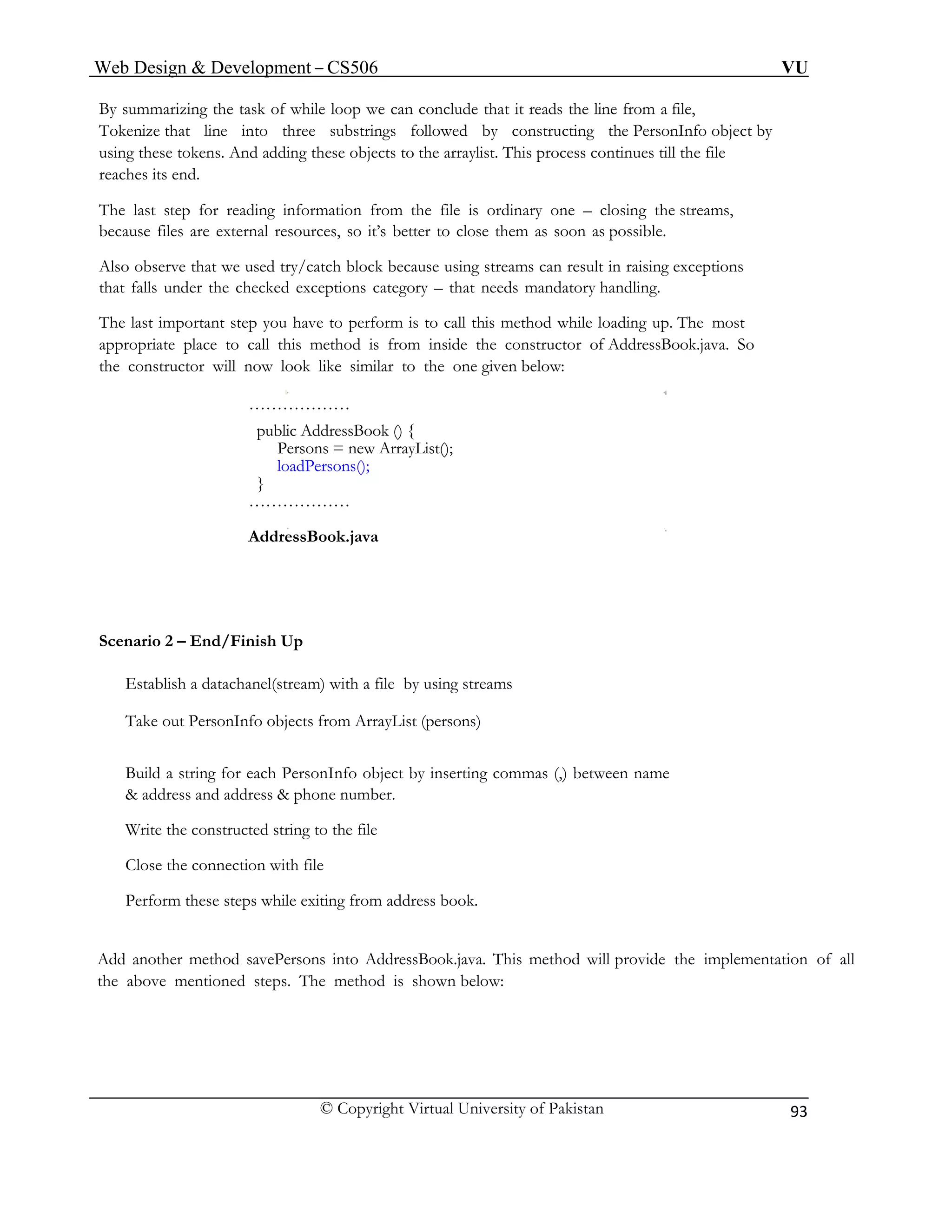
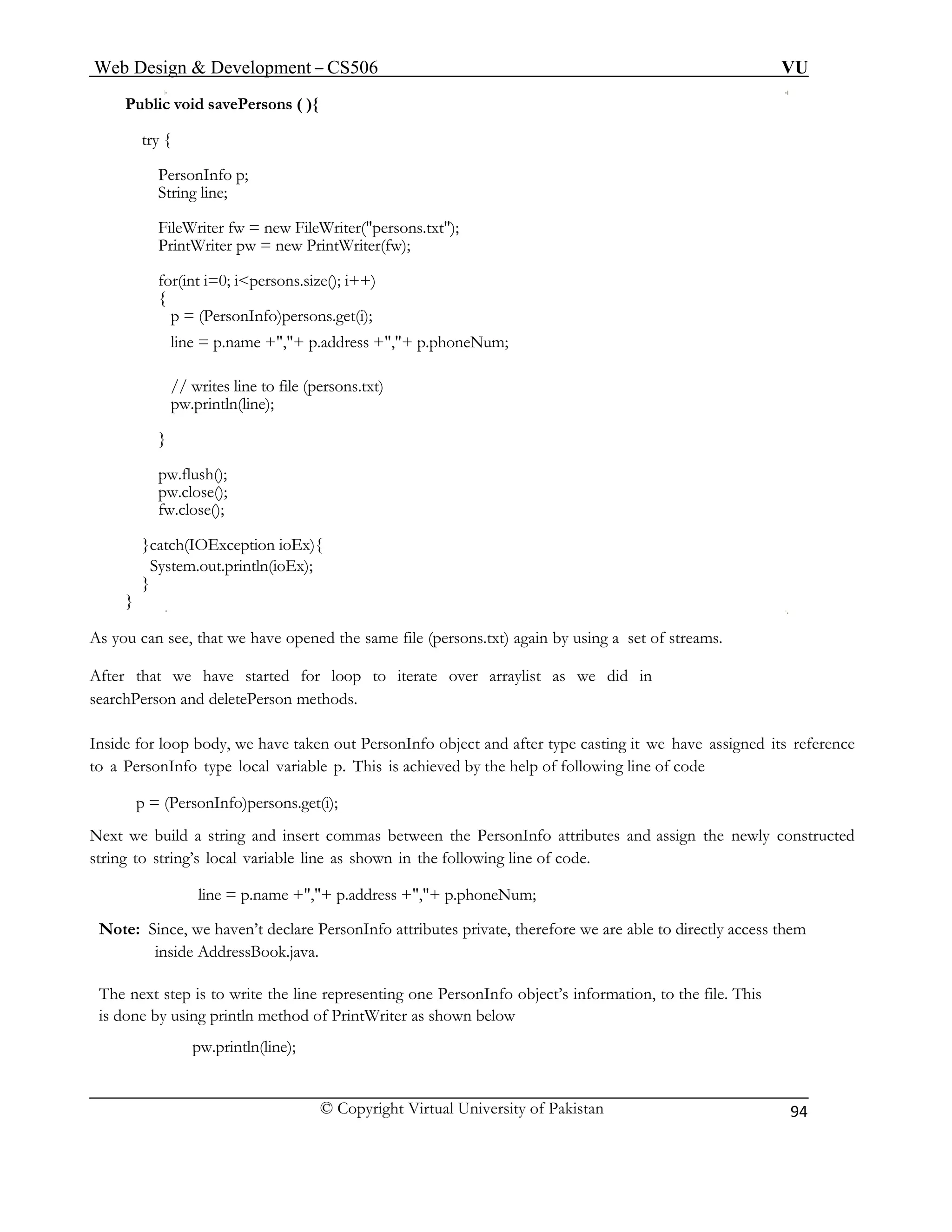
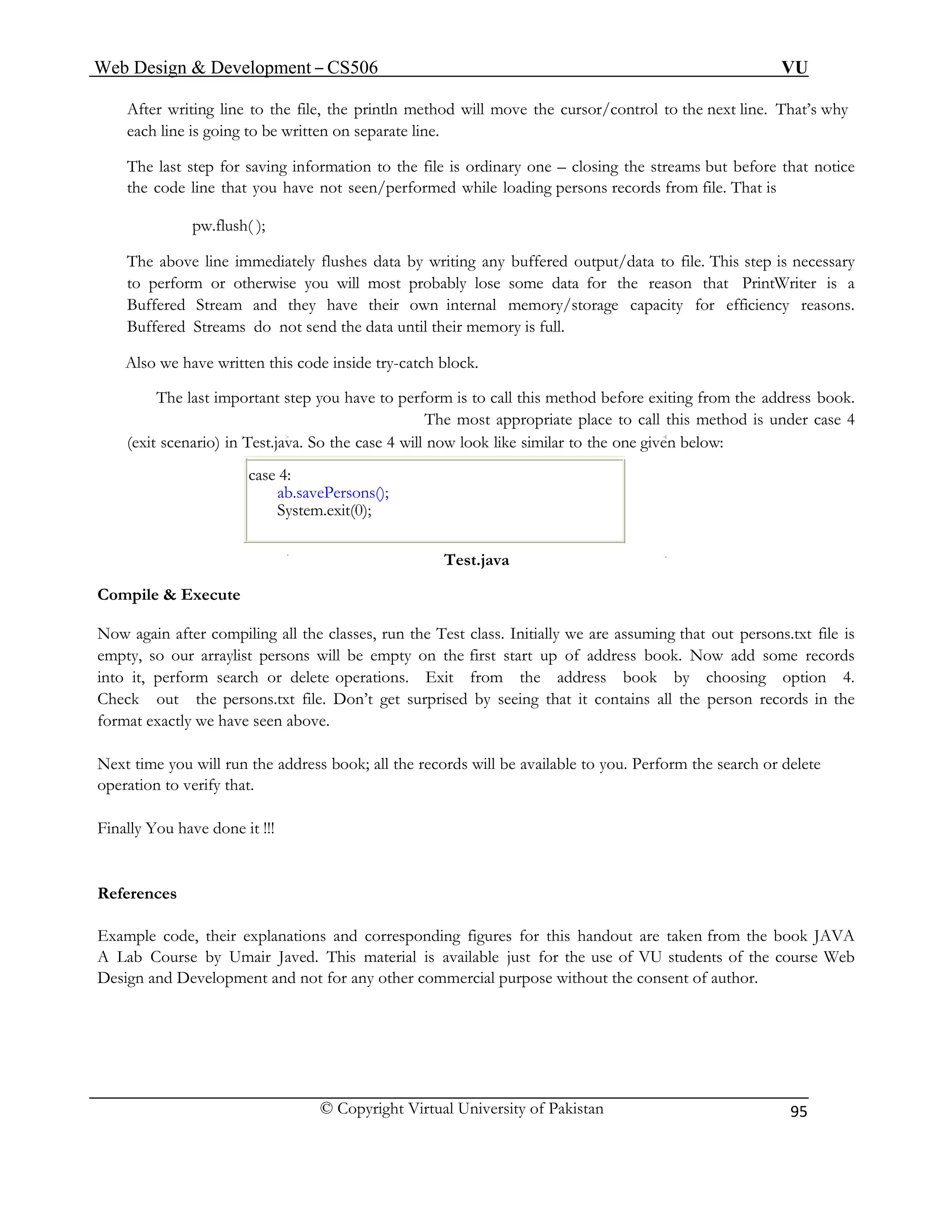
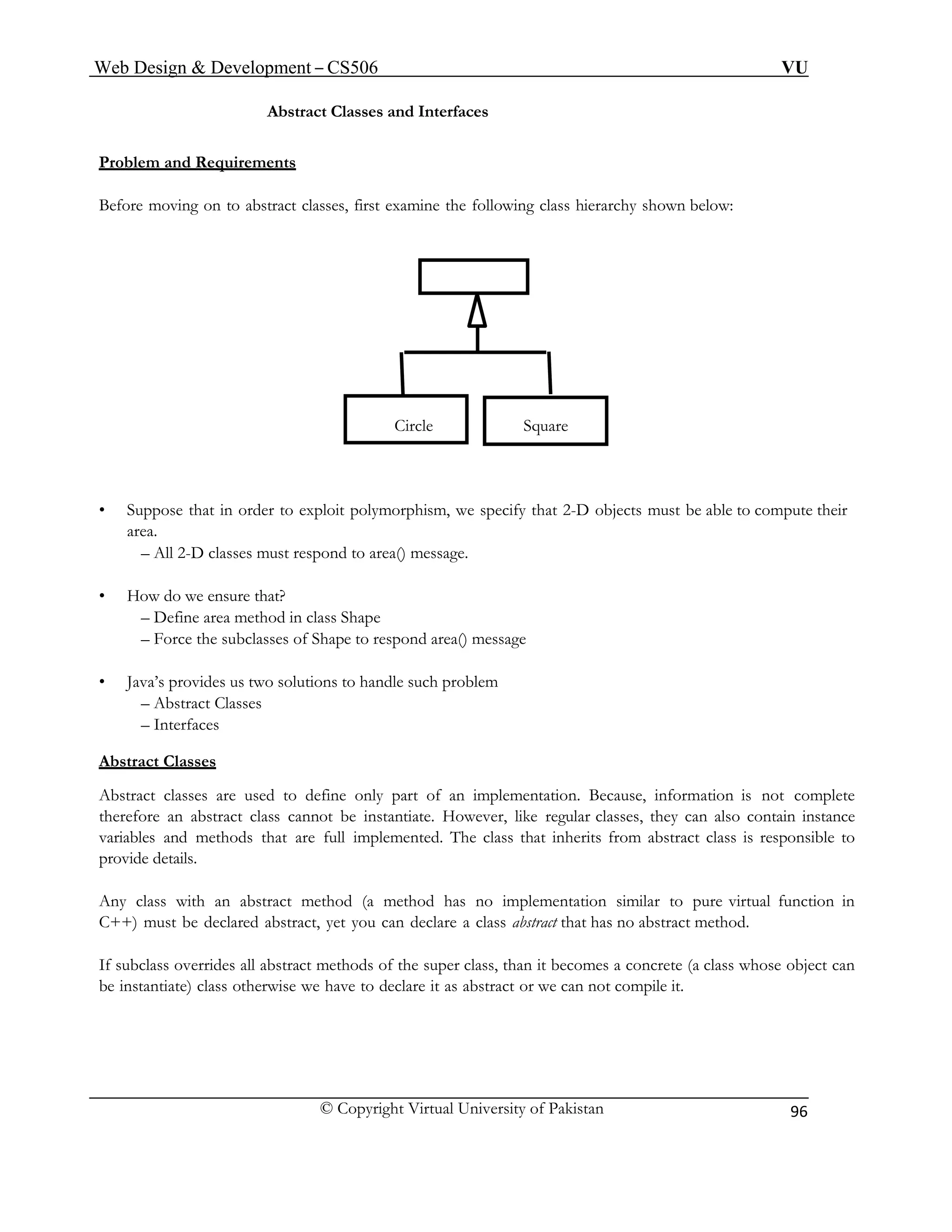
![Web Design & Development – CS506 VU
© Copyright Virtual University of Pakistan 97
The most important aspect of abstract class is that reference of an abstract class can point to the object of concrete classes.
Code Example of Abstract Classes
The Shape class contains an abstract method calculateArea() with no definition.
public abstract class Shape{
public abstract void calculateArea();
}
Class Circle extends from abstract Shape class, therefore to become concrete class it must provides the definition of calculateArea() method.
public class Circle extends Shape {
private int x, y;
private int radius;
public Circle() {
x = 5;
y = 5;
radius = 10;
}
// providing definition of abstract method
public void calculateArea () {
double area = 3.14 * (radius * radius);
System.out.println(“Area: ” + area);
}
}//end of class
The Test class contains main method. Inside main, a reference s of abstract Shape class is created. This reference can point to Circle (subclass of abstract class Shape) class object as it is a concrete class. With the help of reference, method calculateArea() can be invoked of Circle class. This is all shown in the form of code below
public class Test {
public static void main(String args[]){
//can only create references of A.C.
Shape s = null;
//Shape s1 = new Shape(); //cannot instantiate
//abstract class reference can point to concrete subclass
s = new Circle();
s.calculateArea();
}
}//end of class
The compilation and execution of the above program is shown below:](https://image.slidesharecdn.com/webdesignanddevelopment-cs506handouts-141110100145-conversion-gate01/75/Web-design-and-development-cs506-handouts-97-2048.jpg)

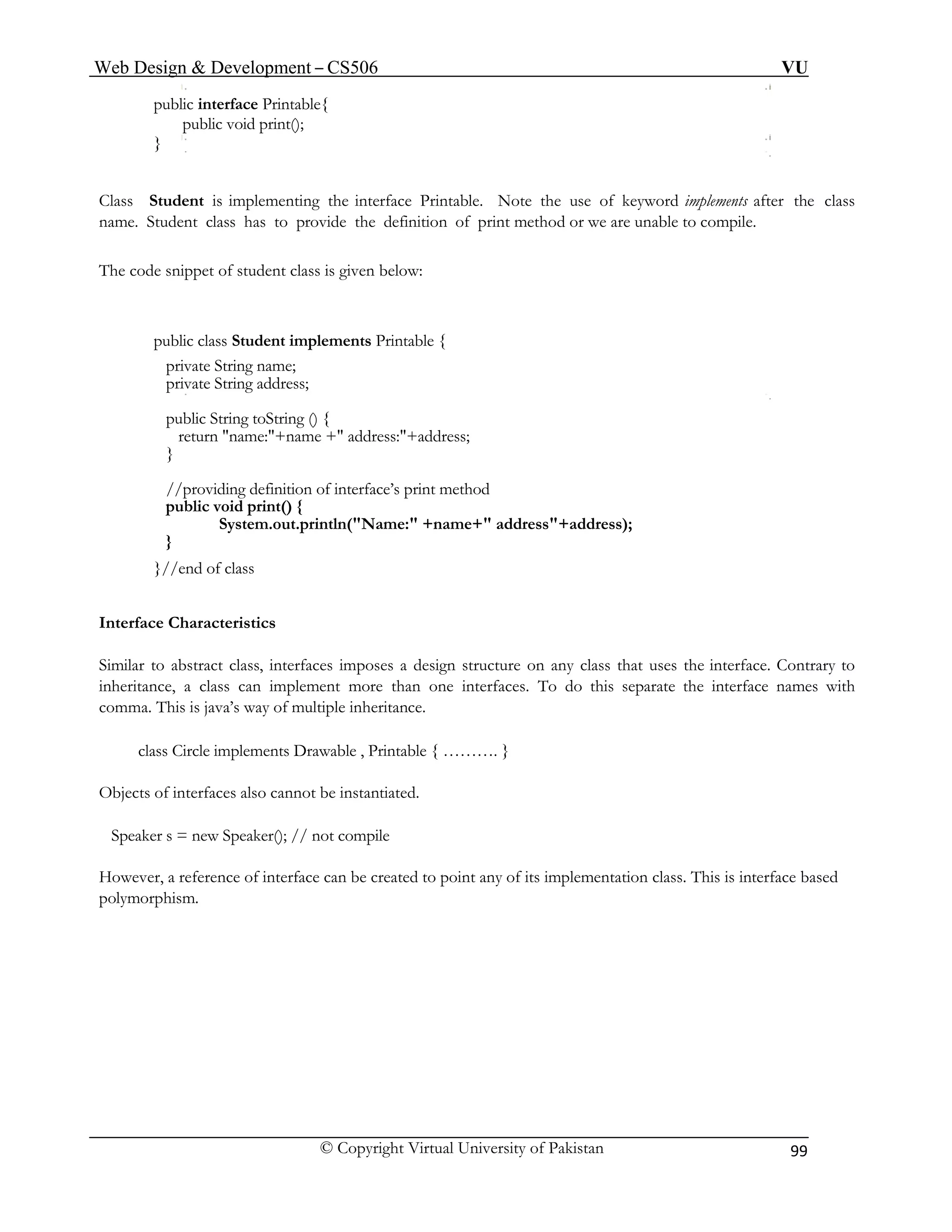
![Web Design & Development – CS506 VU
© Copyright Virtual University of Pakistan 100
Code Example: Interface based polymorphism
Interface Speaker is implemented by three classes Politician, Coach and Lecturer. Code snippets of all these three classes are show below:
public class Politician implements Speaker{
public void speak(){
System.out.println(“Politics Talks”);
}
}
public class Coach implements Speaker{
public void speak(){
System.out.println(“Sports Talks”);
}
}
public class Lecturer implements Speaker{
public void speak(){
System.out.println(“Web Design and Development Talks”);
}
}
As usual, Test class contains main method. Inside main, a reference sp is created of Speaker class. Later, this reference is used to point to the objects of Politician, Coach and Lecturer class. On calling speak method with the help of sp, will invoke the method of a class to which sp is pointing.
public class Test{
public static void main (String args[ ]) {
Speaker sp = null;
System.out.println("sp pointing to Politician");
sp = new Politician();
sp.speak();
System.out.println("sp pointing to Coach");
sp = new Coach();
sp.speak();
System.out.println("sp pointing to Lecturer");
sp = new Lecturer();
sp.speak();
}
}](https://image.slidesharecdn.com/webdesignanddevelopment-cs506handouts-141110100145-conversion-gate01/75/Web-design-and-development-cs506-handouts-100-2048.jpg)
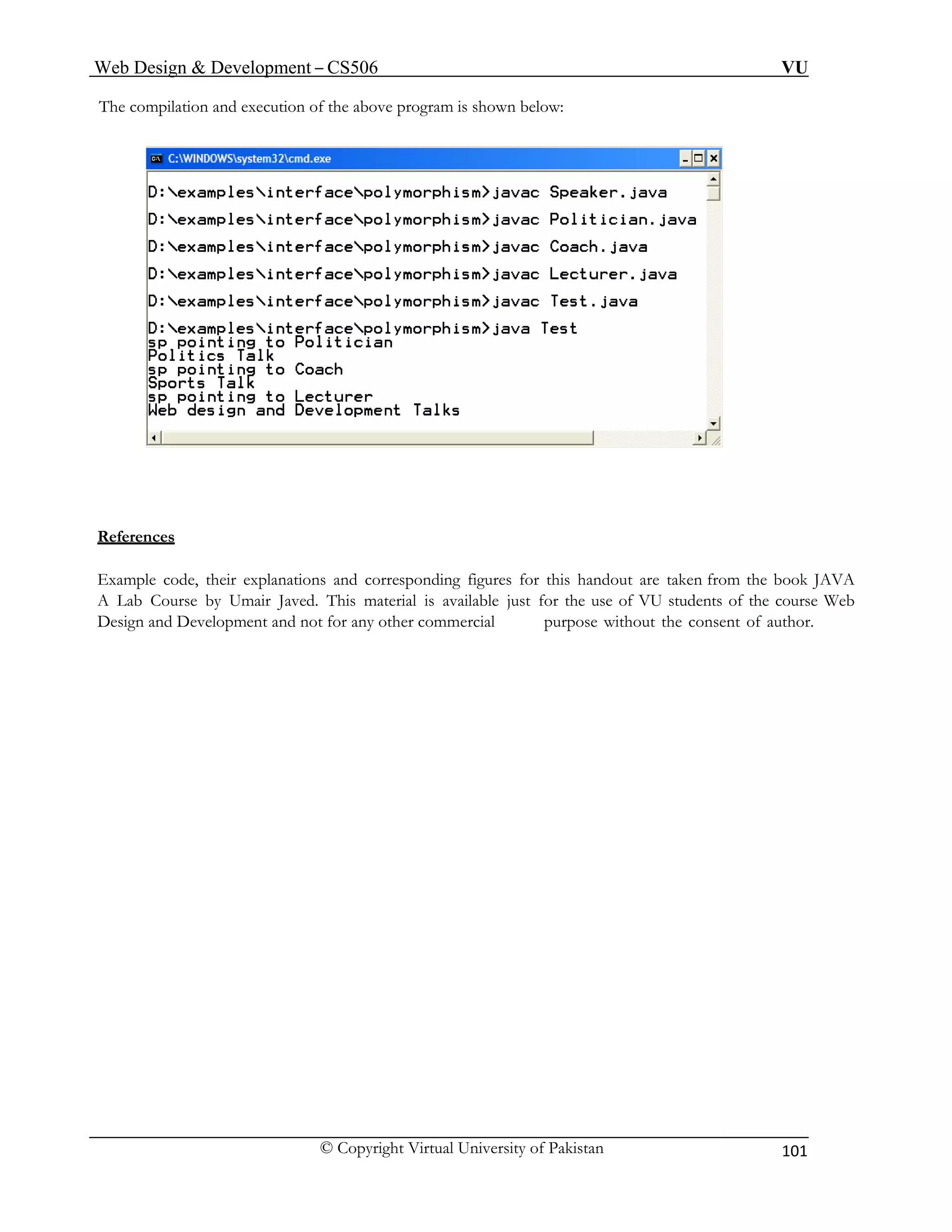
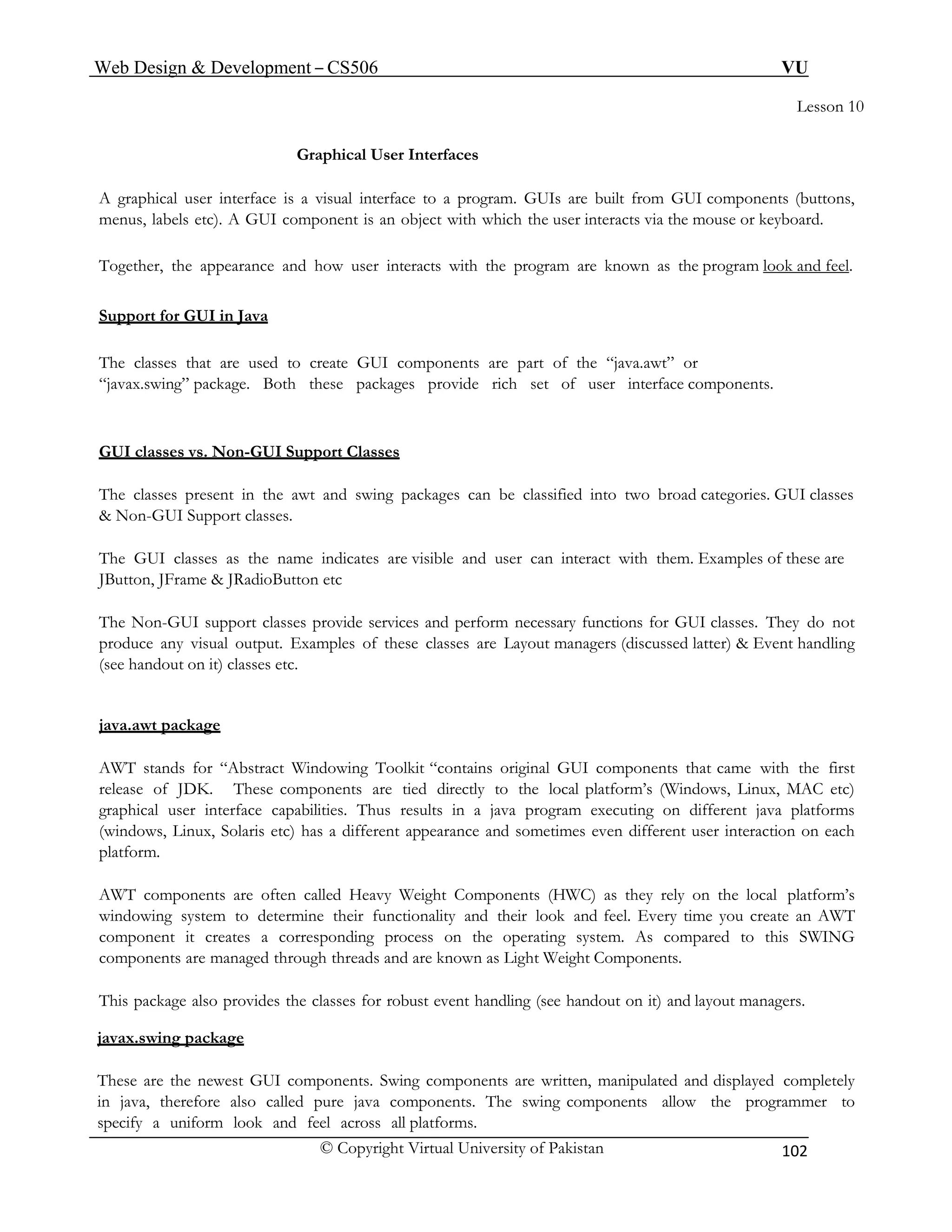
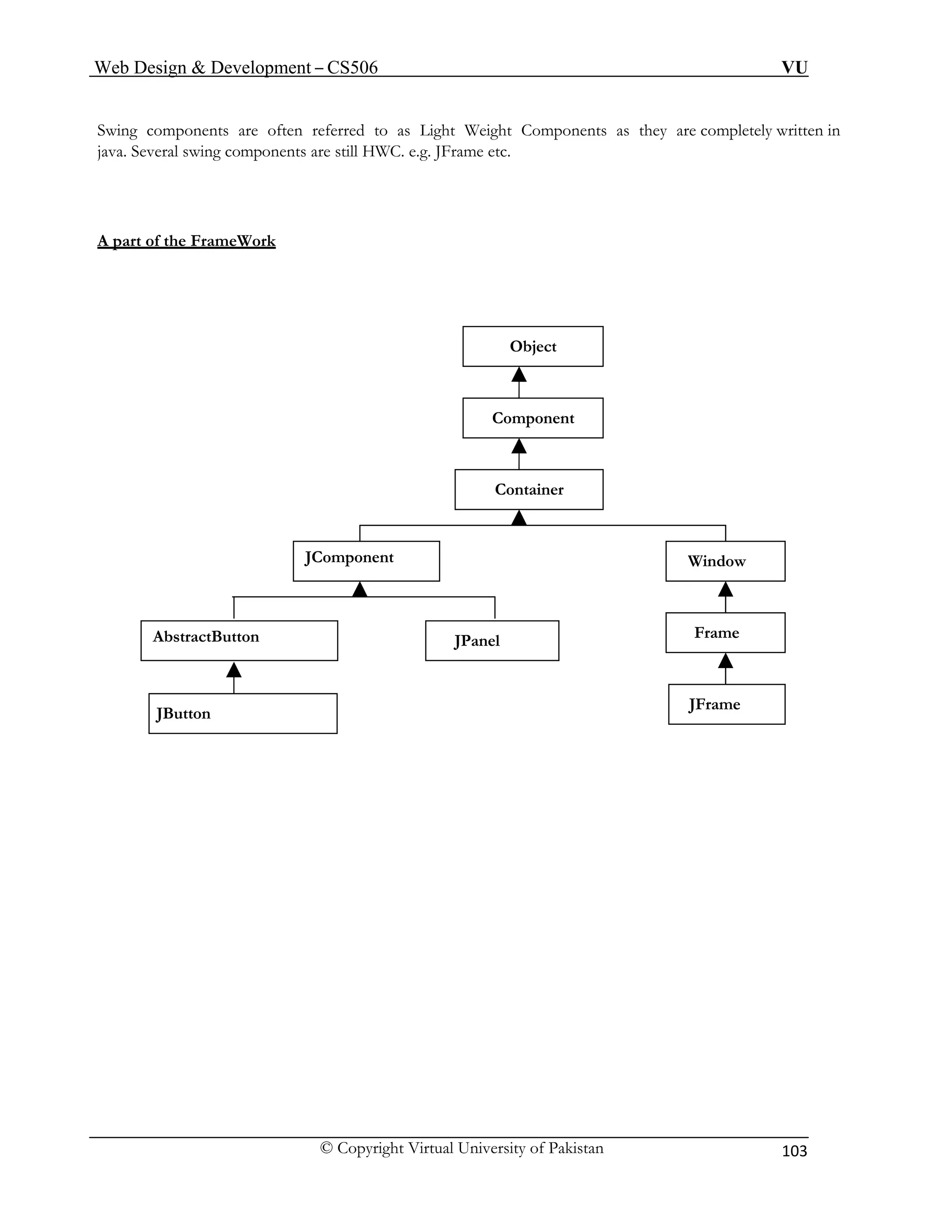
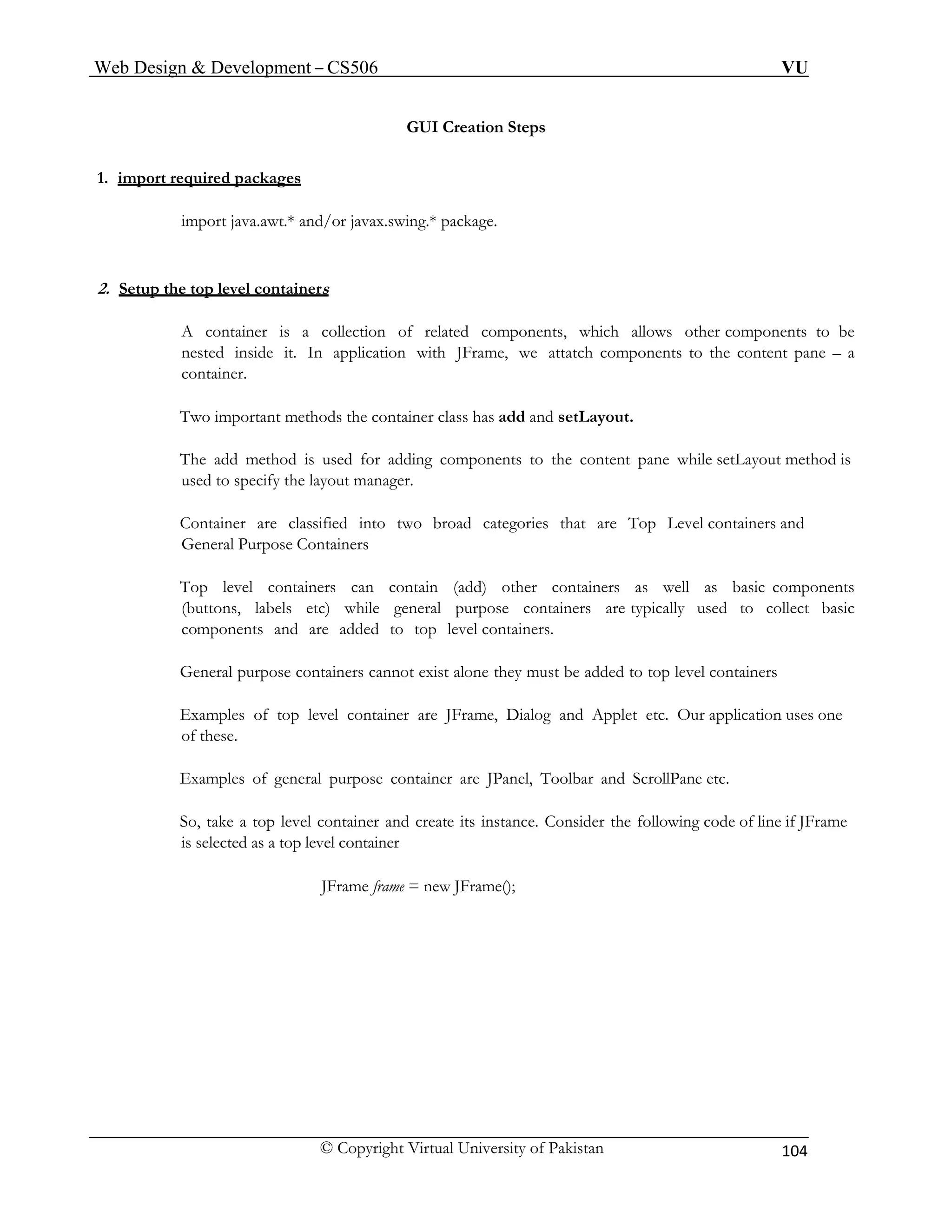
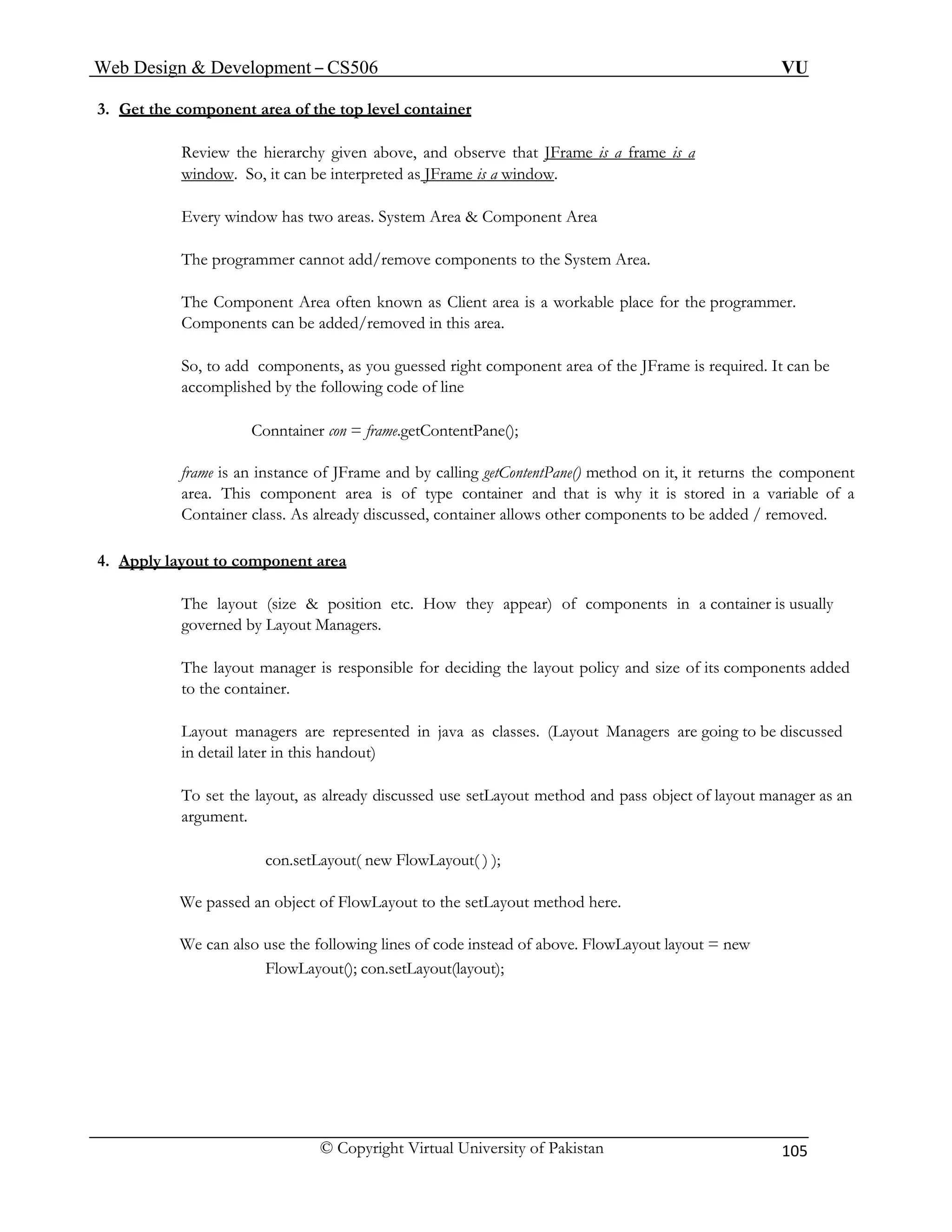

![Web Design & Development – CS506 VU
© Copyright Virtual University of Pakistan 107
Code for Simple GUI
// File GUITest.java
//Step 1: import packages import java.awt.*;
import javax.swing.*;
public class GUITest {
JFrame myFrame ;
JTextField tf;
JButton b;
//method used for setting layout of GUI
public void initGUI ( ) {
//Step 2: setup the top level container
myFrame = new JFrame();
//Step 3: Get the component area of top-level container
Container c = myFrame.getContentPane();
//Step 4: Apply layouts
c.setLayout( new FlowLayout( ) );
//Step 5: create & add components
JTextField tf = new JTextField(10);
JButton b1 = new JButton("My Button");
c.add(tf);
c.add(b1);
//Step 6: set size of frame and make it visible
myFrame.setDefaultCloseOperation(JFrame.EXIT_ON_CLOSE);
myFrame.setSize(200,150);
myFrame.setVisible(true);
} //end initGUI method
public GUITest () { // default constructor
initGUI ();
}
public static void main (String args[ ]) {
GUITest gui = new GUITest();
}
} // end of class](https://image.slidesharecdn.com/webdesignanddevelopment-cs506handouts-141110100145-conversion-gate01/75/Web-design-and-development-cs506-handouts-107-2048.jpg)
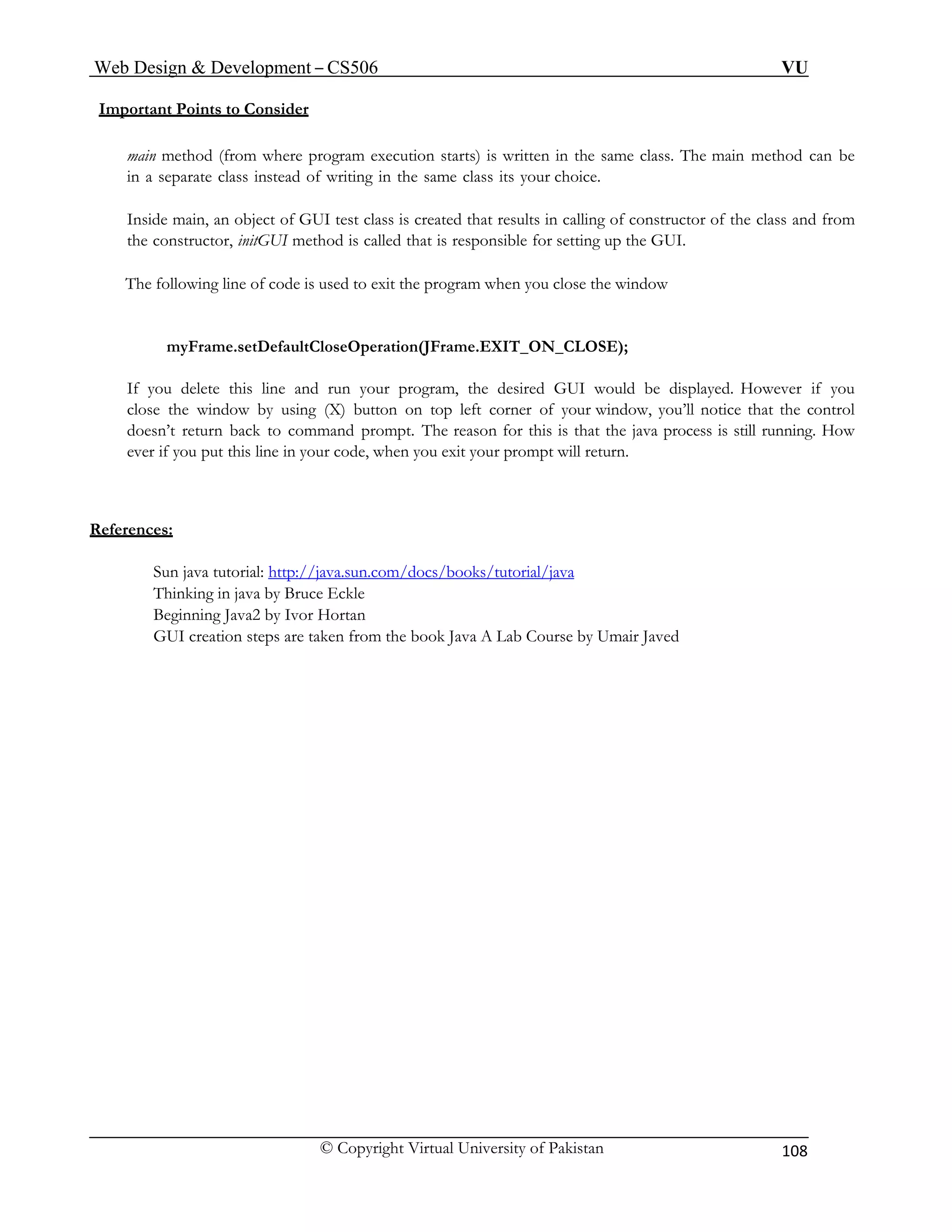
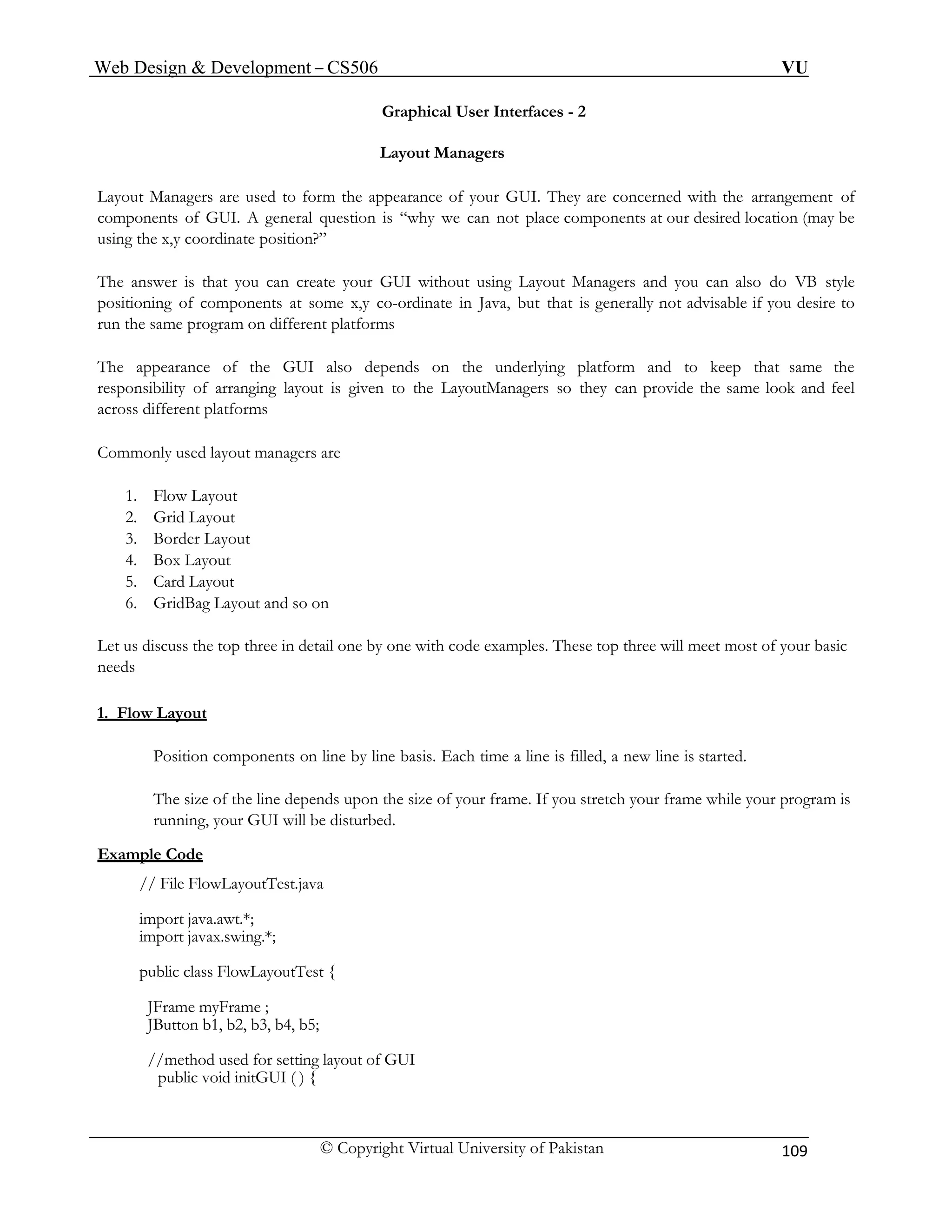
![Web Design & Development – CS506 VU
© Copyright Virtual University of Pakistan 110
myFrame = new JFrame(“Flow Layout”);
Container c = myFrame.getContentPane();
c.setLayout( new FlowLayout( ) );
b1 = new JButton(“Next Slide”);
b2 = new JButton(“Previous Slide”);
b3 = new JButton(“Back to Start”);
b4 = new JButton(“Last Slide”);
b5 = new JButton(“Exit”);
c.add(b1);
c.add(b2);
c.add(b3);
c.add(b4);
c.add(b5);
myFrame.setDefaultCloseOperation(JFrame.EXIT_ON_CLOSE);
myFrame.setSize(300,150);
myFrame.setVisible(true);
} //end initGUI method
public FlowLayoutTest () { // default constructor
initGUI ();
}
public static void main (String args[ ]) {
FlowLayoutTest flTest = new FlowLayoutTest();
}
} // end of class
Output](https://image.slidesharecdn.com/webdesignanddevelopment-cs506handouts-141110100145-conversion-gate01/75/Web-design-and-development-cs506-handouts-110-2048.jpg)
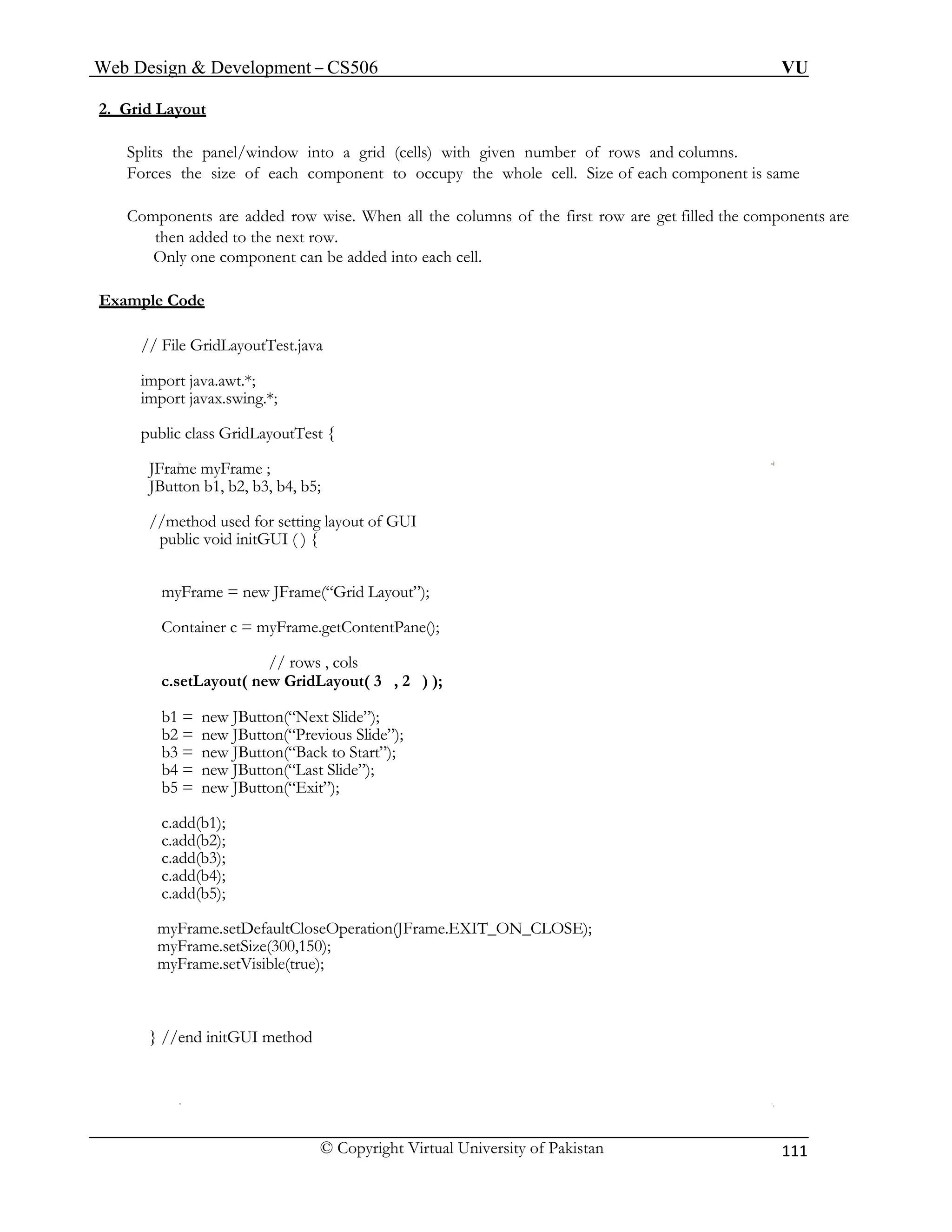
![Web Design & Development – CS506 VU
© Copyright Virtual University of Pakistan 112
public GridLayoutTest () { // default constructor
initGUI ();
}
public static void main (String args[ ]) {
GridLayoutTest glTest = new GridLayoutTest();
}
} // end of class
output
Modification
The grid layout also allows the spacing between cells. To achieve spacing between cells, modify the above program.
Pass additional parameters to the constructor of GridLayout, spaces between rows &
spaces between columns as shown below
c.setLayout( new GridLayout( 3 , 2 , 10 , 20) );
The output is look similar to one given below.](https://image.slidesharecdn.com/webdesignanddevelopment-cs506handouts-141110100145-conversion-gate01/75/Web-design-and-development-cs506-handouts-112-2048.jpg)
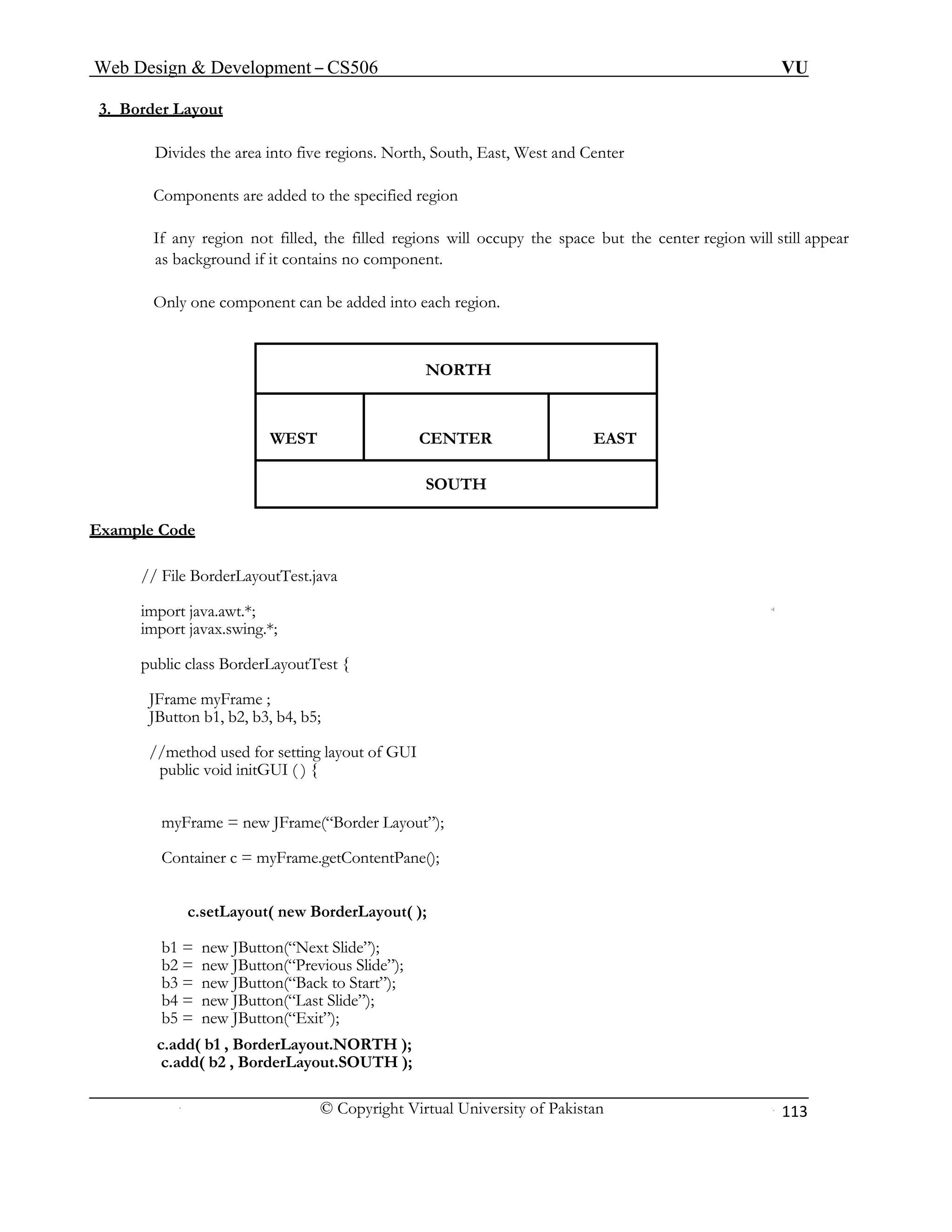
![Web Design & Development – CS506 VU
© Copyright Virtual University of Pakistan
114
c.add( b3 , BorderLayout.EAST );
c.add( b4 , BorderLayout.WEST );
c.add( b5 , BorderLayout.CENTER);
myFrame.setDefaultCloseOperation(JFrame.EXIT_ON_CLOSE);
myFrame.setSize(300,150);
myFrame.setVisible(true);
} //end initGUI method
public BorderLayoutTest () { // default constructor
initGUI ();
}
public static void main (String args[ ]) {
BorderLayoutTest glTest = new BorderLayoutTest();
}
} // end of class
Points to Remember
Revisit the code of adding components, we specify the region in which we want to add component or otherwise they will not be visible.
Consider the following segment of code: BorderLayout.NORTH, as you guessed correctly NORTH is a constant (final) defined in BorderLayout class public access modifier. Similarly the other ones are defined. Now you understand,
why so much emphasis has been made on following the naming conventions.
Output](https://image.slidesharecdn.com/webdesignanddevelopment-cs506handouts-141110100145-conversion-gate01/75/Web-design-and-development-cs506-handouts-114-2048.jpg)
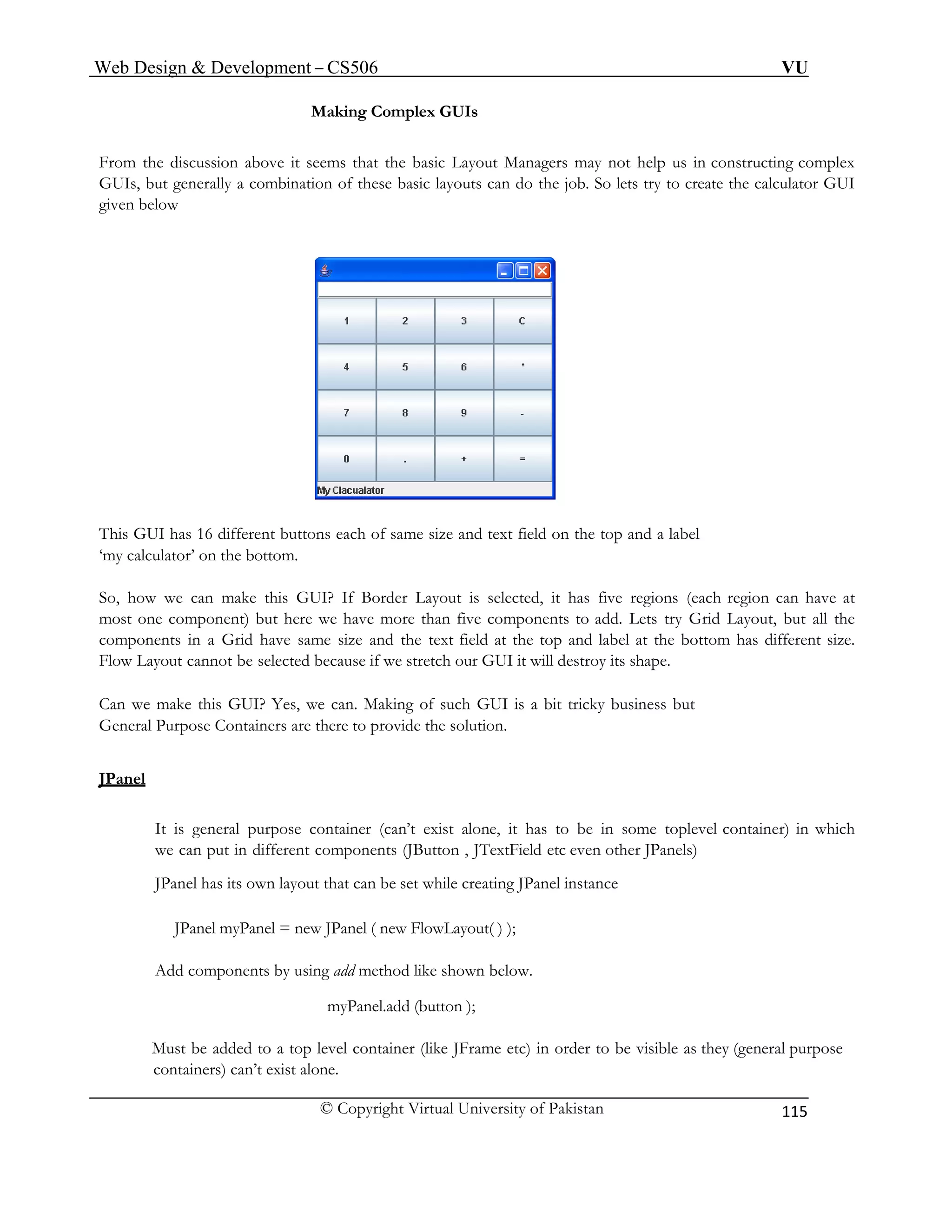
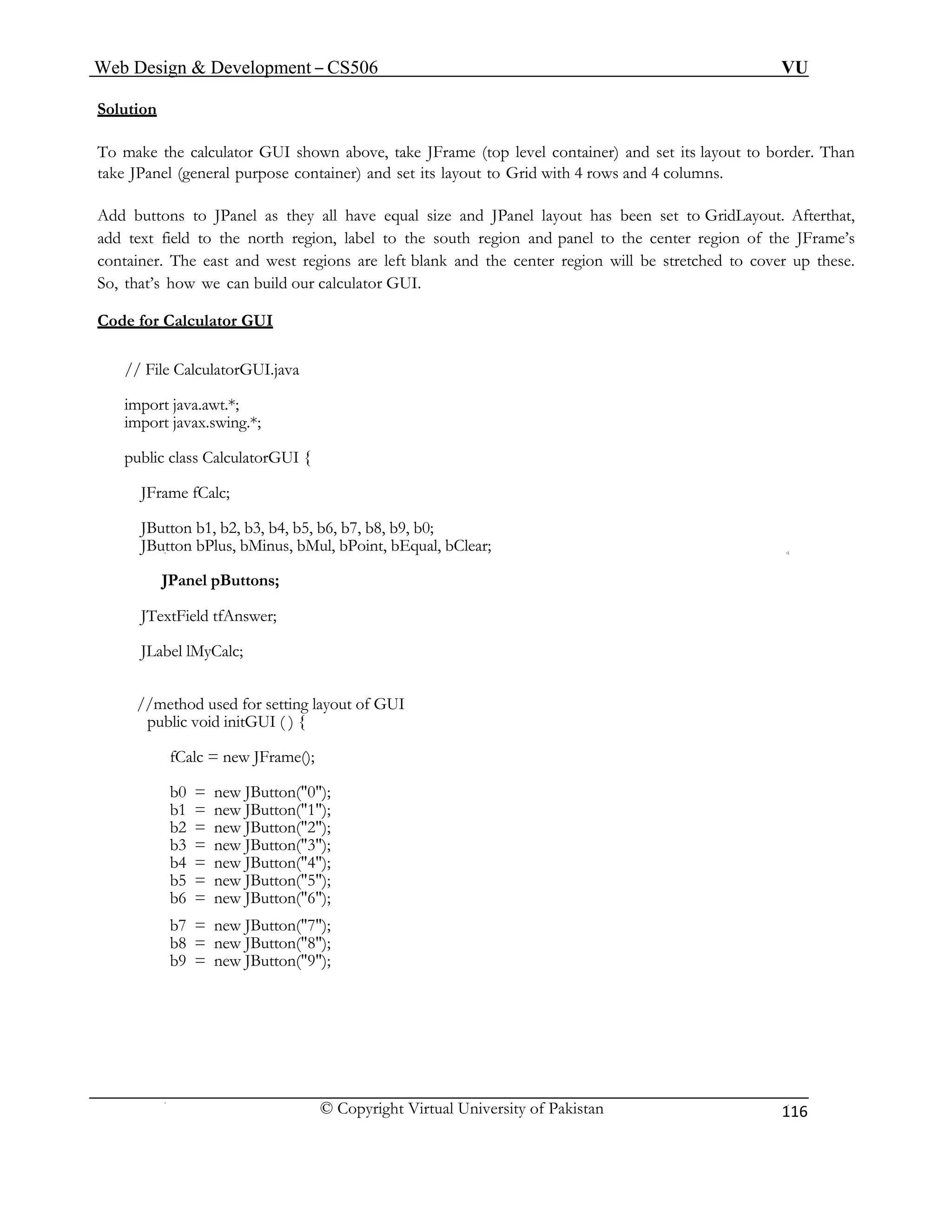
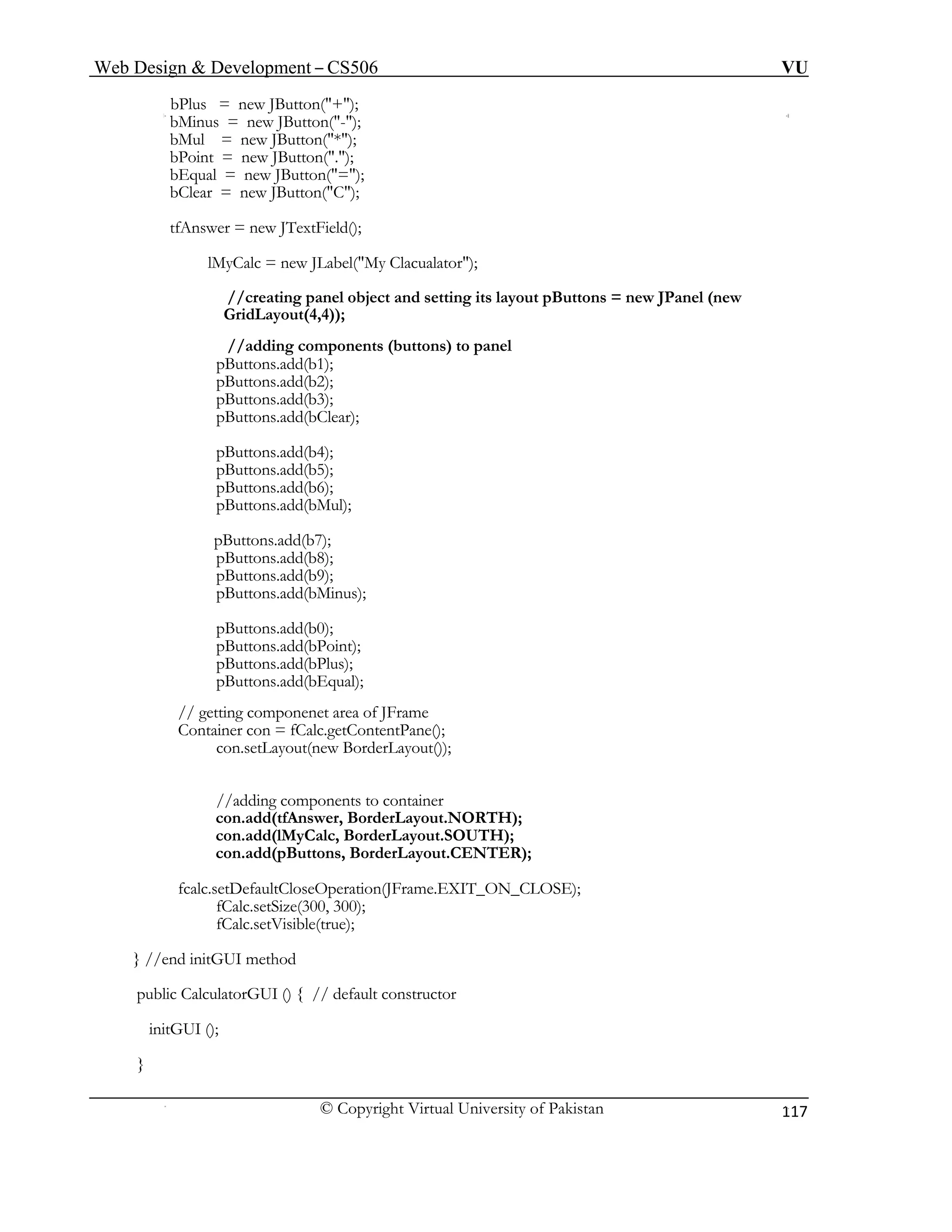
![Web Design & Development – CS506 VU
© Copyright Virtual University of Pakistan
118
public static void main (String args[ ]) {
CalculatorGUI calGUI = new CalculatorGUI ();
}
} // end of class
Reference:
Sun java tutorial: http://java.sun.com/docs/books/tutorial/java
Thinking in java by Bruce Eckle
Beginning Java2 by Ivor Hortan
Java A Lab Course by Umair Javed](https://image.slidesharecdn.com/webdesignanddevelopment-cs506handouts-141110100145-conversion-gate01/75/Web-design-and-development-cs506-handouts-118-2048.jpg)
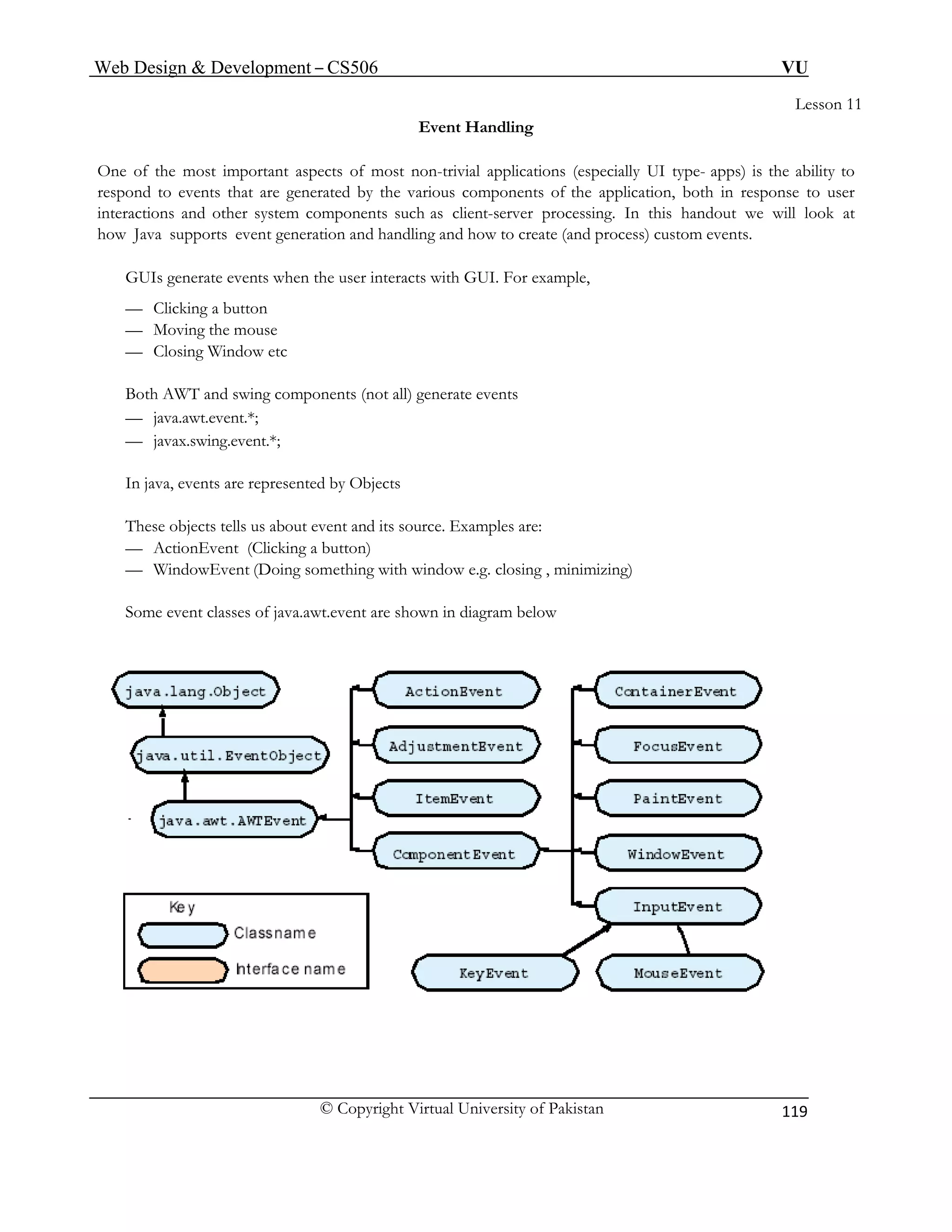
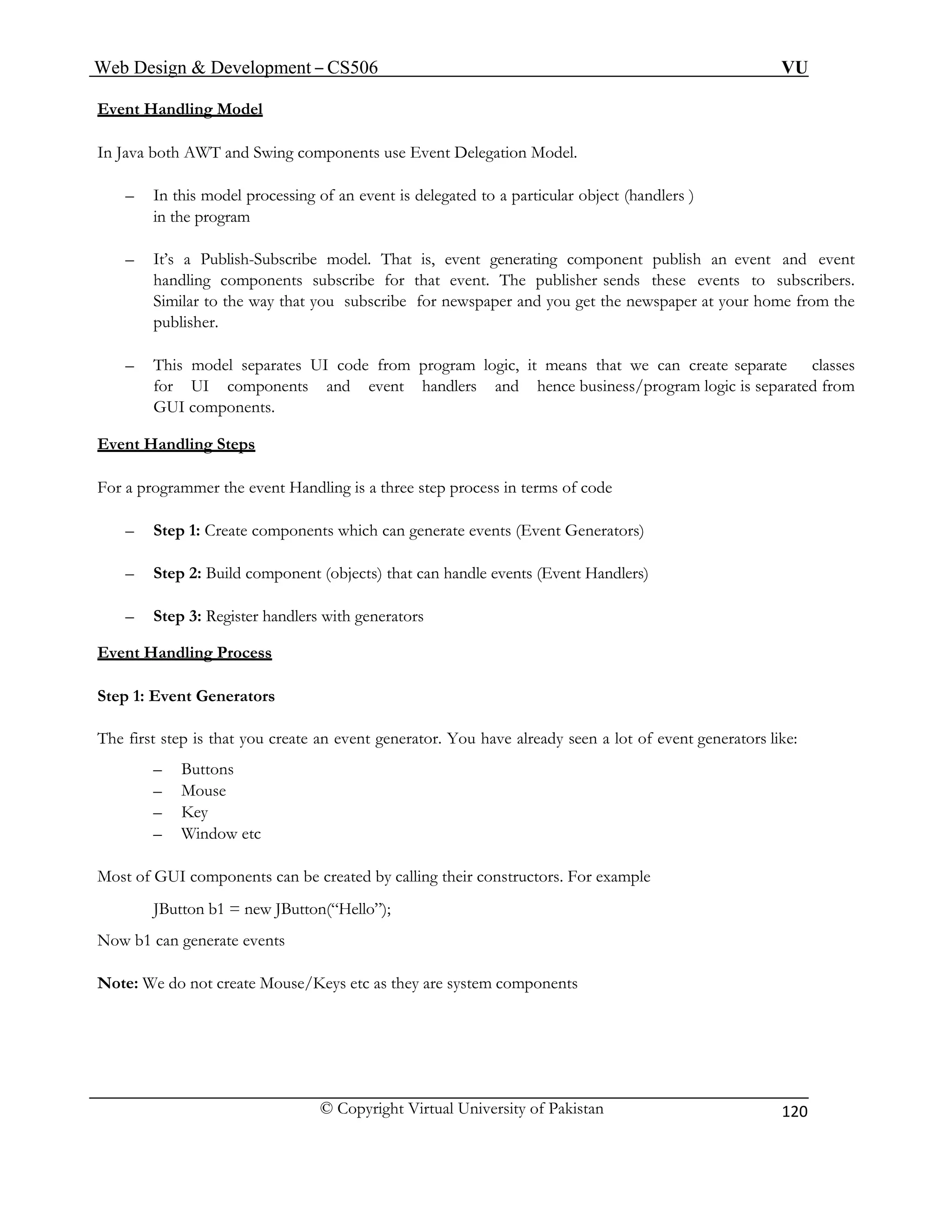
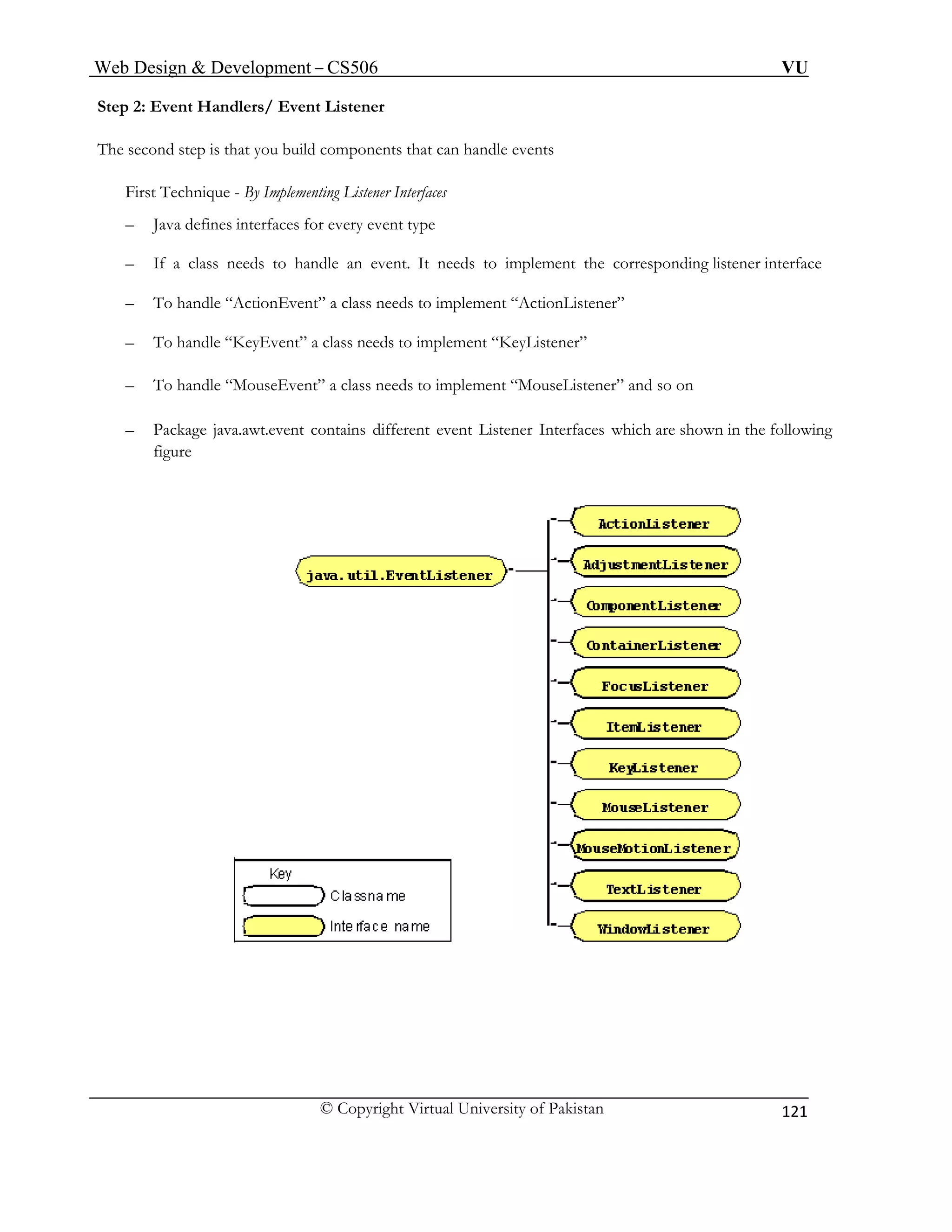
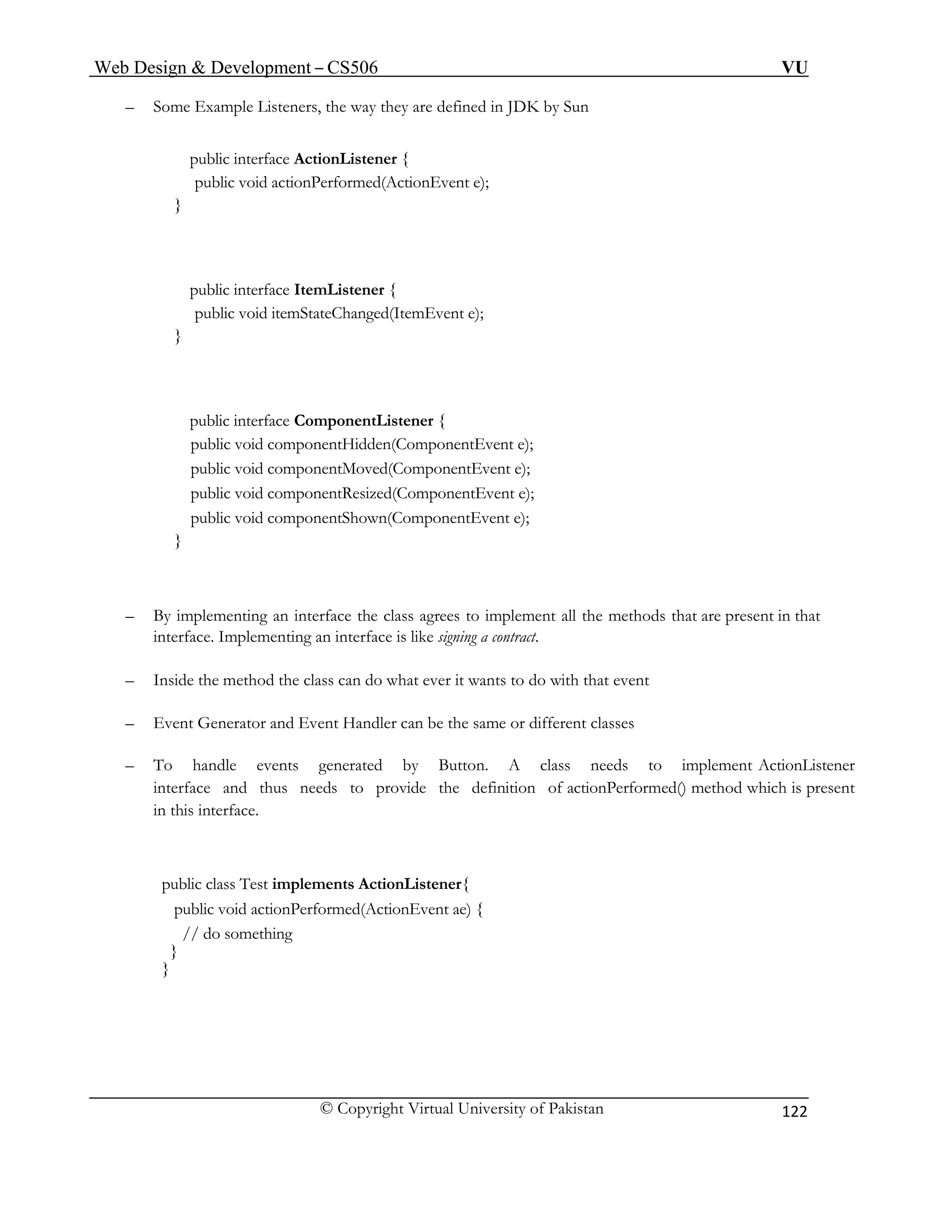
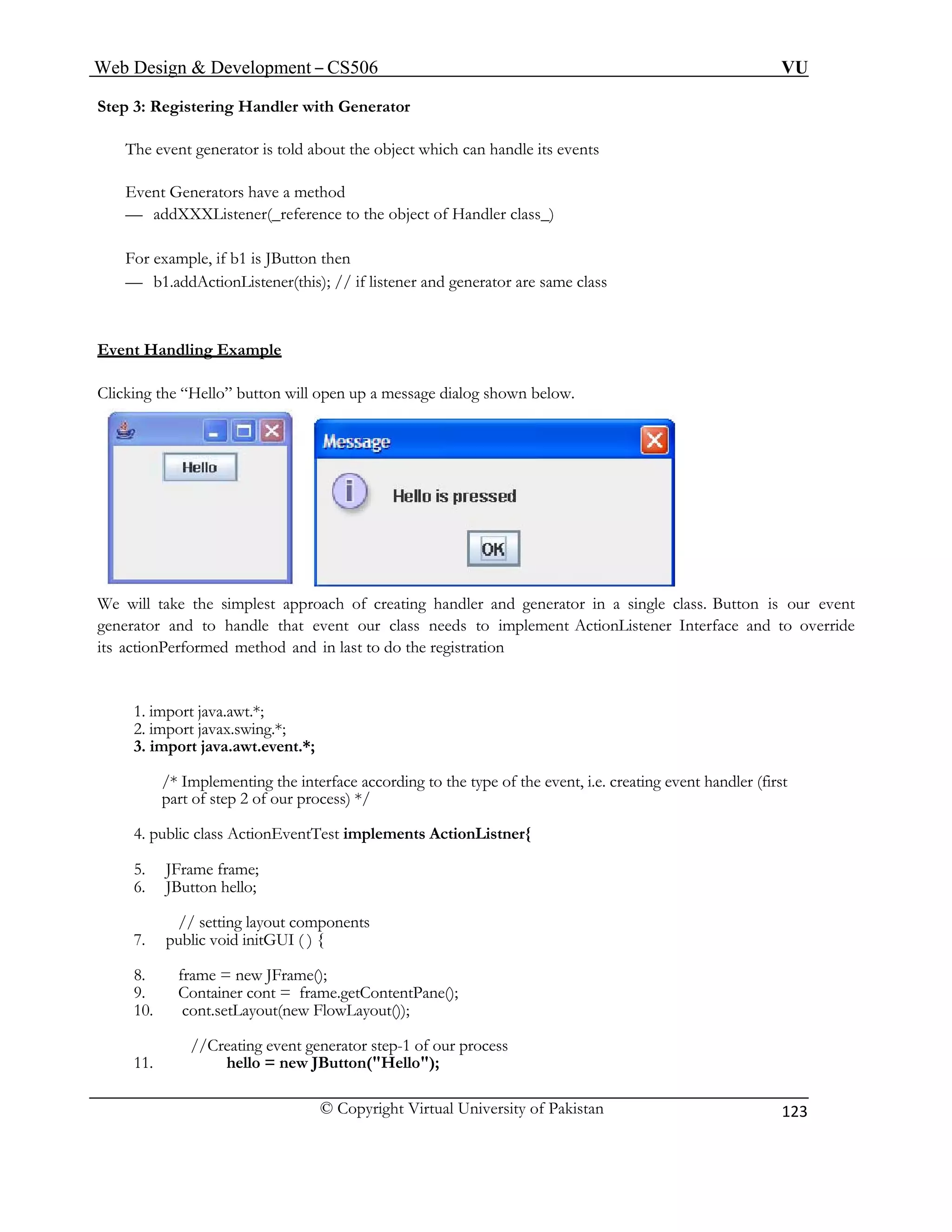
![Web Design & Development – CS506 VU
© Copyright Virtual University of Pakistan
124
/* Registering event handler with event generator.
Since event handler is in same object that contains
button, we have used this to pass the reference.(step
3 of the process) */
12. hello.addActionListener(this);
13. cont.add(hello);
14. frame.setDefaultCloseOperation(JFrame.EXIT_ON_CLOSE);
15. frame.setSize(150, 150);
16. frame.setVisible(true);
17. }
//constructor
18. public ActionEventTest ( ) {
19. initGUI();
20. }
/* Override actionPerformed method of ActionListener’s
interfacemethod of which will be called when event
takes place (second part of step 2 of our process) */
21. public void actionPerformed(ActionEvent event) {
22. JOptionPane.showMessageDialog(null,"Hello is pressed");
23. }
24. public static void main(String args[]) {
25. ActionEventTest aeTest = new ActionEventTest();
26. }
27.} // end class](https://image.slidesharecdn.com/webdesignanddevelopment-cs506handouts-141110100145-conversion-gate01/75/Web-design-and-development-cs506-handouts-124-2048.jpg)

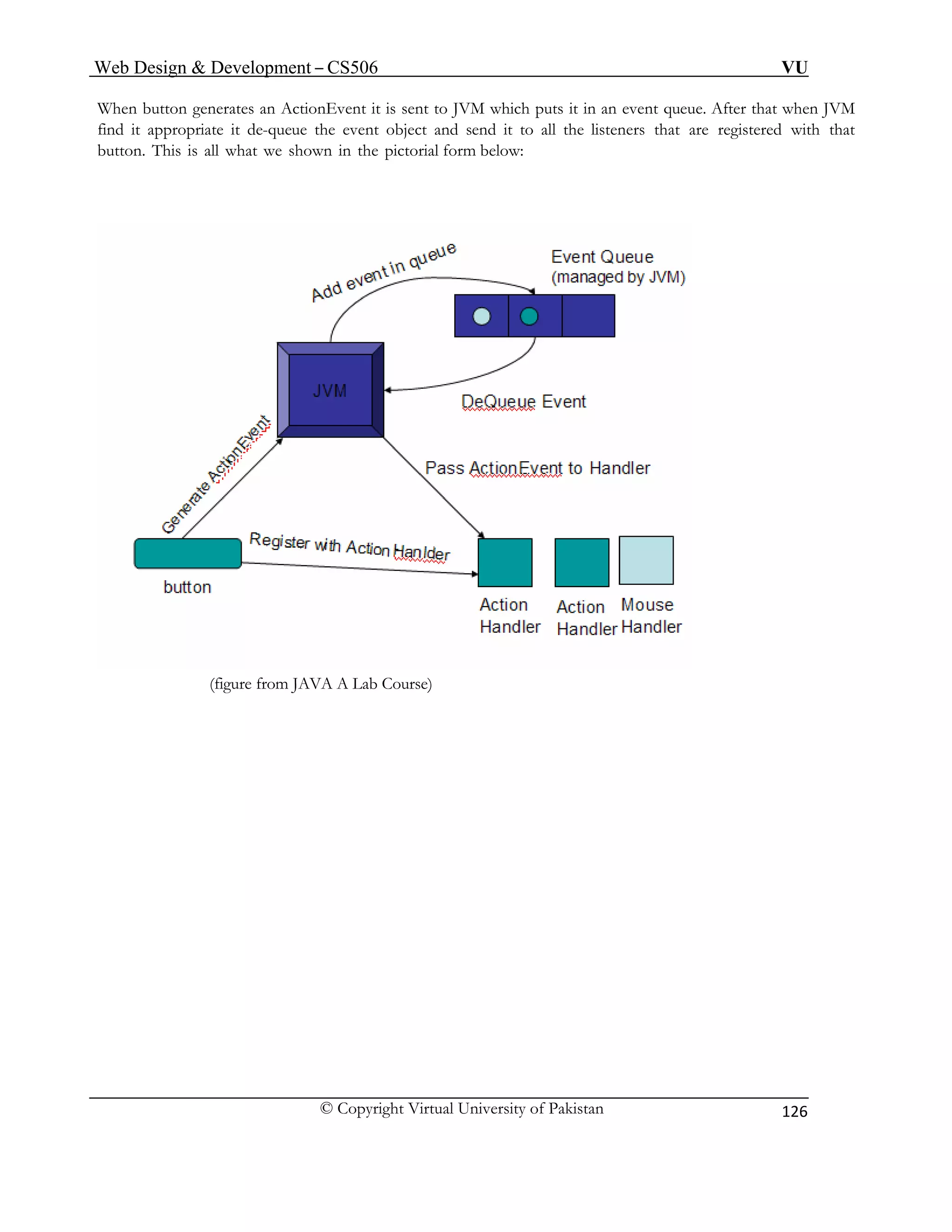
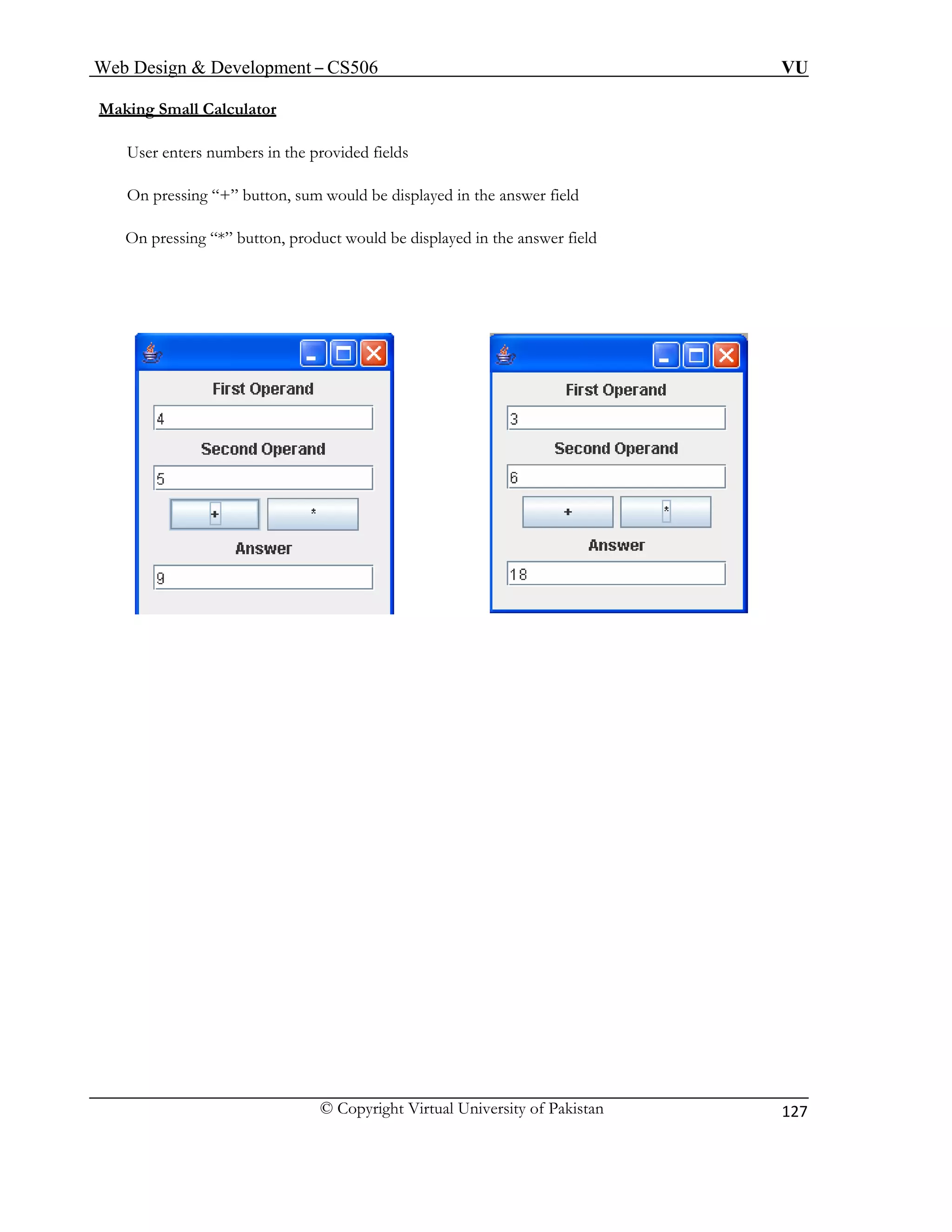
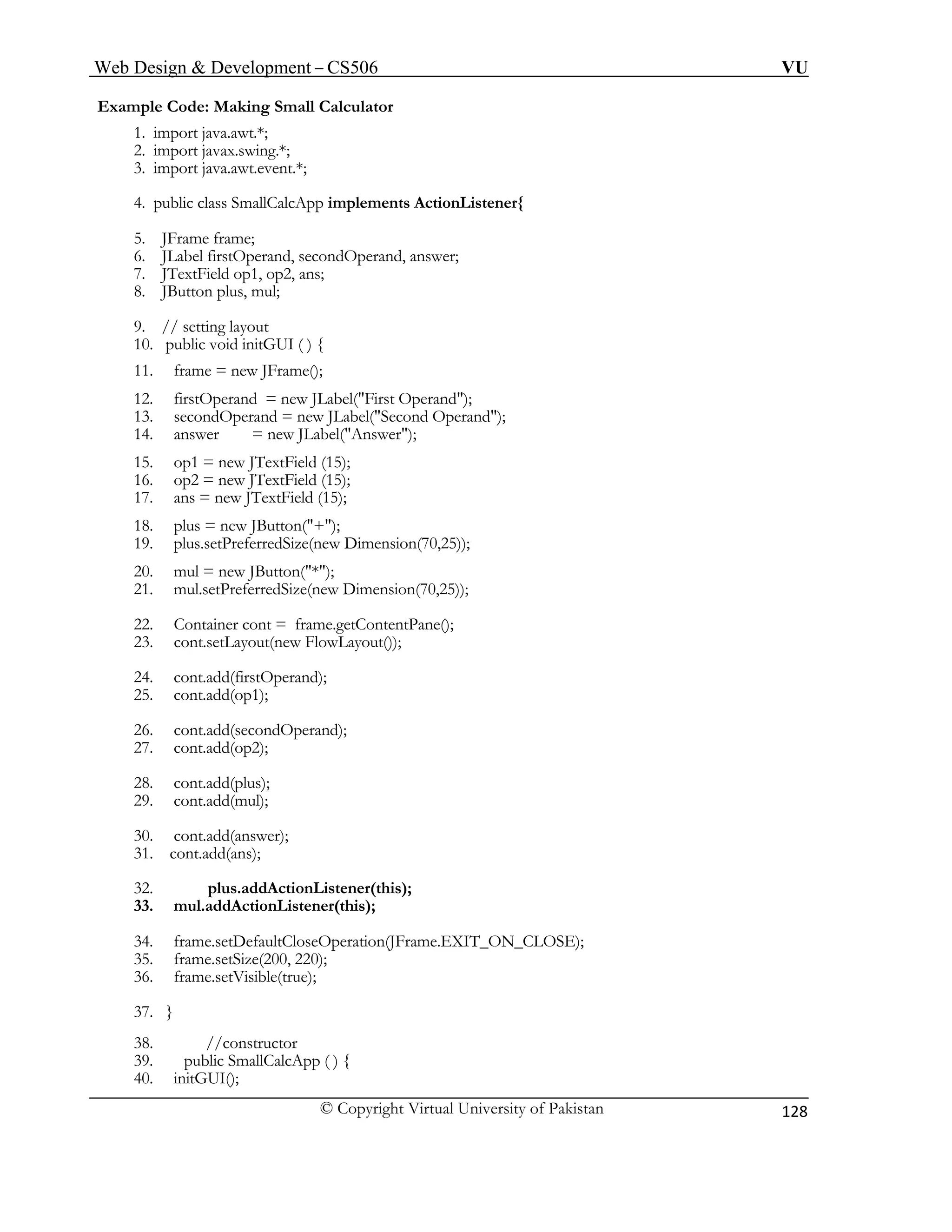
![Web Design & Development – CS506 VU
© Copyright Virtual University of Pakistan
129
41. }
42. public void actionPerformed(ActionEvent event) {
43. String oper, result;
44. int num1, num2, res;
/* All the information regarding an event is contained
inside the event object. Here we are calling the
getSource() method on the event object to figure out
the button that has generated that event. */
45. if (event.getSource() == plus) {
46. oper = op1.getText();
47. num1 = Integer.parseInt(oper);
48. oper = op2.getText();
49. num2 = Integer.parseInt (oper);
50. res = num1+num2;
51. result = res+"";
52. ans.setText(result);
53. }
54. else if (event.getSource() == mul) {
55. oper = op1.getText();
56. num1 = Integer.parseInt(oper);
57. oper = op2.getText();
58. num2 = Integer.parseInt (oper);
59. res = num1*num2;
60. result = res+"";
61. ans.setText(result);
62. }
63. public static void main(String args[]) {
64. SmallCalcApp scApp = new SmallCalcApp();
65. }
66. }// end class](https://image.slidesharecdn.com/webdesignanddevelopment-cs506handouts-141110100145-conversion-gate01/75/Web-design-and-development-cs506-handouts-129-2048.jpg)
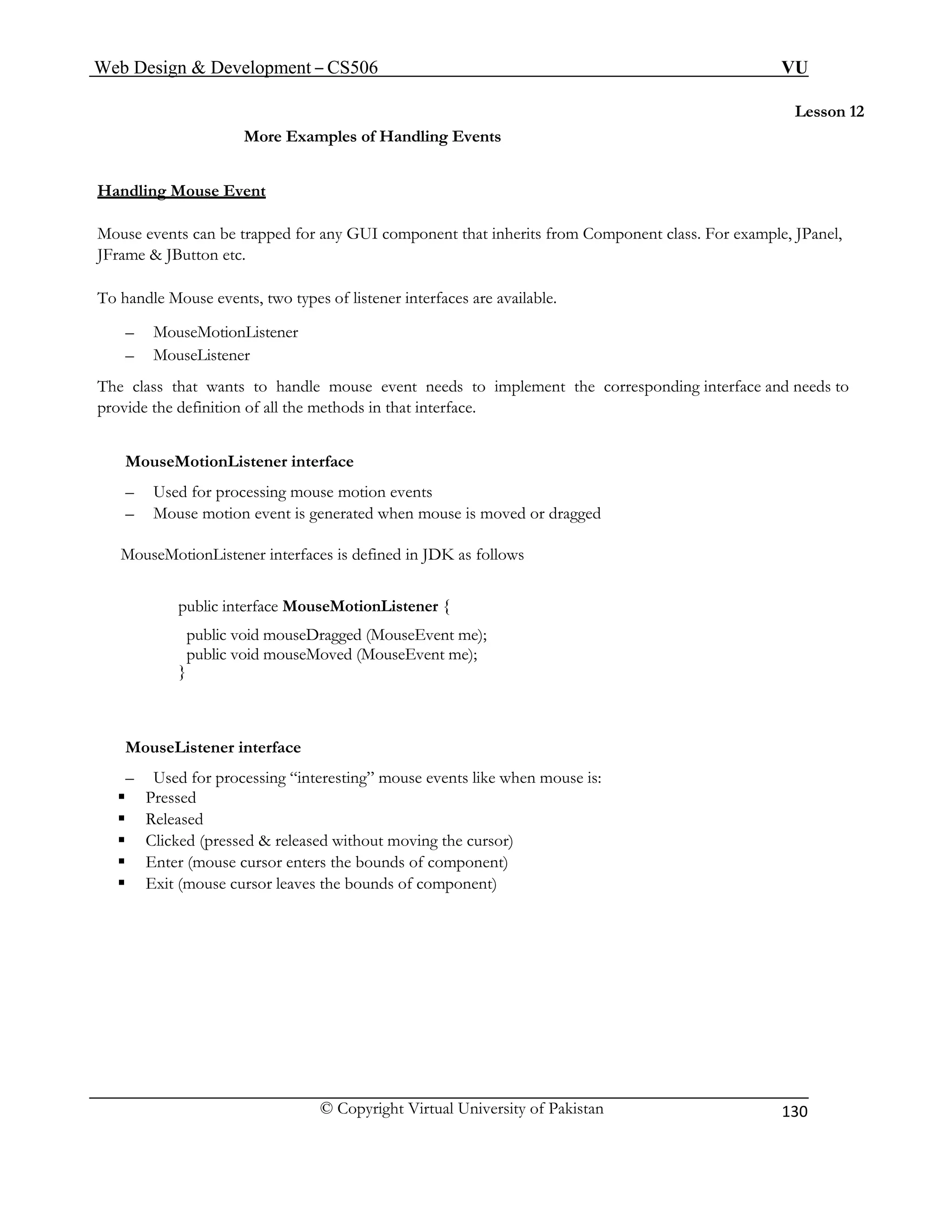
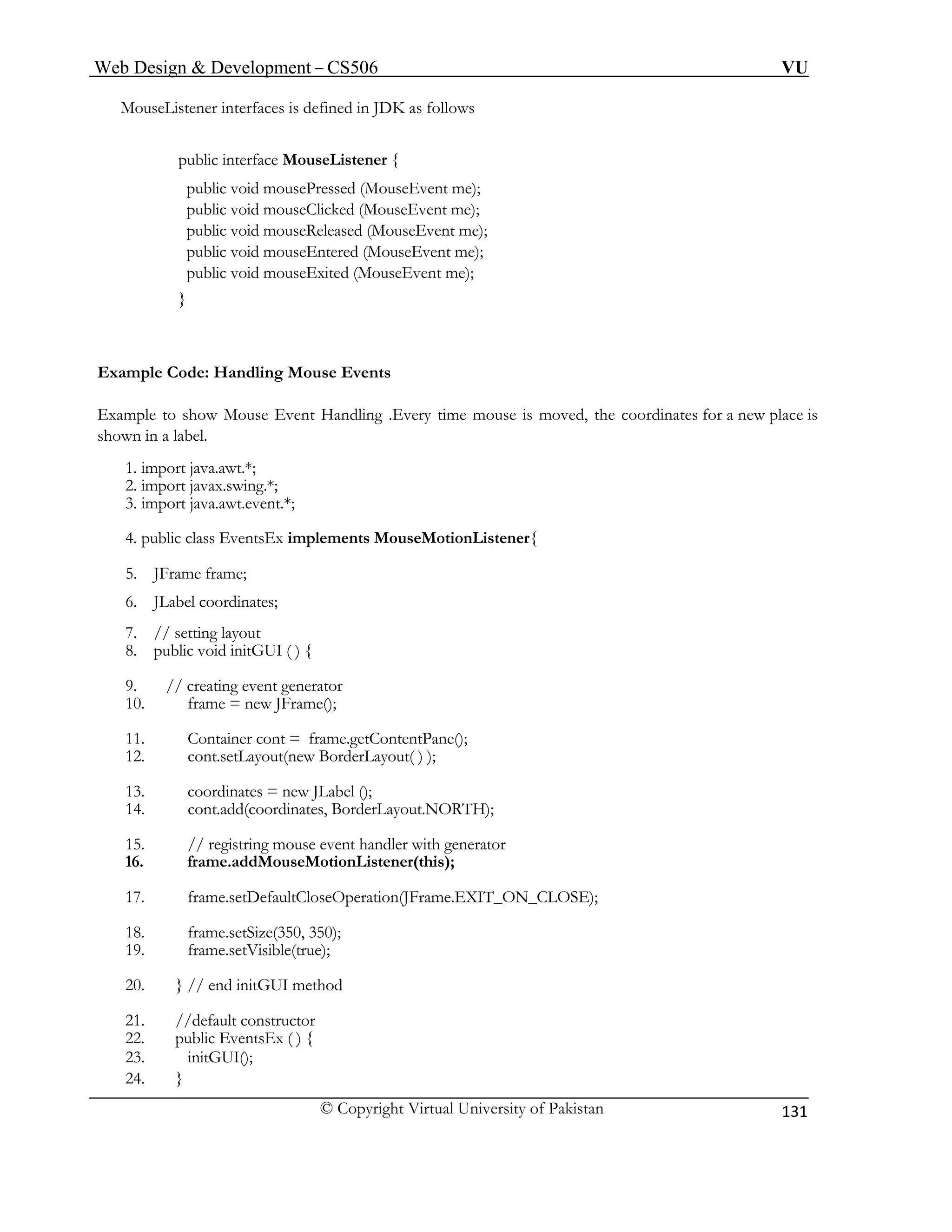
![Web Design & Development – CS506 VU
© Copyright Virtual University of Pakistan
132
// MouseMotionListener event hadler handling dragging
26. int x = me.getX();
30. public void mouseMoved (MouseEvent me) {
31. int x = me.getX();
36. EventsEx ex = new EventsEx();
25. public void mouseDragged (MouseEvent me) {
27. int y = me.getY();
28. coordinates.setText("Dragged at [" + x + "," + y + "]");
29. }
// MouseMotionListener event handler handling motion
32. int y = me.getY();
33. coordinates.setText("Moved at [" + x + "," + y + "]");
34. }
35. public static void main(String args[]) {
37. }
38. } // end class](https://image.slidesharecdn.com/webdesignanddevelopment-cs506handouts-141110100145-conversion-gate01/75/Web-design-and-development-cs506-handouts-132-2048.jpg)
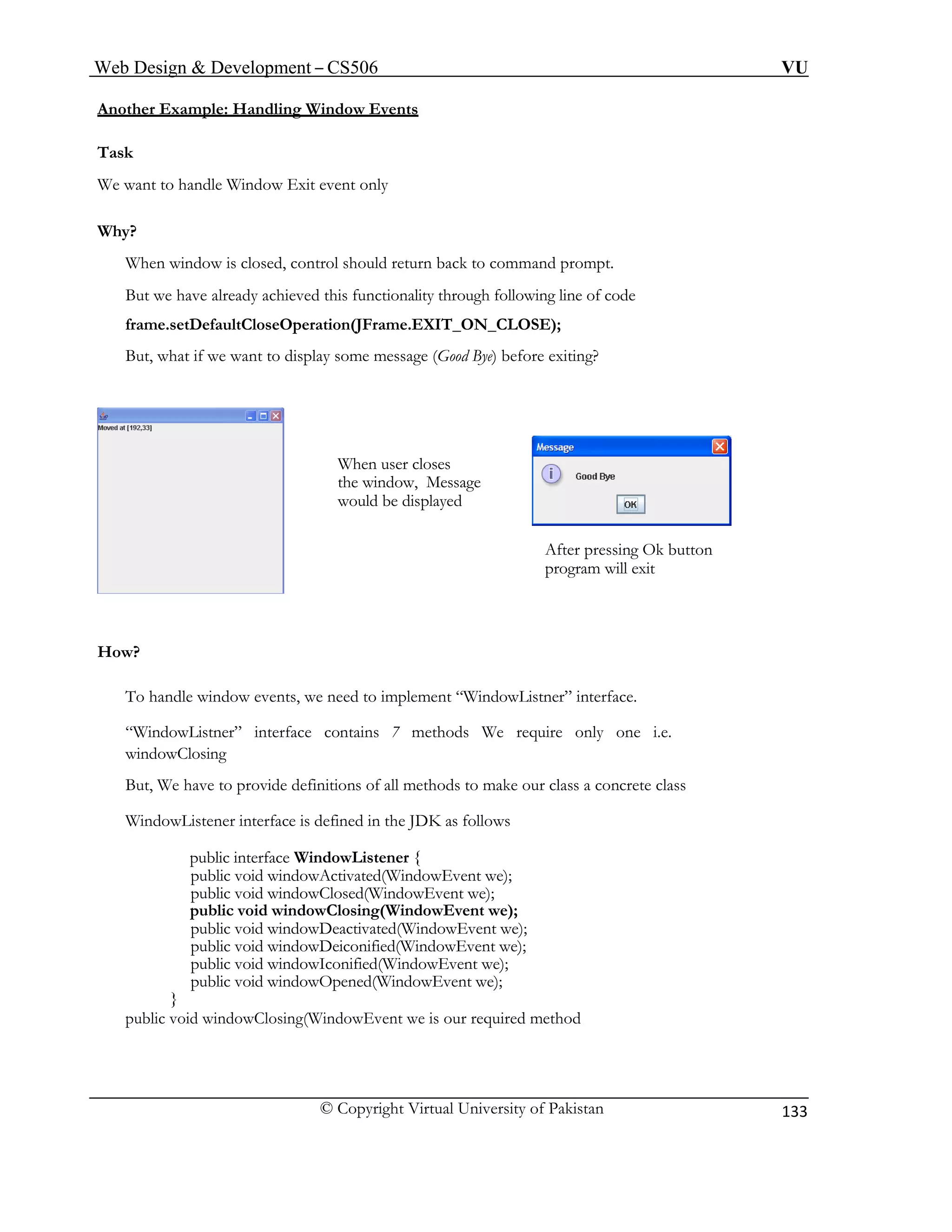
![Web Design & Development – CS506 VU
© Copyright Virtual University of Pakistan
134
2. import javax.swing.*;
7. public void initGUI ( ) {
13. frame.addMouseMotionListener(this);
// registering window handler with generator
15. frame.setSize(350, 350);
17. } // end initGUI method
19. initGUI();
// MouseMotionListener event hadler handling dragging
21. public void mouseDragged (MouseEvent me) {
22. int x = me.getX();
Example Code: WindowExitHandler
This example code is modification of the last code example i.e. EventsEx.java
1. import java.awt.*;
3. import java.awt.event.*;
4. public class EventsEx implements MouseMotionListener ,
WindowListener {
5. JFrame frame;
6. JLabel coordinates;
// setting layout
// creating event generator
8. frame = new JFrame();
9. Container cont = frame.getContentPane();
10. cont.setLayout(new BorderLayout( ) );
11. coordinates = new JLabel ();
12. cont.add(coordinates, BorderLayout.NORTH);
// registring mouse event handler with generator
14. frame.addWindowListener(this);
16. frame.setVisible(true);
//default constructor
18. public EventsEx ( ) {
20. }
23. int y = me.getY();
24. coordinates.setText("Dragged at [" + x + "," + y + "]");
25. }](https://image.slidesharecdn.com/webdesignanddevelopment-cs506handouts-141110100145-conversion-gate01/75/Web-design-and-development-cs506-handouts-134-2048.jpg)
![Web Design & Development – CS506 VU
© Copyright Virtual University of Pakistan
135
26. public void mouseMoved (MouseEvent me) {
27. int x = me.getX();
29.
31. }
// window listener event handler
37. }
38. public void windowDeactivated (WindowEvent we) { }
42. public static void main(String args[]) {
45. } // end class
// MouseMotionListener event handler handling motion
28. int y = me.getY();
30. coordinates.setText("Moved at [" + x + "," + y + "]");
32. public void windowActivated (WindowEvent we) { }
33. public void windowClosed (WindowEvent we) { }
34. public void windowClosing (WindowEvent we) {
35. JOptionPane.showMessageDialog(null, “Good Bye”);
36. System.exit(0);
39. public void windowDeiconified (WindowEvent we) { }
40. public void windowIconified (WindowEvent we) { }
41. public void windowOpened (WindowEvent we) { }
43. EventsEx ex = new EventsEx();
44. }](https://image.slidesharecdn.com/webdesignanddevelopment-cs506handouts-141110100145-conversion-gate01/75/Web-design-and-development-cs506-handouts-135-2048.jpg)
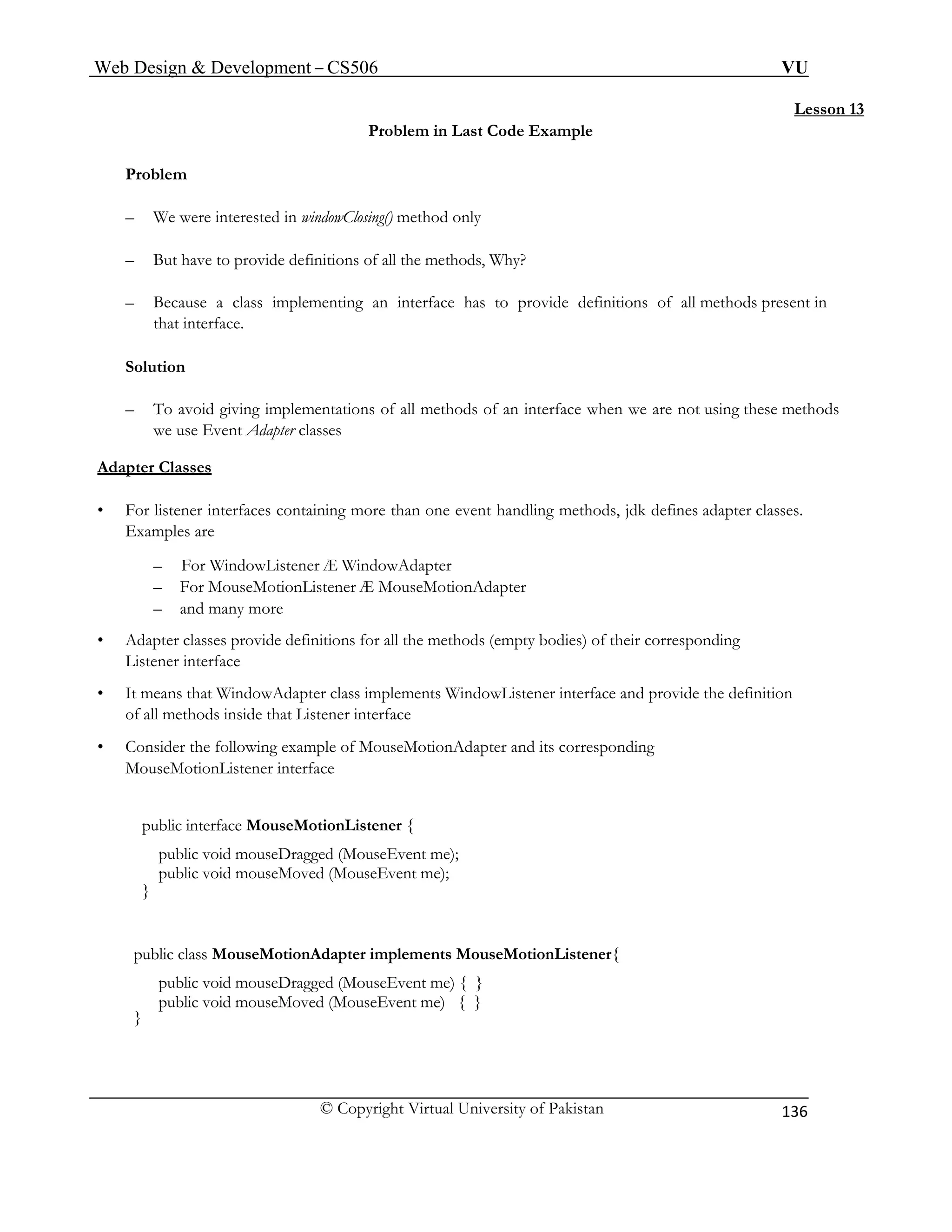
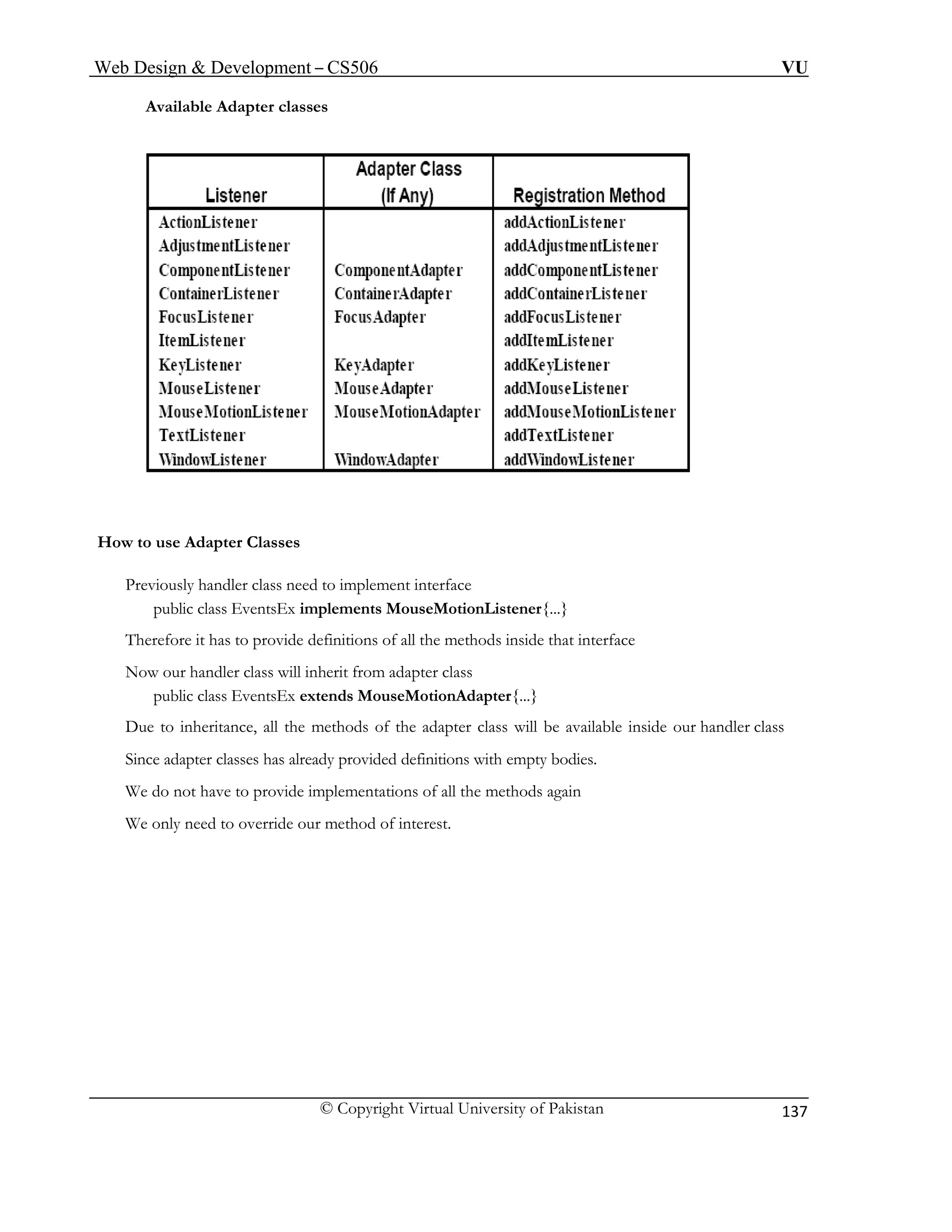
![Web Design & Development – CS506 VU
© Copyright Virtual University of Pakistan
138
Example Code 13.1: Handling Window Events using Adapter Classes 1. import java.awt.*;
3. import java.awt.event.*;
5. JFrame frame;
12. cont.add(coordinates, BorderLayout.NORTH);
// registering window handler with generator
13. frame.addWindowListener(this);
14. frame.setSize(350, 350);
16. } // end initGUI method
//default constructor
17. public EventsEx ( ) {
18. initGUI();
19. }
// As you can see that we have only implemented
// our required method
21. JOptionPane.showMessageDialog(null, “Good Bye”);
24. public static void main(String args[]) {
25. EventsEx ex = new EventsEx();
27. } // end class
Here we are modifying the window event code in the last example to show the use of WindowAdapter instead of WindowListener. Code related to MouseMotionListener is deleted to avoid cluttering of code.
2. import javax.swing.*;
4. public class EventsEx extends WindowAdapter {
6. JLabel coordinates;
// setting layout
7. public void initGUI ( ) {
// creating event generator
8. frame = new JFrame();
9. Container cont = frame.getContentPane();
10. cont.setLayout(new BorderLayout( ) );
11. coordinates = new JLabel ();
15. frame.setVisible(true);
20. public void windowClosing (WindowEvent we) {
22. System.exit(0);
23. }
26. }](https://image.slidesharecdn.com/webdesignanddevelopment-cs506handouts-141110100145-conversion-gate01/75/Web-design-and-development-cs506-handouts-138-2048.jpg)
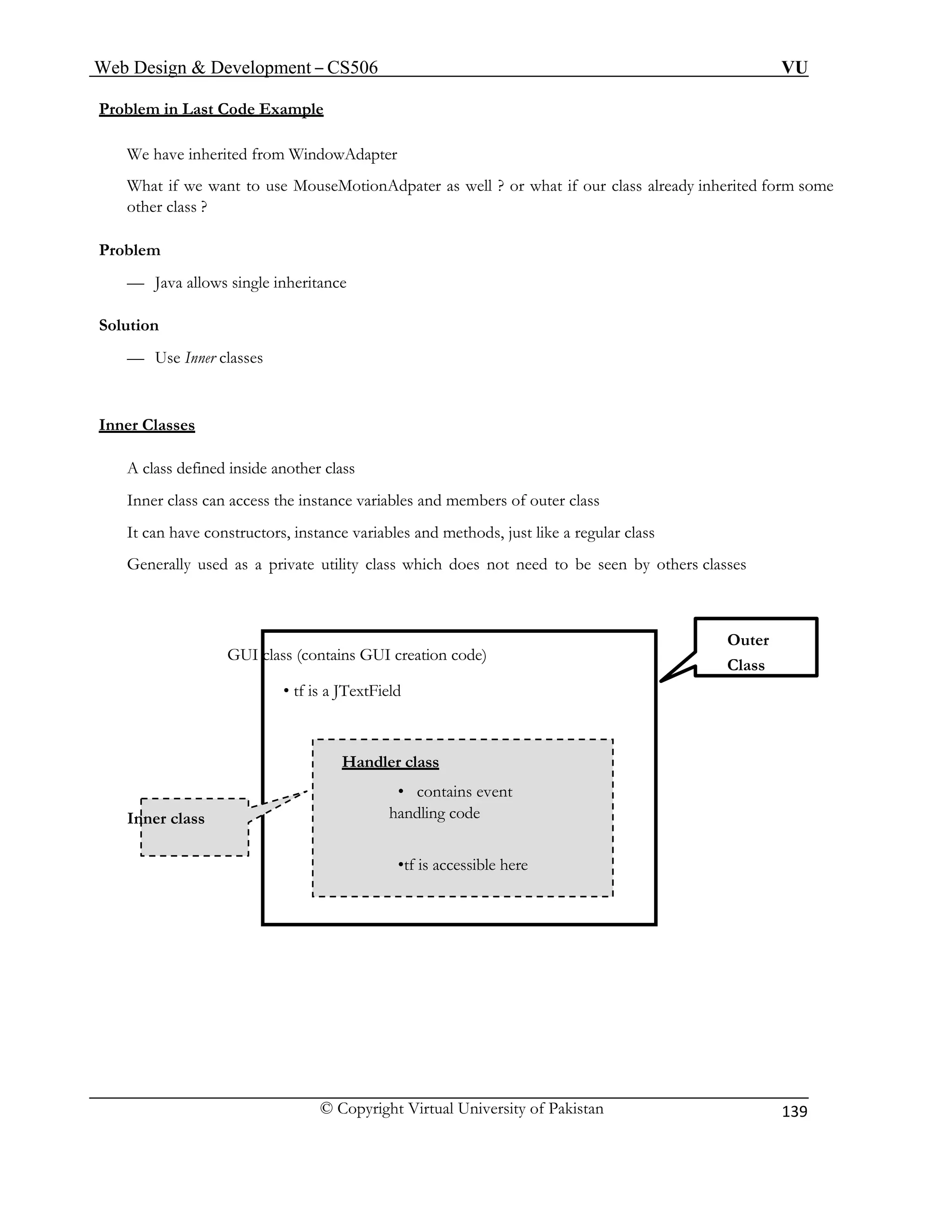
![Web Design & Development – CS506 VU
© Copyright Virtual University of Pakistan
140
Example Code13.2: Handling Window Event with Inner Class
Here we are modifying the window event code in the last example to show the use of
3. import java.awt.event.*;
5. JFrame frame;
9. frame = new JFrame();
window events and registering it with generator */
14. WindowHandler handler = new Window Handler ();
//default constructor
27. } // end of WindowHandler class
WindowAdapter as an inner class.
1. import java.awt.*;
2. import javax.swing.*;
4. public class EventEx {
6. JLabel coordinates;
7. // setting layout
8. public void initGUI ( ) {
10. Container cont = frame.getContentPane();
11. cont.setLayout(new BorderLayout( ));
12. coordinates = new JLabel ();
13. cont.add(coordinates, BorderLayout.NORTH);
/* Creating an object of the class which is handling our
15. frame.addWindowListener(handler);
16. frame.setSize(350, 350);
17. frame.setVisible(true);
18. } // end initGUI
19. public EventEx ( ) {
20. initGUI();
21. }
/* Inner class implementation of window adapter. Outer
class is free to inherit from any other class. */
22. private class WindowHandler extends WindowAdapter {
// Event Handler for WindowListener
23. public void windowClosing (WindowEvent we) {
24. JOptionPane.showMessageDialog(null, “Good Bye”);
25. System.exit(0)
26. }
28. public static void main(String args[]) {
29. EventEx e = new EventEx();
30. }
31. } // end class](https://image.slidesharecdn.com/webdesignanddevelopment-cs506handouts-141110100145-conversion-gate01/75/Web-design-and-development-cs506-handouts-140-2048.jpg)
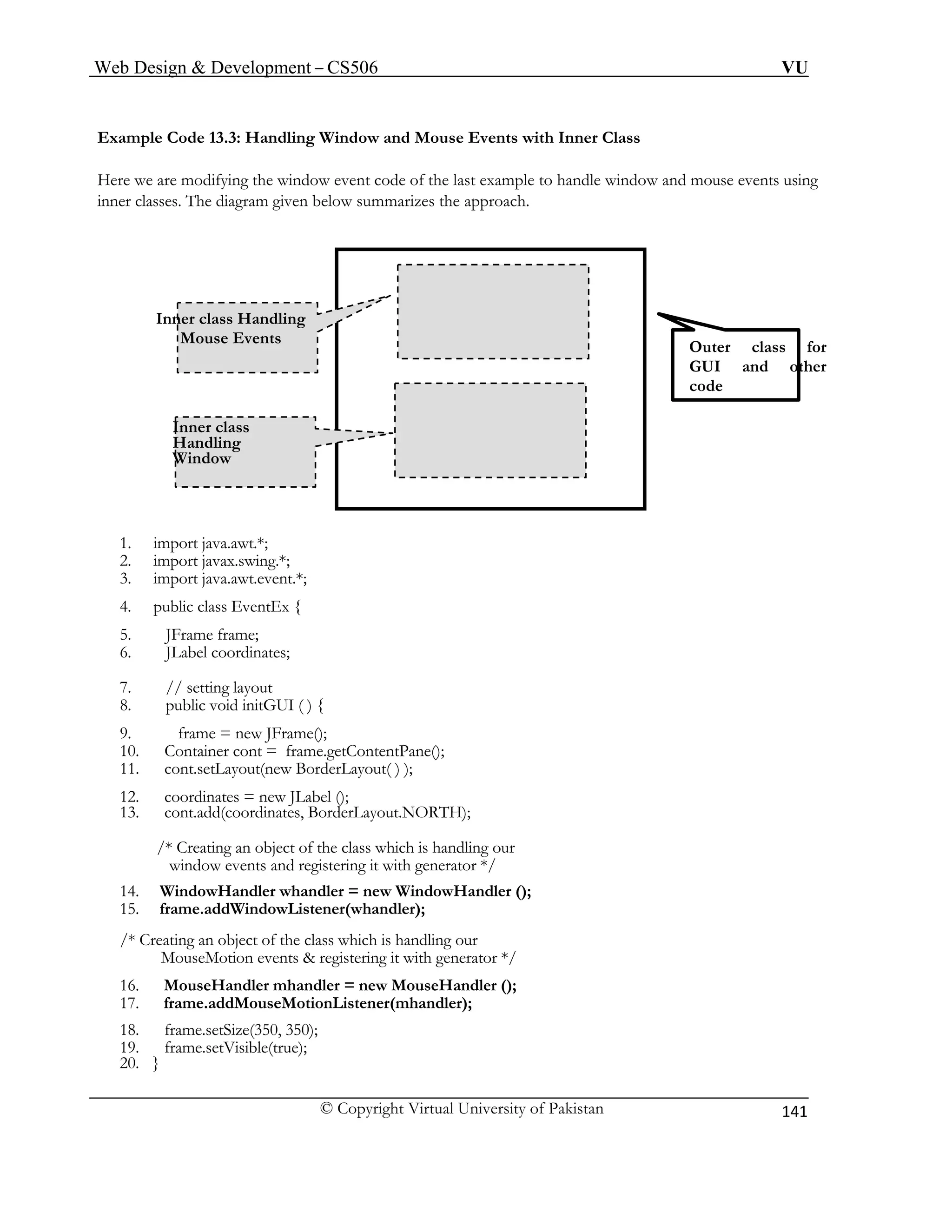
![Web Design & Development – CS506 VU
© Copyright Virtual University of Pakistan
142
//default constructor
21. public EventEx ( ) {
22. initGUI();
23. }
/* Inner class implementation of WindowAdapter. Outer class
26. JOptionPane.showMessageDialog(null, “Good Bye”);
35. }
36. } // end of MouseHandler
37. public static void main(String args[]) {
39. }
40. } // end class
is free to inherit from any other class. */
24. private class WindowHandler extends WindowAdapter {
// Event Handler for WindowListener
25. public void windowClosing (WindowEvent we) {
27. System.exit(0)
28. }
29. } // end of WindowHandler
//Inner class implementation of MouseMotionAdapter
30. private class MouseHandler extends MouseMotionAdapter {
// Event Handler for mouse motion events
31. public void mouseMoved (MouseEvent me) {
32. int x = me.getX();
33. int y = me.getY();
34. coord.setText(“Moved at [" + x + "," + y + "]” );
38. EventEx e = new EventEx();](https://image.slidesharecdn.com/webdesignanddevelopment-cs506handouts-141110100145-conversion-gate01/75/Web-design-and-development-cs506-handouts-142-2048.jpg)
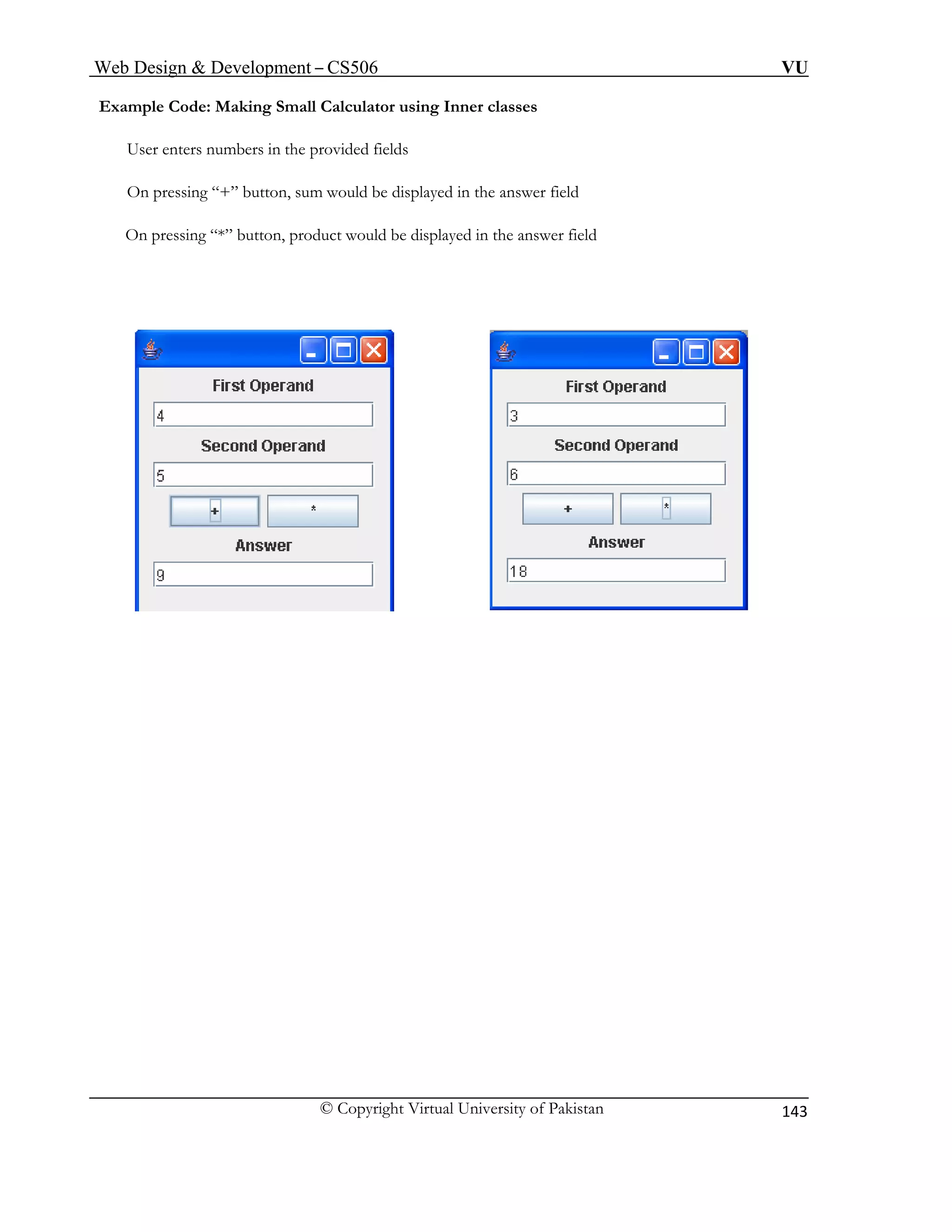
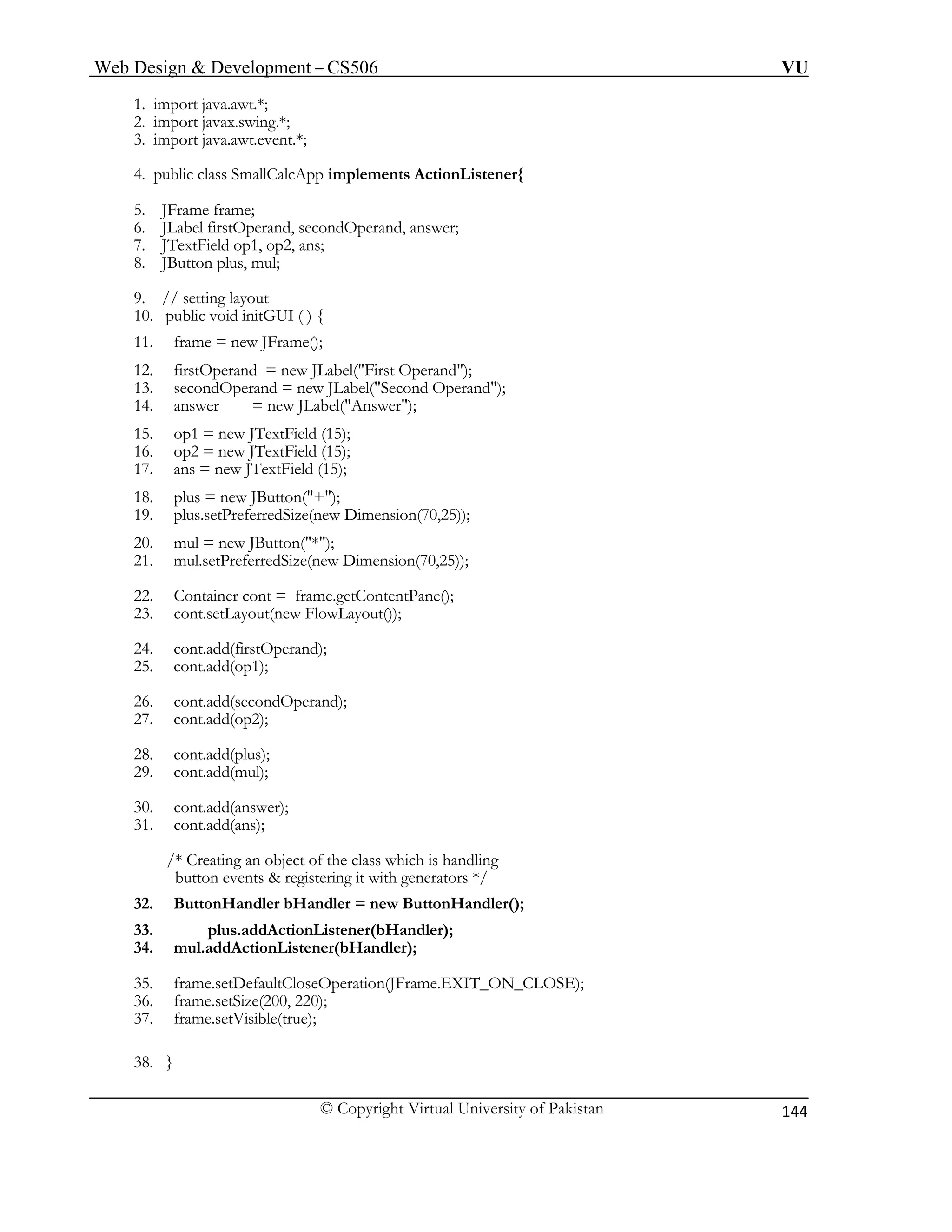
![Web Design & Development – CS506 VU
© Copyright Virtual University of Pakistan
145
39. //constructor
40. public SmallCalcApp ( ) {
41. initGUI();
//Inner class implementation of ActionListener
54. ans.setText(result);
56. else if (event.getSource() == mul) {
57. oper = op1.getText();
65. } // end actionPerformed method
69. }
42. }
43. private class ButtonHandler implements ActionListener{
44. public void actionPerformed(ActionEvent event) {
45. String oper, result;
46. int num1, num2, res;
47. if (event.getSource() == plus) {
48. oper = op1.getText();
49. num1 = Integer.parseInt(oper);
50. oper = op2.getText();
51. num2 = Integer.parseInt (oper);
52. res = num1+num2;
53. result = res+"";
55 }
58. num1 = Integer.parseInt(oper);
59. oper = op2.getText();
60. num2 = Integer.parseInt (oper);
61. res = num1*num2;
62. result = res+"";
63. ans.setText(result);
64 }
66. } // end inner class ButtonHandler
67. public static void main(String args[]) {
68. SmallCalcApp scApp = new SmallCalcApp();
70. }// end class](https://image.slidesharecdn.com/webdesignanddevelopment-cs506handouts-141110100145-conversion-gate01/75/Web-design-and-development-cs506-handouts-145-2048.jpg)
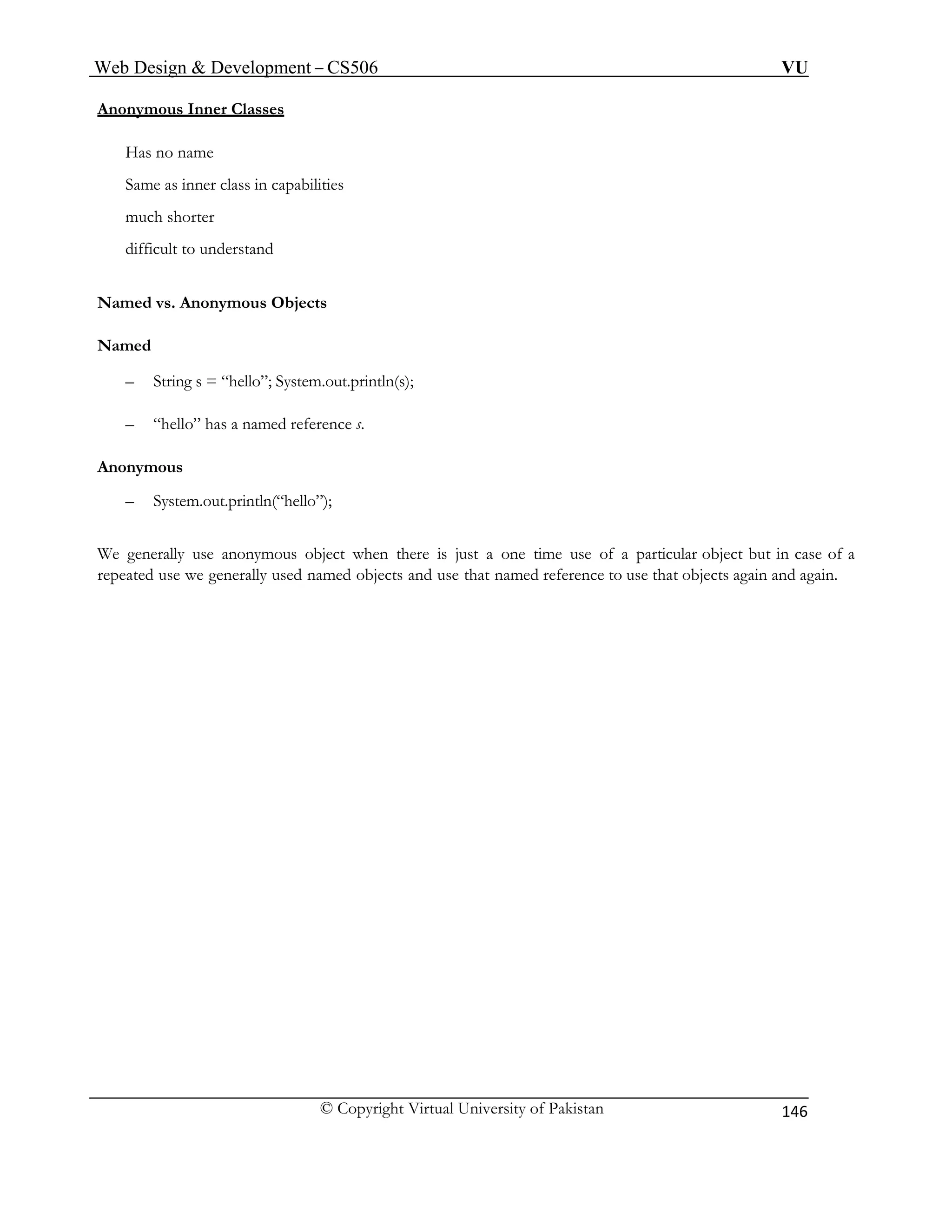
![Web Design & Development – CS506 VU
© Copyright Virtual University of Pakistan
147
Example Code 13.4 Handling Window Event with Anonymous Inner Class
Here we are modifying the window event code of 13.3 to show the use of anonymous inner class.
28. import java.awt.*;
29. import javax.swing.*;
30. import java.awt.event.*;
31. public class EventsEx extends WindowAdapter {
32. JFrame frame;
33. JLabel coordinates;
// setting layout
34. public void initGUI ( ) {
// creating event generator
35. frame = new JFrame();
36. Container cont = frame.getContentPane();
37. cont.setLayout(new BorderLayout( ) );
38. coordinates = new JLabel ();
// registering event handler (anonymous inner class)
52. initGUI();
39. cont.add(coordinates, BorderLayout.NORTH);
// with generator by using
40. frame.addWindowListener (
41. new WindowAdapter ( ) {
42. public void windowClosing (WindowEvent we) {
43. JOptionPane.showMessageDialog(null, “Good Bye”);
44. System.exit(0);
45. } // end window closing
46. } // end WindowAdapter
47. ); // end of addWindowListener
48. frame.setSize(350, 350);
49. frame.setVisible(true);
50. } // end initGUI method
//default constructor
51. public EventsEx ( ) {
53. }
54. public static void main(String args[]) {
55. EventsEx ex = new EventsEx();
56. }
57. } // end class](https://image.slidesharecdn.com/webdesignanddevelopment-cs506handouts-141110100145-conversion-gate01/75/Web-design-and-development-cs506-handouts-147-2048.jpg)
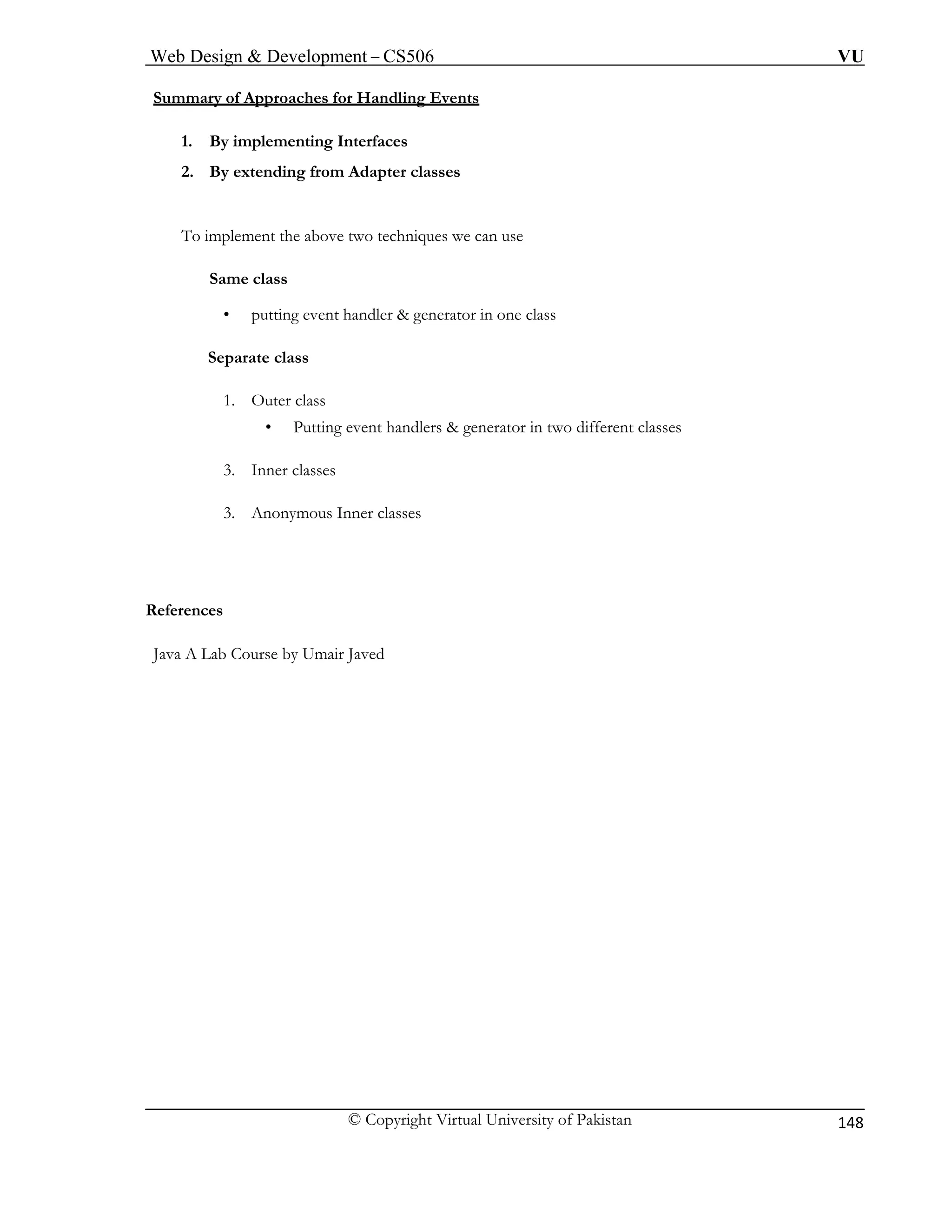
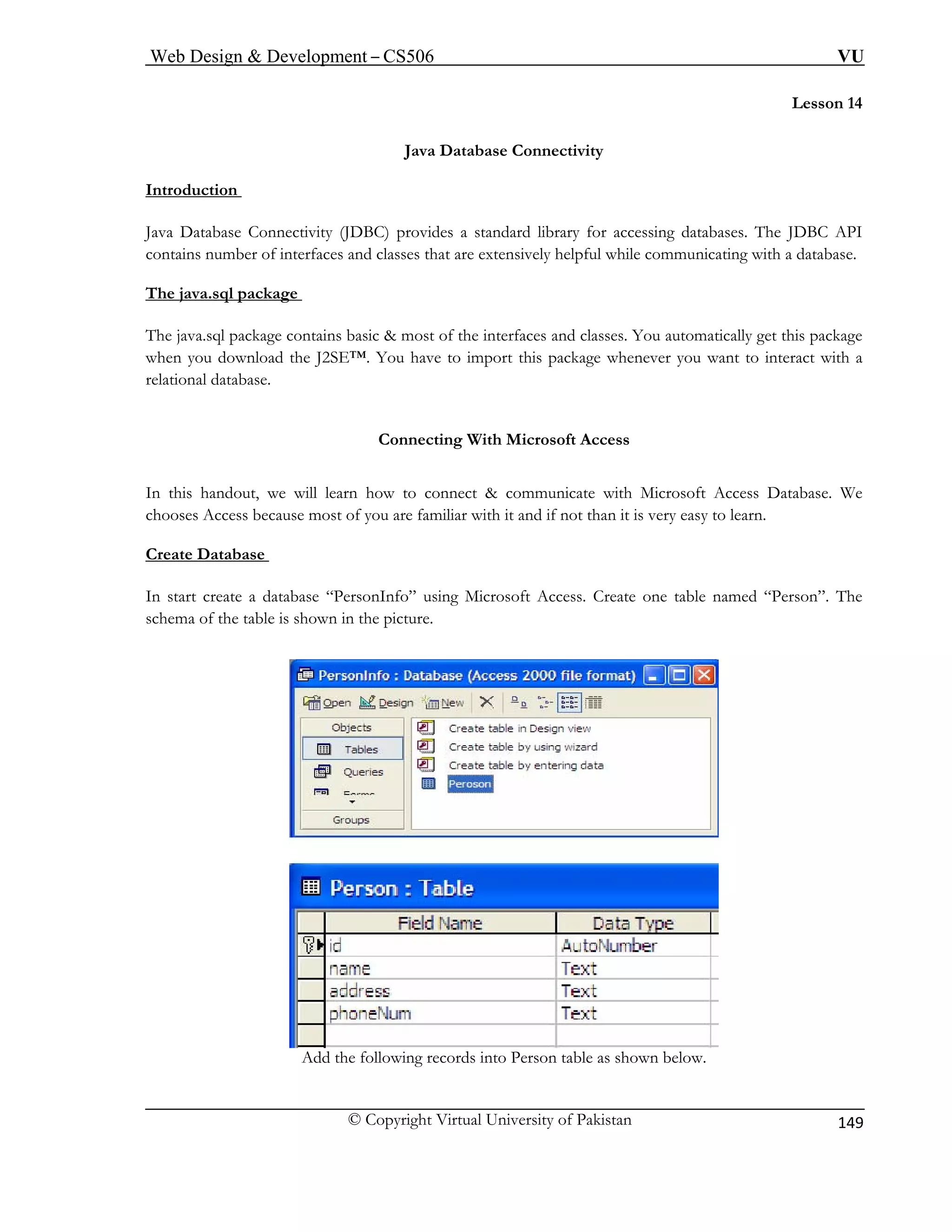

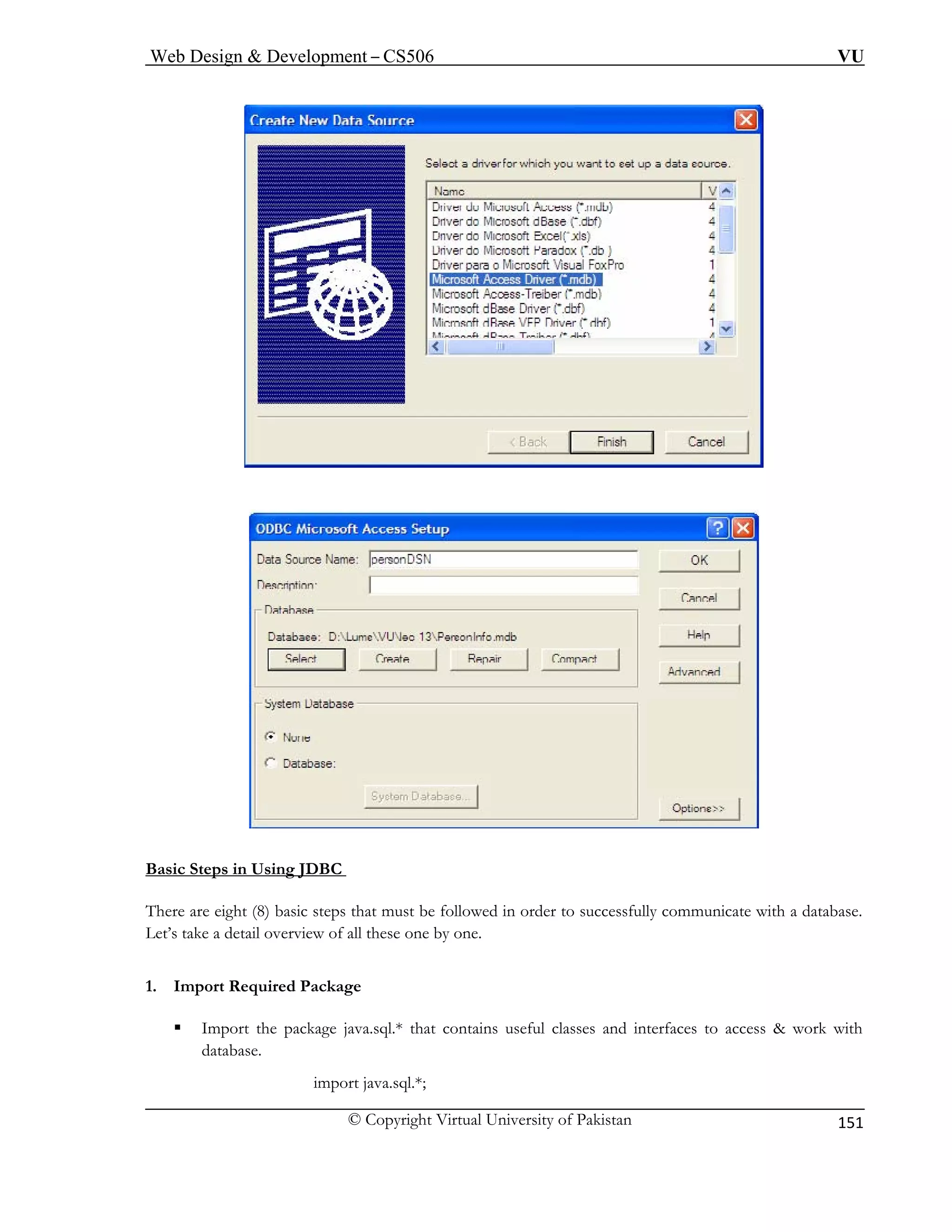
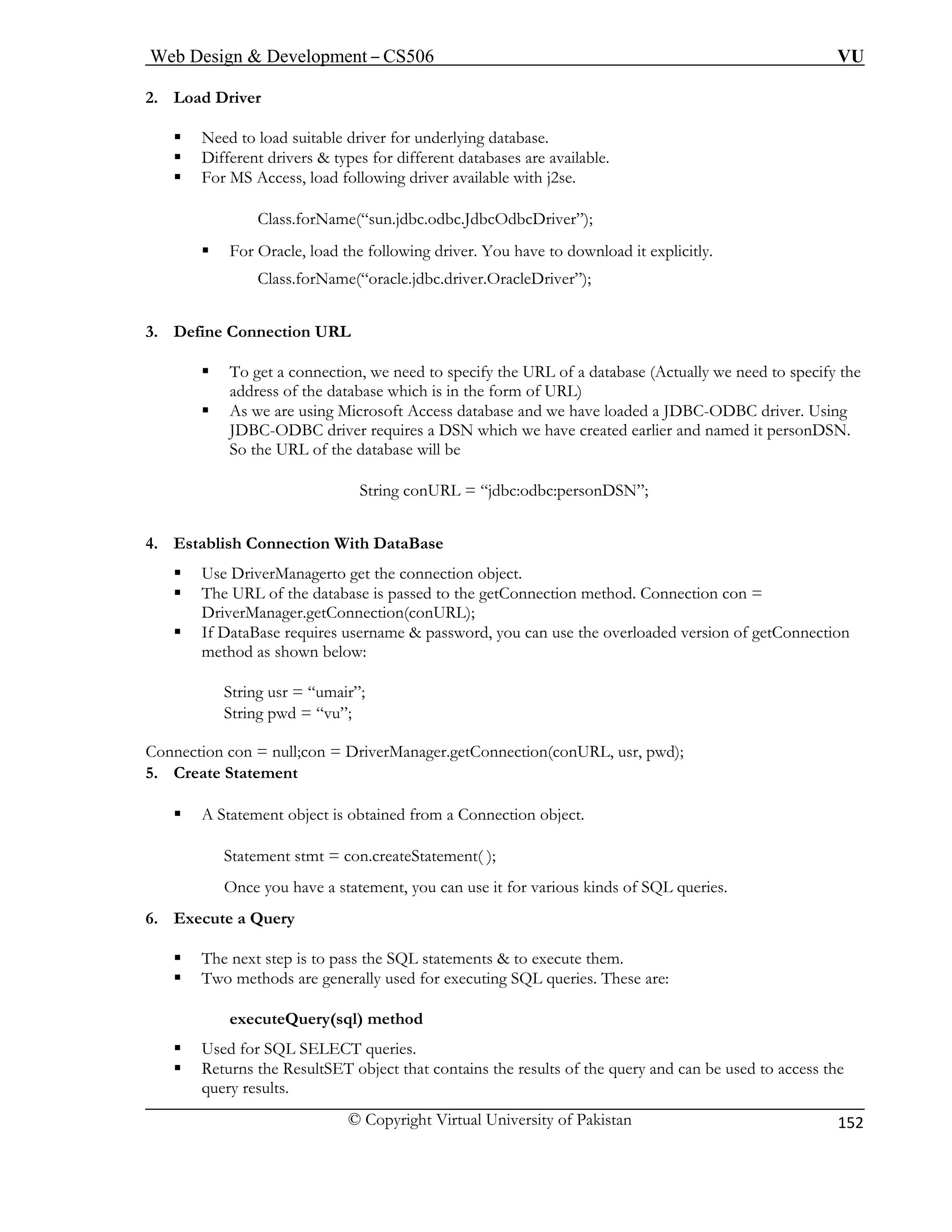
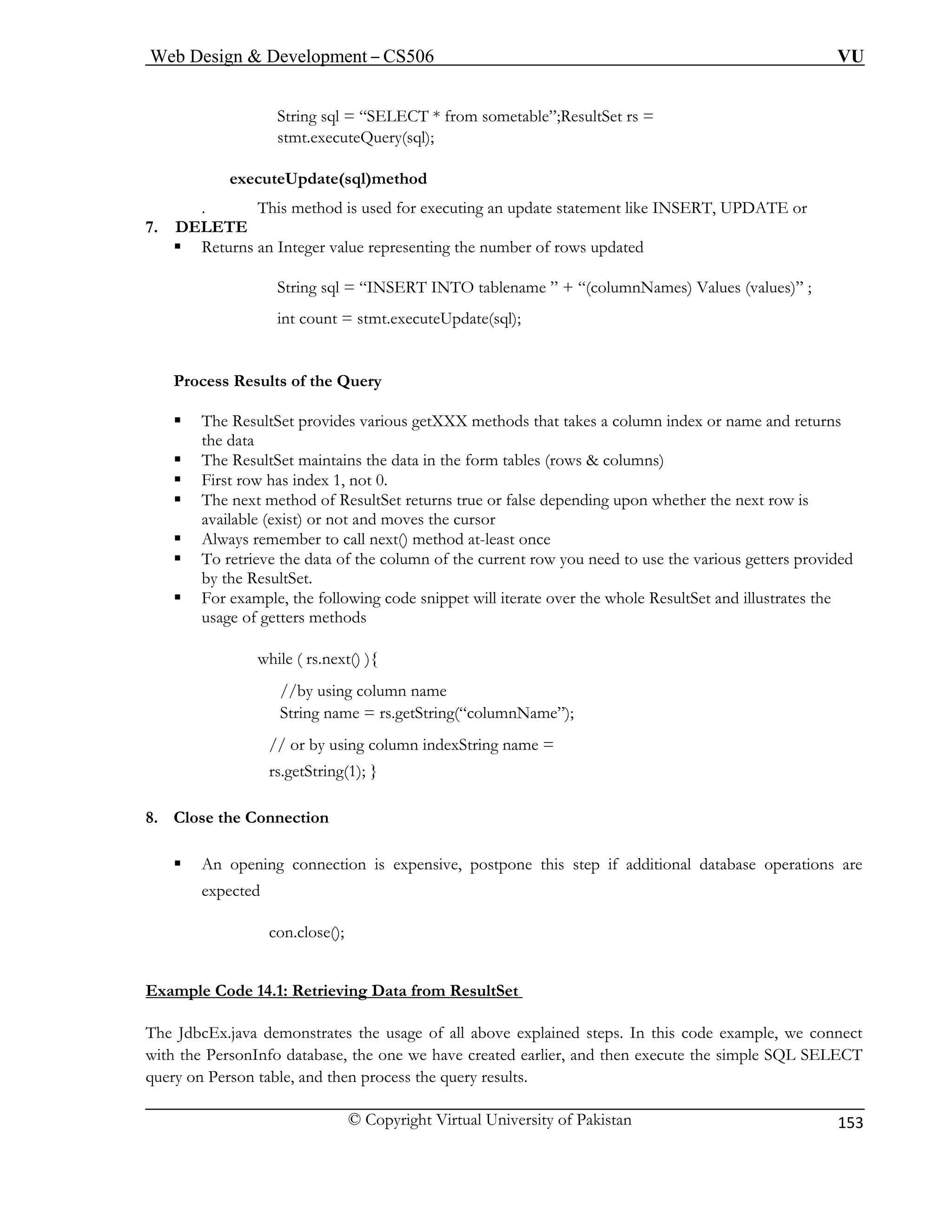
![Web Design & Development – CS506 VU
© Copyright Virtual University of Pakistan
154
// File Jd
//step 1: import packageimport java.sql.*;
public cla
publi ng args[ ]) {
try {
//S driverClass.forName(“sun.jdbc.odbc.JdbcOdbcDriver”);
//Step 3: define the connection URL
String url = “jdbc:odbc:personDSN”;
on
ger.getConnection(url);
//Step 5: create Statement
ement();
//Step 6: preapare & execute the query
FROM Person”;
ResultSet rs = st.executeQuery(sql);
//Step 7: process the results
while(rs.next()){
// The row name is “name” in database “PersonInfo,// hence specified in the getString()
method.
String name = rs.getString(“name”);String add = rs.getString(“address”);String
pNum = rs.getString(“phoneNum”);
System.out.println(name + “ ” + add + ” ” + pNum);}
//Step 8: close the connection
con.close();
(Exception sqlEx){
System.out.println(sqlEx);
}
} //
e important thing you must notice that we have put all code inside try block and then handle (in the
above example, only printing the name of the exception raised) exception inside catch block.
bcEx.java
ss JdbcEx {
c static void main (Stri
tep 2: load
//Step 4: establish the connectiConnection con = DriverMana
Statement st = con.createStat
String sql = “SELECT *
}catch
end main} // end class
Th](https://image.slidesharecdn.com/webdesignanddevelopment-cs506handouts-141110100145-conversion-gate01/75/Web-design-and-development-cs506-handouts-154-2048.jpg)
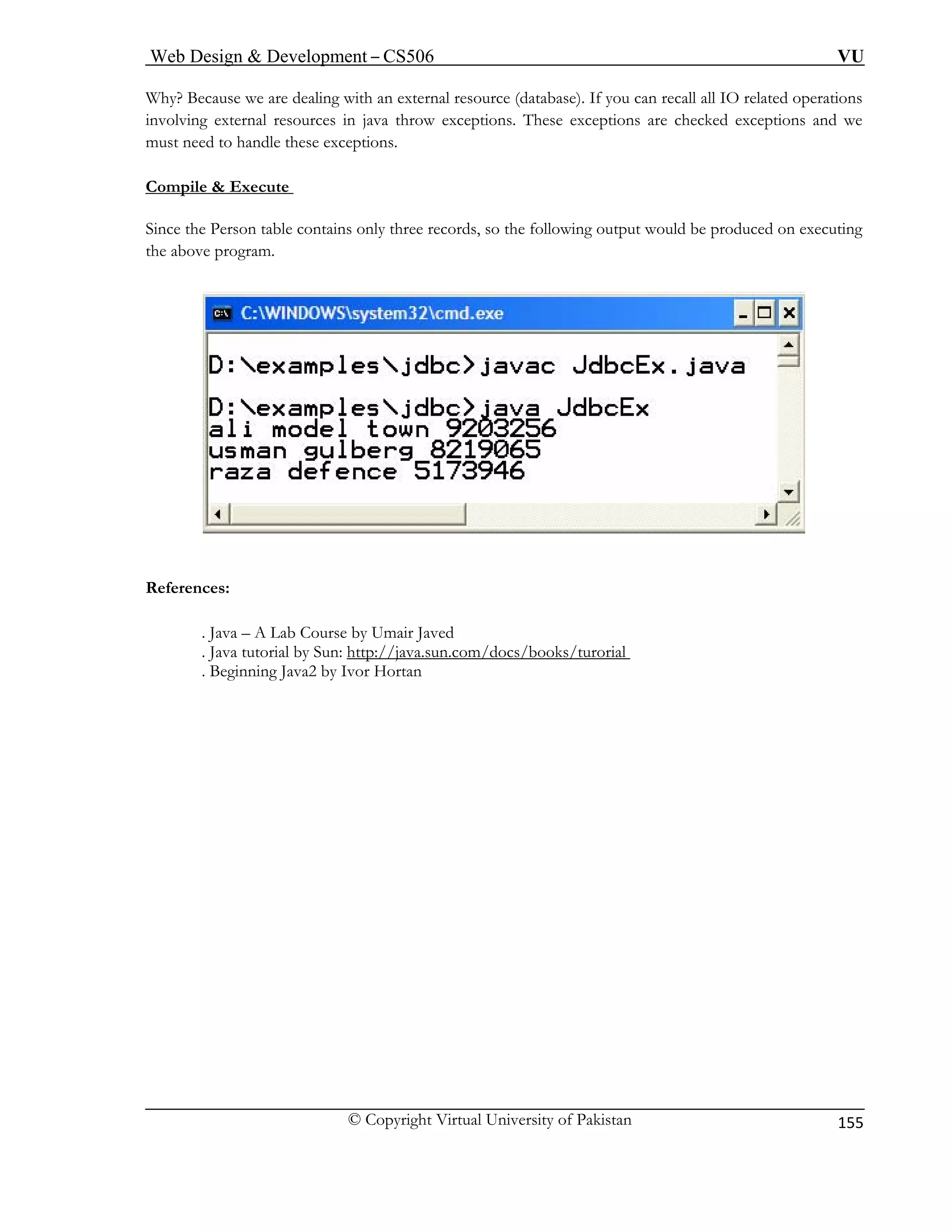
![Web Design & Development – CS506 VU
© Copyright Virtual University of Pakistan
156
Lesson 15
More on JDBC
In the pr w to execute SQL statements. In this handout, we’ll learn
how to ex ods provided by the JDBC
API.
Before ju ets take a brief overview of executeUpdate()method that is used for
executing DML statements.
Useful S
evious handout, we have discussed hoecute DML (insert, update, delete) statements as well some useful meth
mping on to example, l
tatement Methods:
o executeUpdate( )
. Us ATE, or DELETE SQL statements.
. Th he number of rows that were affected in the database.
. . efinition Language) statements CREATE TABLE, DROP
TA tc. For example,
int num = stmt.executeUpdate(“DELETE from Person WHERE id = 2” );
Example Code 15.1: Executing SQL DML Statements
This program will take two command line arguments that are used to update records in the database.
executeUpdate( ) method will be used to achieve the purpose stated above.
//step 1: import packageimport java.sql.*; public class
JdbcDmlEx {public static void main (String args[ ]) { try {
//Step 2: load driverClass.forName(“sun.jdbc.odbc.JdbcOdbcDriver”);
//Step 3: define the connection URL
String url = “jdbc:odbc:personDSN”;
//Step 4: establish the connection
Connection con = DriverManager.getConnection(url);
// assigning first command line argument value
String addVar = args[0];
// assigning second command line argument value
ed to execute for INSERT, UPDis method returns t
Also supports DDL (Data DBLE, and ALERT TABLE e
// File JdbcDmlEx.java
//Step 5: create Statement Statement st = con.createStatement();](https://image.slidesharecdn.com/webdesignanddevelopment-cs506handouts-141110100145-conversion-gate01/75/Web-design-and-development-cs506-handouts-156-2048.jpg)
![Web Design & Development – CS506 VU
© Copyright Virtual University of Pakistan
157
String nameVar = args[1]; // preparing query – nameVar & addVar strings are embedded
// into query within ‘” + string + “’
String sql = “UPDATE Person SET address = ‘”+addVar+”’” +
“ WHERE name = ‘”+nameVar+”’ ”;
// executing query
int num = st.executeUpdate(sql);
// Step 7: process the results of the query
// printing number of records affected
System.out.println(num + “ records updated”);
//Step 8: close the connection
con.close();
}catch(Exception sqlEx){
System.out.println(sqlEx);
}
} // end main} // end class
ompil Exe
Ce &cute
The Person table is shown in the following diagram before execution of the program. We want to update
first row i.e address of the person ali.
The next diagram shows how we have executed our program. We passed it two arguments. The first one is
the address (defence) and later one is the name (ali) of the person against whom we want to update the
address value.](https://image.slidesharecdn.com/webdesignanddevelopment-cs506handouts-141110100145-conversion-gate01/75/Web-design-and-development-cs506-handouts-157-2048.jpg)
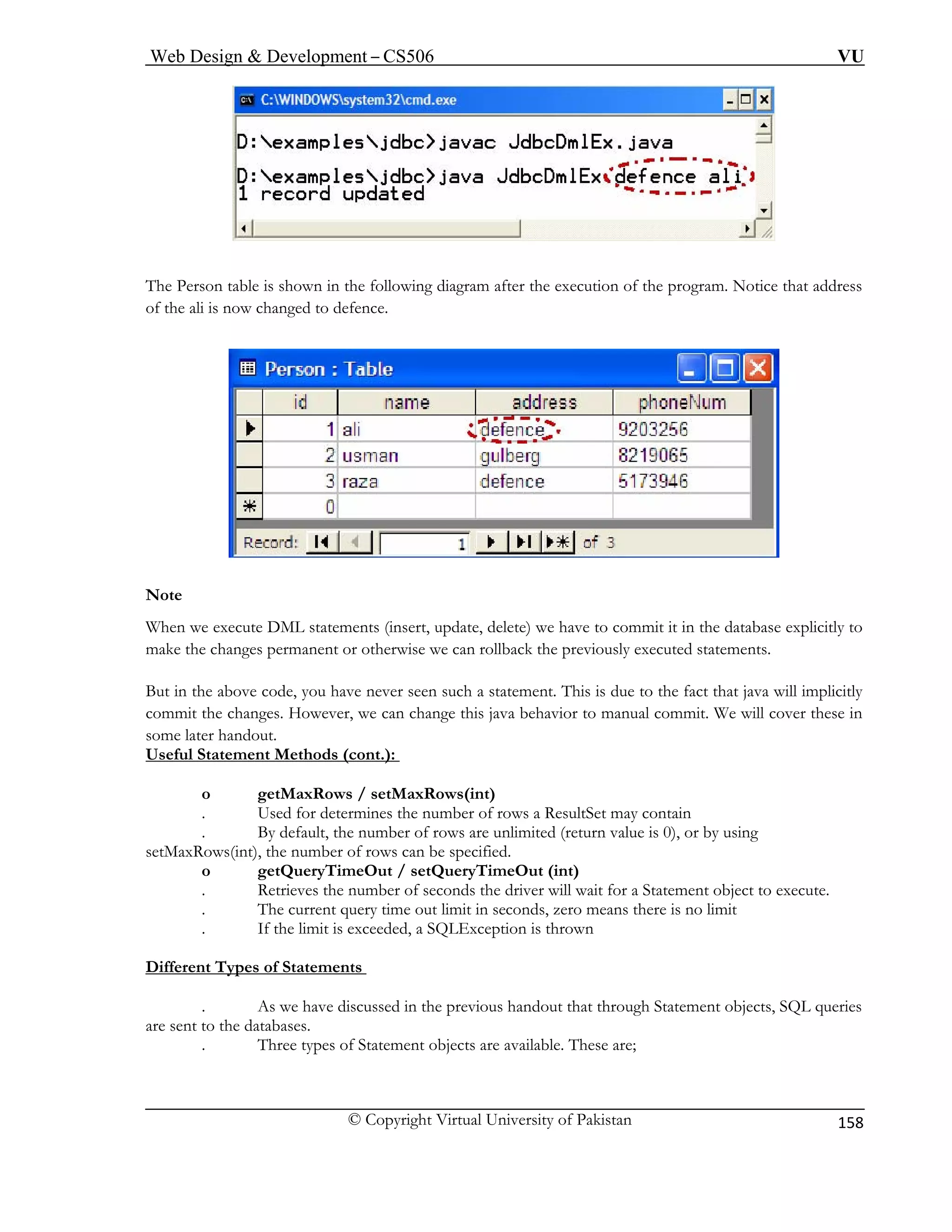
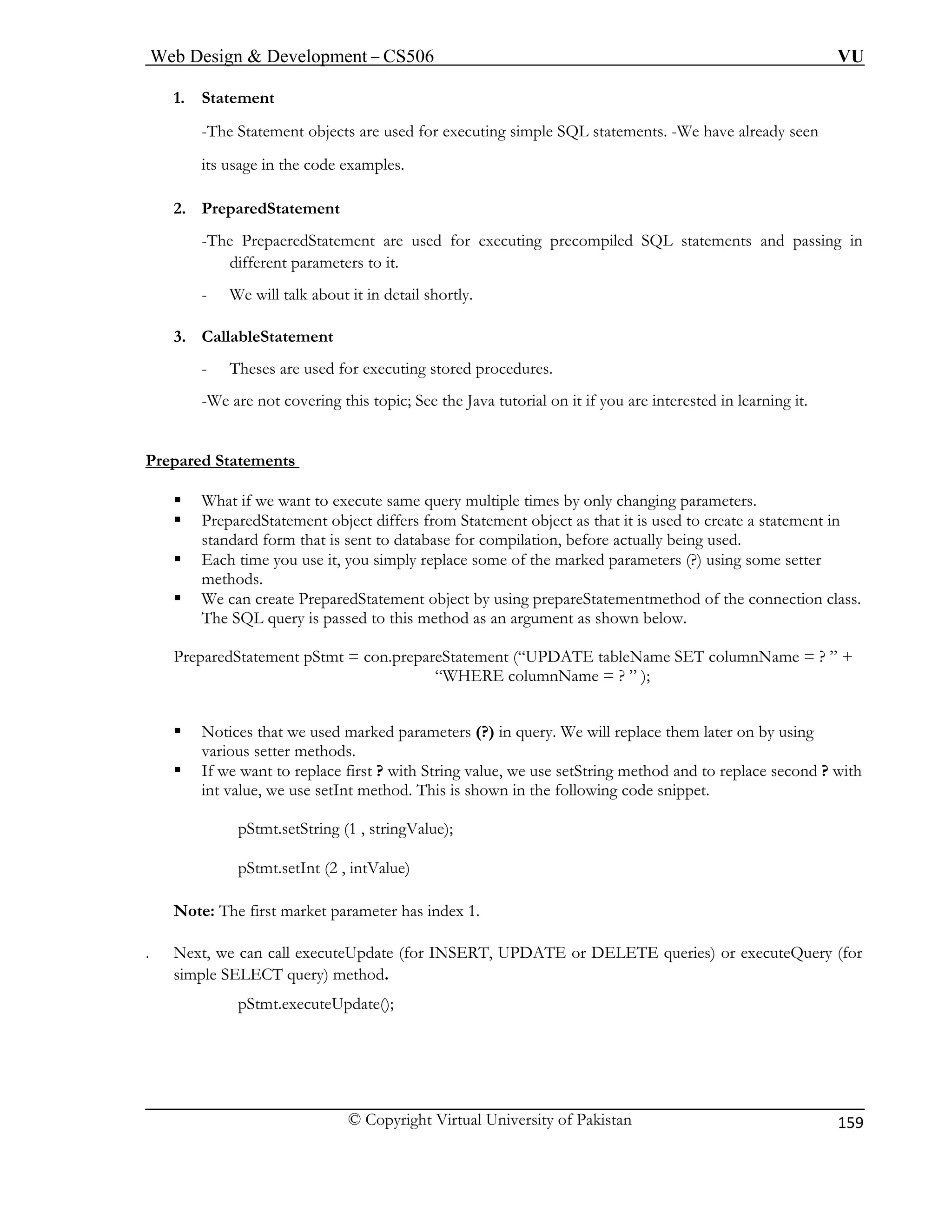
![Web Design & Development – CS506 VU
© Copyright Virtual University of Pakistan
160
Modify E
This exam the last example code (JdbcDmlEx.java).The modifications are
highlighte
// File JdbcDmlEx.java
//step 1 l.*;
public s JdbcDmlEx {public static void main (String
args[ ]) { try {
//Step 2: load driverClass.forName(“sun.jdbc.odbc.JdbcOdbcDriver”);
//Step 3: define the connection URL
String url = “jdbc:odbc:personDSN”;
l, ””, ””);
// make query and place ? where values are to
//be inserted later
String sql = “UPDATE Person SET address = ? “ + “ WHERE name
// assigning first command line argument valueString addVar = args[0];
// assigning second command line argument valueString nameVar = args[1]; //
setting first marked parameter (?) by using setString()// method to address.
pStmt.setString(1 , addVar);
// setting second marked parameter(?) by using setString()// method to name
pStmt.setString(2 , nameVar);
// suppose address is “defence” & name is “ali”
// by setting both marked parameters, the query will look
// like:
// sql = “UPDATE Person SET address = “defence”
// WHERE name = “ali” ”
// executing update statemnt
int num = pStmt.executeUpdate();
xample Code 15.1: Executing SQL DML using Prepared Statements
ple code is modification to d as bold face.
: import packageimport java.sqclas
//Step 4: establish the connection Connection con = DriverManager.getConnection(ur
= ? ”; // creating statement using Connection object and passing // sql statement as parameter PreparedStatement pStmt = con.prepareStatement(sql);](https://image.slidesharecdn.com/webdesignanddevelopment-cs506handouts-141110100145-conversion-gate01/75/Web-design-and-development-cs506-handouts-160-2048.jpg)
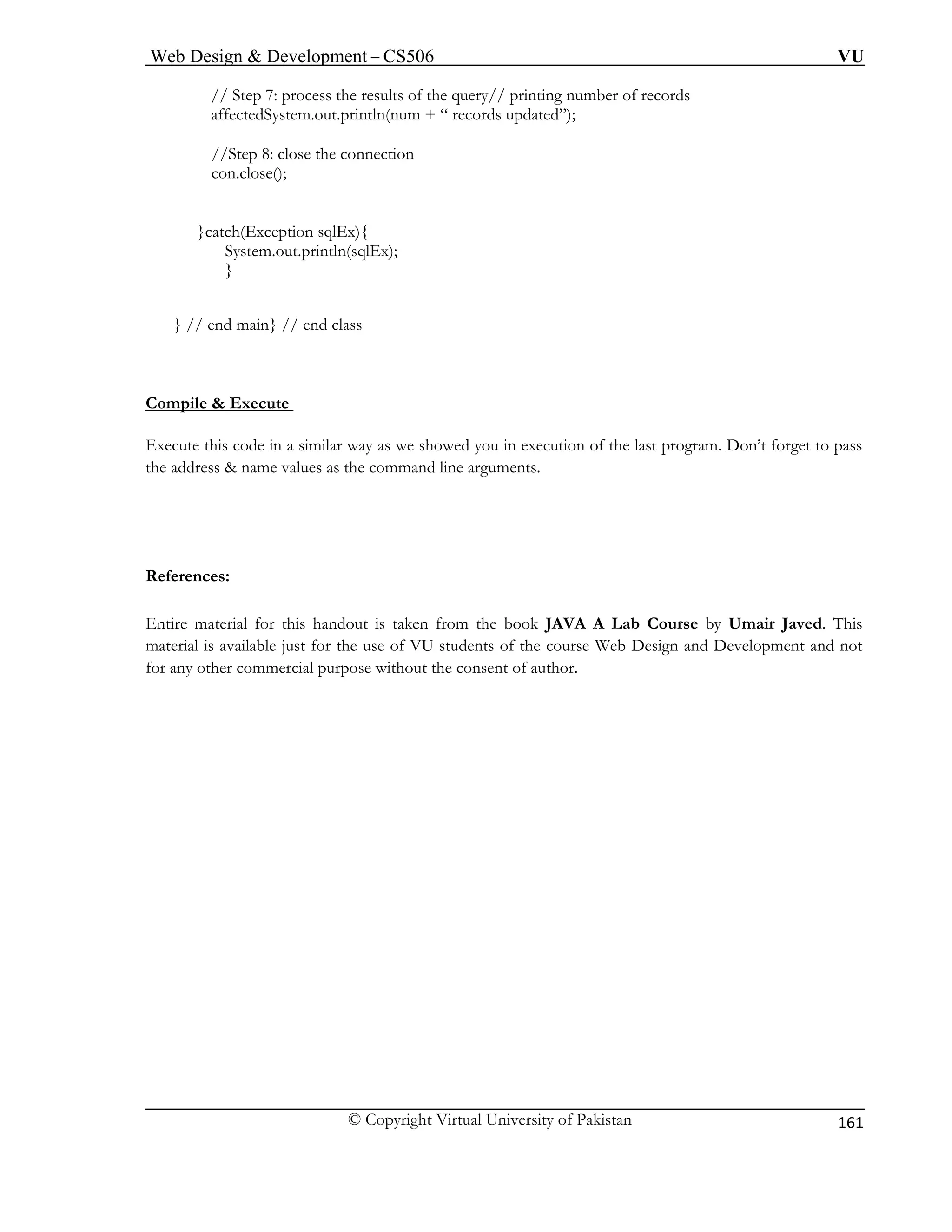
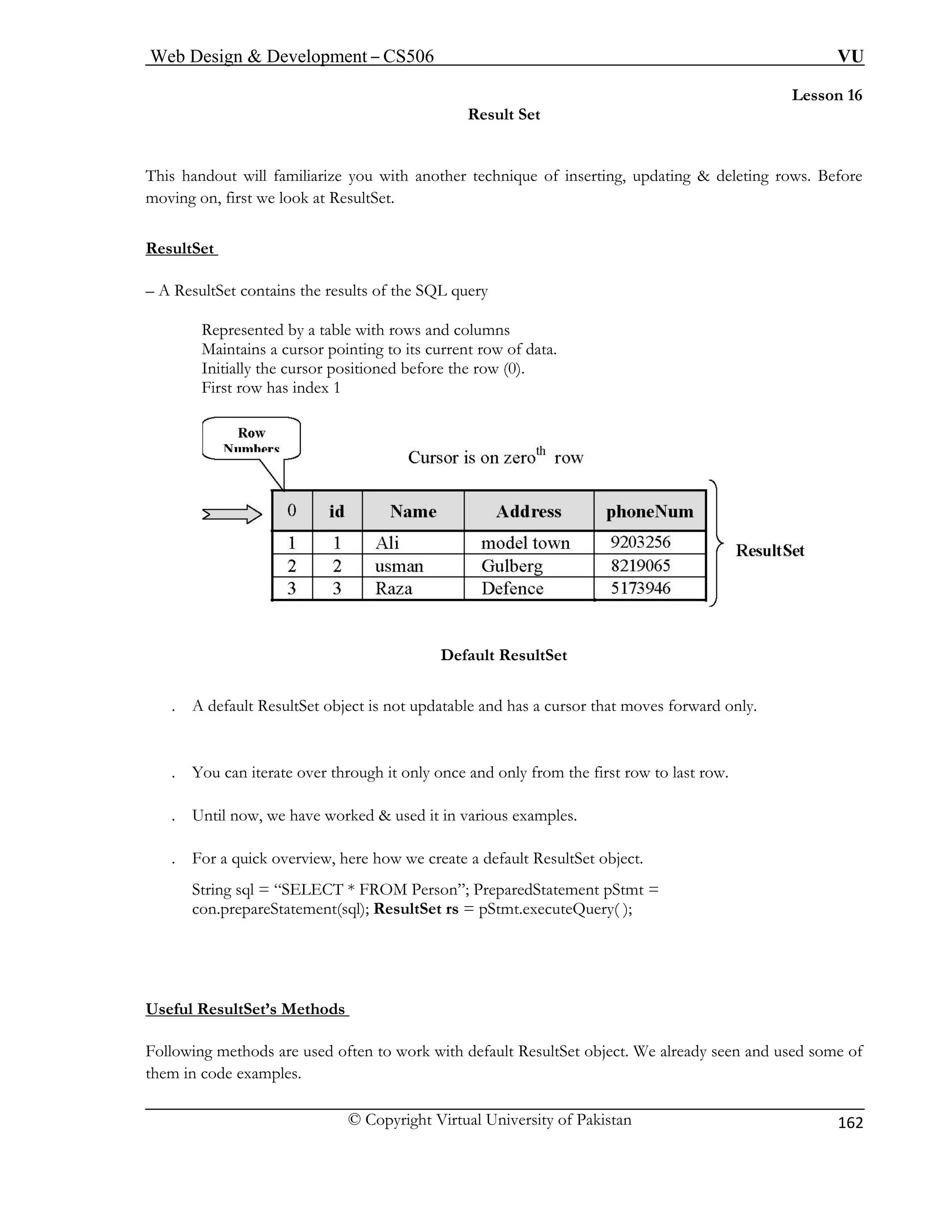
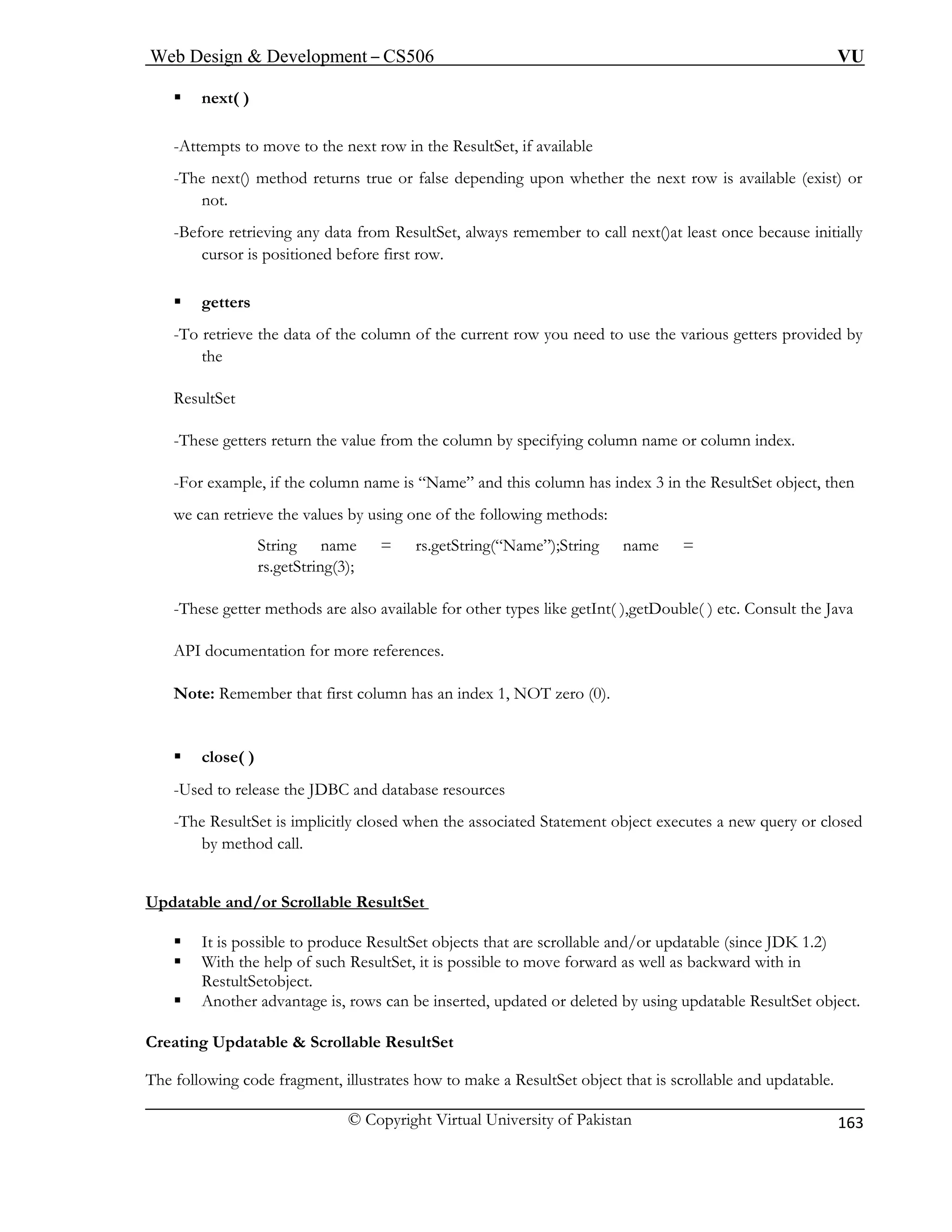
![Web Design & Development – CS506 VU
© Copyright Virtual University of Pakistan
164
String sql = “SELECT * FROM Person”;
tSet.TYPE_SCROLL_INSENSITIVE,ResultSet.CONCUR
_UPDATABLE);
eQuery( );
constants have been used of ResultSet class for producing a ResultSet rs that is scrollable, will not
show changes made by others and will be updatable
Useful ResultSet’s Methods (cont.)
PreparedStatement pStmt =
con.prepareStatement(sql,Resul
ResultSet rs = pStmt.execut
Two
The methods discussed in this section can only be used with updatable/scrollable ResultSet object.
. previous( )
-Moves the cursor to the previous row in the ResultSet object, if available -Returns true if
cursor is on a valid row, false it is off the result set. -Throws exception if result type is
TYPE_FORWARD_ONLY.
Example Code 16.1: Use of previous( ), next( ) & various getters methods
The ResultSetEx.java shows the use of previous, next and getters methods. We are using the same Person
table of PersonInfo database, the one we had created earlier in this example and later on.
1 // File ResultSetEx.java
2 import java.sql.*;
3 public class ResultSetEx {
4 public static void main (String args[ ]) {
5 try {
6
7
8
9
10 //Step 4: establish the connection
11 Connection con = DriverManager.getConnection(url);
12 //Step 5: creating PrepareStatement by passing sql and
13 //ResultSet’s constants so that the ResultSet that will
14
15 //scrollable & updatable
16 ”;
17 PreparedStatement pStmt = con.prepareStatement(sql,
18 ResultSet.TYPE_SCROLL_INSENSITIVE,
19 ResultSet.CONCUR_UPDATABLE);
20
21
//Step 2: load driver Class.forName(“sun.jdbc.odbc.JdbcOdbcDriver”);
//Step 3: define the connection URL String url = “jdbc:odbc:personDSN”;
//produce as a result of executing query will be String sql = “SELECT * FROM Person
//Step 6: execute the query ResultSet rs = pStmt.executeQuery();](https://image.slidesharecdn.com/webdesignanddevelopment-cs506handouts-141110100145-conversion-gate01/75/Web-design-and-development-cs506-handouts-164-2048.jpg)
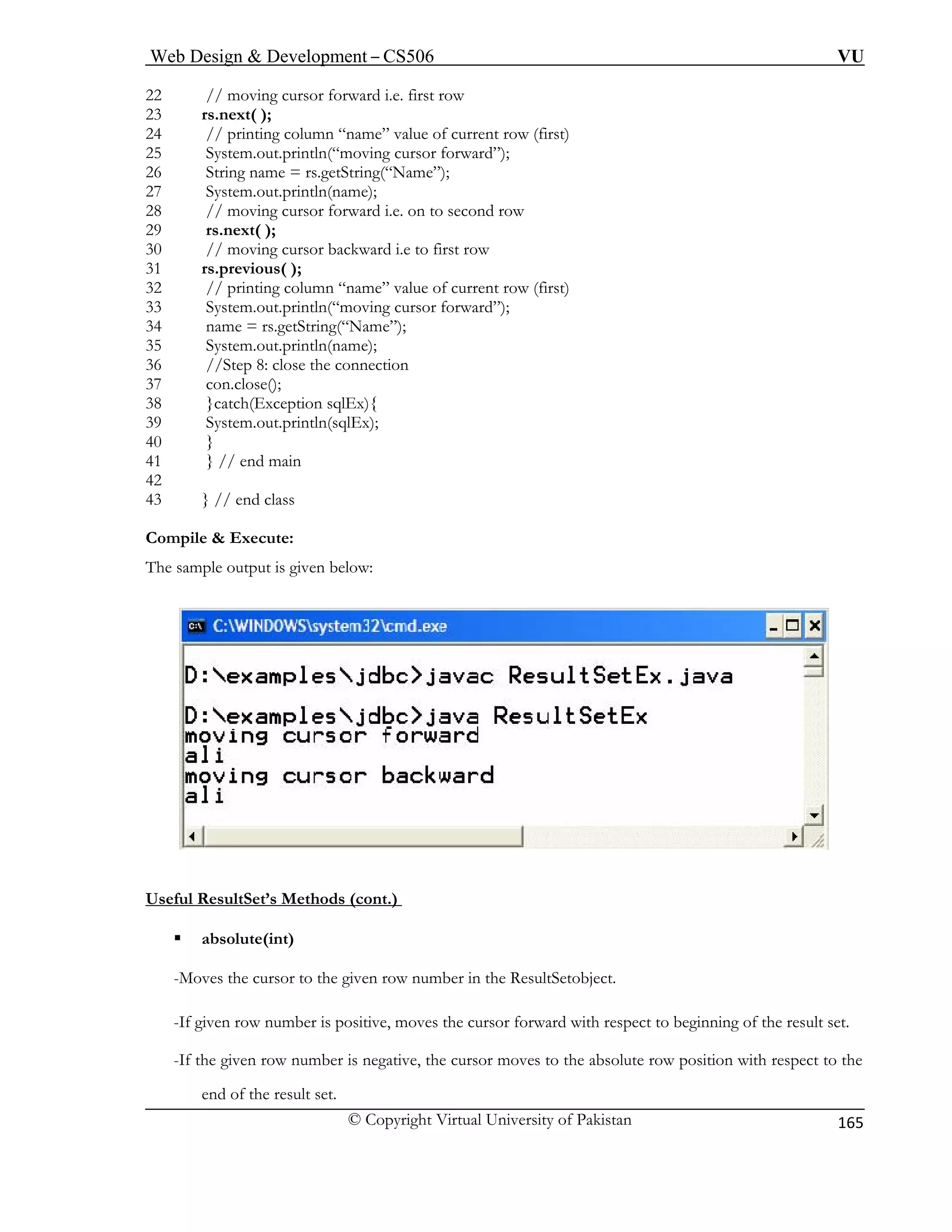
![Web Design & Development – CS506 VU
© Copyright Virtual University of Pakistan
166
-For example, calling absolute(-1) positions the cursor on the last row; calling absolute(-2) moves the
-last row, and so on.
-Throws Exception if ResultSet type is TYPE_FORWARD_ONLY
ƒ updaters (for primitives, String and Object)
-Used to update the column values in the current row or in insert row (discuss later)
-Do not update the underlying database
-Each update method is overloaded; one that takes column name while other takes column index. For
example String updater are available as:
updateString(String columnName, String value)
updateString(String columnIndex, String value)
ƒ updateRow( )
-Updates the underlying database with new contents of the current row of this ResultSetobject
Example Code 16.2: Updating values in existing rows
cursor to next-t
o
The following code example updates the Name column in the second row of the ResultSet object rs and
then uses the method updateRow to update the Person table in database.
This code is the modification of the last one. Changes made are shown in bold face.
1 // File ResultSetEx.java
2 import java.sql.*;
3 public class ResultSetEx {
4 public static void main (String args[ ]) {
5 try {
6 //Step 2: load driver
7 Class.forName(“sun.jdbc.odbc.JdbcOdbcDriver”);
8 //Step 3: define the connection URL
9 String url = “jdbc:odbc:personDSN”;
10 //Step 4: establish the connection
11 Connection con = DriverManager.getConnection(url);
12 //Step 5: create PrepareStatement by passing sql and
13 // ResultSet appropriate fields
14 String sql = “SELECT * FROM Person”;
15 PreparedStatement pStmt = con.prepareStatement(sql,
16 ResultSet.TYPE_SCROLL_INSENSITIVE,
17 ResultSet.CONCUR_UPDATABLE);
18 //Step 6: execute the query
19 ResultSet rs = pStmt.executeQuery();](https://image.slidesharecdn.com/webdesignanddevelopment-cs506handouts-141110100145-conversion-gate01/75/Web-design-and-development-cs506-handouts-166-2048.jpg)
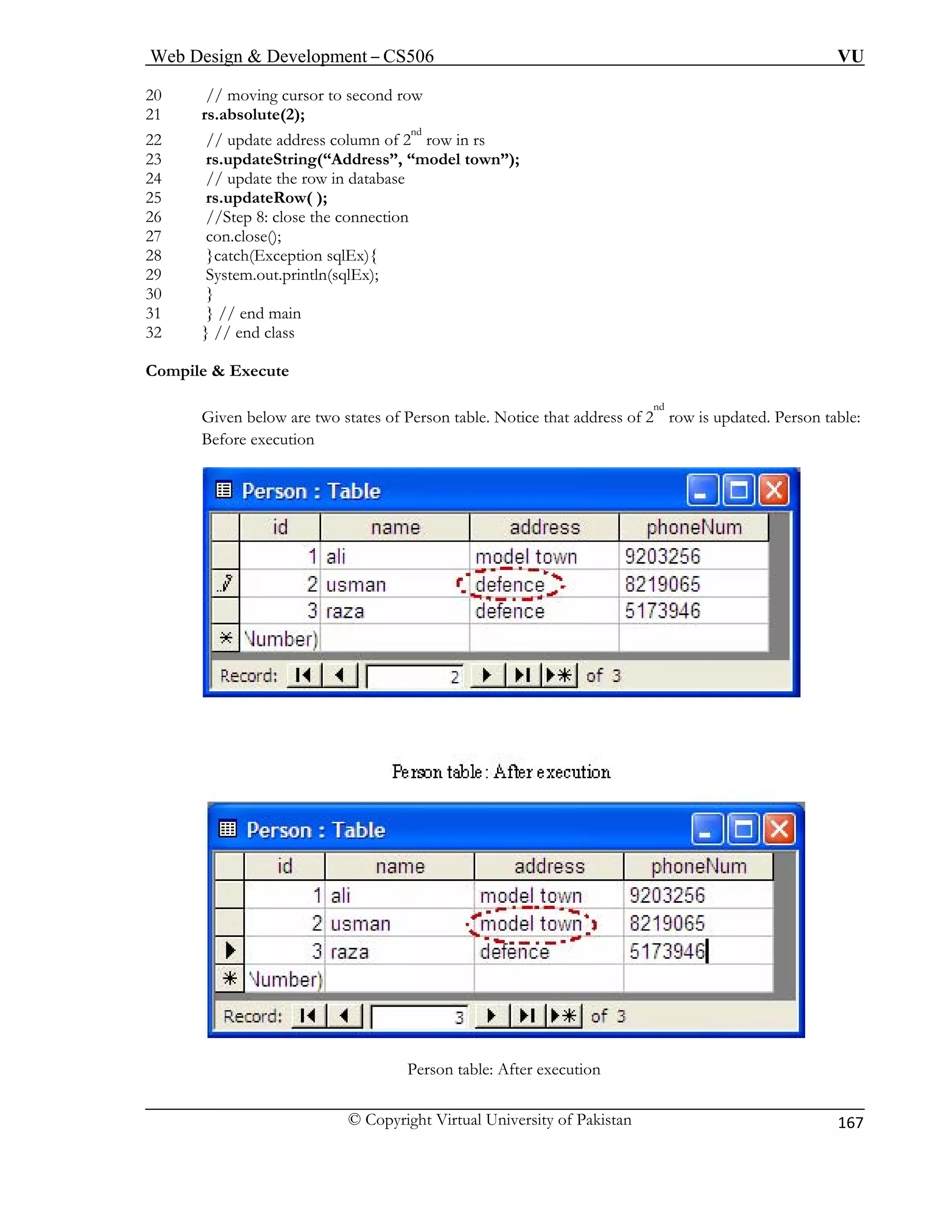
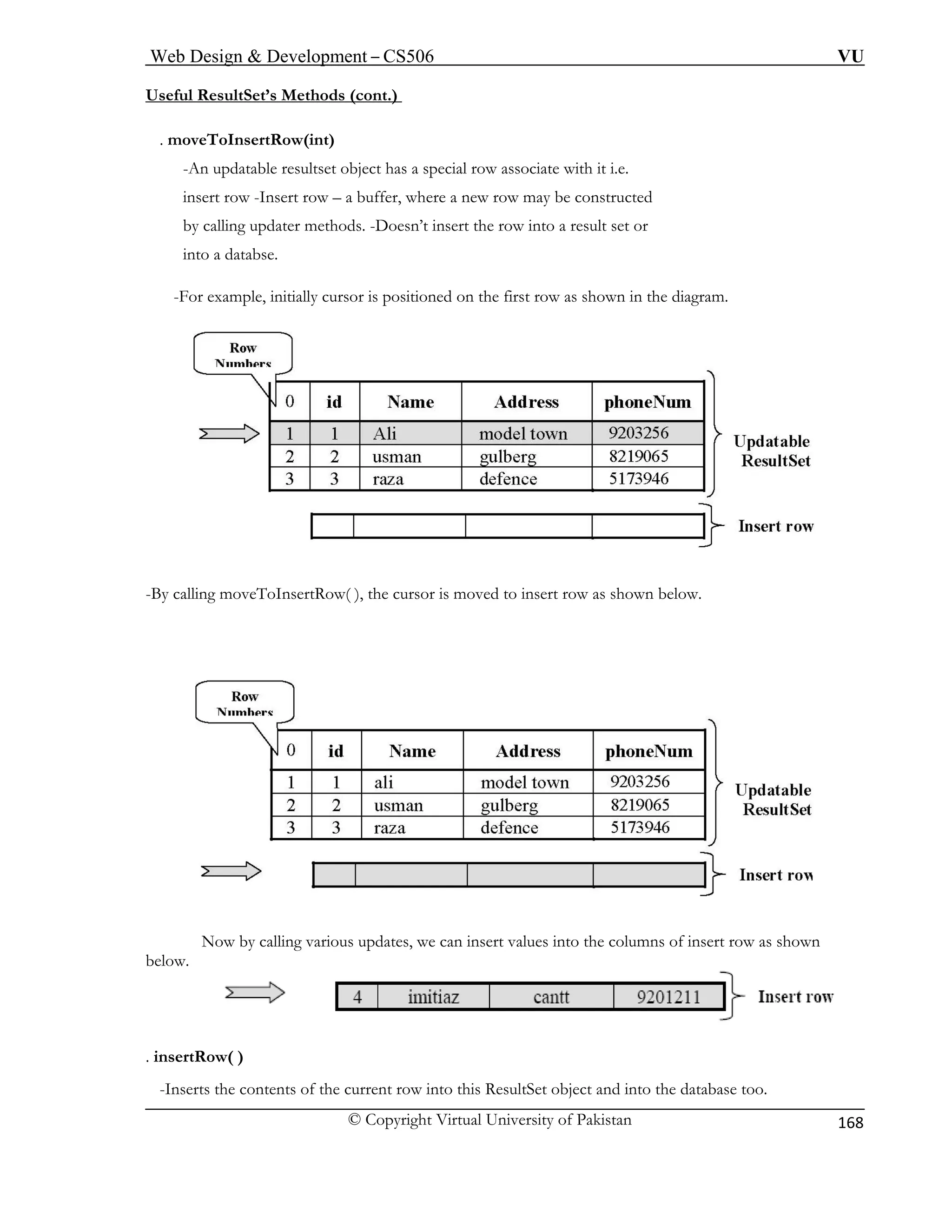
![Web Design & Development – CS506 VU
© Copyright Virtual University of Pakistan
169
-Moves the cursor back to the position where it was before calling moveToInsertRow()
given below diagram
Note: The cursor must be on the insert row before calling this method or exception would be raised.
Example Code 16.3: Inserting new row
-This is shown in the
The following code example illustrates how to add/insert new row into the ResultSet as well into the
database.
This code is the modification of the last one. Changes made are shown in bold face.
1 // File ResultSetEx.java
2 import java.sql.*;
3 public class ResultSetEx {
4 public static void main (String args[ ]) {
5 try {
6 d driver
7 Class.forName(“sun.jdbc.odbc.JdbcOdbcDriver”);
8
9 String url = “jdbc:odbc:personDSN”;
10
11 nection(url);
12 //Step 5: create PrepareStatement by passing sql and
13 ultSet appropriate fields
14 String sql = “SELECT * FROM Person”;
15 PreparedStatement pStmt = con.prepateStatement(sql,
16 ResultSet.TYPE_SCROLL_INSENSITIVE,
17 ResultSet.CONCUR_UPDATABLE);
18 //Step 6: execute the query
19 ResultSet rs = pStmt.executeQuery();
20 // moving cursor to insert row
21
22
23 rs.updateString( “Name” , “imitiaz” );
24 rs.updateString( “Address” , “cantt” );
25 rs.updateString( “phoneNum” , “9201211” );
//Step 2: loa
//Step 3: define the connection URL //Step 4: establish the connection Connection con = DriverManager.getCon
// Res
rs.moveToInsertRow(); // updating values in insert row](https://image.slidesharecdn.com/webdesignanddevelopment-cs506handouts-141110100145-conversion-gate01/75/Web-design-and-development-cs506-handouts-169-2048.jpg)
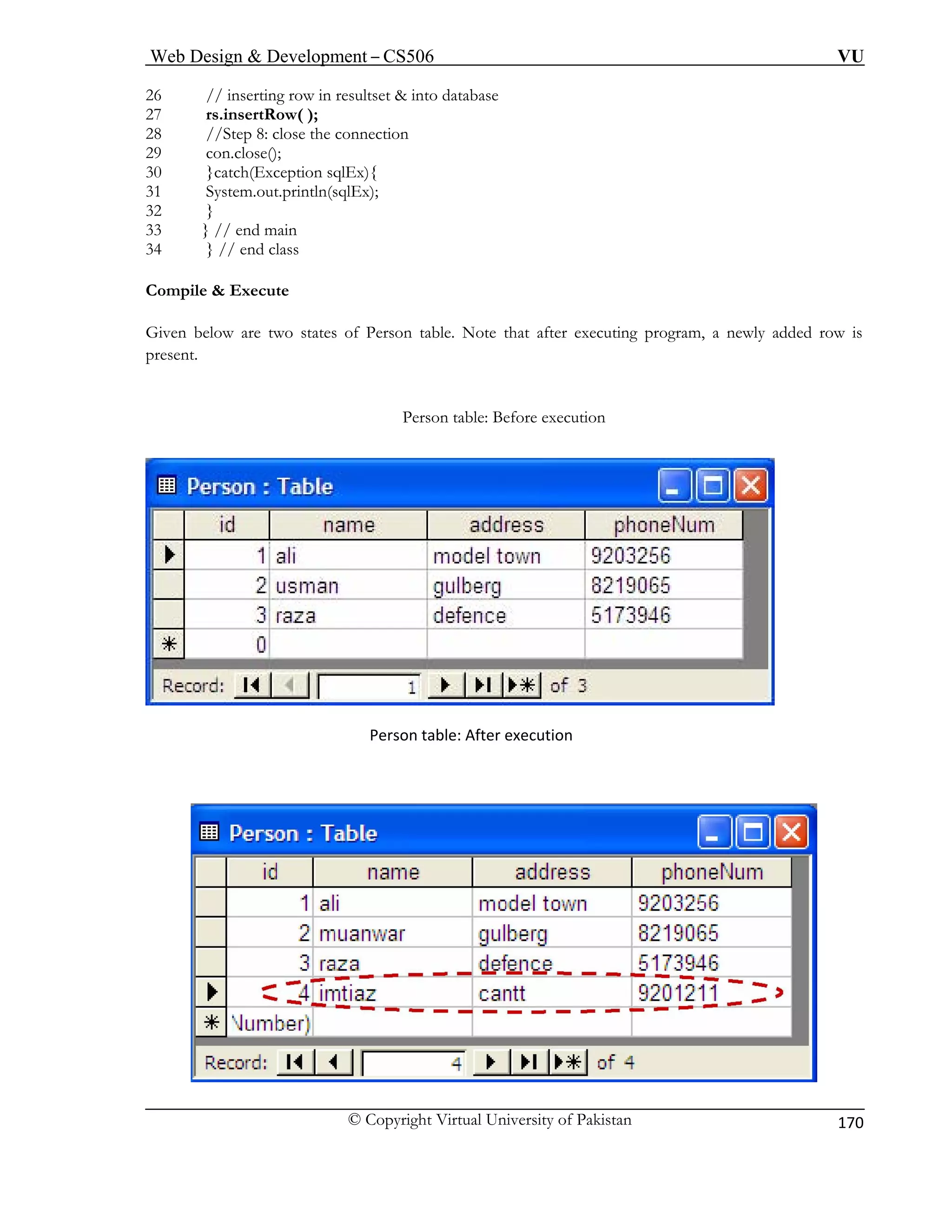
![Web Design & Development – CS506 VU
© Copyright Virtual University of Pakistan
171
Useful ResultSet’s Methods (cont.)
. last( ) & first( )
-Moves the cursor to the last & first row of the ResultSetobject respectively. -Throws exception if
the ResultSet is TYPE_FORWARD_ONLY
. getRow( )
-Returns the current row number
-As mentioned earlier, the first row has index 1 and so on.
. deleteRow( )
row from this ResultSet object and from the underlying database.
-Throws exception if the cursor is on the insert row.
Example Code 16.4: Deleting existing row
-Deletes the current
The given below example code shows the usage of last( ), getRow( ) and deleteRow( ) method.
This code is also the modification of the last one. Changes made are shown in bold face.
1 // File ResultSetEx.java
2 import java.sql.*;
3 public class ResultSetEx {
4 public static void main (String args[ ]) {
5 try {
6 //Step 2: load driver
7 Class.forName(“sun.jdbc.odbc.JdbcOdbcDriver”);
8 //Step 3: define the connection URL
9 String url = “jdbc:odbc:personDSN”;
10 //Step 4: establish the connection
11 Connection con = DriverManager.getConnection(url);
12 //Step 5: create PrepareStatement by passing sql and
13 // ResultSet appropriate fields
14 String sql = “SELECT * FROM Person”;
15 PreparedStatement pStmt = con.prepateStatement(sql,
16 ResultSet.TYPE_SCROLL_INSENSITIVE,
17 ResultSet.CONCUR_UPDATABLE);
18 //Step 6: execute the query
19 ResultSet rs = pStmt.executeQuery();
20 // moves to last row of the resultset
21 rs.last();
22 // retrieving the current row number
23 int rNo = rs.getRow();](https://image.slidesharecdn.com/webdesignanddevelopment-cs506handouts-141110100145-conversion-gate01/75/Web-design-and-development-cs506-handouts-171-2048.jpg)
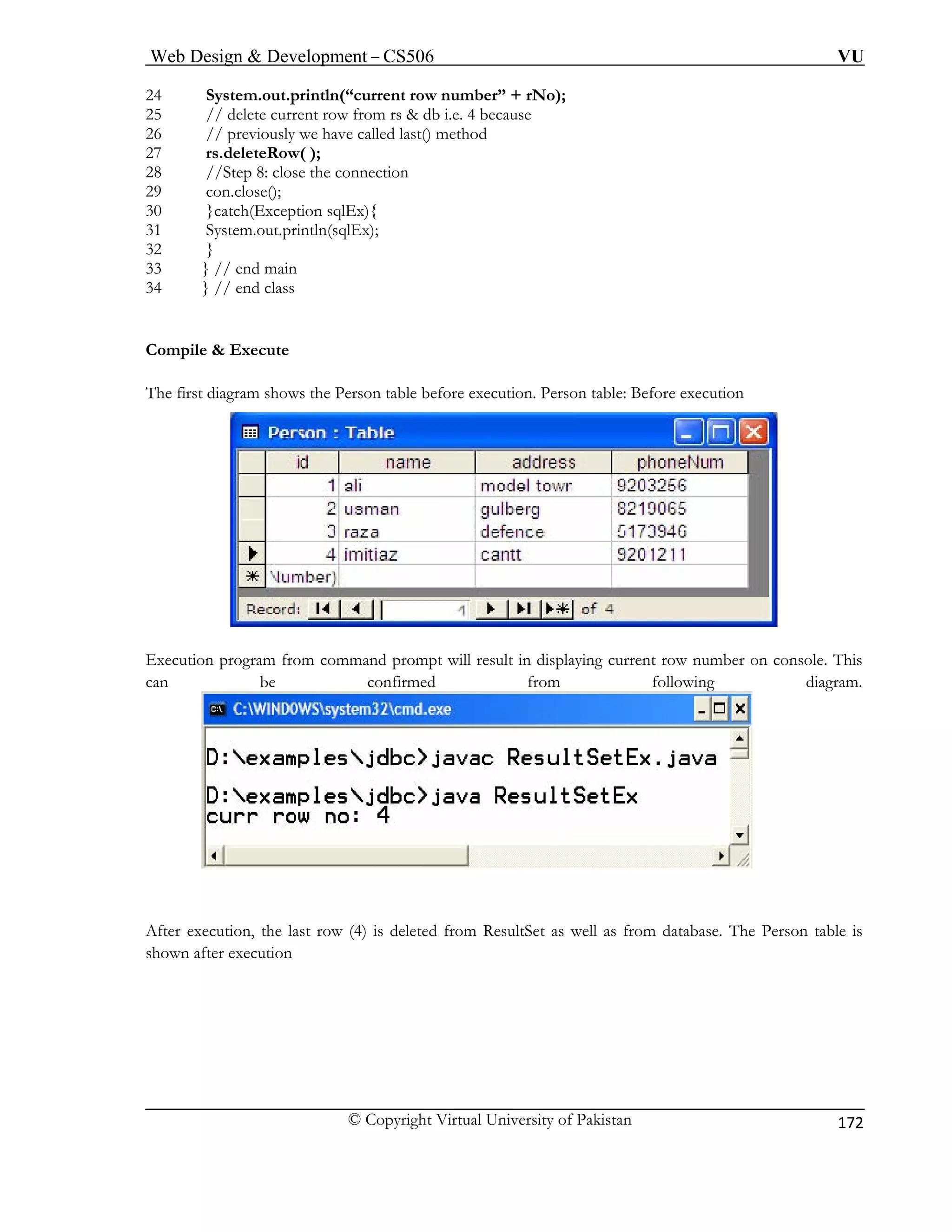
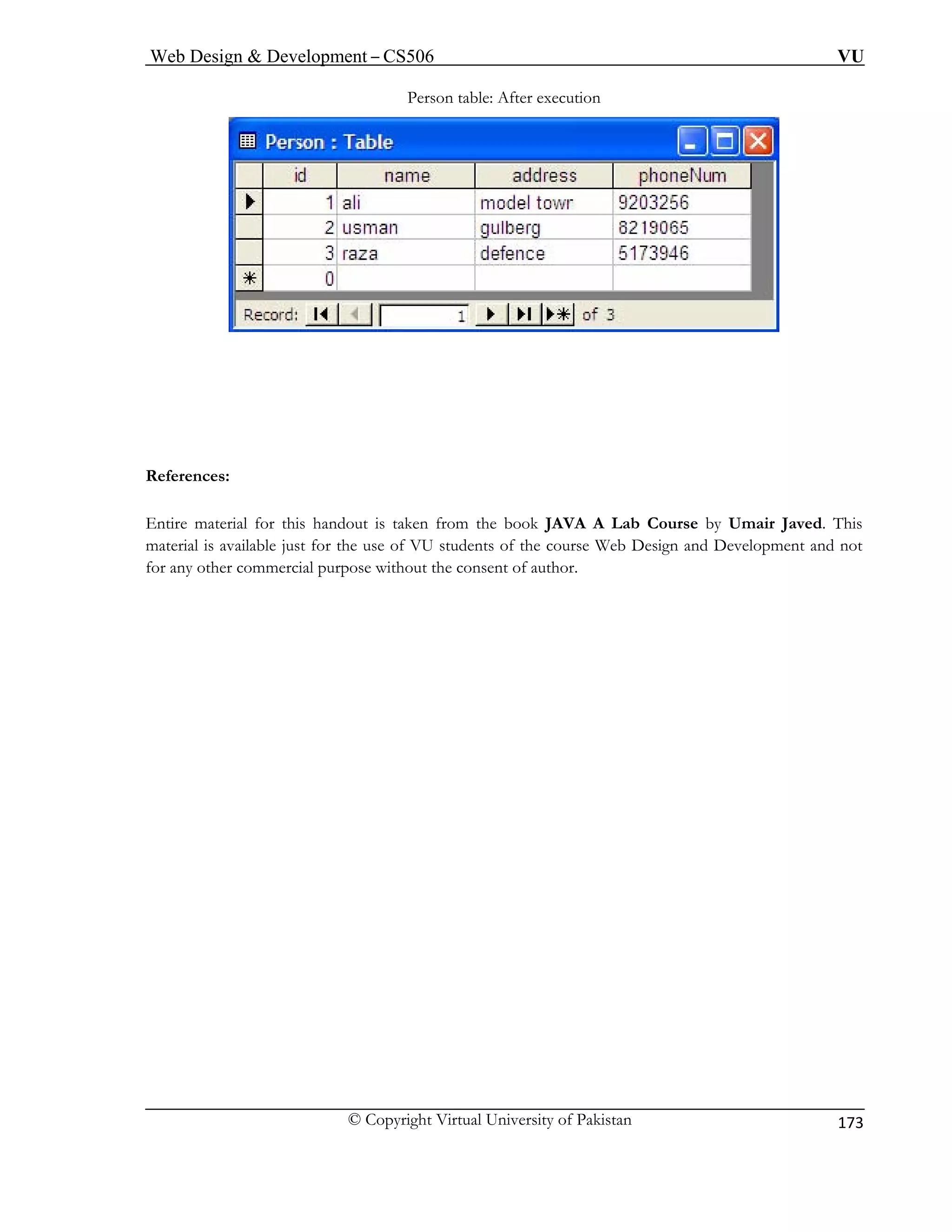
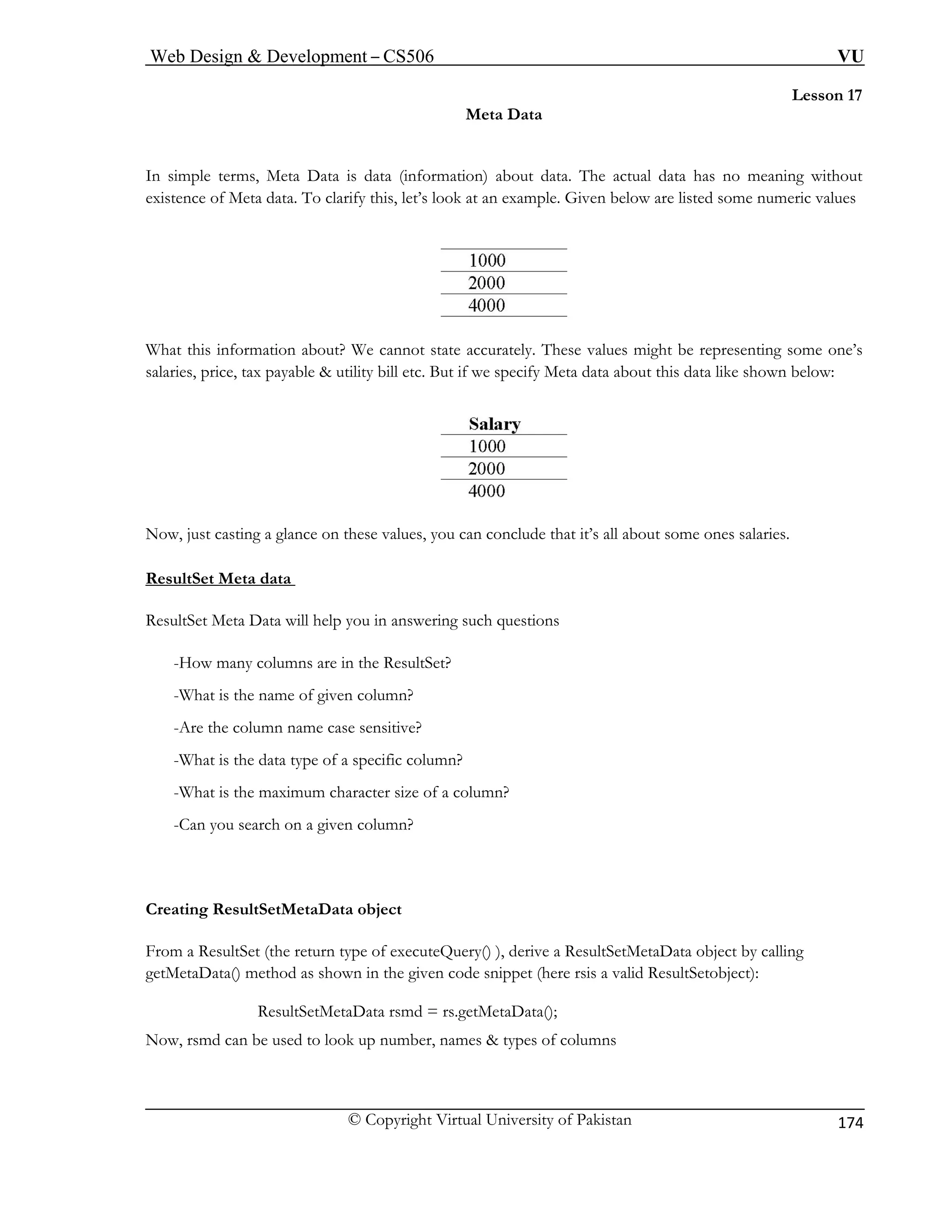
![Web Design & Development – CS506 VU
© Copyright Virtual University of Pakistan
175
Useful ResultSetMetaData methods
. getColumnCount ( )
– Returns the number of columns in the result set
ColumnDisplaySize (int)
olumn in characters
getColumnLabel (int)
ame of the column
– The getColumnLabel() method returns the suggested column label for printouts
(int)
Ret he column to compare against types in java.sql.Types
mp ultSetMetaData
. get
– Returns the maximum width of the specified c
. getColumnName(int) /
– The getColumnName() method returns the database n
. getColumnType
– urns the SQL type for t
Exale Code 17.1: Using R
es
The MetaDataEx.java will print the am
column names by using ResultSetMetaData object and column values
ons ple of the scenario where we have no idea about the column names in
ance
te: F for the coming ones, we are using the same database (PersonInfo) the one
created e anges are shown in bold face
//Step 2: load driver
“sun.jdbc.odbc.JdbcOdbcDriver”);
the connection
11 Connection con = null;
12 con = DriverManager.getConnection(url, “”, “”);
13 //Step 5: create PrepareStatement by passing sql and
14 // ResultSet appropriate fields
15 String sql = “SELECT * FROM Person”;
16 PreparedStatement pStmt = con.prepateStatement(sql,
17 ResultSet.TYPE_SCROLL_INSENSITIVE,
18 ResultSet.CONCUR_UPDATABLE);
19 //Step 6: execute the query
20 ResultSet rs = pStmt.executeQuery();
21 // get ResultSetMetaData object from rs
22 ResultSetMetaData rsmd = rs.getMetaData( );
23 // printing no. of column contained by rs
24 int numColumns = rsmd.getColumnCount();
25 System.out.println(“Number of Columns:” + numColumns);
26 // printing all column names by using for loop
27 String cName;
on cole. This is an excellent ex
adv
Noor this example code andarlier and repeatedly used. Ch
we
1 // File MetaD
ataEx.java 2 import java.sql.*;
3 public class MetaDataEx {
4 pub
lic static void main (String args[ ]) { 5 try {
6
7 Class.forName(
8 //Step 3: define the connection URL 9 String url = “jdbc:odbc:personDSN”; 10 //Step 4: establish](https://image.slidesharecdn.com/webdesignanddevelopment-cs506handouts-141110100145-conversion-gate01/75/Web-design-and-development-cs506-handouts-175-2048.jpg)
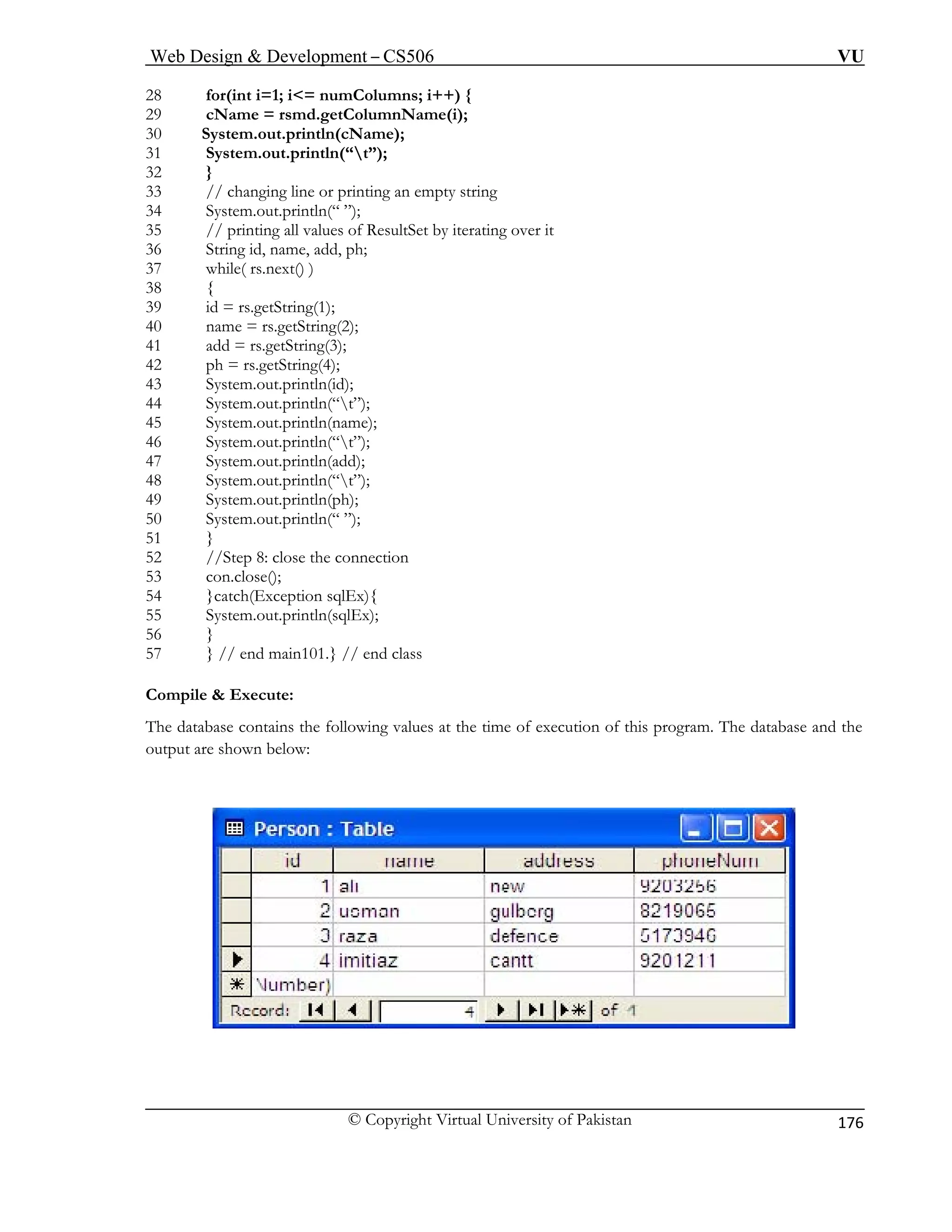
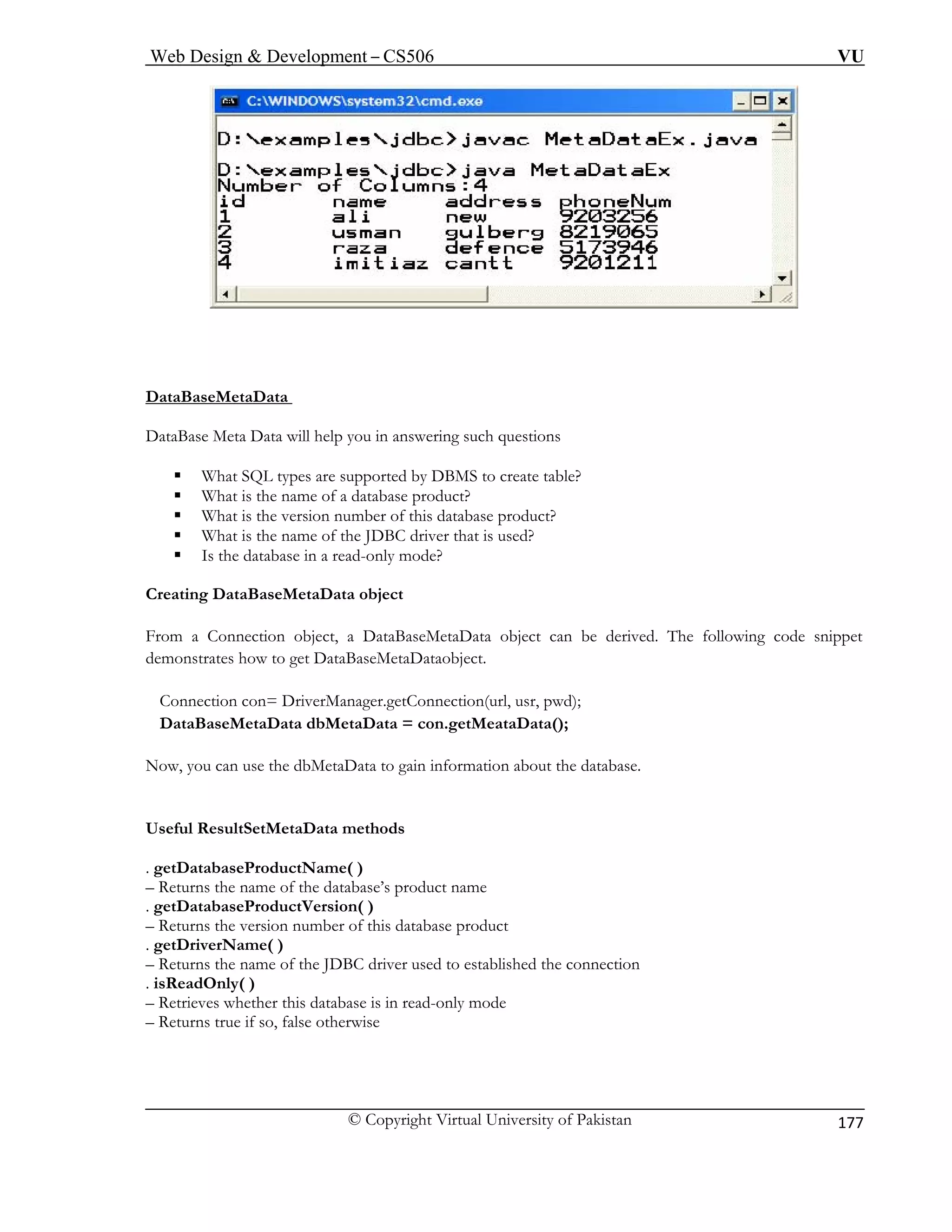
![Web Design & Development – CS506 VU
© Copyright Virtual University of Pakistan
178
Example Code 17.2: using DataBaseMetaData
This code is modification of the example code 17.1. Changes made are shown in bold face.
102.// File MetaDataEx.java 103.import java.sql.*; 104.public class MetaDataEx {
105. public static void main (String args[ ]) {
106. try {
107. //Step 2: load driver
108. Class.forName(“sun.jdbc.odbc.JdbcOdbcDriver”);
109
110.
11. e connection
12. Connection con = null;
113. n(url, “”, “”);
114.
115. DataBaseMetaData dbMetaData = con.getMetaData();
116. // printing database product name
117. eProductName();
118. System.out.println(“DataBase: ” + pName);
119. // printing database product version
abaseProductVersion();
122. // printing driver name used to establish connection &
123. // to retrieve data
ta.getDriverName();
125. System.out.println(“Driver: ” + dName);
126.
127. b
128. S
129. // you can create & execute statements and can
130. // process results over here if needed
131. //Step 8: close the connection
132. con.close();
133. }catch(Exception sqlEx){
134. System.out.println(sqlEx);
135. }
136. } // end main
137.
} // end class
. //Step 3: define the connection URL String url = “jdbc:odbc:personDSN”;
11
//Step 4: establish th
con = DriverManager.getConnectio// getting DataBaseMetaDat object Sring pName = dbMetaData.getDatabas
120. Sring pVer = dbMetaData.getDat121. System.out.println(“Version: ” + pVer);
124. Sring dName = dbMetaDa
// printing whether database is read-only or not oolean rOnly = dbMetaData.isReadOnly(); ystem.out.println(“Read-Only: ” + rOnly);](https://image.slidesharecdn.com/webdesignanddevelopment-cs506handouts-141110100145-conversion-gate01/75/Web-design-and-development-cs506-handouts-178-2048.jpg)
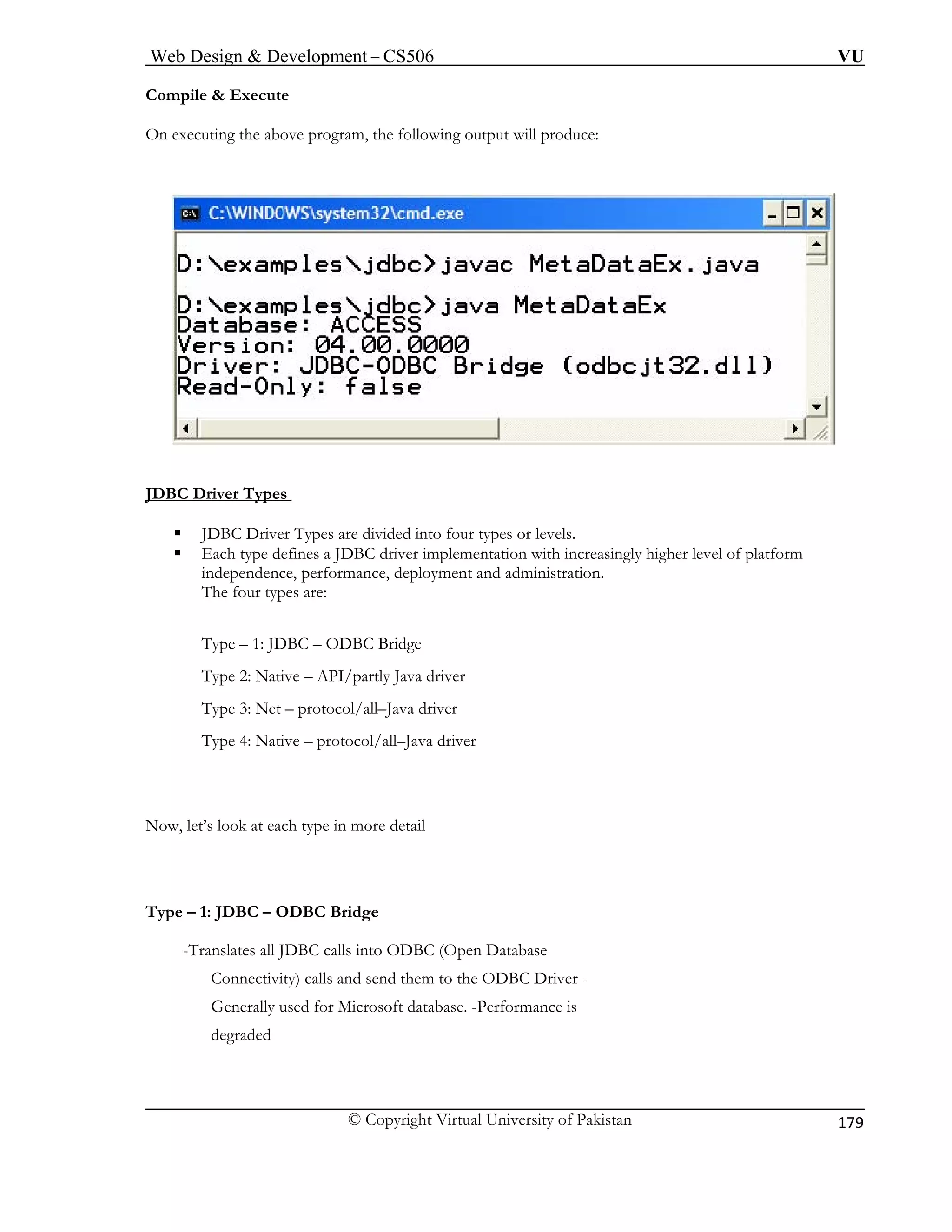
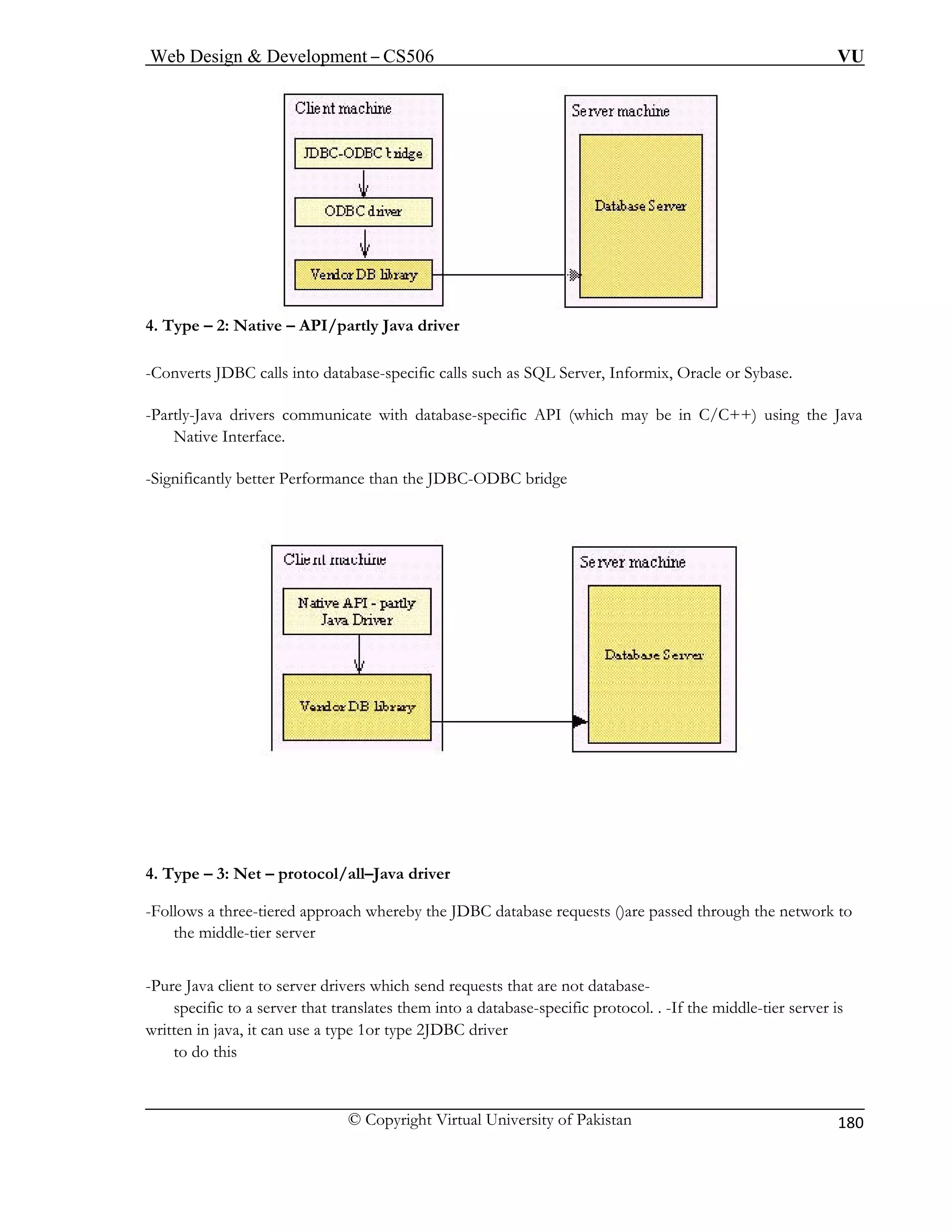
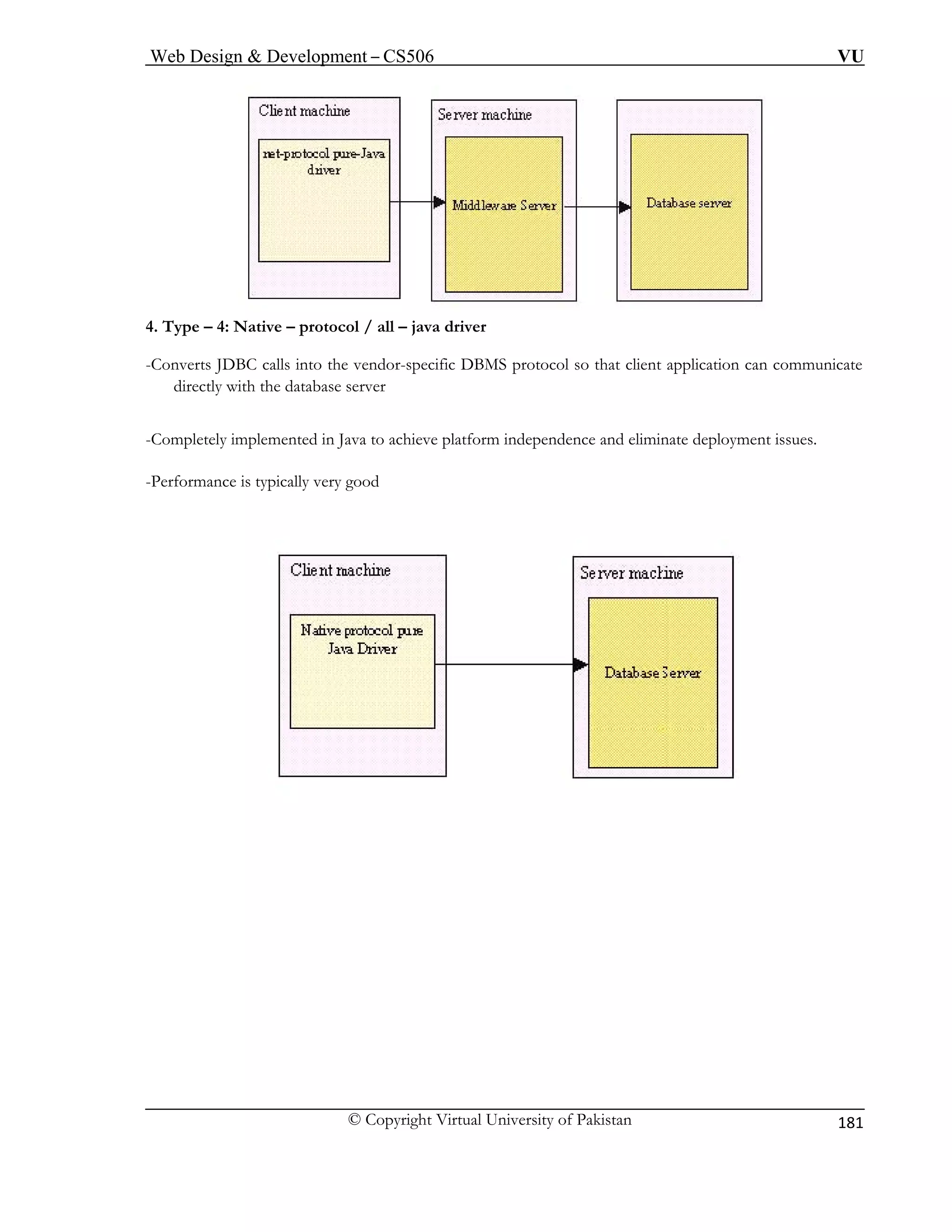
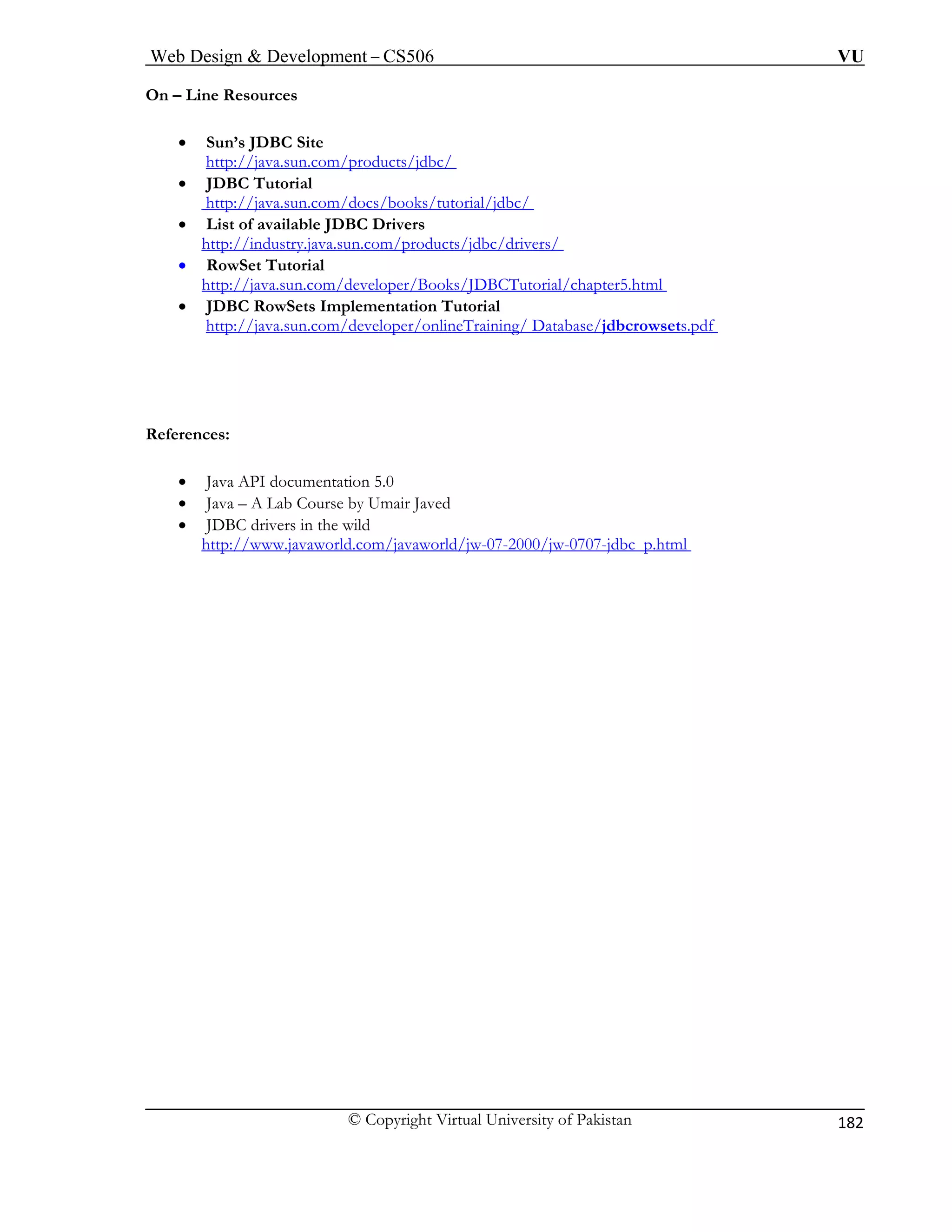
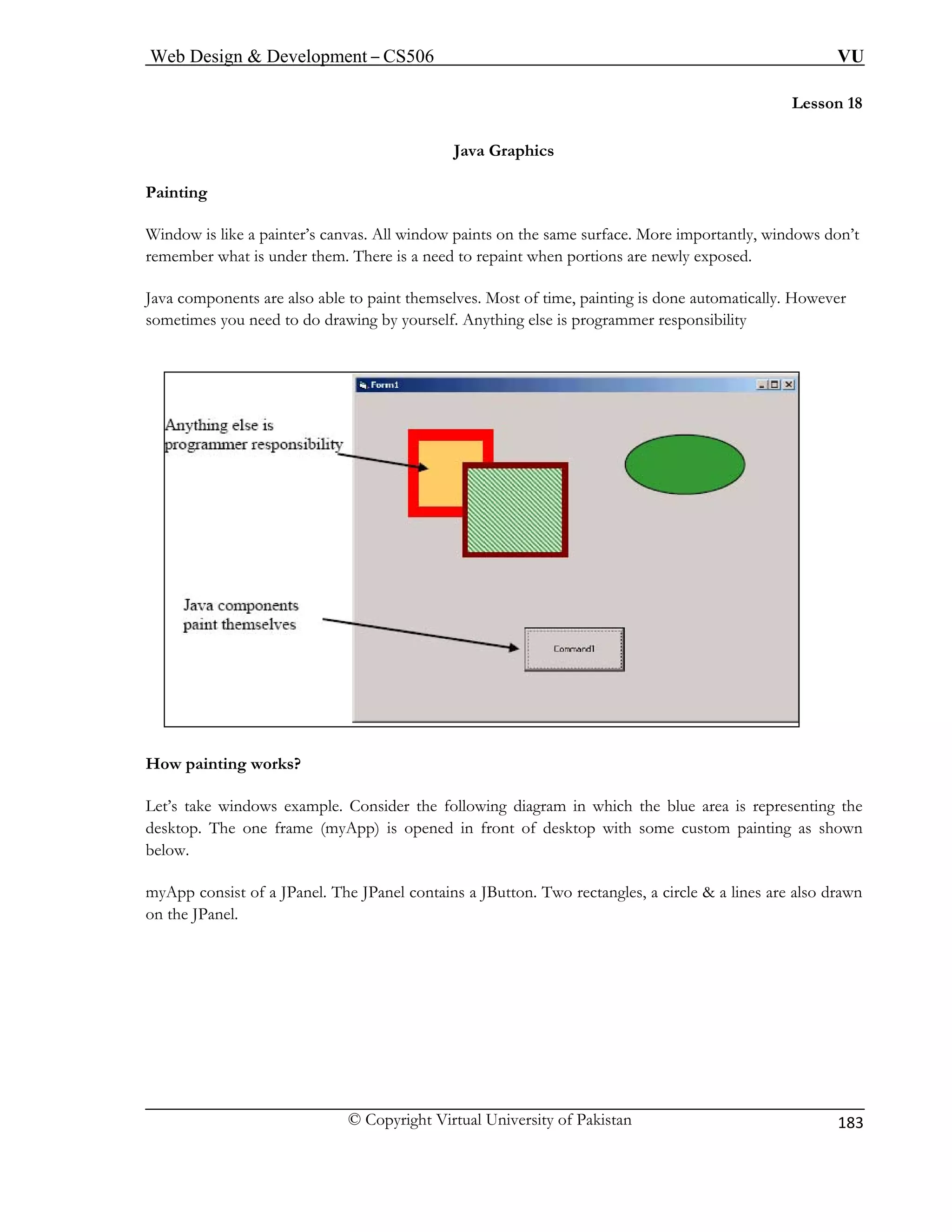
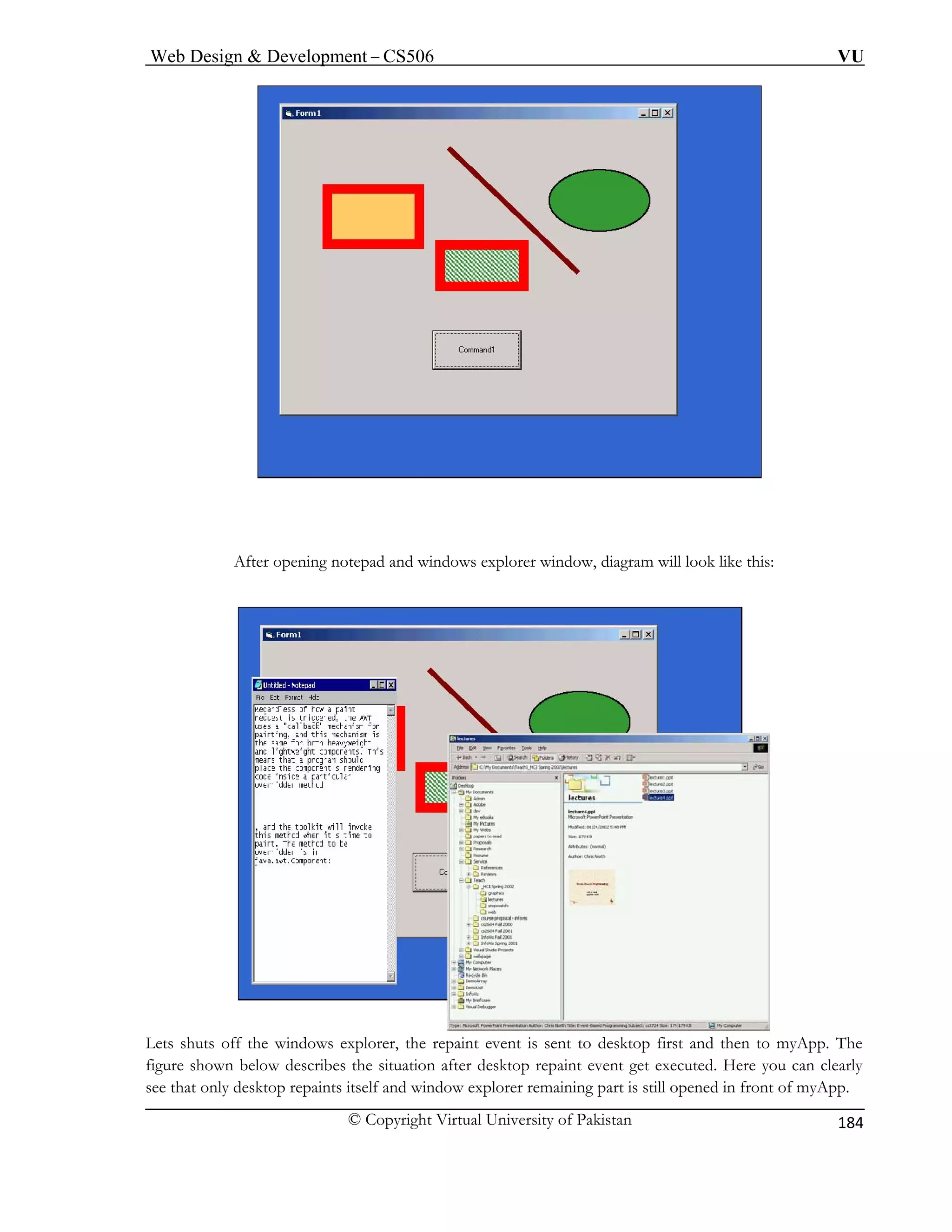
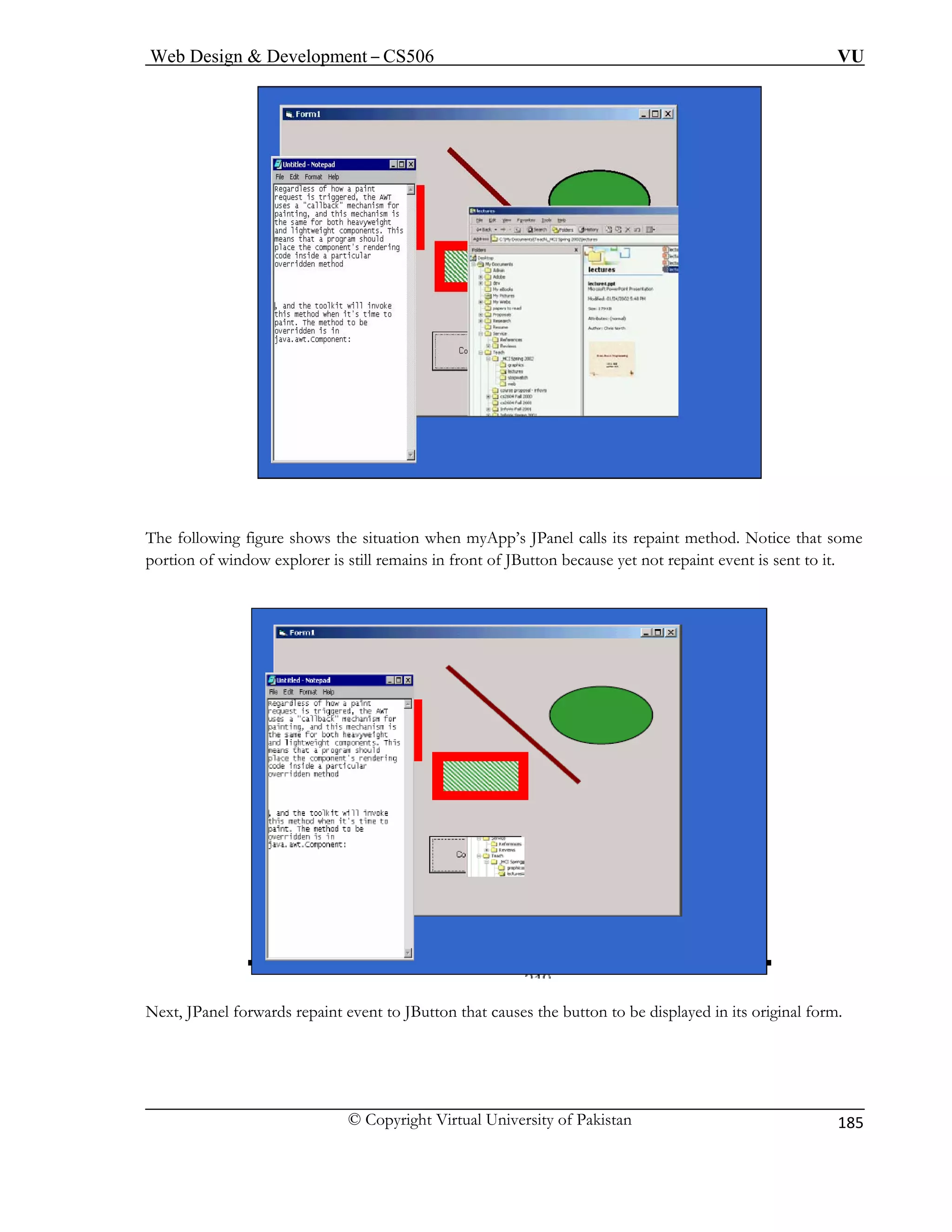
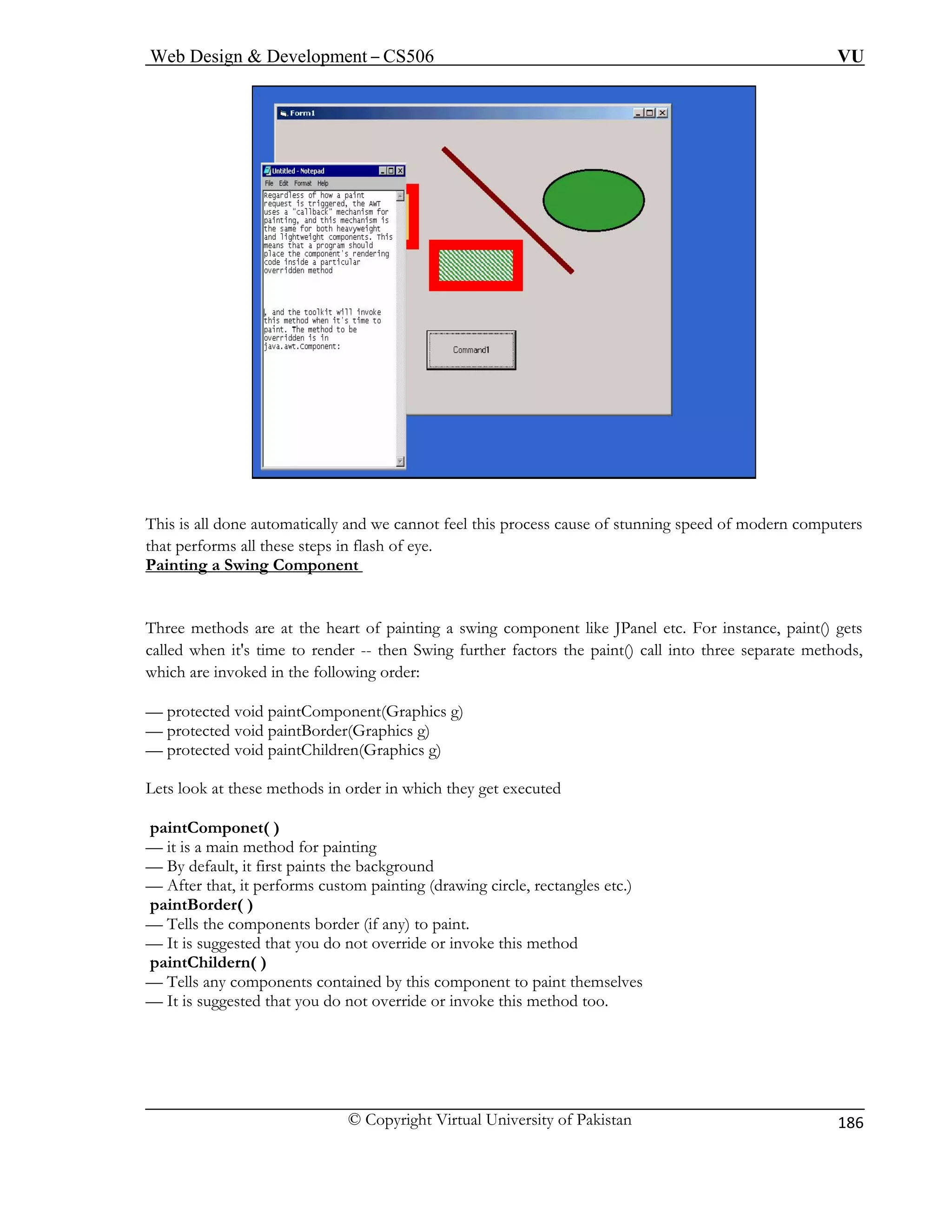
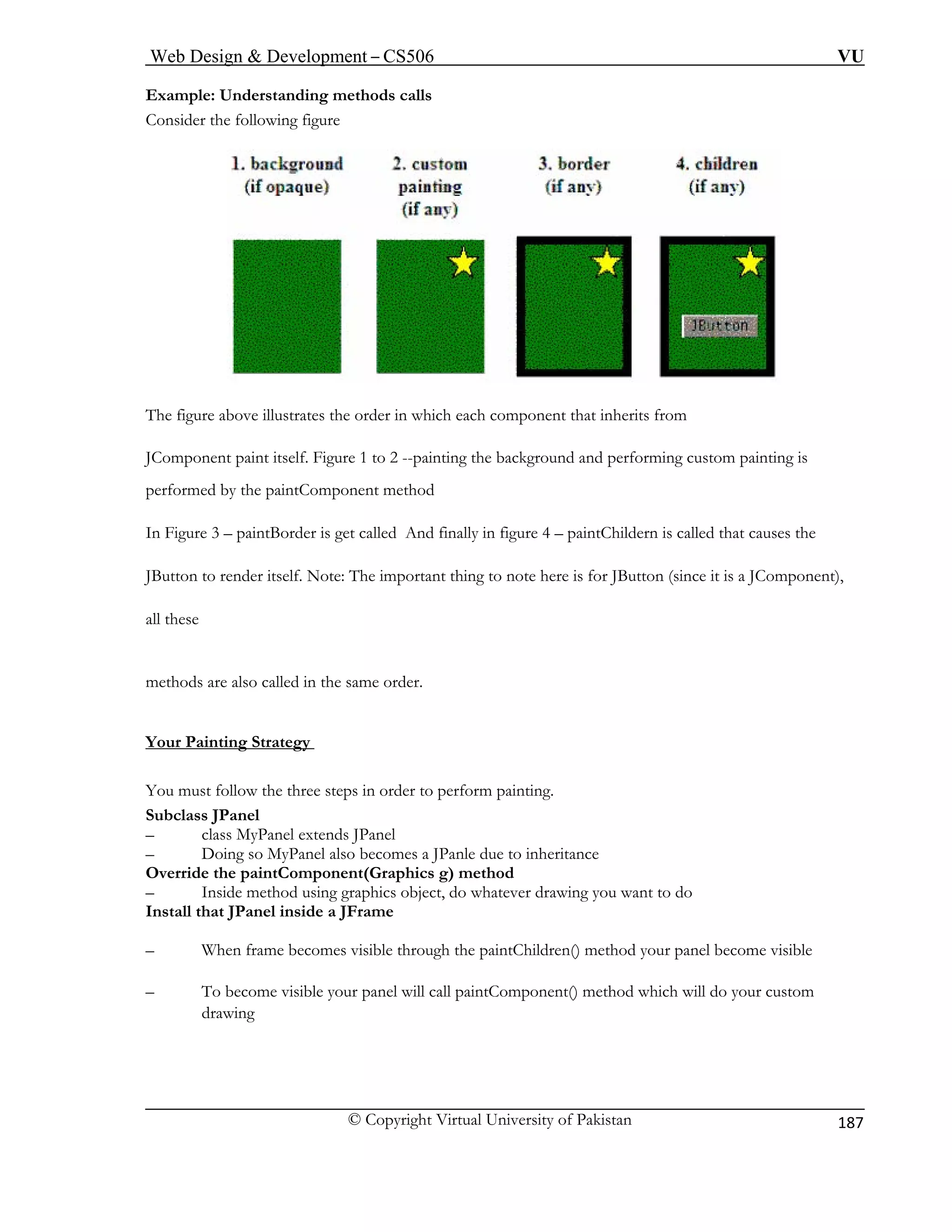
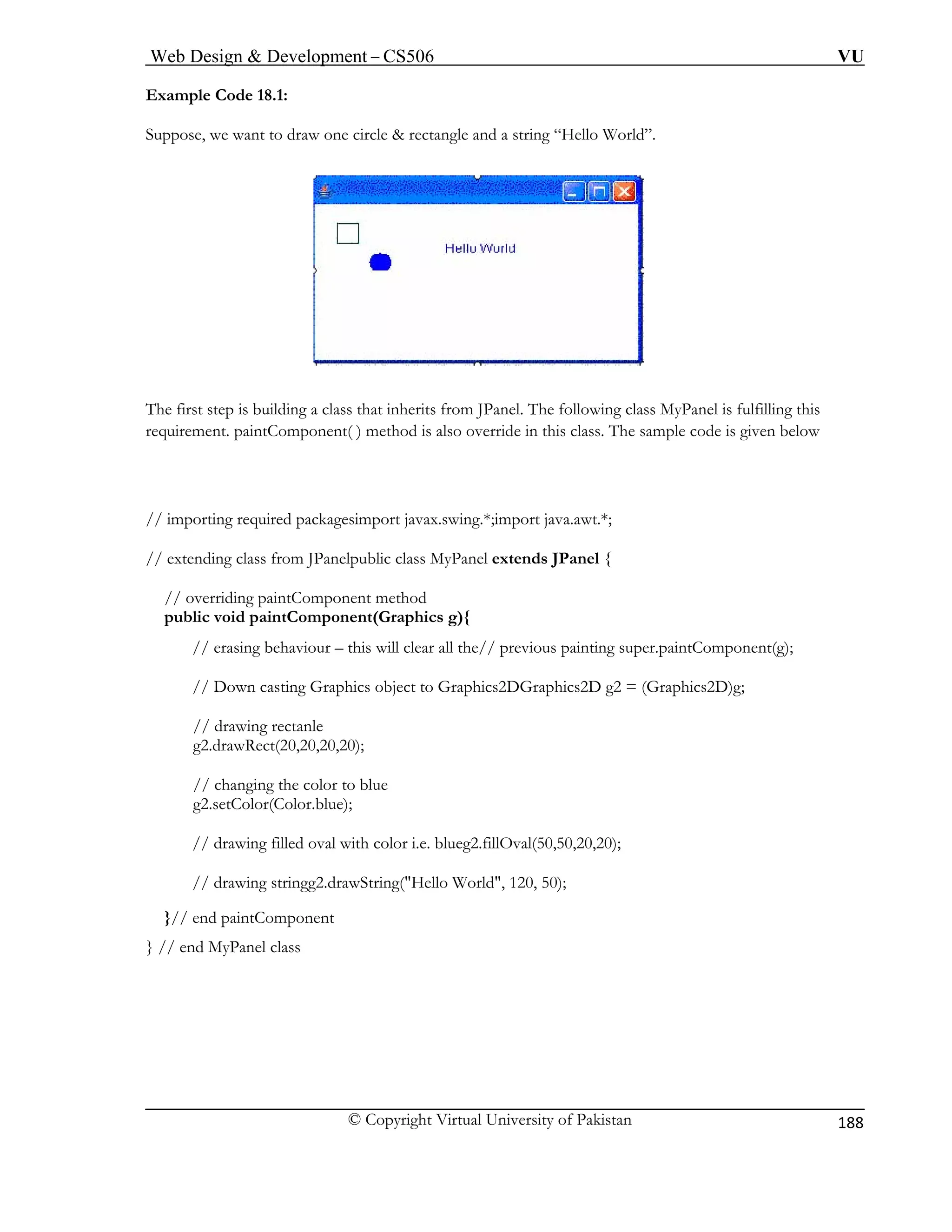
![Web Design & Development – CS506 VU
© Copyright Virtual University of Pakistan
189
The Test class that contains the main method as well uses MyPainel (previously built) class is given below
// importing required packages
import javax.swing.*;
import java.awt.*;
public class Test {
JFrame f;
// declaring Reference of MyPanel class
MyPanel p;
// parameter less constructor
public Test(){
f = new JFrame();
Container c = f.getContentPane();
c.setLayout(new BorderLayout());
// instantiating reference
p = new MyPanel();
// adding MyPanel into container
c.add(p);
f.setSize(400,400);
f.setVisible(true);
f.setDefaultCloseOperation(JFrame.EXIT_ON_CLOSE);
} // end constructor
// main method
public static void main(String args[ ]){
Test t = new Test();
}](https://image.slidesharecdn.com/webdesignanddevelopment-cs506handouts-141110100145-conversion-gate01/75/Web-design-and-development-cs506-handouts-189-2048.jpg)

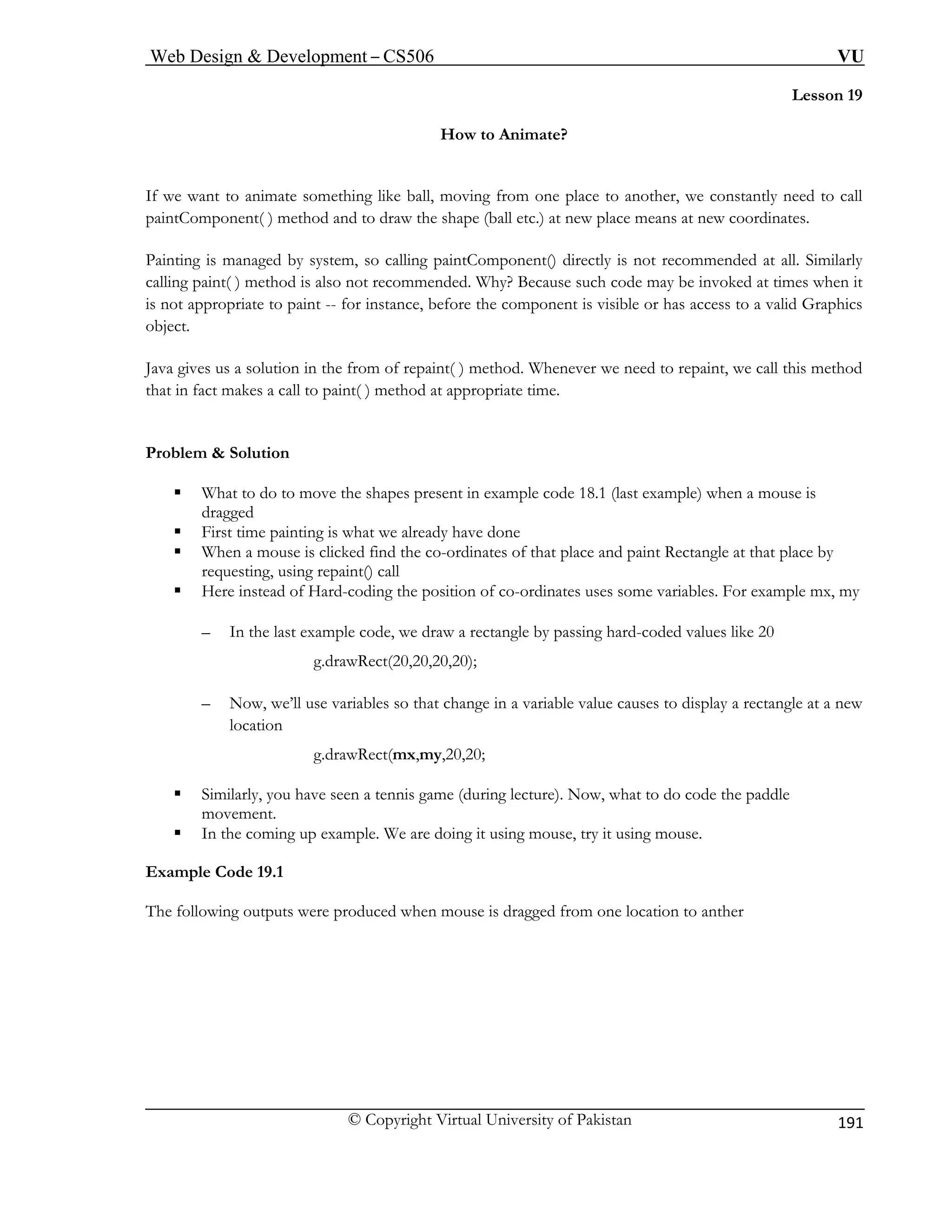
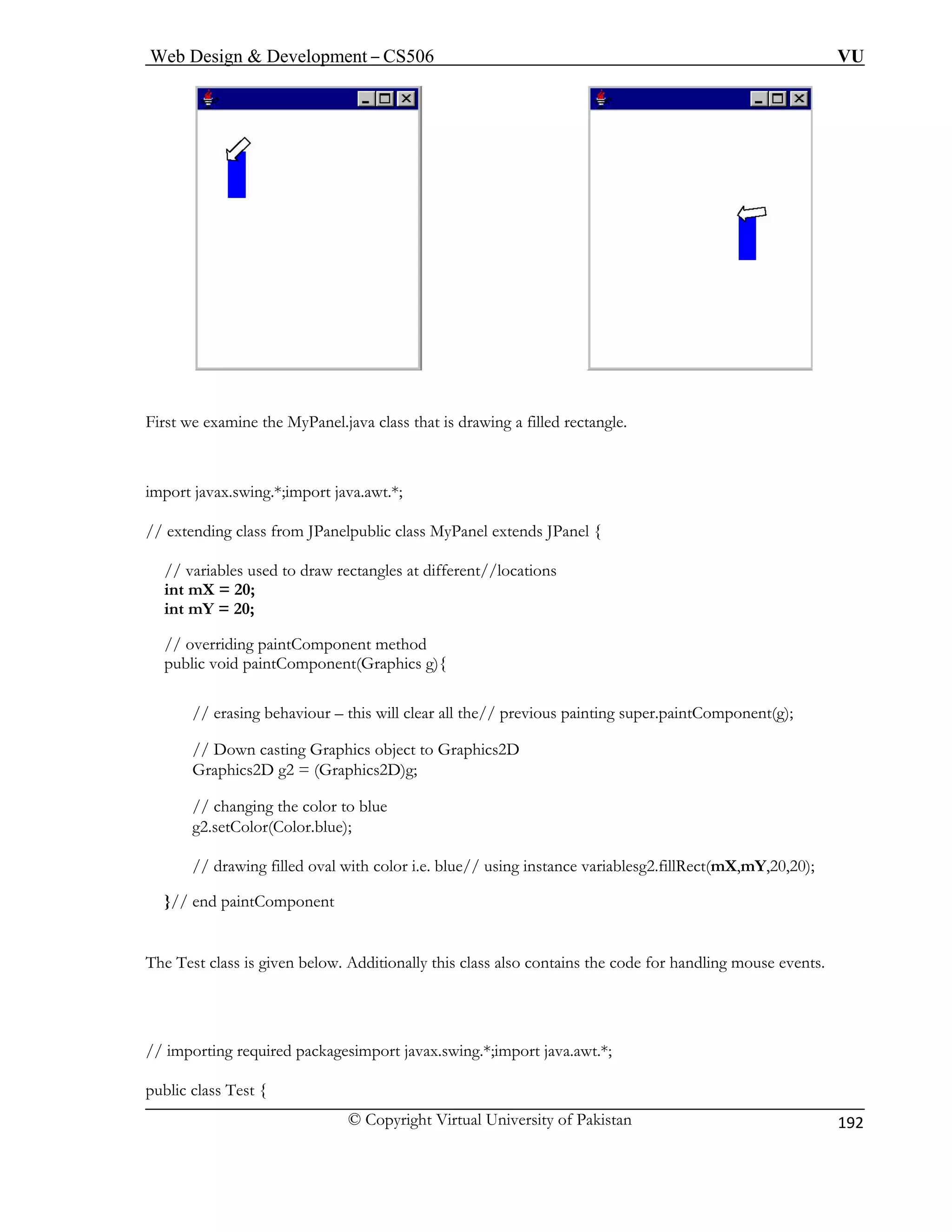
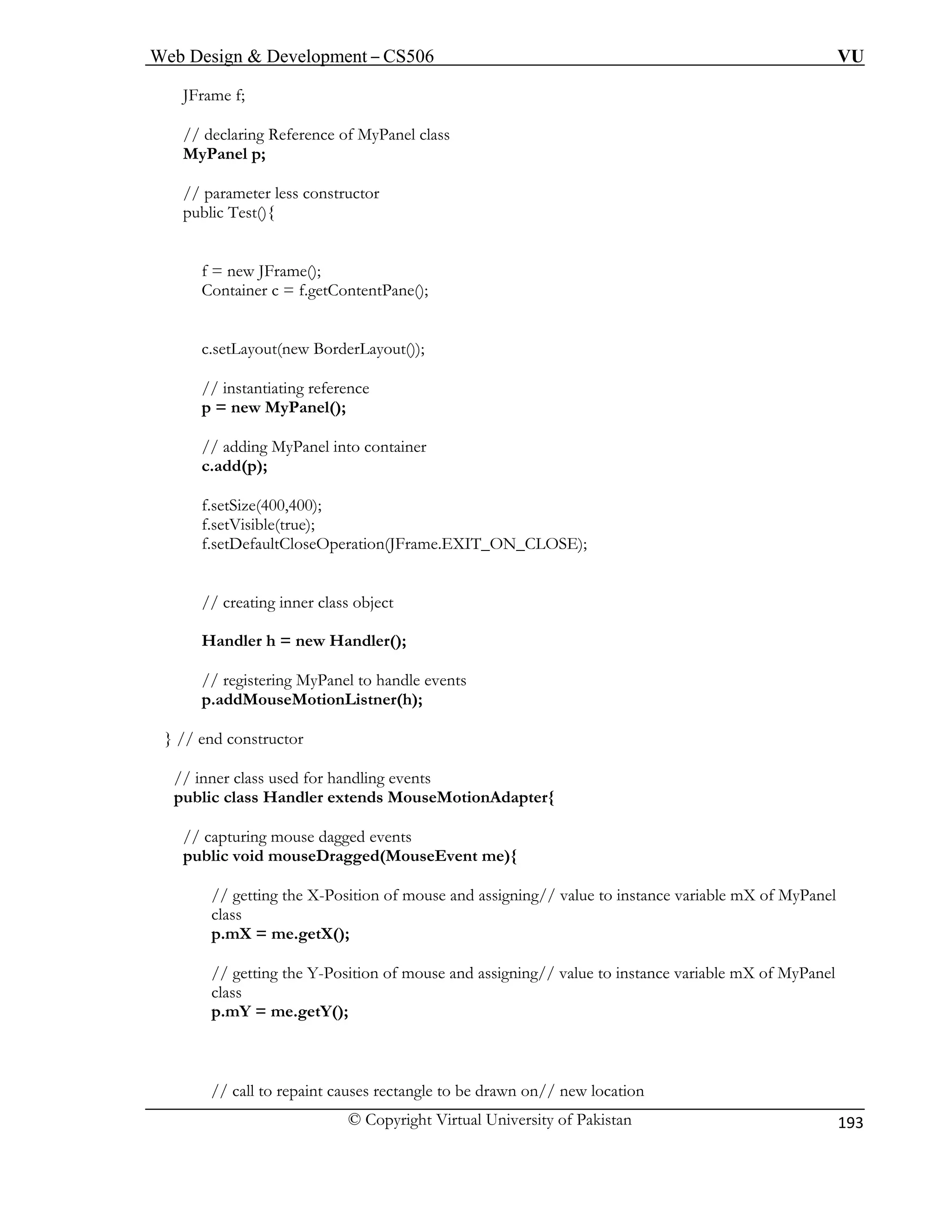
![Web Design & Development – CS506 VU
© Copyright Virtual University of Pakistan
194
p.repaint() ;
} // end mouseDragged } // end Handler class
// main method
public static void main(String args[ ]){
Test t = new Test();
}
} // end MyPanel class
On executing this program, when you drag mouse from one location to another, rectangle is also in sink
with the movement of mouse. Notice that previously drawn rectangle is erased first.
If we exclude or comment out the following line from MyPanel class
sup
Dragging a mouse will produce a similar kind of output shown next
er.paintComponent(g);](https://image.slidesharecdn.com/webdesignanddevelopment-cs506handouts-141110100145-conversion-gate01/75/Web-design-and-development-cs506-handouts-194-2048.jpg)
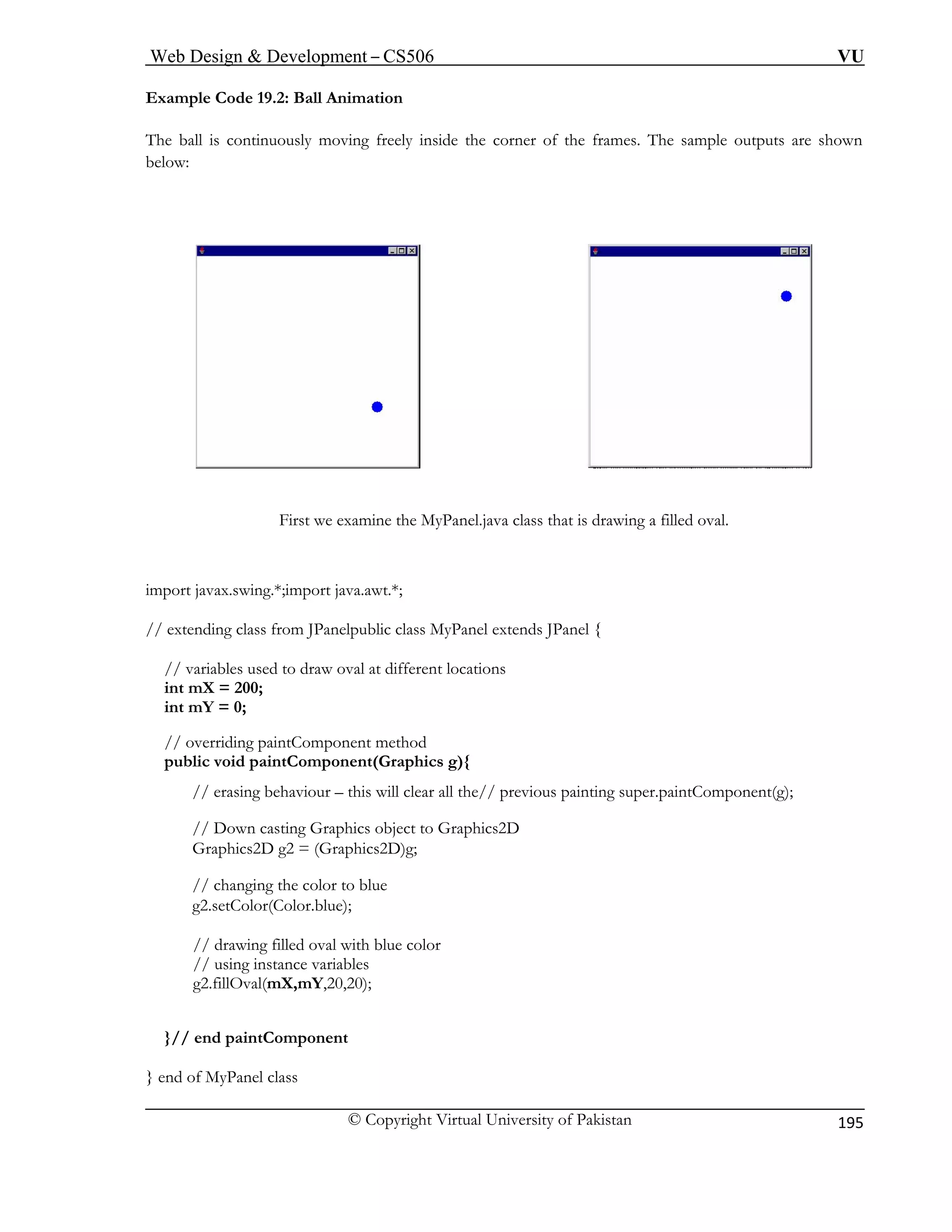

![Web Design & Development – CS506 VU
© Copyright Virtual University of Pakistan
197
// if ball reached to maximum width of frame minus// 40 since diameter of ball is 40 then
change the// X-direction of ball
i
x = -5;
// if ball reached to maximum height of frame
// minus 40 then change the Y-direction of ball
if (f.getHeight()-40 == p.mY)
y = -3;
// if ball reached to min. of width of frame,
// change the X-direction of ball
if (p.mX == 0 )
x = 5;
// if ball reached to min. of height of frame,
// change the Y-direction of ball
if (p.mY == 0 )
y = 3;
// Assign x,y direction to MyPanel’s mX & mY
p.mX += x;
p.mY += y;
// call to repaint() method so that ball is drawn on// new locations
p.repaint();
} // end actionPerformed() method
// main method
public static void main(String args[ ]){
AnimTest at = new AnimTest();
}
} // end of AnimTest class
f (f.getWidth()-40 == p.mX)](https://image.slidesharecdn.com/webdesignanddevelopment-cs506handouts-141110100145-conversion-gate01/75/Web-design-and-development-cs506-handouts-197-2048.jpg)
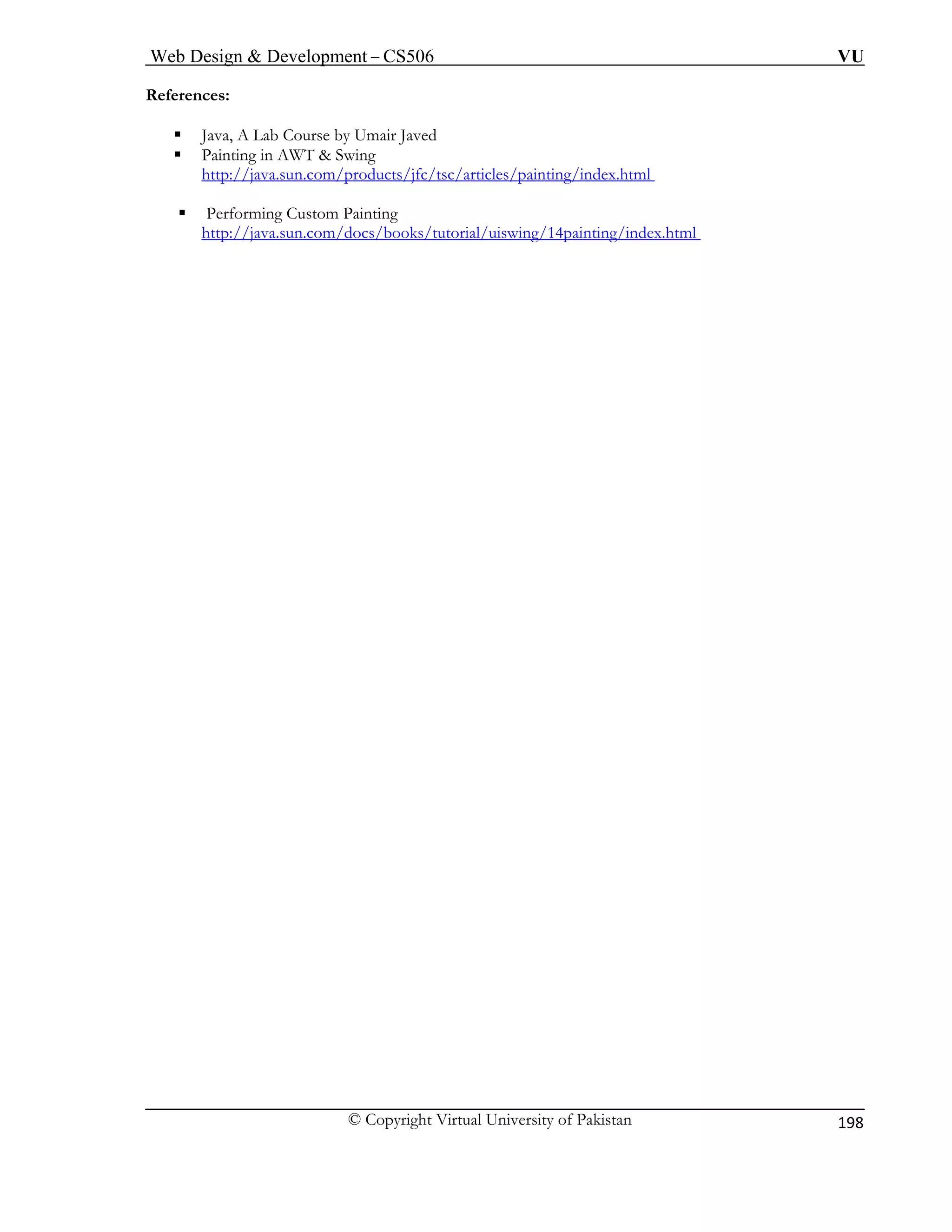
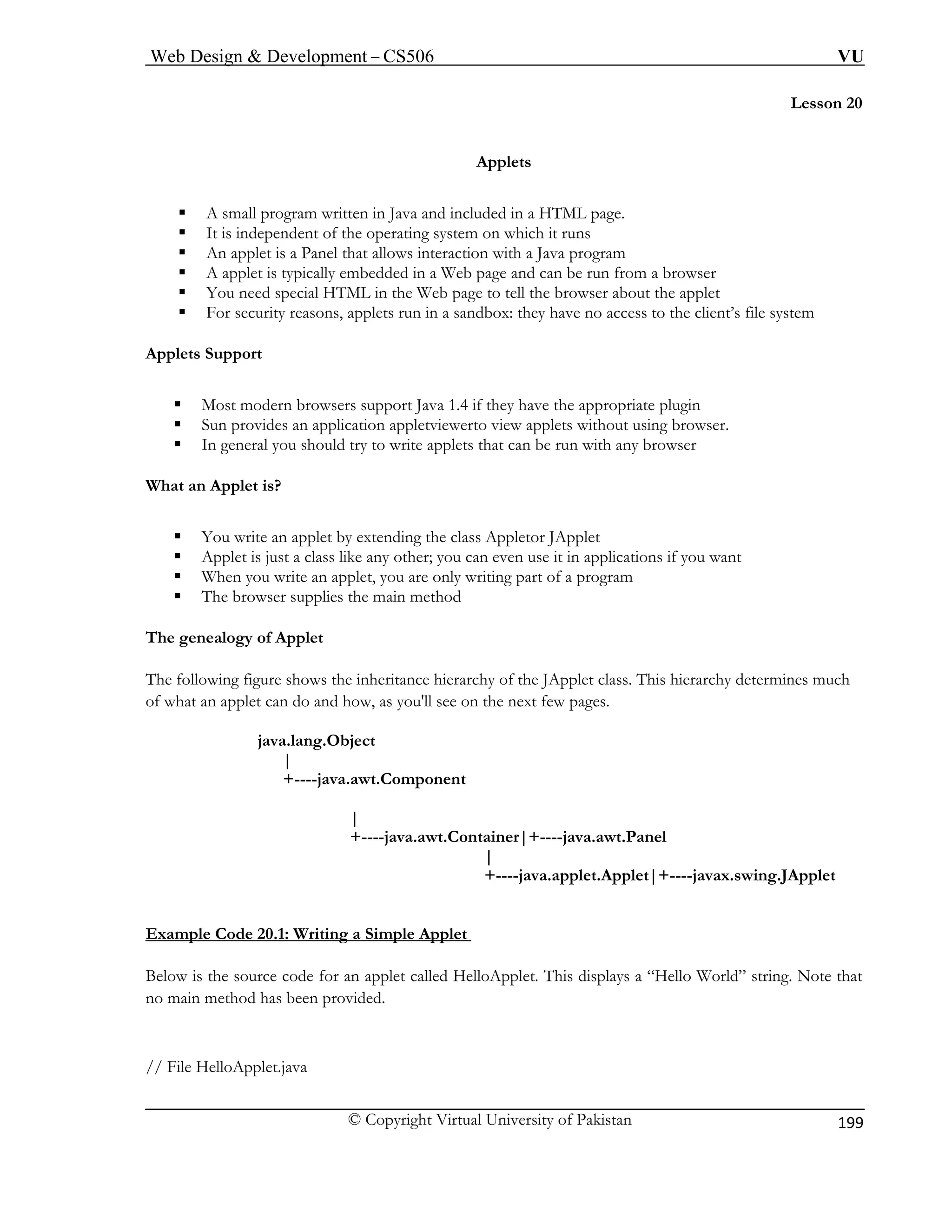
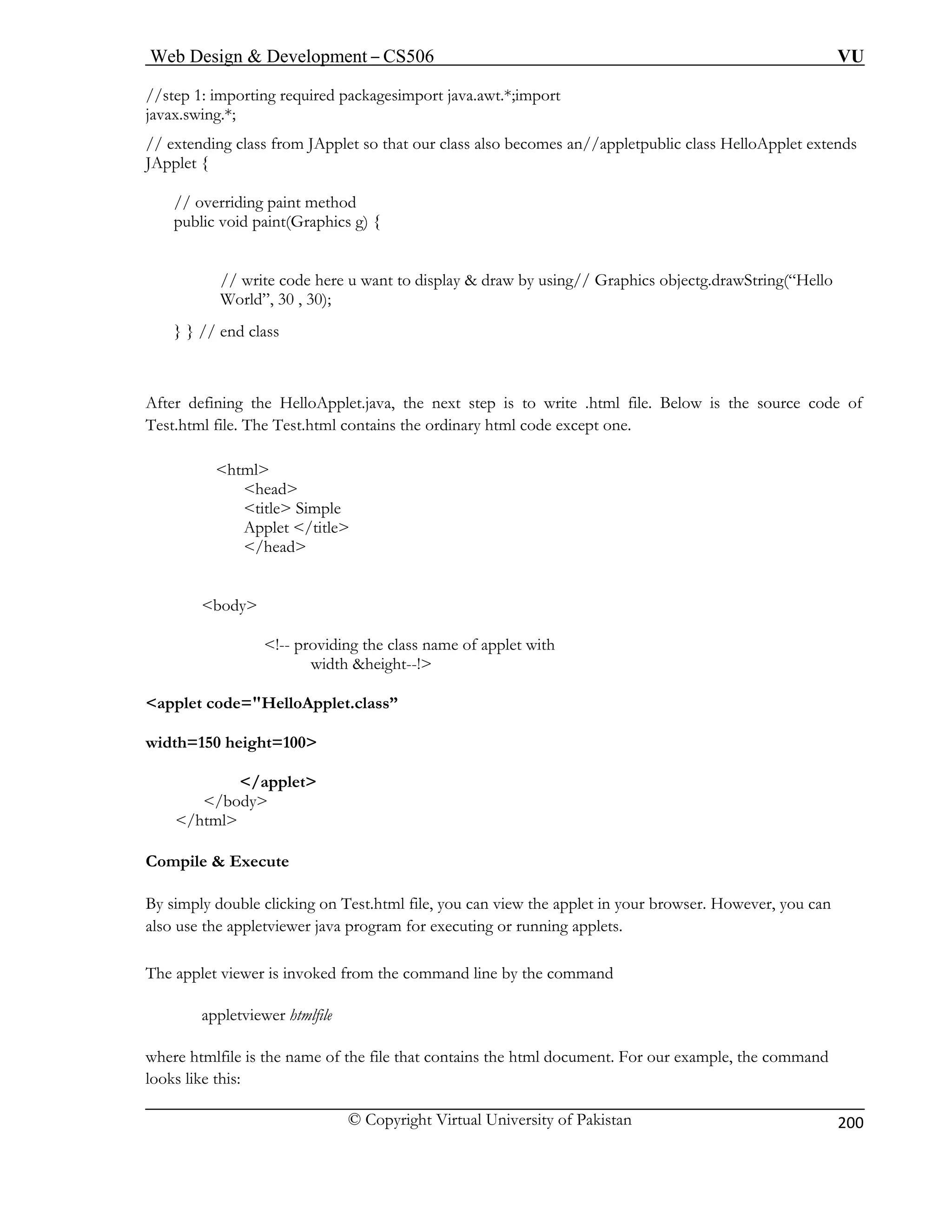
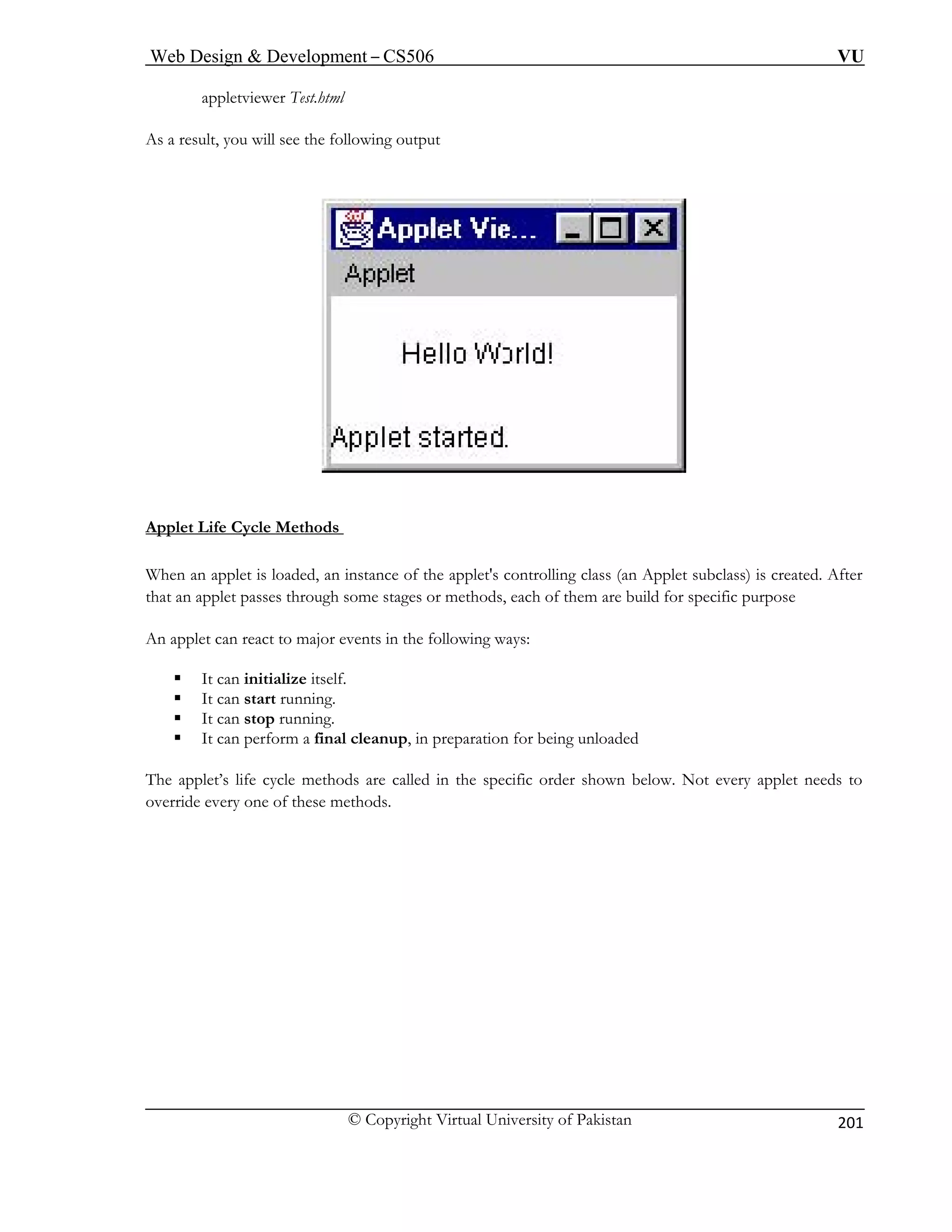
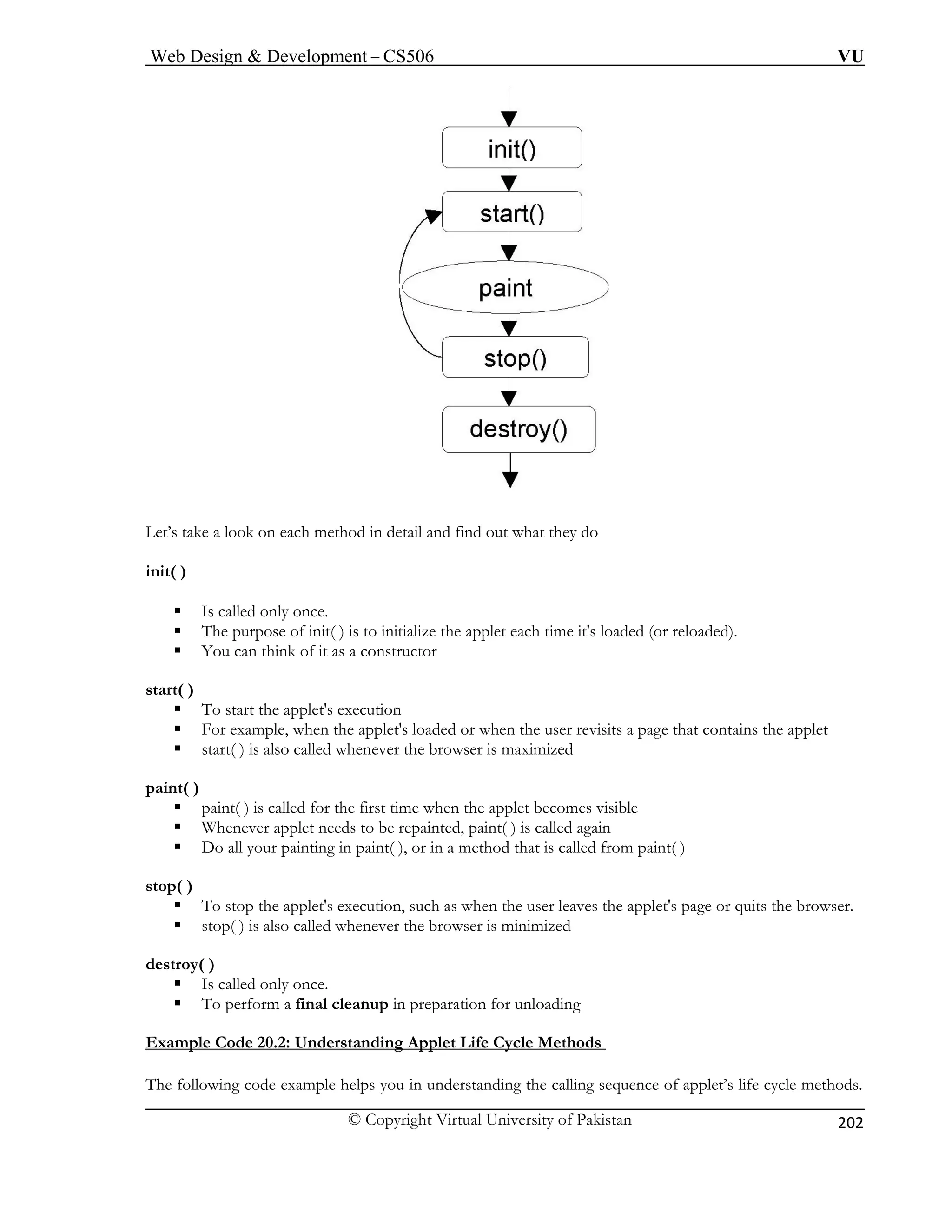
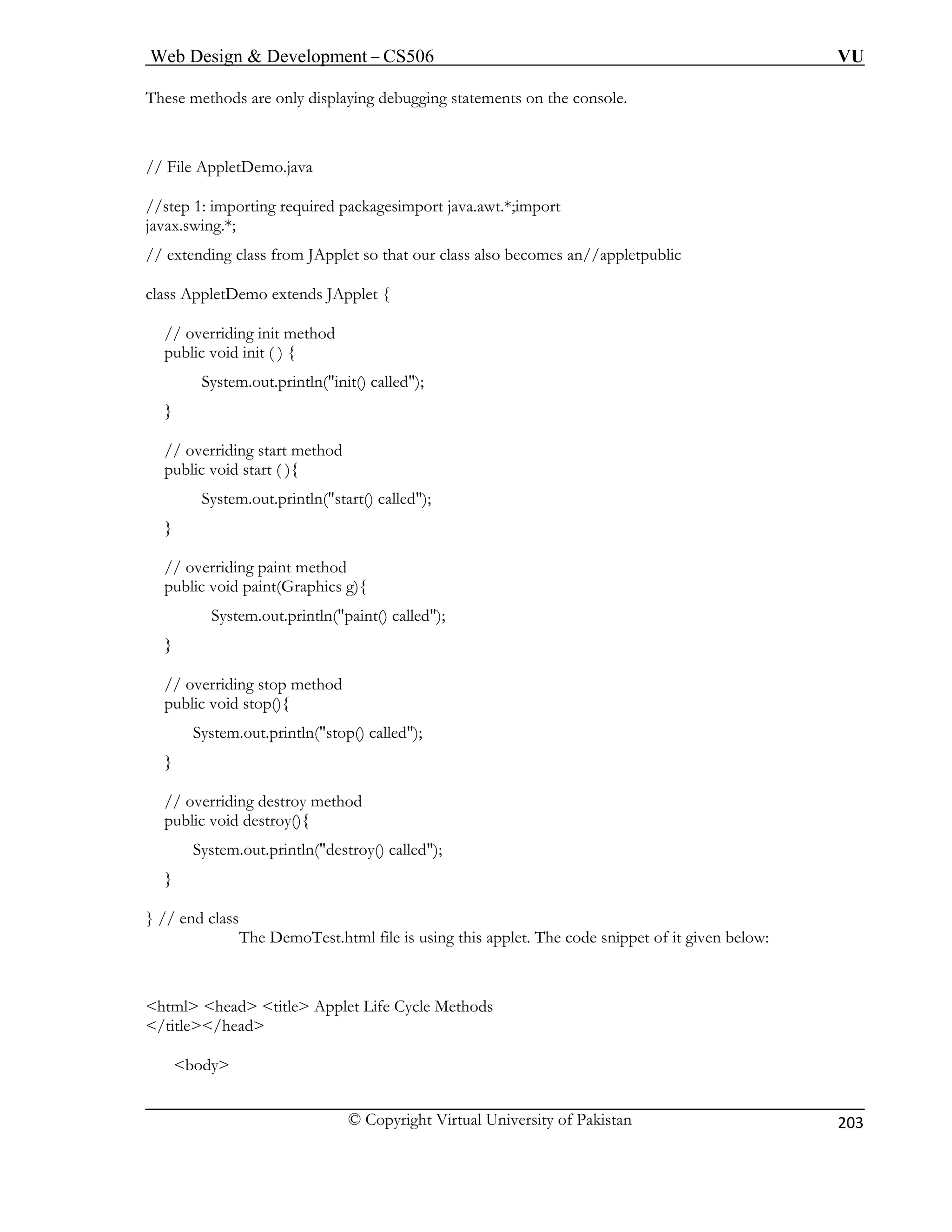
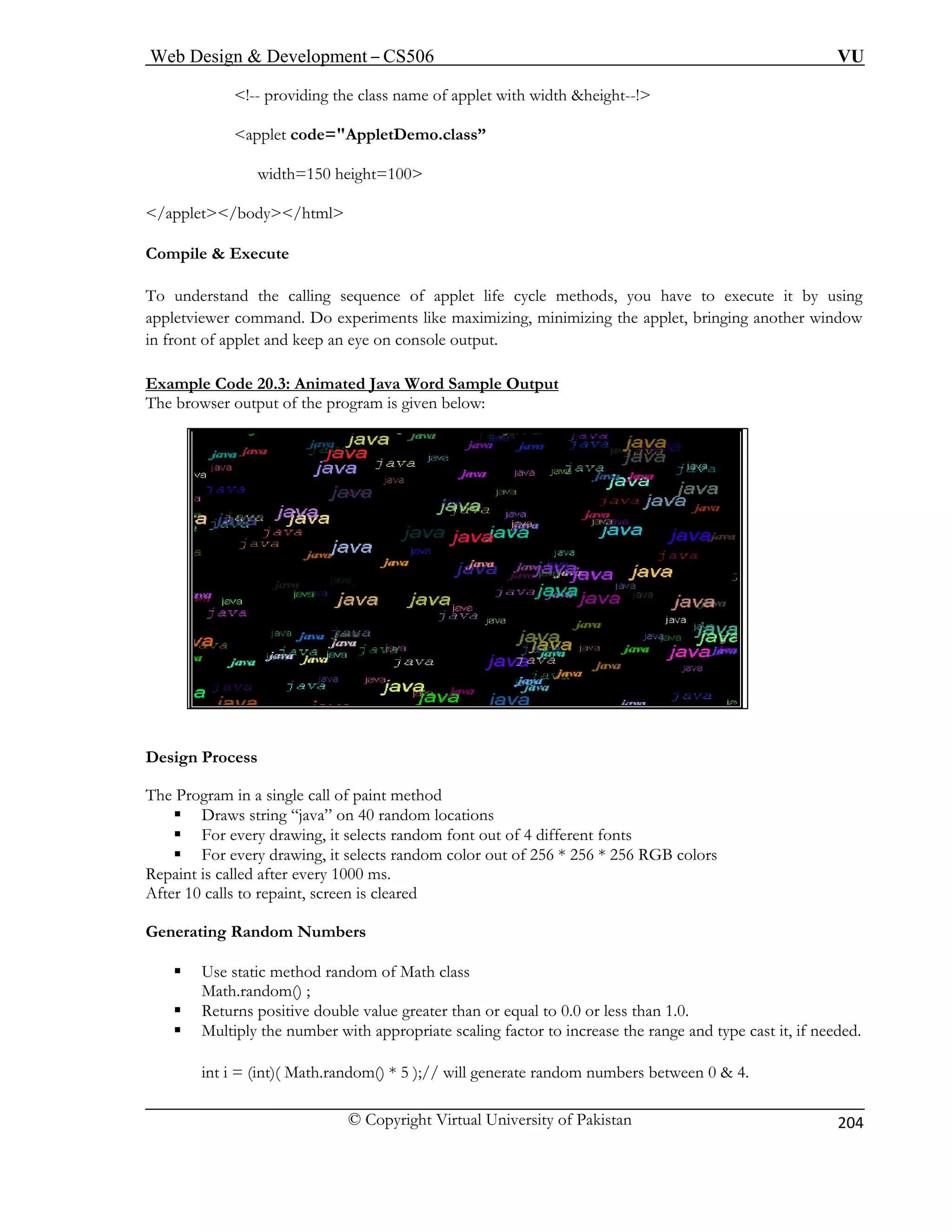
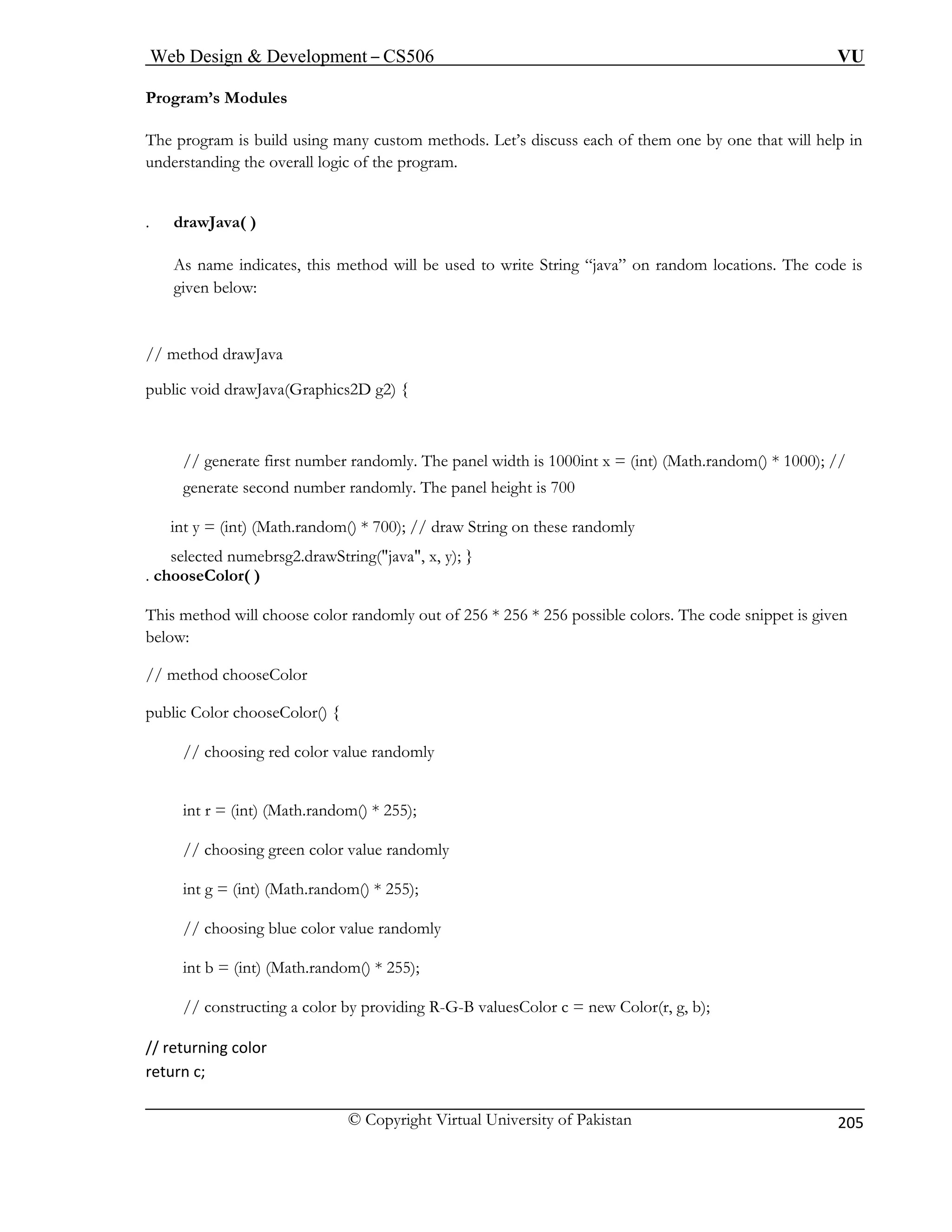
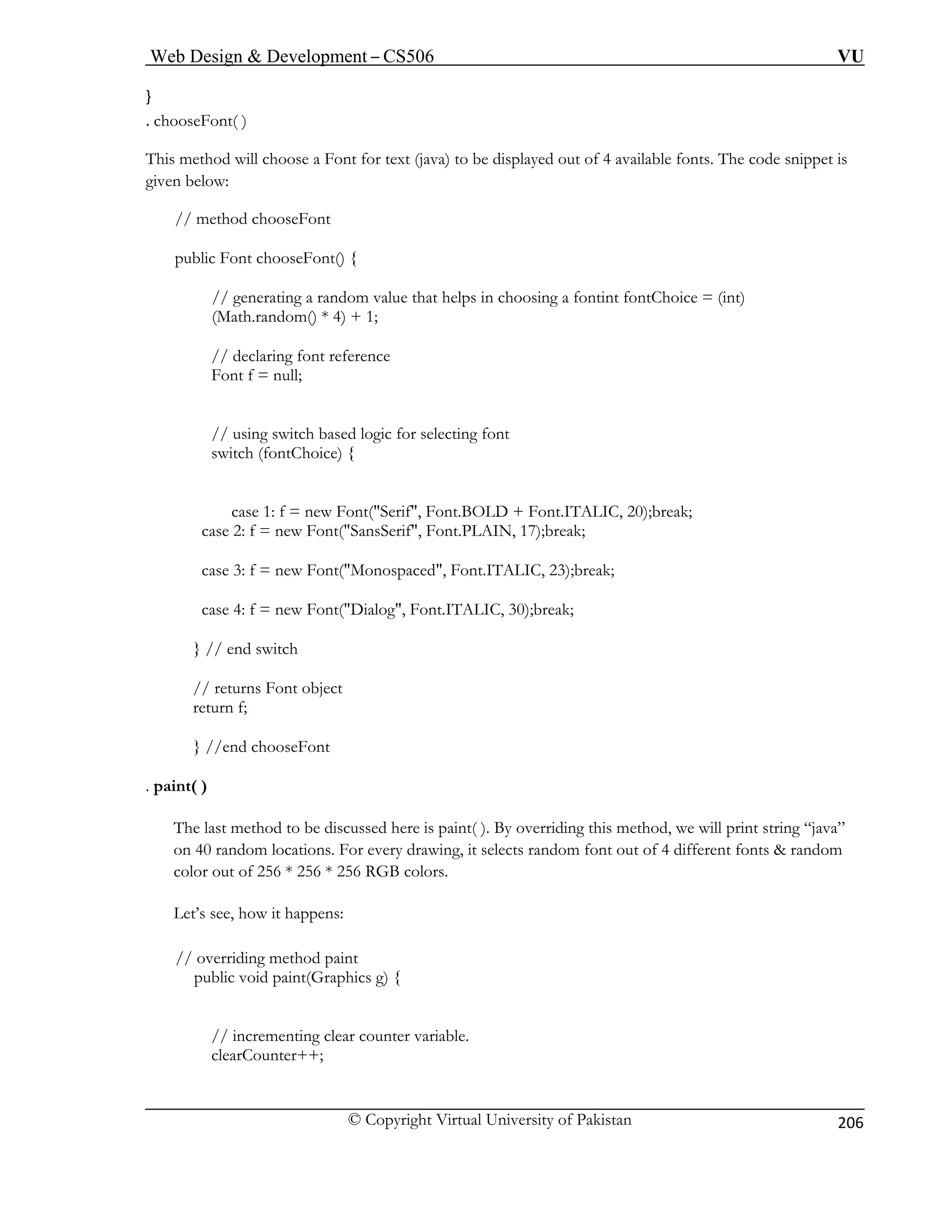
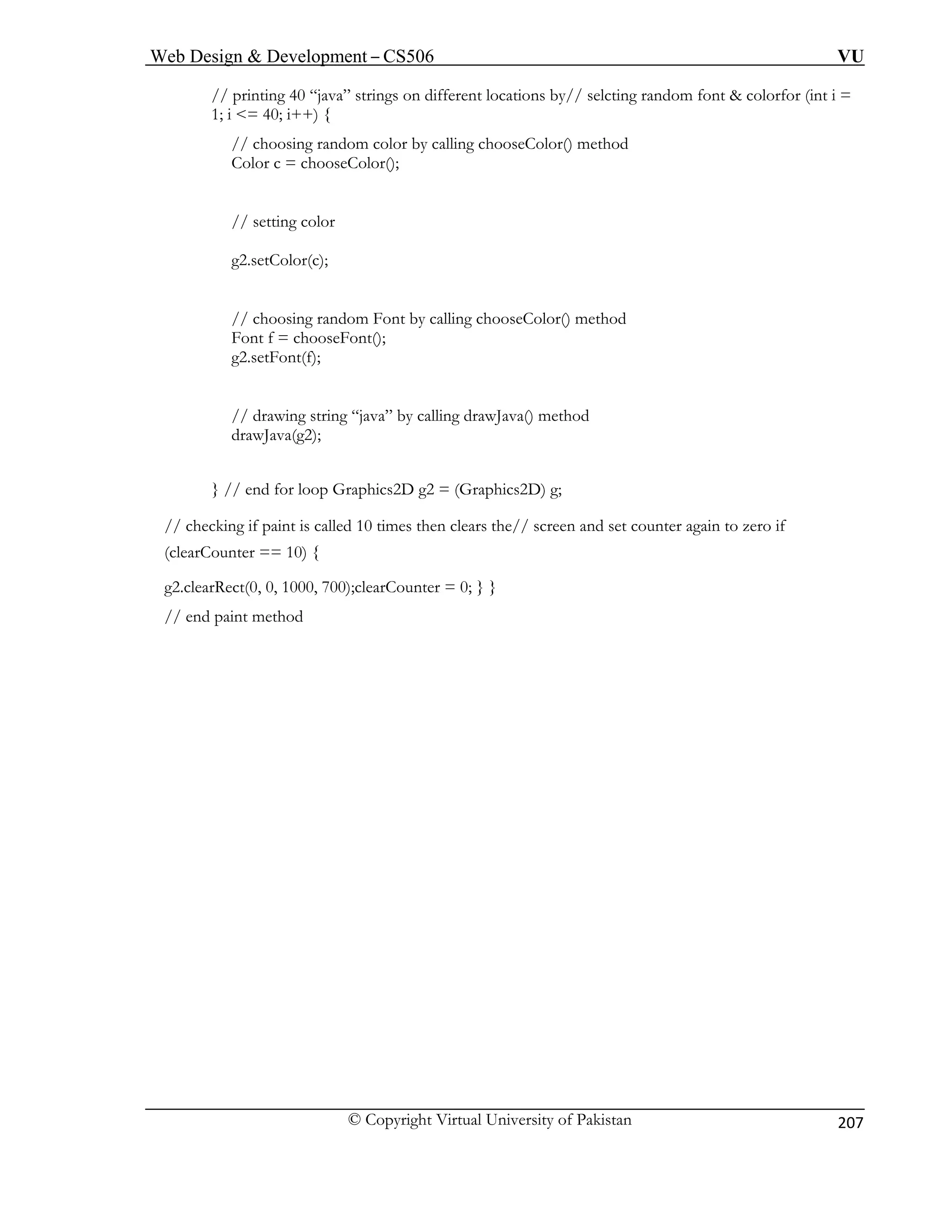
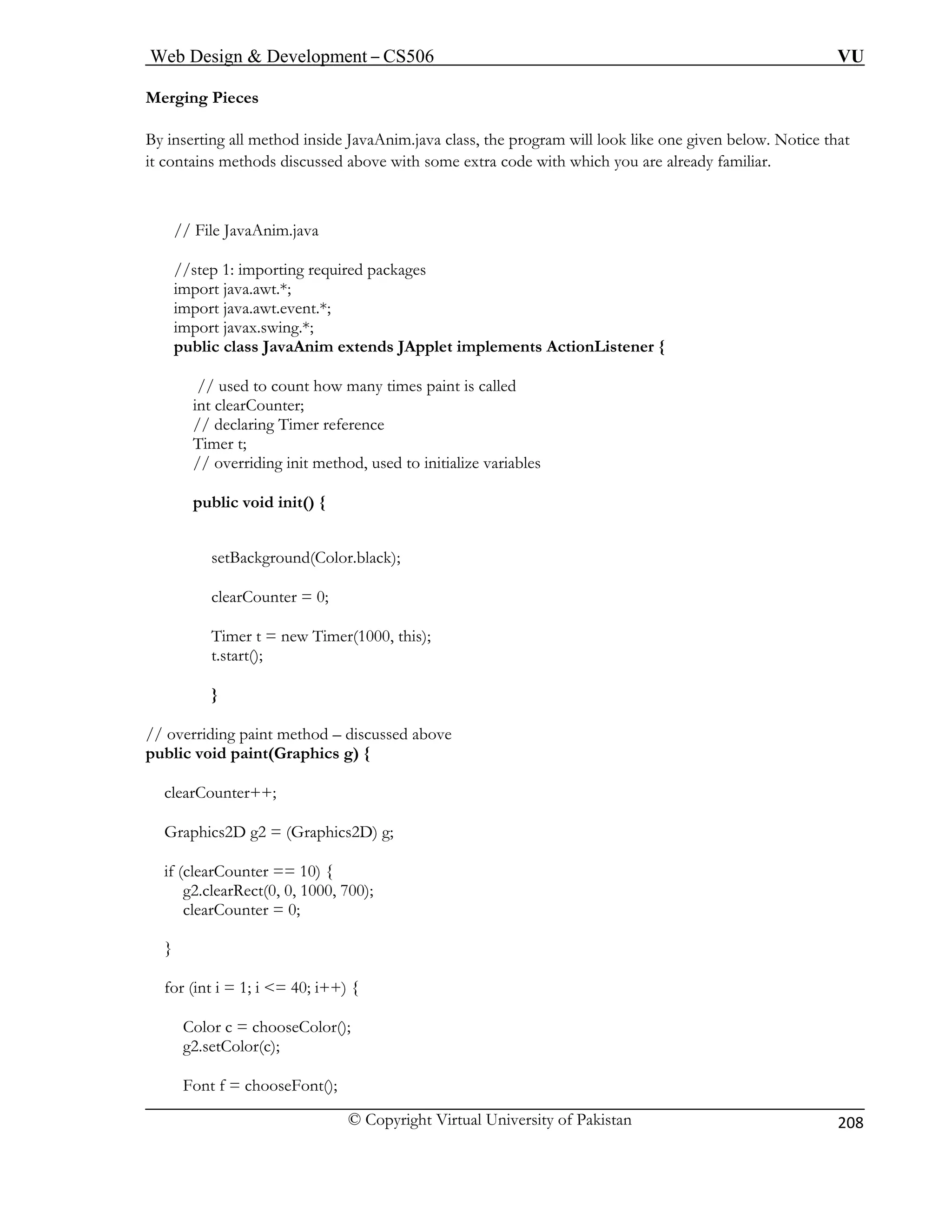
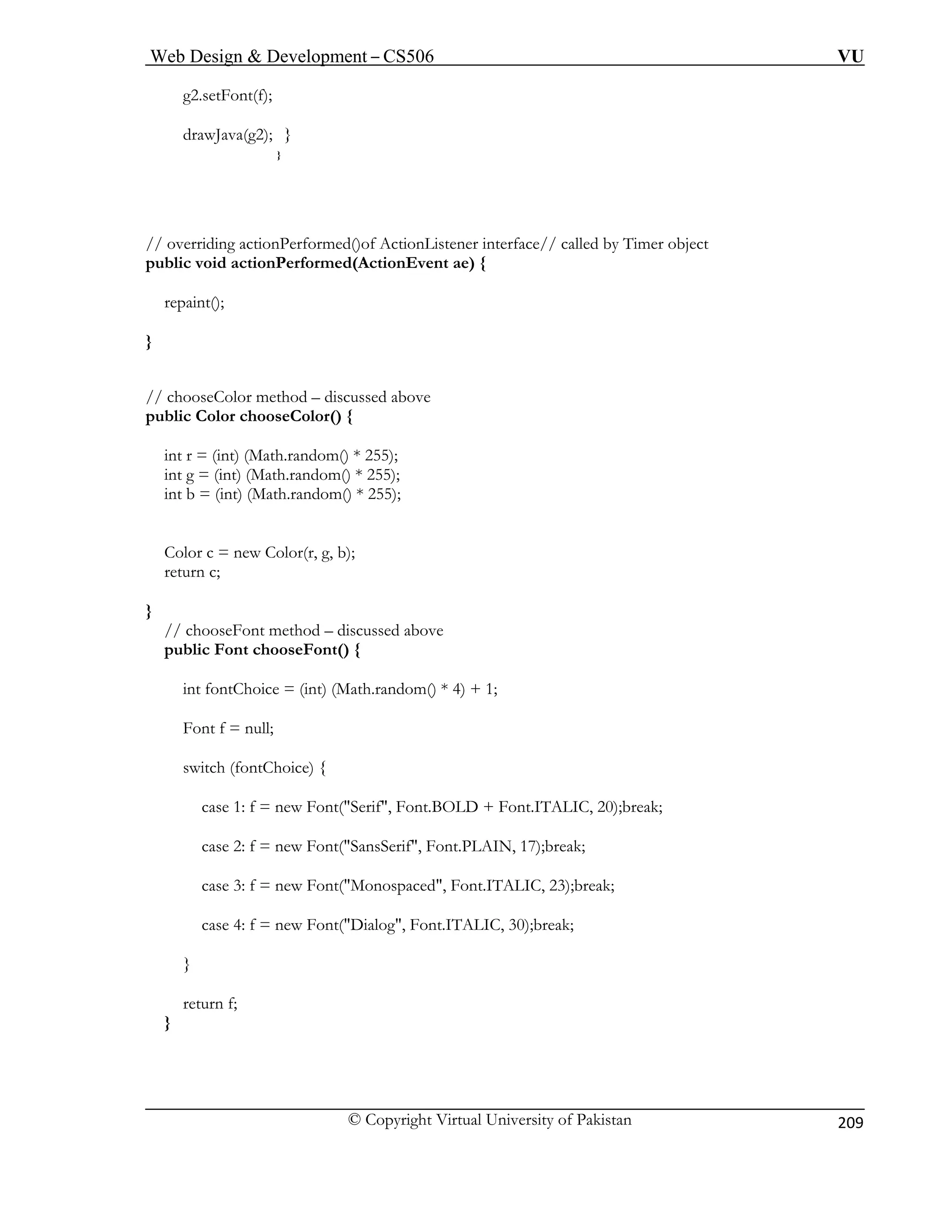
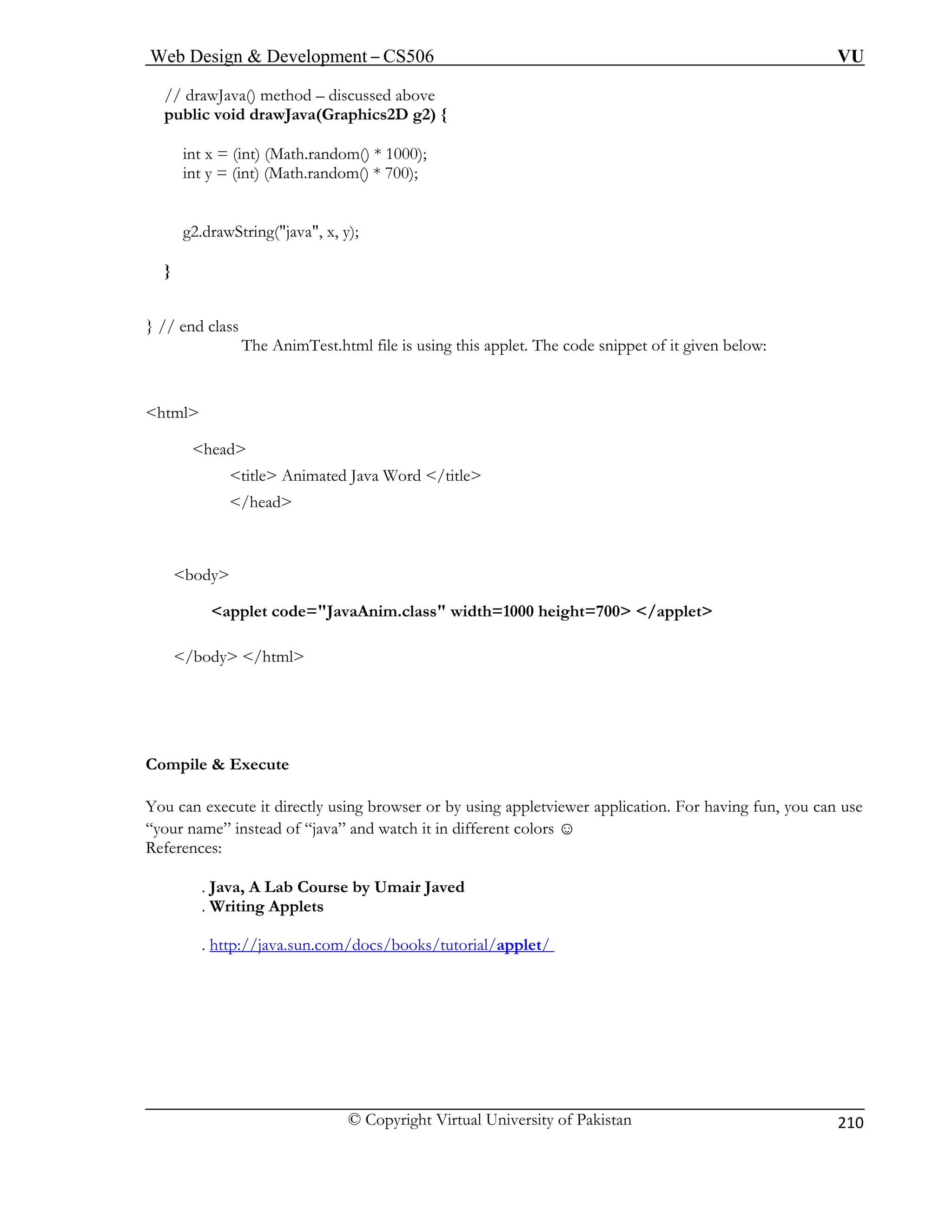
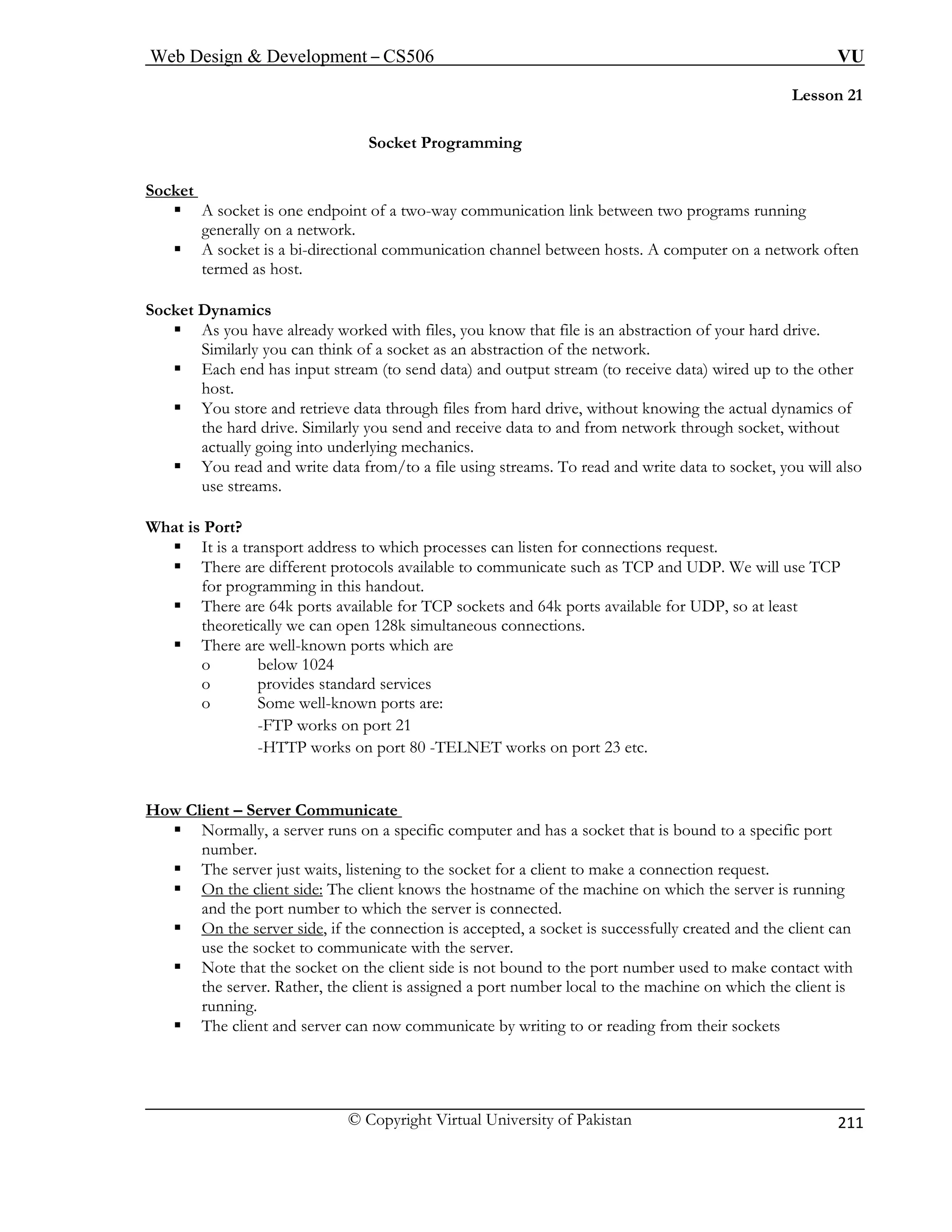
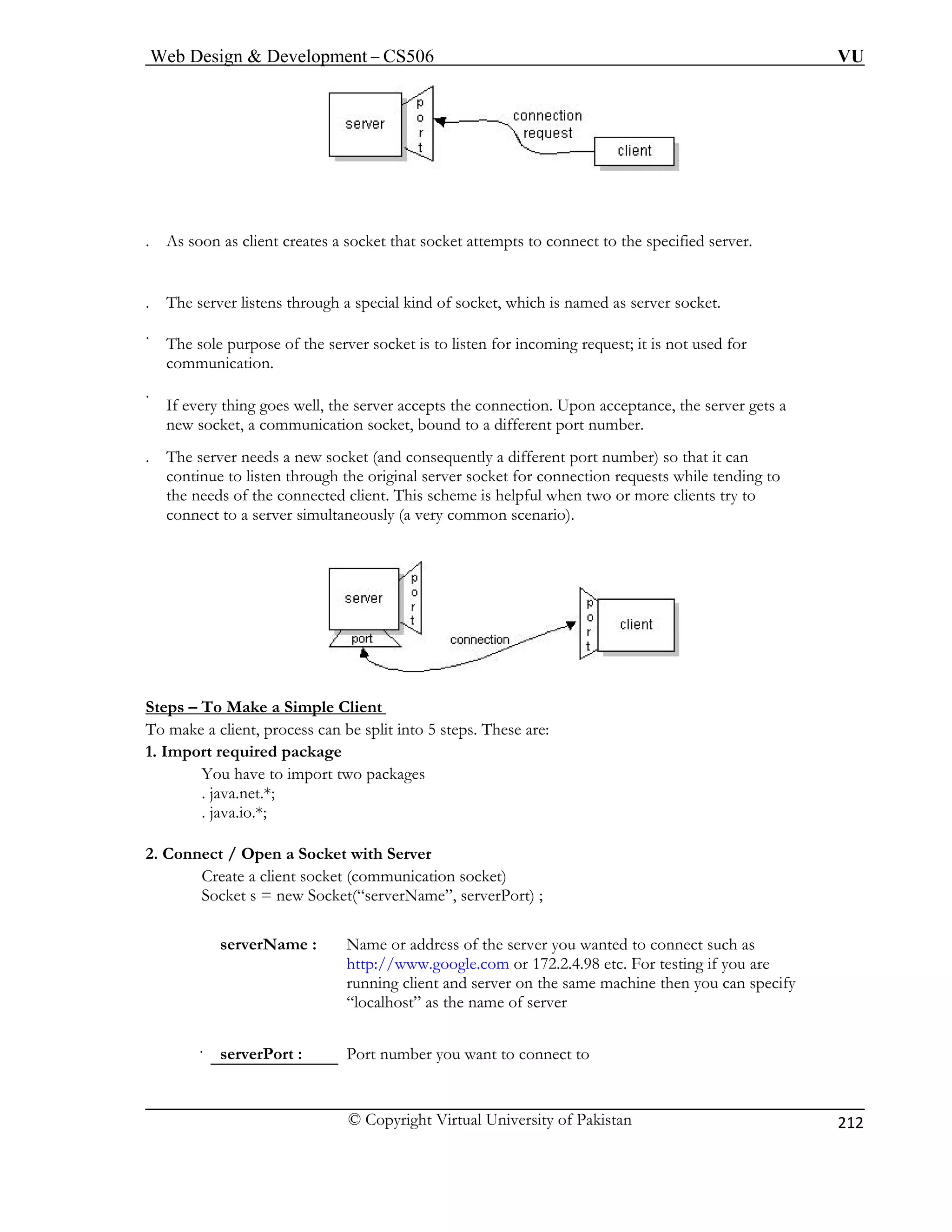
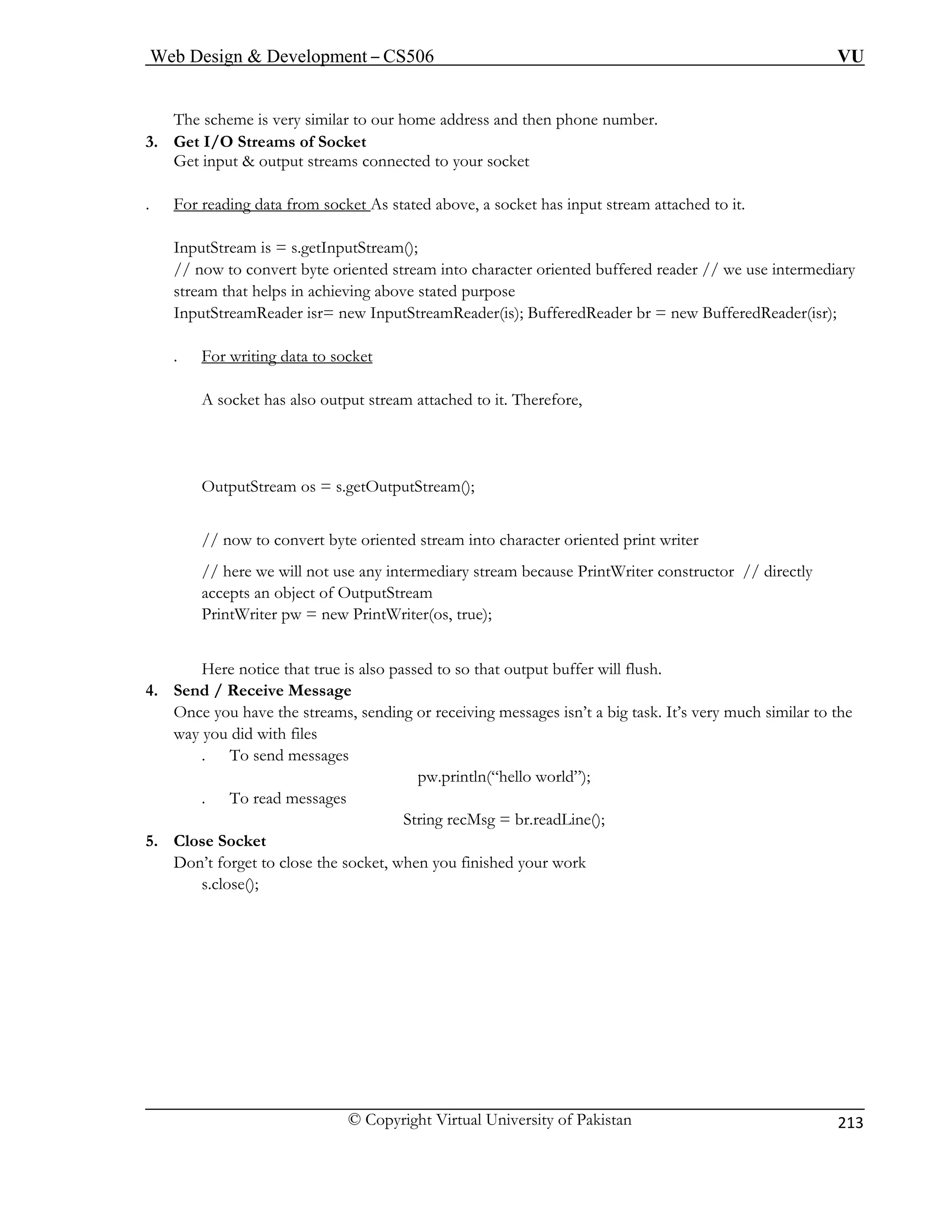
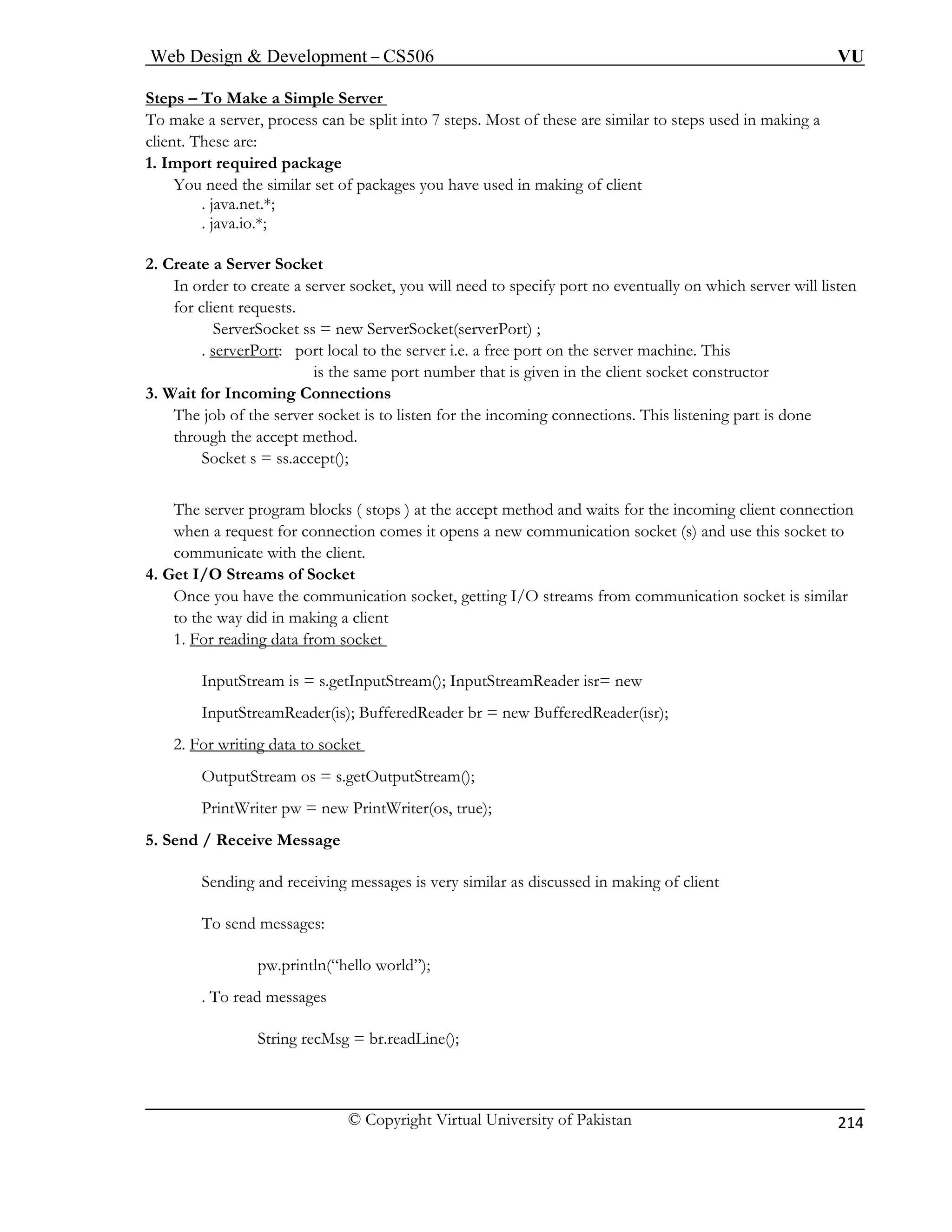
![Web Design Development – CS506 VU
© Copyright Virtual University of Pakistan
215
6. Close Socket
s.close
Example Code 21.1: Echo Server Echo Client
();
The c append “hello” with the name send by the client.
After that, server will send back the name with appended “hello”.
EchoServ
Let’s first see the code for the server
import java.net.*;
import java.io.*;
import javax.swing.*;
public class EchoServer
{
public static void main(String args[])
{
try
{
//step 2: create a server socket
ServerSocket ss = new ServerSocket(2222);
System.out.println(Server
/* Loop back to the accept method of the serversocket and wait for a new connection request.
Soserver will continuously listen for requests
*/
while(true) {
// step 3: wait for incoming connection
Socket s = ss.accept();
System.out.println(connection request recieved);
// step 4: Get I/O streams
InputStream is = s.getInputStream();InputStreamReader isr= new
InputStreamReader(is);BufferedReader br = new BufferedReader(isr);
OutputStream os = s.getO
lient will send its name to the server and server will er.java
// step 1: importing required package
started...);
utputStream();](https://image.slidesharecdn.com/webdesignanddevelopment-cs506handouts-141110100145-conversion-gate01/75/Web-design-and-development-cs506-handouts-215-2048.jpg)
![Web Design Development – CS506 VU
© Copyright Virtual University of Pakistan
216
PrintWriter pw = new PrintWriter(os,true);
// reading name sent by clientString name = br.readLine(); // appending “hello” with the
received name
String msg = Hello + name + from Server; // sending back to client
pw.println(msg);
// closing communication sockeys.close();
} // end while
}catch(Exception ex){
System.out.println(ex); } } } // end class
EchoClient.java
The code of the client is given below
// step 1: importing required package
import java.net.*;import java.io.*;import
javax.swing.*;
public class EchoClient{
public static void main(String args[]){
try {
//step 2: create a communication socket
// if your server will run on the same machine thenyou can pass “localhost” as server address
*/
/* Notice that port no is similar to one passedwhile creating server socket */server
Socket s = new Socket(“localhost”, 2222);
// step 3: Get I/O streams
InputStream is = s.getInputStream();InputStreamReader isr= new
InputStreamReader(is);BufferedReader br = new BufferedReader(isr);
OutputStream os = s.getOutputStream();PrintWriter pw = new
PrintWriter(os,true);
// step 4: Send / Receive message
// asking use to enter his/her name
String msg = JOptionPane.showInputDialog(Enter your name);
// sending name to server
pw.println(msg);
// step 5: Send / Receive message](https://image.slidesharecdn.com/webdesignanddevelopment-cs506handouts-141110100145-conversion-gate01/75/Web-design-and-development-cs506-handouts-216-2048.jpg)
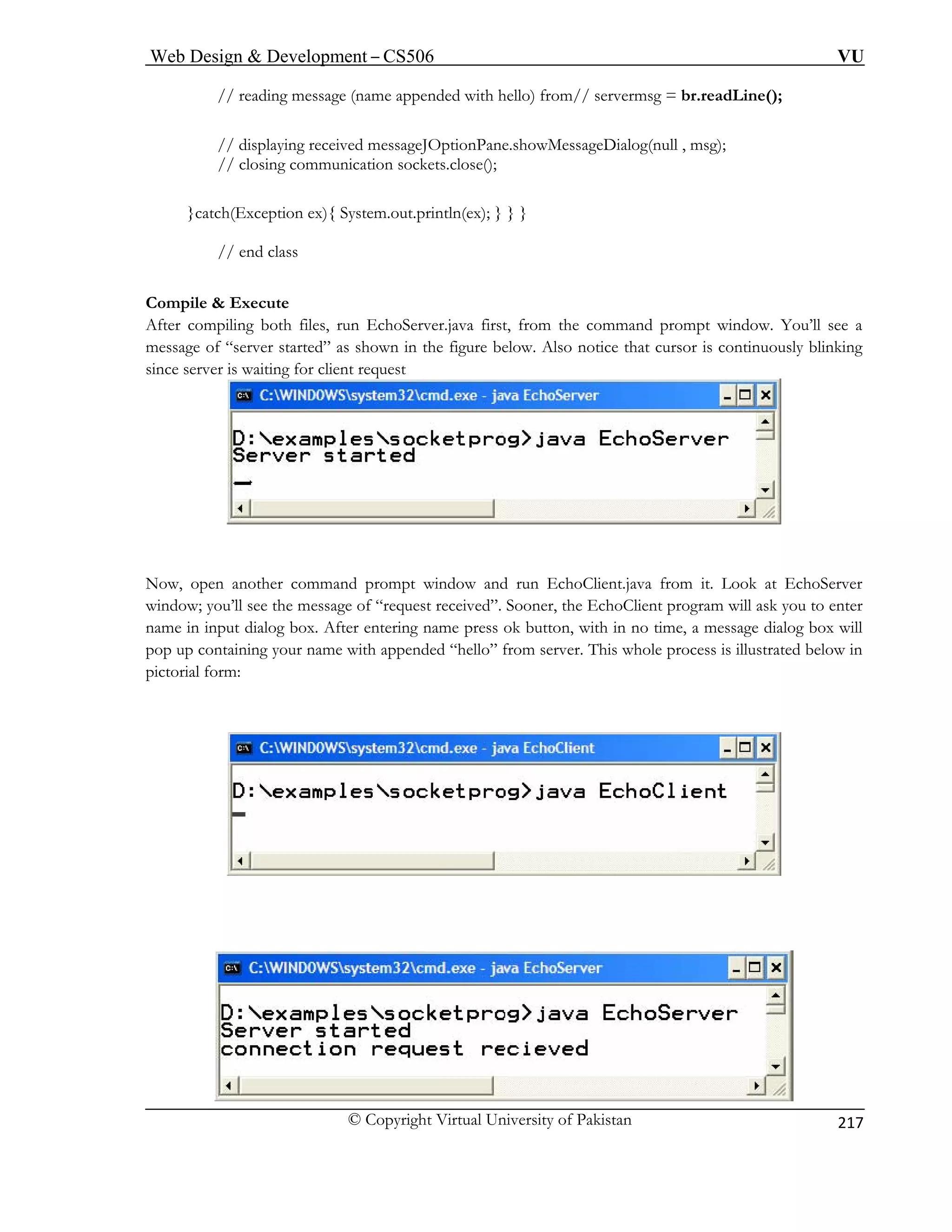
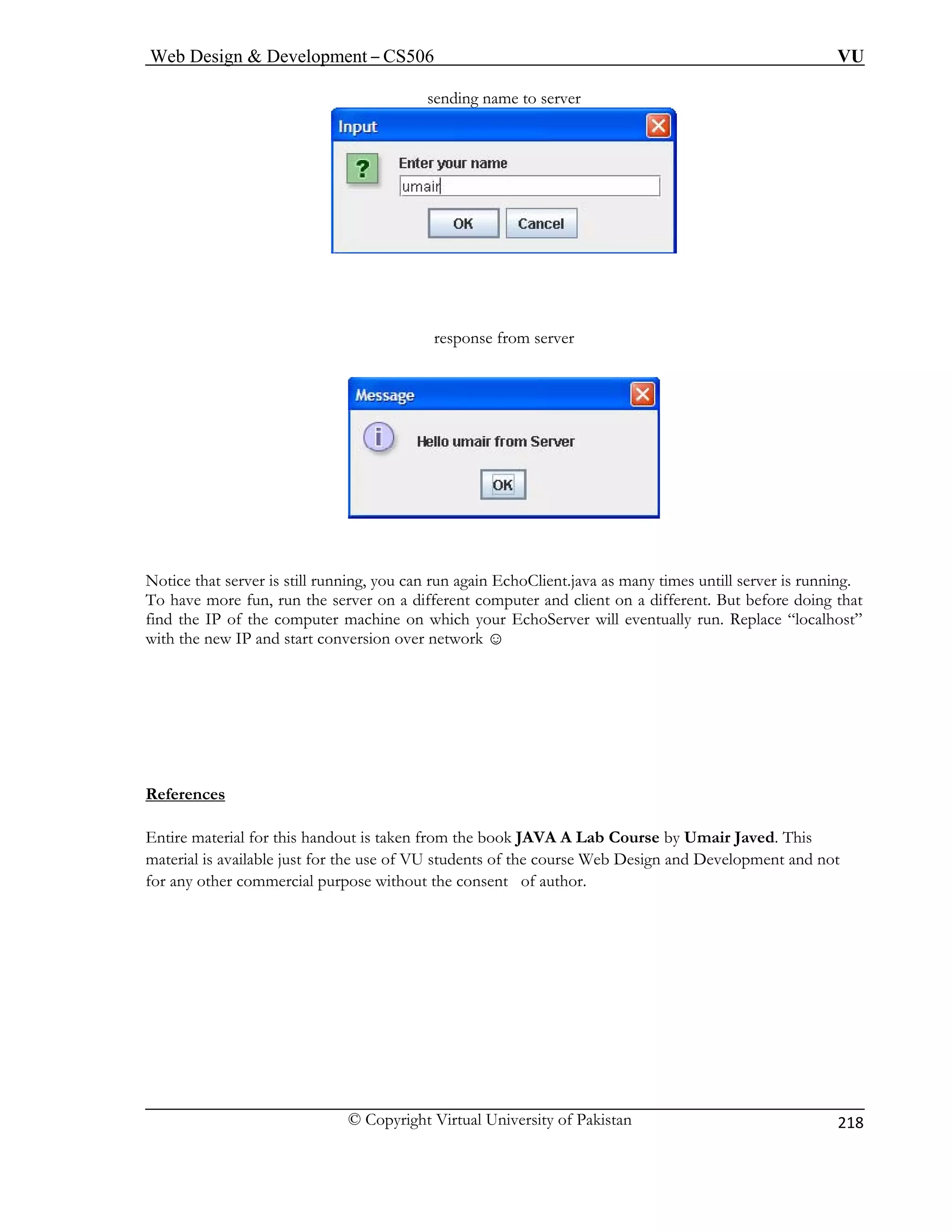
![Web Design Development – CS506 VU
© Copyright Virtual University of Pakistan
219
Lesson 22
Serialization
. You want to send an object to a stream.
Motivati
ƒ A boring conversion from a file to memory
ƒ As you might recall that AddressBook program reads data from file and then parses it
ƒ This is a common problem
Revisiting A
We read rec amed persons.txt. The person record was present in the file in the
following format.
T s used to construct Person objects after reading information from the file is given below.
Here only the part of code is shown, for complete listing, see AddressBook code in your earlier handout.
FileReader fr = new FileReader(persons.txt);BufferedReader br =
while ( line != null ) {
tokens = line.split(,);
add = tokens[1];
ph = tokens[2];
/ you can add p into arraylist, if
}
As you have rsing code is required for converting a line into PersonInfo objects. Serialization
mechanism ving all above in a very simple way.
What?
on lot of code involves
ddressBook ord from a text file n
persons.txt
he code that wa
new BufferedReader(fr); String line = br.readLine();
name = tokens[0];
PersonInfo p = new PersonInfo(name, add, ph); /
needed line = br.readLine();
seen a lot of paeases developer’s life by achie](https://image.slidesharecdn.com/webdesignanddevelopment-cs506handouts-141110100145-conversion-gate01/75/Web-design-and-development-cs506-handouts-219-2048.jpg)
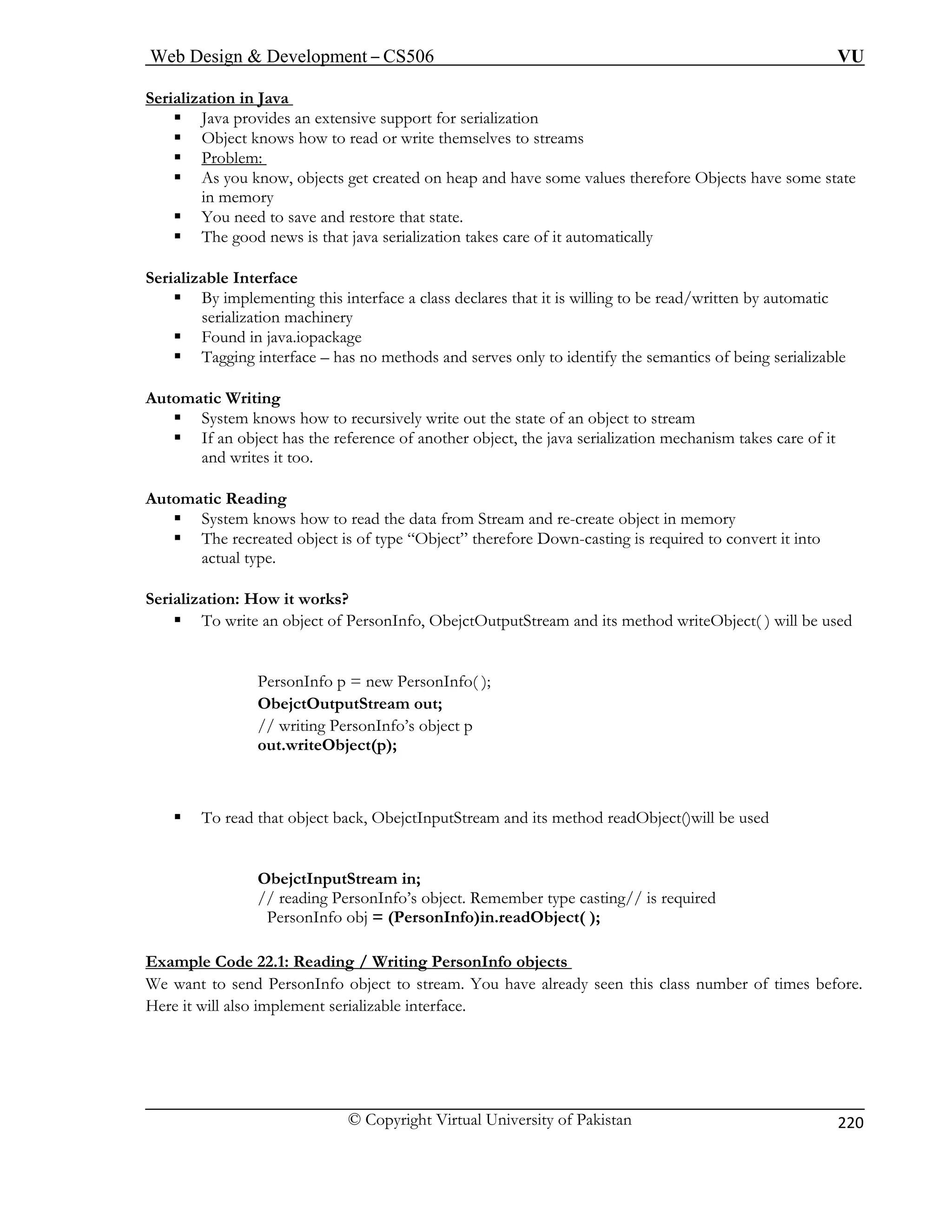
![Web Design Development – CS506 VU
© Copyright Virtual University of Pakistan
221
PersonInfo.java
import javax.swing.*;
String name;
String address;
String phoneNum;
(String n, String a, String p) {
phoneNm = p;
g person record on GUIpublic void printPersonInfo( ) {
JOptionPane.showMessageDialog(null ,
“name: ” + name + “address:” +address +
phone no:” + phoneNum);
}
} // end class
WriteEx.java
The fo sonInfo object to a file
impor
public
public static void main(String args[ ]){
ew PersonInfo(ali, defence, 9201211);
tput stream with “ali.dat”
FileOutputStream fos =new FileOutputStream(ali.dat);
// attaching ObjectOutput stream over FileOutput// stream
tputStream out =new ObjectOutputStream(fos);
//serialization
// writing object to ‘ali.dat’
out.writeObject(pWrite);
out.close();
fos.close();
} catch (Exception ex){
System.out.println(ex)
import java.io.*
class PersonInfo implements Serializable{
//parameterized constructorpublic PresonInfoname = n; address = a; } //method for displayin
“
llowing class will serialize Per
t java.io*;
class WriteEx{
PersonInfo pWrite =ntry { // attaching FileOuObjectOu
// closing streams](https://image.slidesharecdn.com/webdesignanddevelopment-cs506handouts-141110100145-conversion-gate01/75/Web-design-and-development-cs506-handouts-221-2048.jpg)
![Web Design Development – CS506 VU
© Copyright Virtual University of Pakistan
222
}
} // end class
ReadEx.java
The following class will read serialized object of PersonInfo from file i.e “ali.data”
import java.io*; public class ReadEx{ public
static void main(String args[ ]){ try { //
attaching FileInput stream with “ali.dat”
FileInputStream fin = new FileInputStream(ali.dat);
tStream in = new ObjectInputStream(fis);
li.dat’
adObject( );
intPersonInfo method to confirm that// object contains same set of values
before// serializatoion
// closing streams
}
} // en
Compile Execute
After compilation, first run the WriteEx.java file and visit the “ali.dat” file. Then run ReadEx.java from
different command or same command prompt.
Object Serialization Network
// attaching FileInput stream over ObjectInput stream
ObjectInpu//de-serializa
tion // reading object from ‘a
PersonInfo pRead = (PersoInfo)in.Re
// calling pr
pRead.printPersonInfo();
in.close(); fis.close();
catch (Exception ex){ System.out.println(ex) } d class
. You can read / write to a network using sockets
. All you need to do is attach your stream with socket rather than file
. The class version should be same on both sides (client network) of the network](https://image.slidesharecdn.com/webdesignanddevelopment-cs506handouts-141110100145-conversion-gate01/75/Web-design-and-development-cs506-handouts-222-2048.jpg)
![Web Design Development – CS506 VU
© Copyright Virtual University of Pakistan
223
Example Code 22.2: Sending/Reading Objects to/from Network
We are going to use same PersonInfo class listed in example code 22.1. An object of PersonInfo class will be sent by client on network using sockets and then be read by server from network.
Sending Objects over Network
The following class ClientWriteNetEx.java will send an object on network
imp j
java w
in(Str
sonIn ”); // create a
communication socket
Socket s = new Socket(“localhost”, 2222);
treams
OutputStream is = s.getOutputStream();
tOutput stream over Input stream
ObjectOutputStream oos= new ObjectOutputStream(is);
// writing object to network
oo
// closing communication socket
s.close();
}cat
System.out.println(
}
} }// end class
Reading Objects over Network
The following class ServerReadNetEx.java will read an object of PersonInfo sent by client.
import java.net.*;import java.io.*;import
javax.swing.*;
ortava.net.*;import java.io.*;import x.sing.*;
public class ClientWriteNetEx
{ public static void
maing args[]){ try { Pers
onInfo p = new
Perfo(“ali”, “defence”, “9201211
// Get I/O s
// attaching Objec
s.write(p);
ch(Exception ex){
ex);](https://image.slidesharecdn.com/webdesignanddevelopment-cs506handouts-141110100145-conversion-gate01/75/Web-design-and-development-cs506-handouts-223-2048.jpg)
![Web Design Development – CS506 VU
© Copyright Virtual University of Pakistan
224
public class ServerReadNetEx{
public static void main(String rgs[])
// create a server socket
ServerSocket ss = new ServerSocket(2222);
{
ing connection
Socket s = ss.accept();
request recieved);
// Get I/O streams
InputStr tInputStream();
// attaching ObjectOutput stream over Input stream
ObjectIn new ObjectInputStream(is);
// read PersonInfo object from network
Pers
p.printPersonInfo();
// closing communication socket
s.close();
} // end while
}catch(Exception ex){ System.out.println(ex); } } } // end class
{ try
{
System.out.println(Server started...); /* Loop back to the accept method of the serversocket and wait for a new connection request. Soserver will continuously listen for requests */ while(true) / wait for incom
/
System.out.println(connection
eam is = s.ge
putStream ois =
onInfo p = (PersonInfo)ois.read( );](https://image.slidesharecdn.com/webdesignanddevelopment-cs506handouts-141110100145-conversion-gate01/75/Web-design-and-development-cs506-handouts-224-2048.jpg)
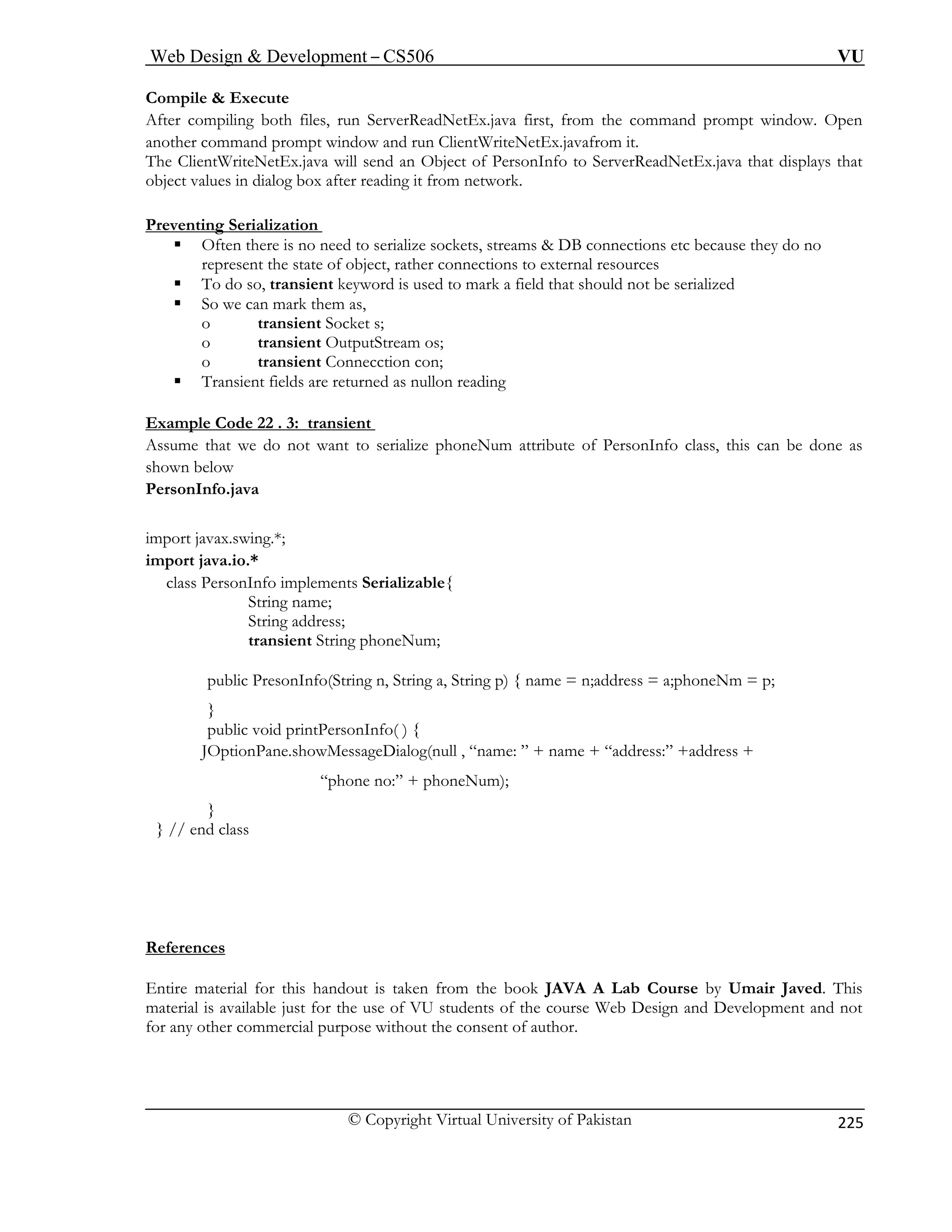
![Web Design Development – CS506 VU
© Copyright Virtual University of Pakistan
226
Lesson 23
Multithreading
odu
Intrction
Multithreading is the ability to do multiple things at once wnular
ith in the same application. It provides finer
reads ess. A
. mul require more complex
chro arvation.
graity of concurrency. A thread — sometimes called an execution context or a lightweight process — is a single sequential flow of control within a program.
Th are light weight as compared to processes because they take fewer resources then a procthread is easy to create and destroy. Threads share the same address space
i.etiple threads can share the memory variables directly, and therefore may
synnization logic to avoid deadlocks and st
Sequential Execution vs Multithreading
Every program has atleast one thread. Programs without multithreading executes sequentially. That is, after
executing one instruction the next instruction in sequence is executed. If a function is called then until the
mplet executed. Similarly if there is a loop then instructions
er loo ets completed. Consider the following java program having
ree loops in it.
// F T
public class ThreeLoopTest {
//first loop
// sec
for (in rintln(“second ” + j);
d ” + k);
} // end main} // end class
coion of the function the next instruction is not
aftp only gets executed when the loop g
th
ilehreeLoopTest.java
public static void main (String args[ ]) {
for (int i=1; i= 5; i++)System.out.println(“first ” +i);
ond loop t j=1; j= 5; j++)System.out.p
// third loop for (int k=1; k= 5; k++)System.out.println(“thir Note: Each loop has 5 iterations in the ThreeLoopTest program.](https://image.slidesharecdn.com/webdesignanddevelopment-cs506handouts-141110100145-conversion-gate01/75/Web-design-and-development-cs506-handouts-226-2048.jpg)

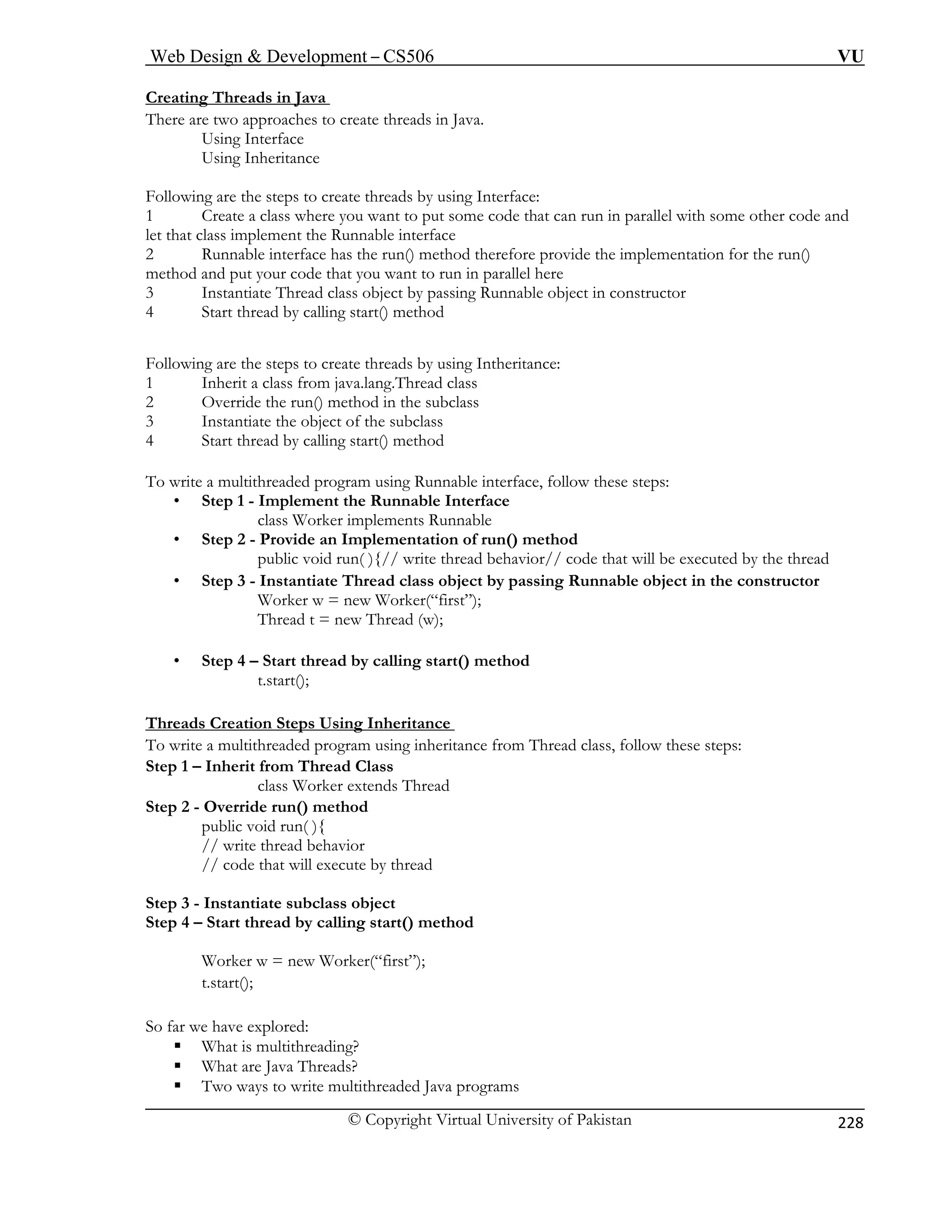
![Web Design Development – CS506 VU
© Copyright Virtual University of Pakistan
229
Now we will re-write the ThreeLoopTest program by using Java Threads. At first we will use the Iapproach and then we will use Inheritance. Code Example using Interface // File Worker.java public class Worker implements Runnable {
nterface
private String job ;
//Constructor of Worker class
public Worker (String j ){
job = j;
}
//Implement run() method of Runnable interface
public void run ( ) {
for(int i=1; i= 10; i++)System.out.println(job + = + i);
}
} // end class
// File ThreadTest.java
public class ThreadTest{
public static void main (String args[ ]){
//instantiate three objects
Worker first = new Worker (“first job”);
Worker second = new Worker (“second job”);
Worker third = new Worker (“third job”);
//create three objects of Thread class passing worker
//(runnable) to them
Thread t1 = new Thread (first );
Thread t2 = new Thread (second);
Thread t3 = new Thread (third);
//start threads to execute
}//end main} // end class
Following code is similar to the code given above, but uses Inheritance instead of interface
// File Worker.java
public cla ead{
priva
//C
public Worker (String j ){
job
}
//Override run() method of Thread class
public void run ( ) {for(int i=1; i= 10; i++)System.out.println(job + = + i);
}
t1.start();
t2.start();
t3.start();
ss Worker extends Thrte String job ; onstructor of Worker class
= j;](https://image.slidesharecdn.com/webdesignanddevelopment-cs506handouts-141110100145-conversion-gate01/75/Web-design-and-development-cs506-handouts-229-2048.jpg)
![Web Design Development – CS506 VU
© Copyright Virtual University of Pakistan
230
} // end class
/ File ThreadTest.java
public class ThreadTest{
public static void main (String args[ ]) {
//instantiate three objects of Worker (Worker class is now
//becomes a Thread because it is inheriting from it)class
Worker third = new Worker (“third job”);
//start threads to execute
t1.st
.s
hreads provide a way to write concurrent programs. But on a single CPU, all the threads do not run
eously. JVM assigns threads to the CPU based on thread priorities. Threads with higher priority are
executed in preference to threads with lower priority. A thread’s default priority is same as that of the
creating
A Thre and 10. We can also use the following predefined
constants to assign priorities.
Thread.MAX_PRIORITY (typically 10)
Thread.NORM_PRIORITY (typically 5)
Thread.MIN_PRIORITY (typically 1)
To change the priority of a thread, we can use the following method
setPriority(int priority)
It changes the priority of this thread to integer value that is passed. It throws an IllegalArgumentException
if the priority is not in the range MIN_PRIORITY to MAX_PRIORITY i.e. (1–10).
For example, we can write the following code to change a thread’s priority.
Thread t = new Thread (RunnableObject);
// by using predefined constantt.setPriority
(Thread.MAX_PRIORITY);
// by using integer constantt.setPriority (7);
Thread Priority Scheduling
/
Worker first = new Worker (“first job”); Worker second = new Worker (“second job”);
art(); tart();
t2
t3.start(); }//end main} // end class
Tsimultan
thread i.e. parent thread.
ad’s priority can be any integer between 1
The Java runtime environment supports a very simple, deterministic scheduling algorithm called fixed-priority
scheduling. This algorithm schedules threads on the basis of their priority relative to other Runnable
threads.
At any given time, when multiple threads are ready to be executed, the runtime system chooses for
execution the Runnable thread that has the highest priority. Only when that thread stops, yields (will be
explained later), or becomes Not Runnable will a lower-priority thread start executing. If two threads of the
same priority are waiting for the CPU, the scheduler arbitrarily chooses one of them to run. The chosen
thread runs until one of the following conditions becomes true:
ƒ A higher priority thread becomes Runnable.
ƒ It yields, or its run() method exits.
ƒ On systems that support time-slicing, its time allotment has expired.](https://image.slidesharecdn.com/webdesignanddevelopment-cs506handouts-141110100145-conversion-gate01/75/Web-design-and-development-cs506-handouts-230-2048.jpg)
![Web Design Development – CS506 VU
© Copyright Virtual University of Pakistan
231
Then the second thread is given a chance to run, and so on, until the interpreter exits. Consider t
following figure in which threads of various priorities are represented by capital alphabets A, B, …, K. A
and B have same priority (highest in this iority (lowest in this case). JVM start
executing with A and B, and divides CPU time between these two threads arbitrarily. When both A and B
comes to an end, it chooses the next thread C to execute.
he
case). J and K have same pr Code Example: Thread Properties
Try following example to understand how JVM executes threads based on their priorities.
// File PriorityEx.java
public class PriorityEx{ public static void main (String args[ ]){
//instantiate two objects
Worker first = new Worker (“first job”);
Worker second = new Worker (“second job”);
//create two objects
Thread t1 = new Thread (first );
Thread t2 = new Thread (second);
IN_PRIORITY);
t2.setPriority (Thread.MAX_PRIORITY);
hreads to execute
//set thread priorities t1.setPriority (Thread.M
//start tstart();
t1. t2.start();](https://image.slidesharecdn.com/webdesignanddevelopment-cs506handouts-141110100145-conversion-gate01/75/Web-design-and-development-cs506-handouts-231-2048.jpg)
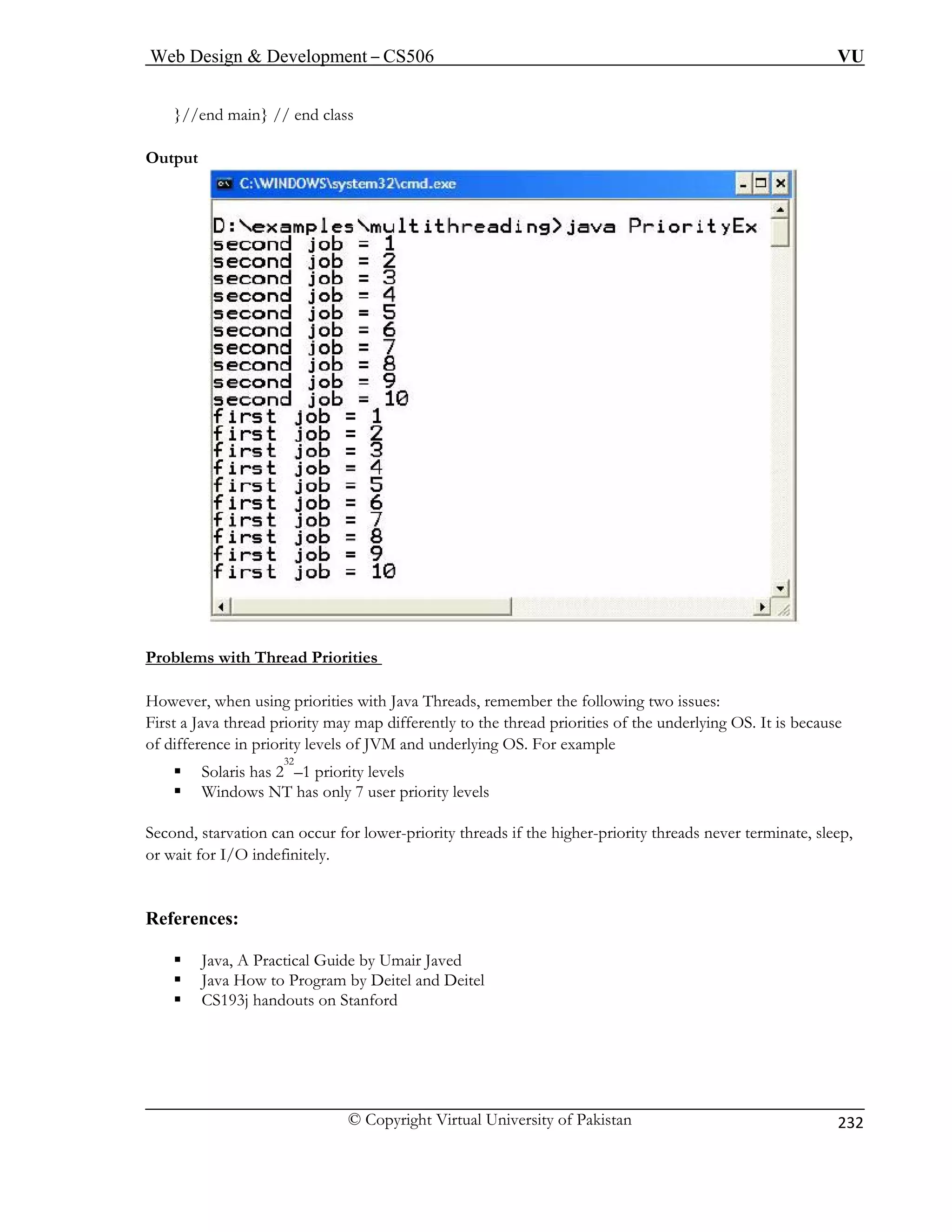
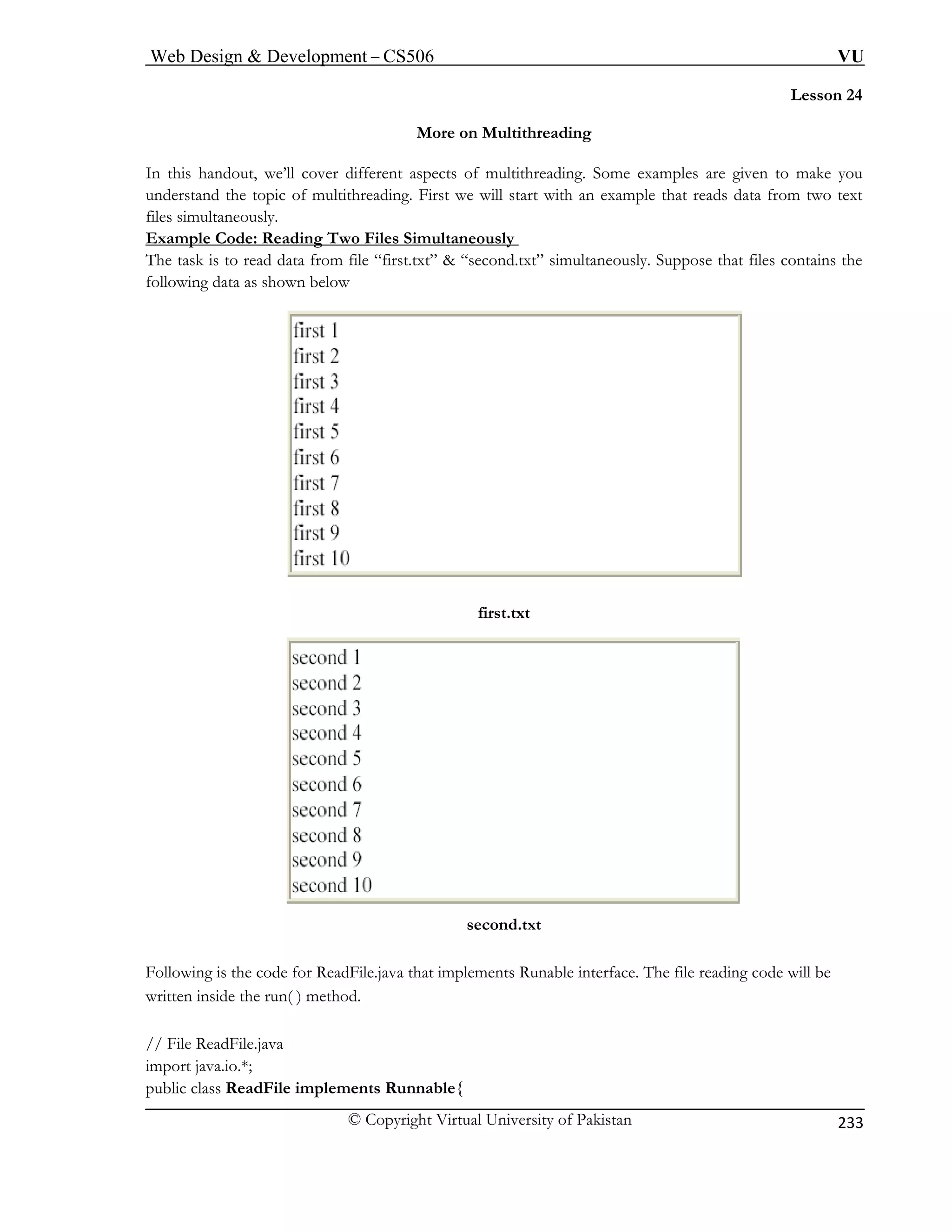
![Web Design Development – CS506 VU
© Copyright Virtual University of Pakistan
234
//attribute used for name of file
String fileName;
public ReadFile(String fn){
// o ains the code for file reading
pub
try
{ // connecting FileReader with attribute fileNameFileReader fr = new
FileReader(fileName);BufferedReader br = new BufferedReader(fr);
String line = ;
// reading line by line data from file// and displaying it on console
line = br.readLine();
while(line != null) {
System.out.println(line);
line = br.readLine();
}
ose();
lose();
}catch (Exception e){
System.out.println(e);
}
} // end run() method
} // File Test.java
ublic class Test {
public static void main (String args[]){
// creating ReadFile objects by passing file names to them
ReadFile first = new ReadFile(first.txt);
ReadFile second = new ReadFile(second.txt);
// Instantiating thread objects and passing
// runnable (ReadFile) objects to them
Thread t1 = new Thread(first);
Thread t2 = new Thread(second);
// starting threads that cause threads to read data from
// two different files simultaneously
t1.start();
t2.start();
}
}
// param constructor
fileName = fn; }
verriding run method// this method contlic void run ( ){
fr.clbr.c
p](https://image.slidesharecdn.com/webdesignanddevelopment-cs506handouts-141110100145-conversion-gate01/75/Web-design-and-development-cs506-handouts-234-2048.jpg)
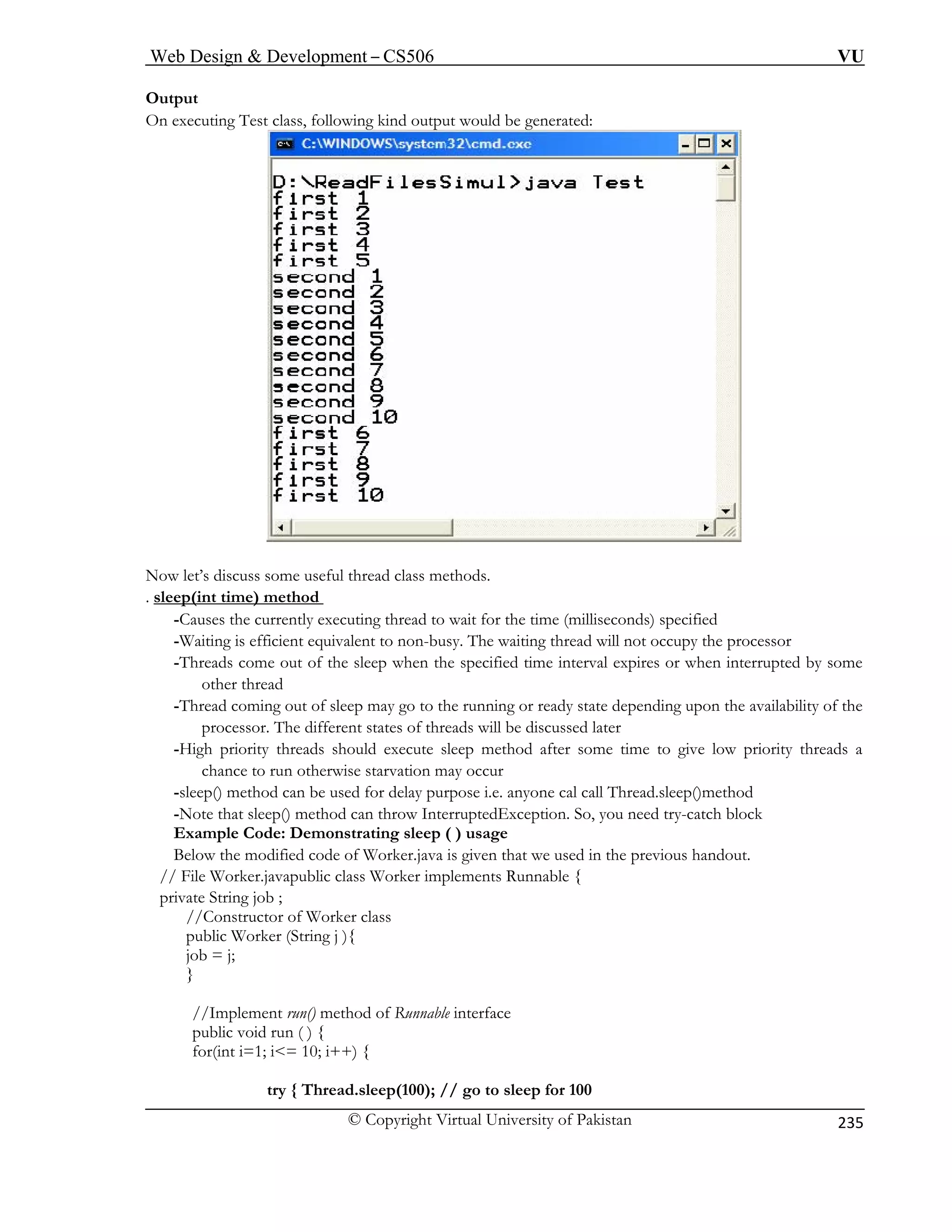
![Web Design Development – CS506 VU
© Copyright Virtual University of Pakistan
236
ms}catch (Exception
ex){System.out.println(ex);}
} // end for} //
en
// File
public class SleepEx {
public static void main (String args[ ]){
// Creating Worker objects
Worker first = new Worker (“first job”);
Worker second = new Worker (“second job”);
tiating thread class objects
Thread t1 = new Thread (first );
Thread t2 = new Thread (second);
// starting thread
t1.start();
t2.start();
}
} // end class
Output
On executing SleepEx.java, the output will be produced with exact alternations between first thread
second thread. On starting threads, first thread will go to sleep for 100 ms. It gives a chance to second
thread to execute. Later this thread will also go to sleep for 100 ms. In the mean time the first thread will
come out of sleep and got a chance on processor. It will print job on console and again enters into sleep
state and this cycle goes on until both threads finished the run() method
System.out.println(job + = + i); d run } // end class SleepEx.java
// Instan Before jumping on to example code, lets reveal another aspect about main() method. When you run a Java
program, the VM creates a new thread and then sends the main(String[] args) message to the class to be run!
Therefore, there is always at least one running thread in existence. However, we can create more threads](https://image.slidesharecdn.com/webdesignanddevelopment-cs506handouts-141110100145-conversion-gate01/75/Web-design-and-development-cs506-handouts-236-2048.jpg)
![Web Design Development – CS506 VU
© Copyright Virtual University of Pakistan
237
which can run concurrently with the existing default thread.
void main (String args[ ]){ System.out.println(“main thread
going to sleep”);
try {
// the main thread will go to sleep causing delay
Thread.sleep(100);
}catch (Exception ex){
System.out.println(ex);
}
System.out.println(“main thread coming out of sleep”); } // end main()
} // end class
Output
On executing DelayEx class, you will experience a delay after the first statement displayed. The second
statement will print when the time interval expired. This has been show below in the following two
diagrams:
sleep() method can be used for delay purpose. This is demonstrated in the DelayEx.java given below // File DelayEx.java public class DelayEx { public static . yield( ) method
-Allows any other threads of the same priority to execute (moves itself to the end of the priority queue)
-If all waiting threads have a lower priority, then the yielding thread resumes execution on the CPU
-Generally used in cooperative scheduling schemes
Example Code: Demonstrating yield ( ) usage
Below the modified code of Worker.javais given
// File Worker.javapublic class Worker implements
Runnable { private String job ;
//Constructor of Worker class](https://image.slidesharecdn.com/webdesignanddevelopment-cs506handouts-141110100145-conversion-gate01/75/Web-design-and-development-cs506-handouts-237-2048.jpg)
![Web Design Development – CS506 VU
© Copyright Virtual University of Pakistan
238
public Worker (String j ){
1; i= 10; i++) {
// g
Thread.yield( );
System.out.println(job + = + i);
} // end for
} // end run
} // end class // File YieldEx.java
Worker second = new Worker (“second job”);
g thread class objects
t2.start();
job = j;
}
//Implem
ent run() method of Runnable interface public void run ( ) { for(int i=
iving chance to a thread to execute of same priority
public class YieldEx {
public static void main (String args[ ]){ // Creating Worker objects
Worker first = new Worker (“first job”);
// Instantiatin
Thread t1 = new Thread (first ); Thre
ad t2 = new Thread (second); // starting thread t1.start();
}
} // end class](https://image.slidesharecdn.com/webdesignanddevelopment-cs506handouts-141110100145-conversion-gate01/75/Web-design-and-development-cs506-handouts-238-2048.jpg)
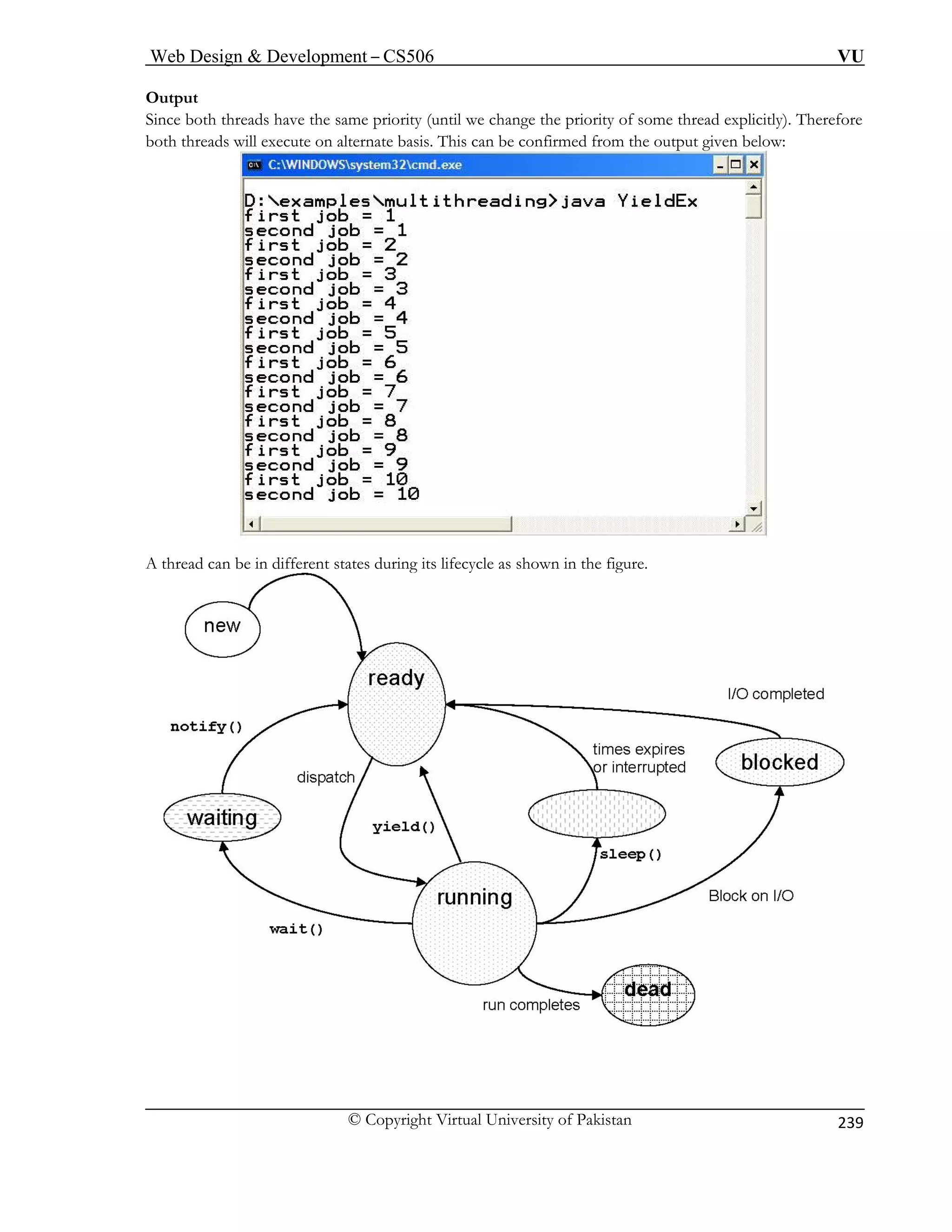
![Web Design Development – CS506 VU
© Copyright Virtual University of Pakistan
240
Some Important states are
. New state
-When a thread is just created
. Ready state
-Thread’s start() method invoked -Thread can now execute -Put it into the Ready Queue of the
scheduler
. Running state
-Thread is assigned a processor and now is running
. Dead state
-Thread has completed or exited
-Eventually disposed off by system
Thread’s Joining
-Used when a thread wants to wait fo ethod
-For example, if thread2 sent the thread2.join() message, it causes the currently executing thread to block
efficiently until thread2 finishes its run() method
public class Worker implements Runnable { private String job ; public Worker (String j ){
job = j;} public void run ( ) {for(int i=1; i= 10; i++) {
System.out.println(job + = + i); } // end for} // end run} //
end class
The class JoinEx will demonstrate how current running (main) blocks until the remaining threads finished
their run( )
// File JoinEx.java
public class JoinEx { public static void main (String args[ ]){
Worker first = new Worker (first job);Worker second = new Worker (second
job);
System.out.println(Starting...);
// starting threads
t1.start();
t2.start();
}catch (Exception ex) {System.out.println(ex);}
System.out.println
} // end main}
r another thread to complete its run( ) m
-Calling join method can throw InterruptedException, so you must use try-catch block to handle it Example Code: Demonstrating join( ) usage Below the modified code of Worker.java is given. It only prints the job of the worker // File Worker.java
Thread t1 = new Thread (first ); Thread t2 = new Thread (second);
// The current running thread (main) blocks until both //workers have finished
try { t1.join();
t2.join();
(All done );](https://image.slidesharecdn.com/webdesignanddevelopment-cs506handouts-141110100145-conversion-gate01/75/Web-design-and-development-cs506-handouts-240-2048.jpg)
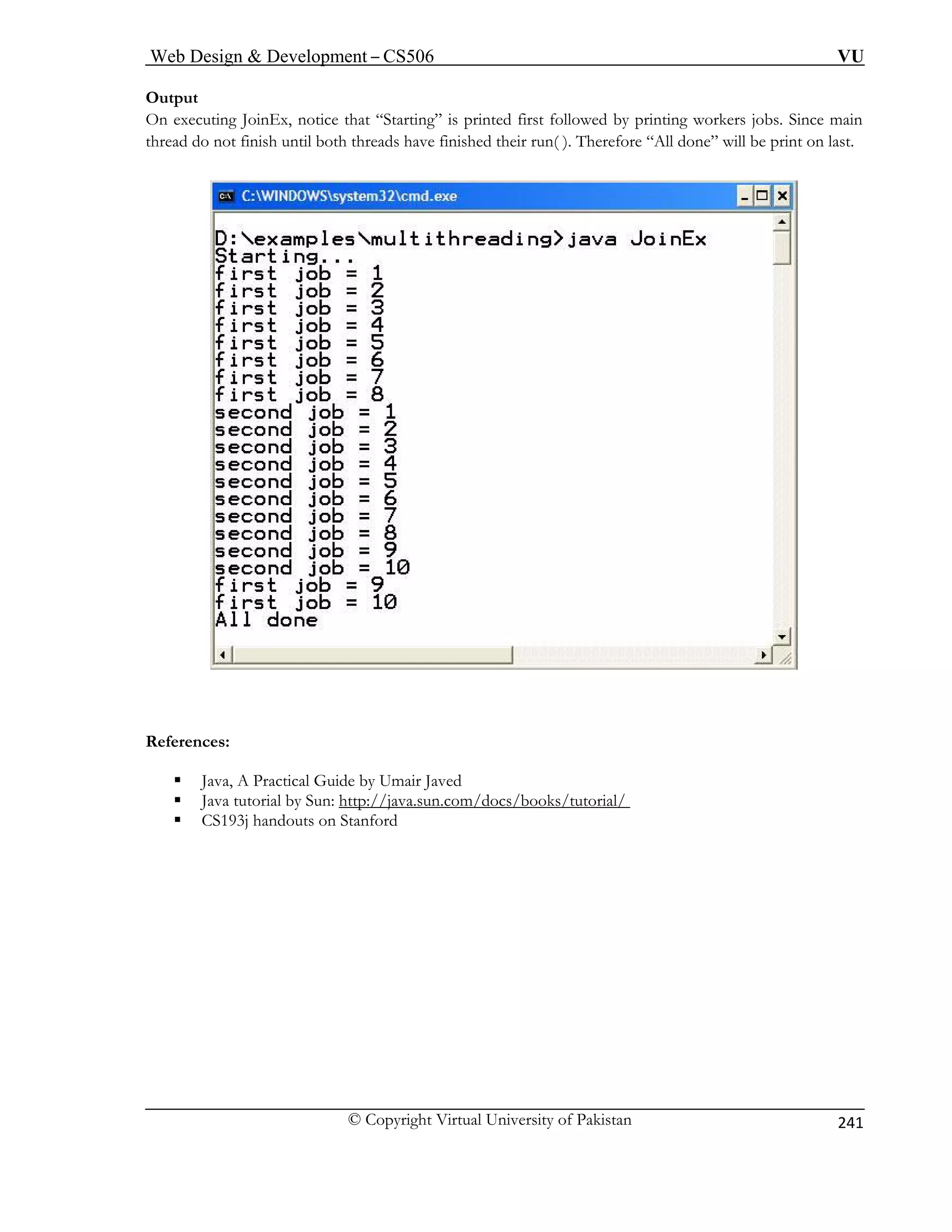
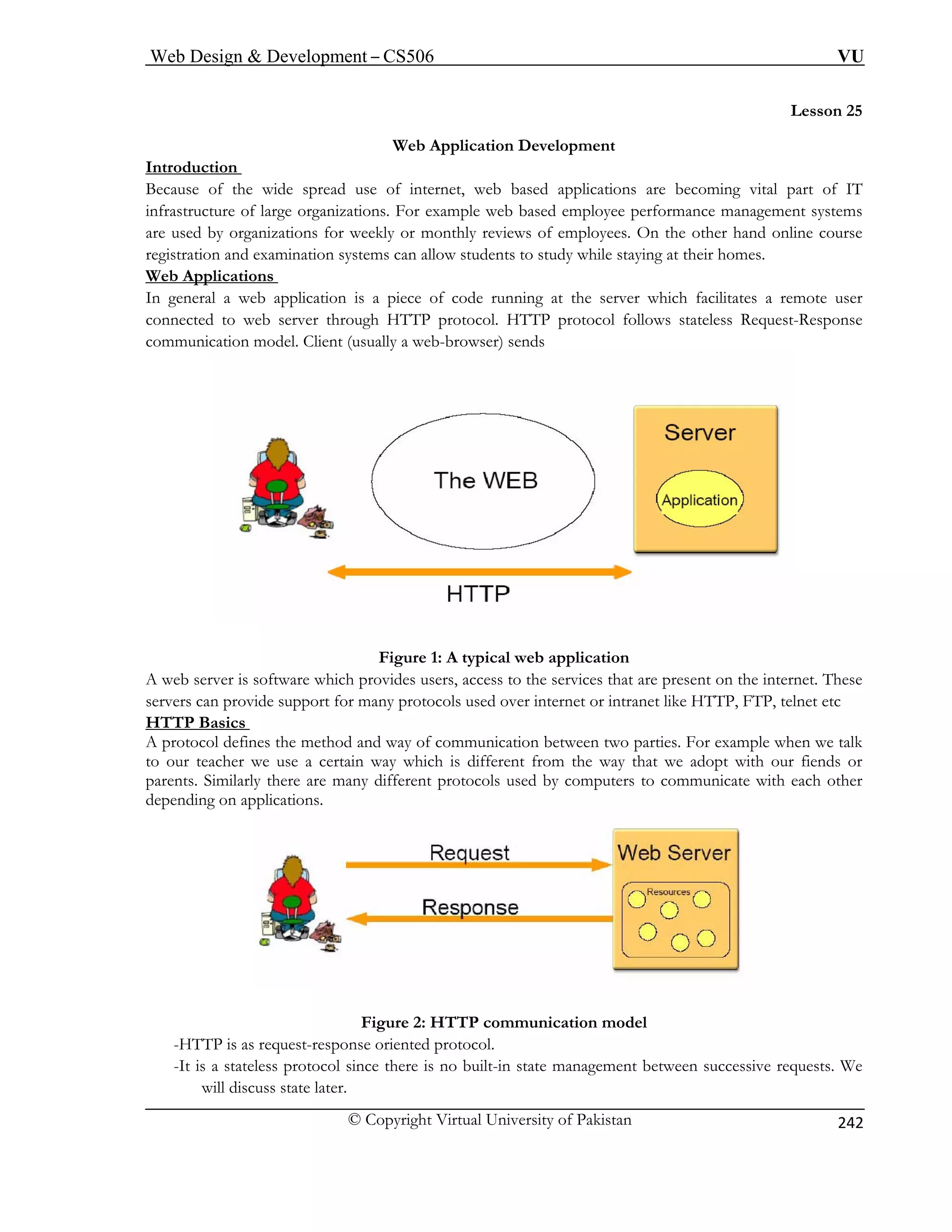
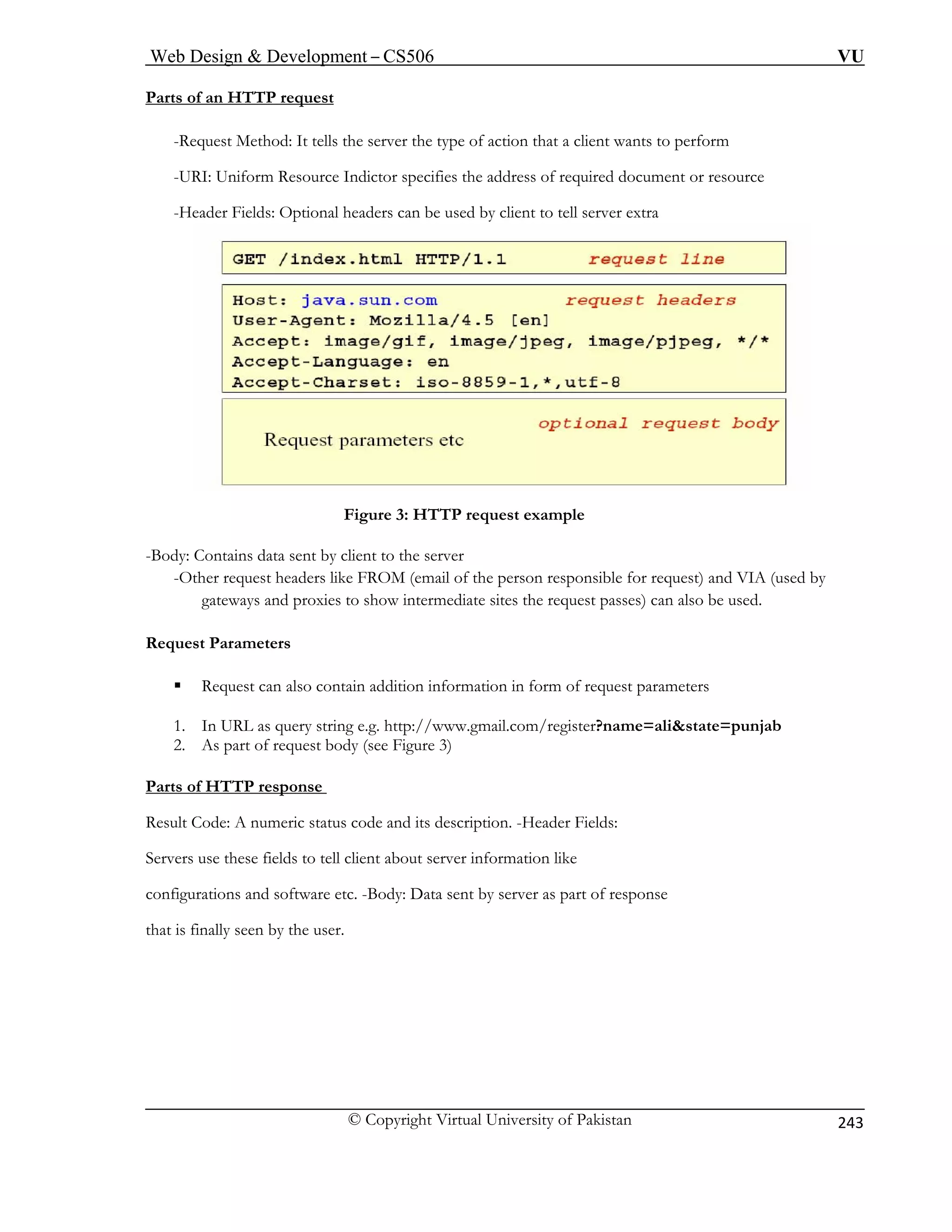
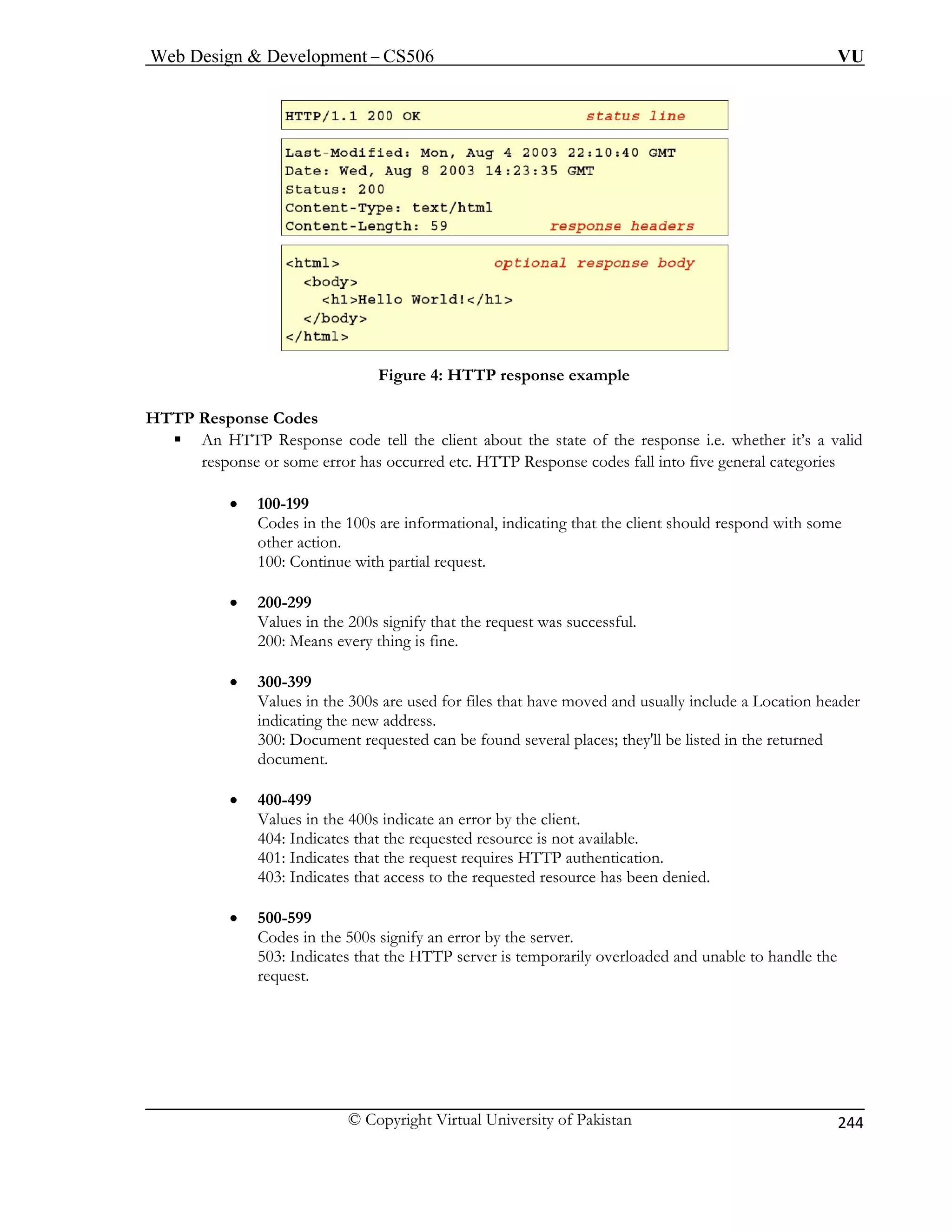
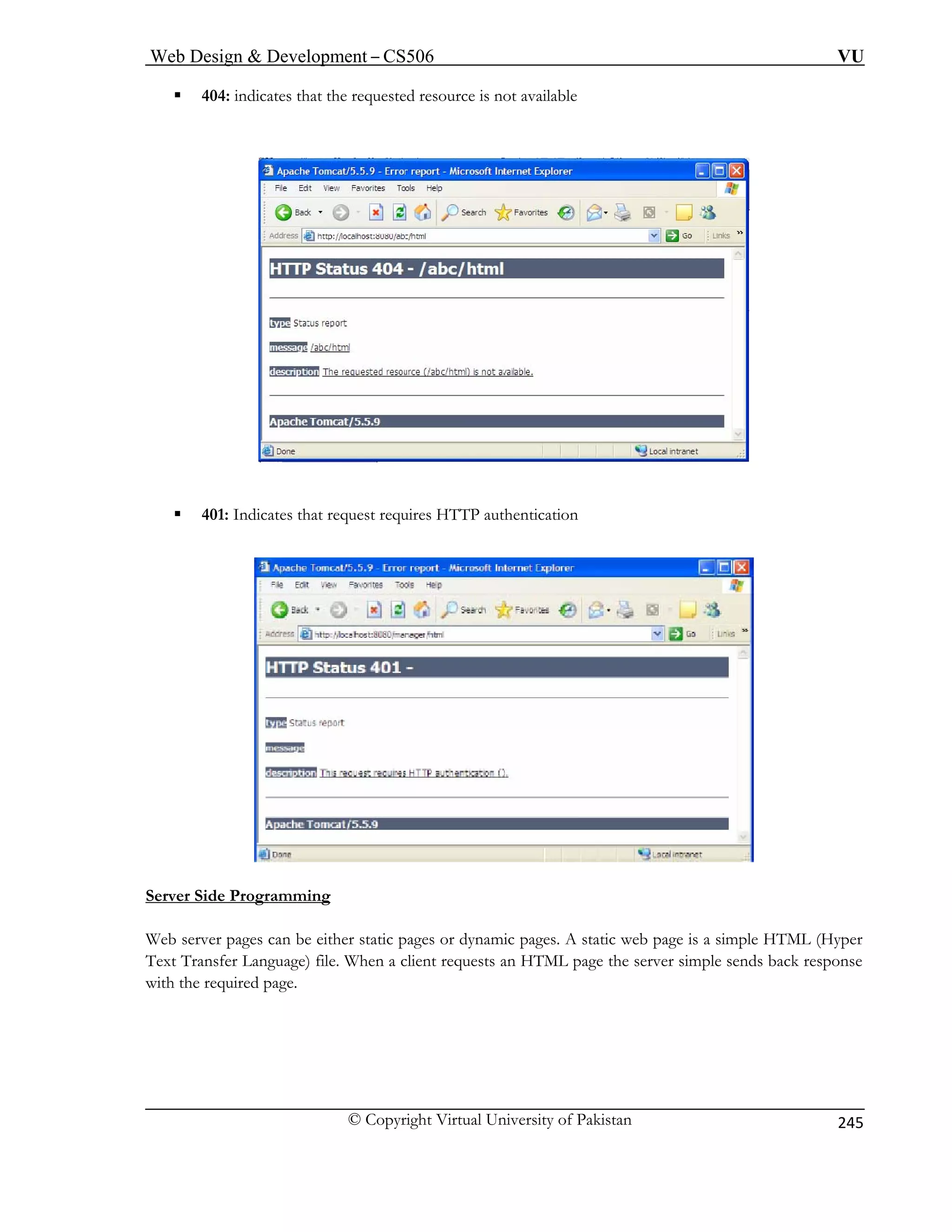
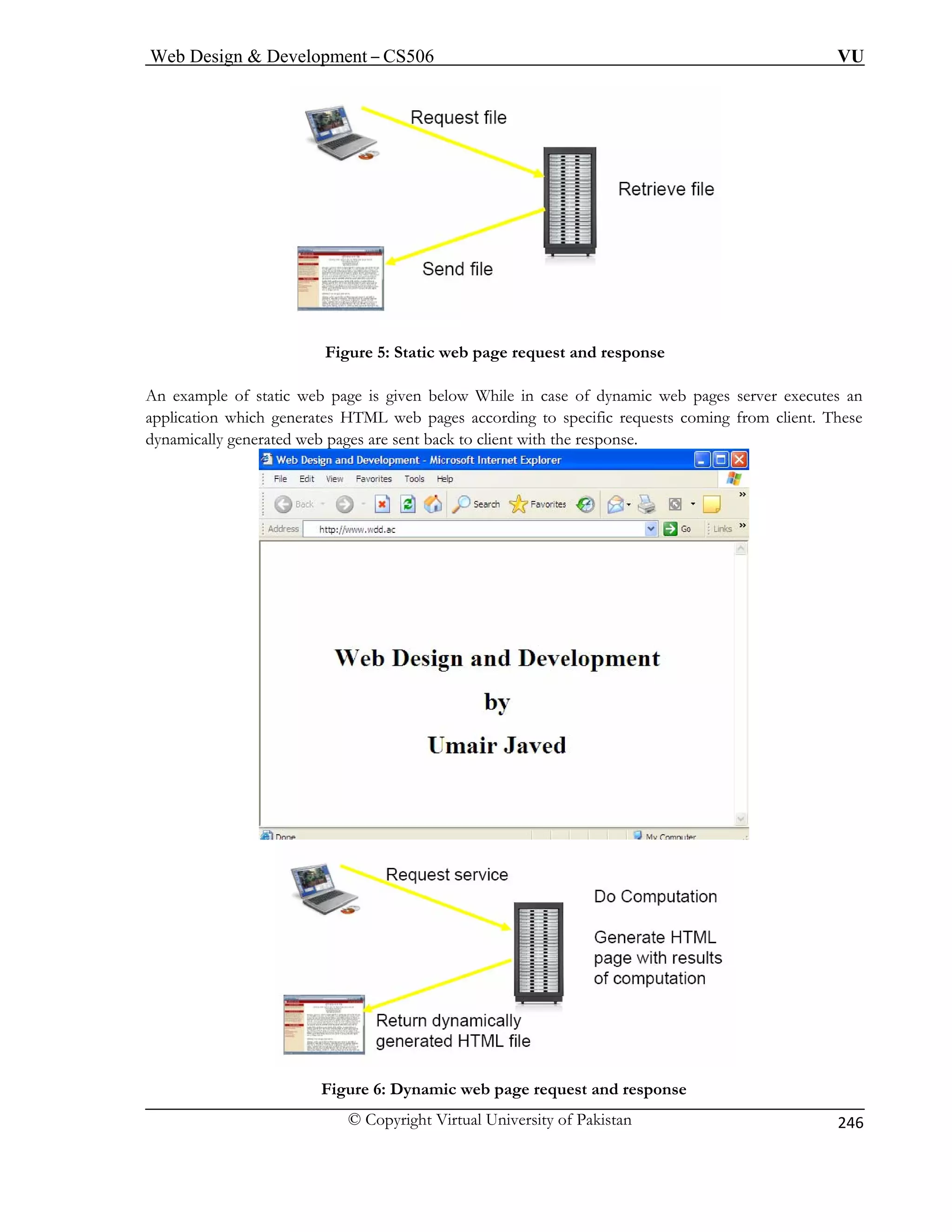
![Web Design Development – CS506 VU
© Copyright Virtual University of Pakistan
247
Why build Pages Dynamically?
Wr
confirmation pages at on line stores. ]
e need to create dynamic web pages when the content of site changes frequently and client specific esponse is required. Some of the scenarios are listed below -The web page is based on data submitted by the user. e.g. results page from search engines and order
Web page is derived from data that changes frequently. e.g. a weather report or news headline The s page.](https://image.slidesharecdn.com/webdesignanddevelopment-cs506handouts-141110100145-conversion-gate01/75/Web-design-and-development-cs506-handouts-247-2048.jpg)
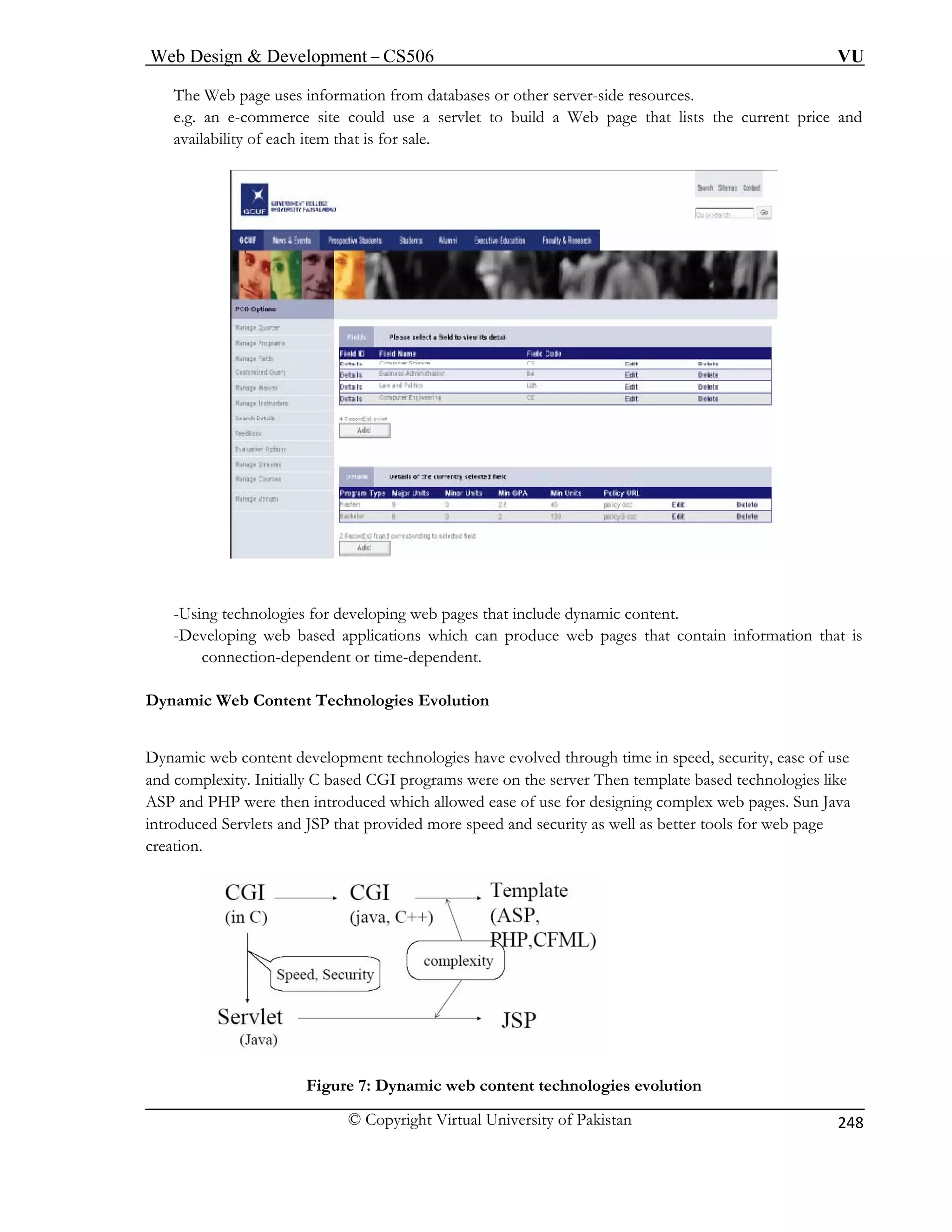
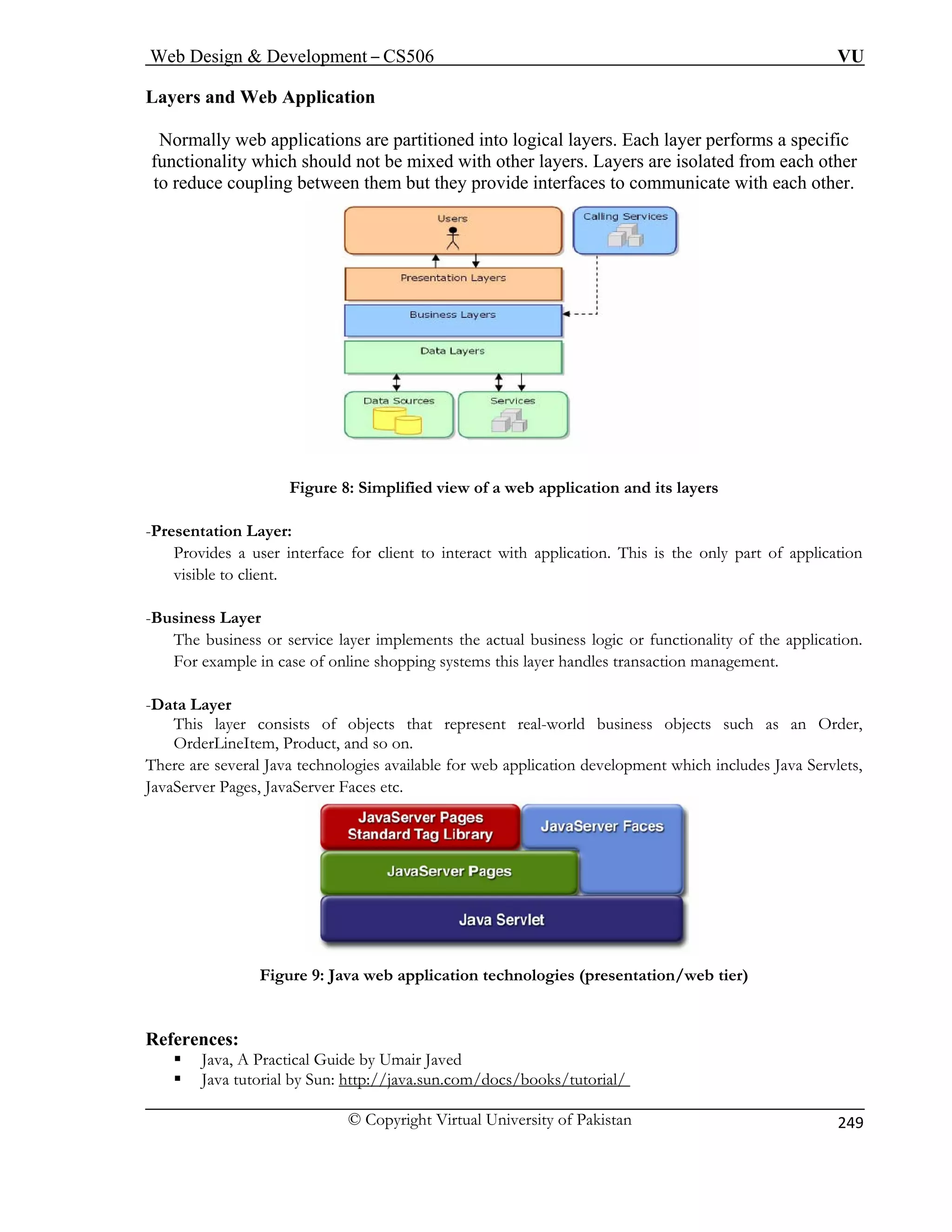

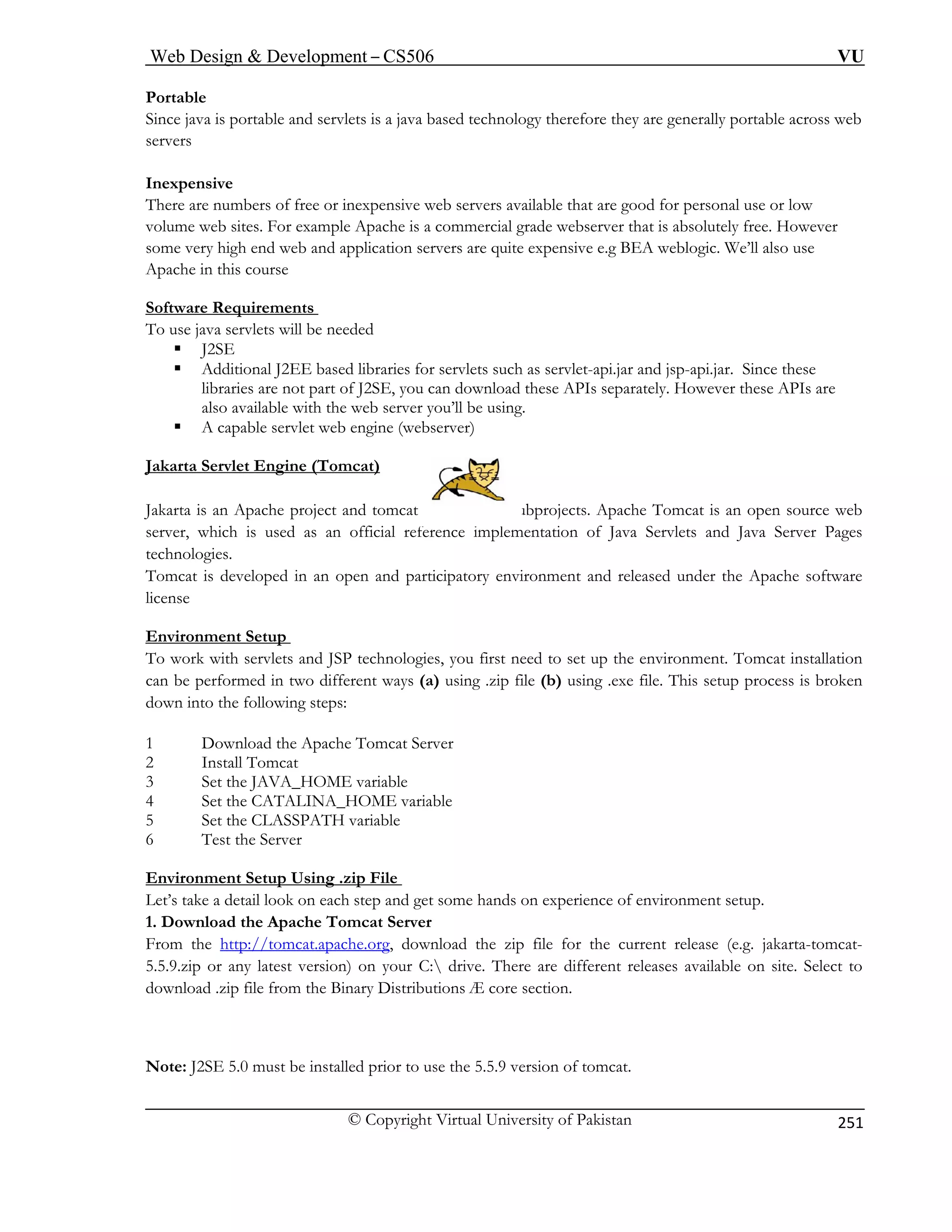
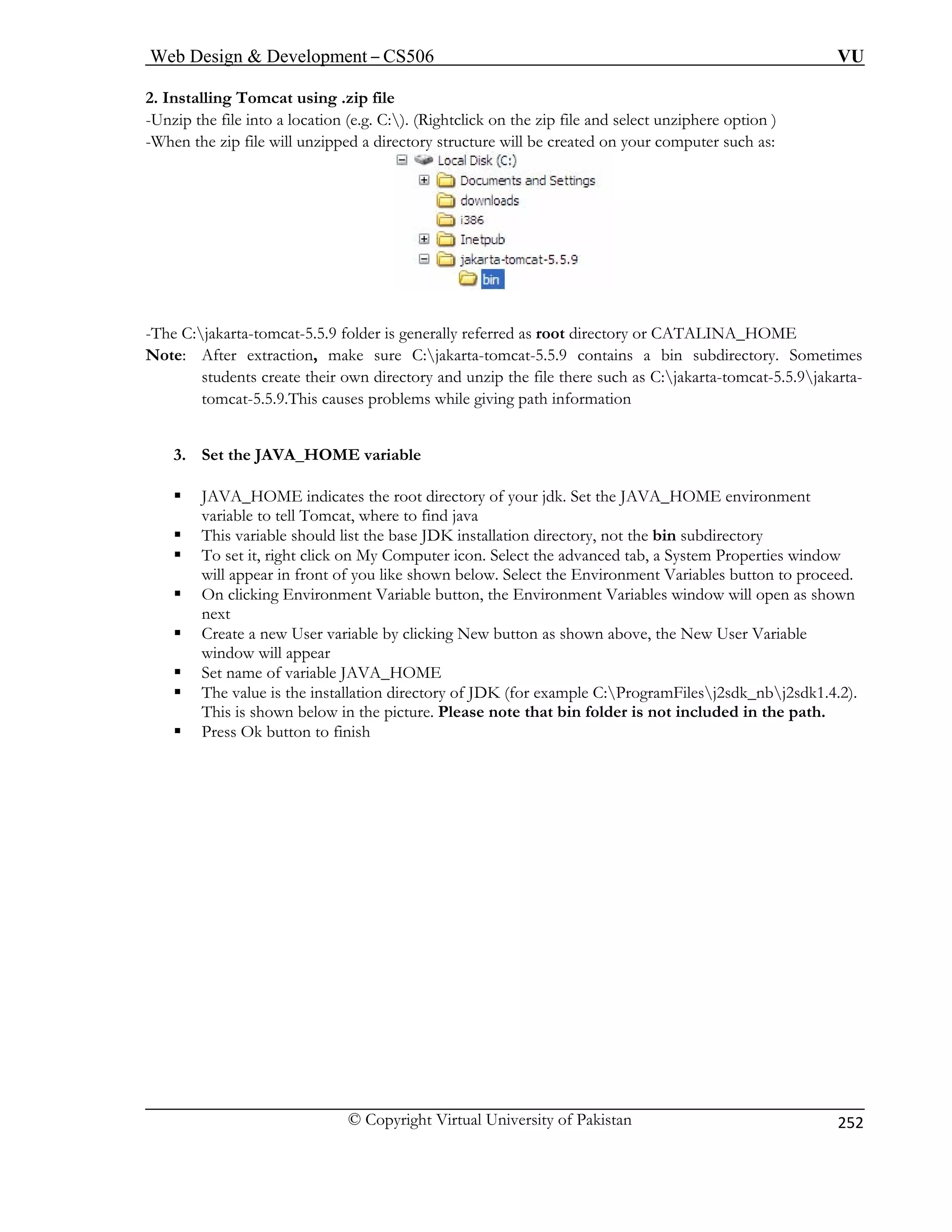
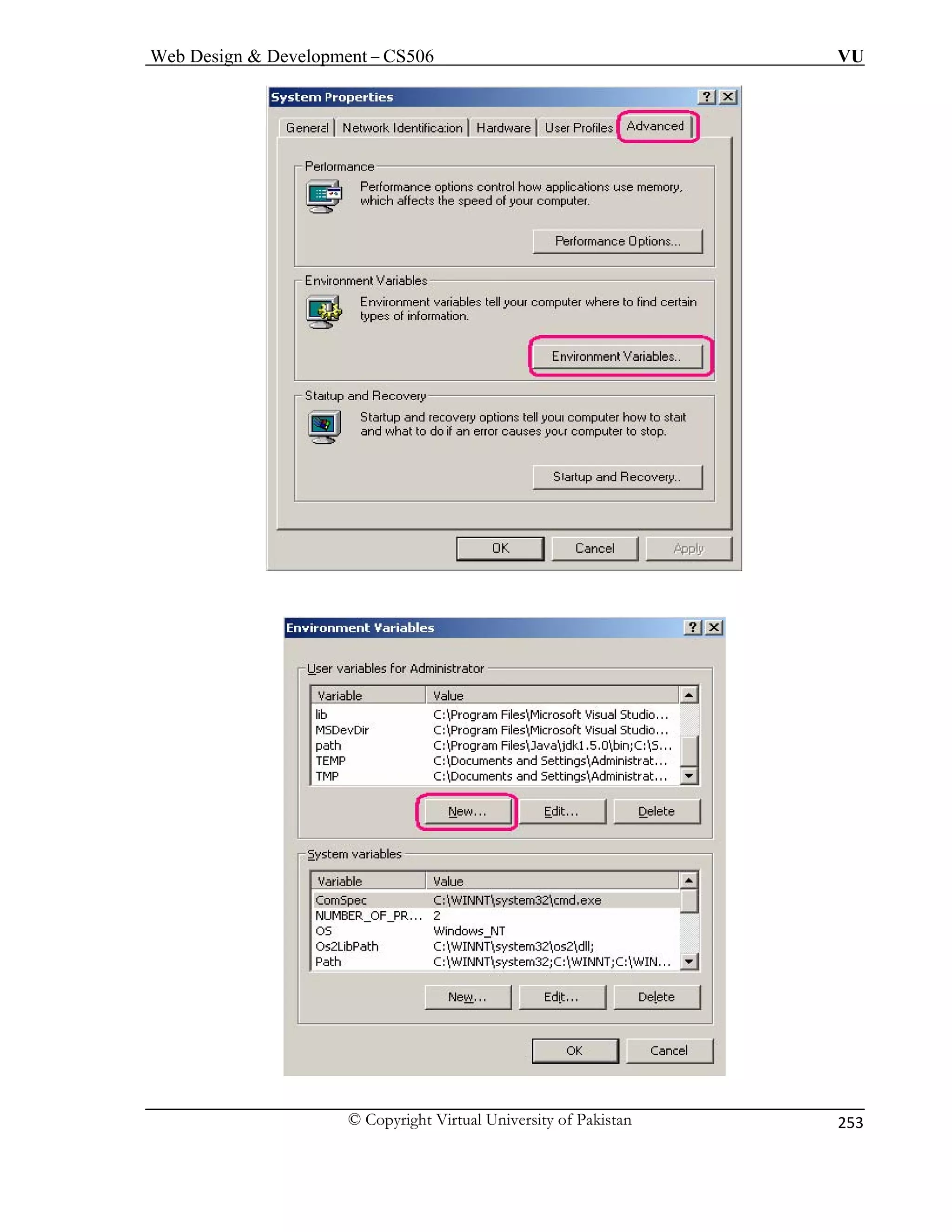
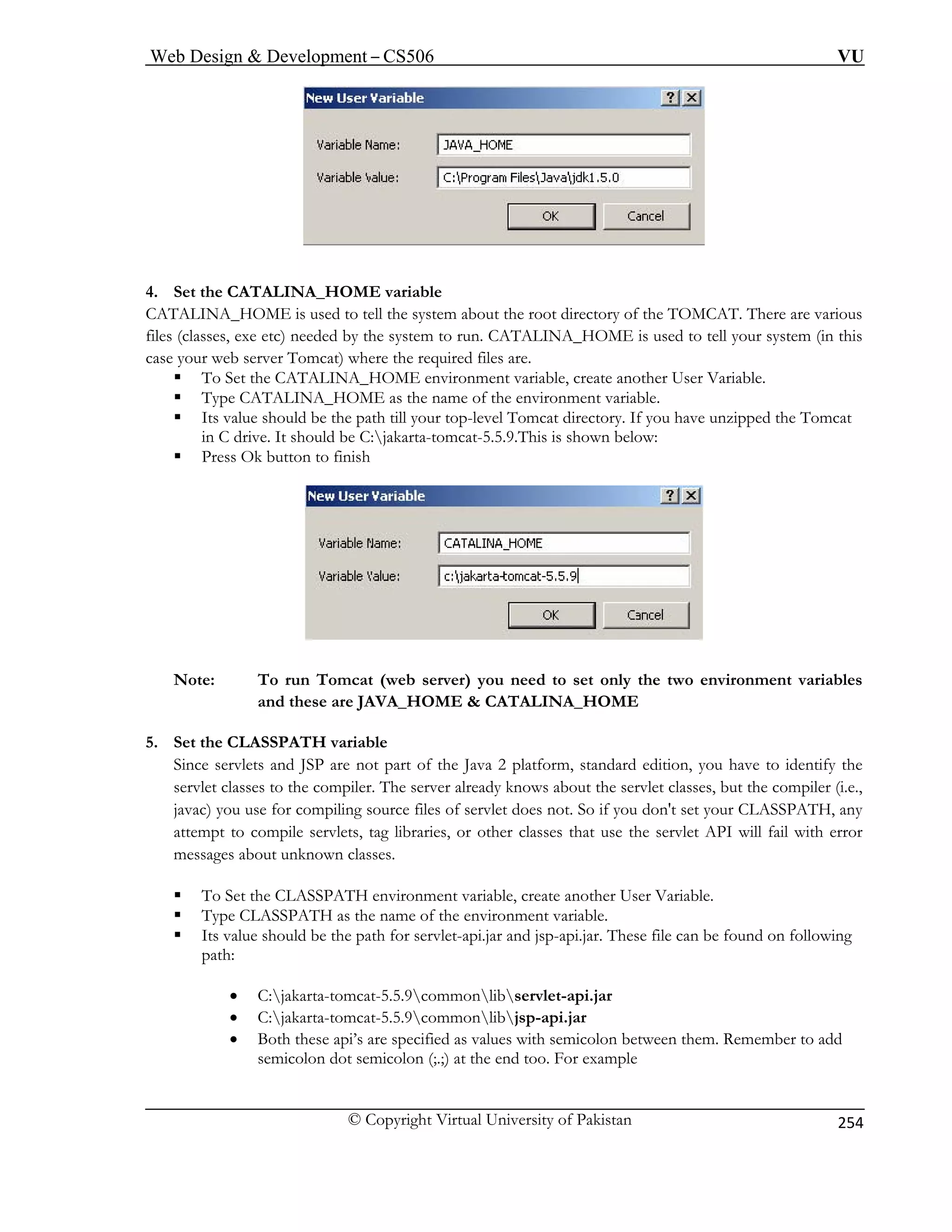
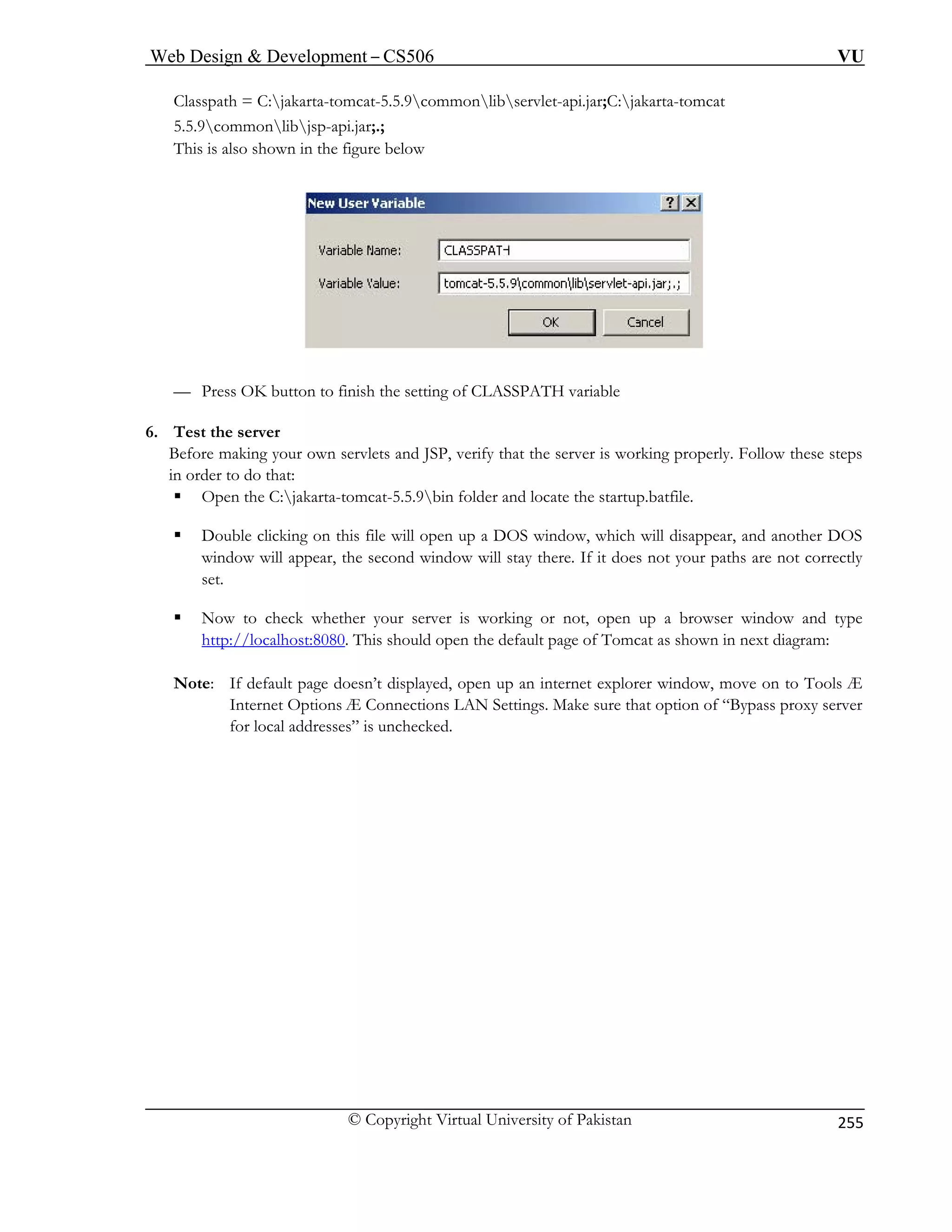
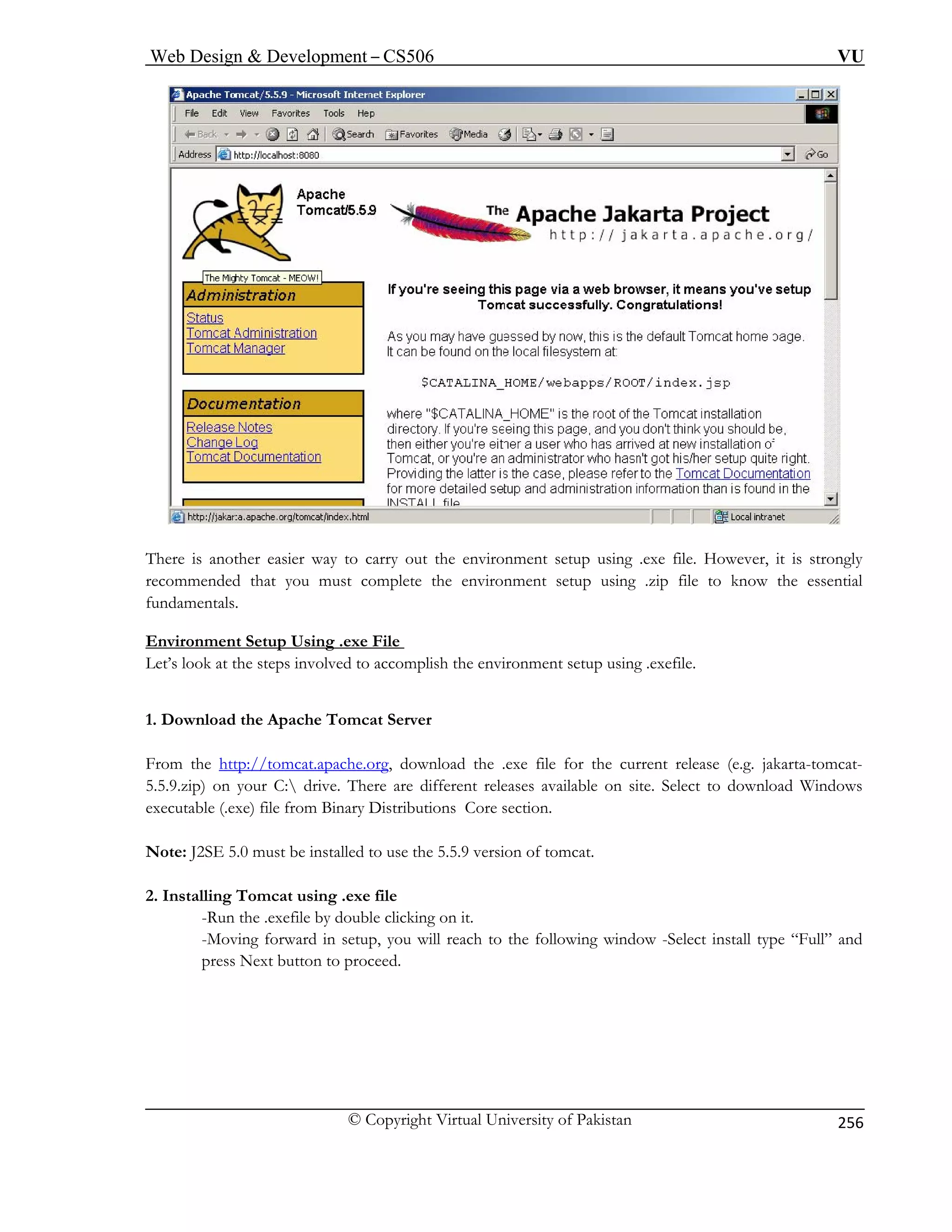
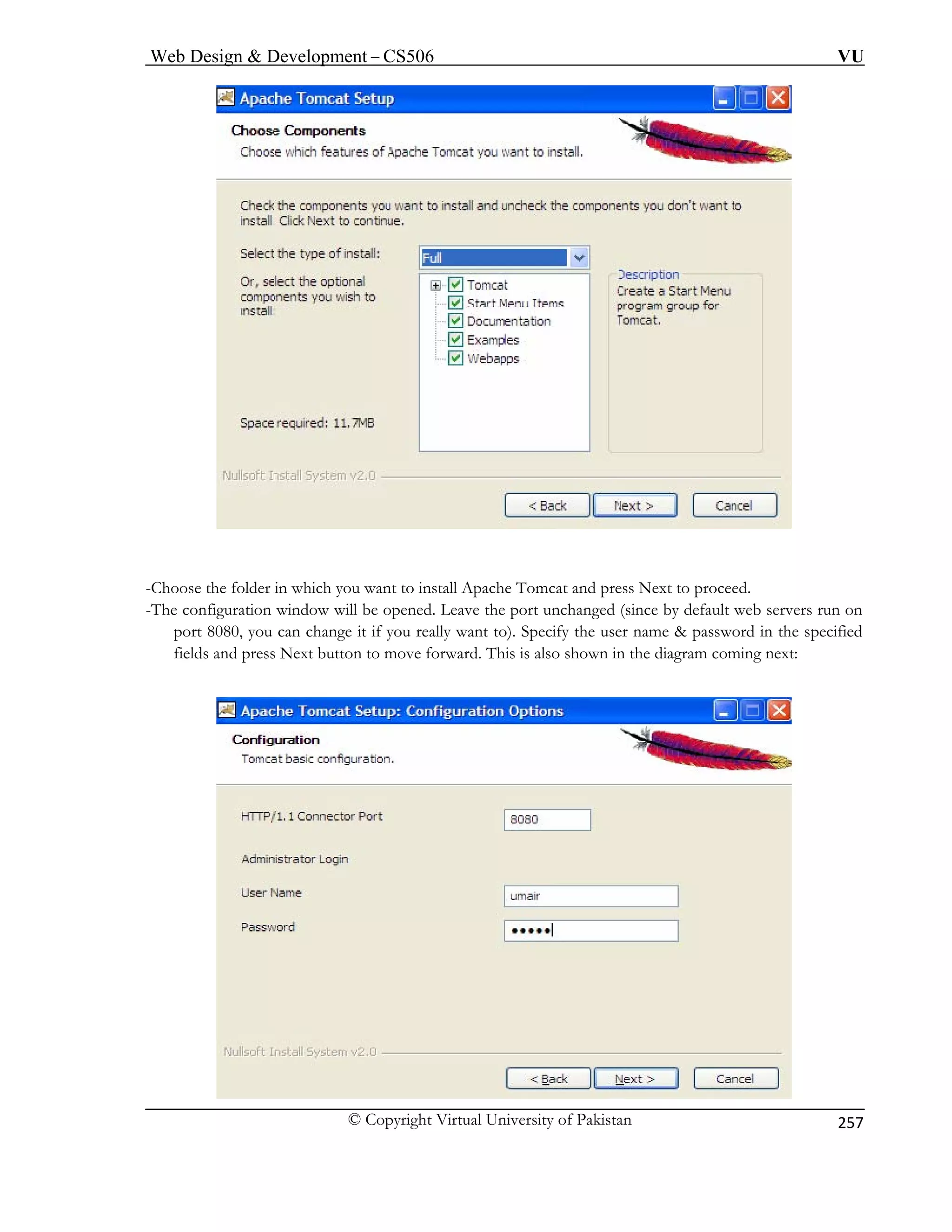
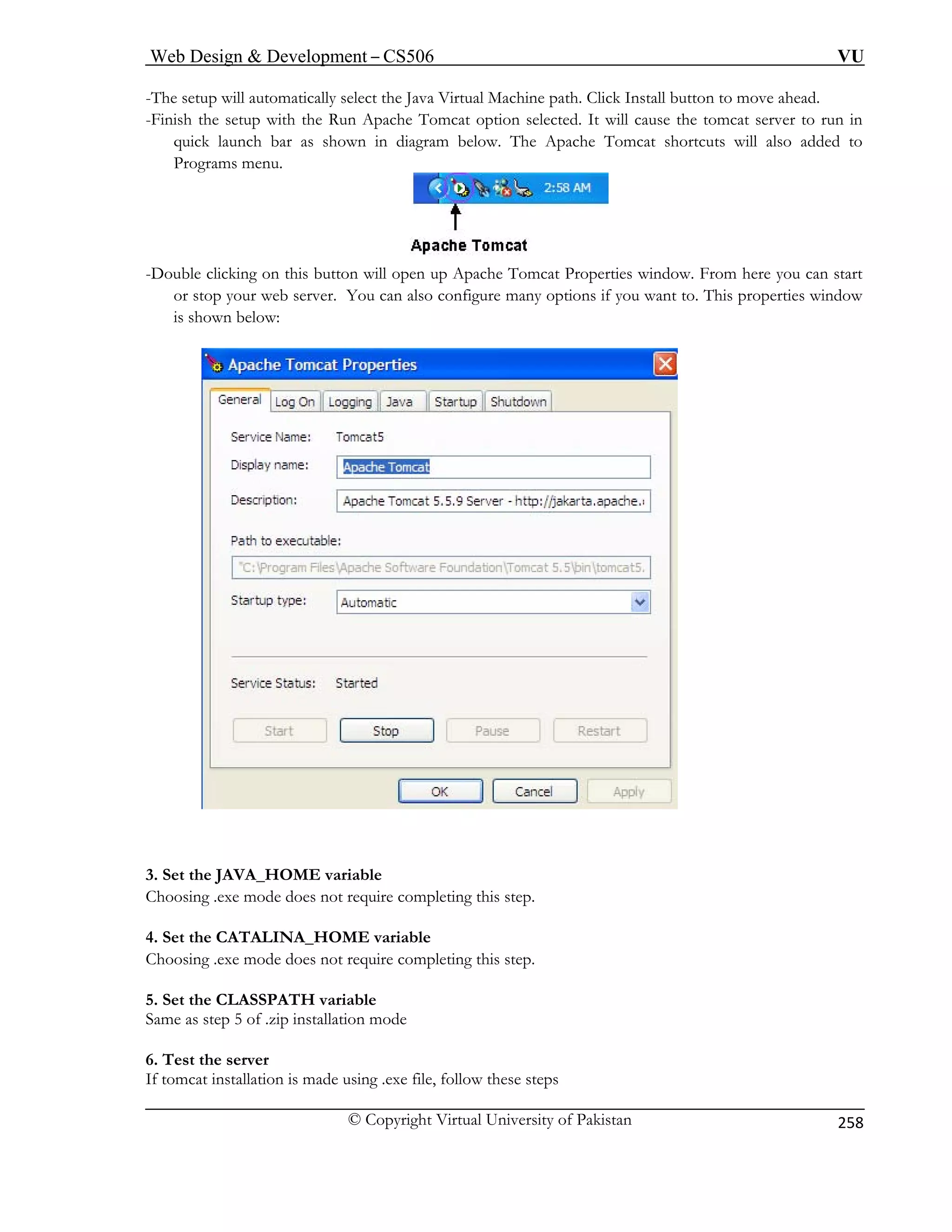
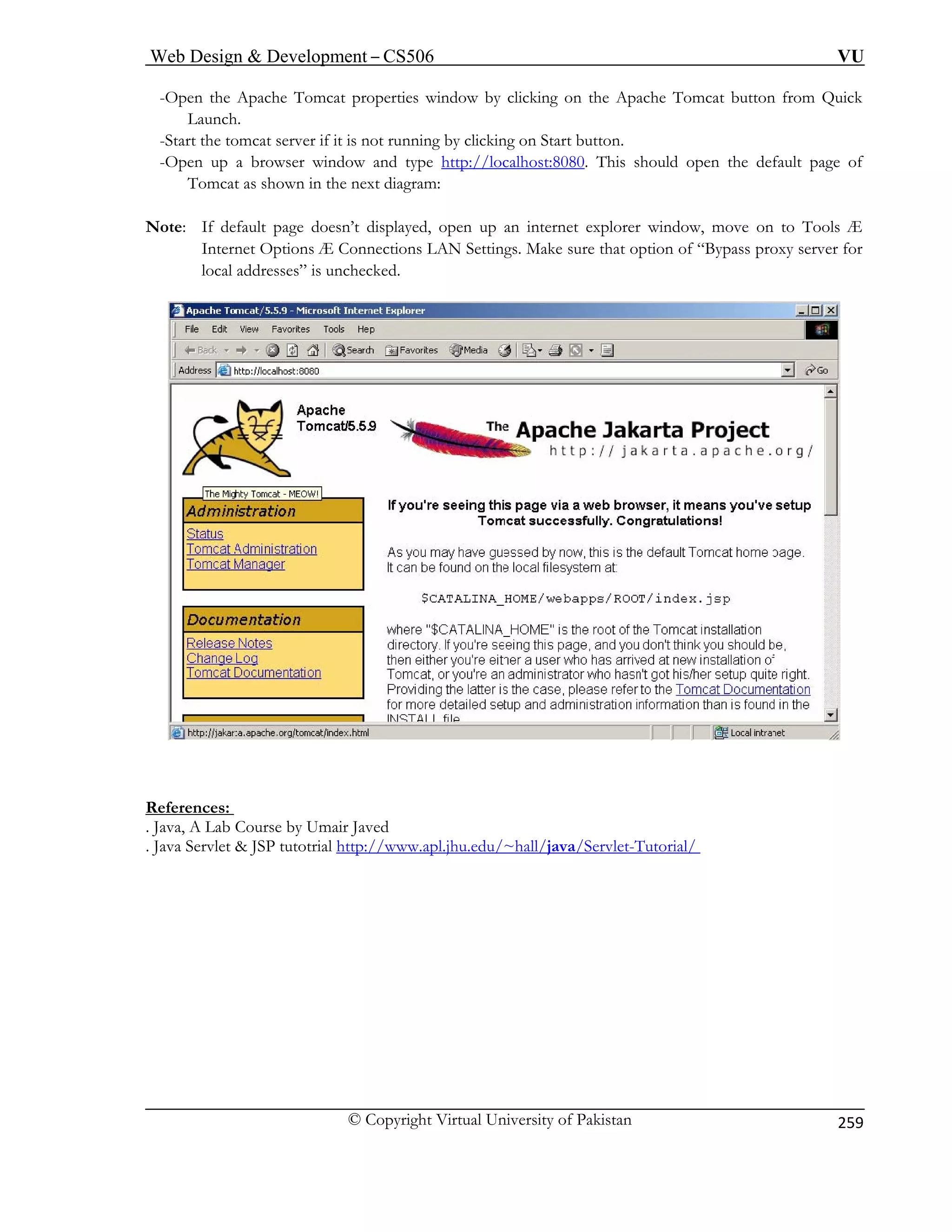
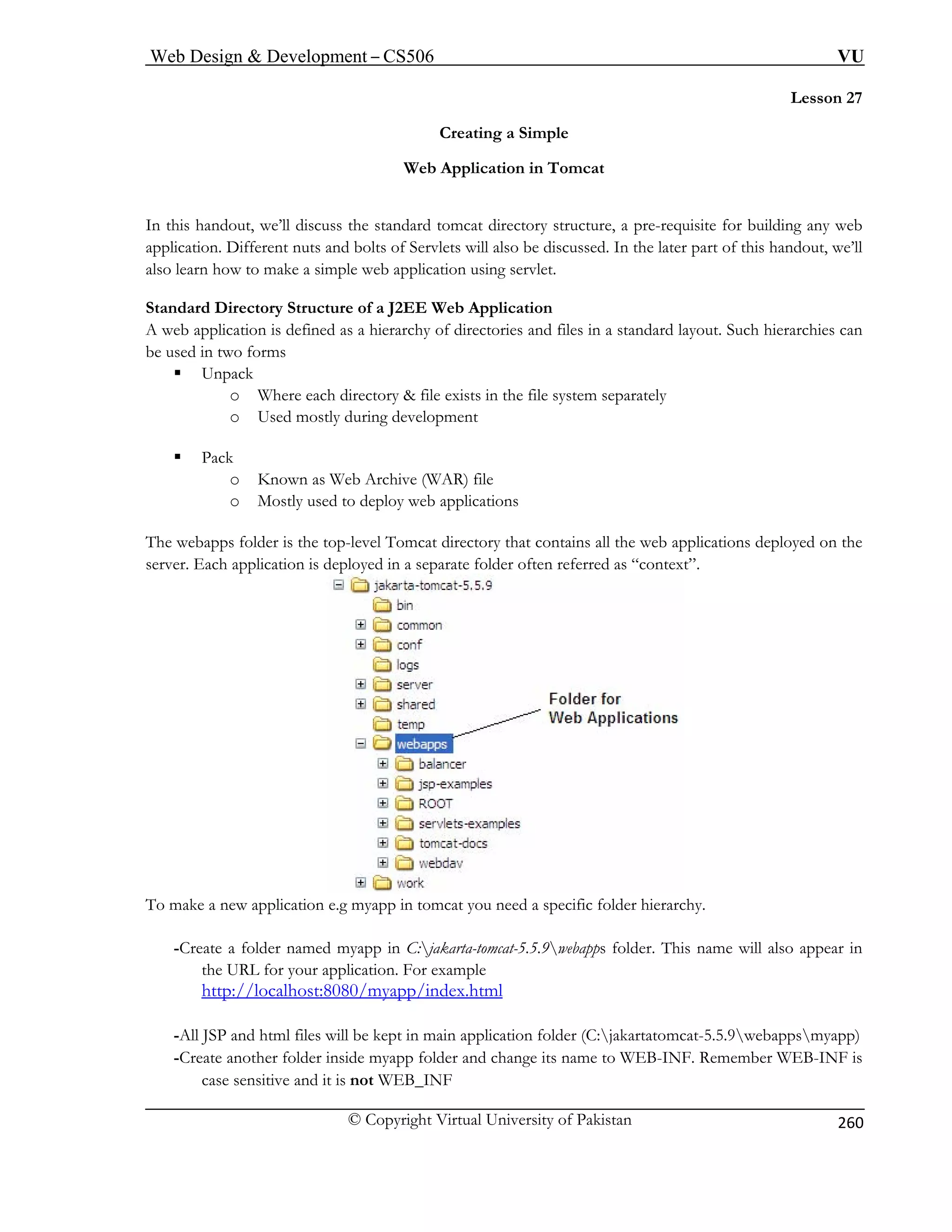
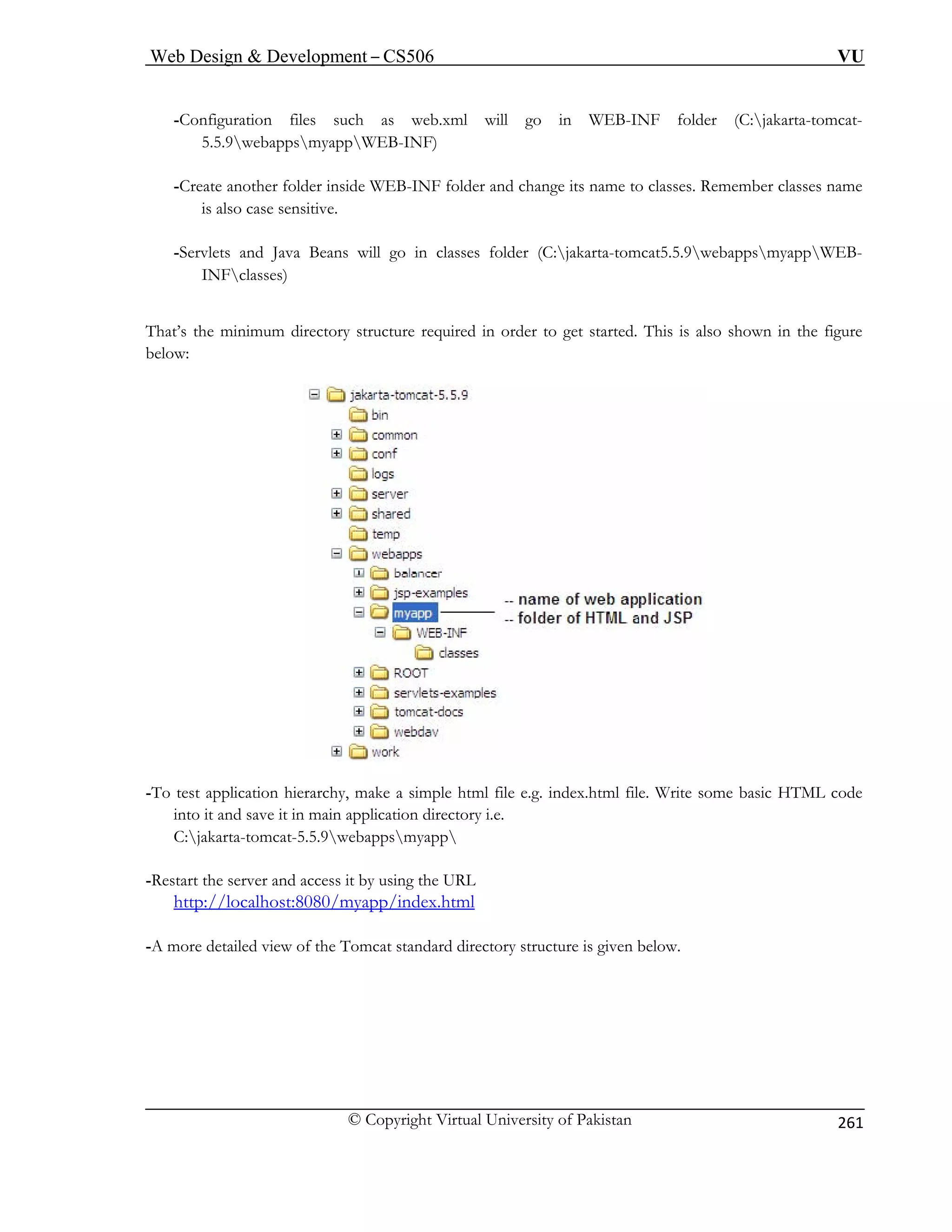
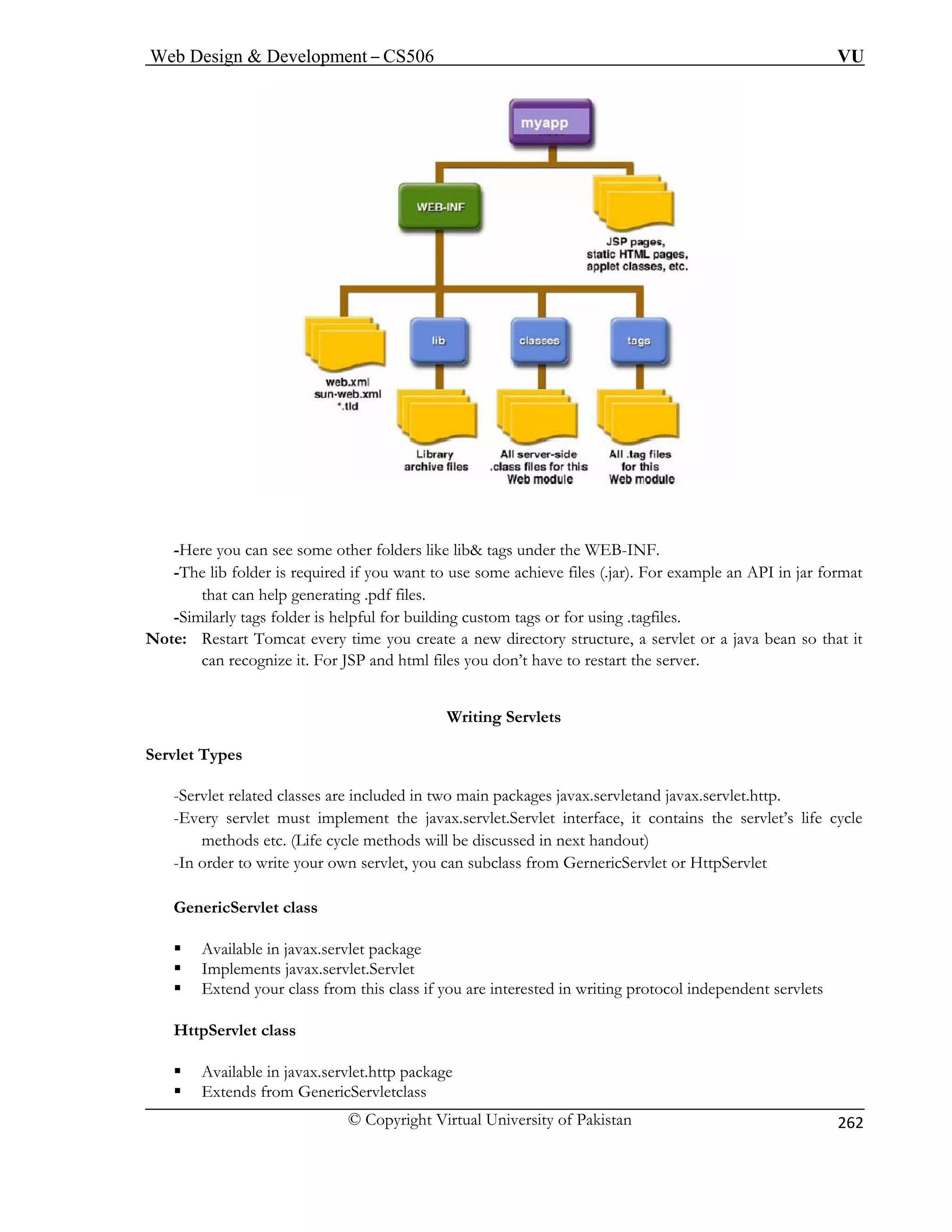
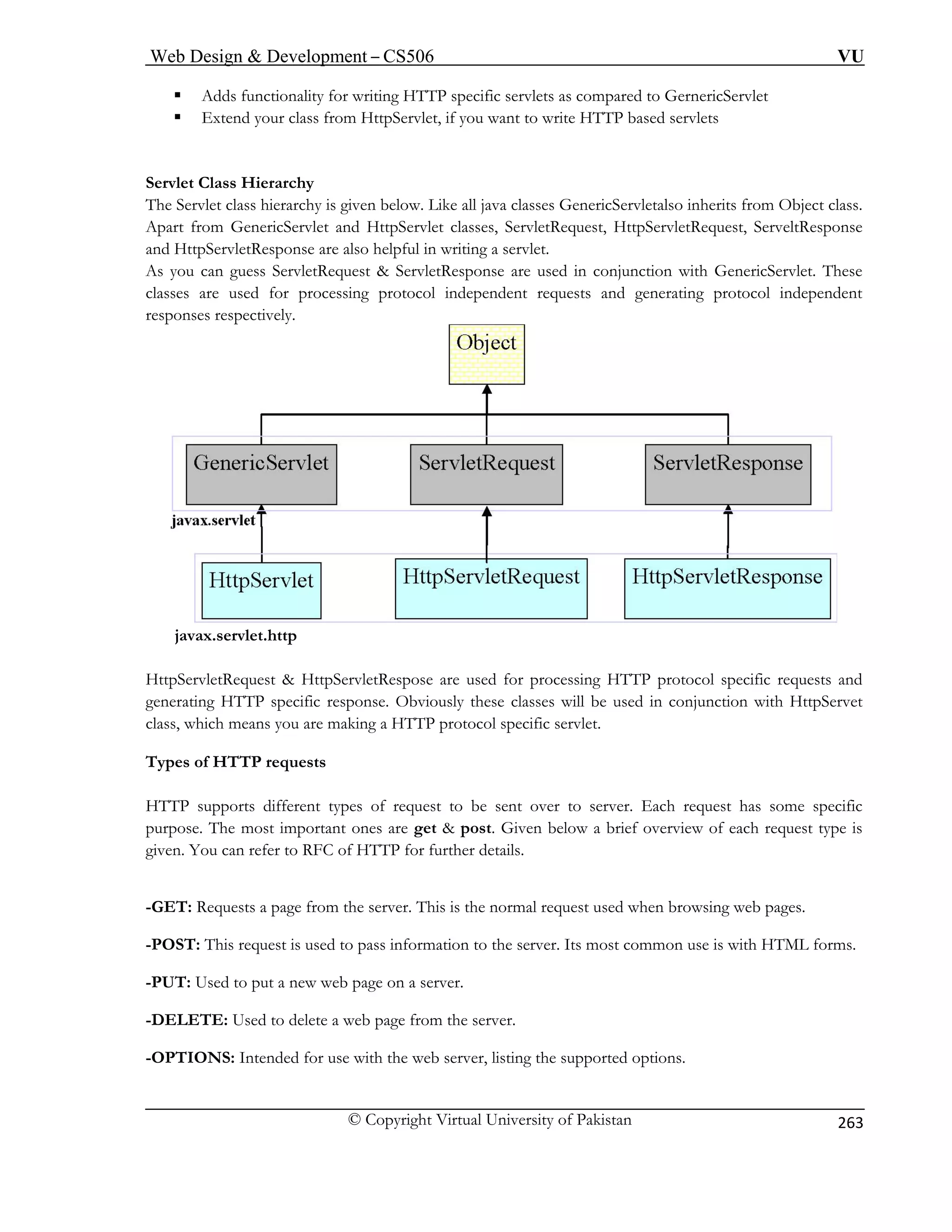
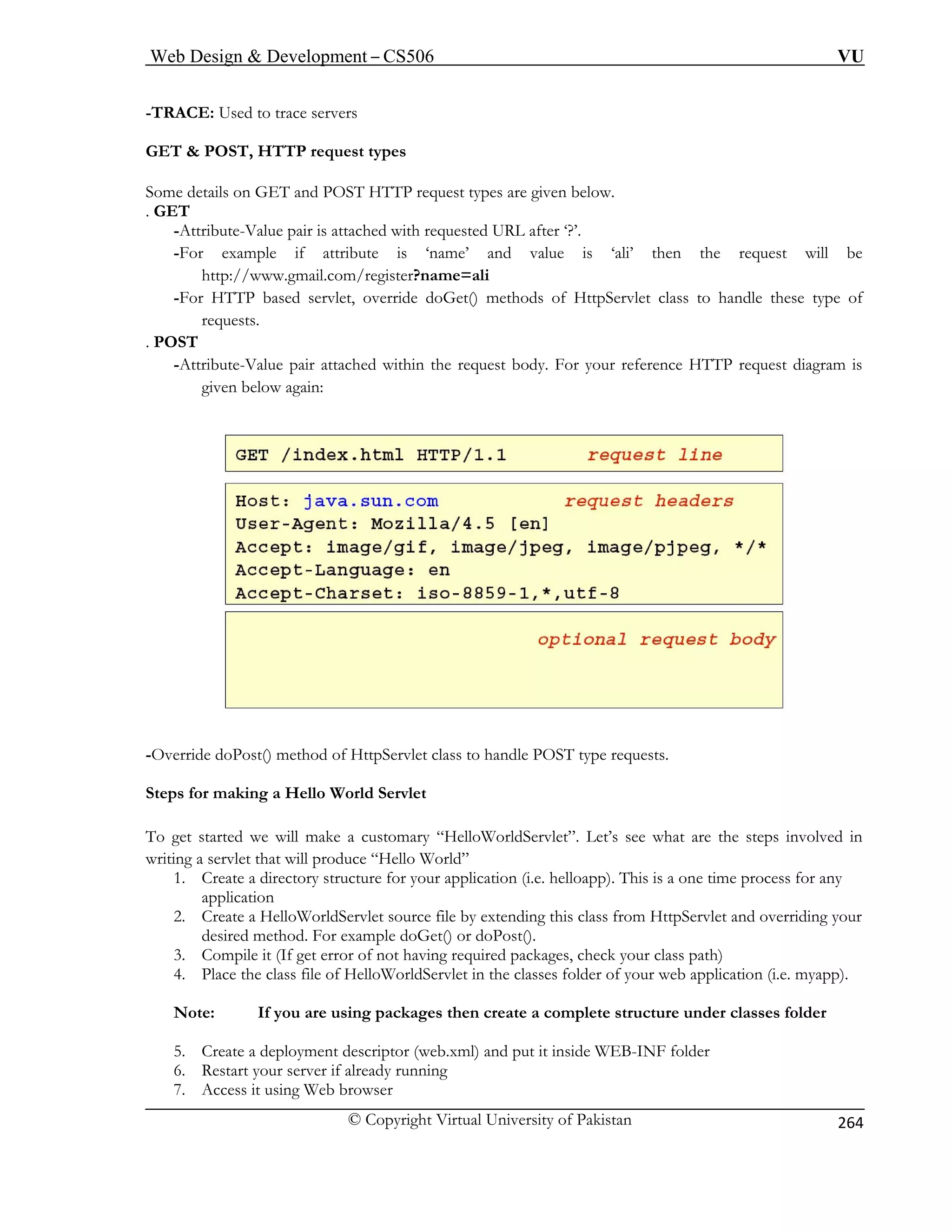
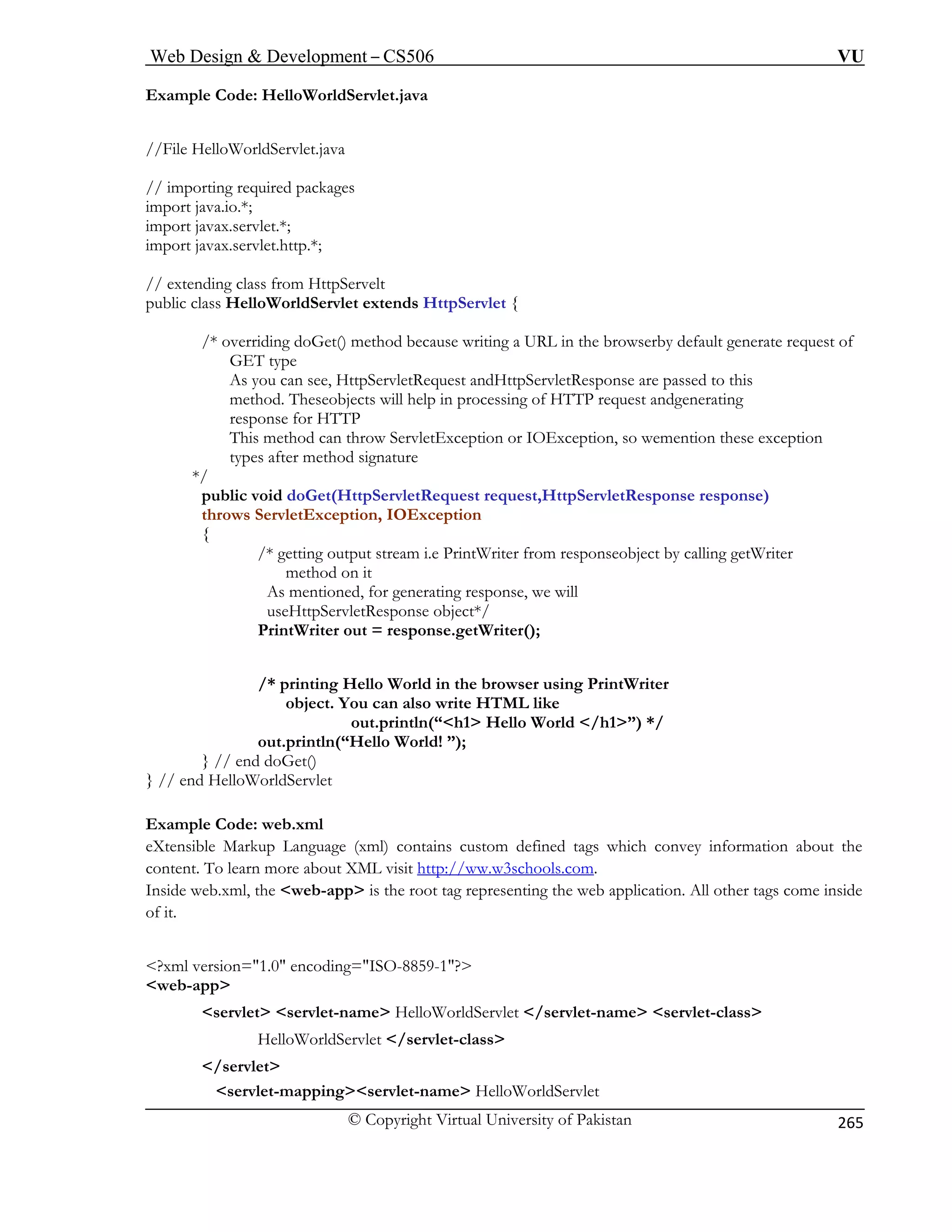
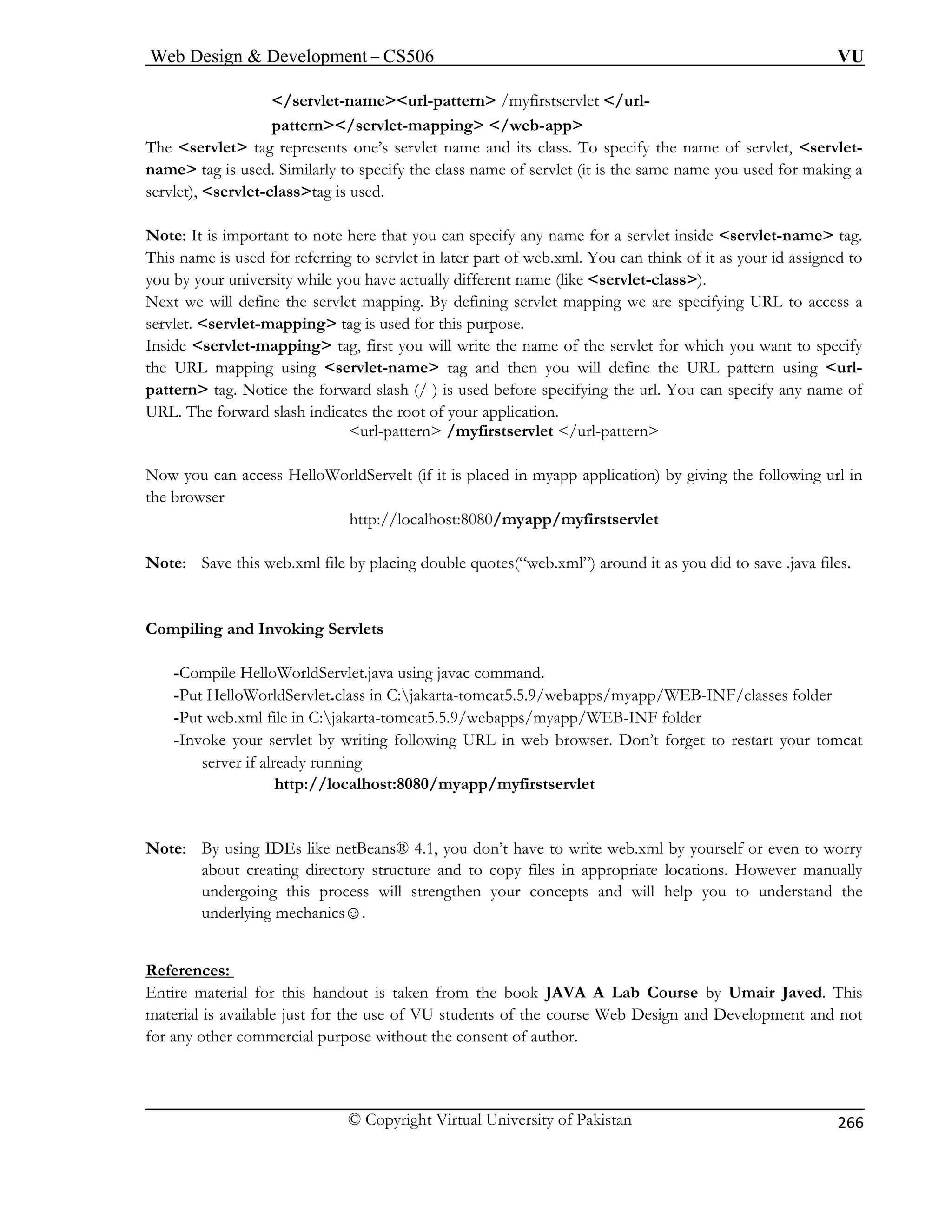
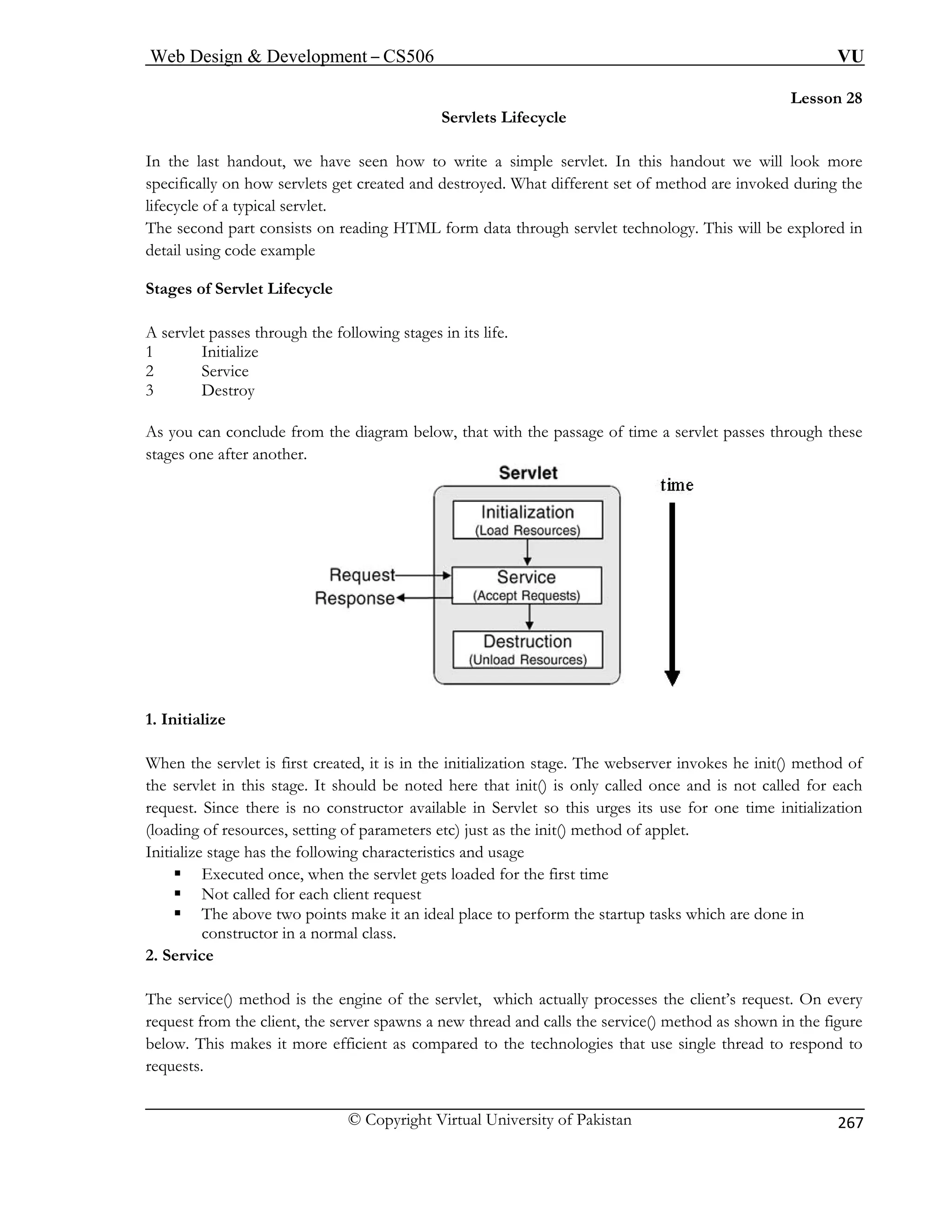
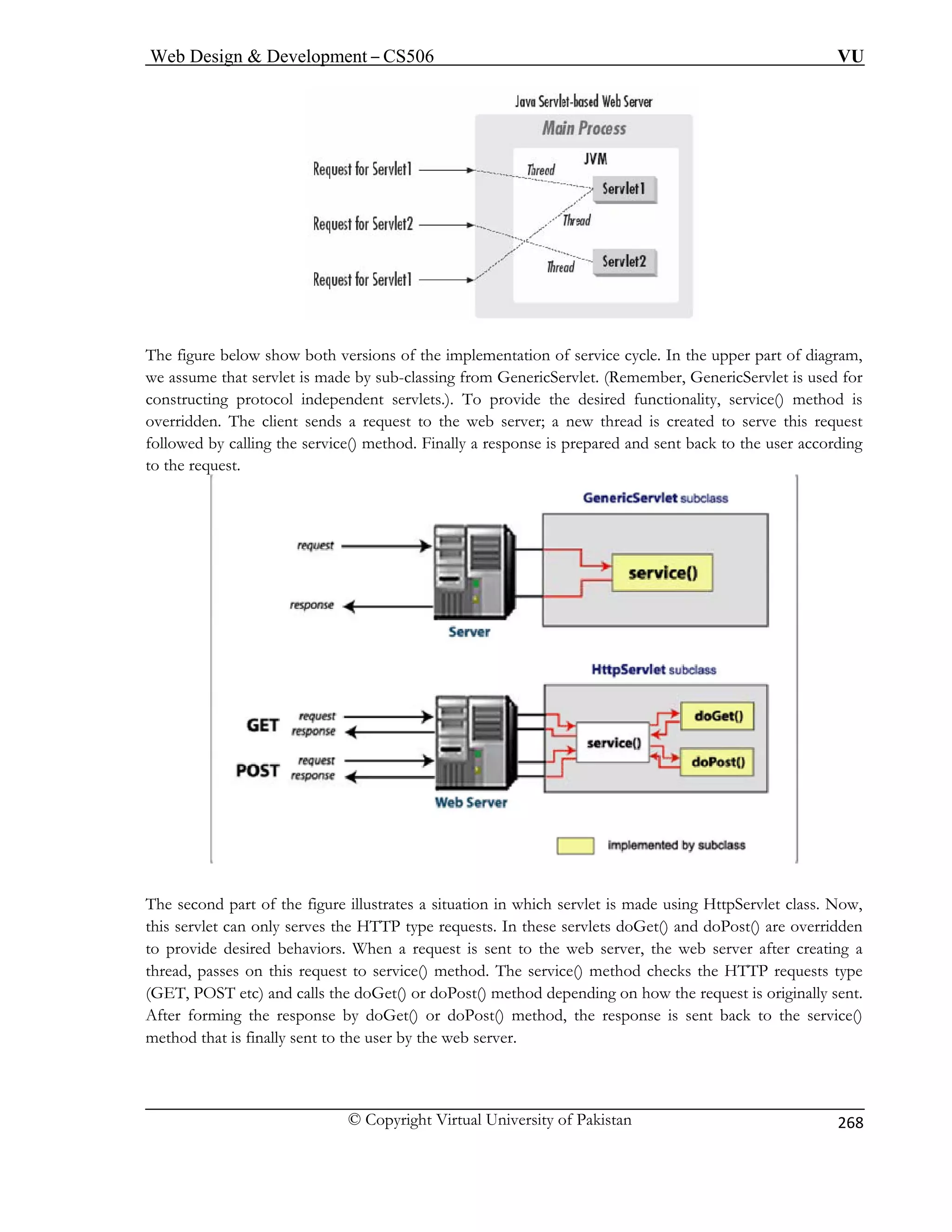
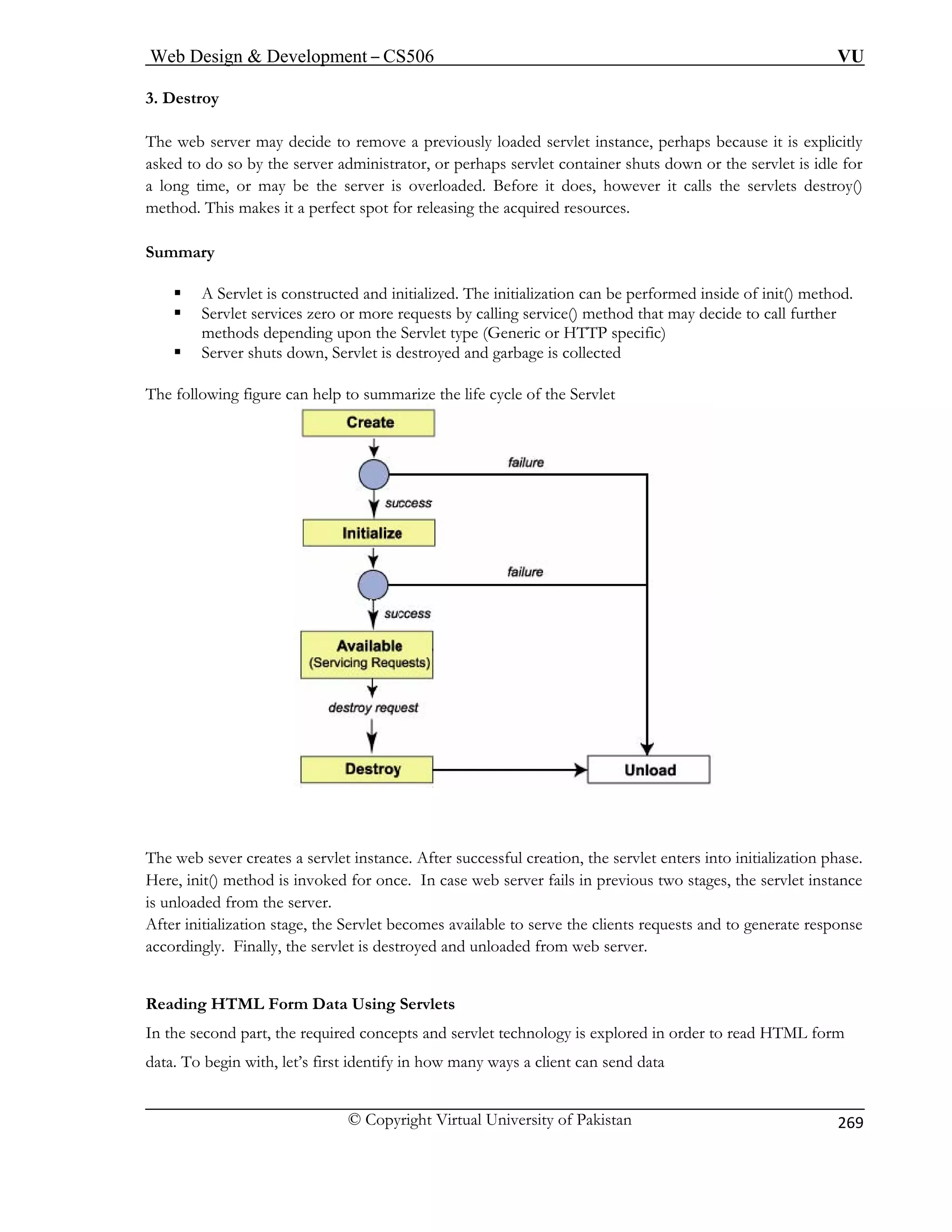
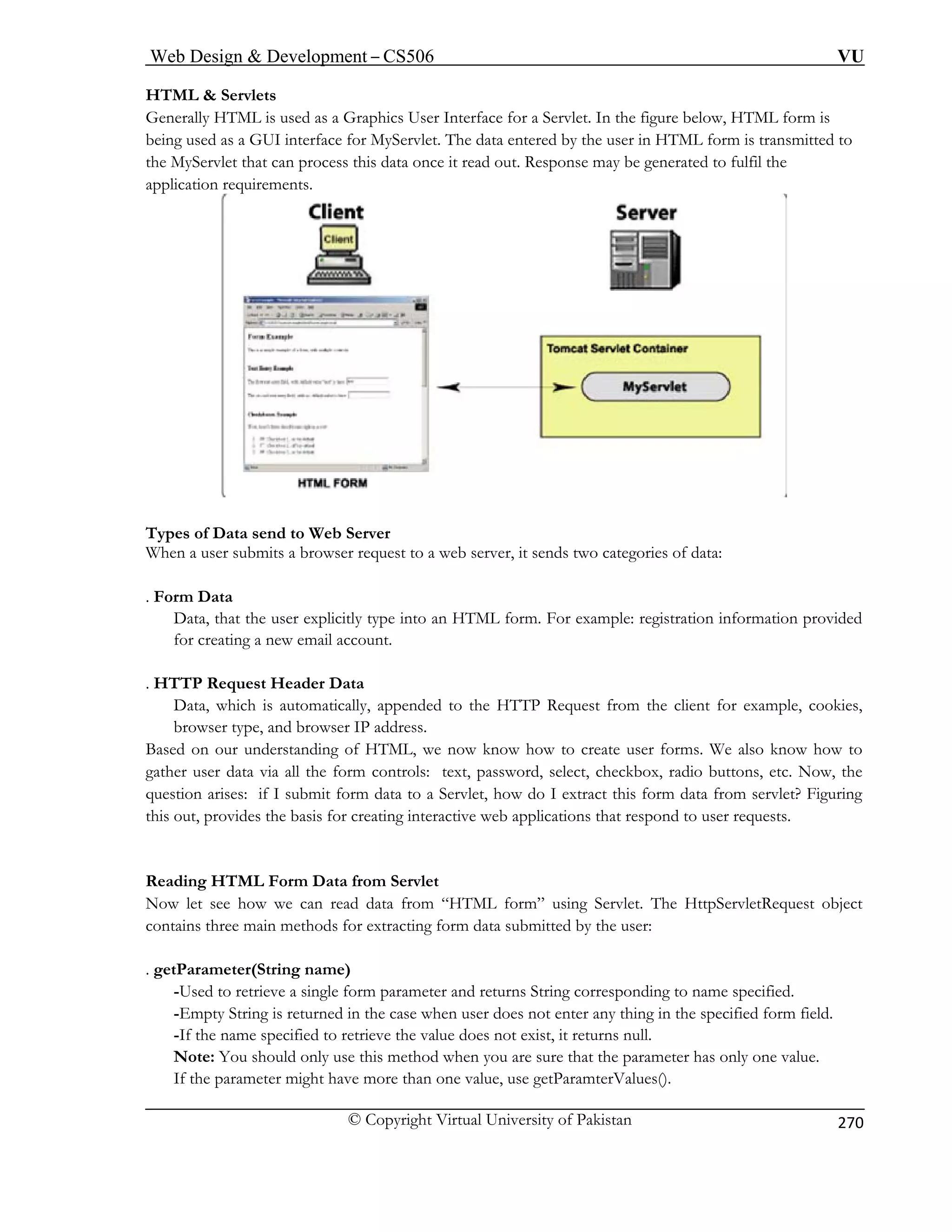
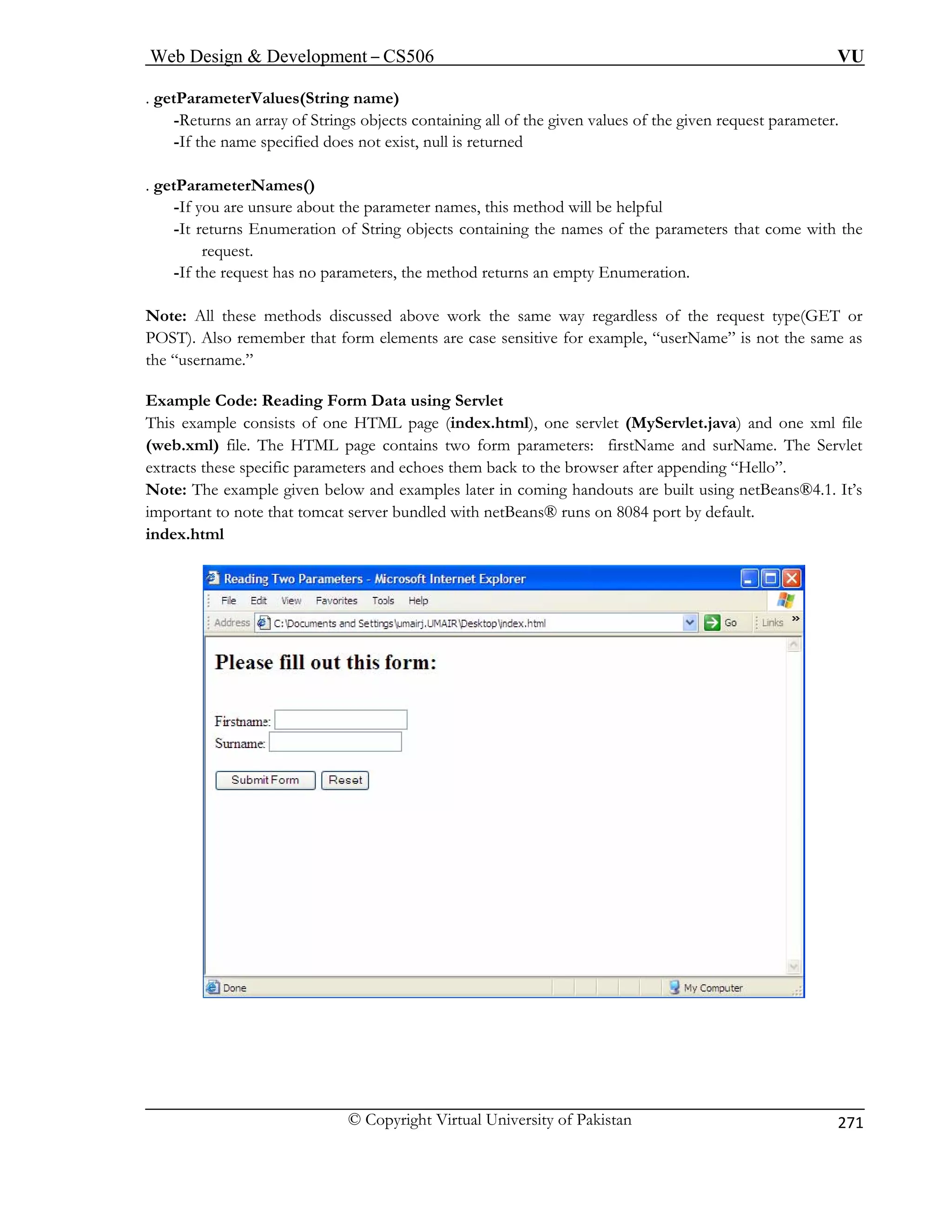
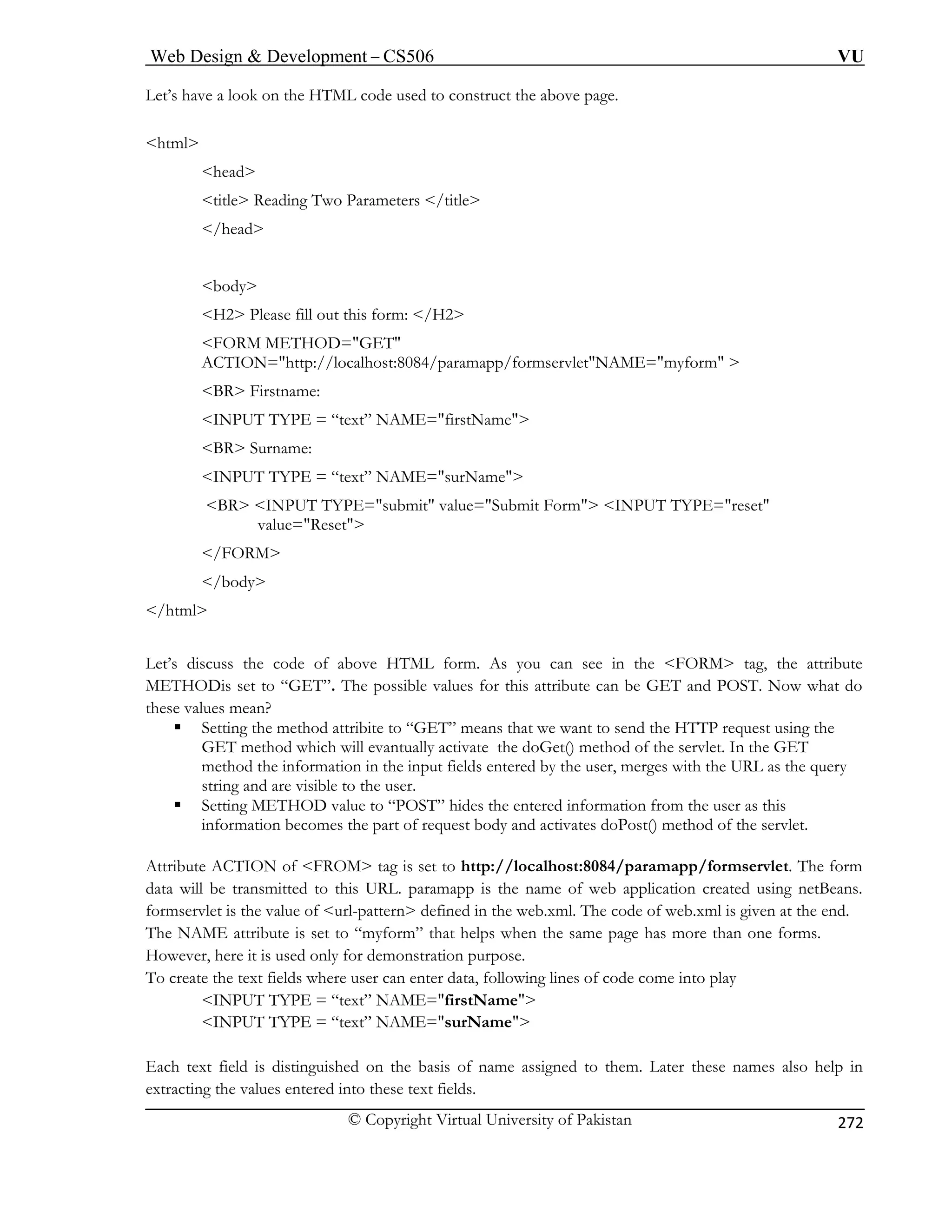
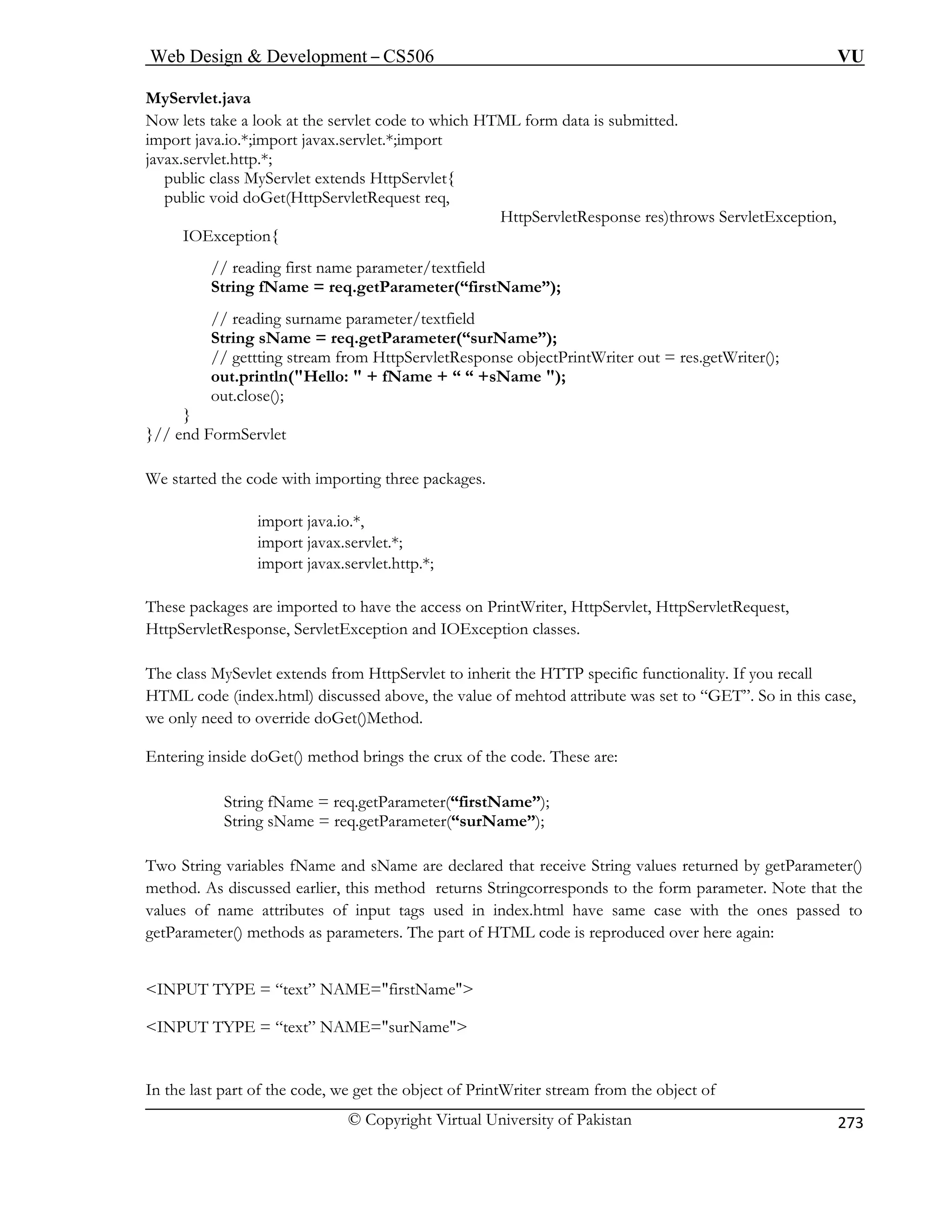
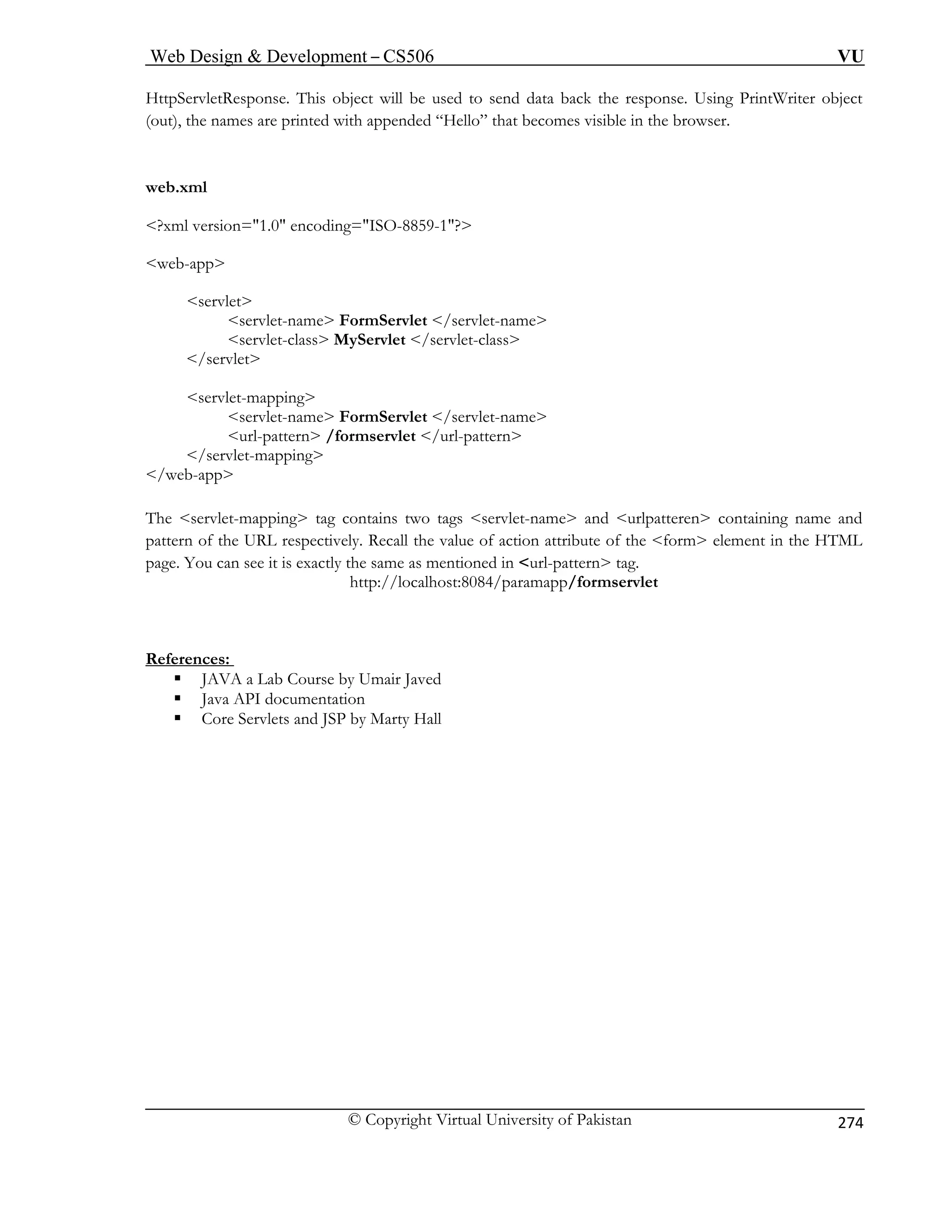
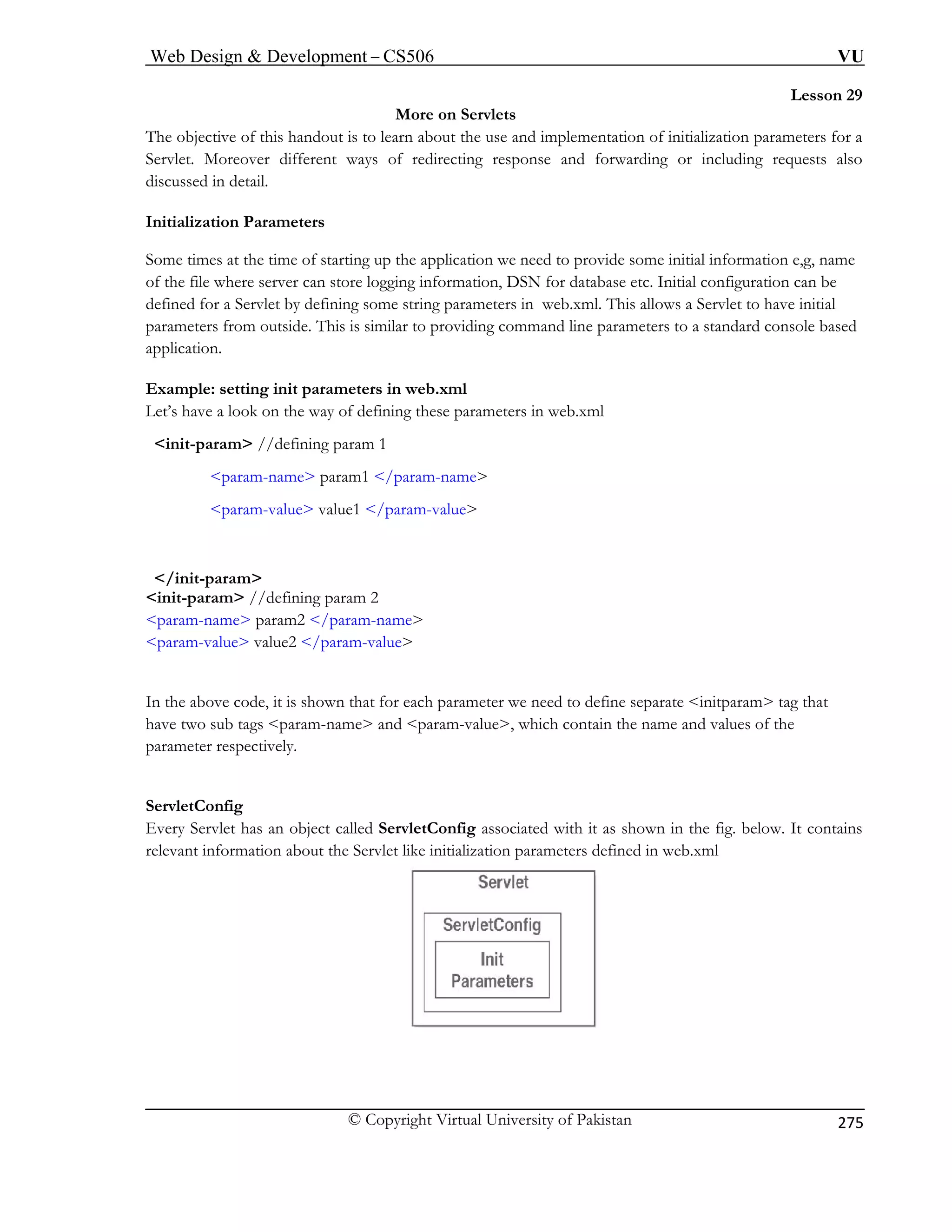
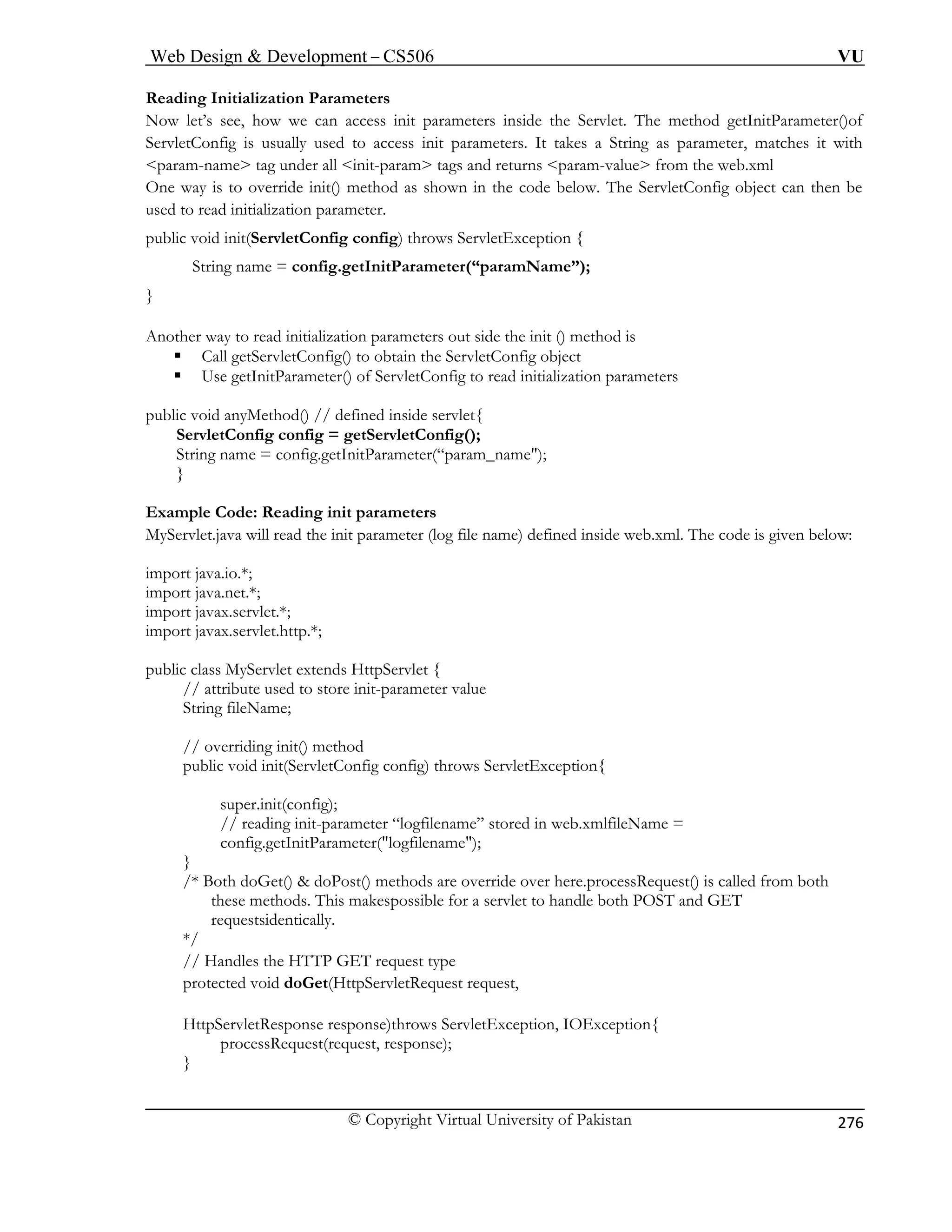
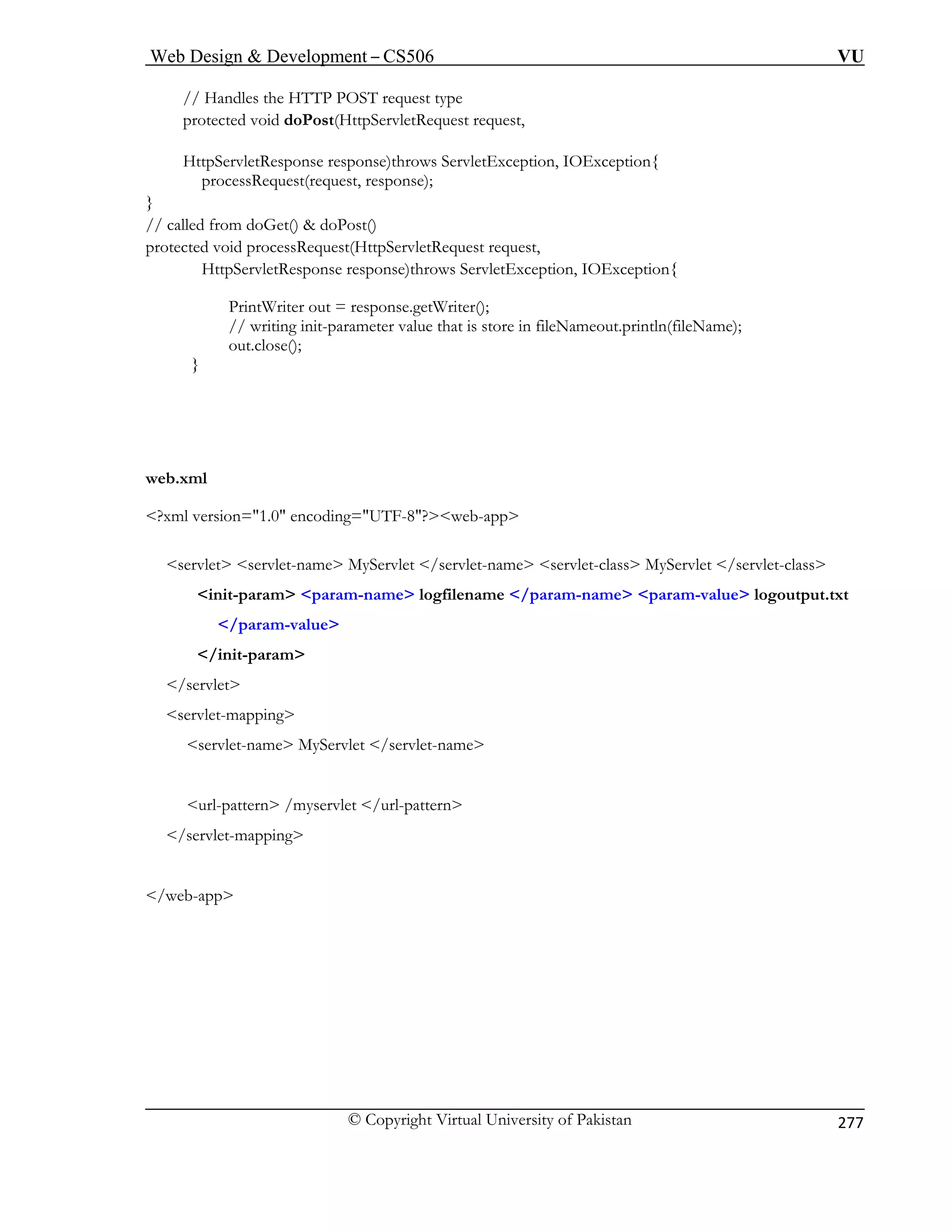
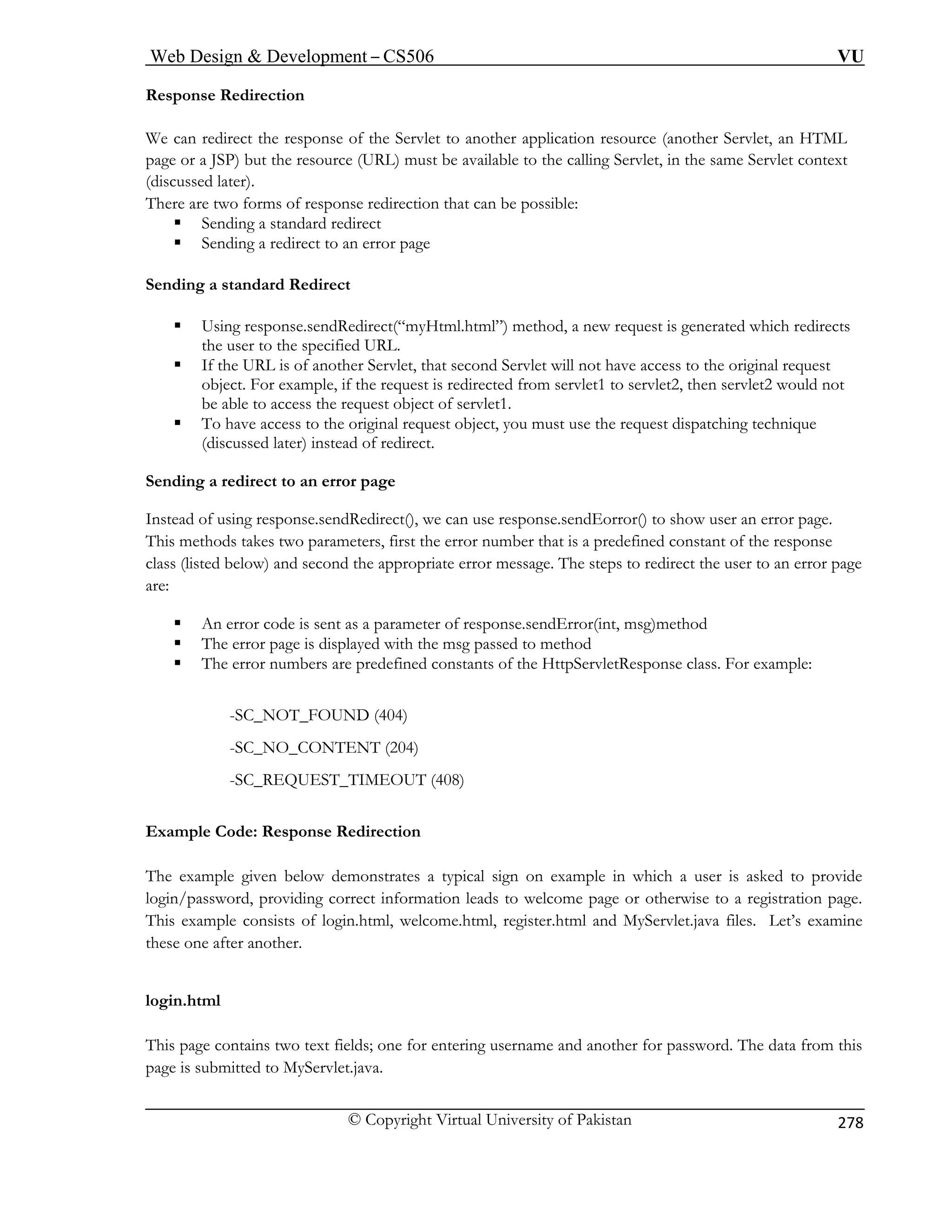
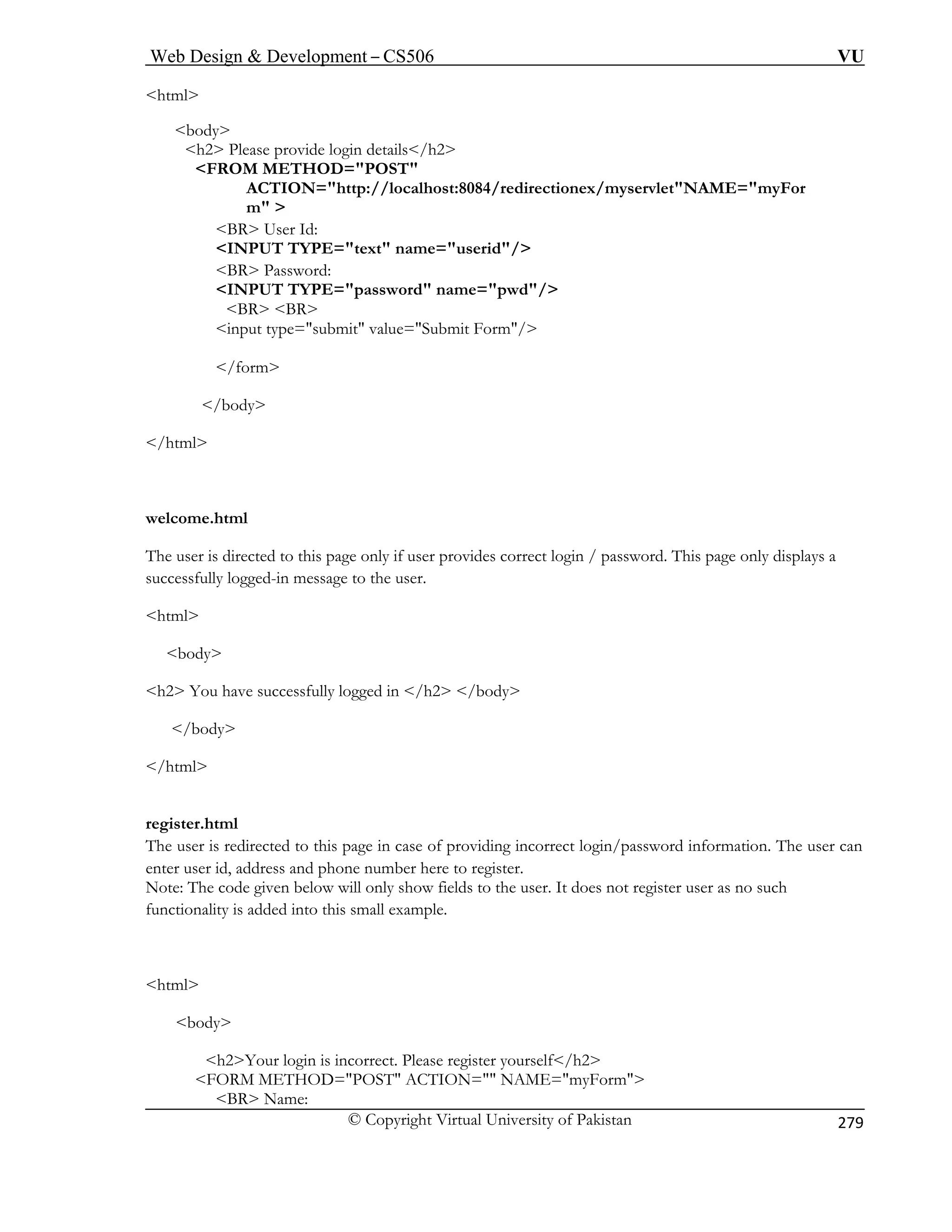
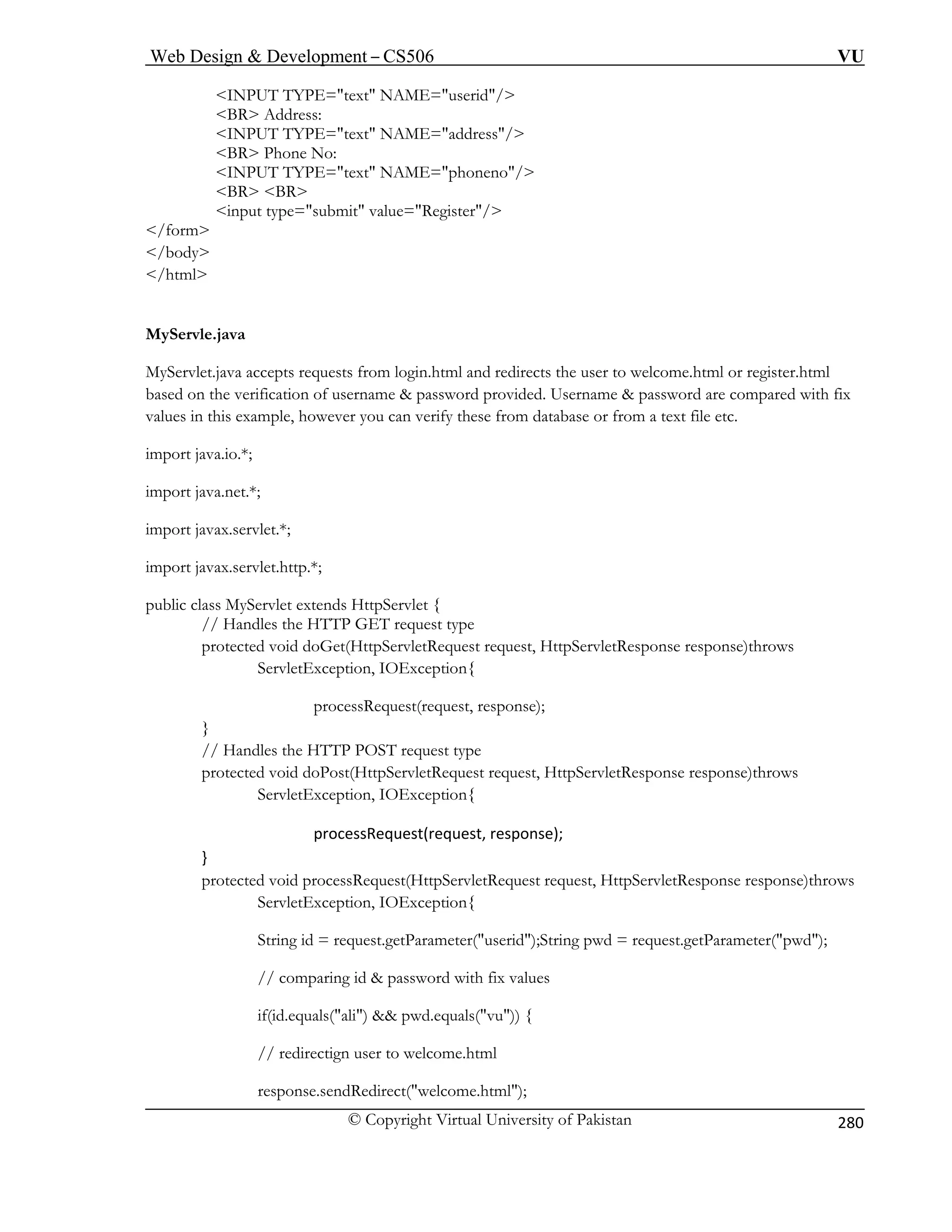
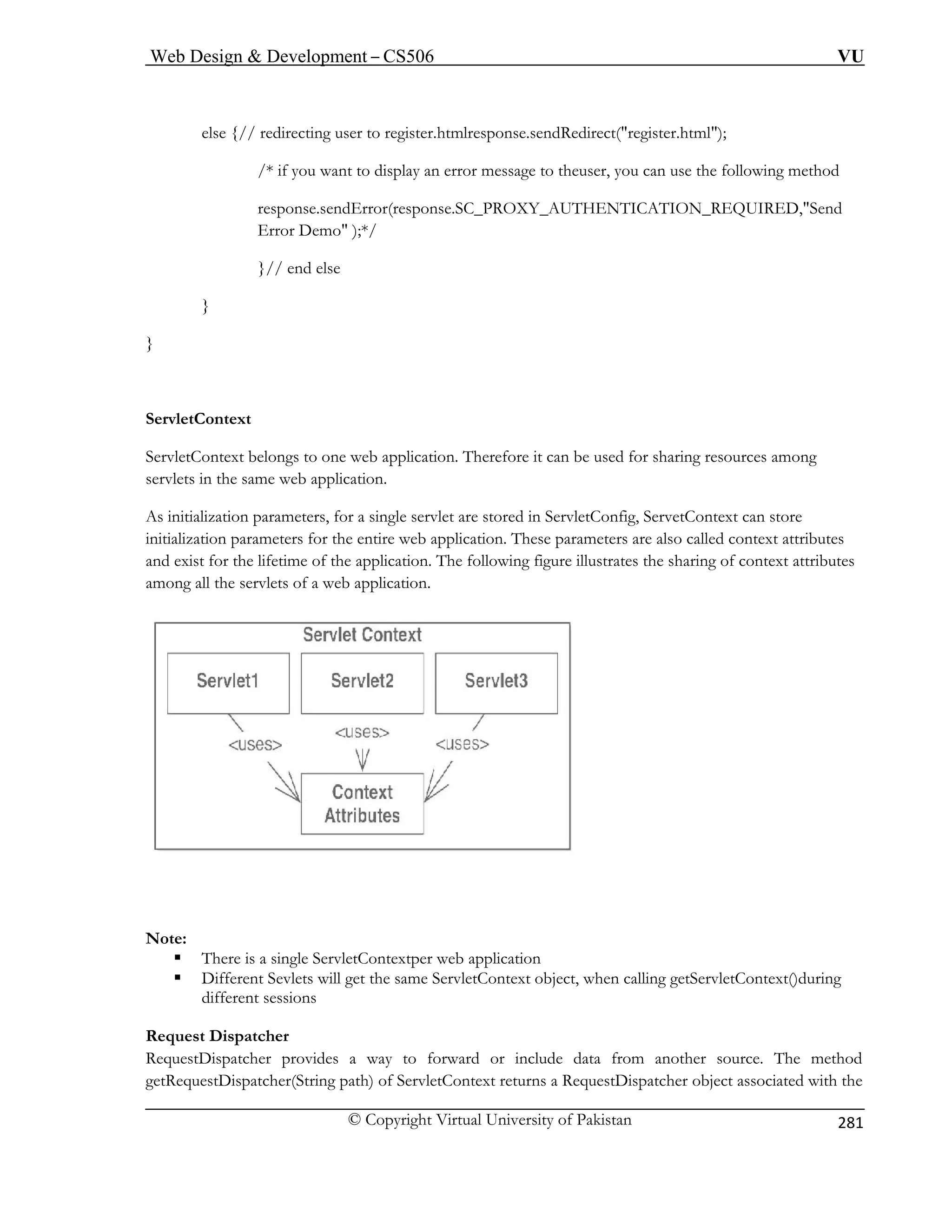
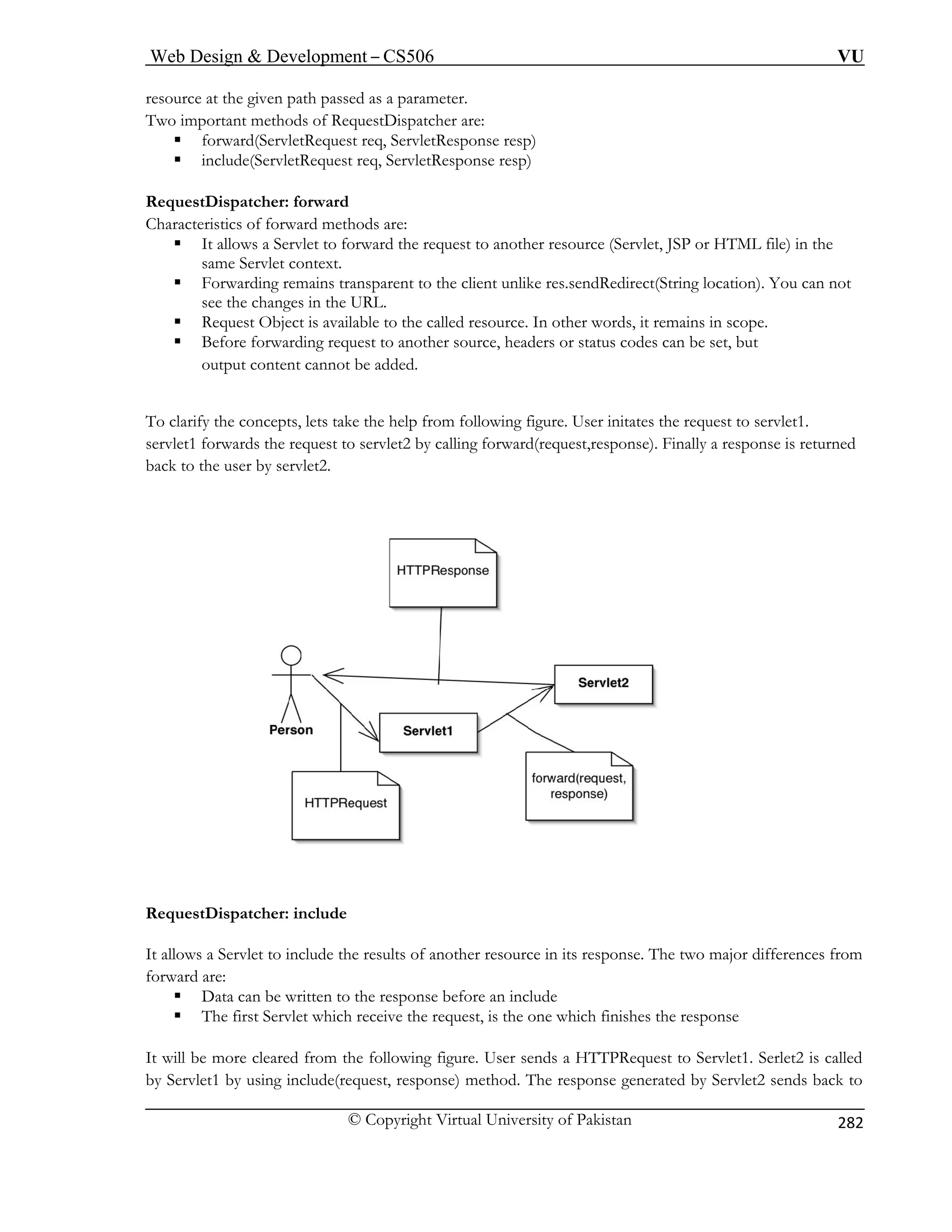
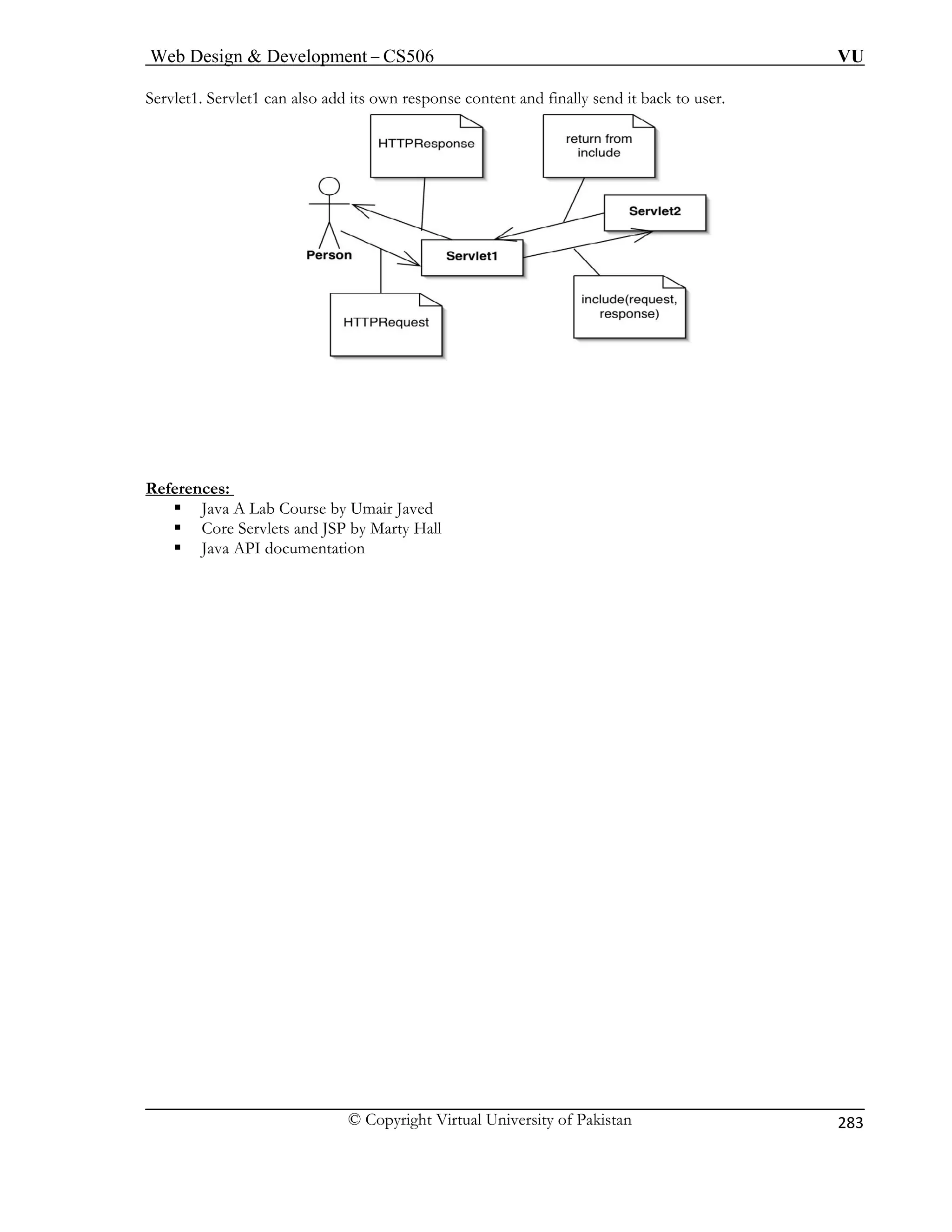
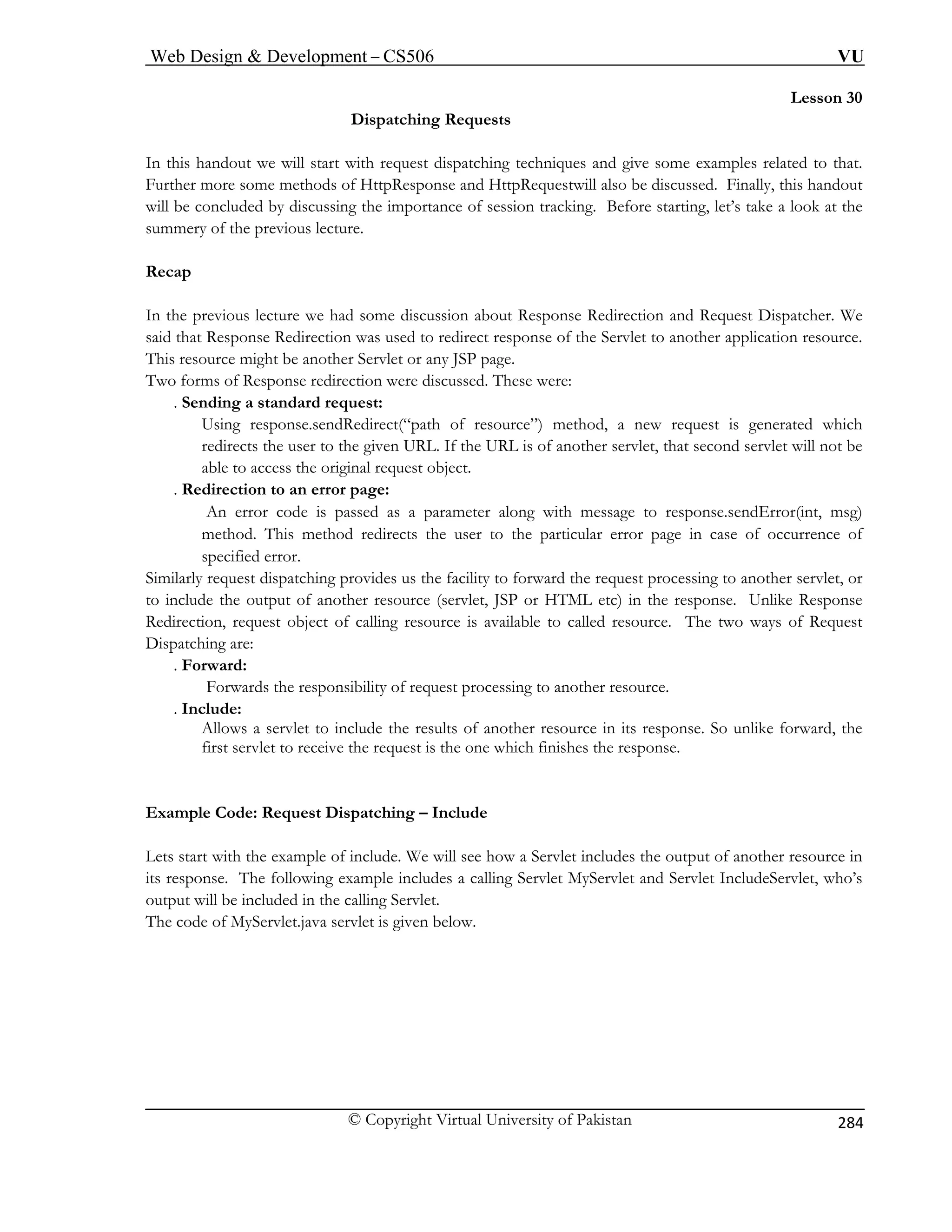
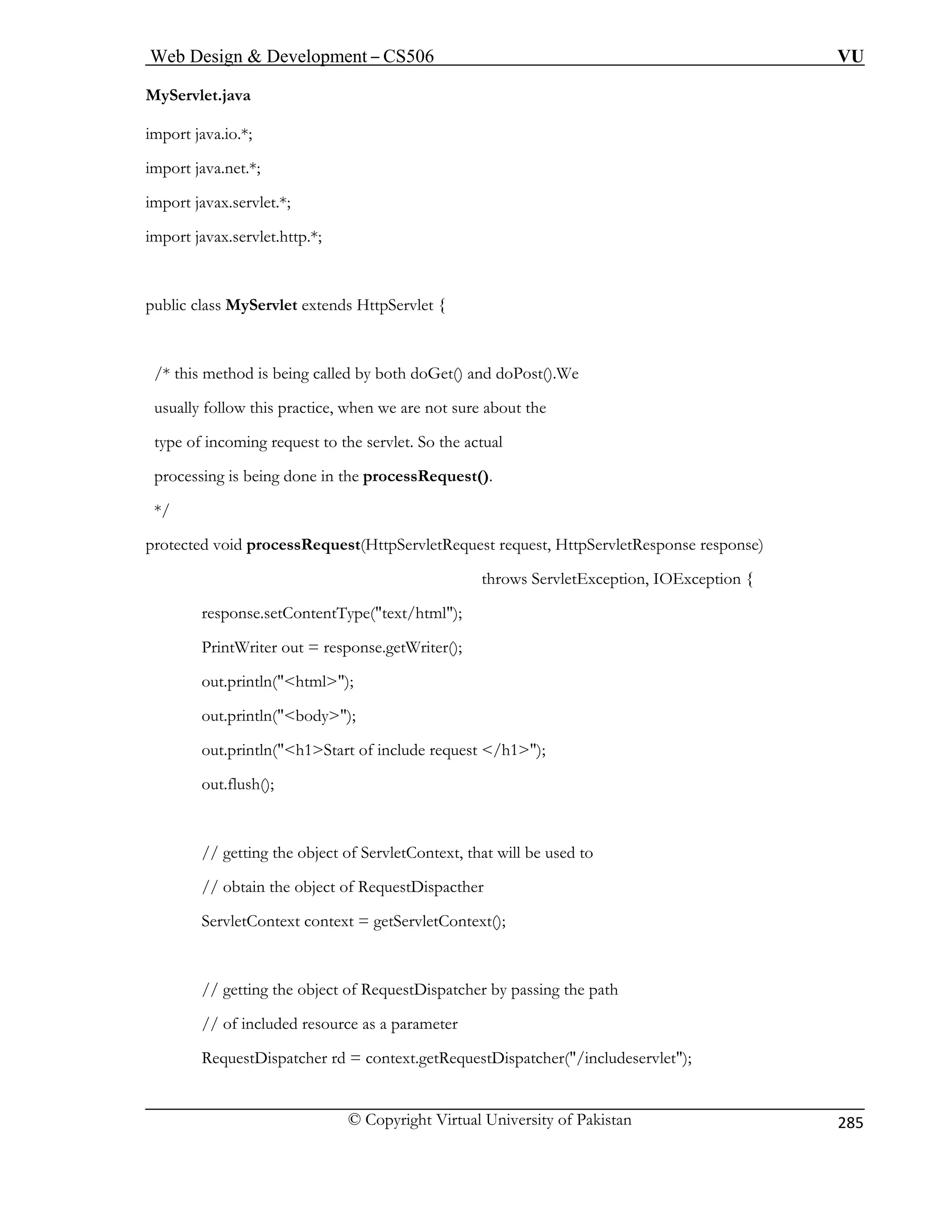
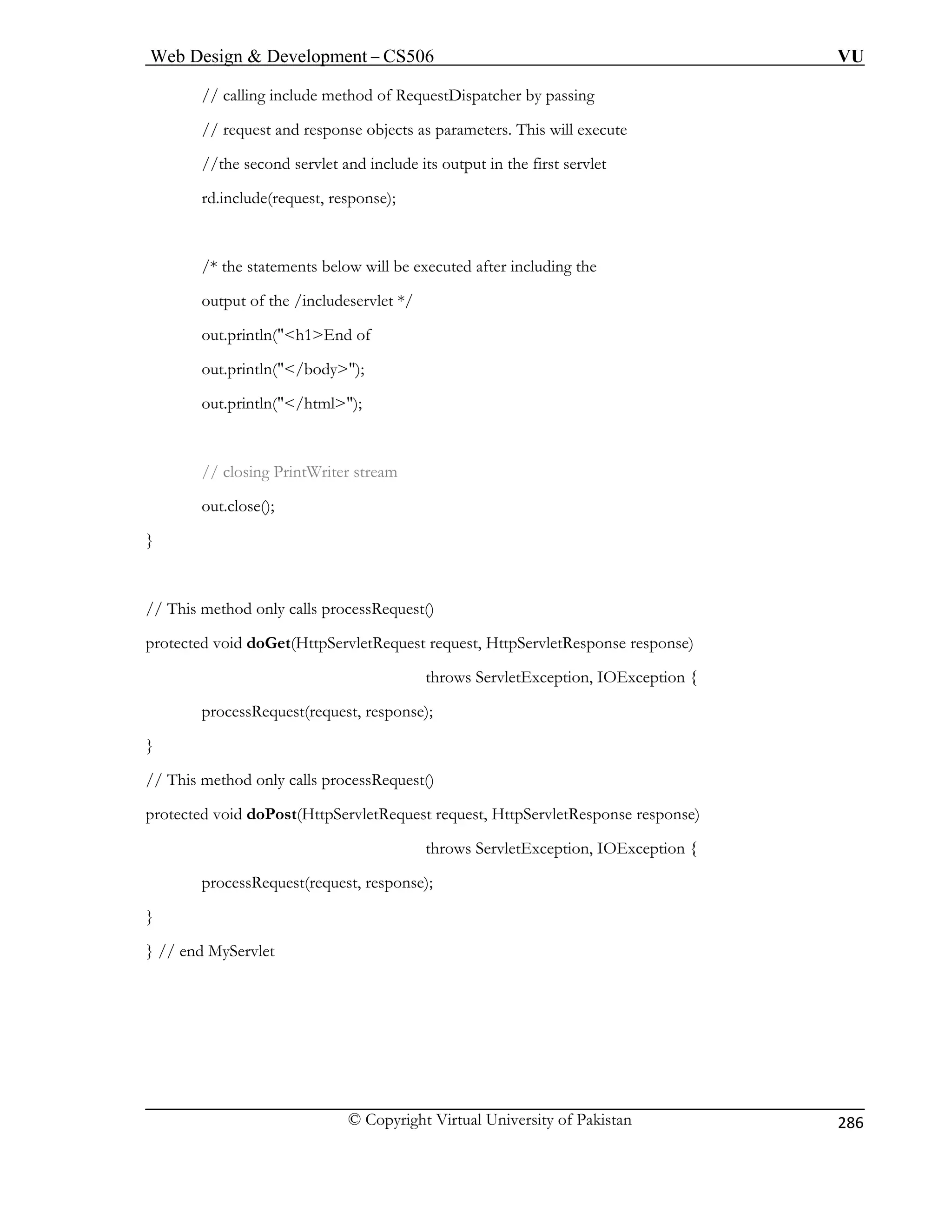
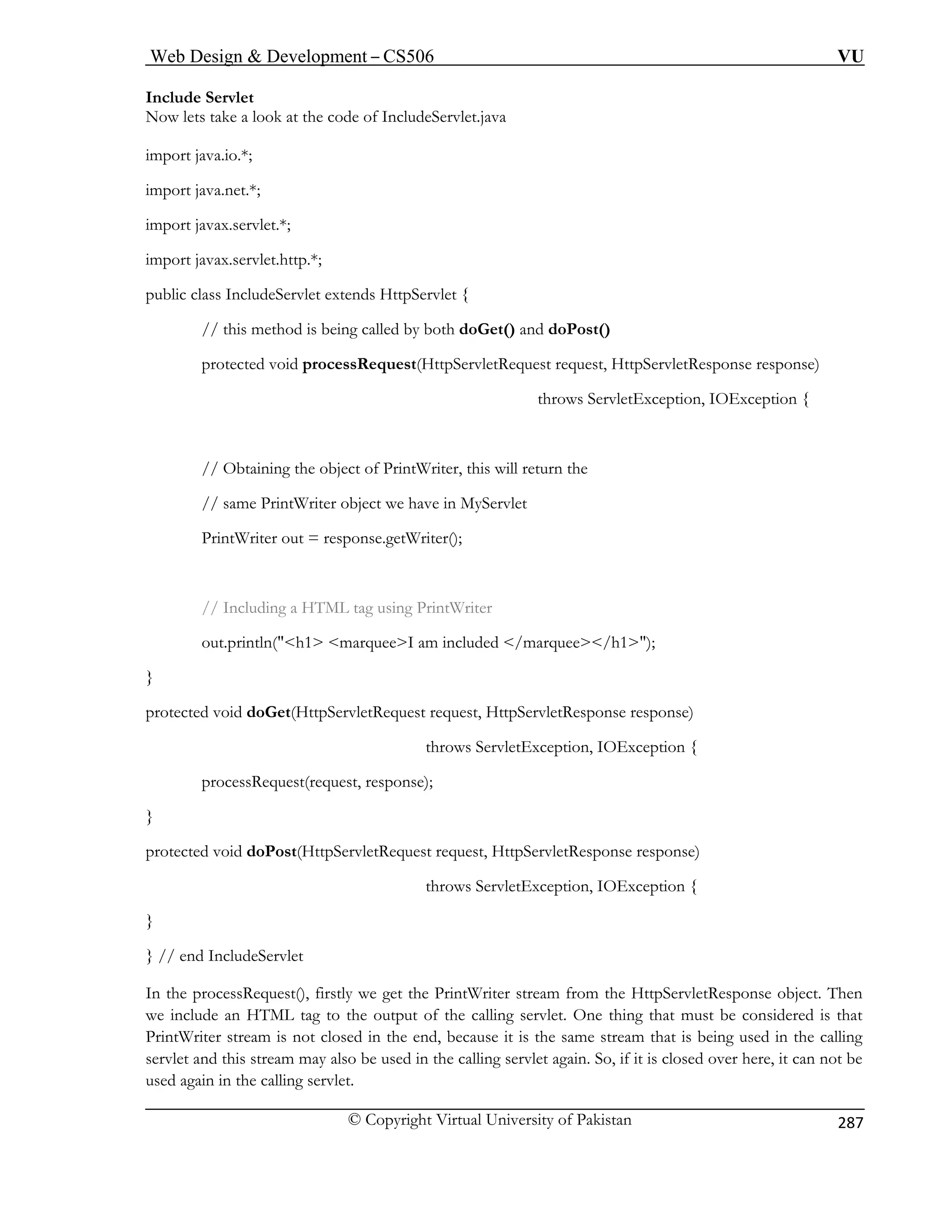
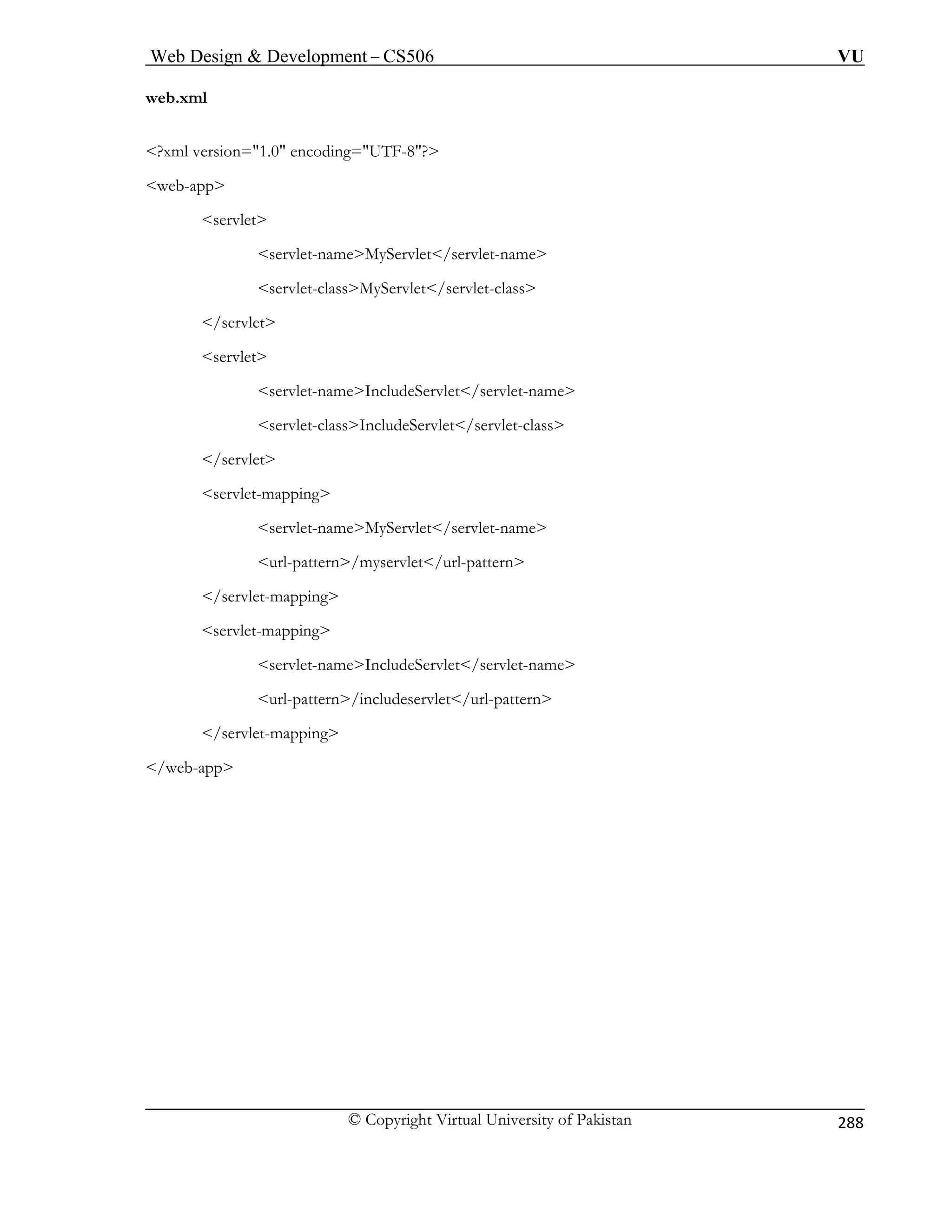
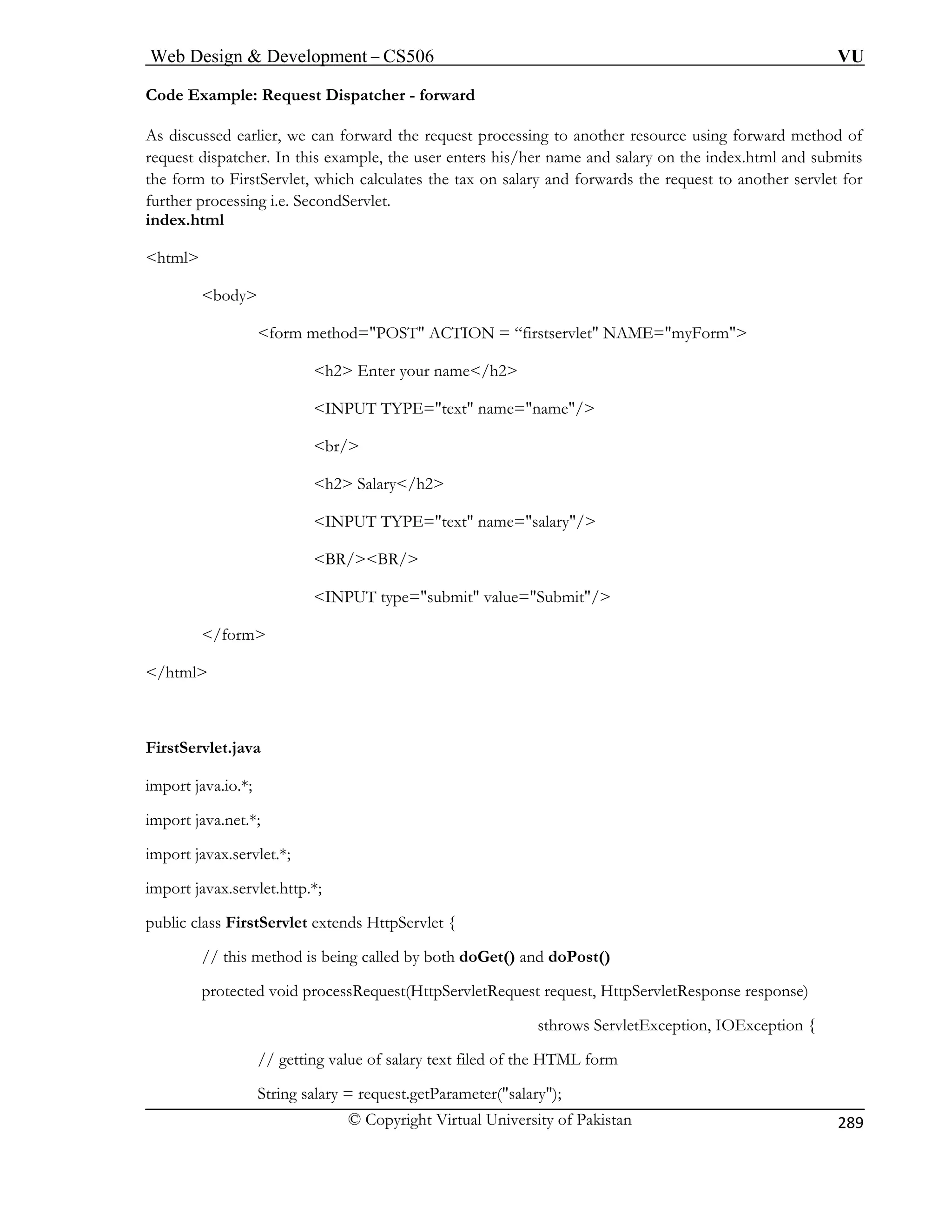
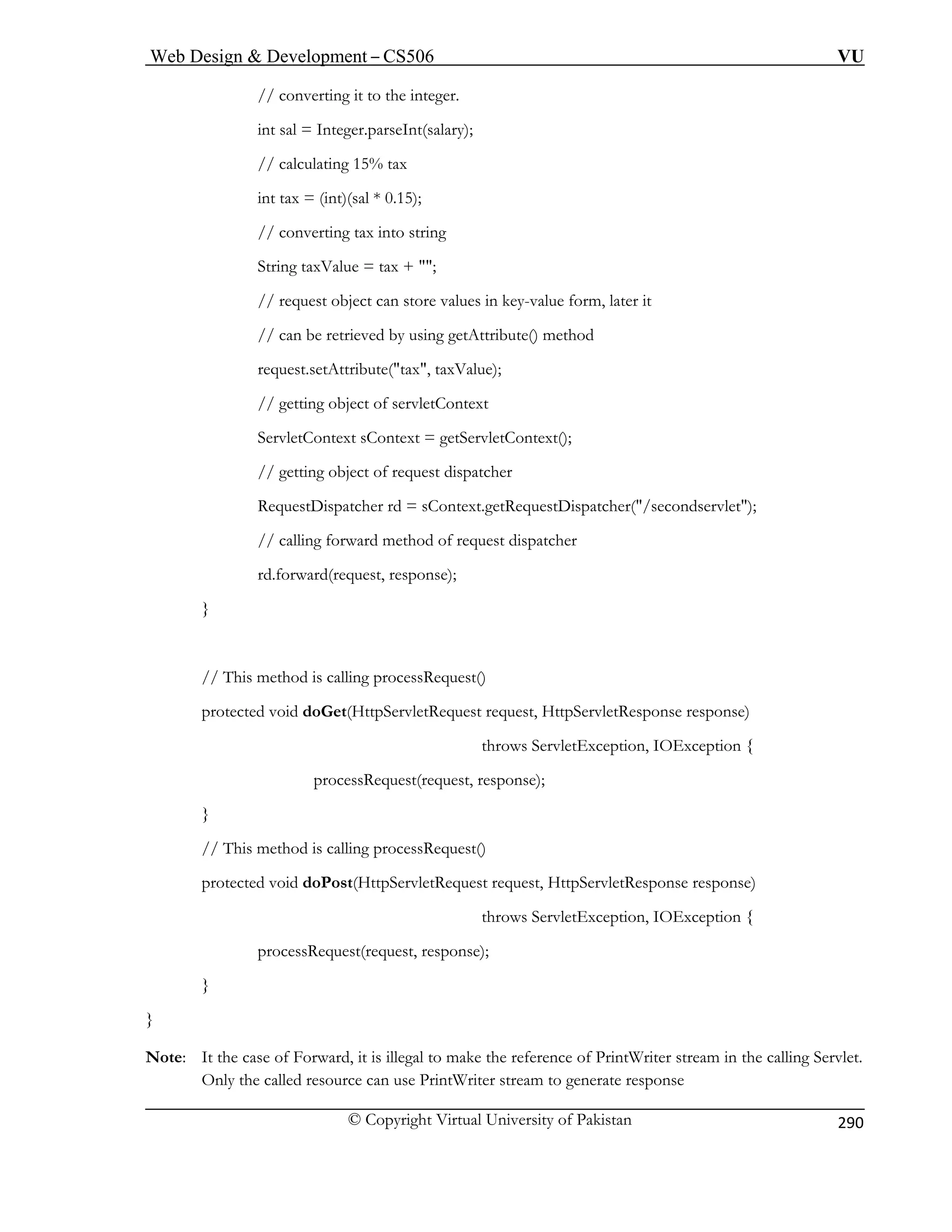
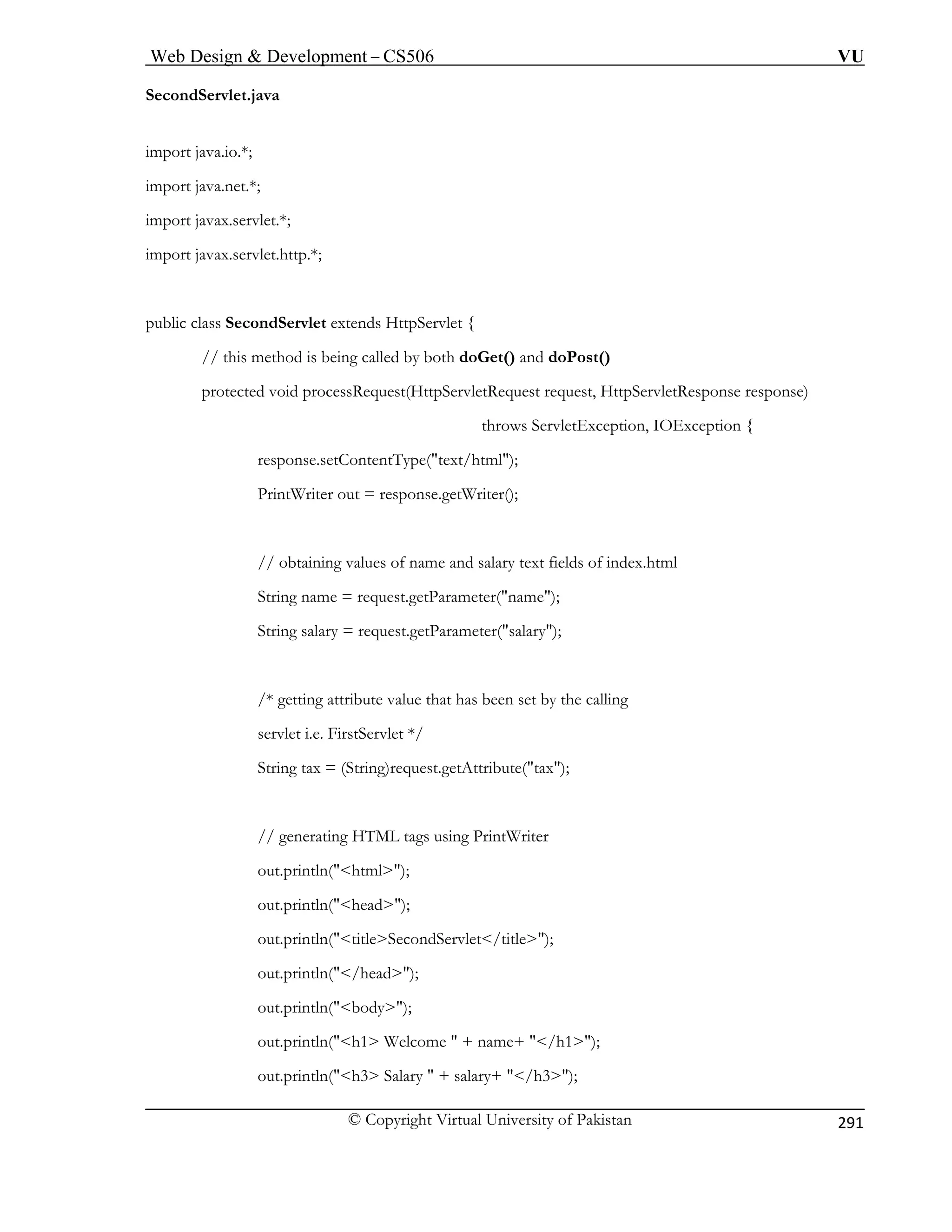
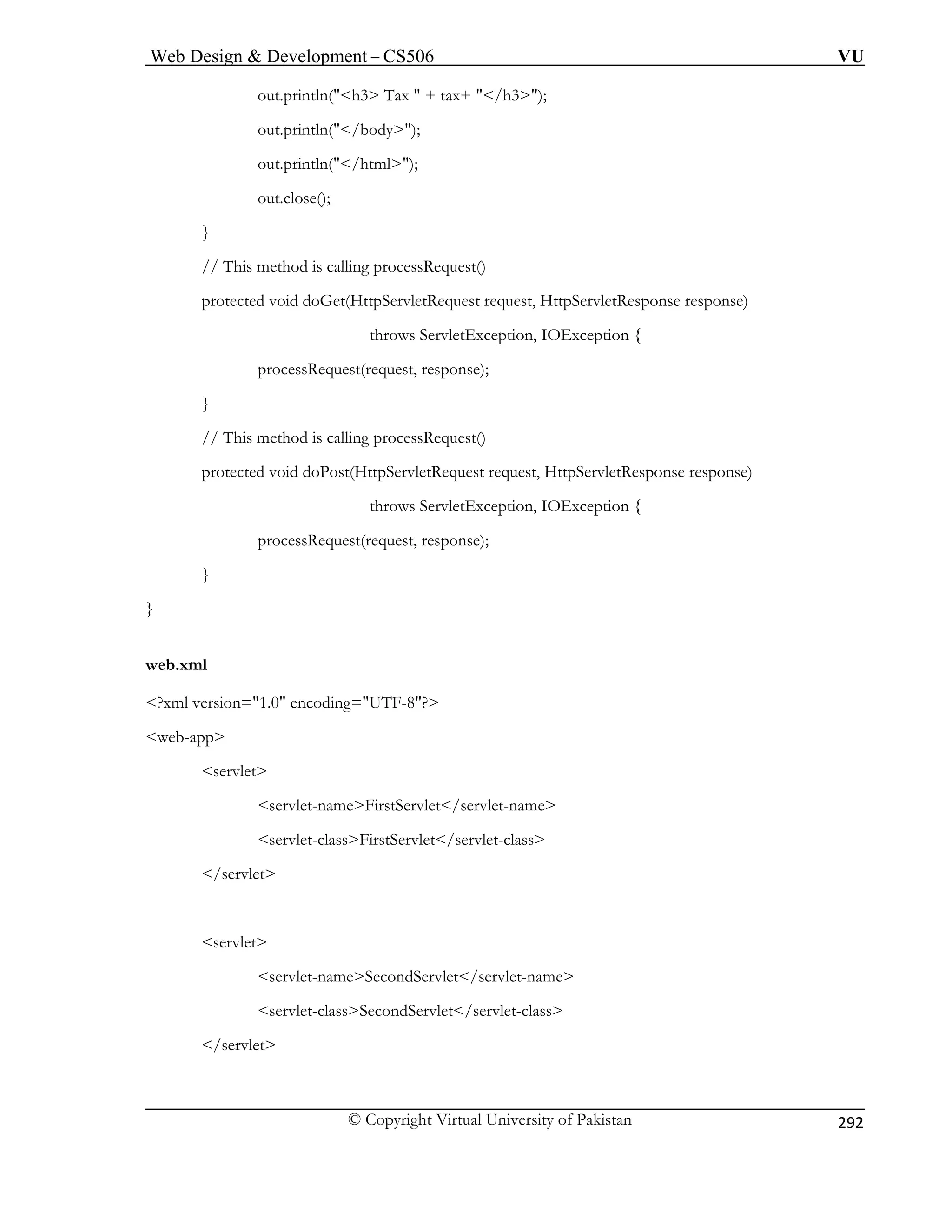
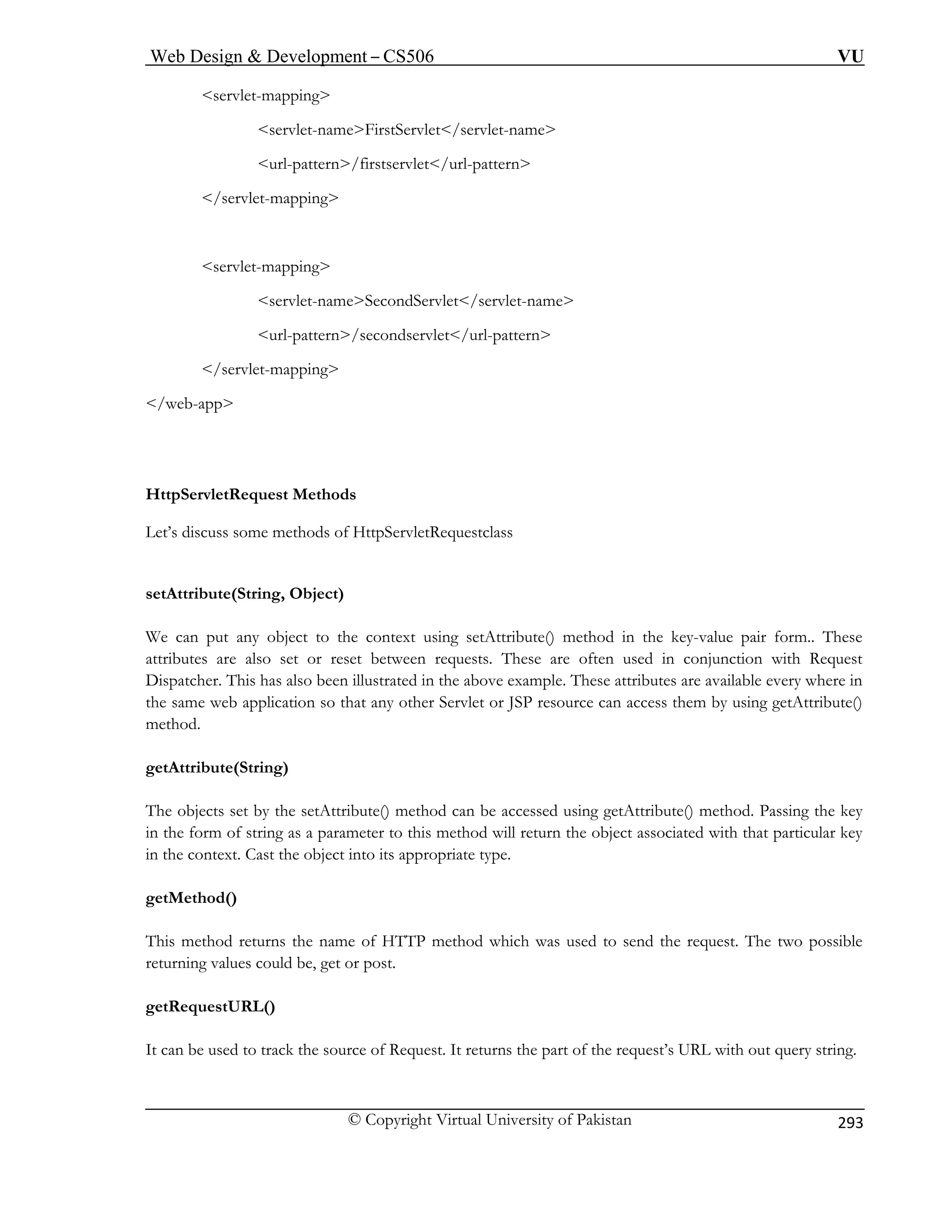
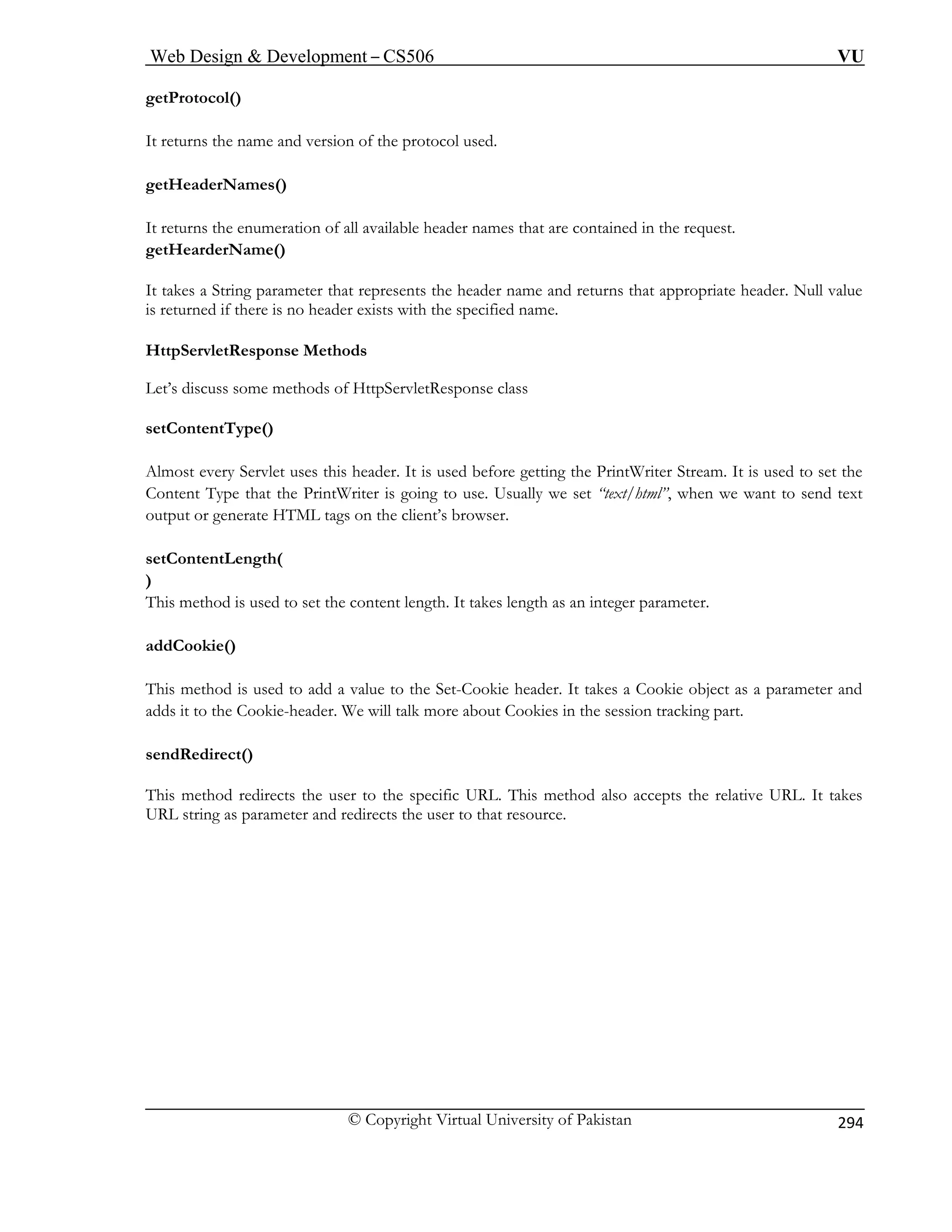
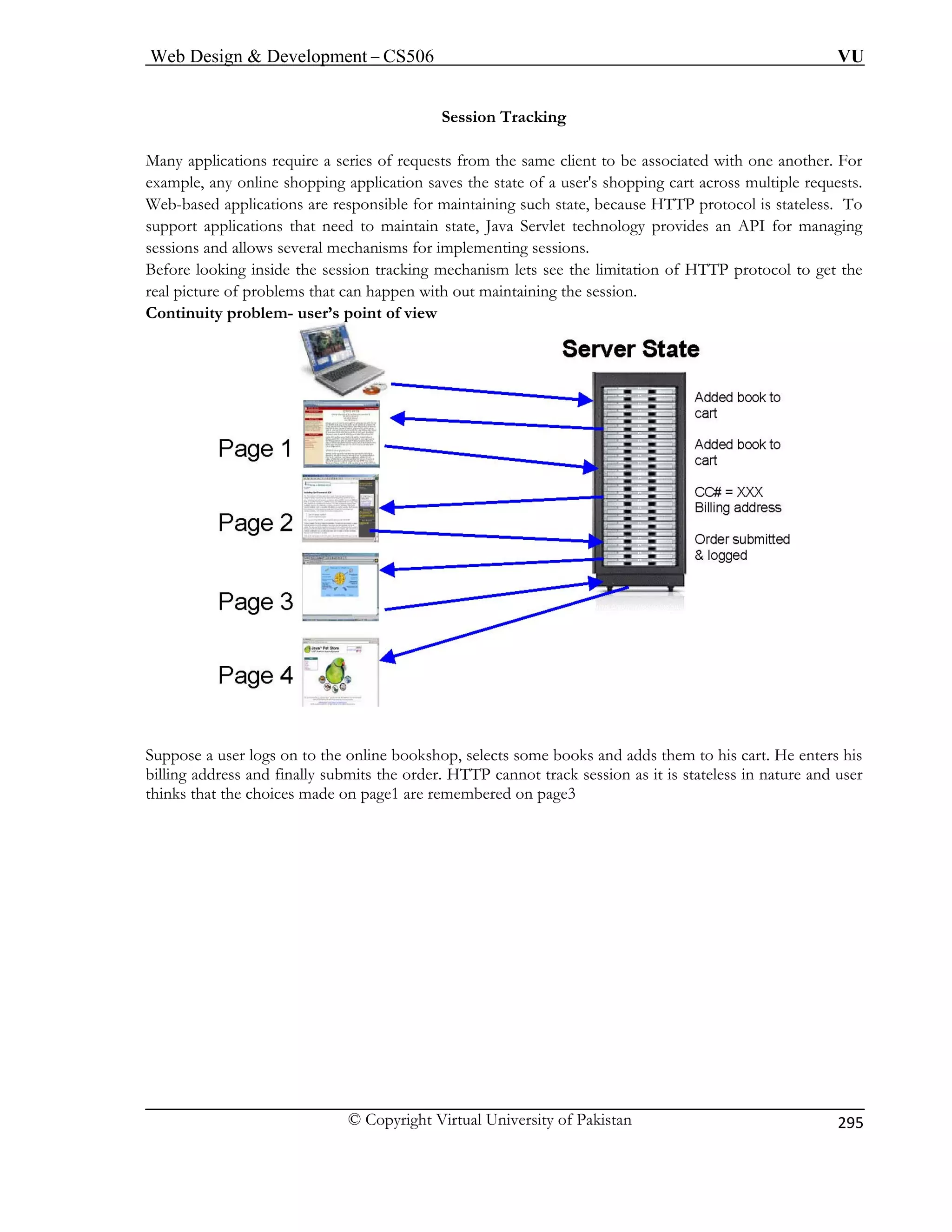
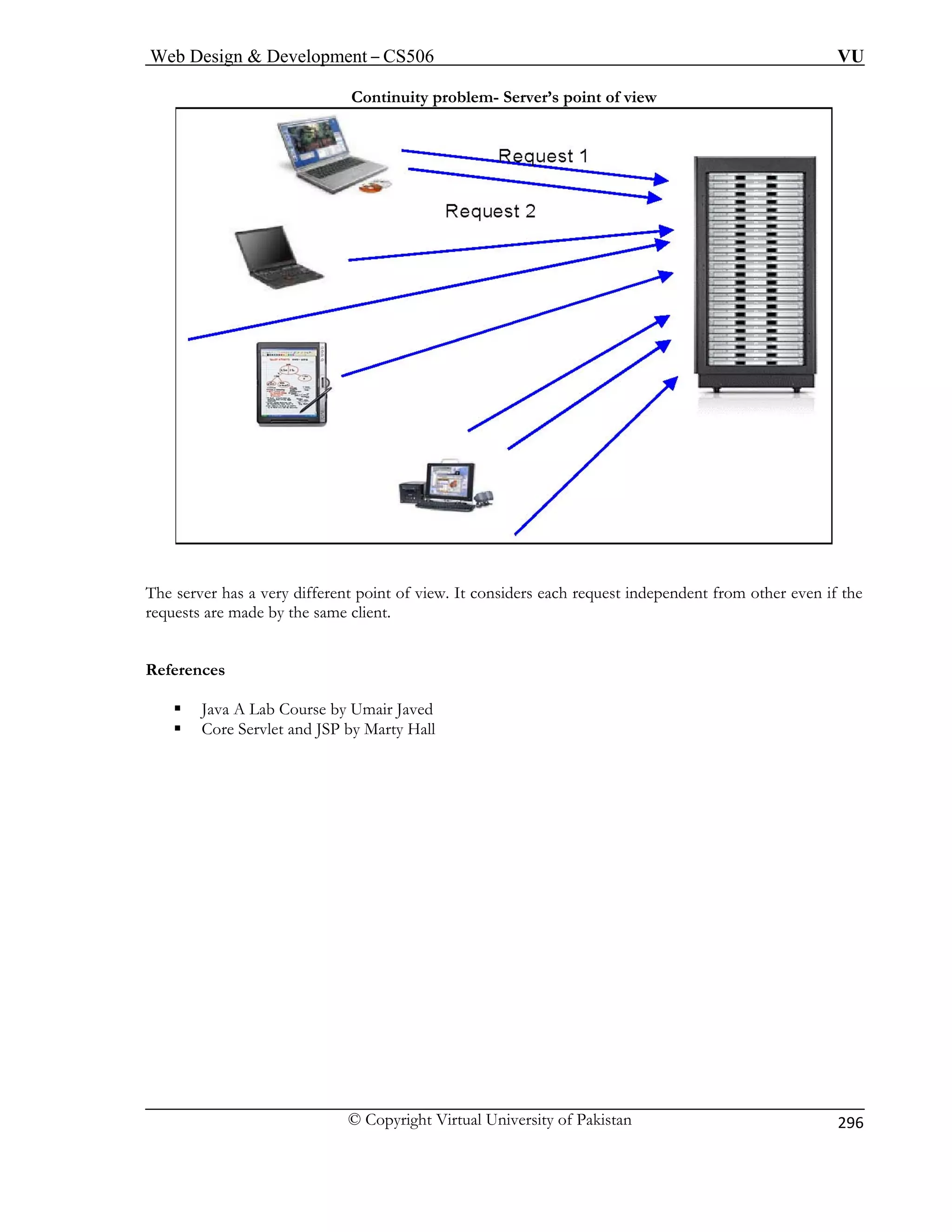
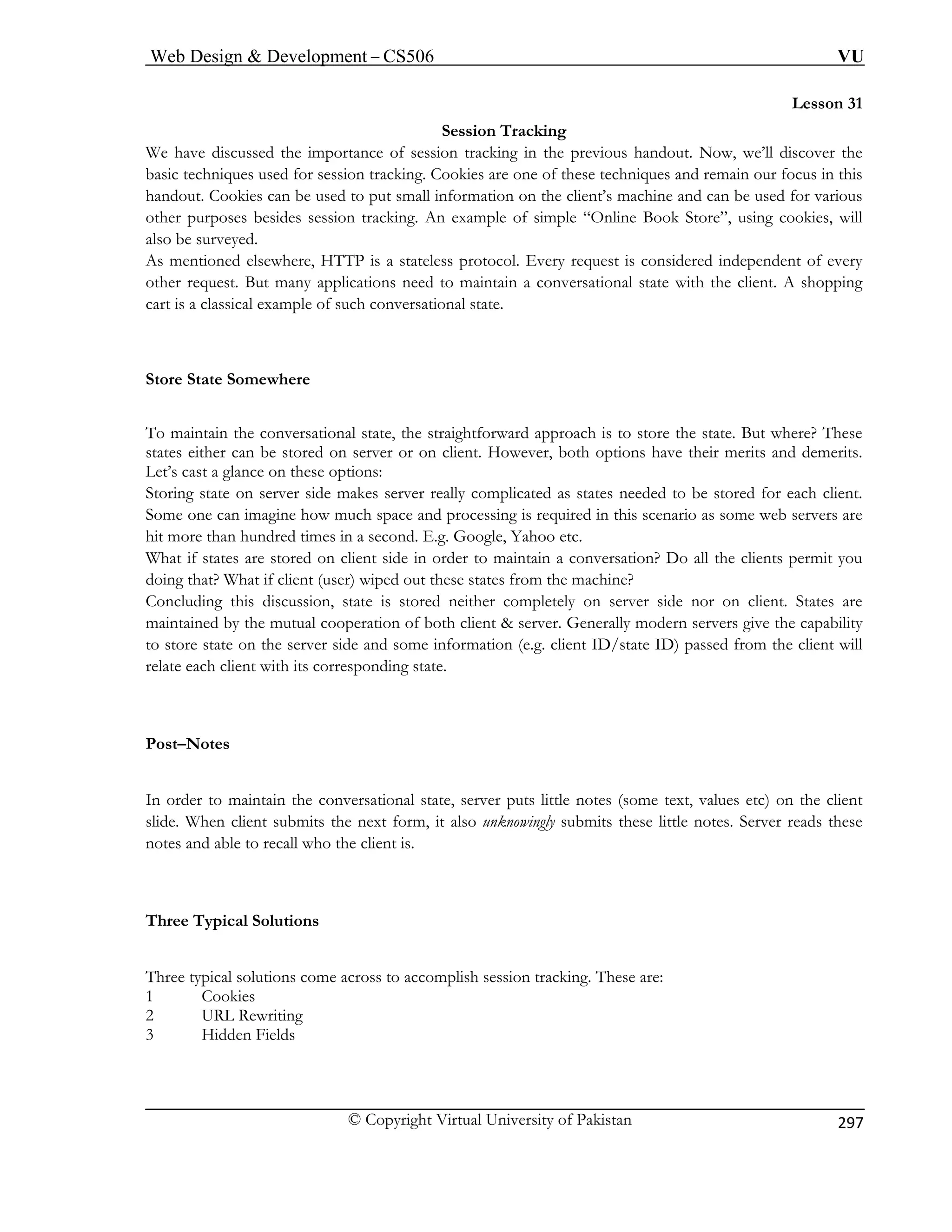
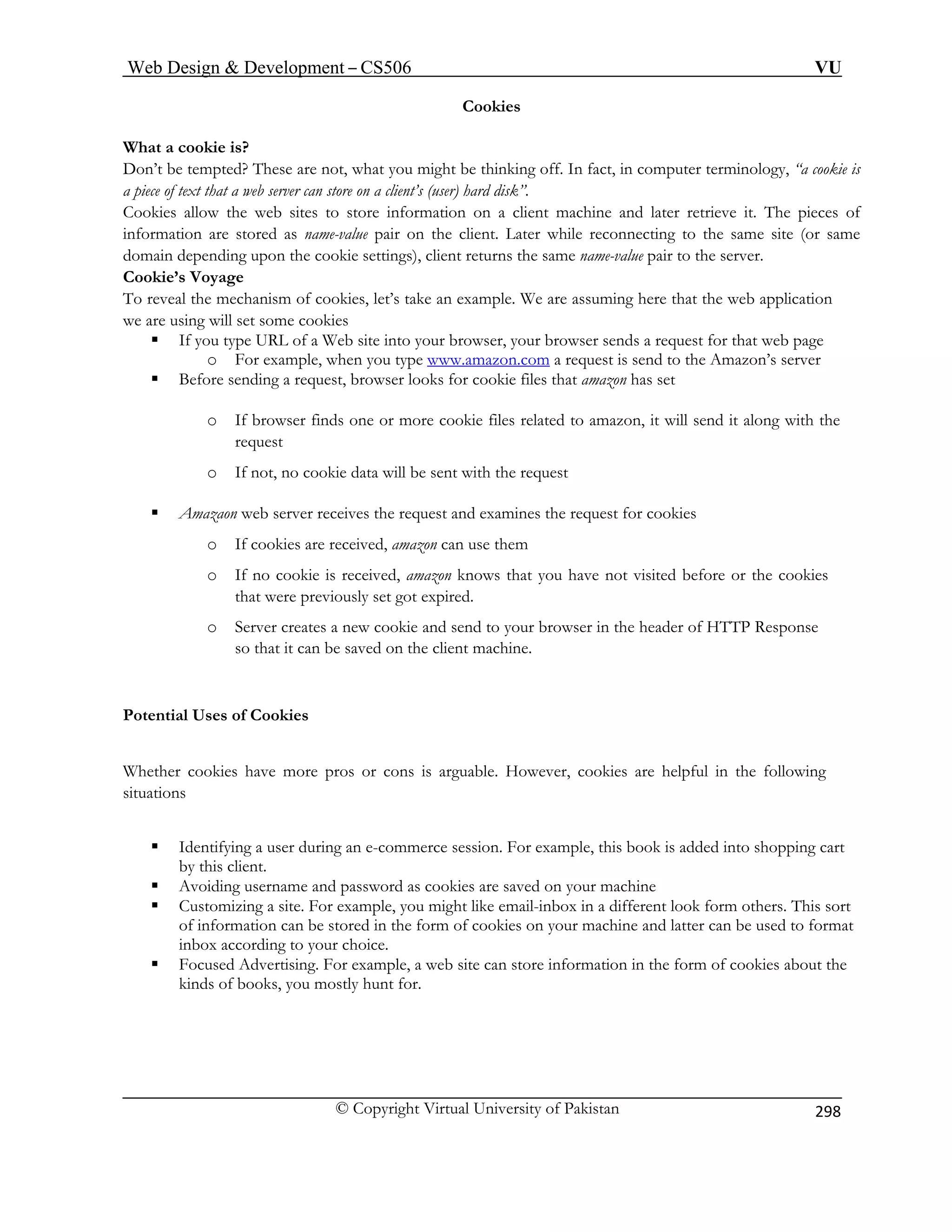
![Web Design Development – CS506 VU
© Copyright Virtual University of Pakistan
299
Send
Follo ookie to a browser (client).
1
ie constructor, which takes two strings: the cookie
Cookie c = new Cookie (“name”, “value”);
2
Before adding the cookie to outgoing headers (response), various characteristics of the cookie can be
ie persists on the disk or not. If yes then how long.
urrent user session (i.e. until the user quits the session) and
before the
ne hour
3. Place the Cookie into HTTP response
attributes, the most important and unforgettable step is to add this
onse. If you forget this step, no cookie will be sent to the browser.
e.addCookie(c);
owing steps are generally followed.
okies
t of the HttpServeltRequest by calling
following method
s[] = request.getCookies();
T
2
ies, you can iterate over it. Two important methods of Cookie class are
() getValue(). These are used to retrieve cookie name and value respectively.
ing Cookies to Browser
wing are some basic steps to send a c
. Create a Cookie Object
A cookie object can be created by calling the Cookname and the cookie value.
. Setting Cookie Attributes
set. For example, whether a cook
A cooki
es by default, lasts only for the c
will not be stored on the disk. Using setMaxAge(int lifetime) method indicates how much time (in seconds) should elapse cookie expires.
c.setMaxAge(60); // expired after o
After making changes to cookiecurrently created cookie into resp
respons Reading Cookies from the Client To read the cookies that come back from the client, foll1. Reading incoming co
To read incoming cookies, get them from the request objec
Cookie cookie
This call returns an array of Cookies object corresponding to the name values that came in the HTP request header.
. Looping down Cookies Array Once you have an array of cookgetName](https://image.slidesharecdn.com/webdesignanddevelopment-cs506handouts-141110100145-conversion-gate01/75/Web-design-and-development-cs506-handouts-299-2048.jpg)
![Web Design Development – CS506 VU
© Copyright Virtual University of Pakistan
300
// looping down the whole cookies array
ookie c = cookies[i];
ar cookie
someName”) {
n do something with cookieor with the help of cookie.
her, loop canalso be stopped using break
*/
}
Exam
In the exam a unique cookie, named “repeat”. If the cookie is present, servlet
disp ndicates that the user is visiting this site for the first time thus
serv rd”.
This exa code snippet
of web
Not sing netBeans4.1. This IDE will write web.xml for you.
How ose only, or for those which are not using any IDE to
strengthen their concepts
RepeatVisitorServlet.java
import java.io.*;import java.net.*;import
javax.servlet.*;import javax.servlet.http.*;
publi VisitorServlet extends HttpServlet {
tion, IOException{
// Handles od.
protected v
HttpServletResponse response)throws ServletException, IOException{
processRequest(request, response);
// called from both doGet() doPost()
for(int i=0; icookies.length; i++) { // getting each cookie from the arrayC
// in search for particulif( c.getName().equals(“ /* if found, you ca
If don’t want to process furtstatement
} // end for
ple Code1: Repeat Visitor ple below, servlet checks for
lays “Welcome Back”. Absence of cookie ilet displays a message “Welcome Aboa
mple contains only one servlet “RepeatVisitorServlet.java” and its code is given below. A .xml is also accompanied.
e: As a reminder, all these examples are built uever, here it is given for your reference purp
c class Repeat
// Handles the HTTP codeGET/code me
thod.
protected void doGet(HttpServletRequest request,
HttpServletResponse response)throws ServletExcep
processRequest(request, response);
}
the Hde meth
TTP codePOST/co
oid doPost(HttpServletRequest request,
}
protected void processRequest(HttpServletRequest request,](https://image.slidesharecdn.com/webdesignanddevelopment-cs506handouts-141110100145-conversion-gate01/75/Web-design-and-development-cs506-handouts-300-2048.jpg)
![Web Design Development – CS506 VU
© Copyright Virtual University of Pakistan
301
H response)throws ServletException, IOException{
respo
boolean repeatVisitor = false;
okie[] cookies = request.getCookies();
t object
Cookie c = cookies[i];
okie
firming if cookie name equals “repeat” and
// value equals “yes”
if( name.equals(repeat) val.equals(yes))
{
k;repeatVisitor = true;break;
// if no cookie with name “repeat” is foundif (repeatVisitor == false){
// create a new cookie
Cookie c1 = new Cookie(repeat, yes);
// setting time after which cookies expires
c1.setMaxAge(60);
// adding cookie to the response
response.addCookie(c1);
msg = Welcome Aboard;
}
ttpServletResponse
nse.setContentType(text/html);
PrintWriter out = response.getWriter(); // writing html out.println(html); out.println(body);
out.println(h2Cookie Example /h2);
String msg = ;
// reading cookies Co
cookies are returned from reques
// if
if (cookies != null) {//search for cookie -- repeatfor (int i = 0; i cookies.length; i++) { // retrieving one cookie out of array
// retrieving name value of the coString name = c.getName(); String val = c.getValue();
// con
msg= Welcome Bac
}
} // end for } // end if](https://image.slidesharecdn.com/webdesignanddevelopment-cs506handouts-141110100145-conversion-gate01/75/Web-design-and-development-cs506-handouts-301-2048.jpg)
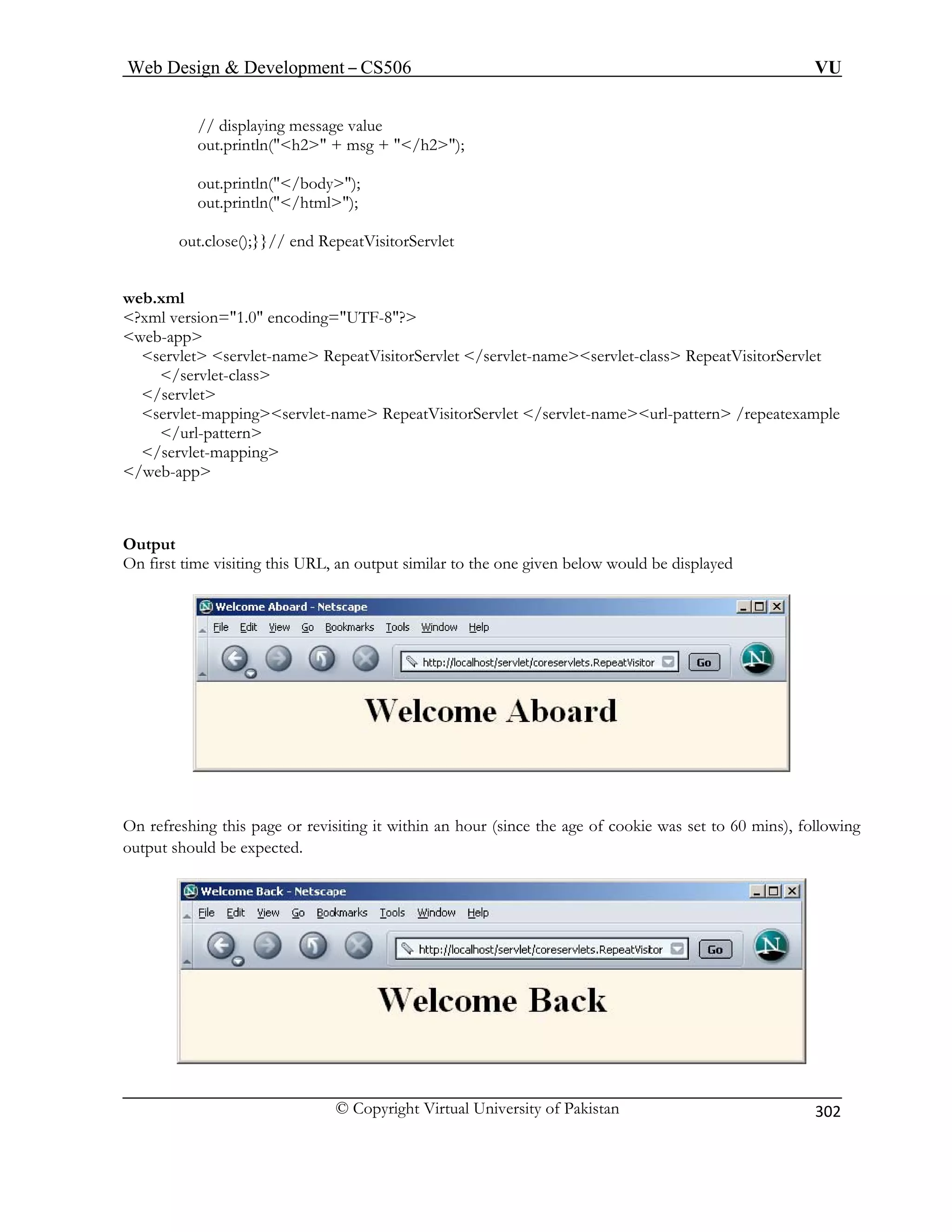

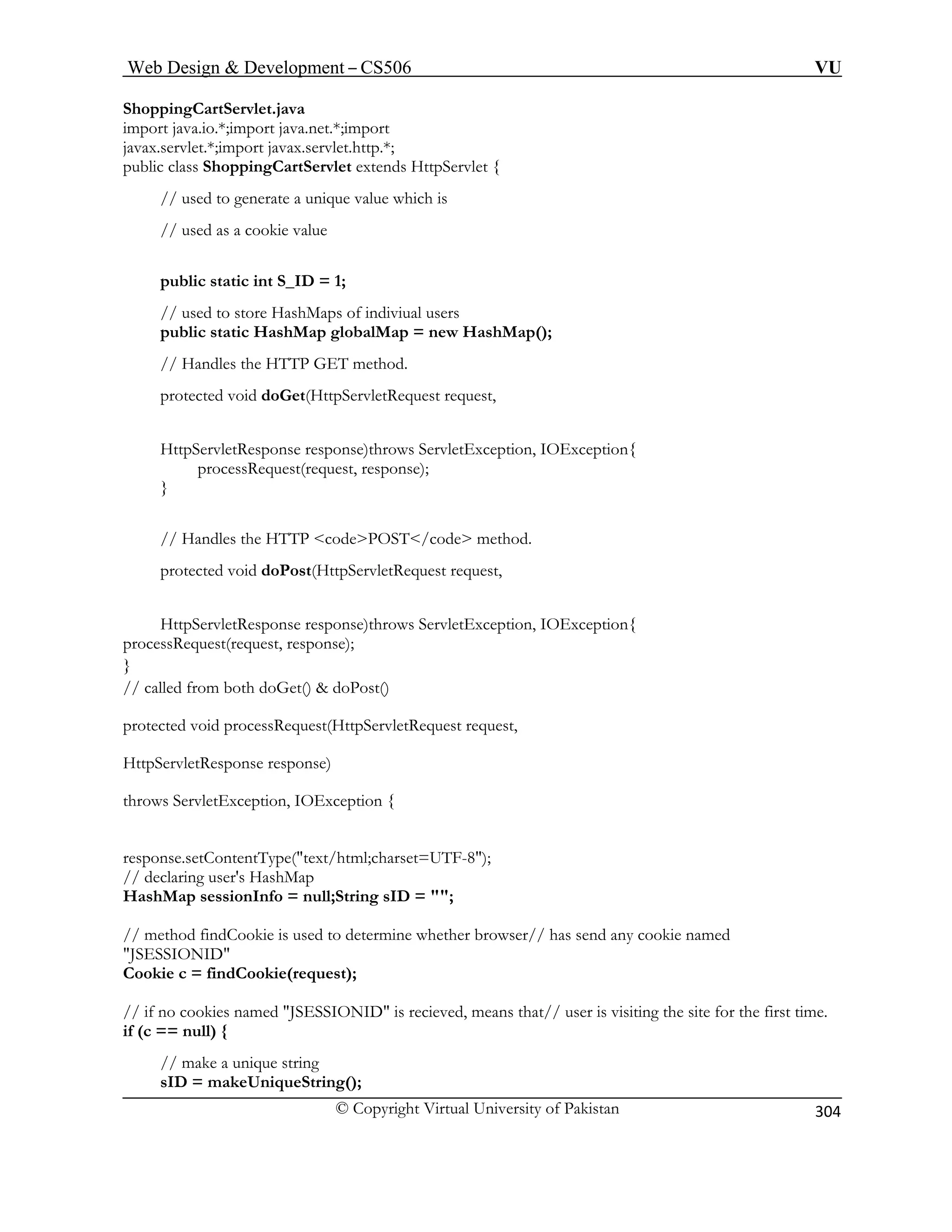
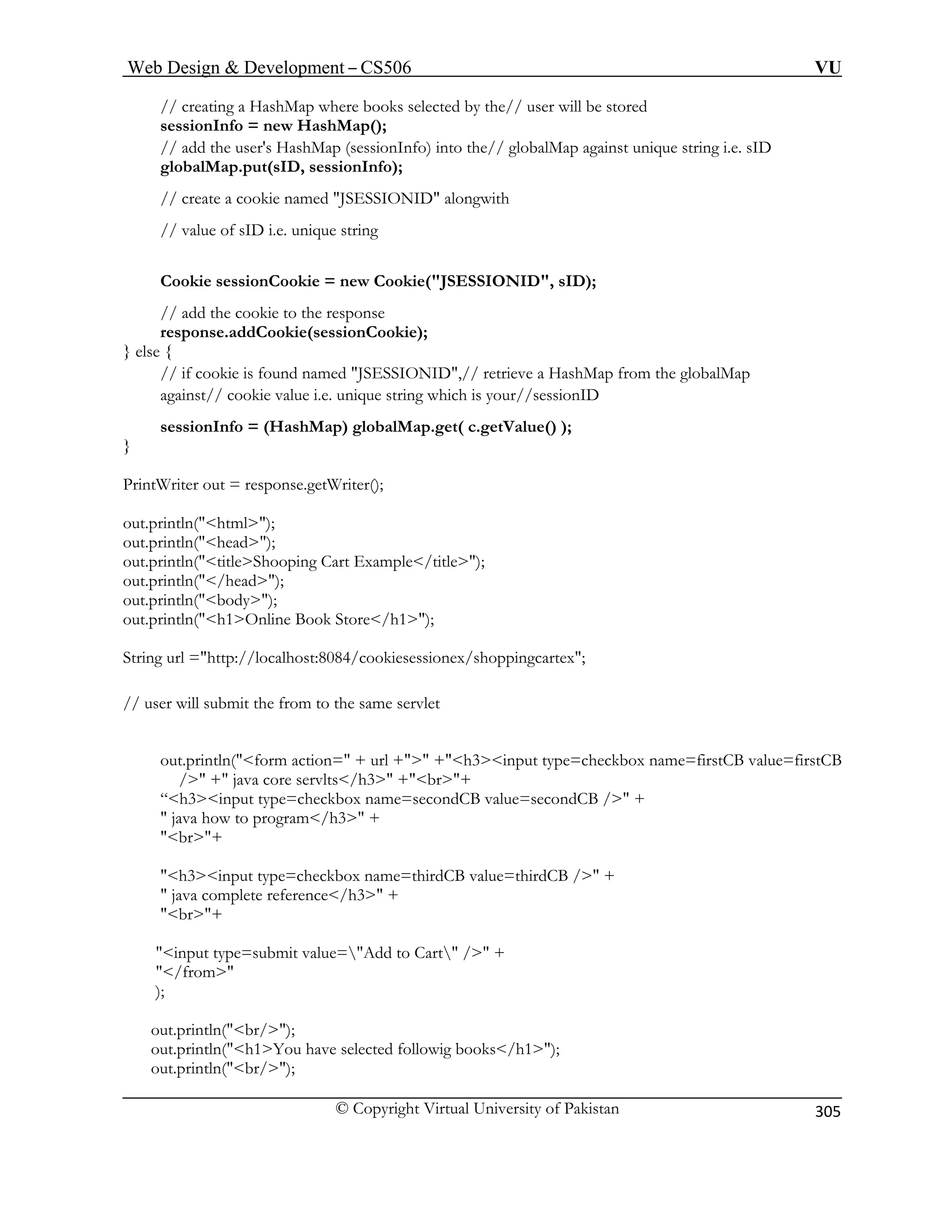
![Web Design Development – CS506 VU
© Copyright Virtual University of Pakistan
306
//reteriving params of check boxes
ook = request.getParameter(firstCB);
if ( fBook != null fBook.equals(firstCB) ) {
sessionInfo.put(firstCB, java core servlets);
}
rogram);}
// user's HashMap i.e. sessionInfo
if (tBook != null tBook.equals(thirdCB)){sessionInfo.put(thirdCB, java
// the user's HashMap i.e. sessionInfo
out.close();
} // end processRequest() // method used to generate a unique string
public String makeUniqueString(){return ABC + S_ID++;}
// returns a reference global HashMap.
public static HashMap findTableStoringSessions(){return globalMap;}
/ method used to find a cookie named JSESSIONID
ttpServletRequest request){
me().equals(JSESSIONID)){// doSomethingWith cookiereturn
}
// used to print the books currently stored in// user's HashMap. i.e. sessionInfo
String fB
String sBook = request.getParameter(secondCB); String tBook = request.getParameter(thirdCB);
// if first book is selected then add it to // user's HashMap i.e. sessionInfo
// if second book is selected then add it to
// user's HashMap i.e. sessionInfo
if (sBook != null sBook.equals(secondCB)){sessionInfo.put(secondCB, java how to p// if third book is selected then add it to
complete reference);} // used to display the books currently stored in
printSessionInfo(out, sessionInfo); out.println(/body); out.println(/html);
/
public Cookie findCookie(H
Cookie[] cookies = request.getCookies(); if (cookies != null) {
for(int i=0; icookies.length; i++) { Cookie c = cookies[i]; if (c.getNa
c;
} } } return null;](https://image.slidesharecdn.com/webdesignanddevelopment-cs506handouts-141110100145-conversion-gate01/75/Web-design-and-development-cs506-handouts-306-2048.jpg)
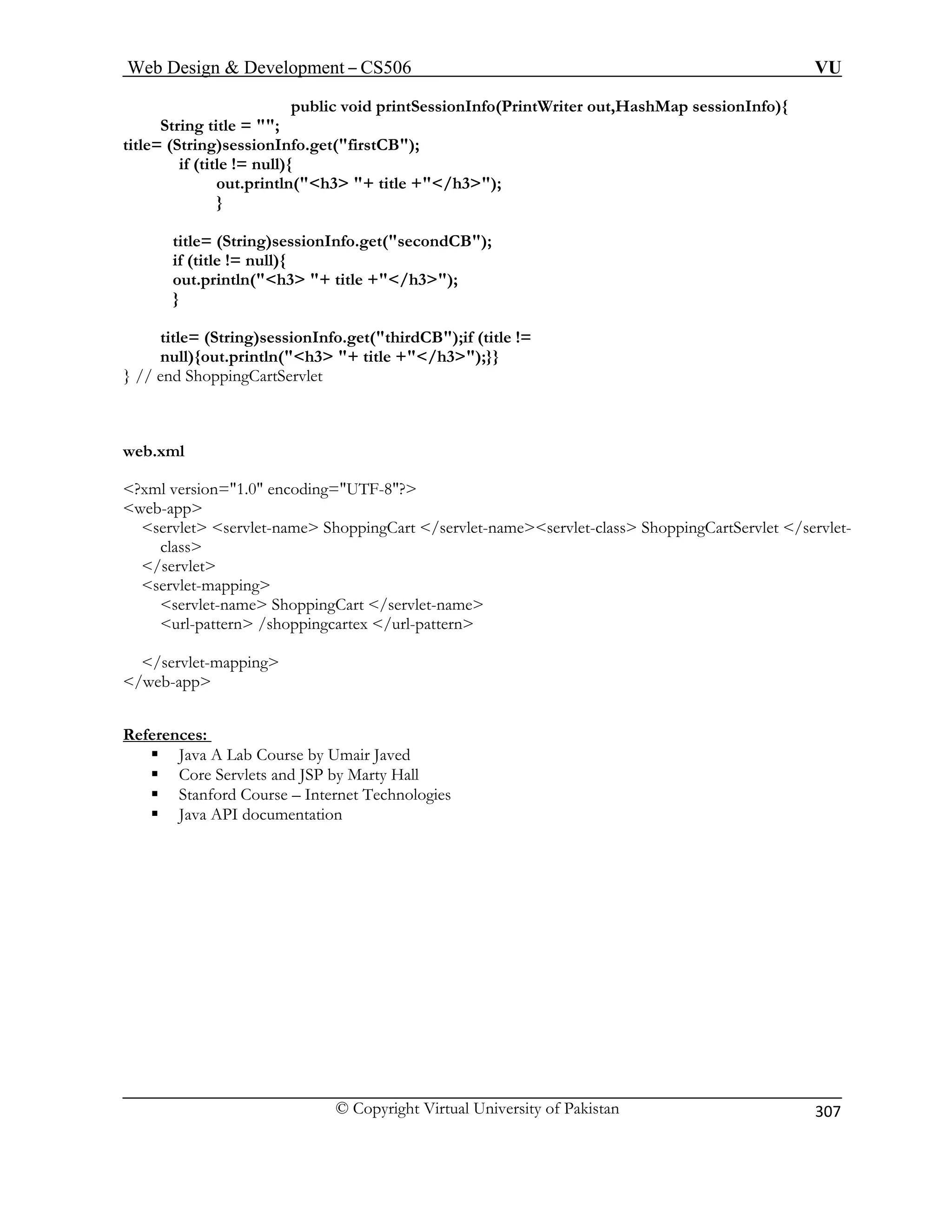
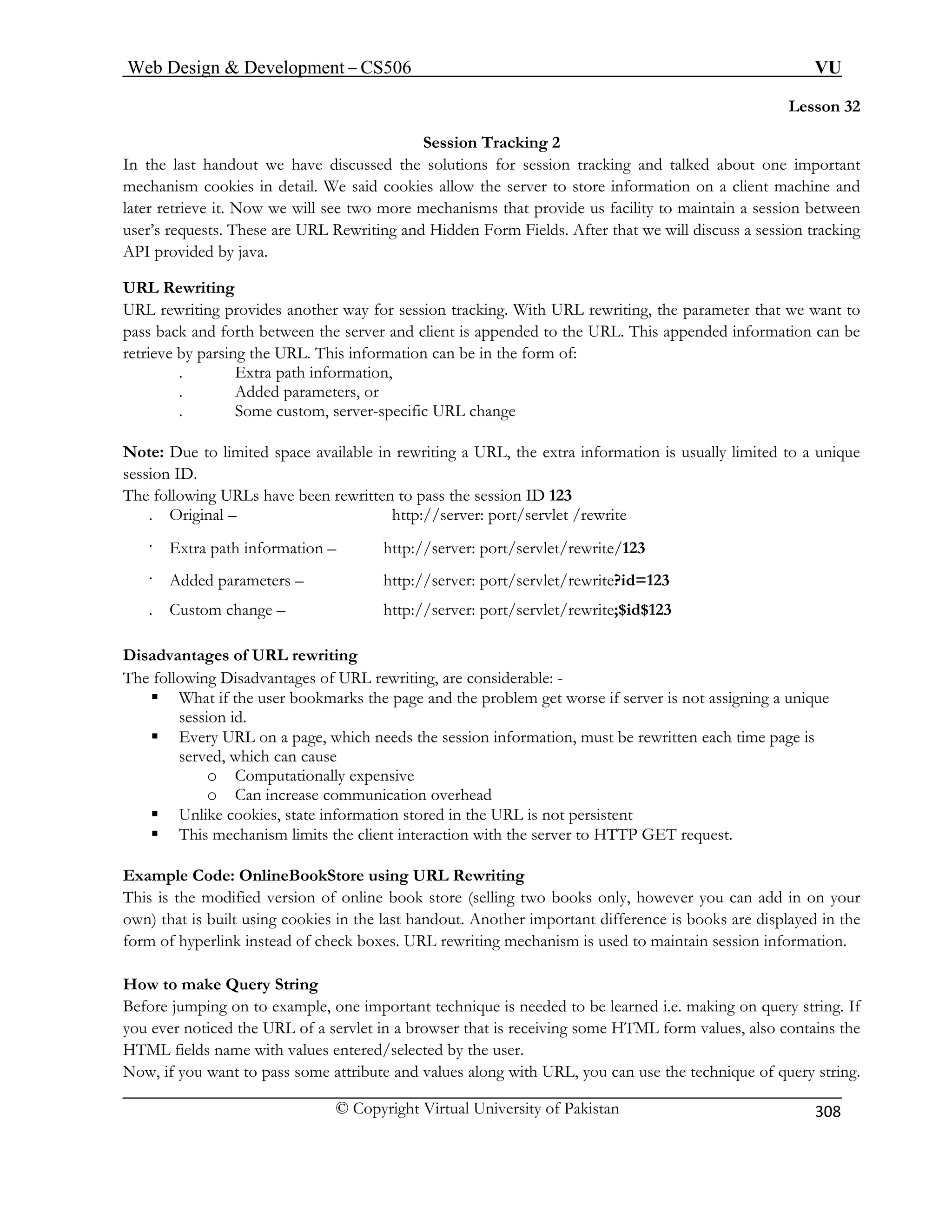

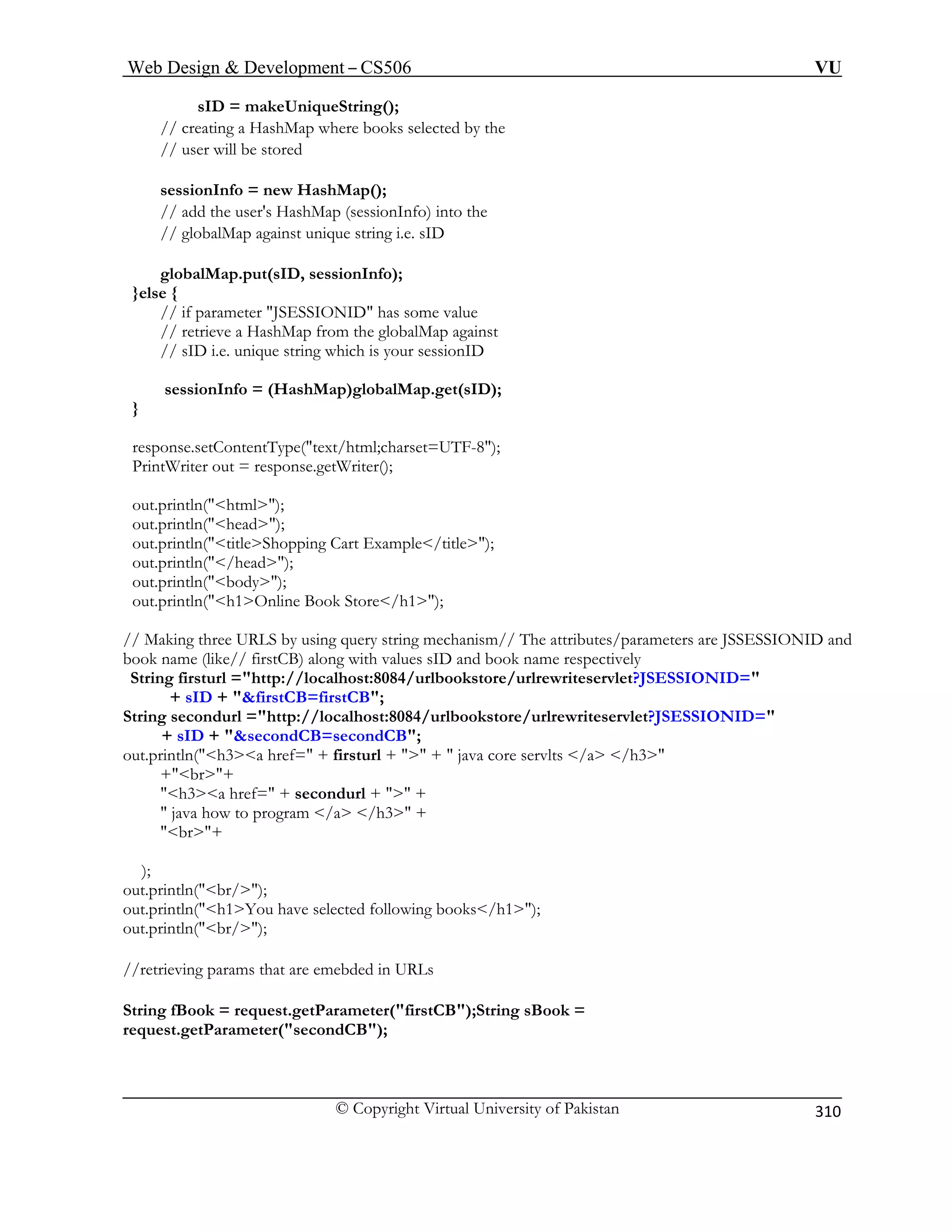
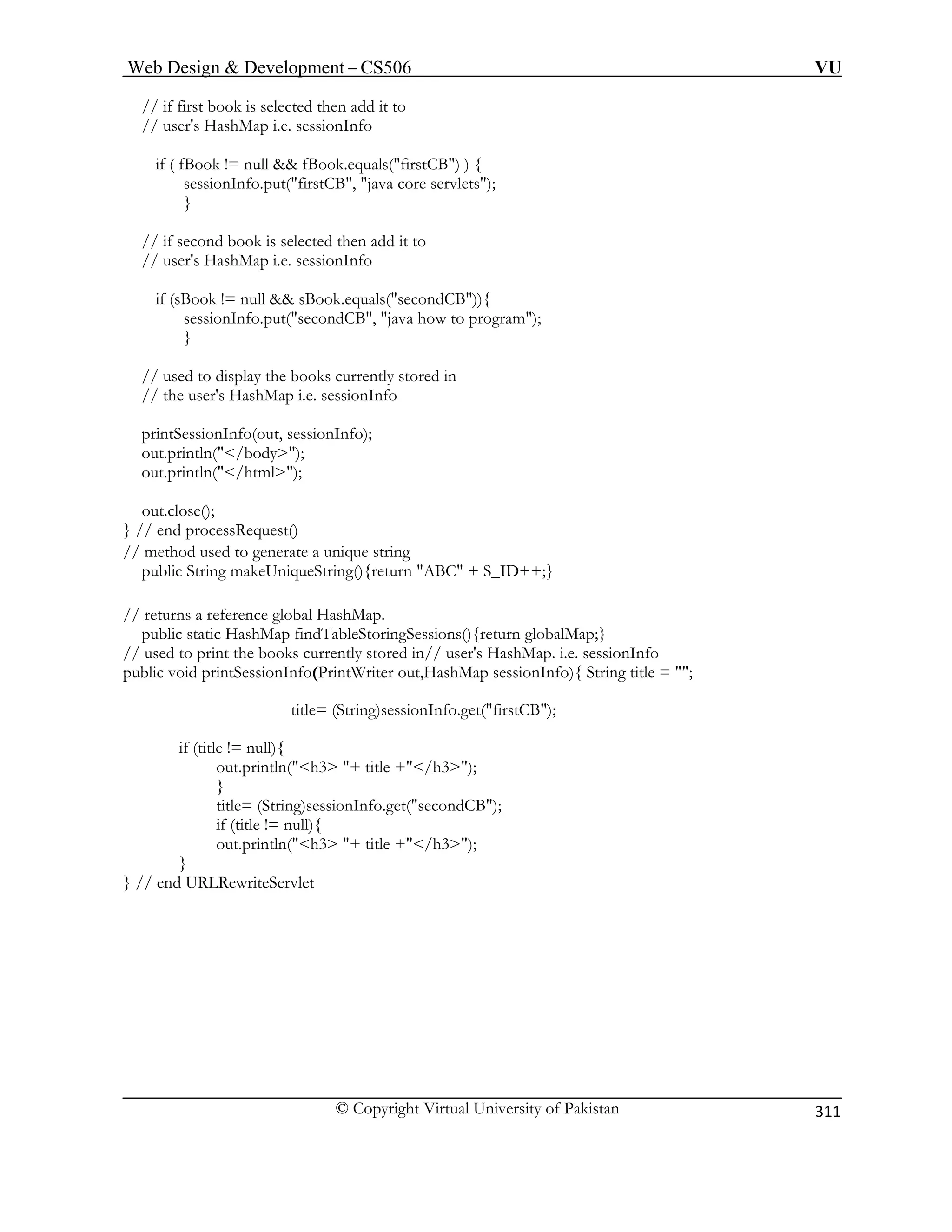
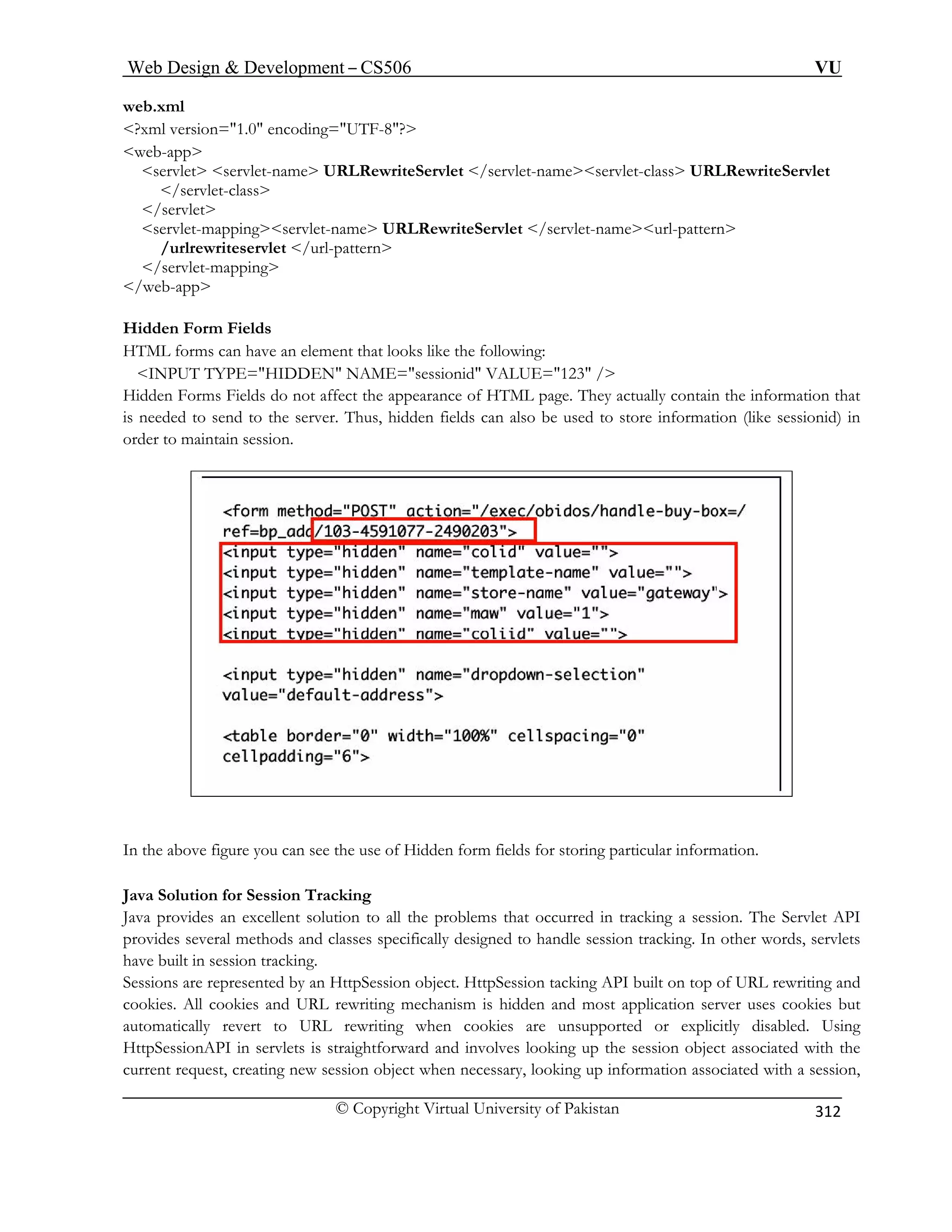
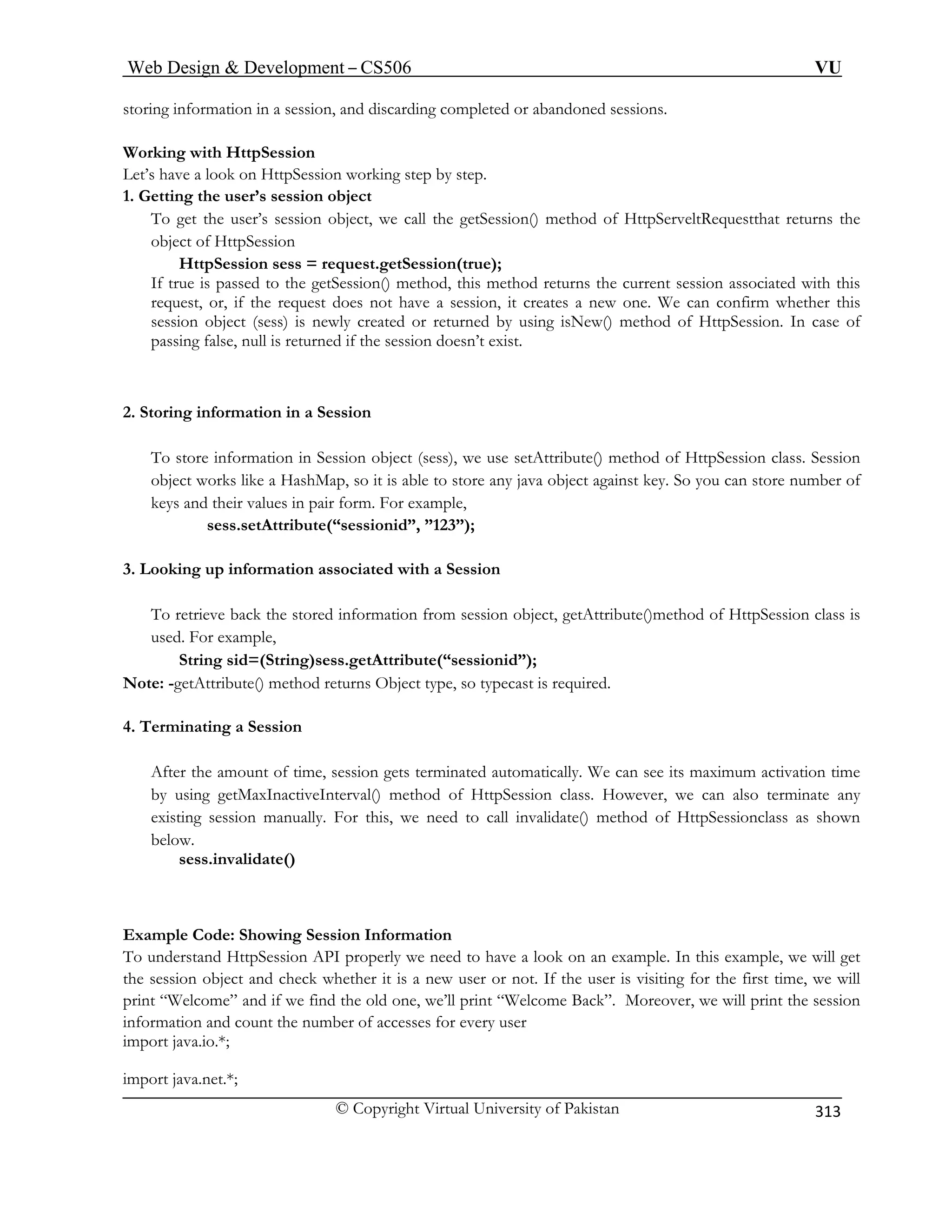
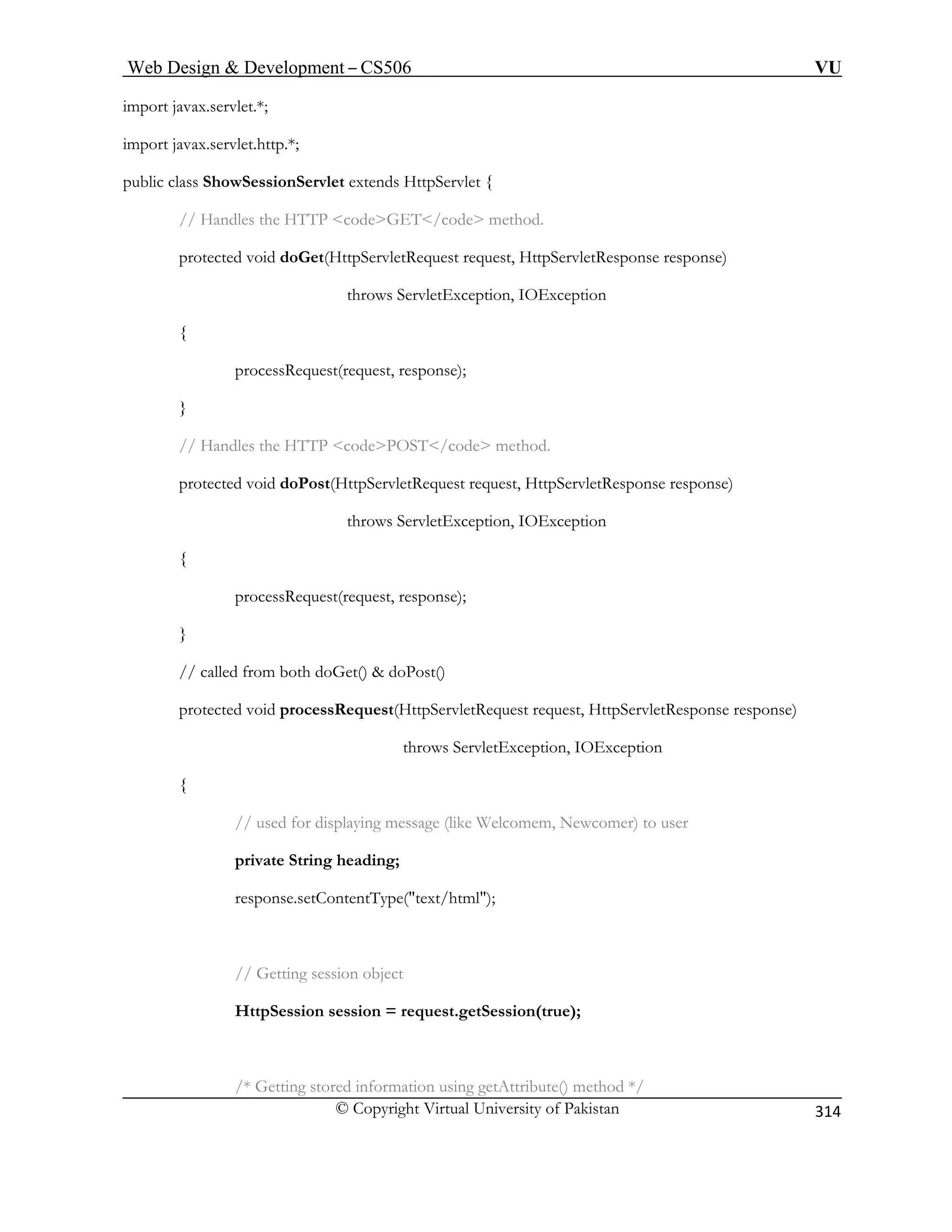
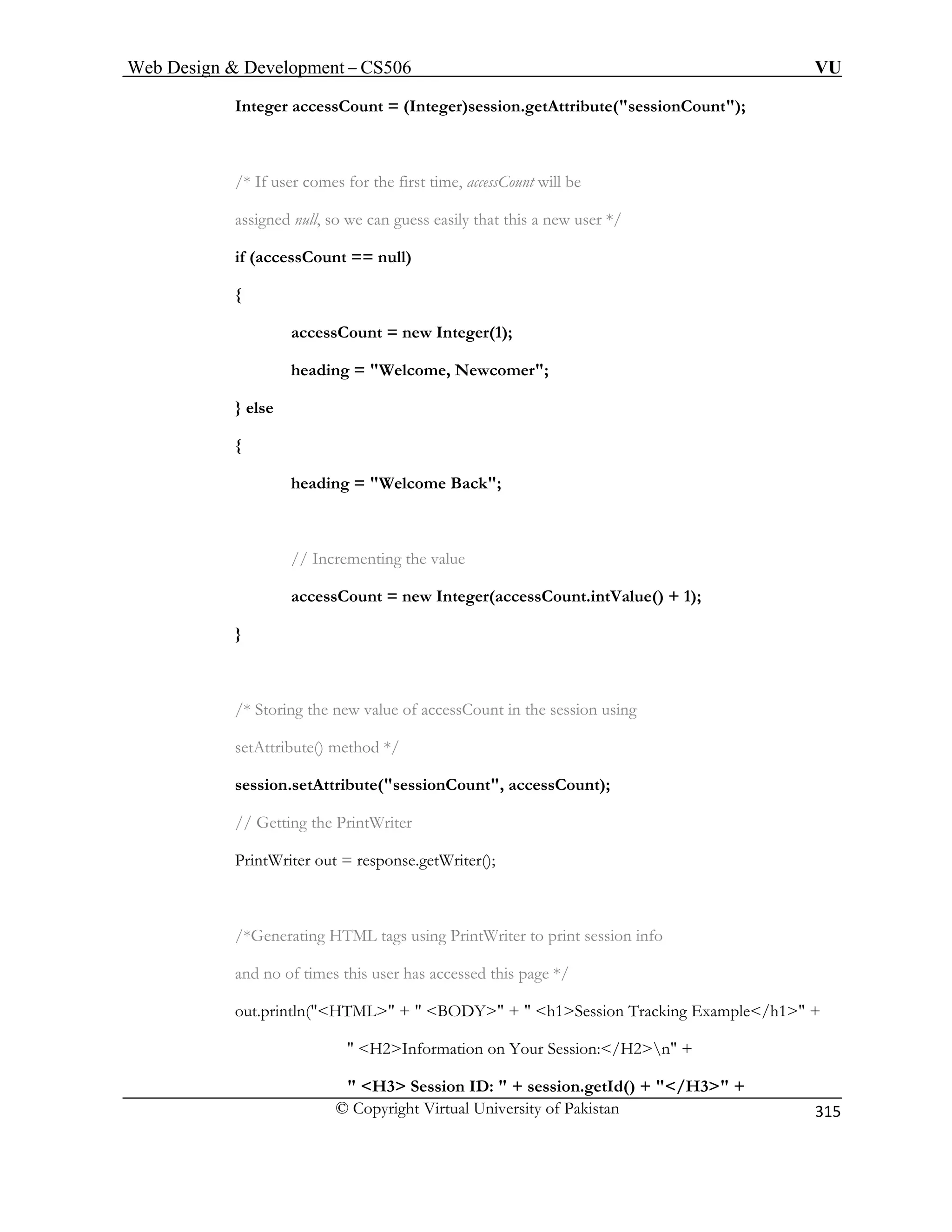
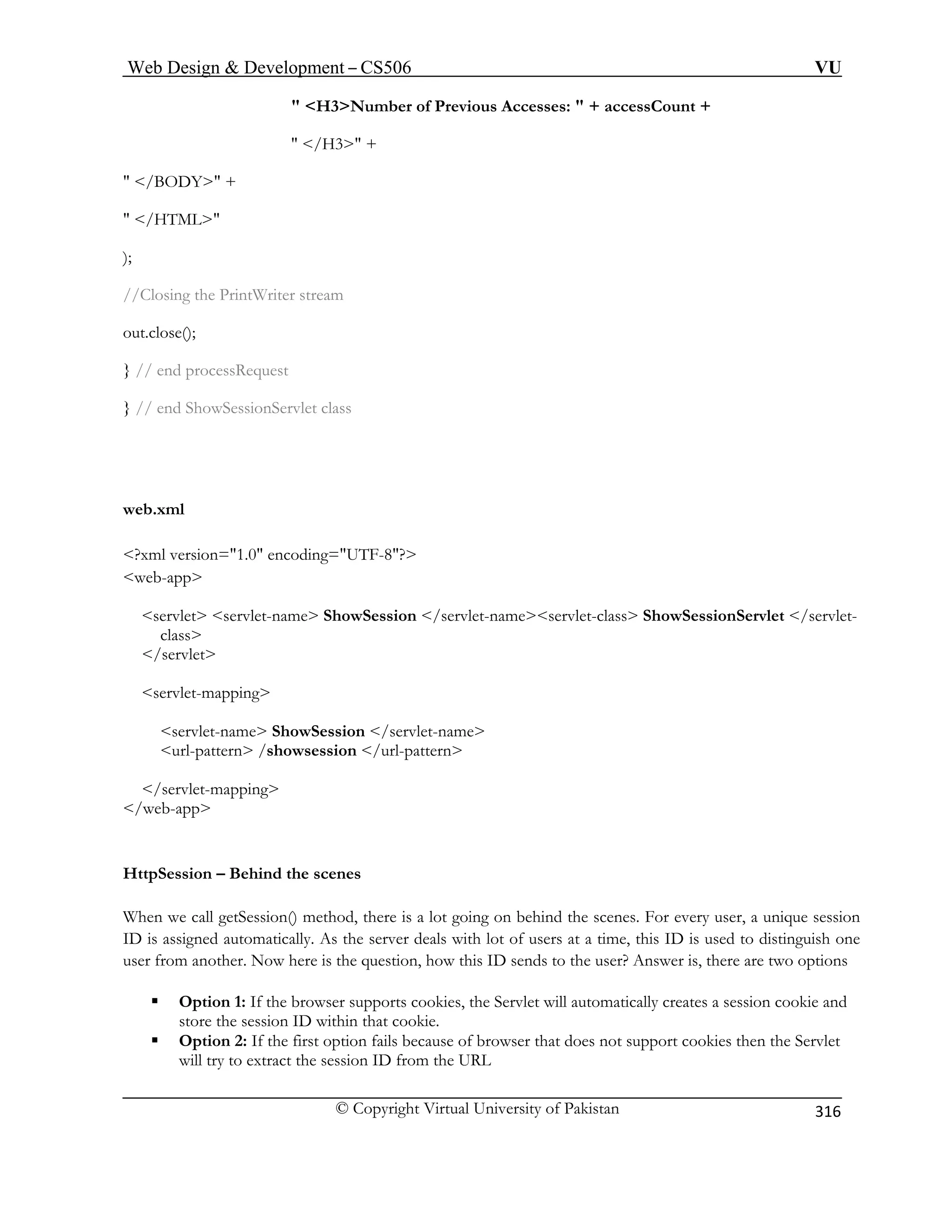
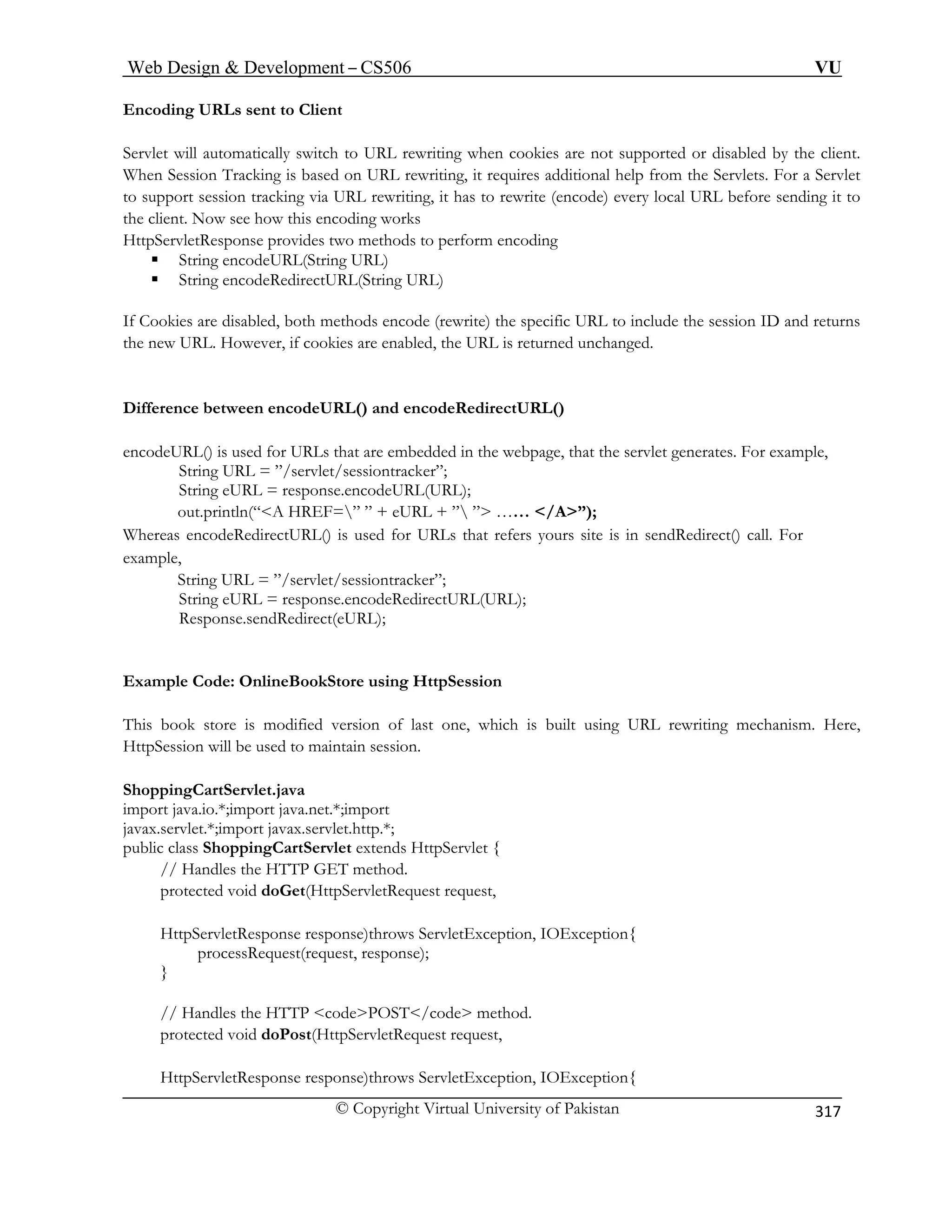
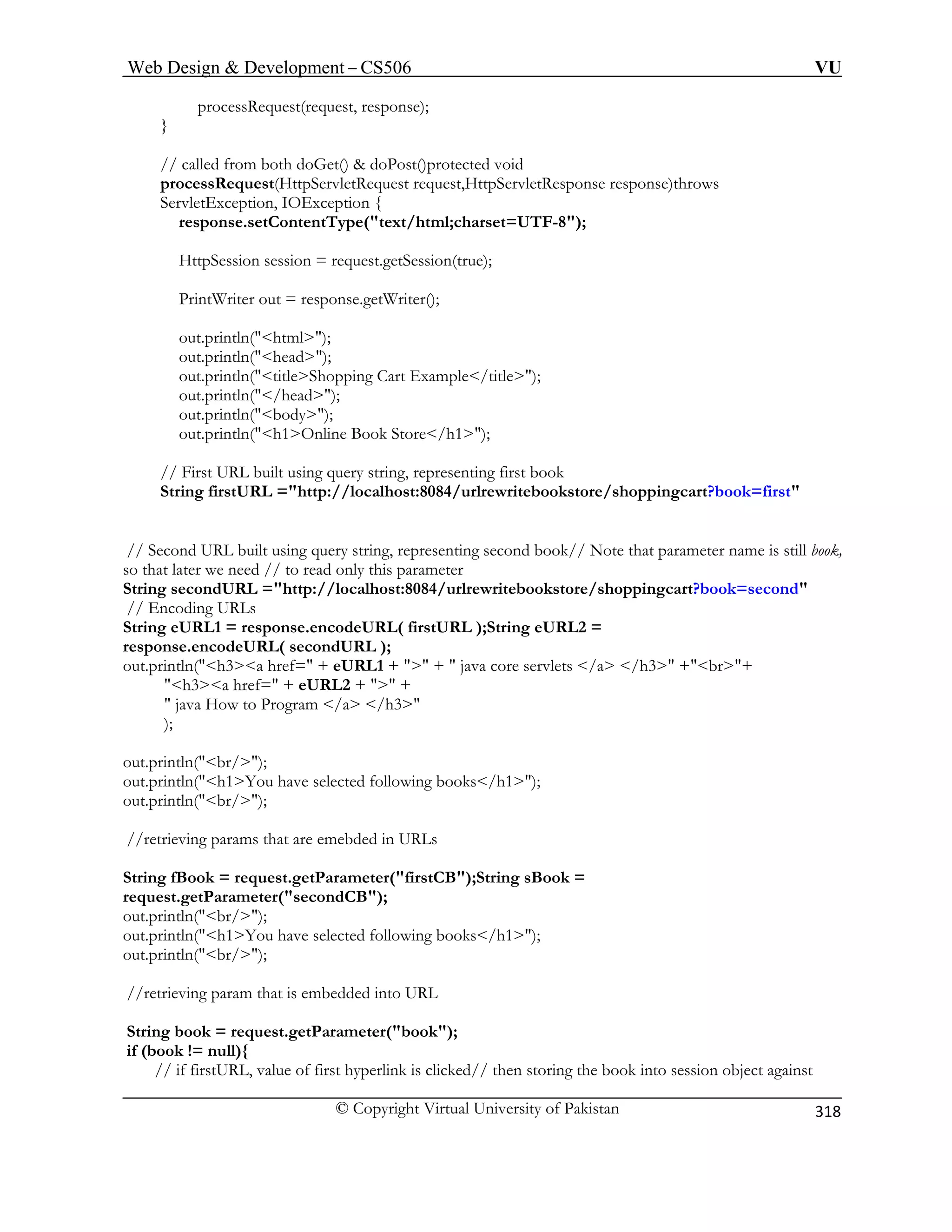
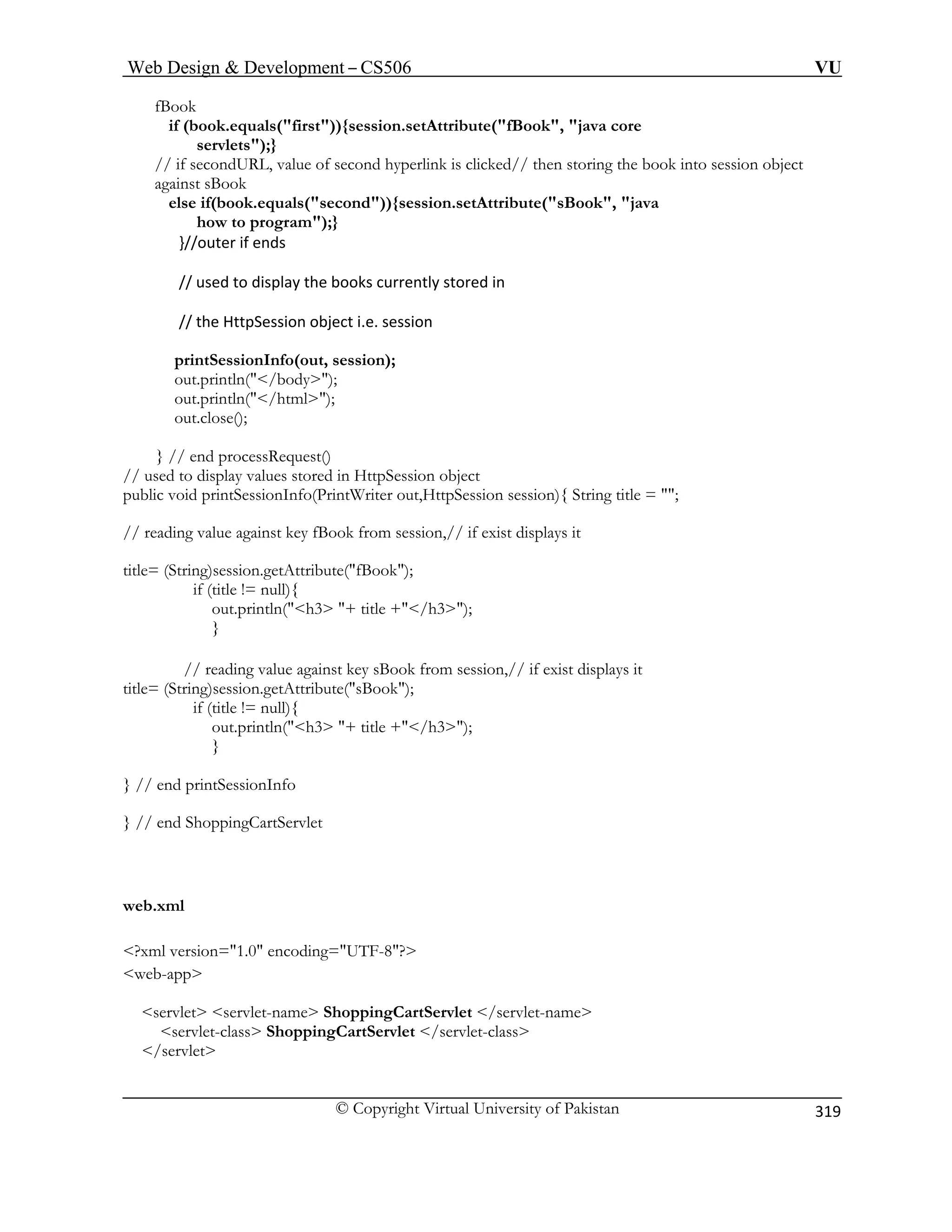
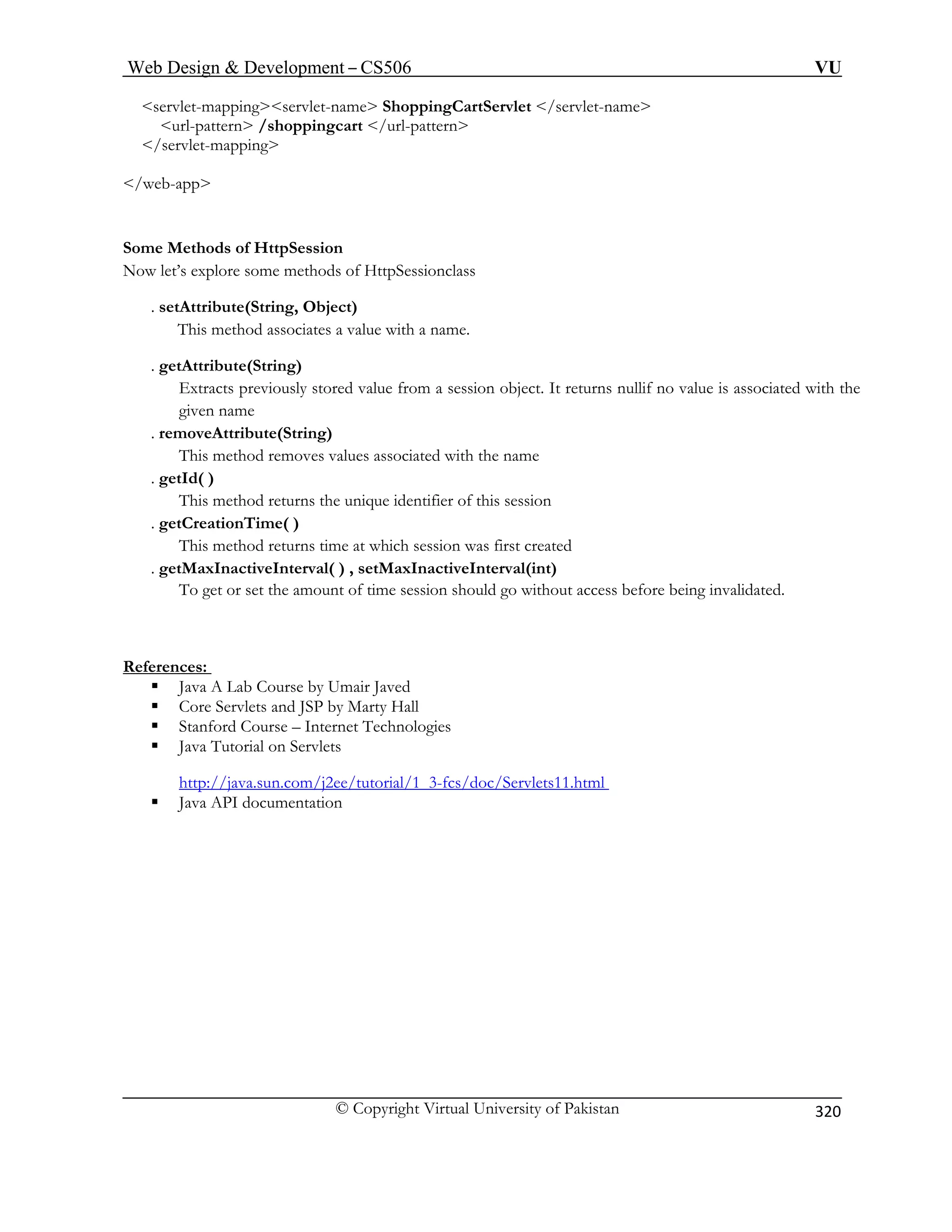
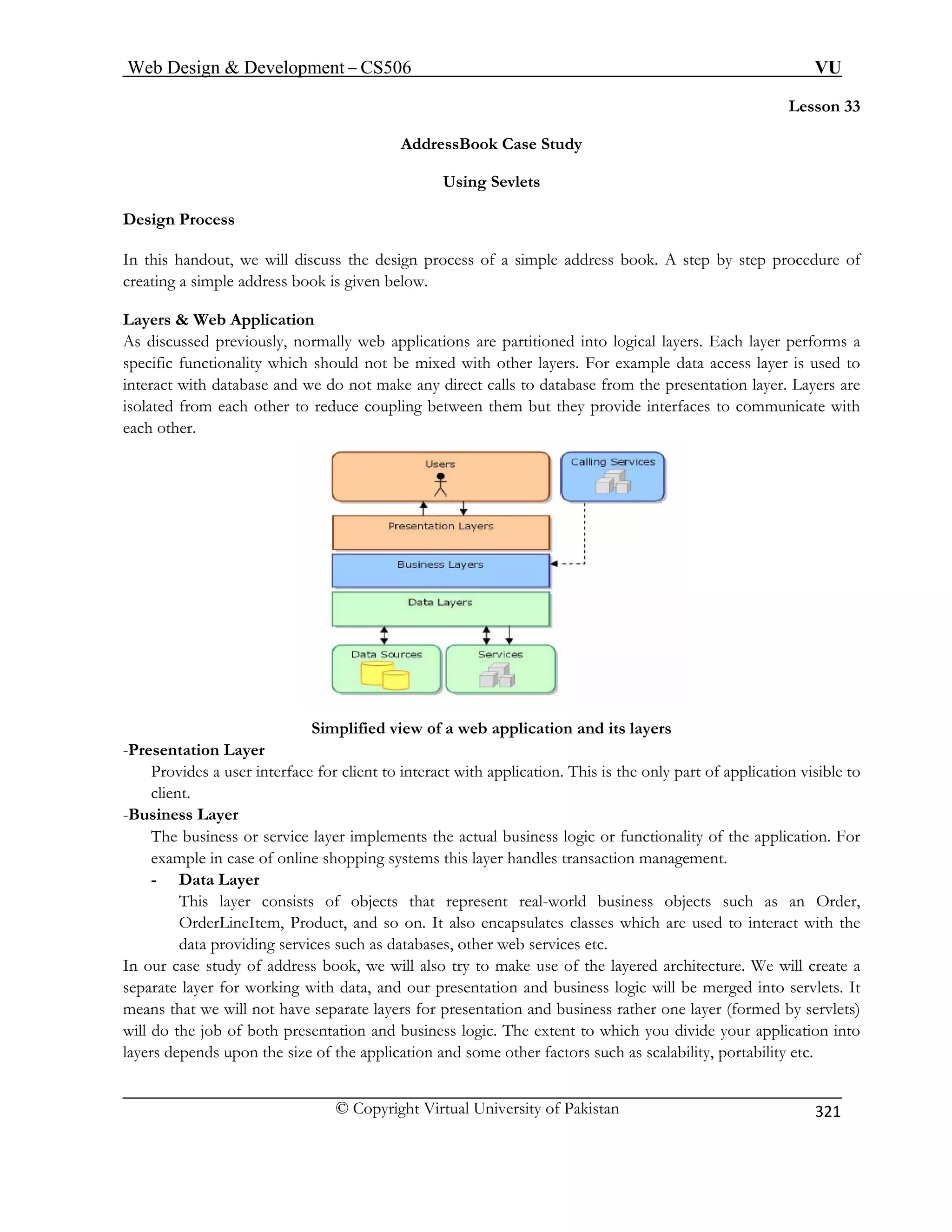
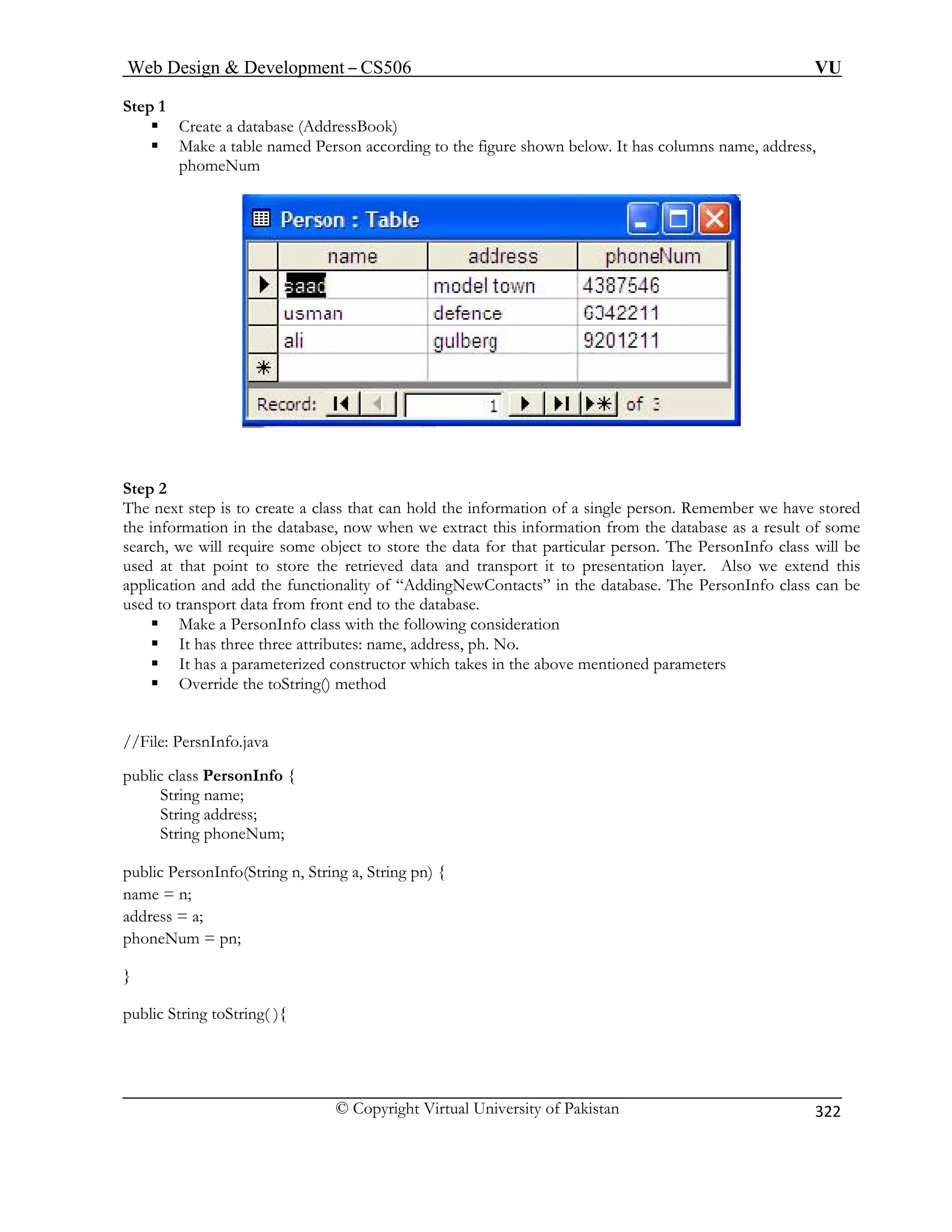
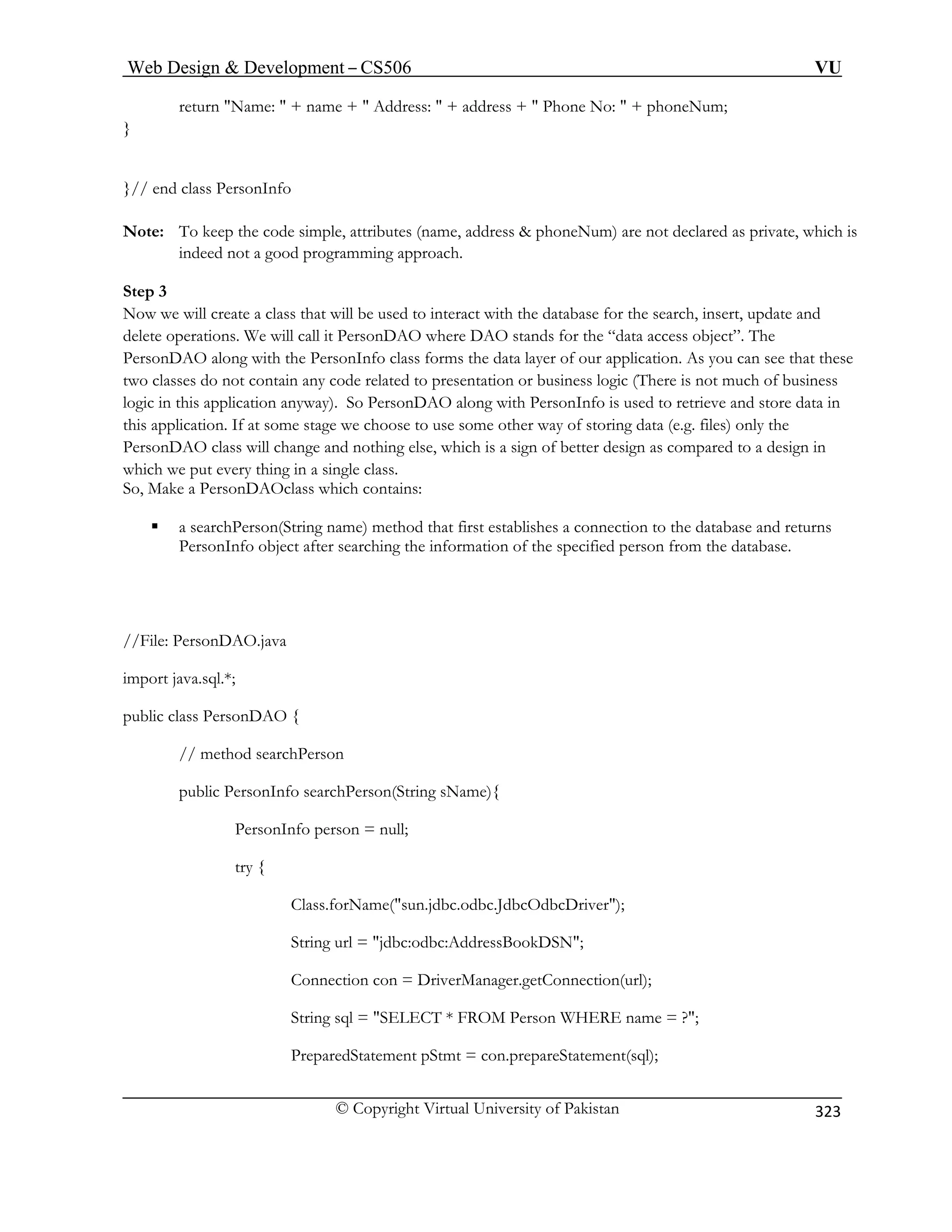
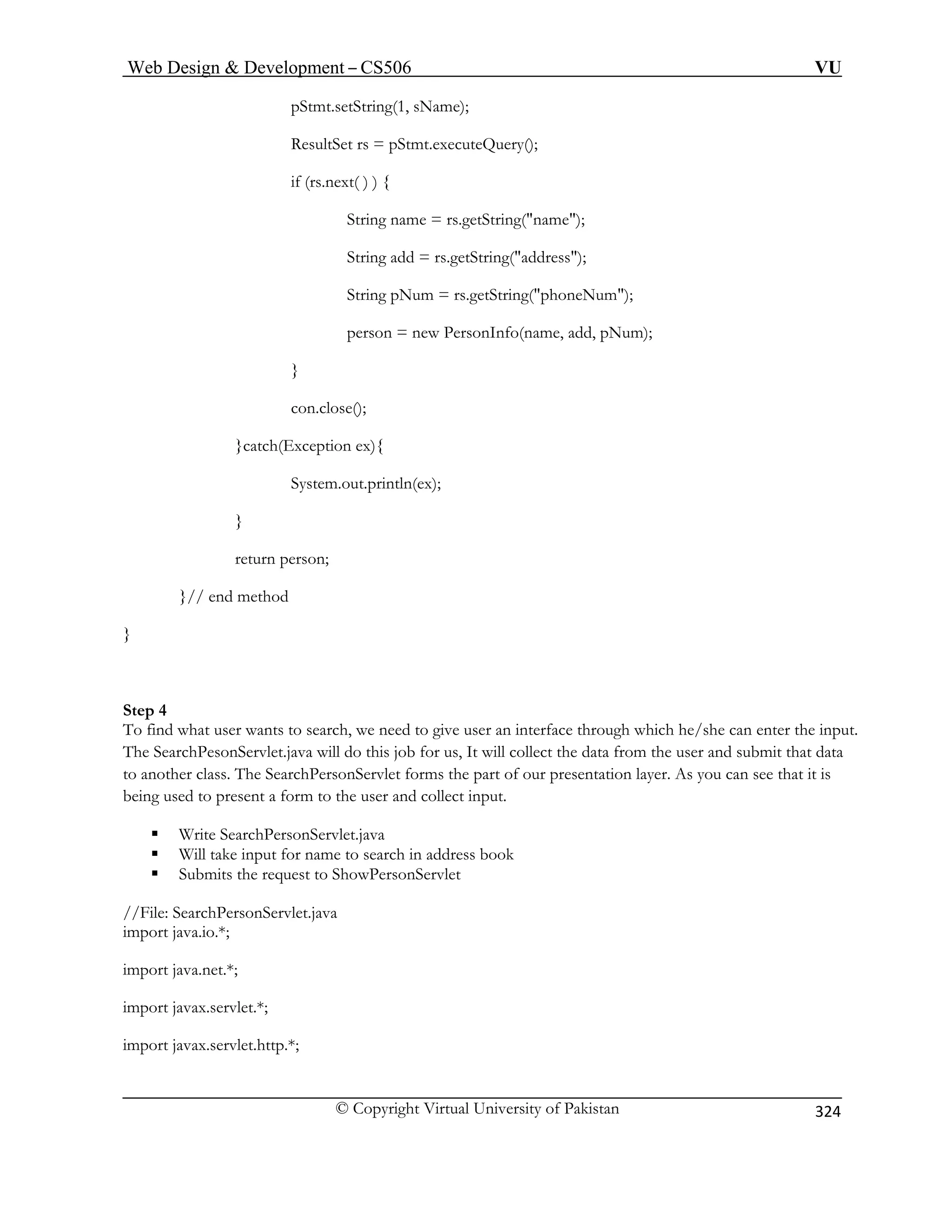
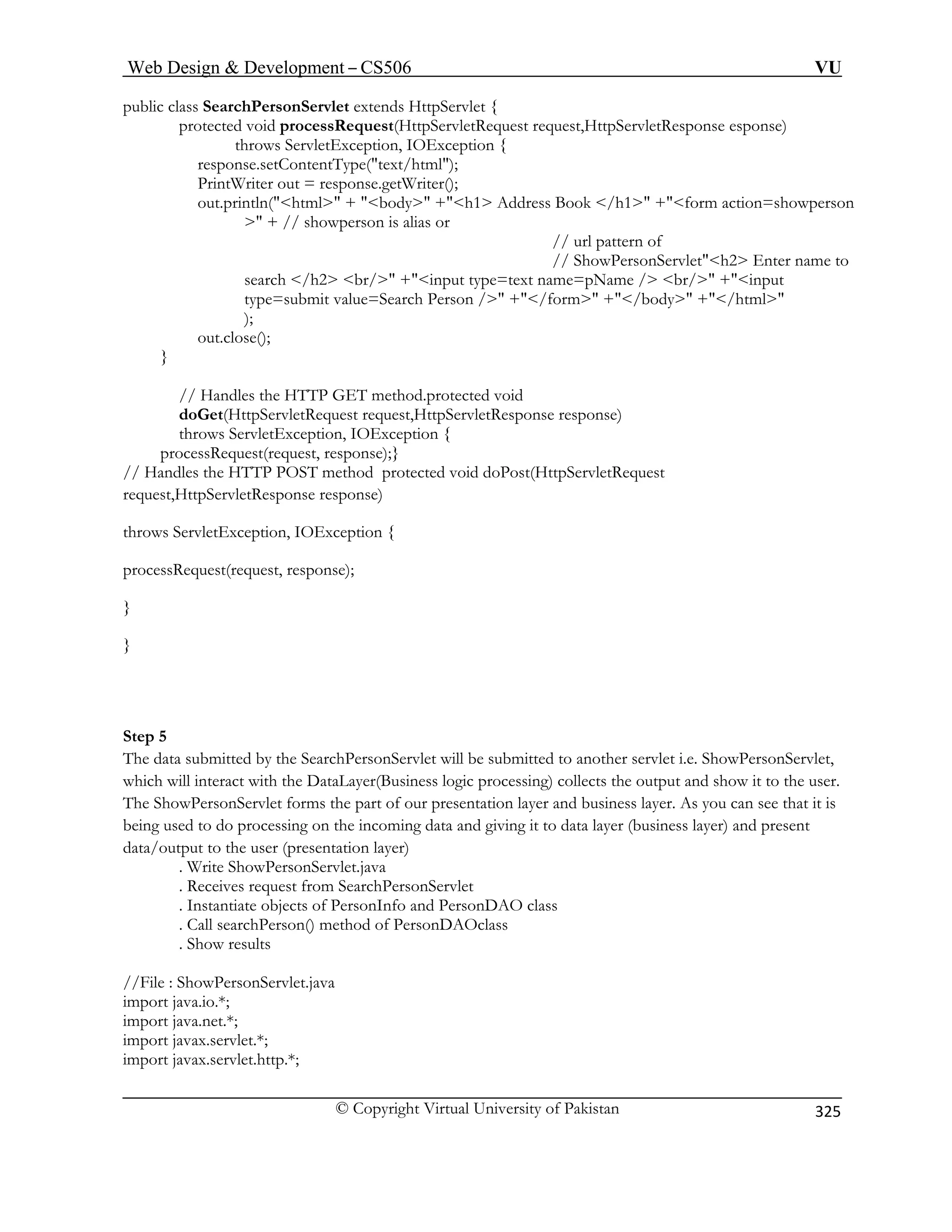
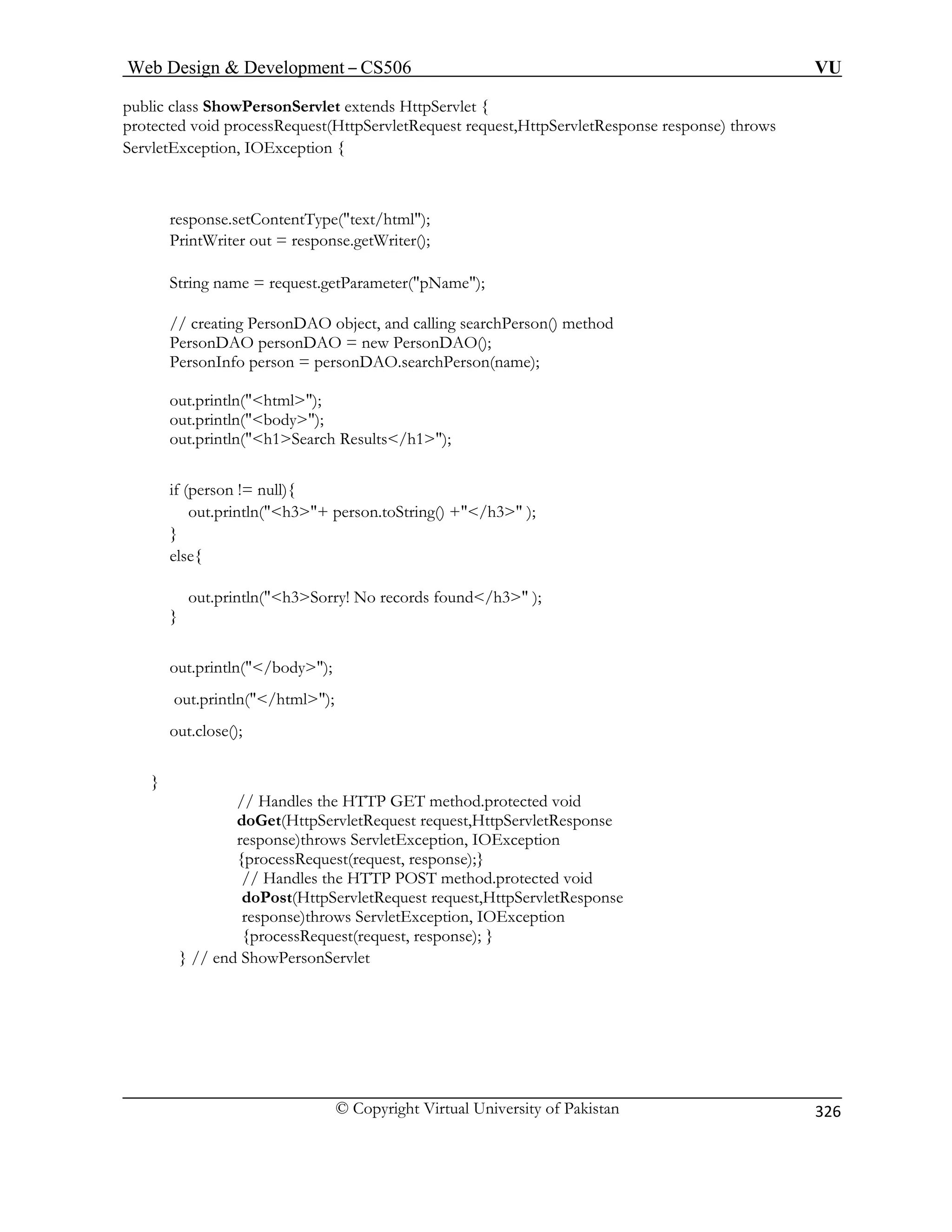

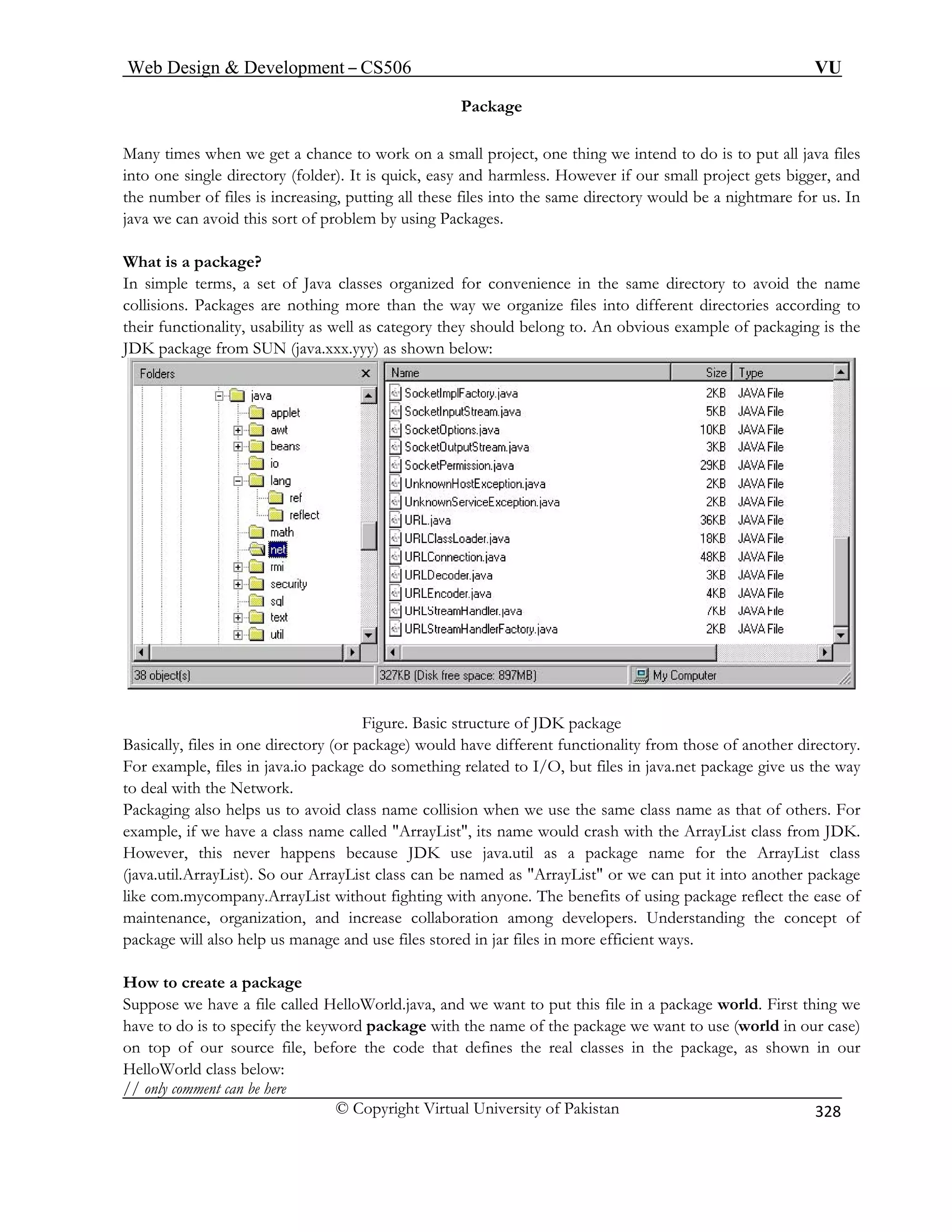
![Web Design Development – CS506 VU
© Copyright Virtual University of Pakistan
329
package world;
System.out.println(Hello World);}
}
One thi ate nested subdirectories to represent
package hierarchy of the class. In our case, we have the world package, which requires only one directory. So,
we create a directory (folder) world and put it.
public class HelloWorld { public static void main(String[] args) {
ng you must do after creating a package for the class is to cre
our HelloWorld.java into
Figure: HelloWorld in world package (C:worldHelloWorld.java)
package
package can be imported. For example,
// we can use any public classes inside world package
import world.*;
// import all public classes from java.util package
import java.util.*;
// import only ArrayList class (not all classes in
// java.util package)
rt java.util.ArrayList;
ote: hile w folders (packages) and to place classes at right
cation Many orms this job on your behalf.
How to use
By using import keyword, all class files reside only in that
impoNWorking with IDEs, You don’t have to createlos.IDEs (like netBeans® 4.1) perf](https://image.slidesharecdn.com/webdesignanddevelopment-cs506handouts-141110100145-conversion-gate01/75/Web-design-and-development-cs506-handouts-329-2048.jpg)
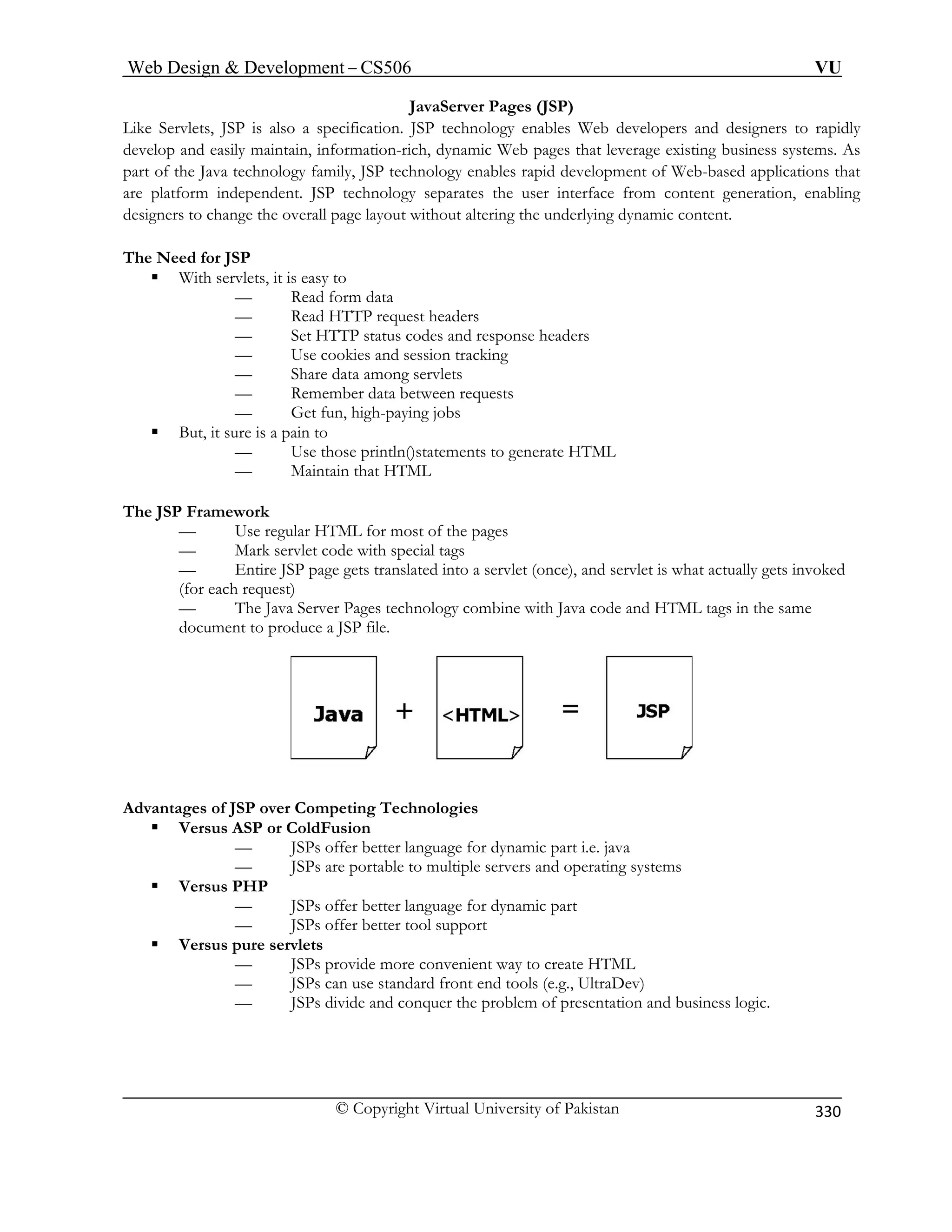
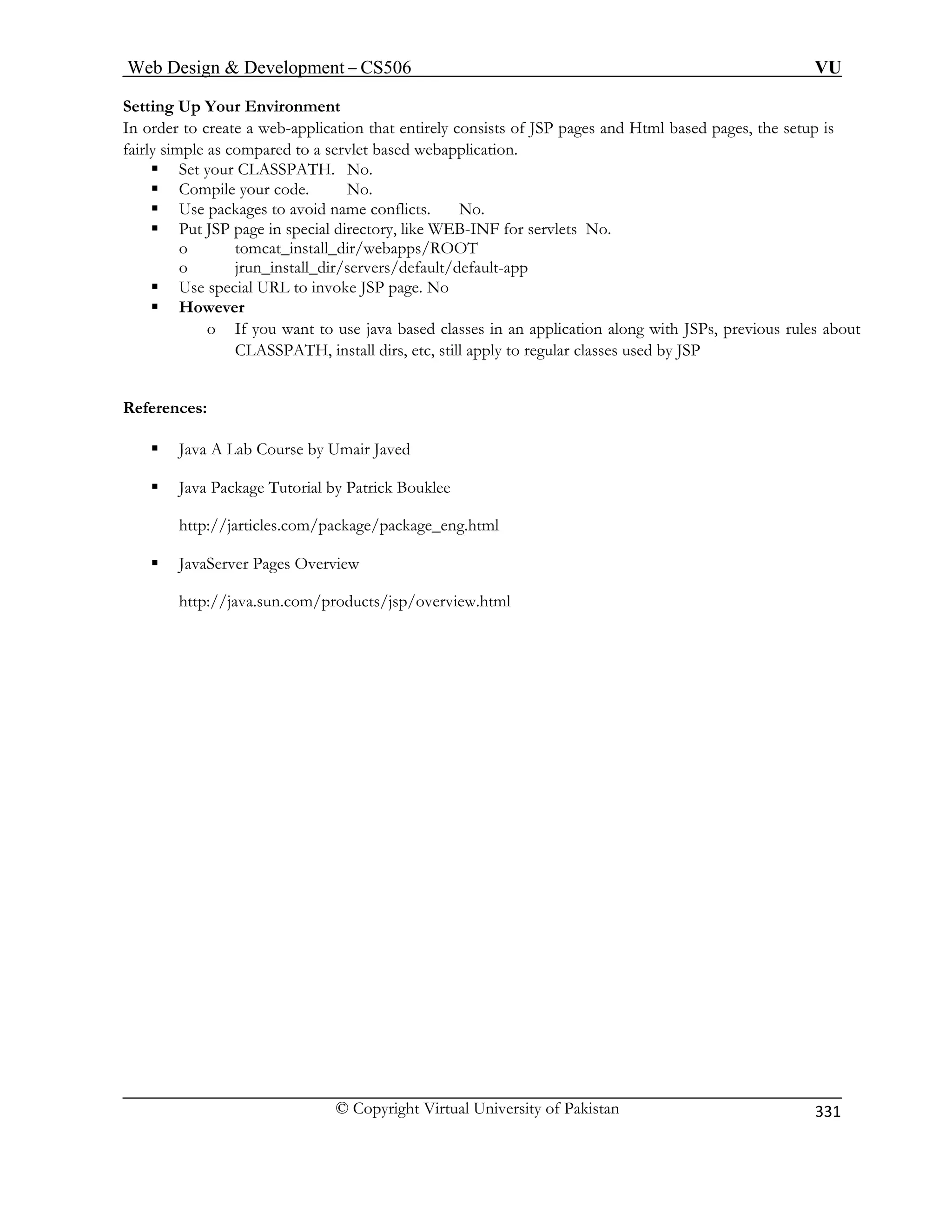
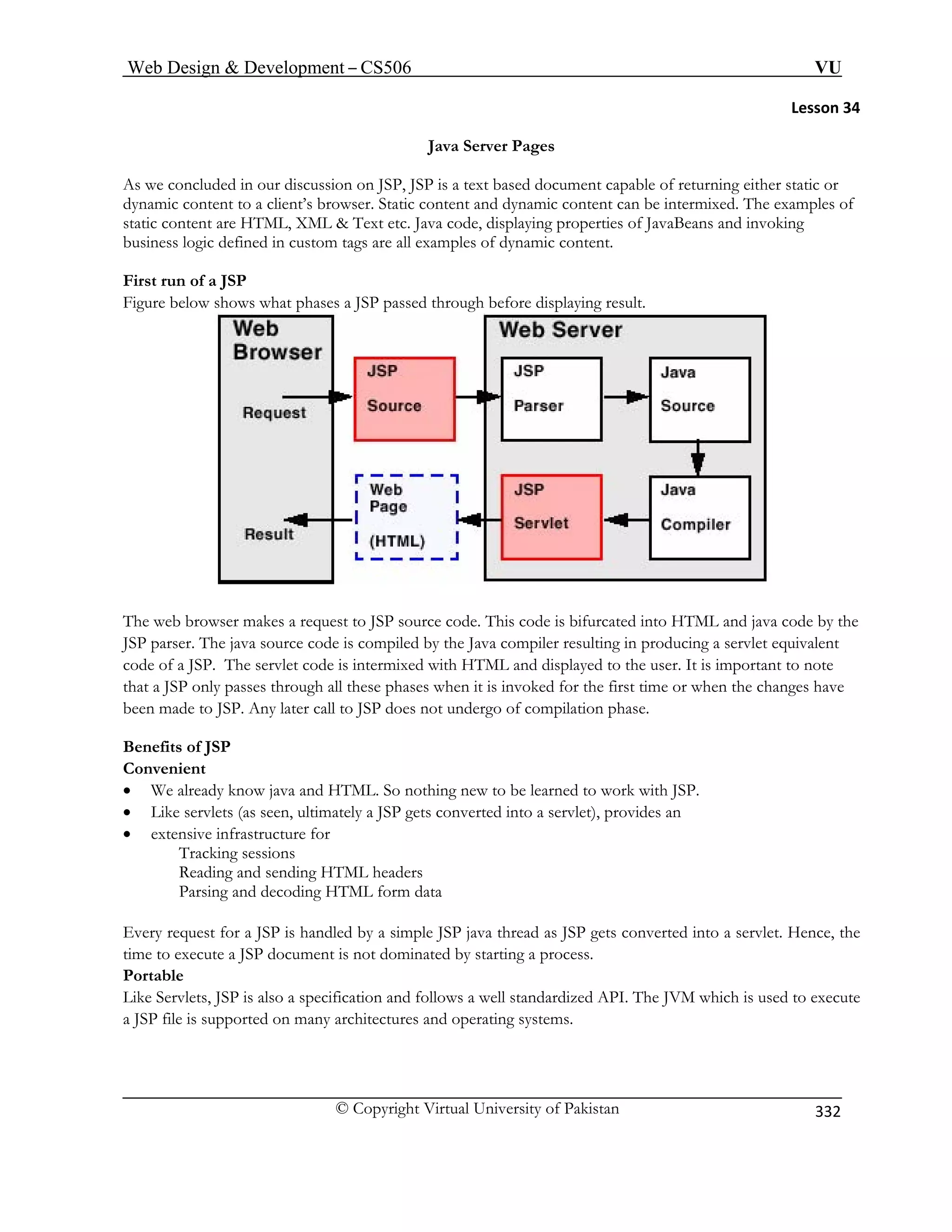
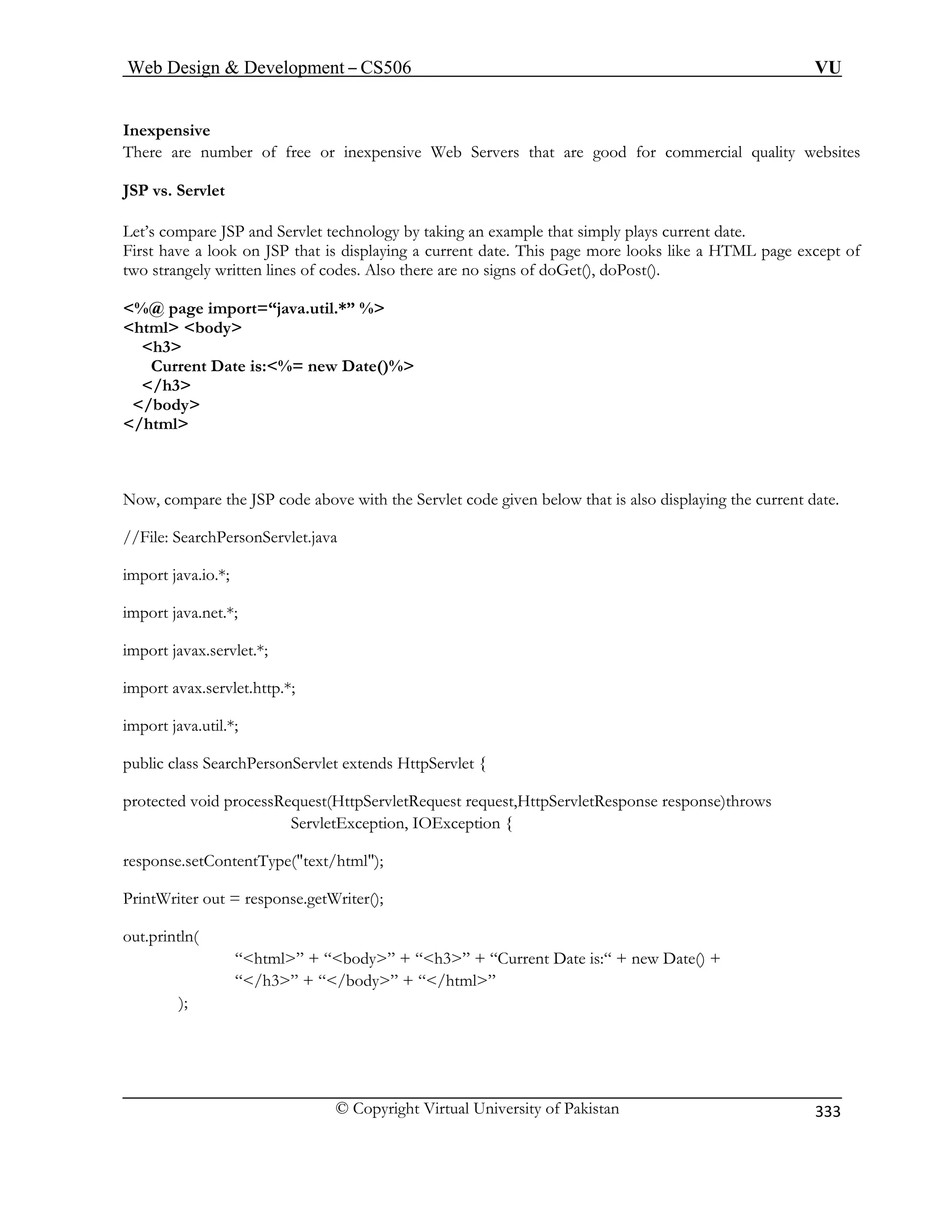
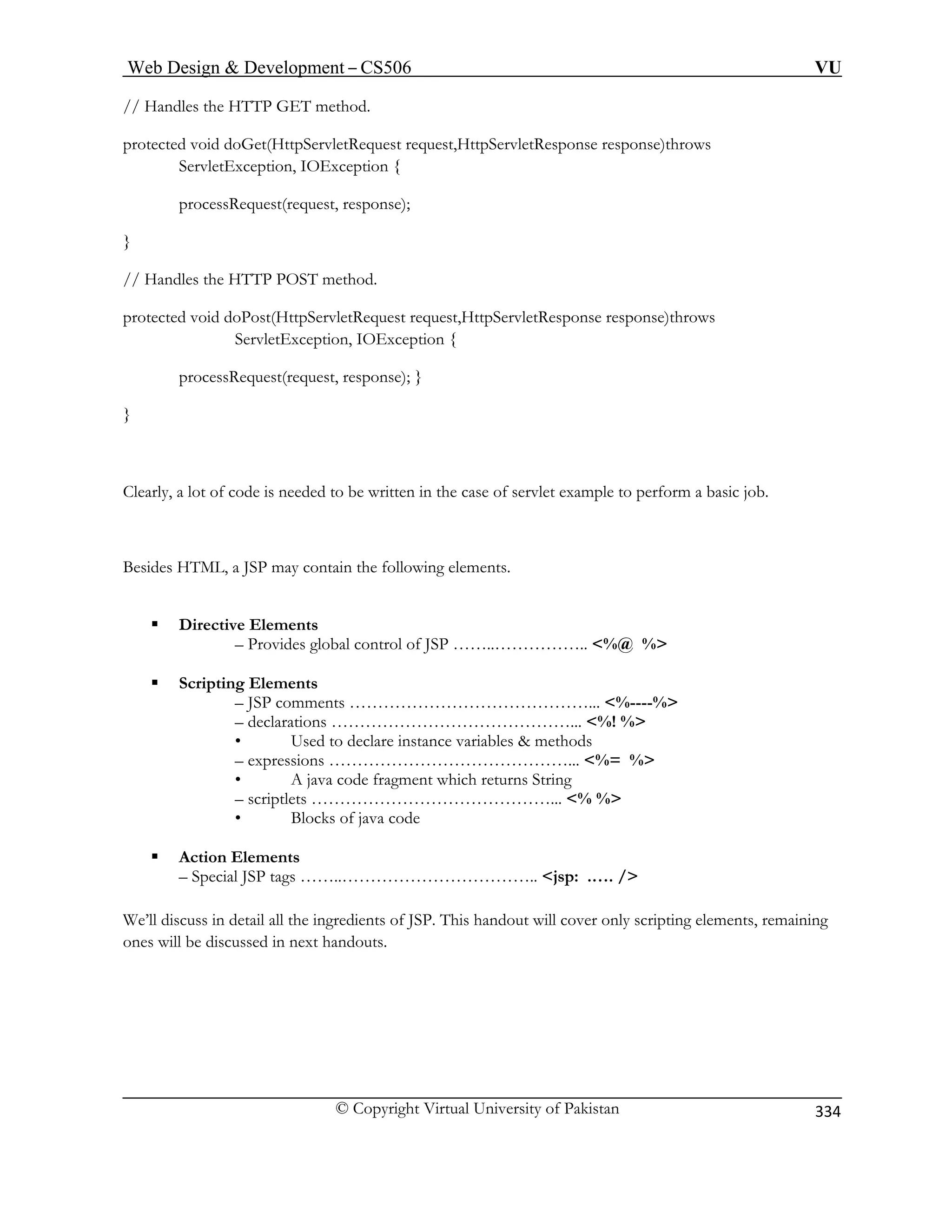
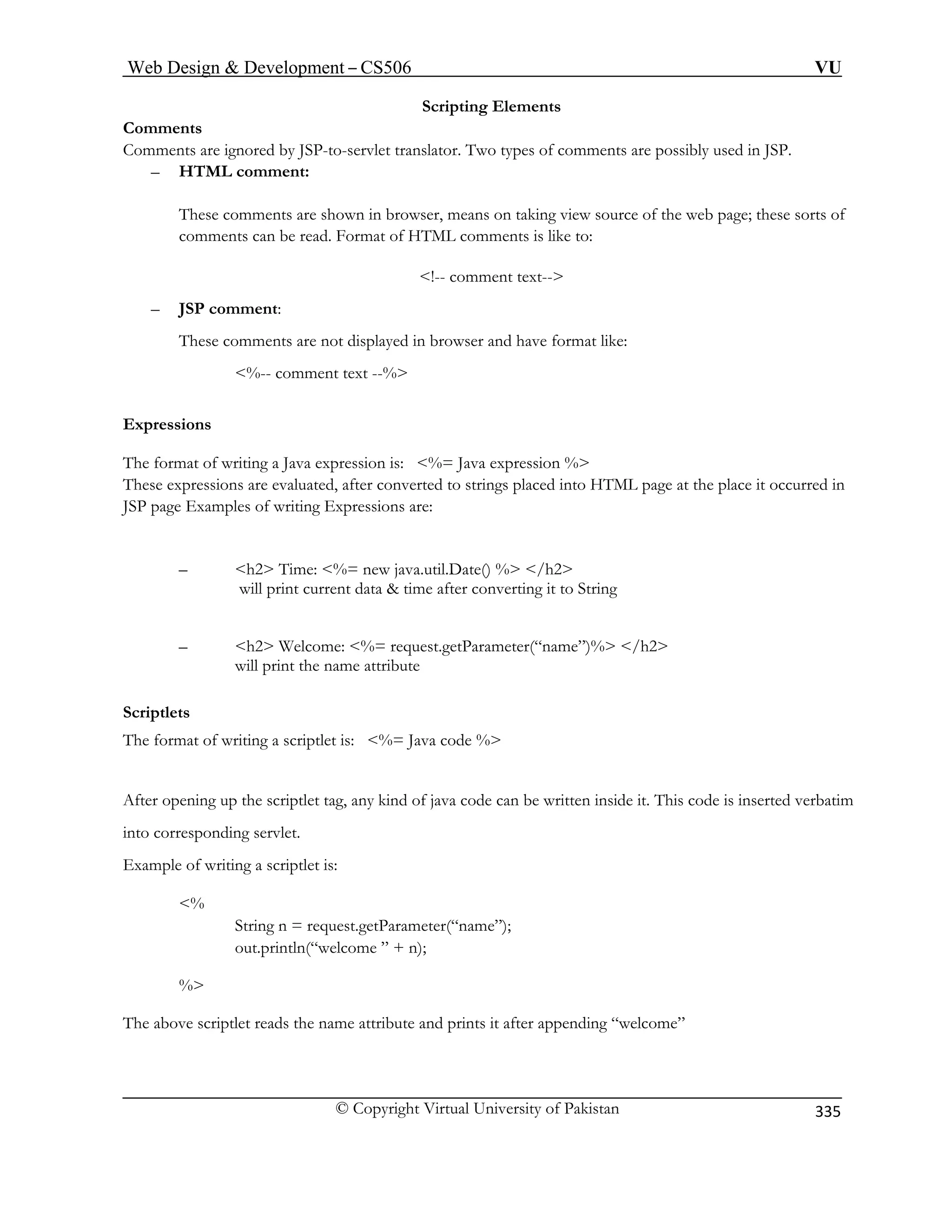
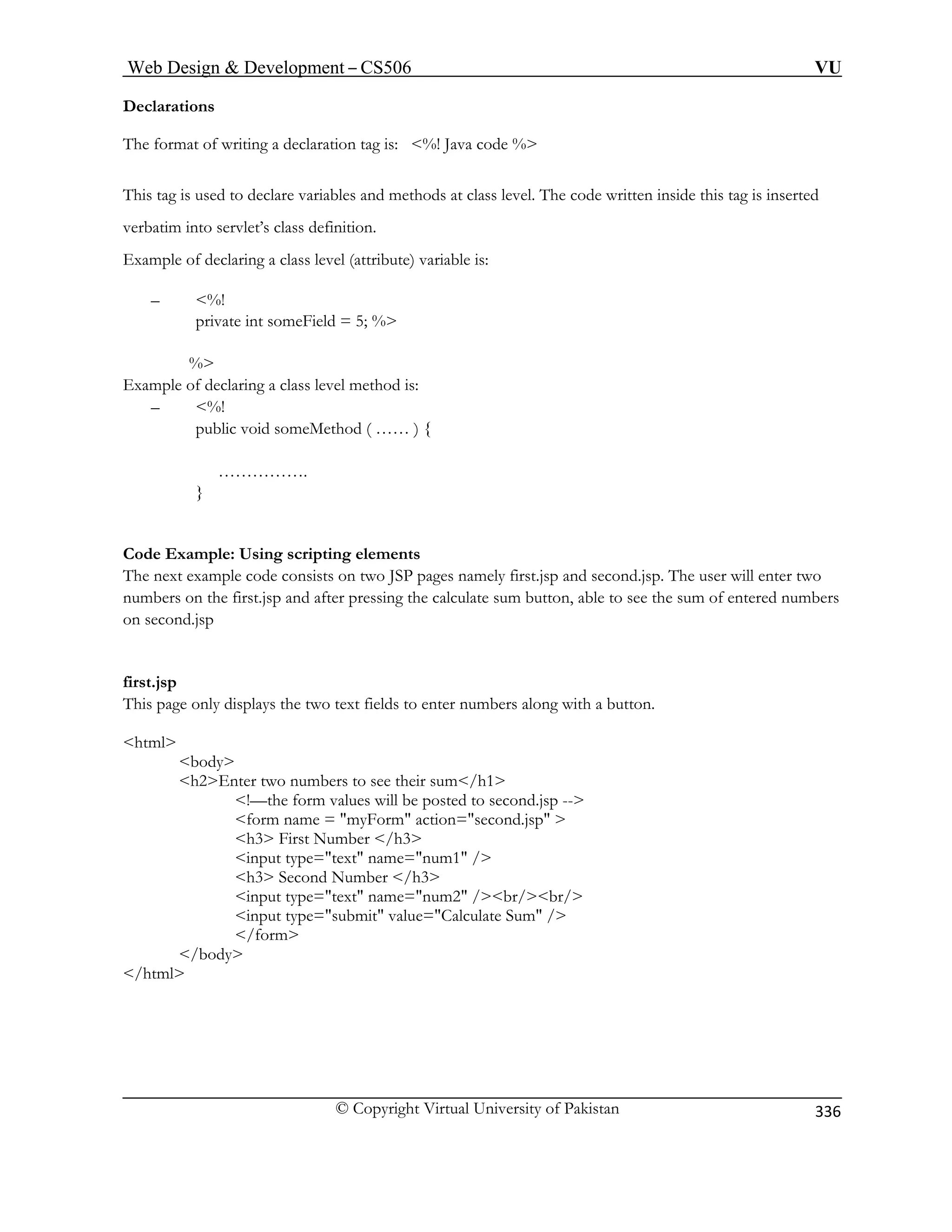
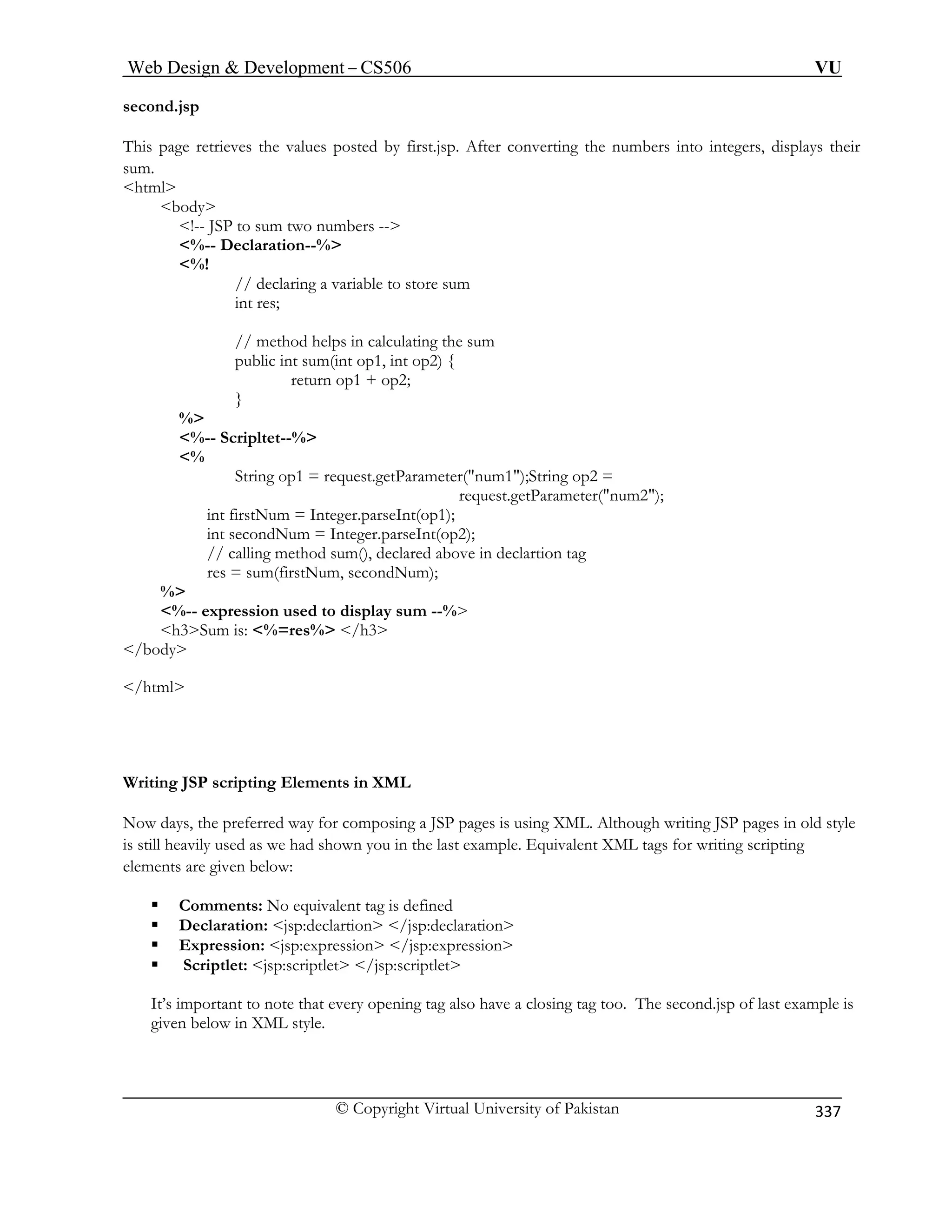
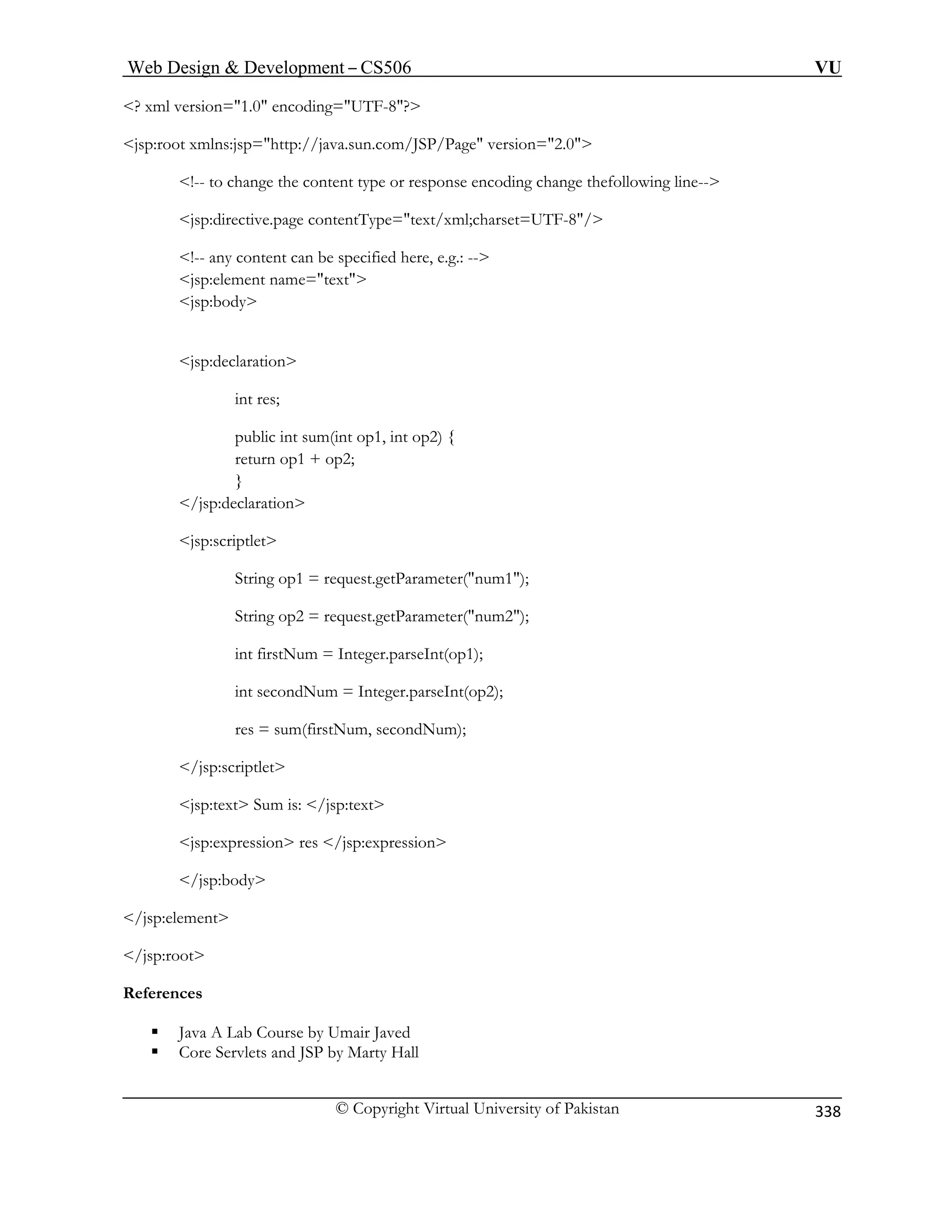
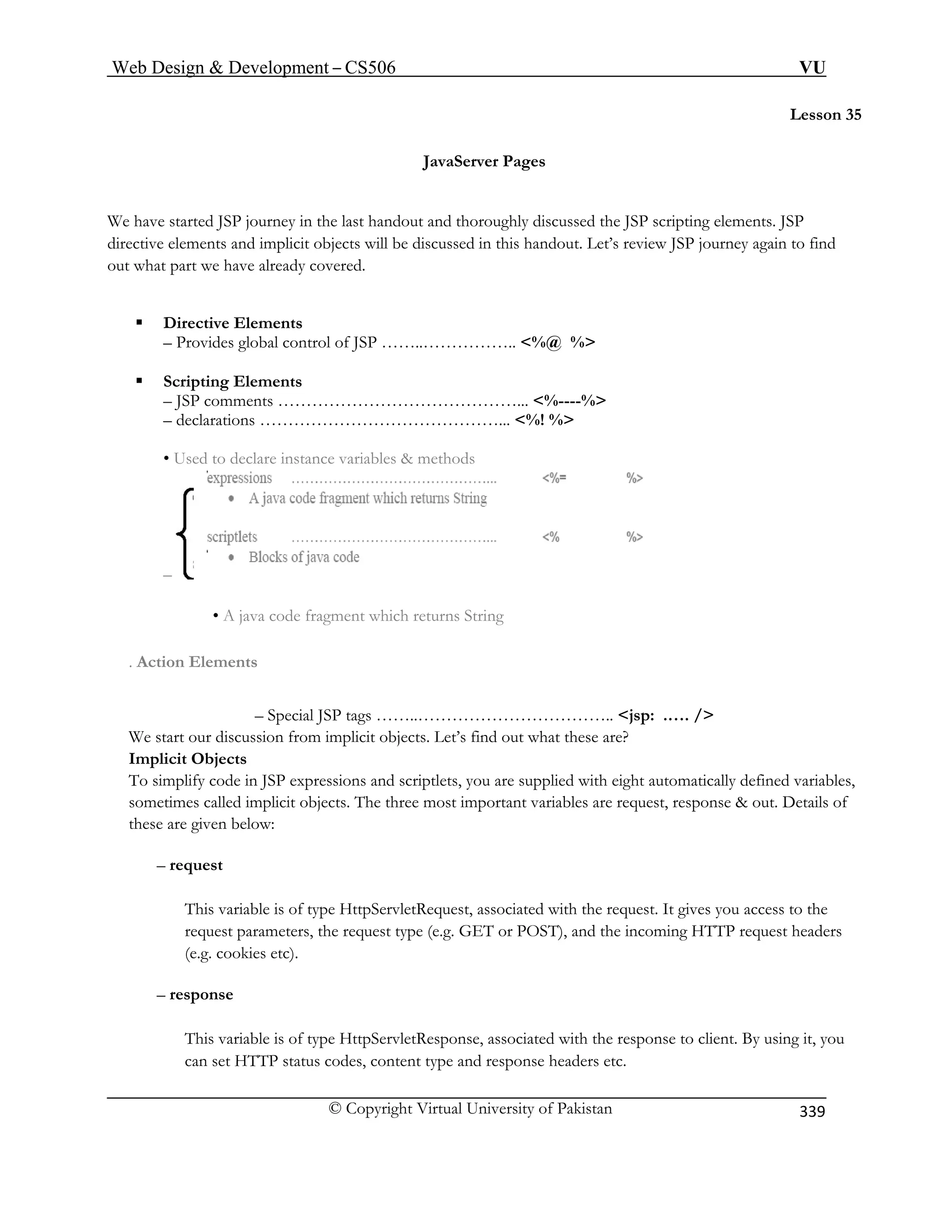
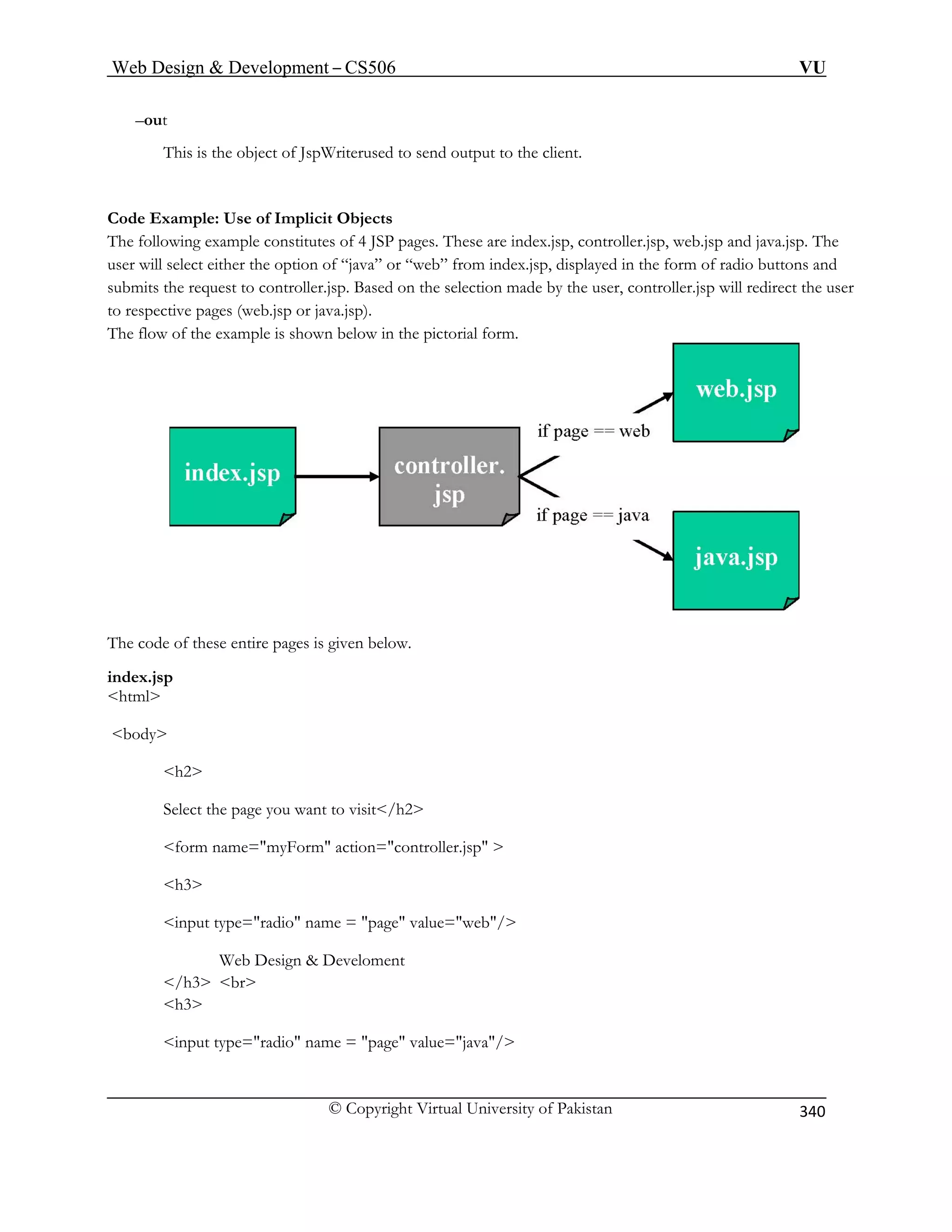
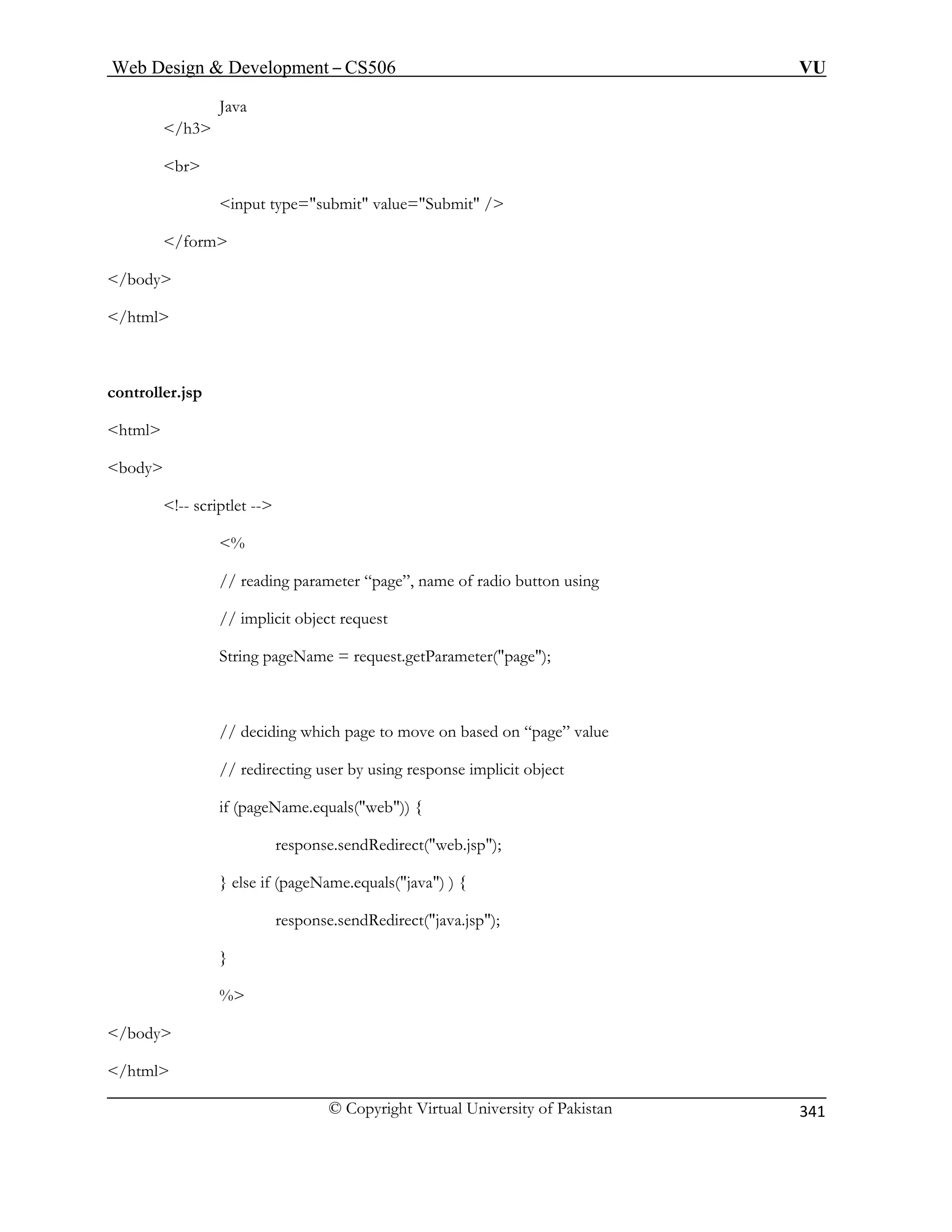
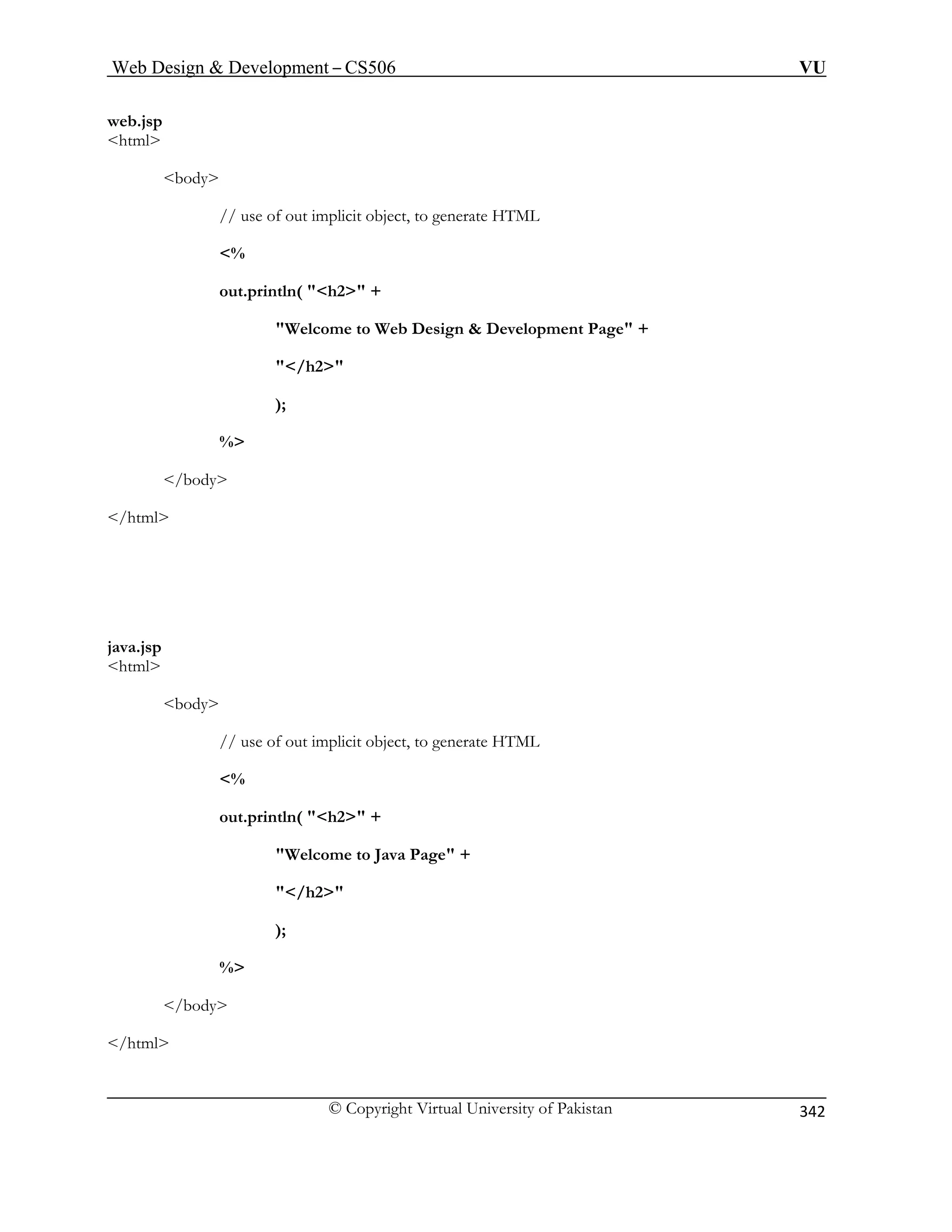
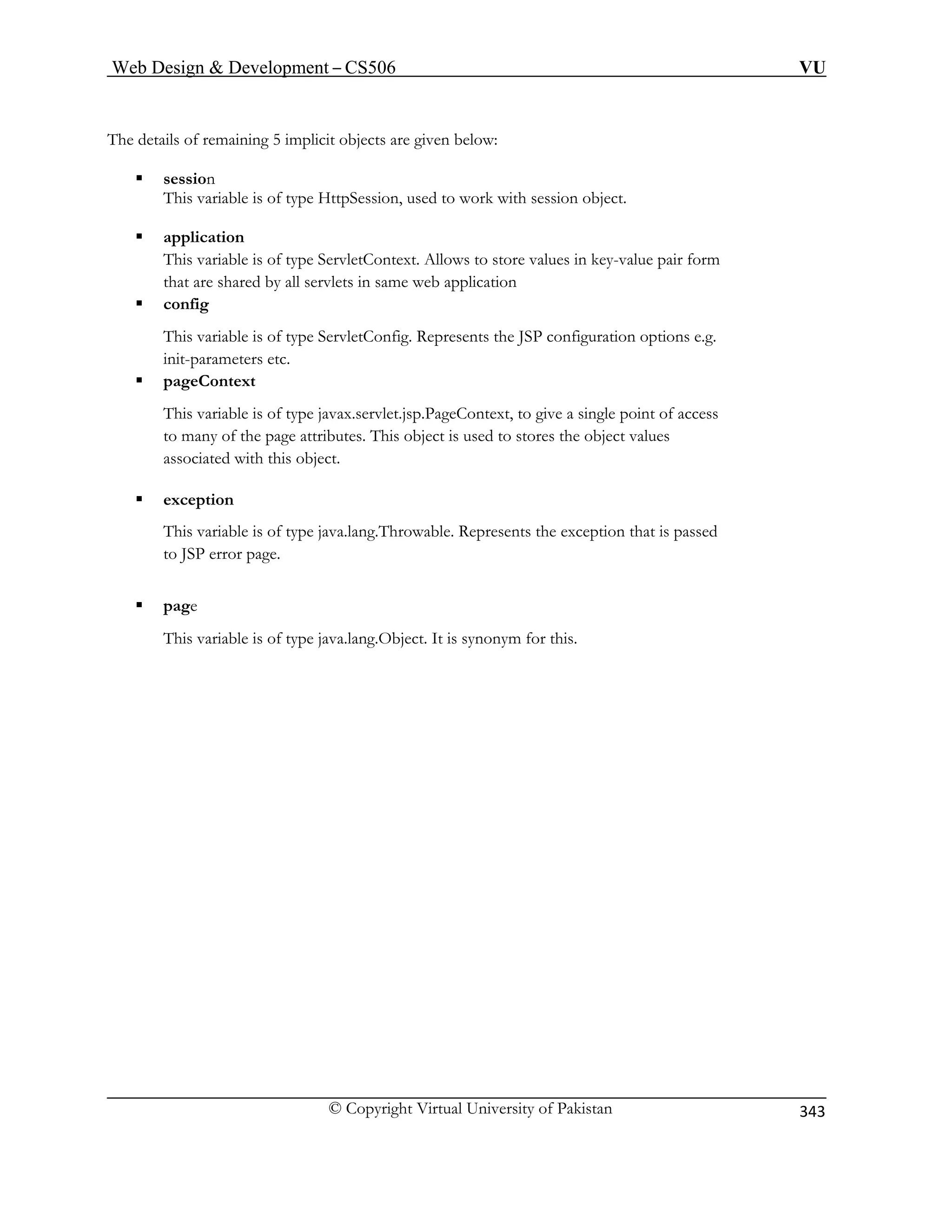
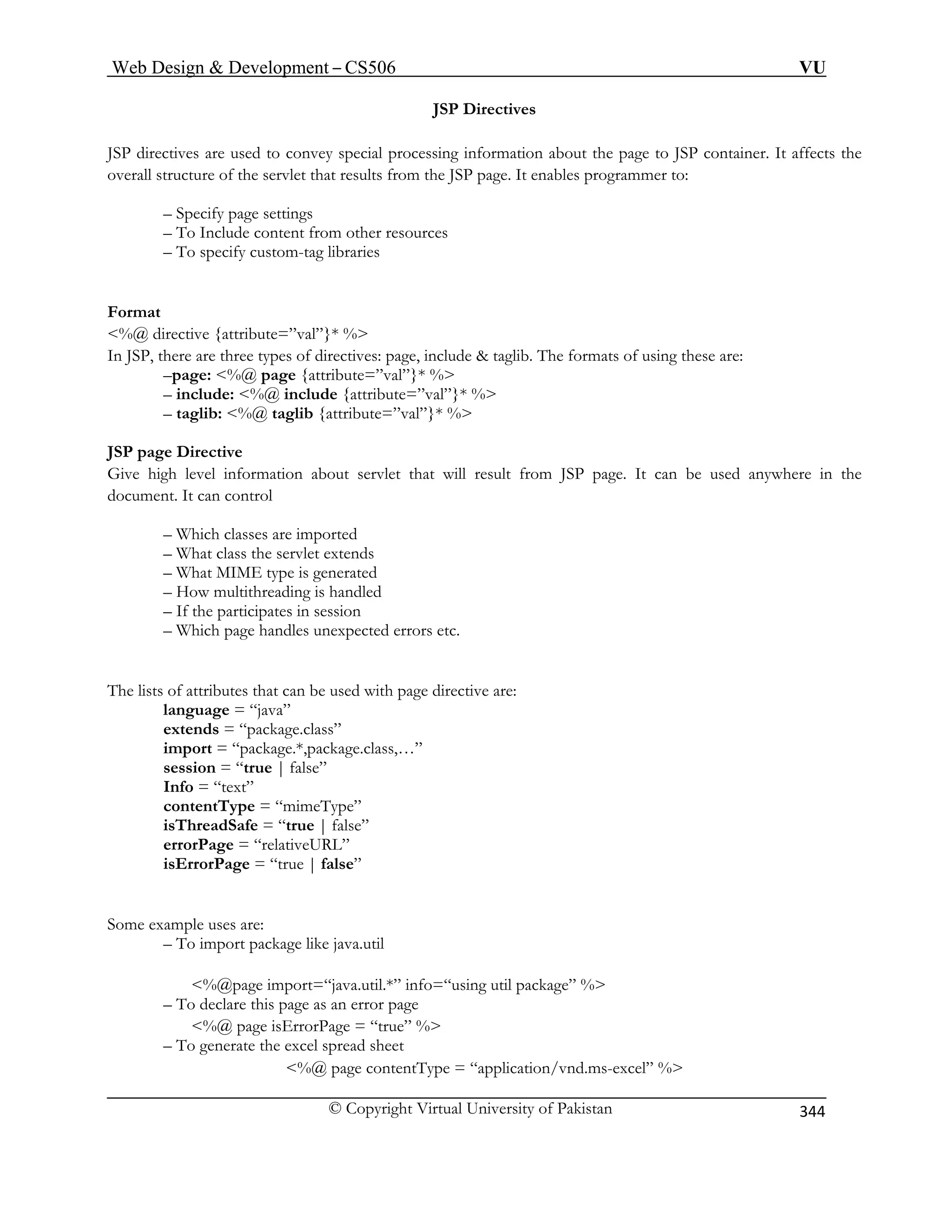
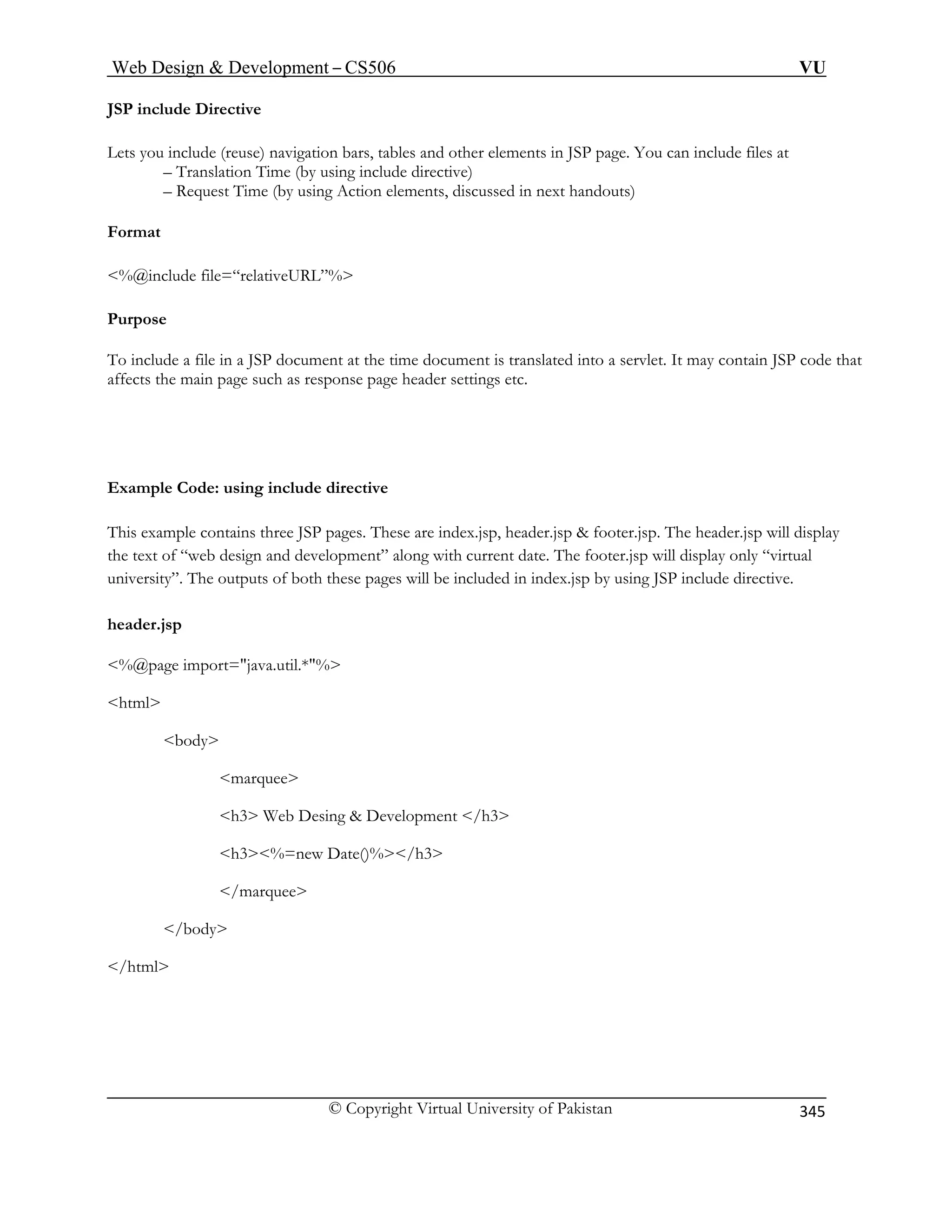
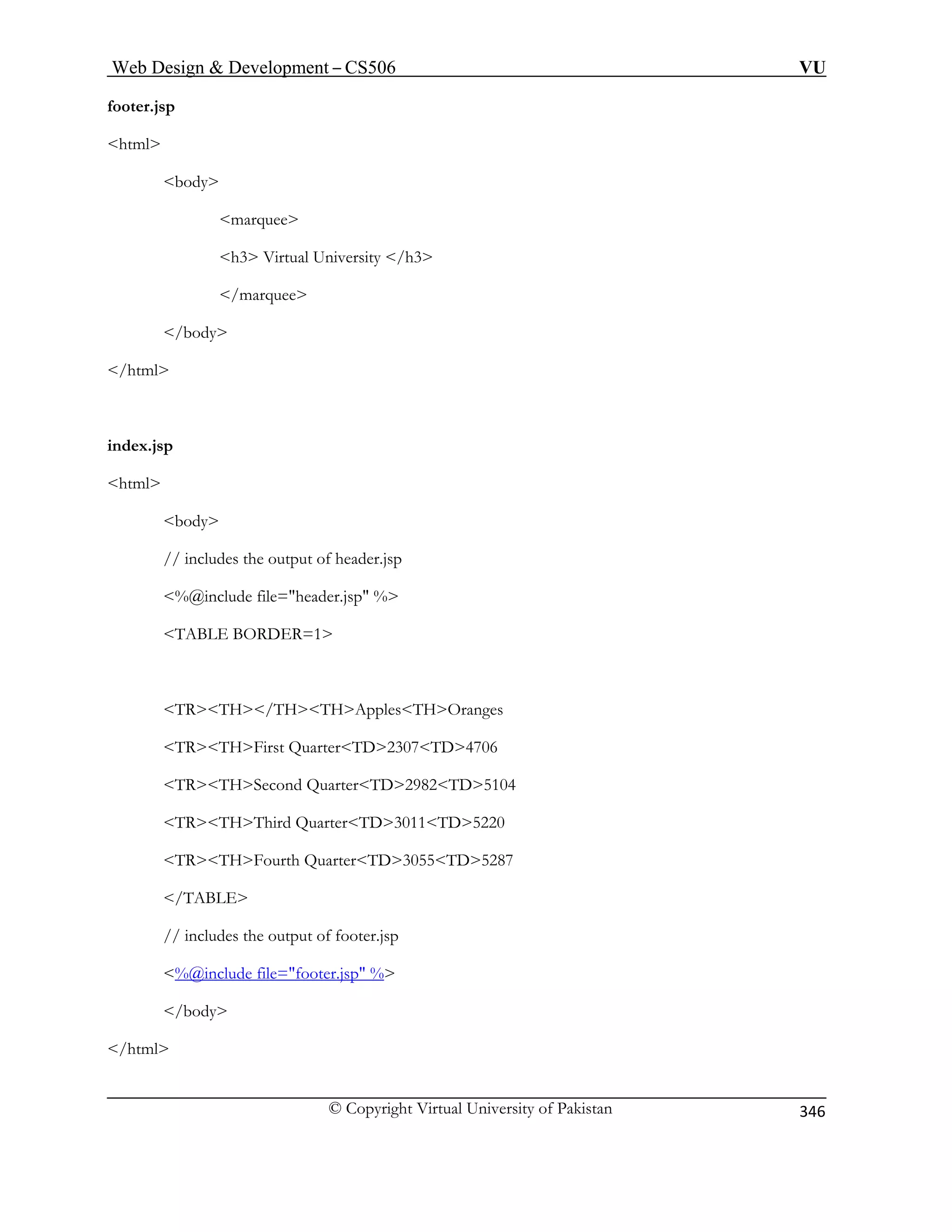
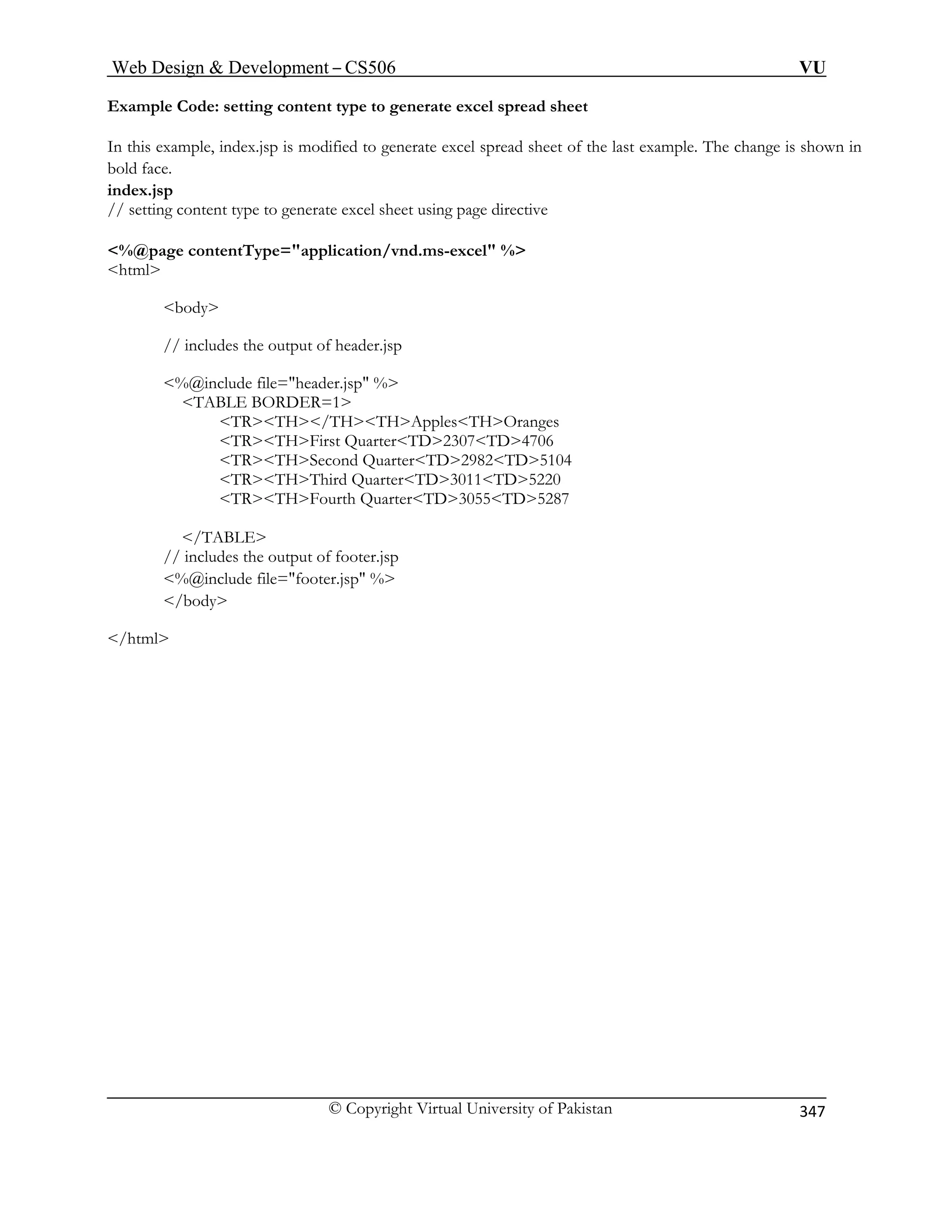
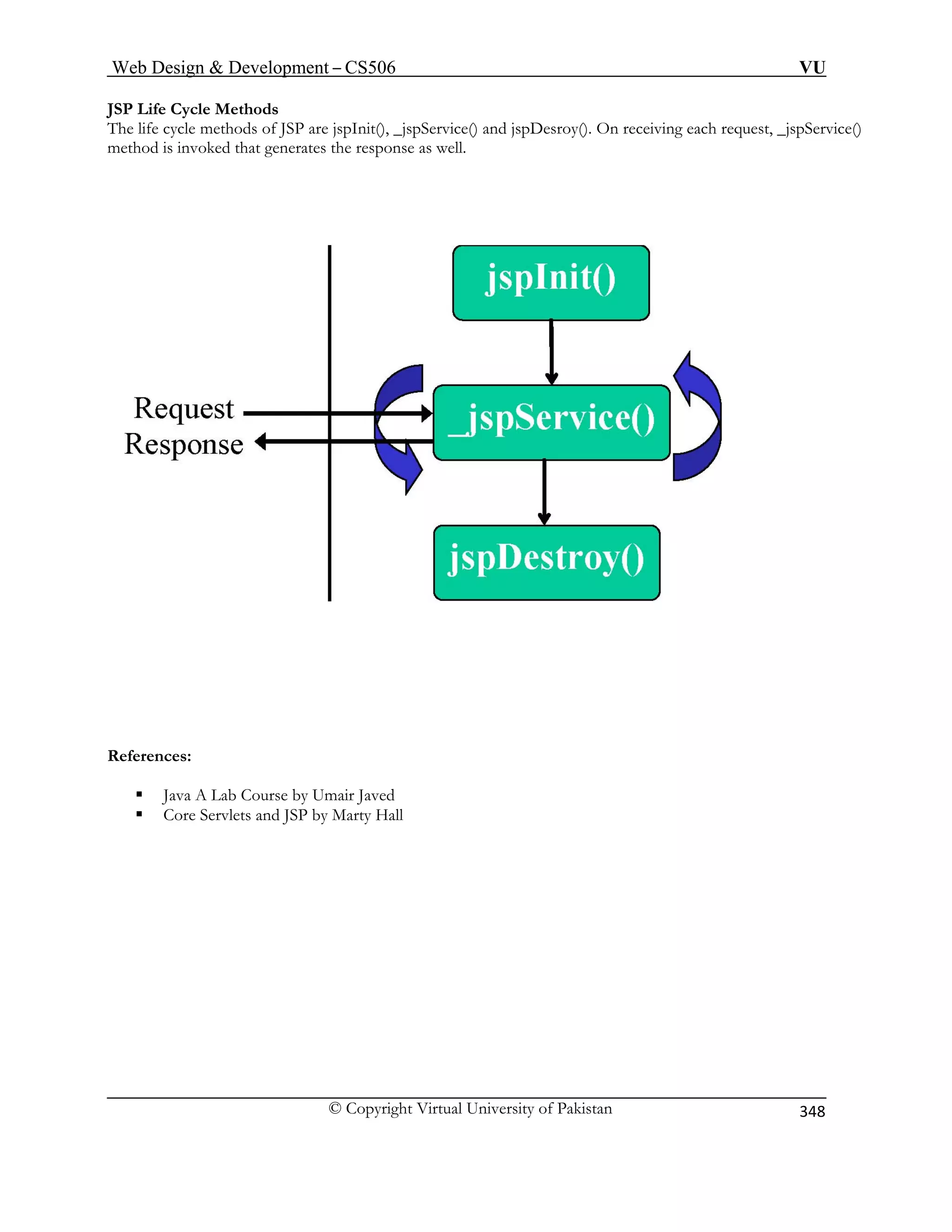
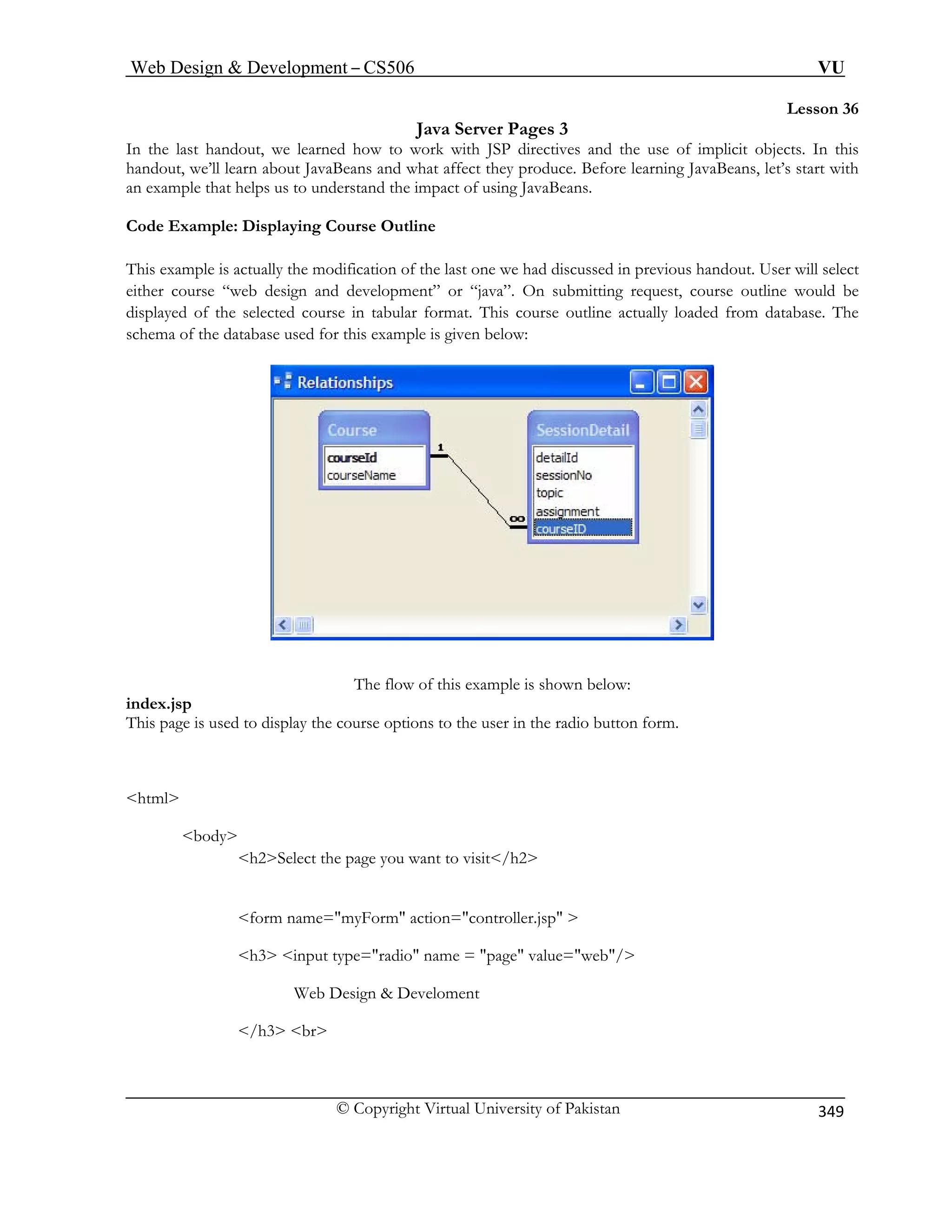

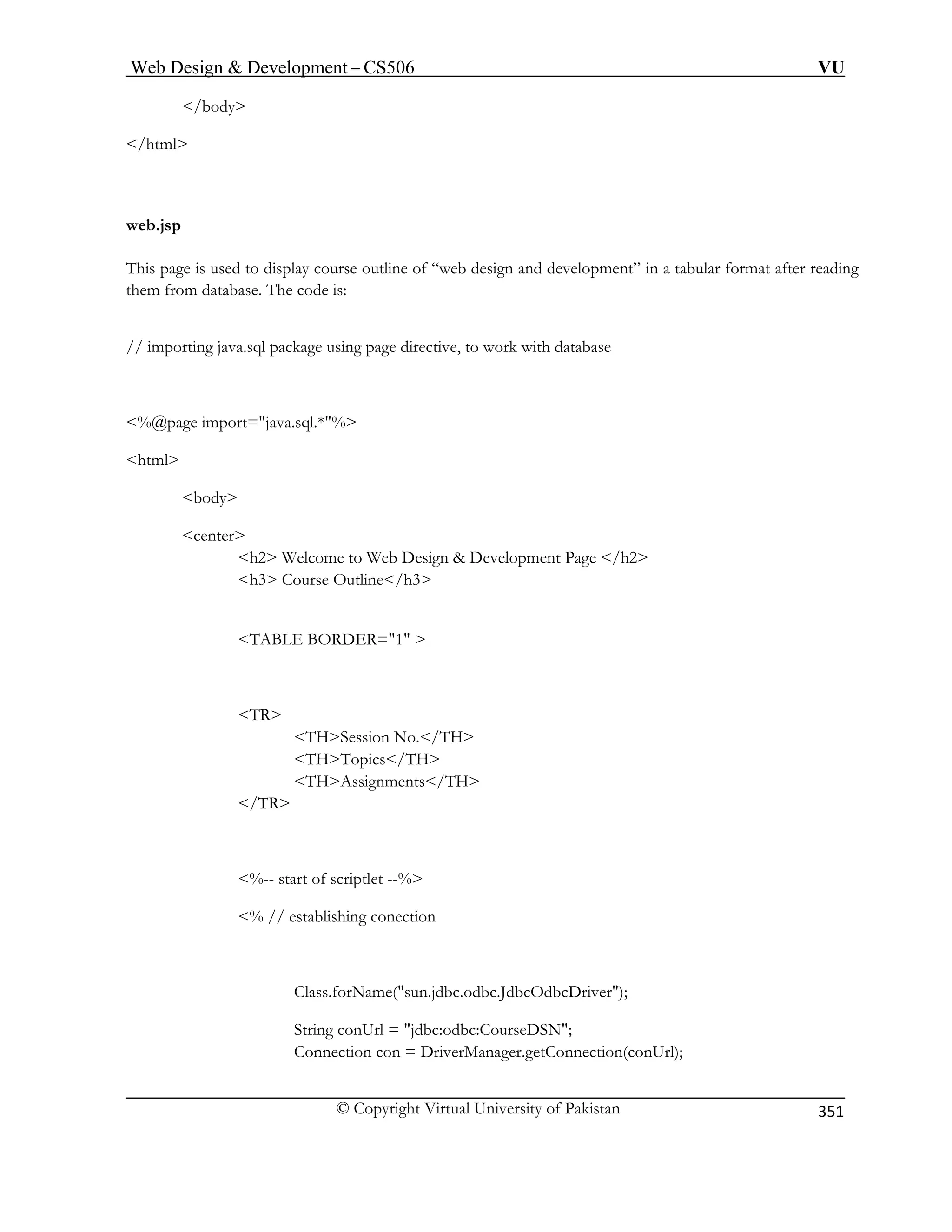
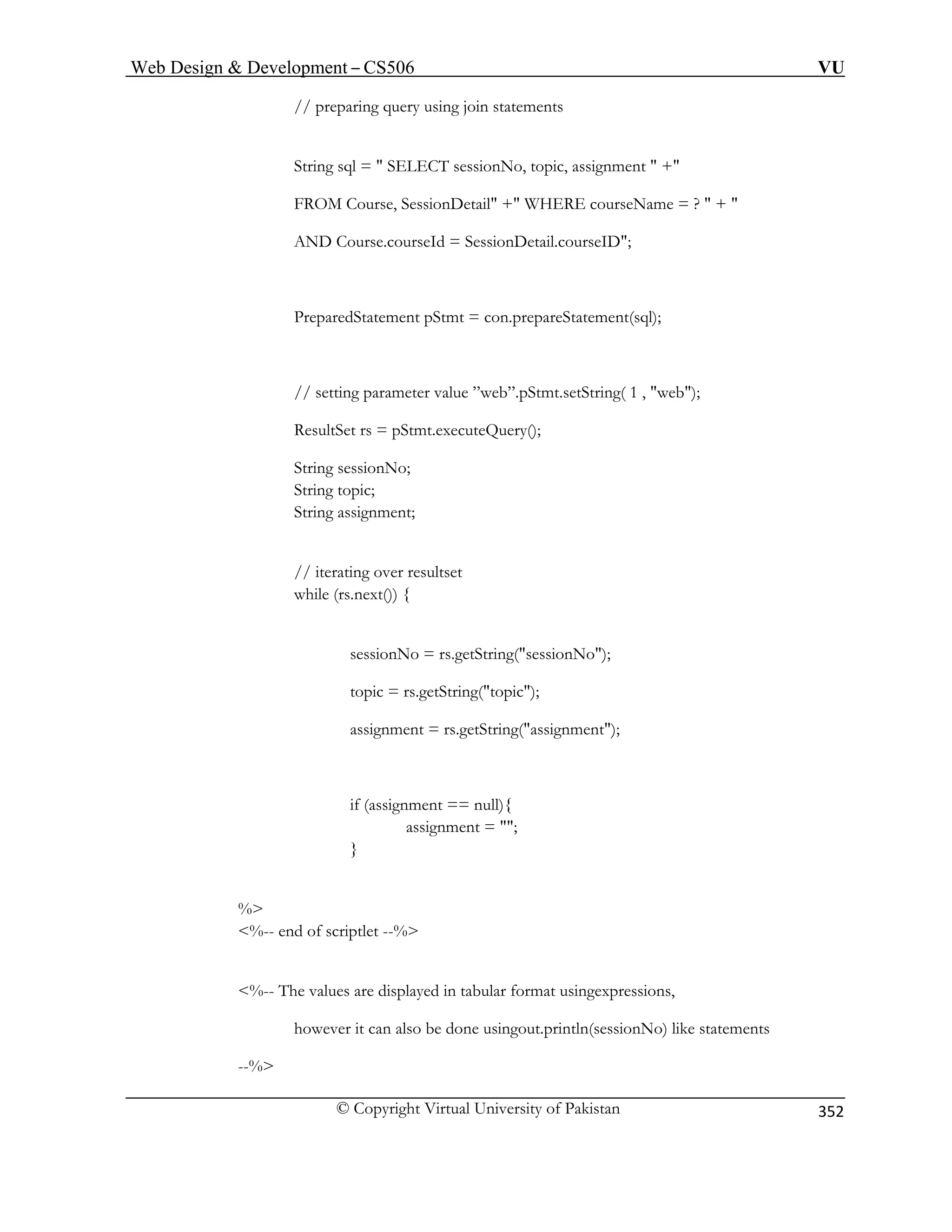
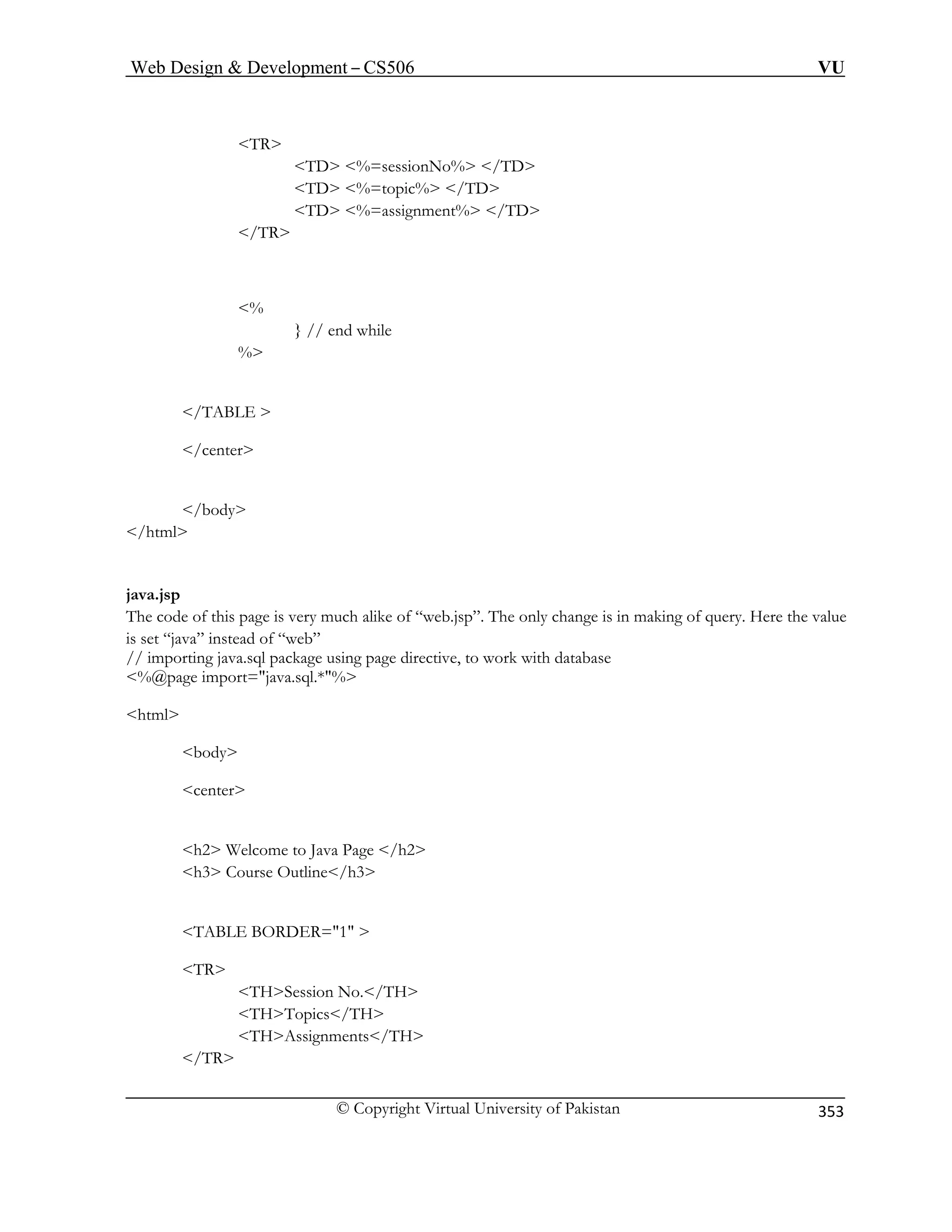

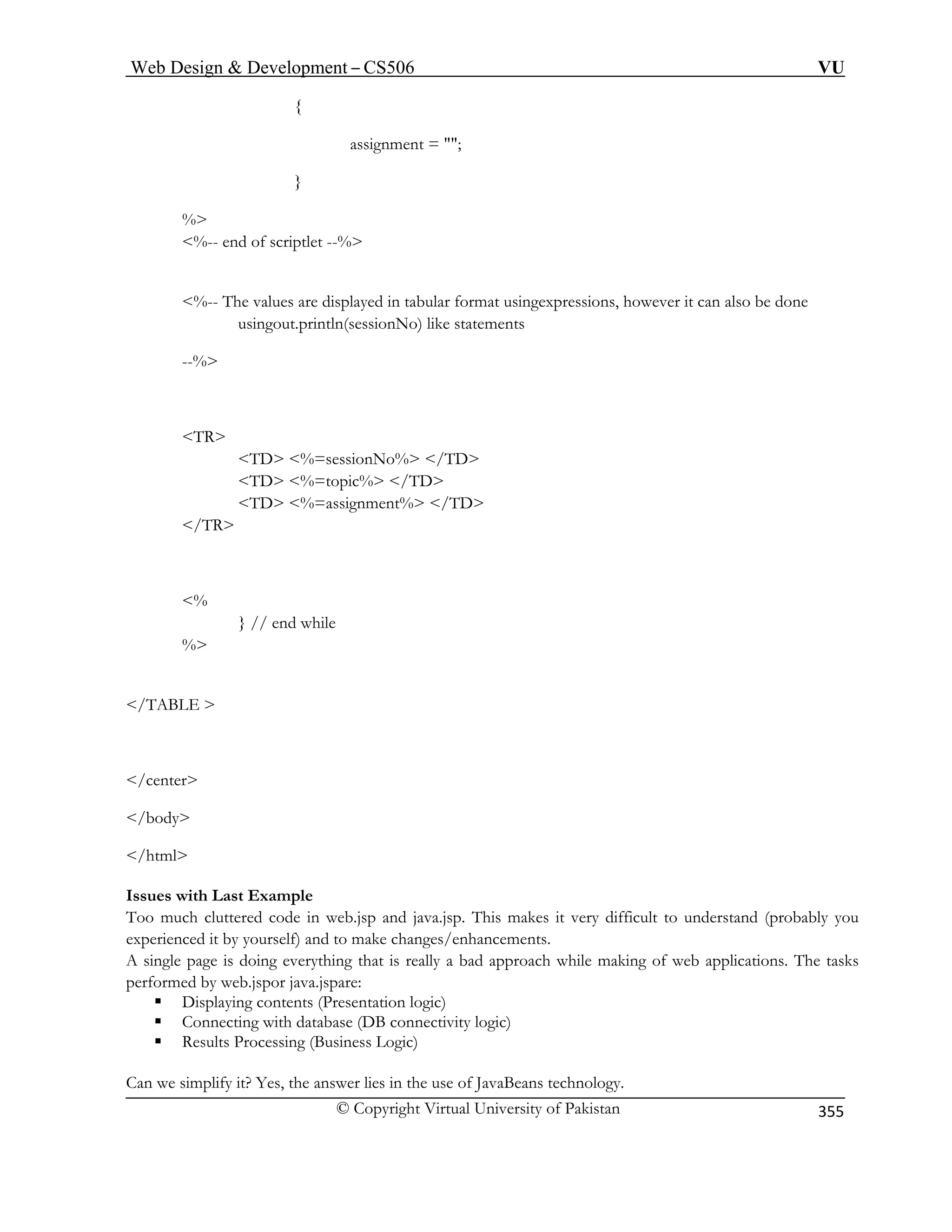
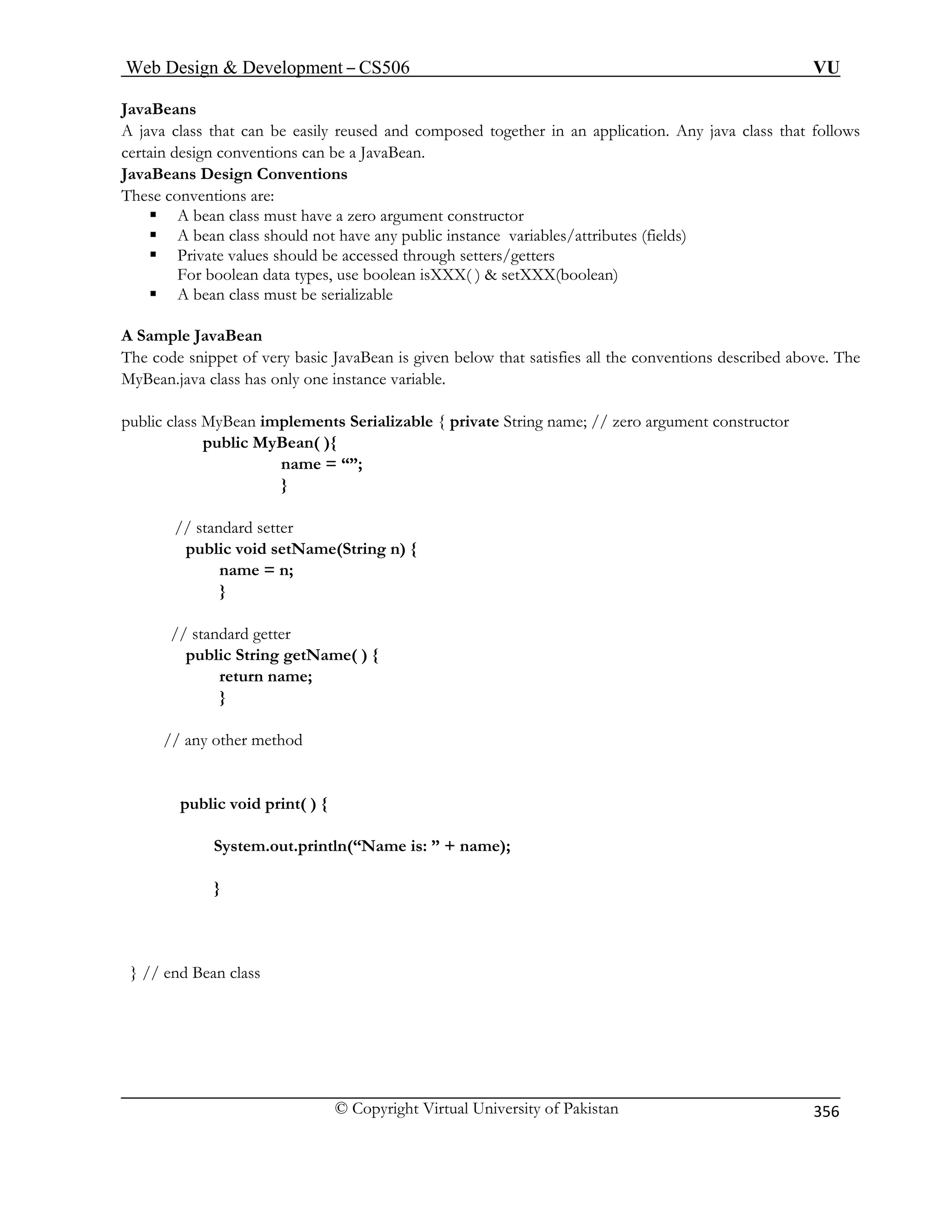
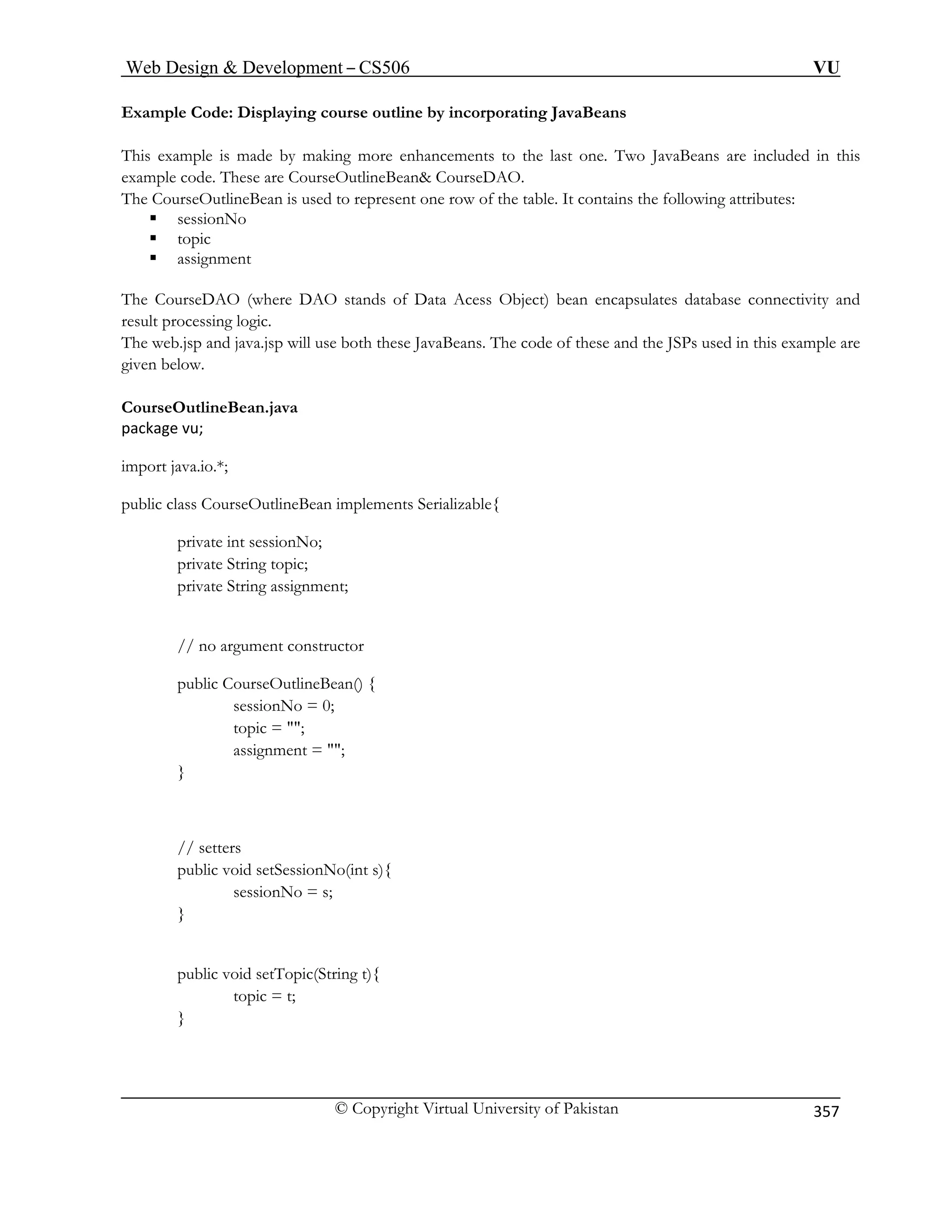
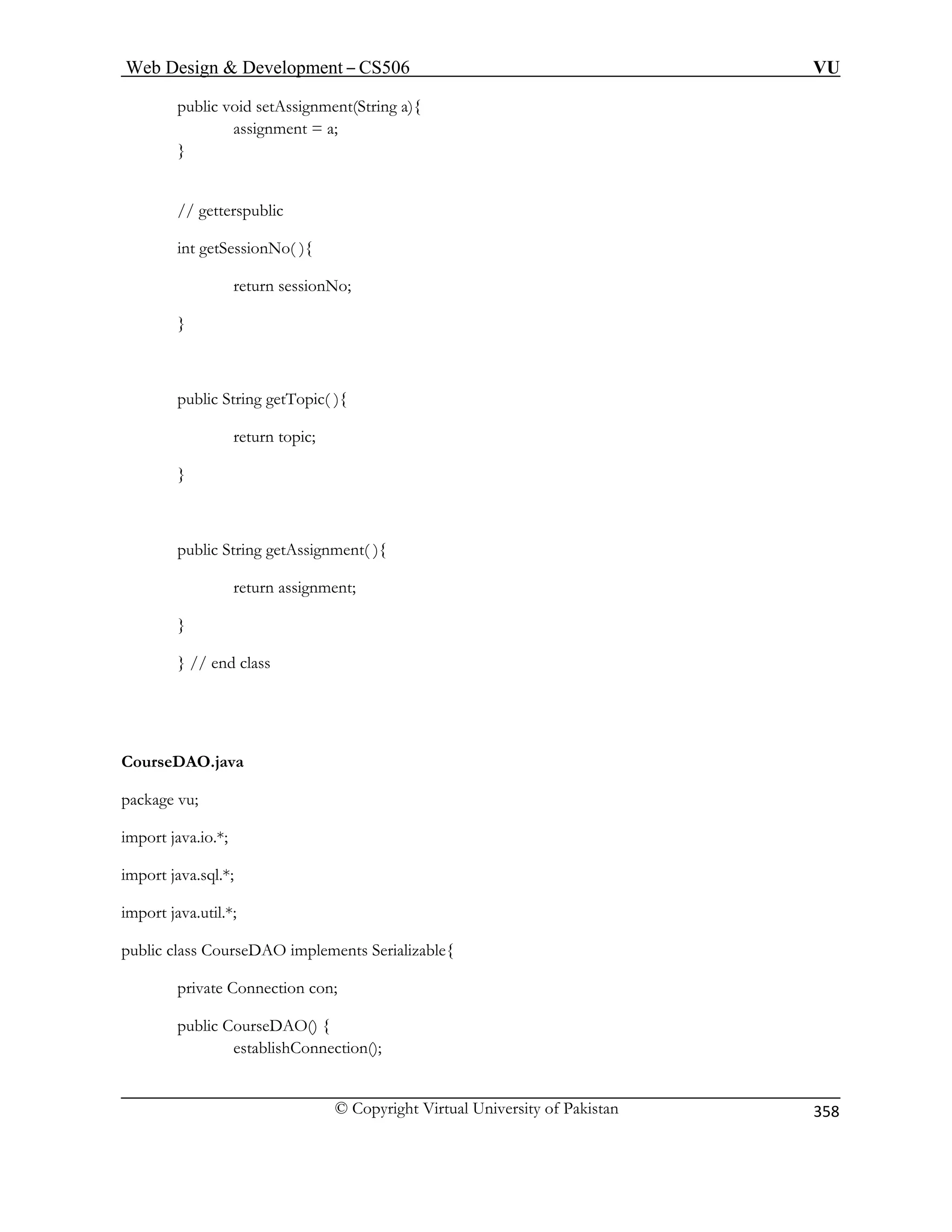

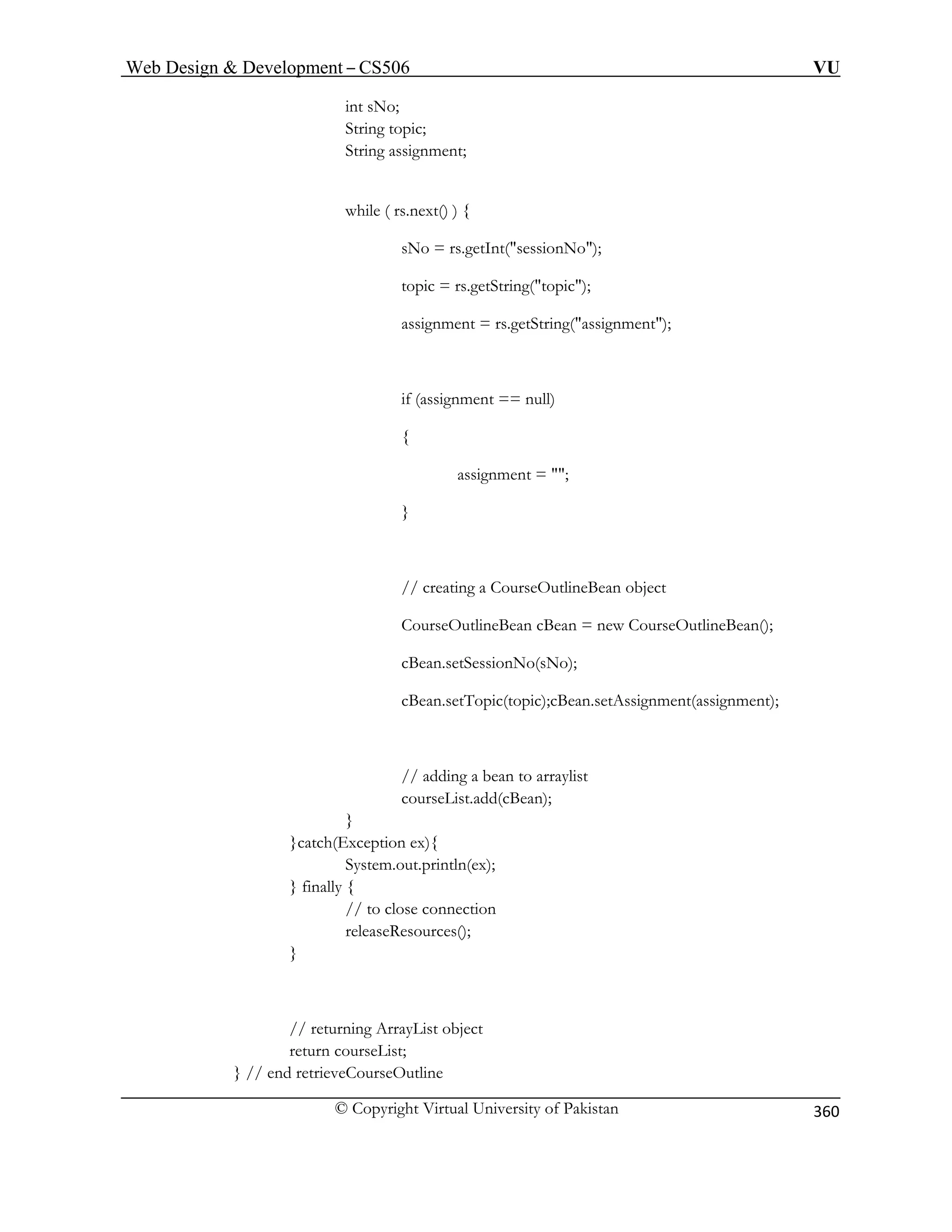
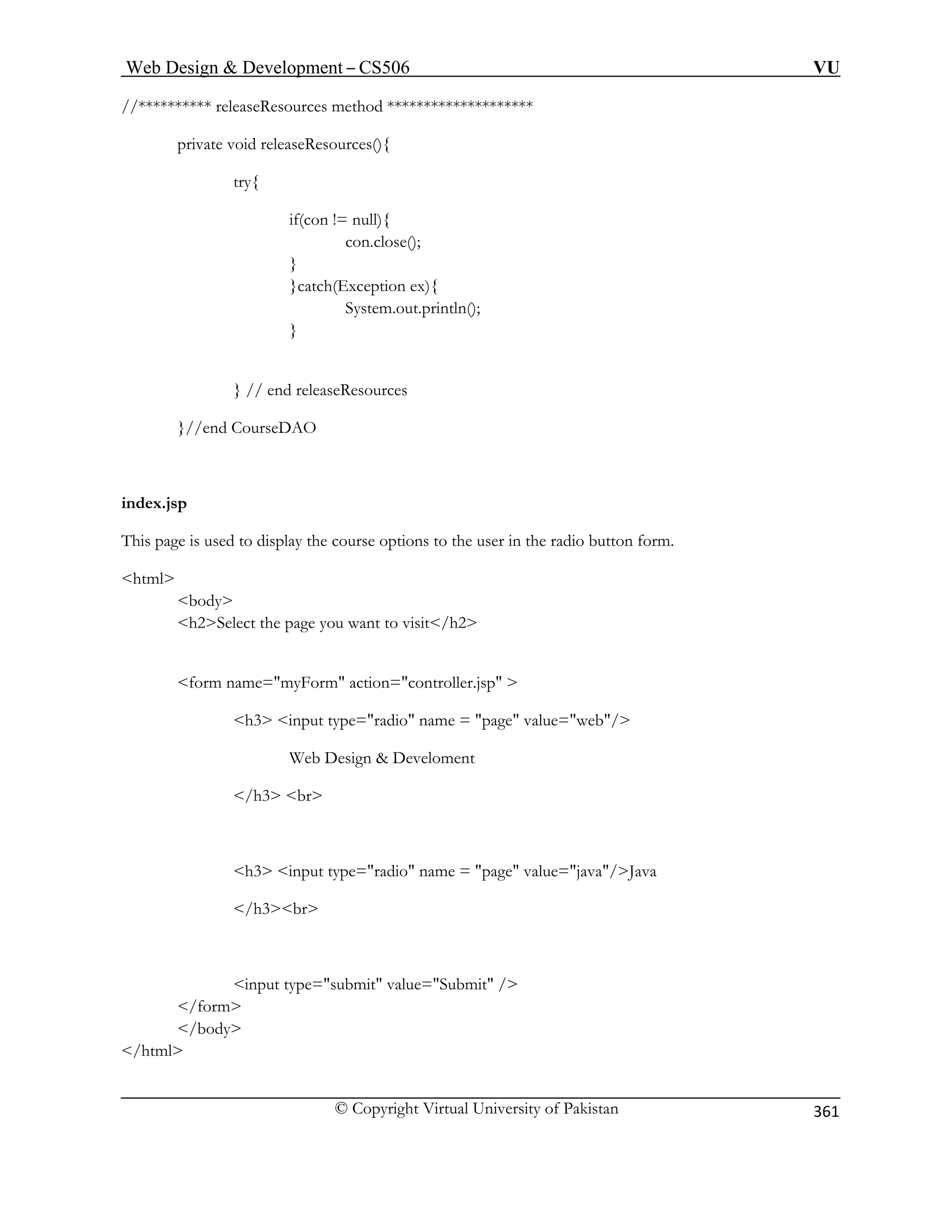
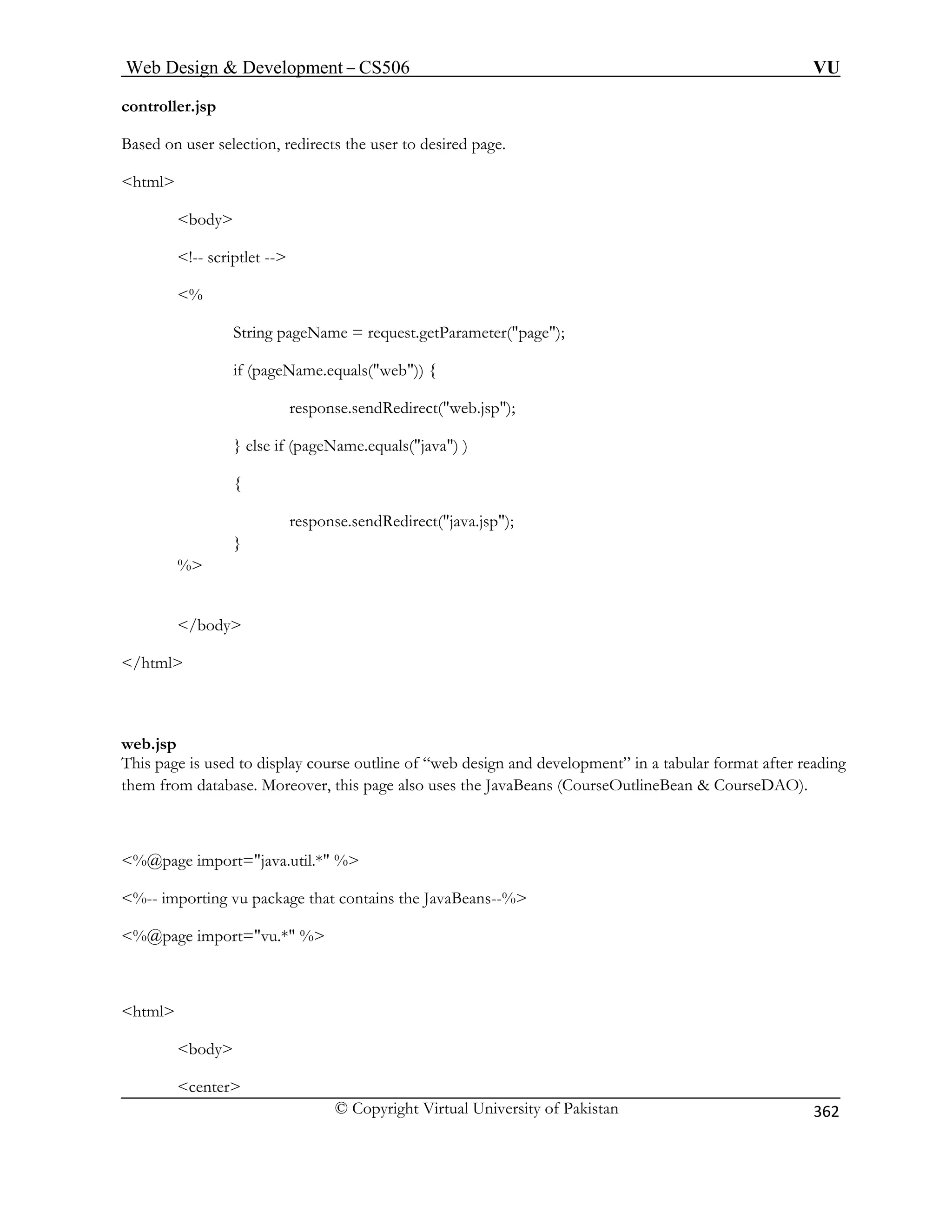
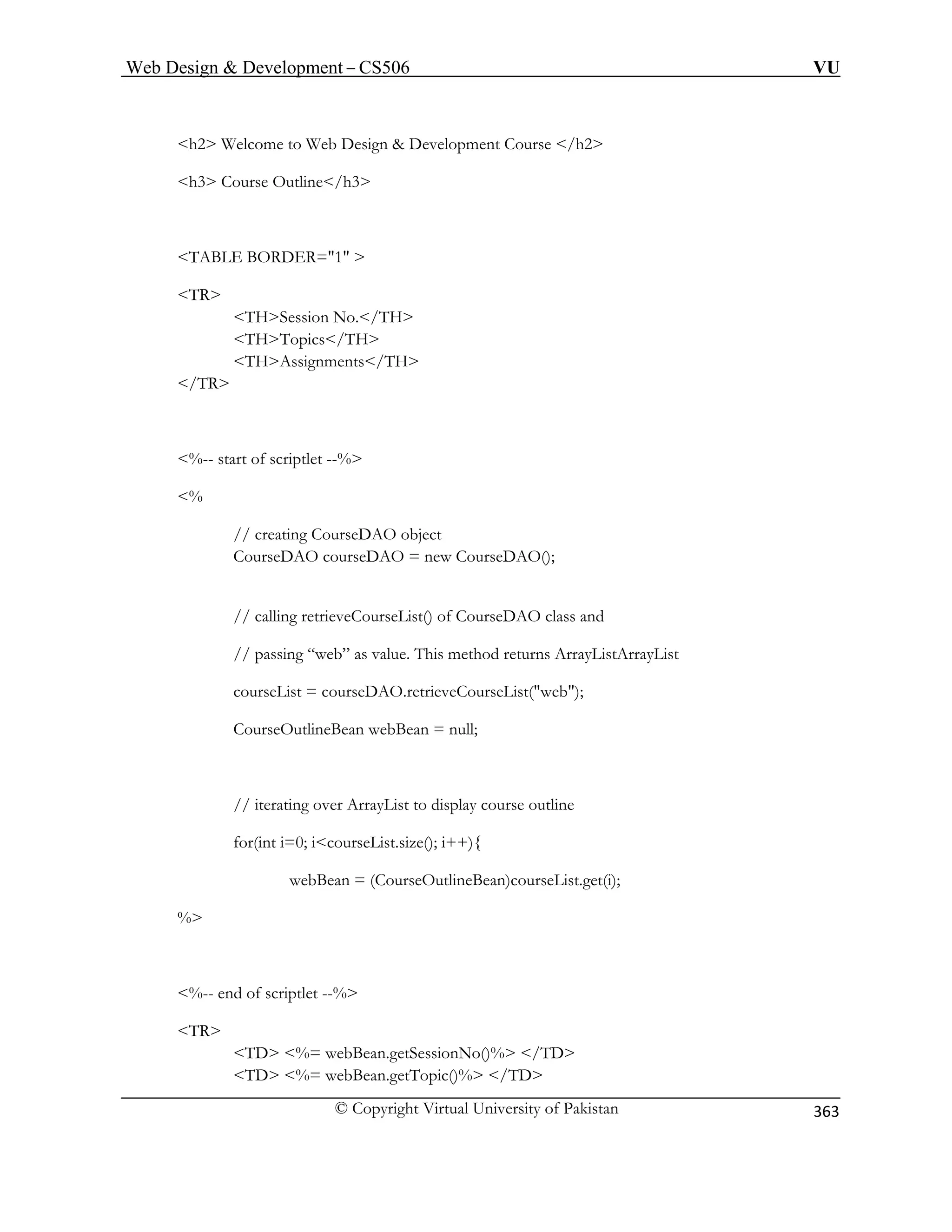
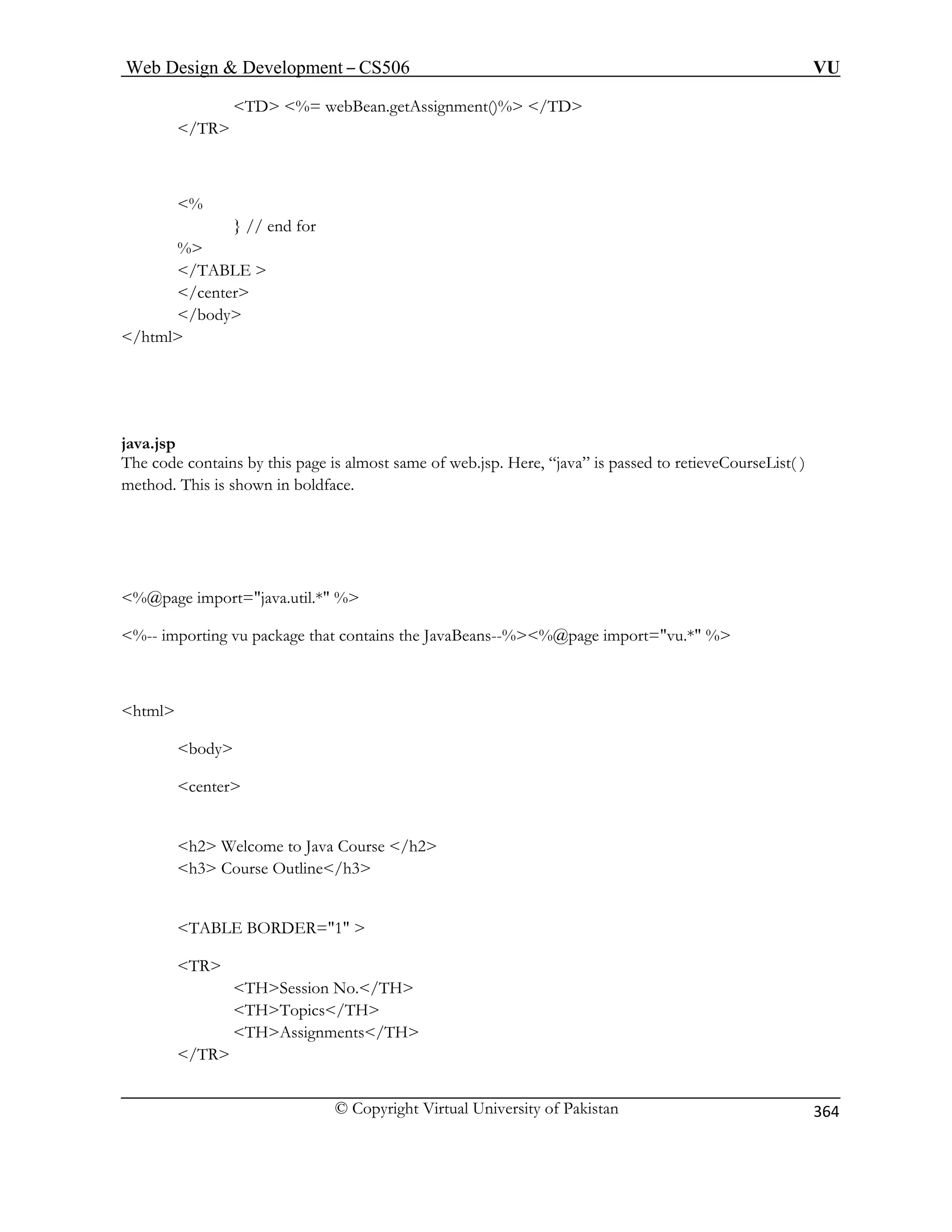
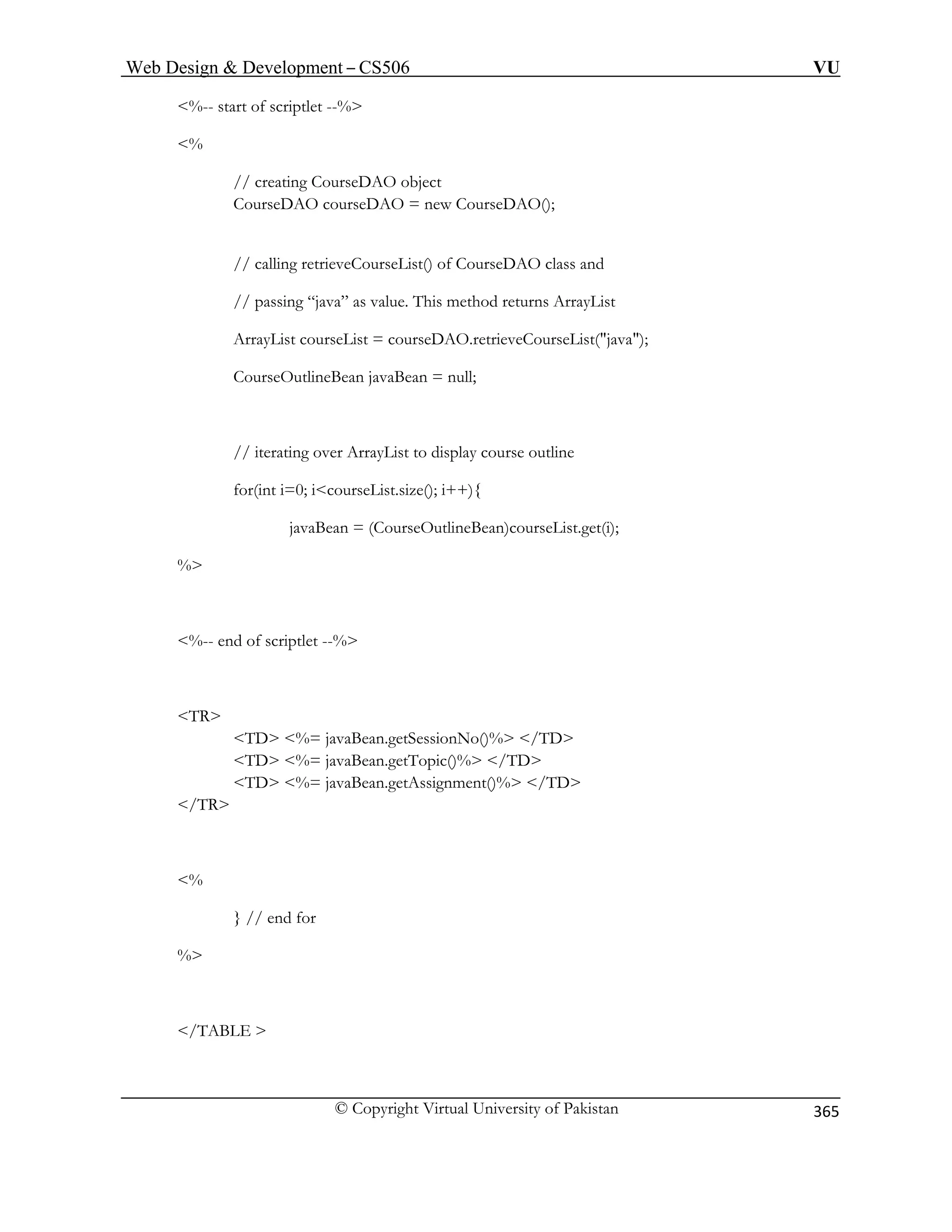
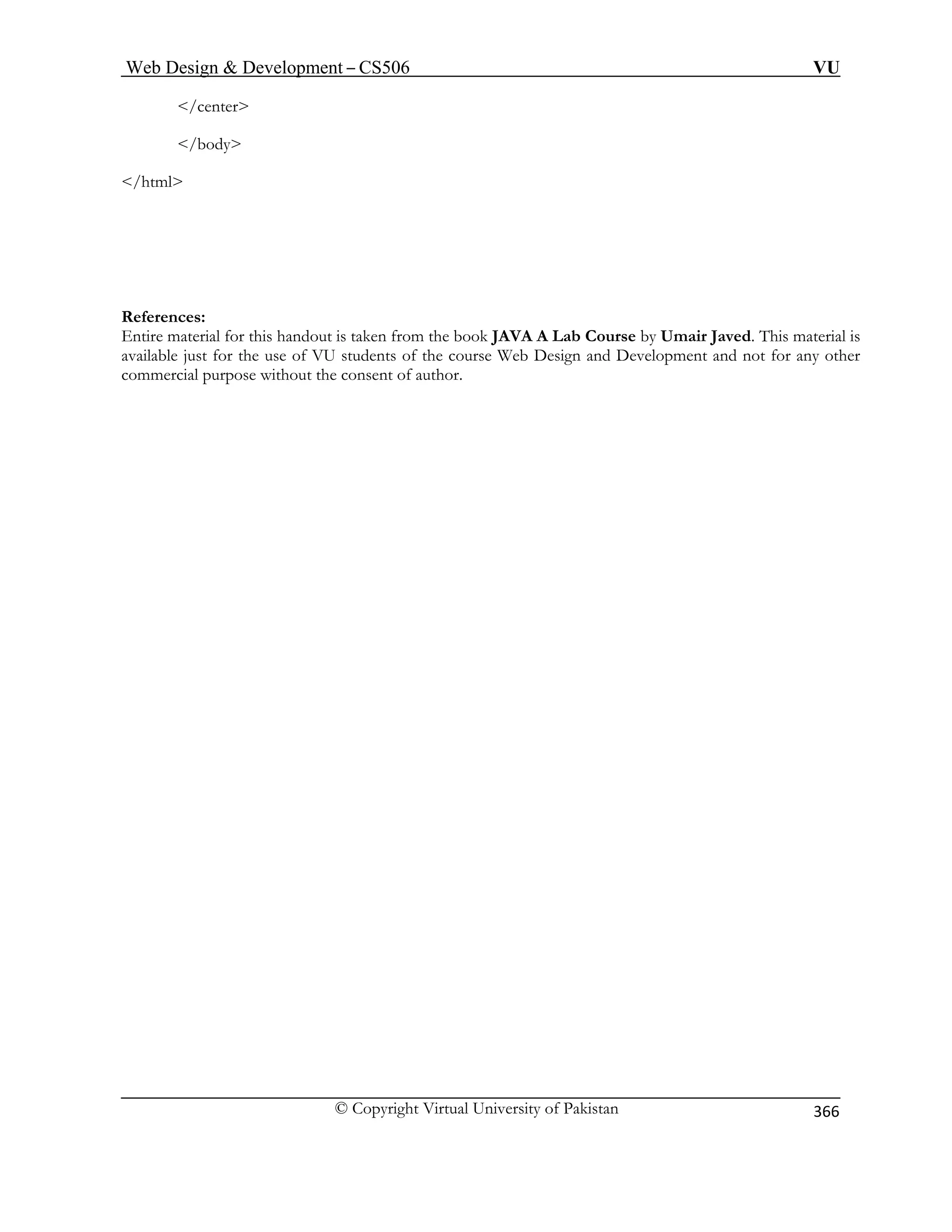
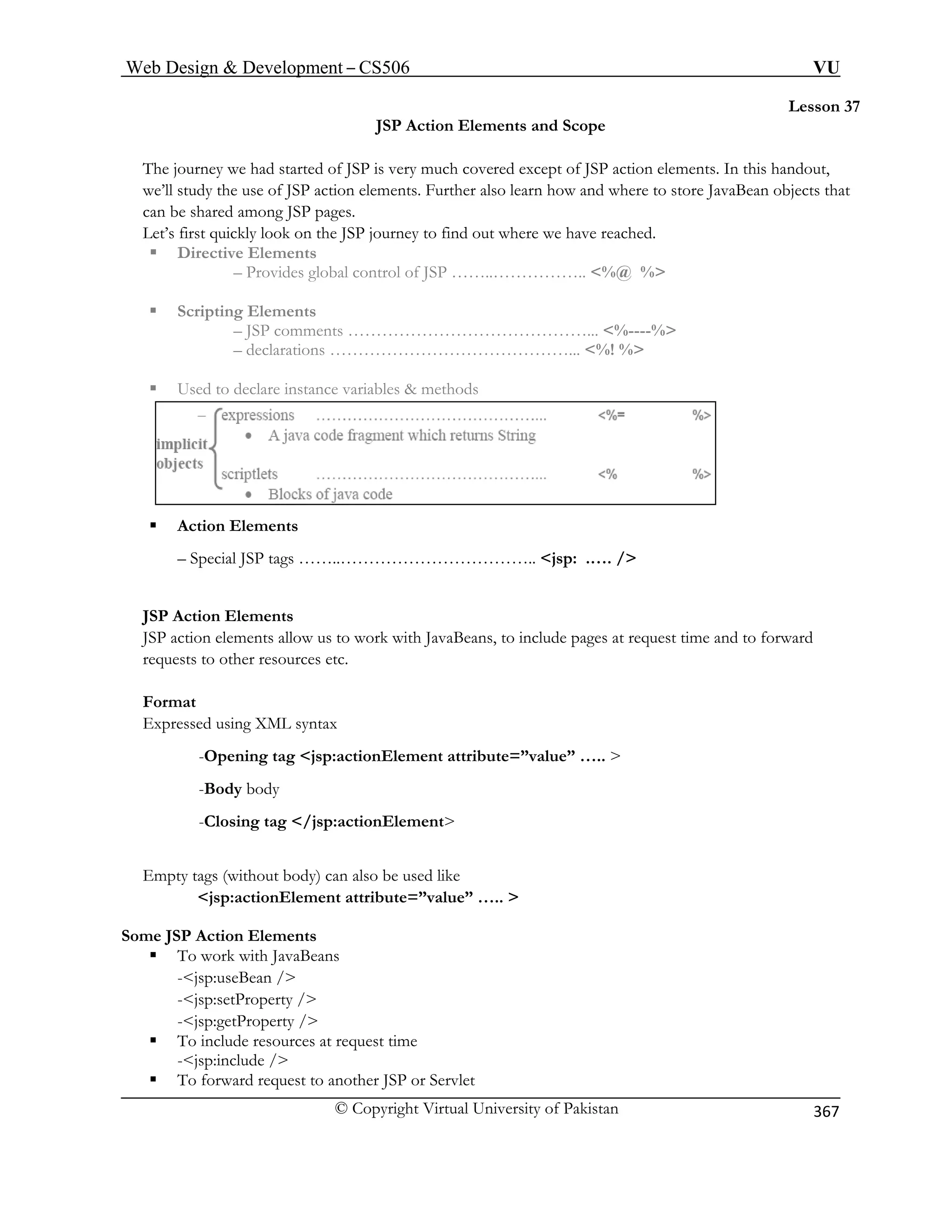
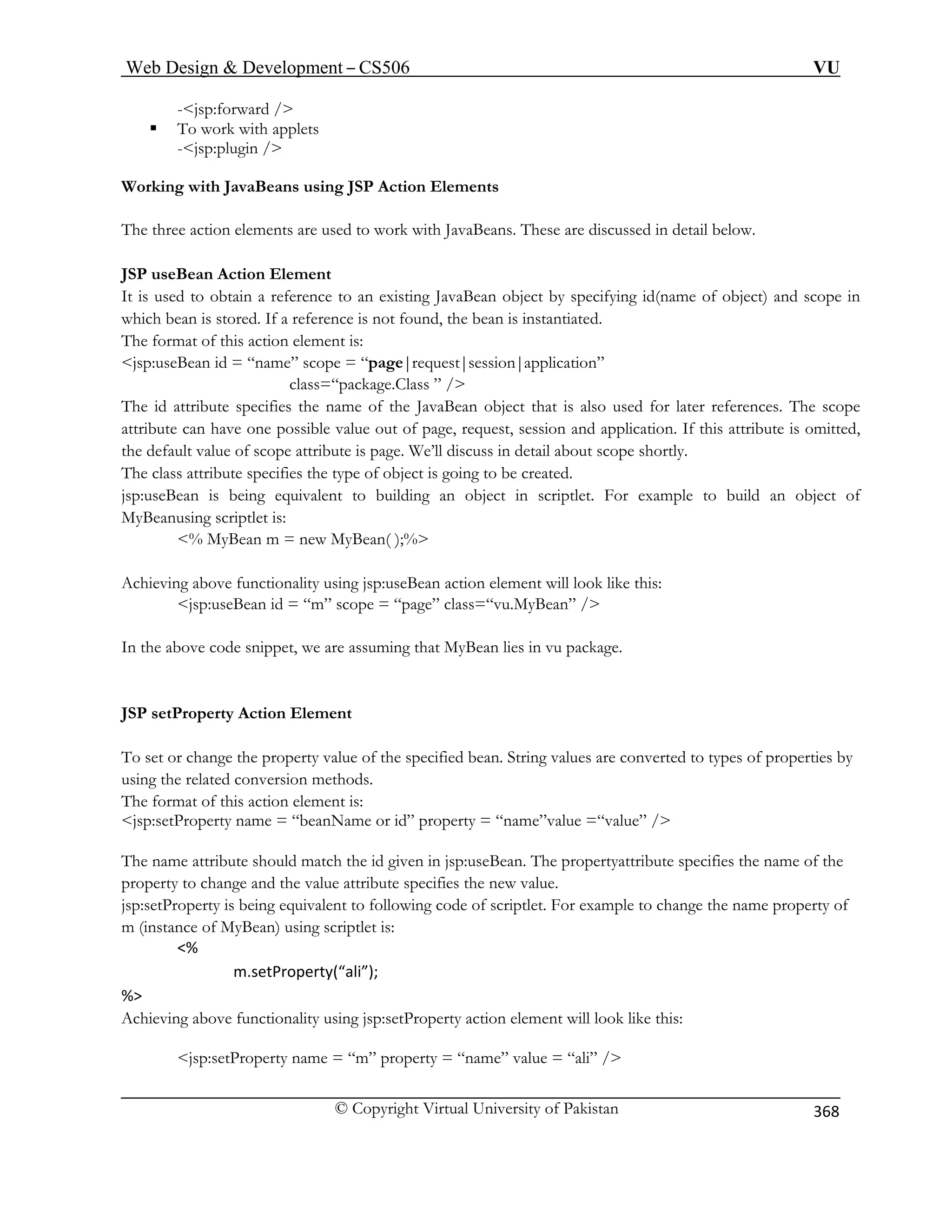
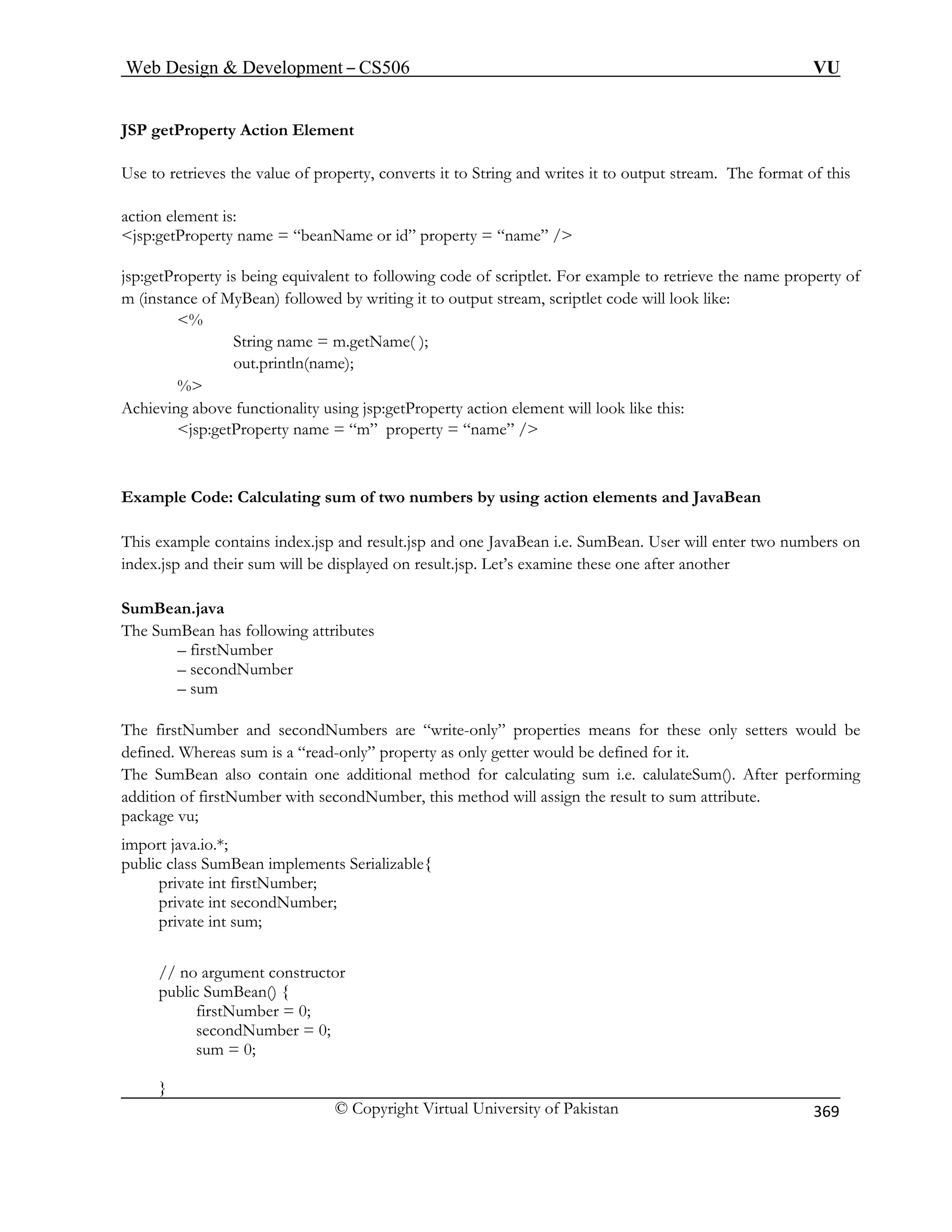
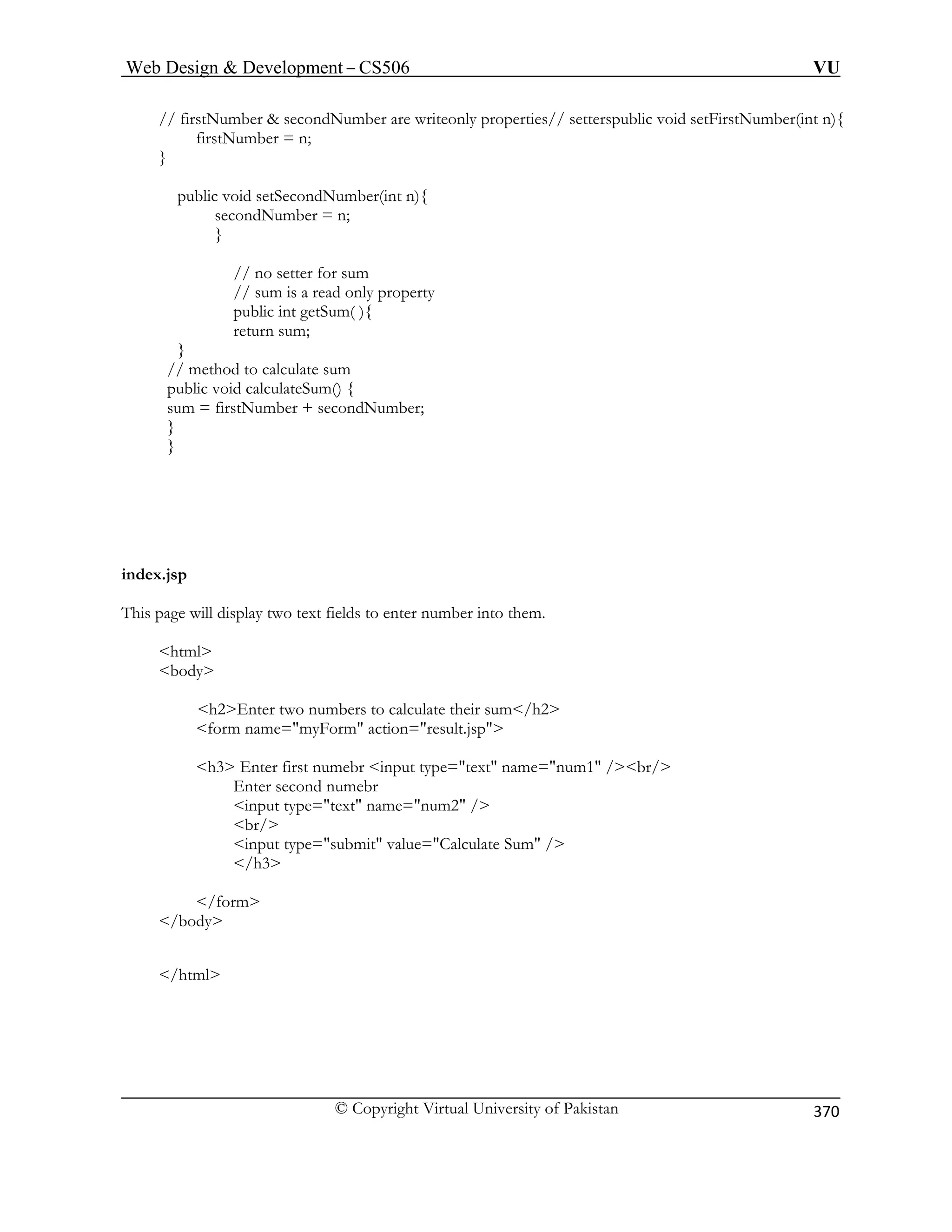
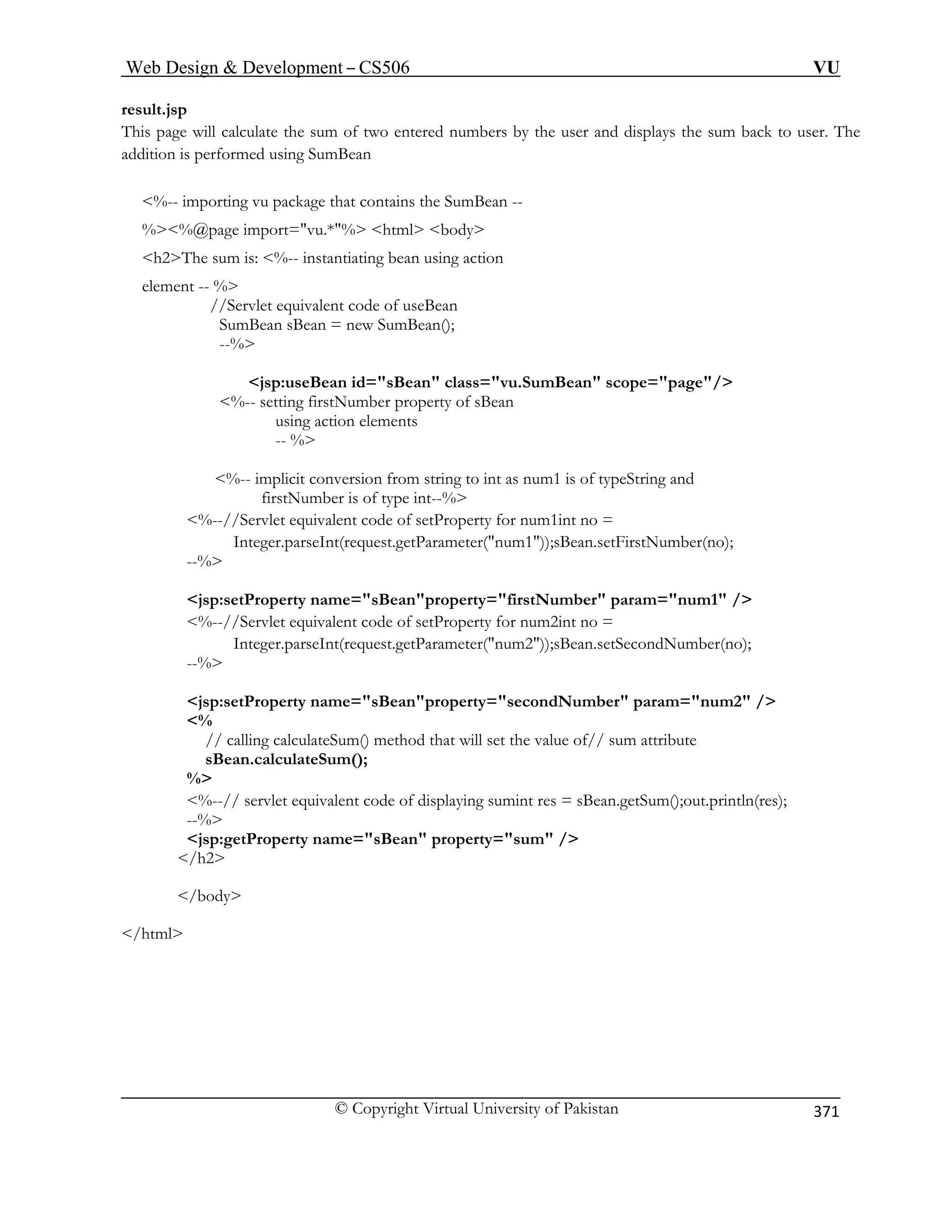
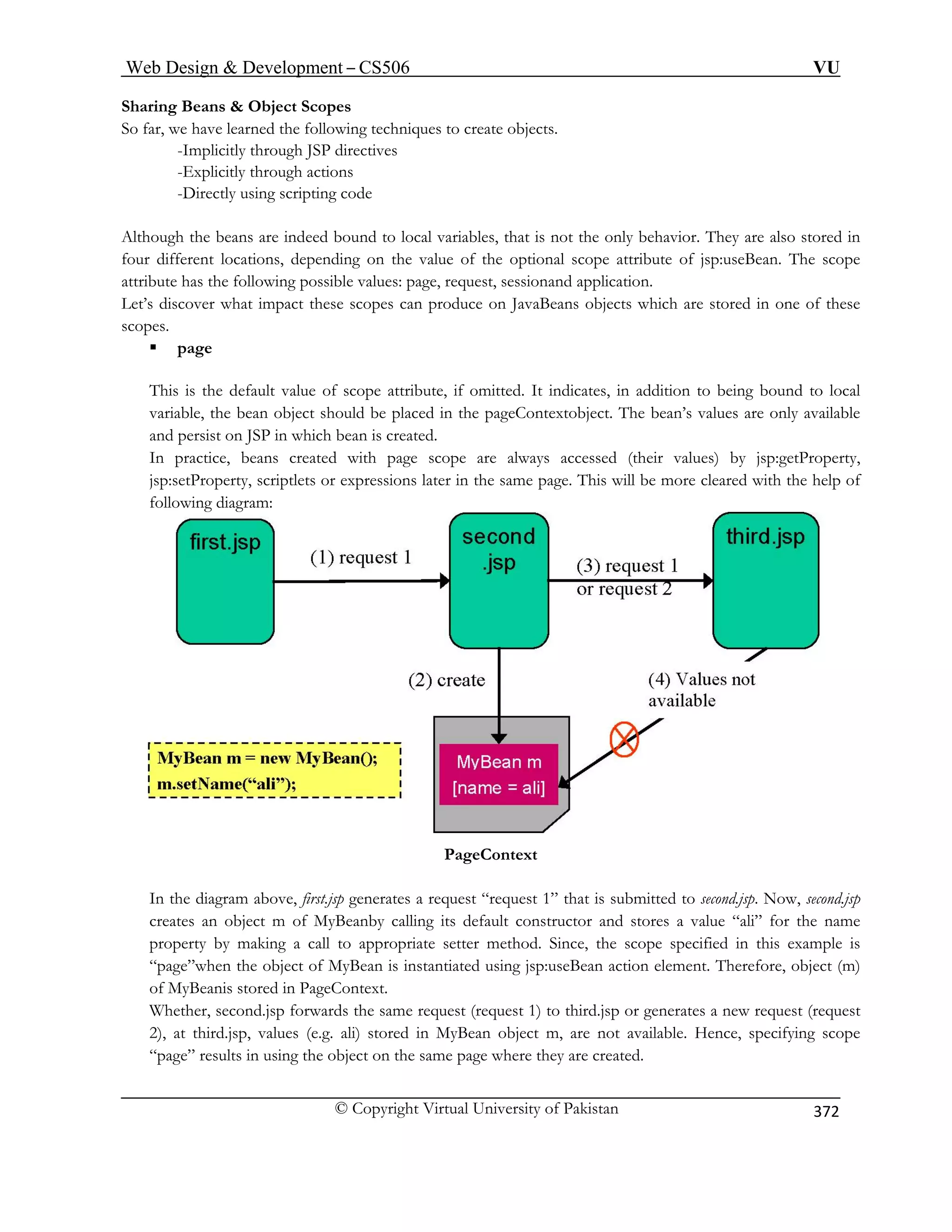
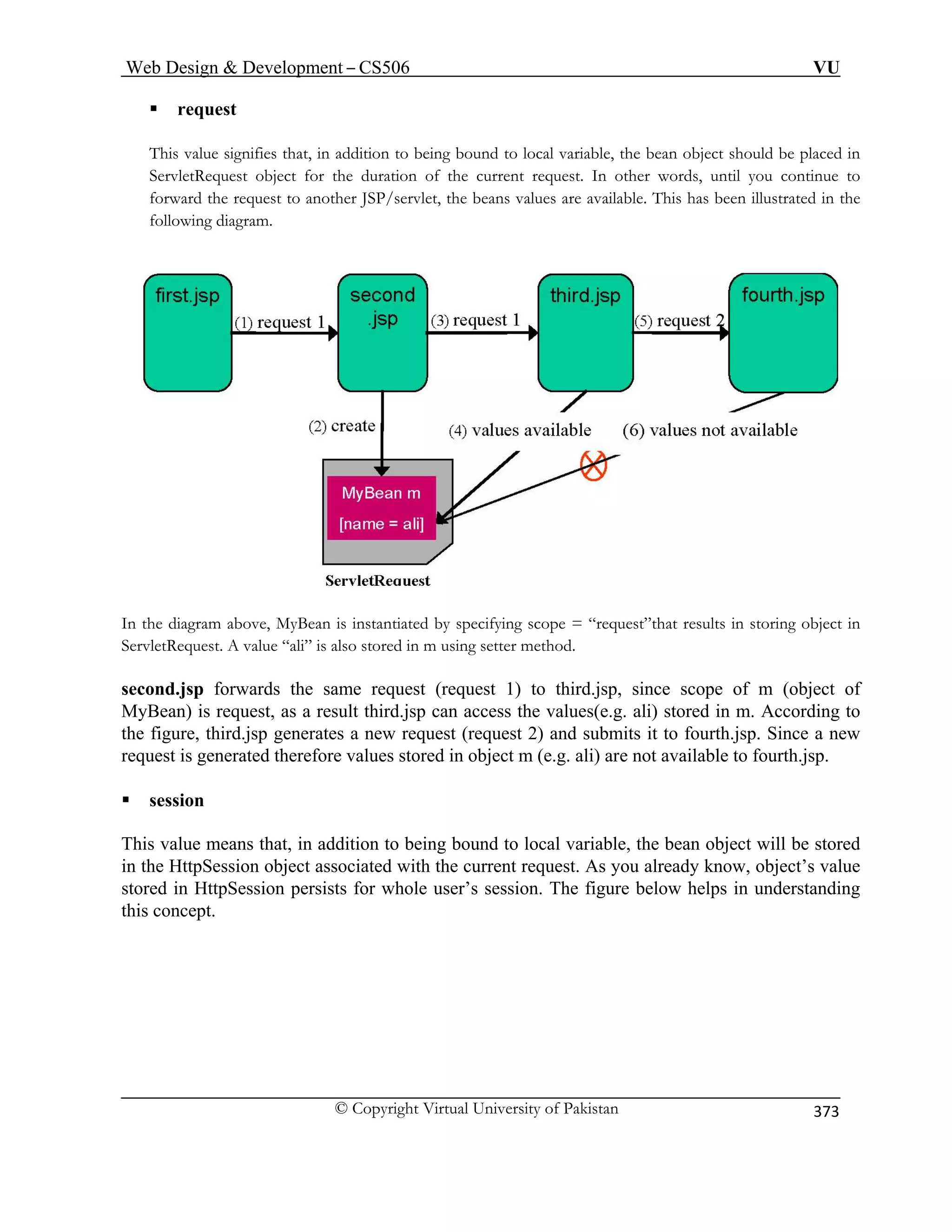
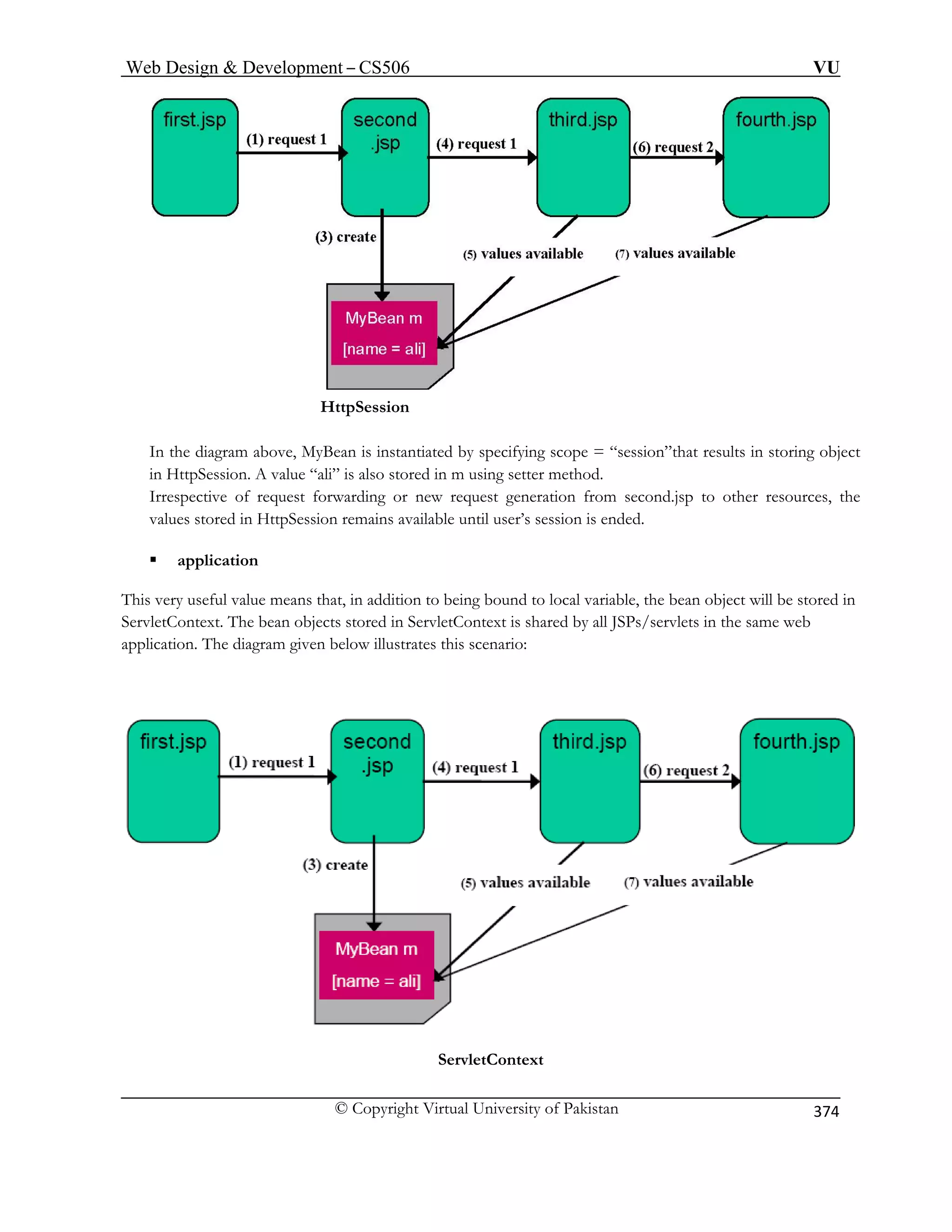
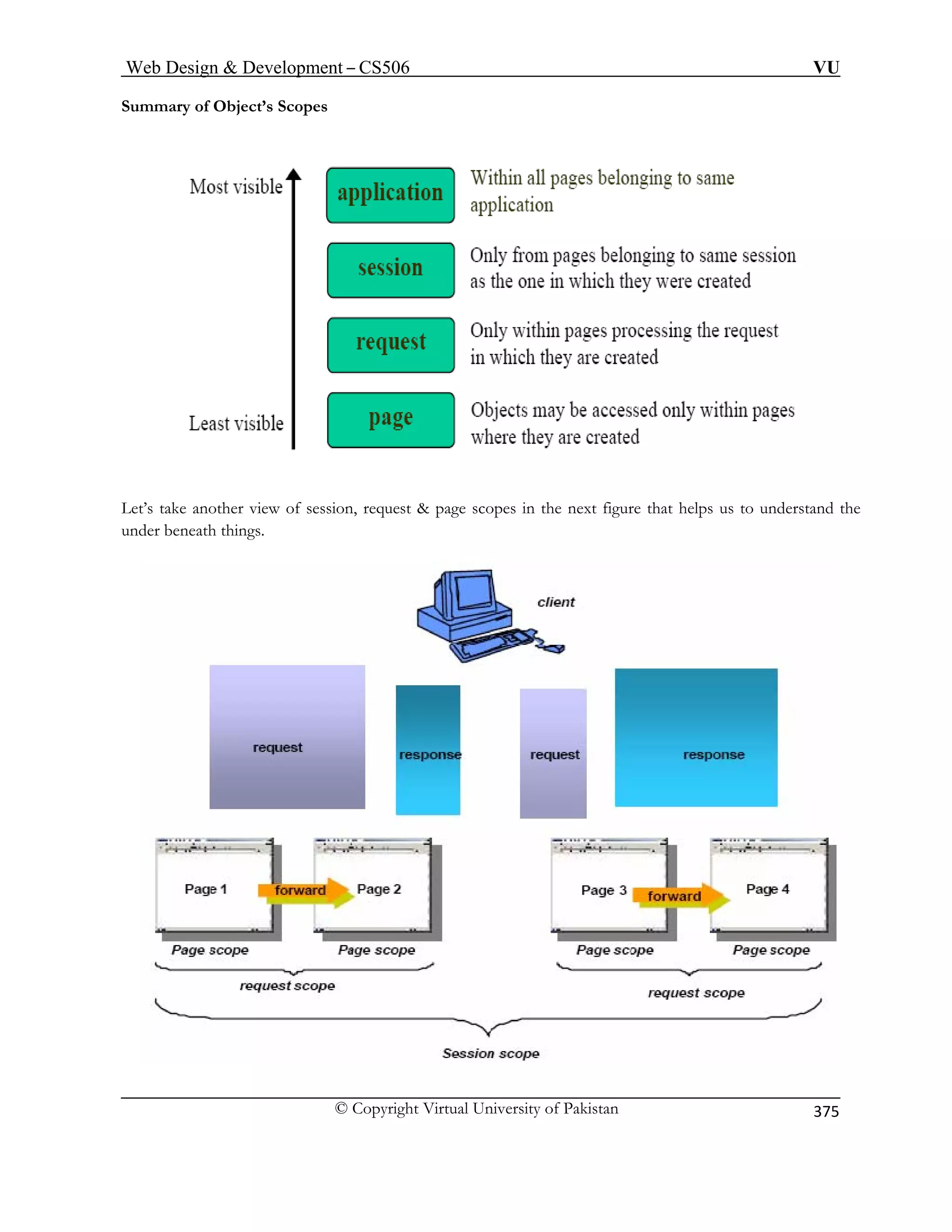
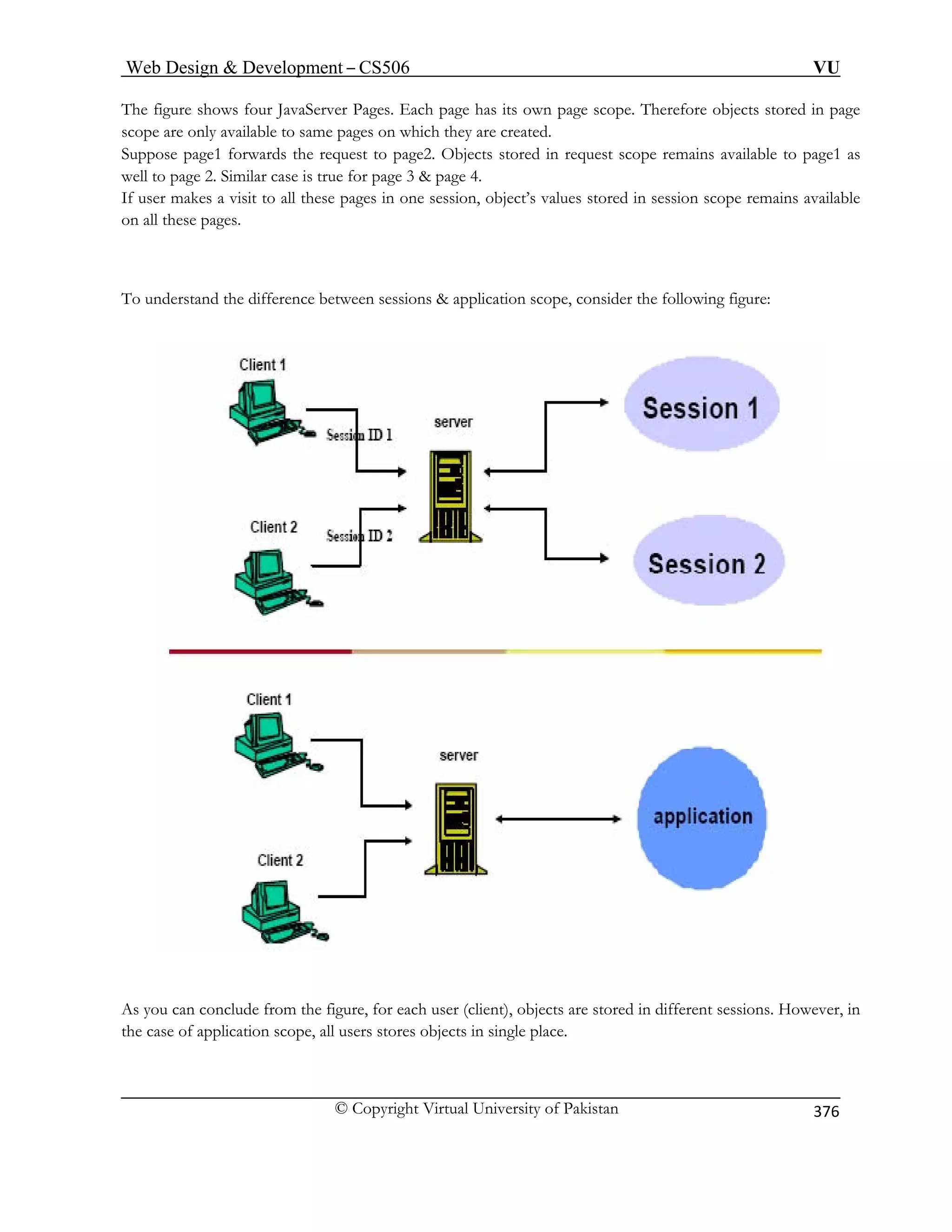
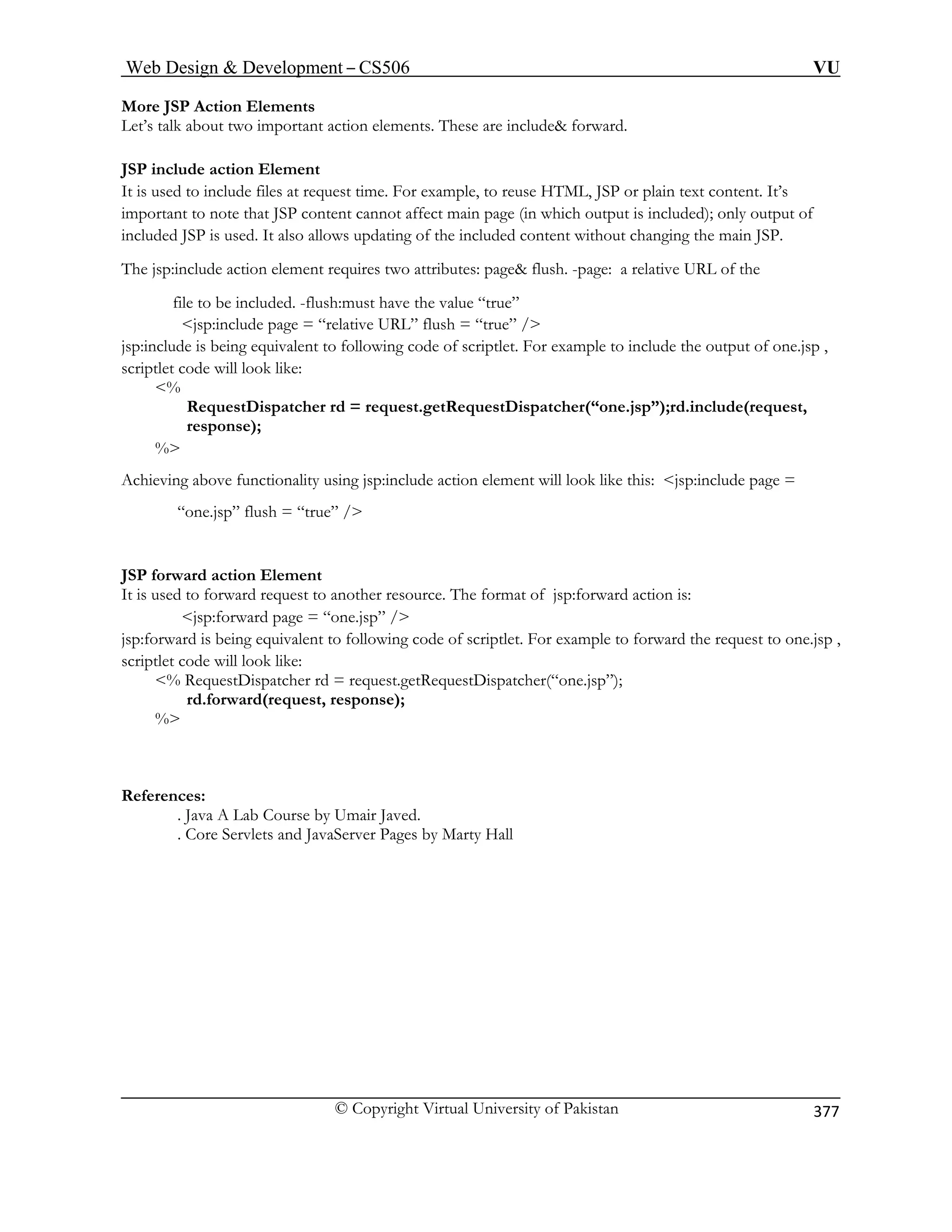
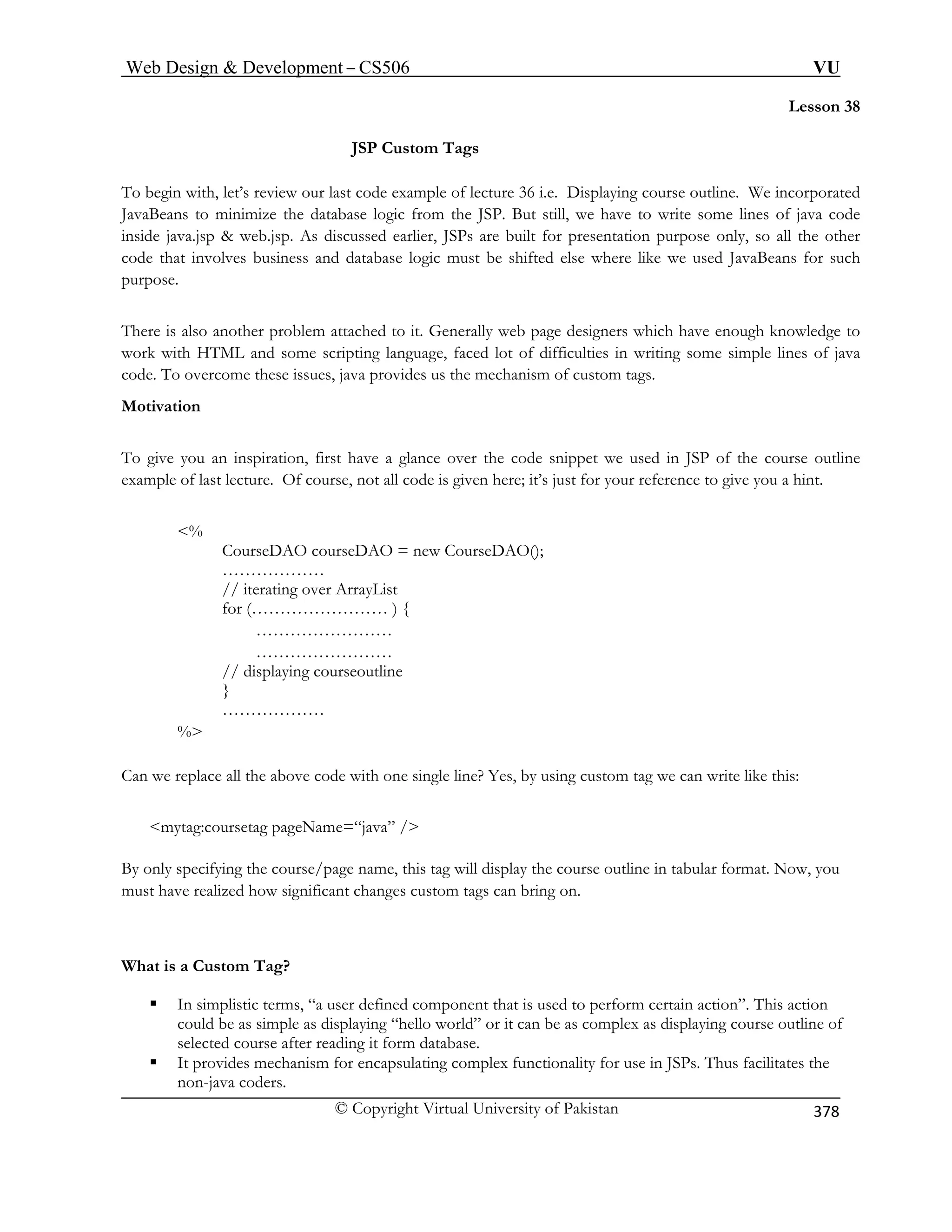
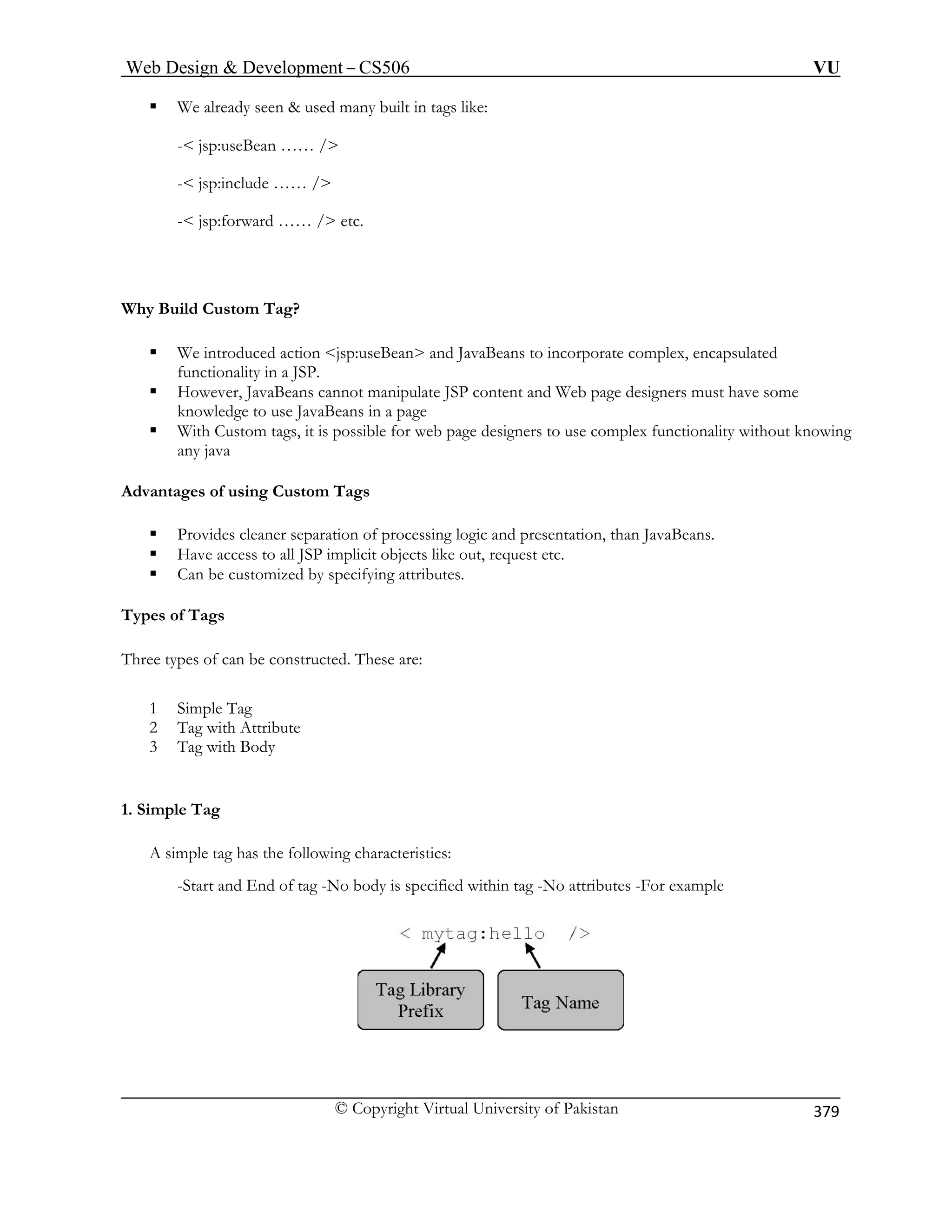
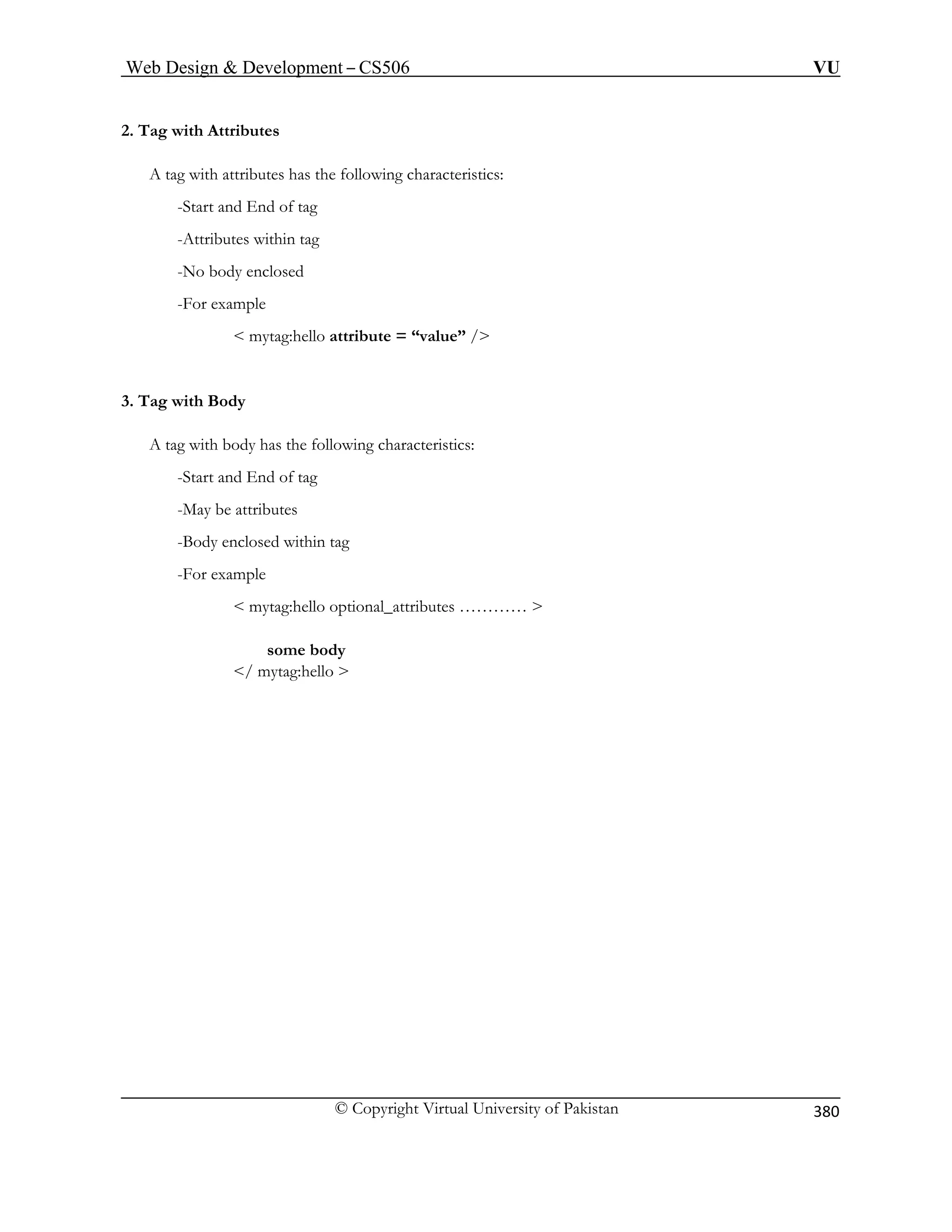
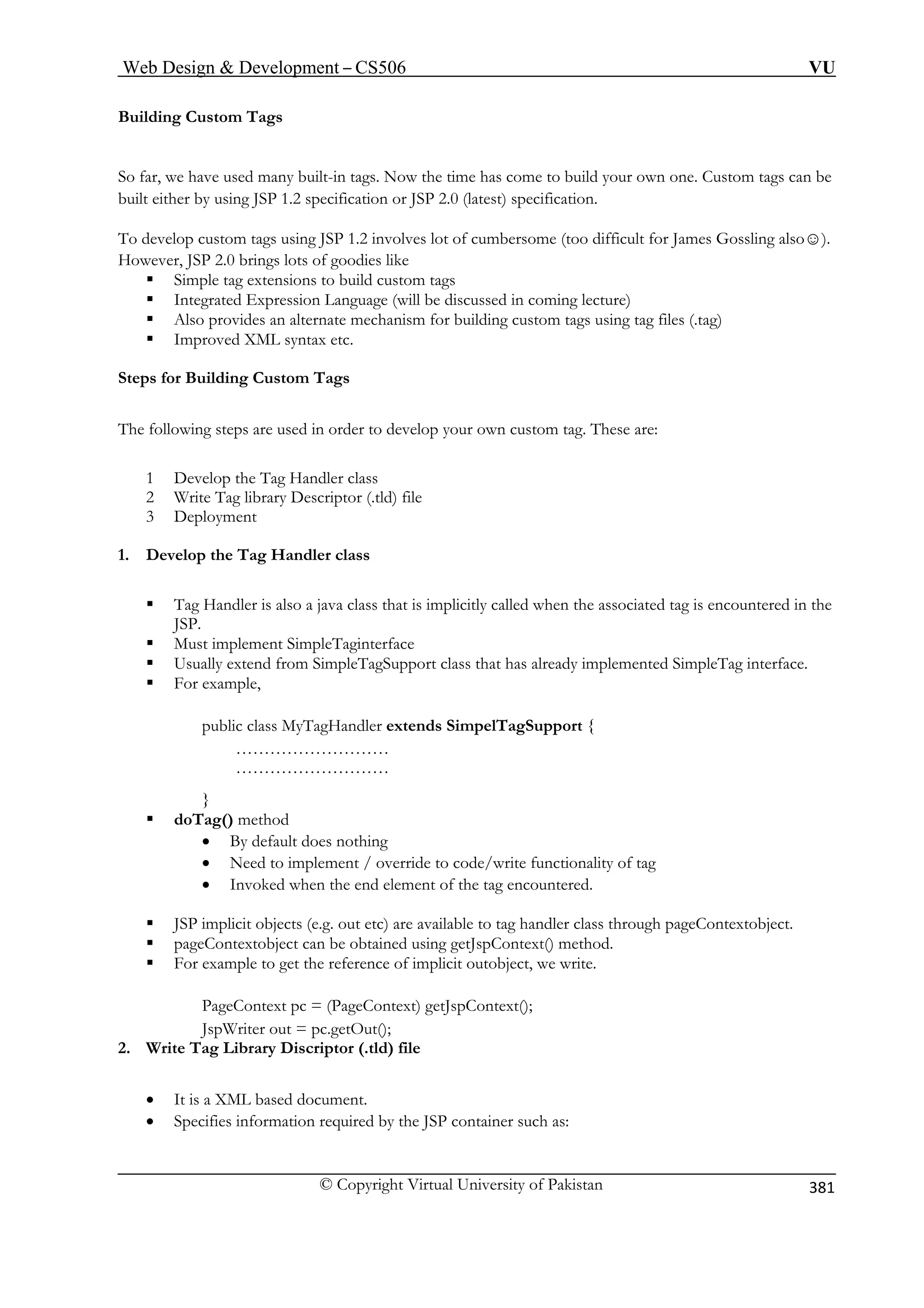
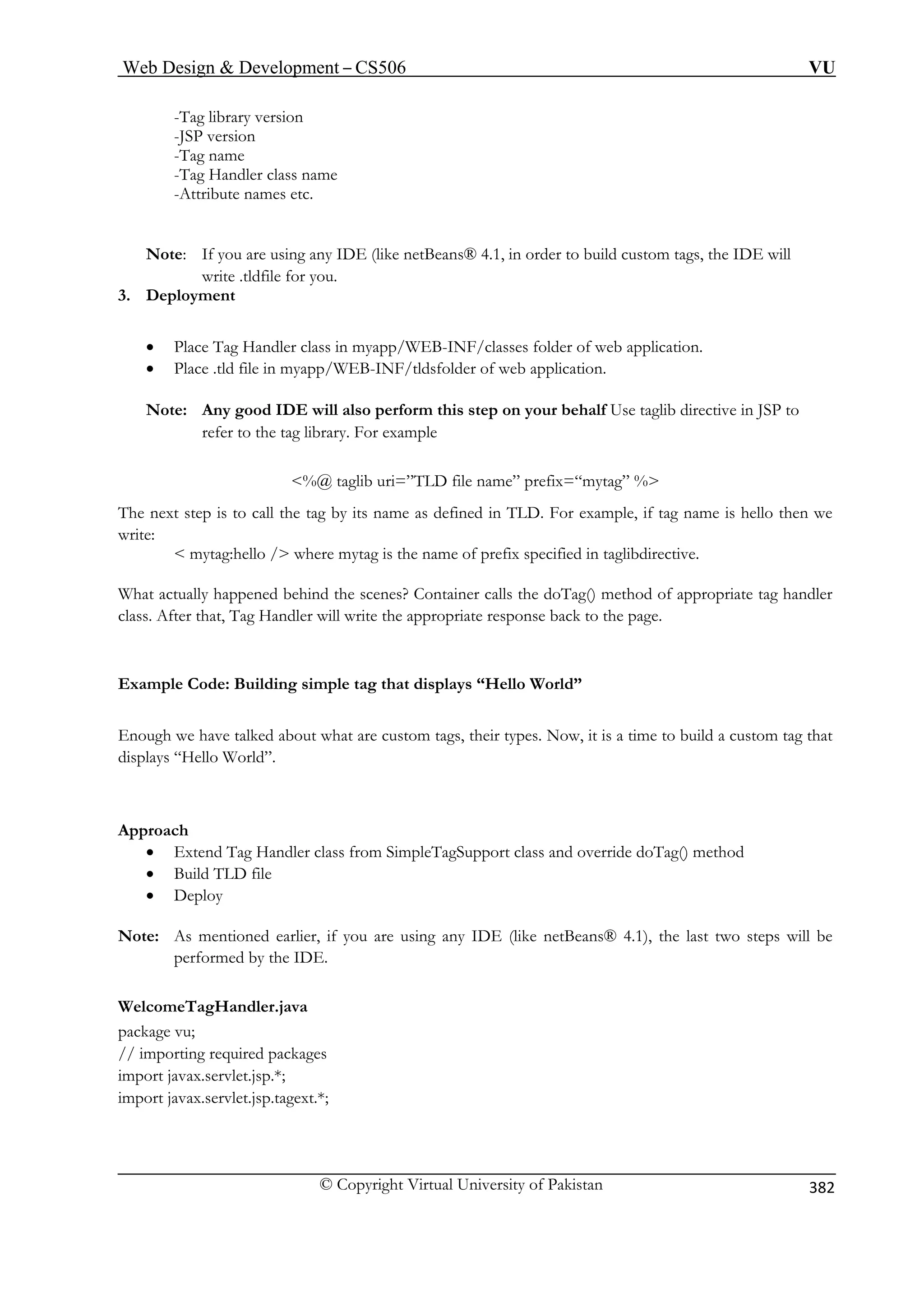
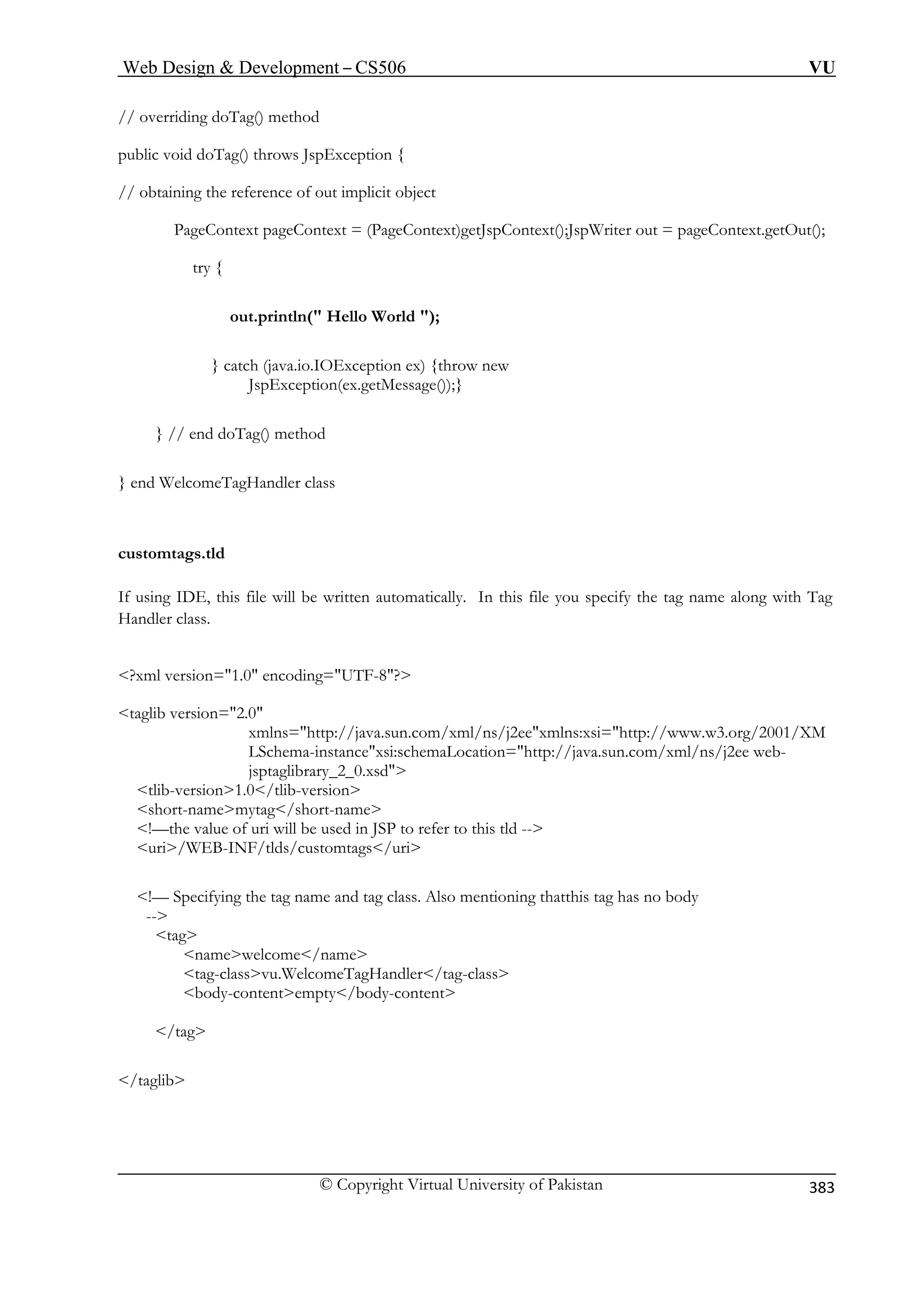
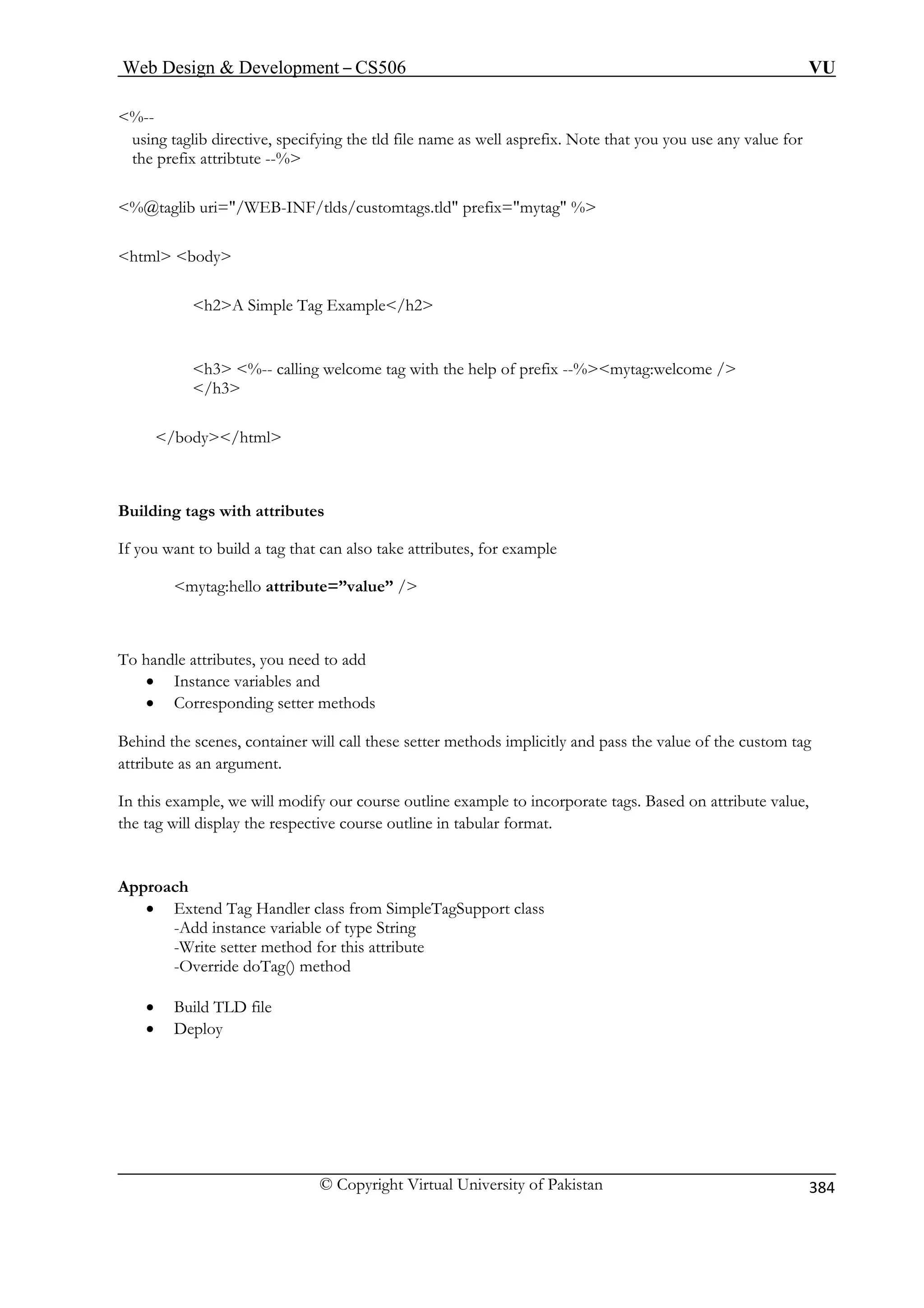
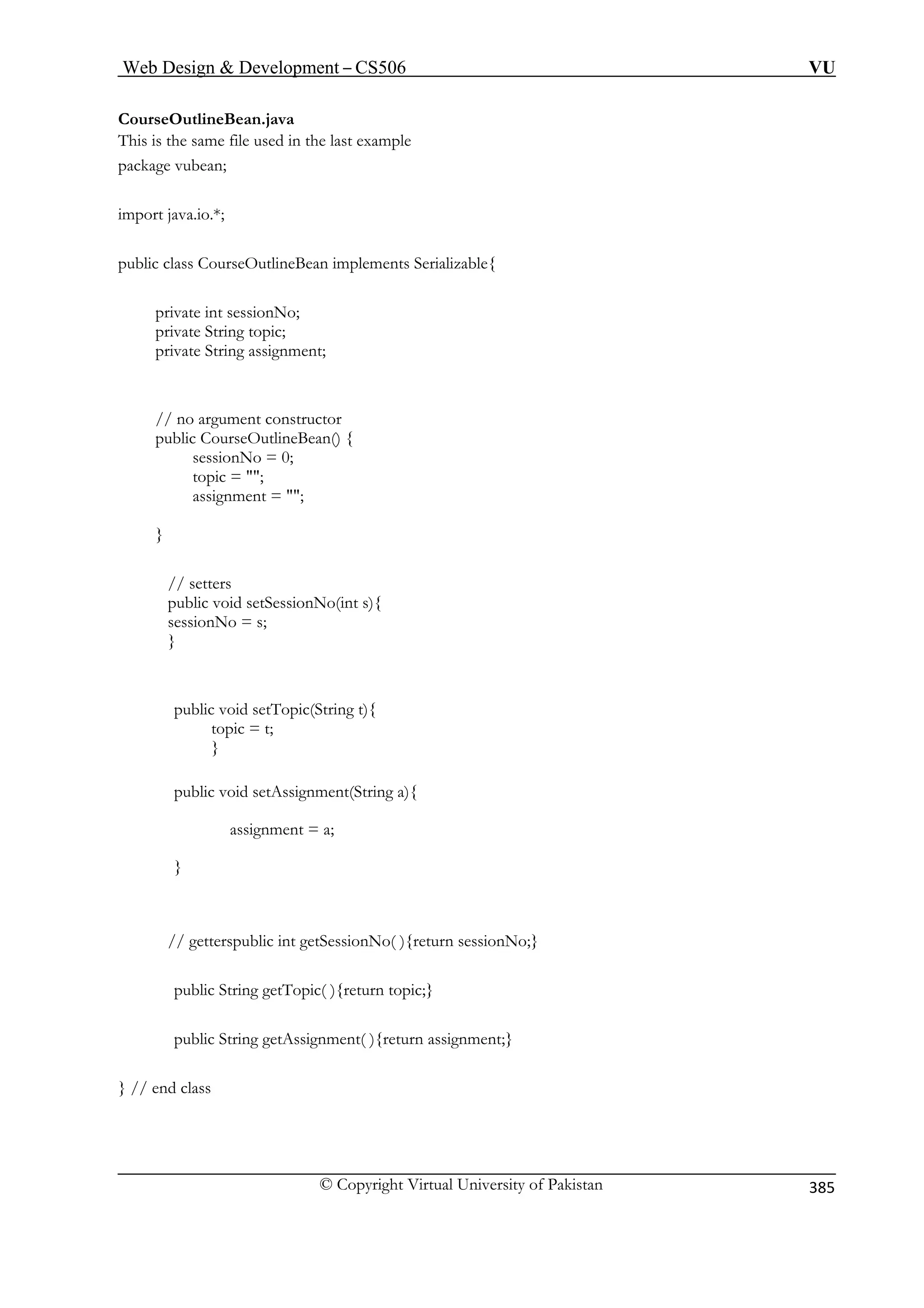
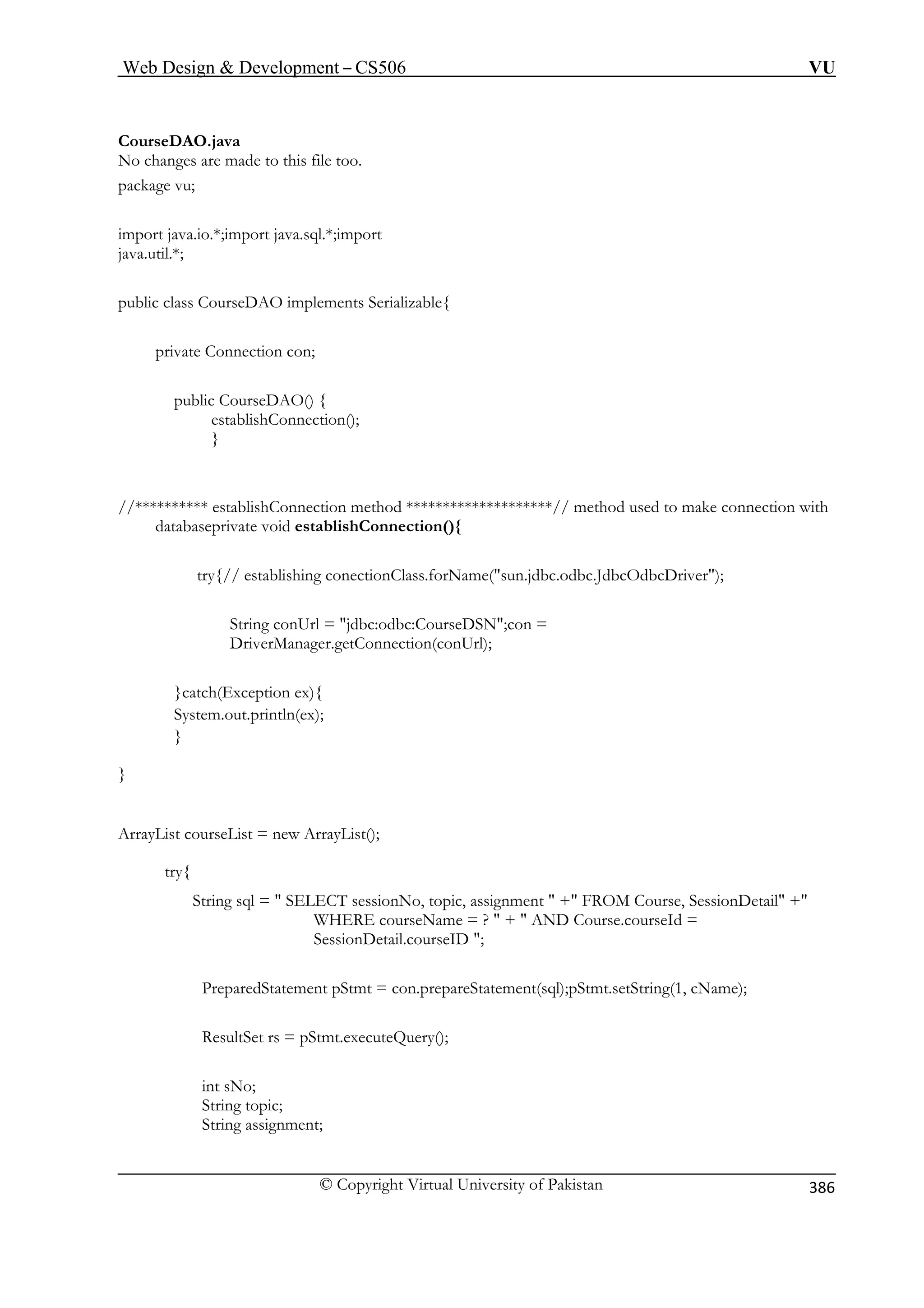
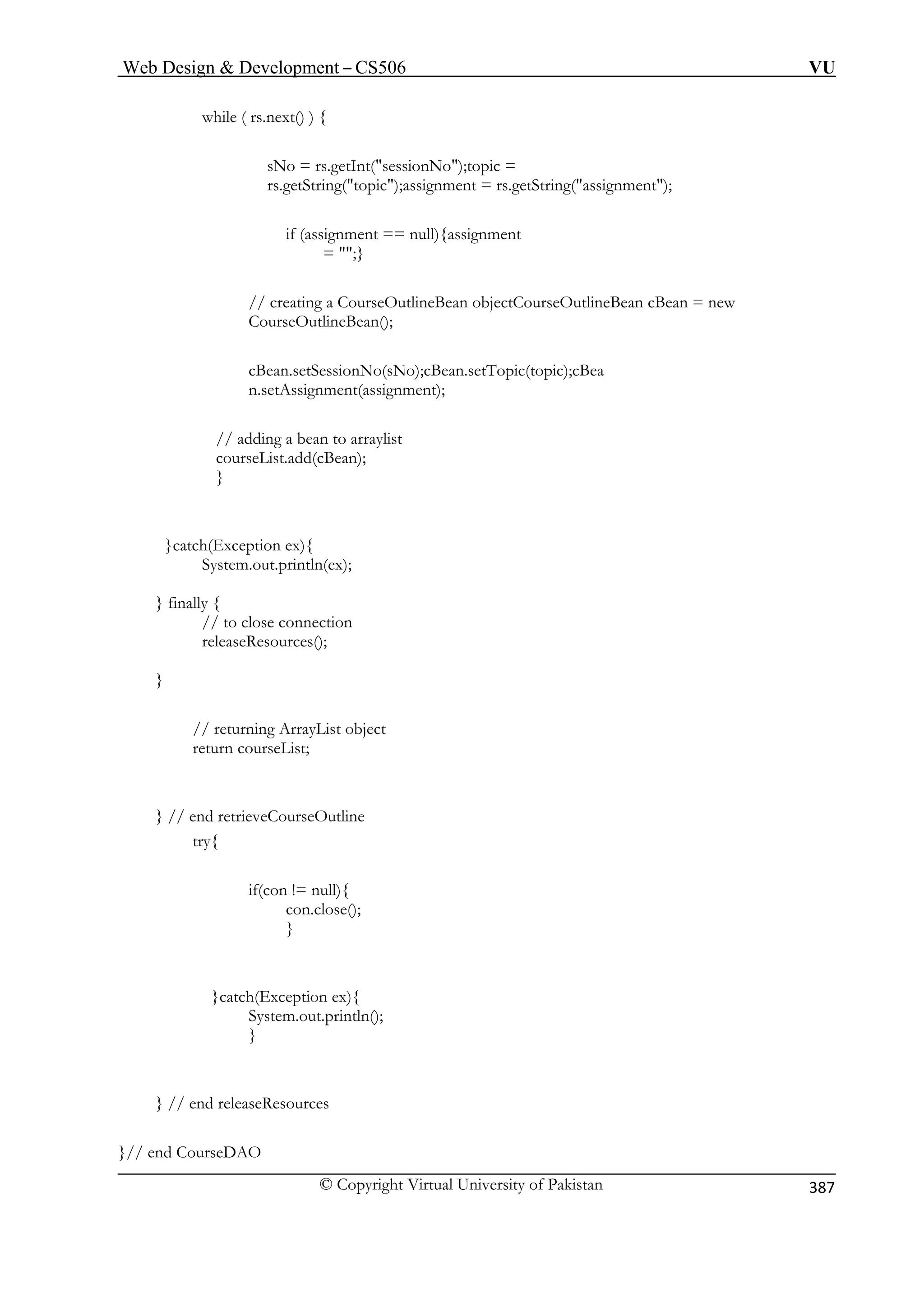
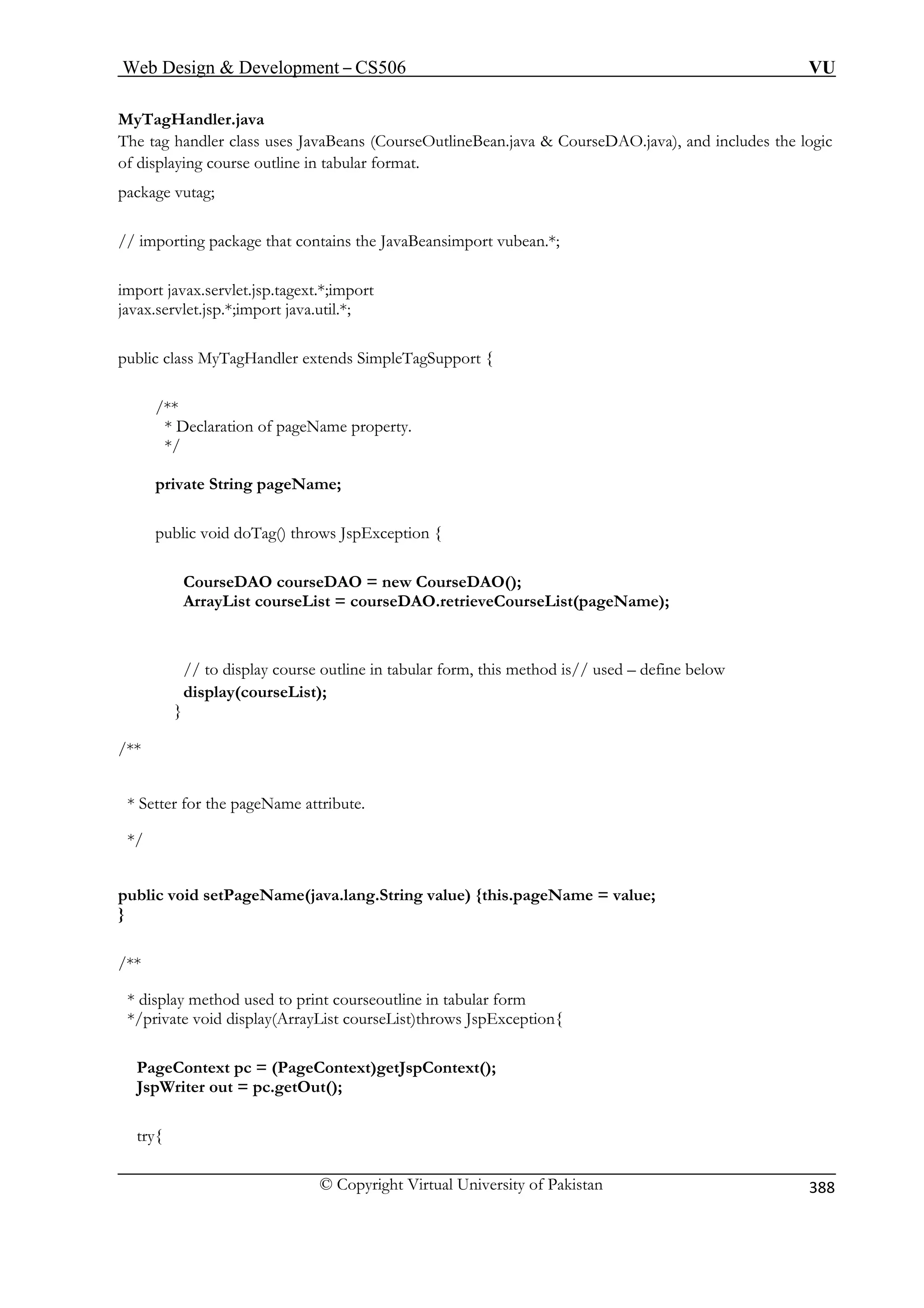
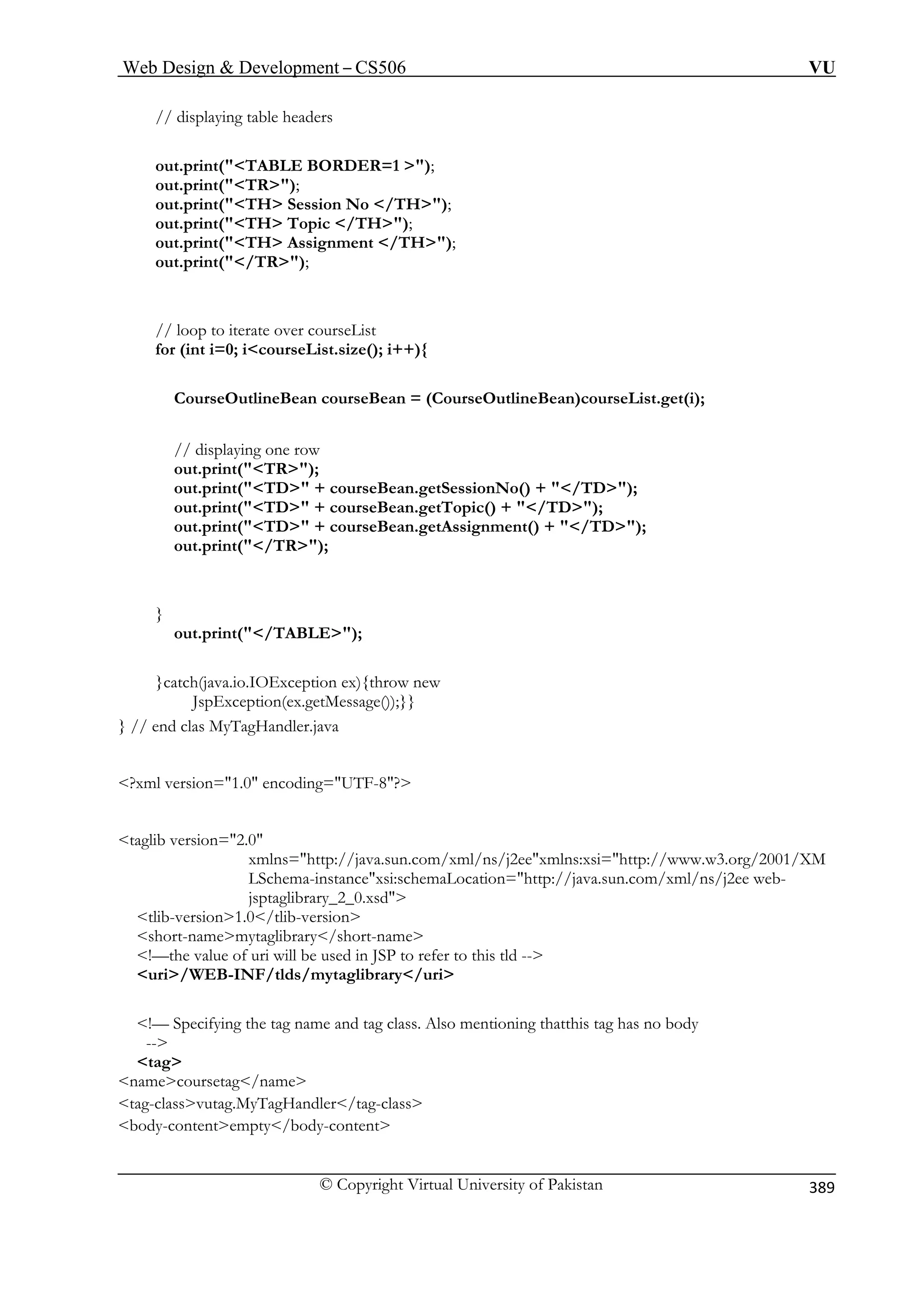
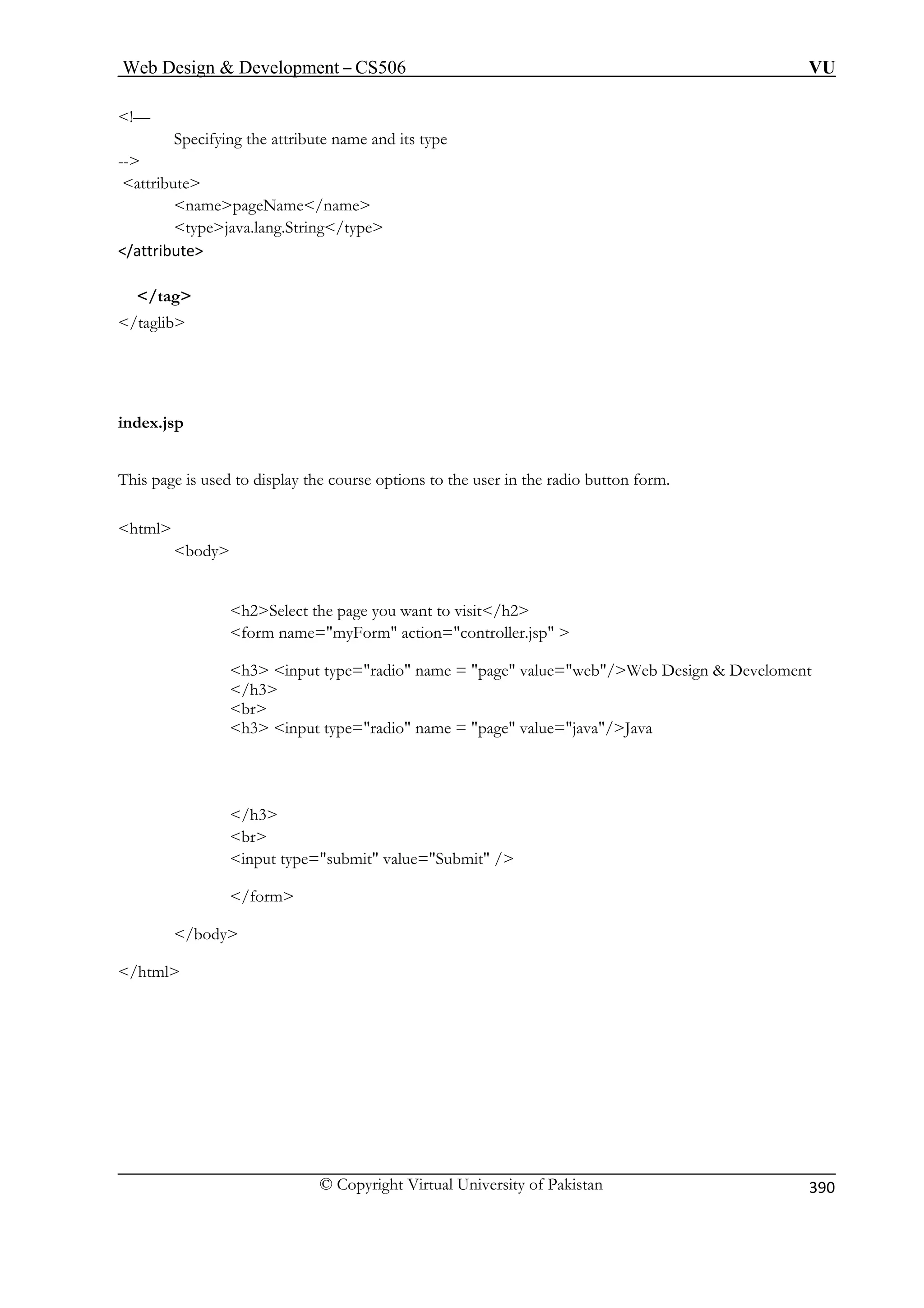
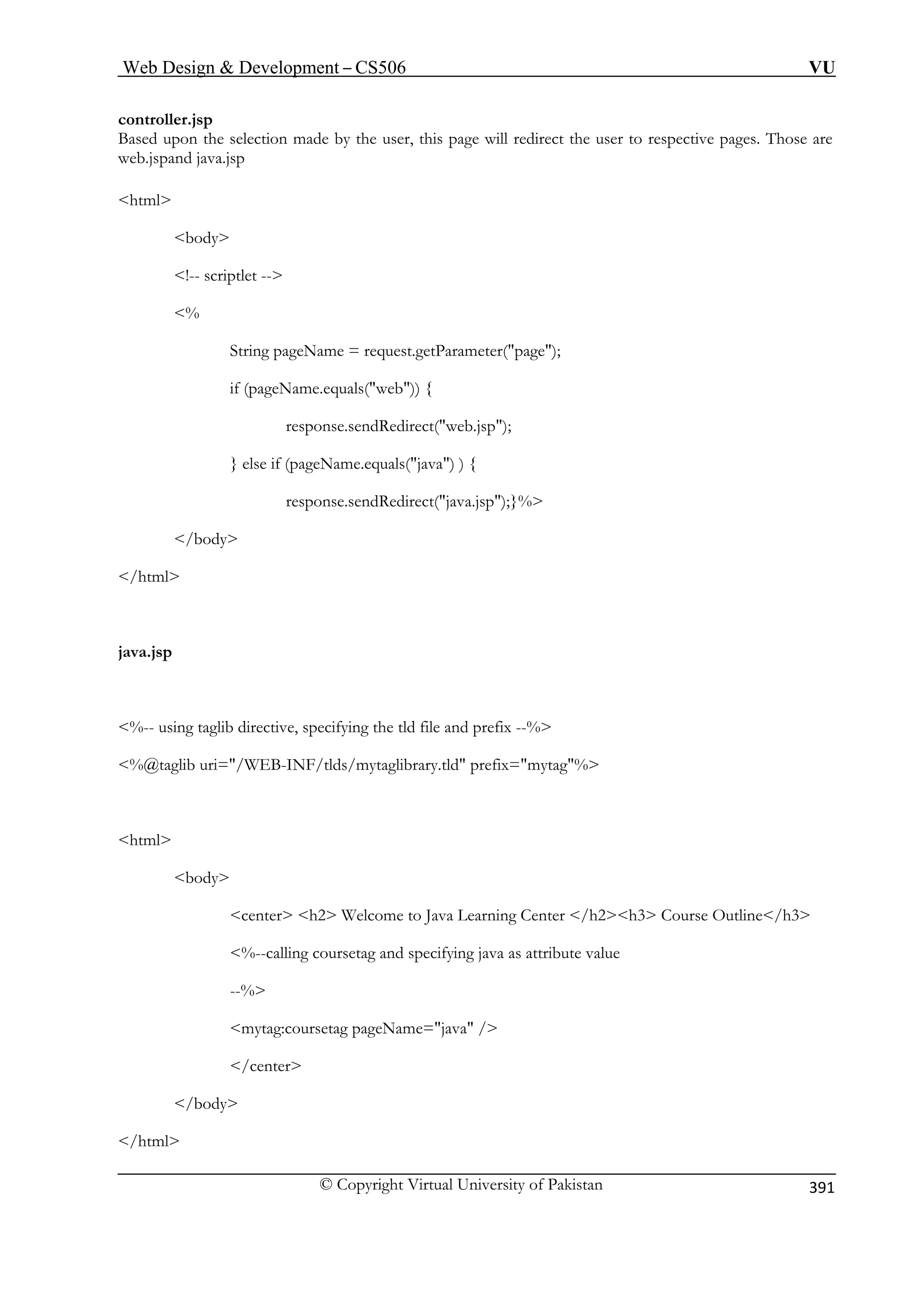
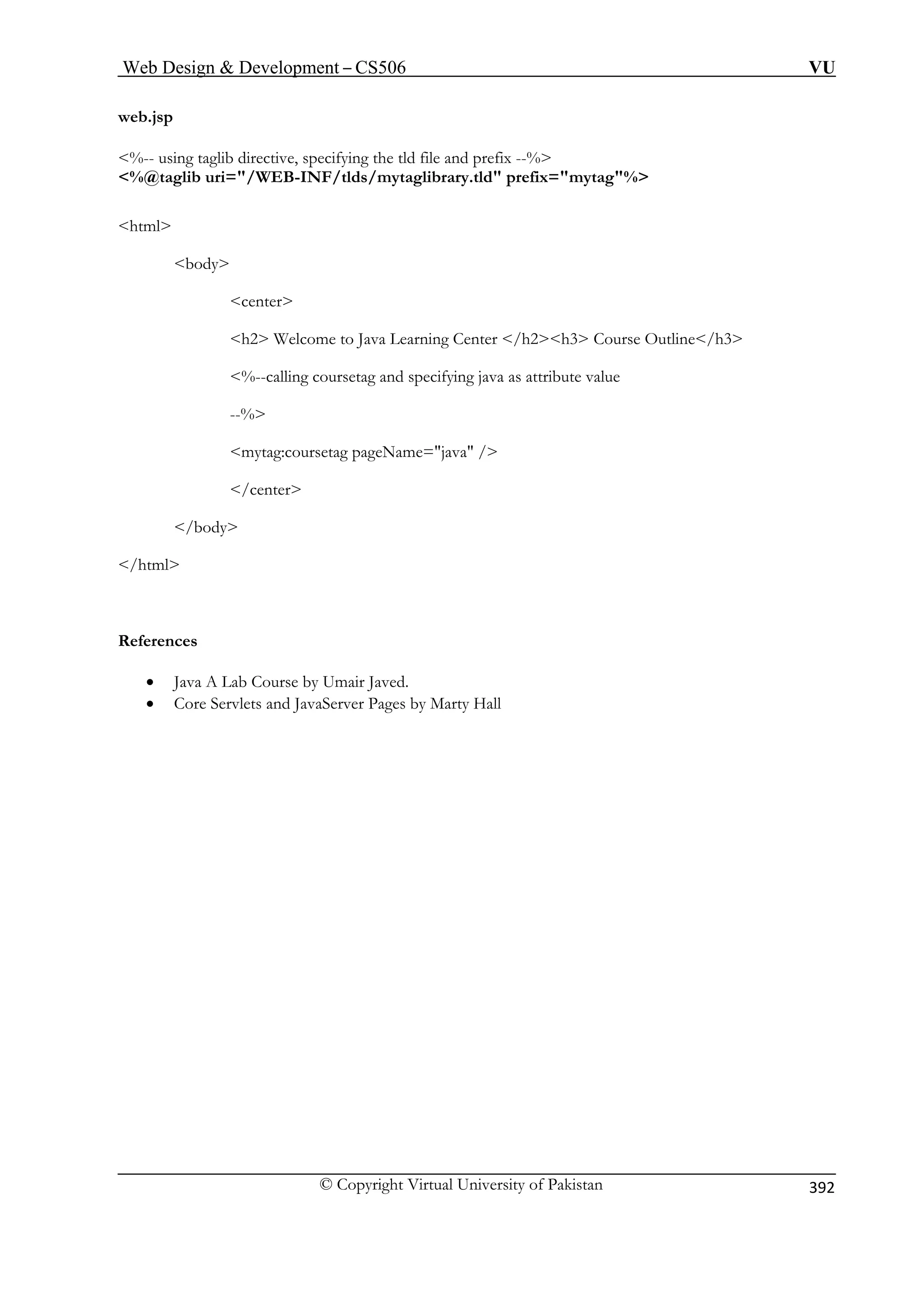
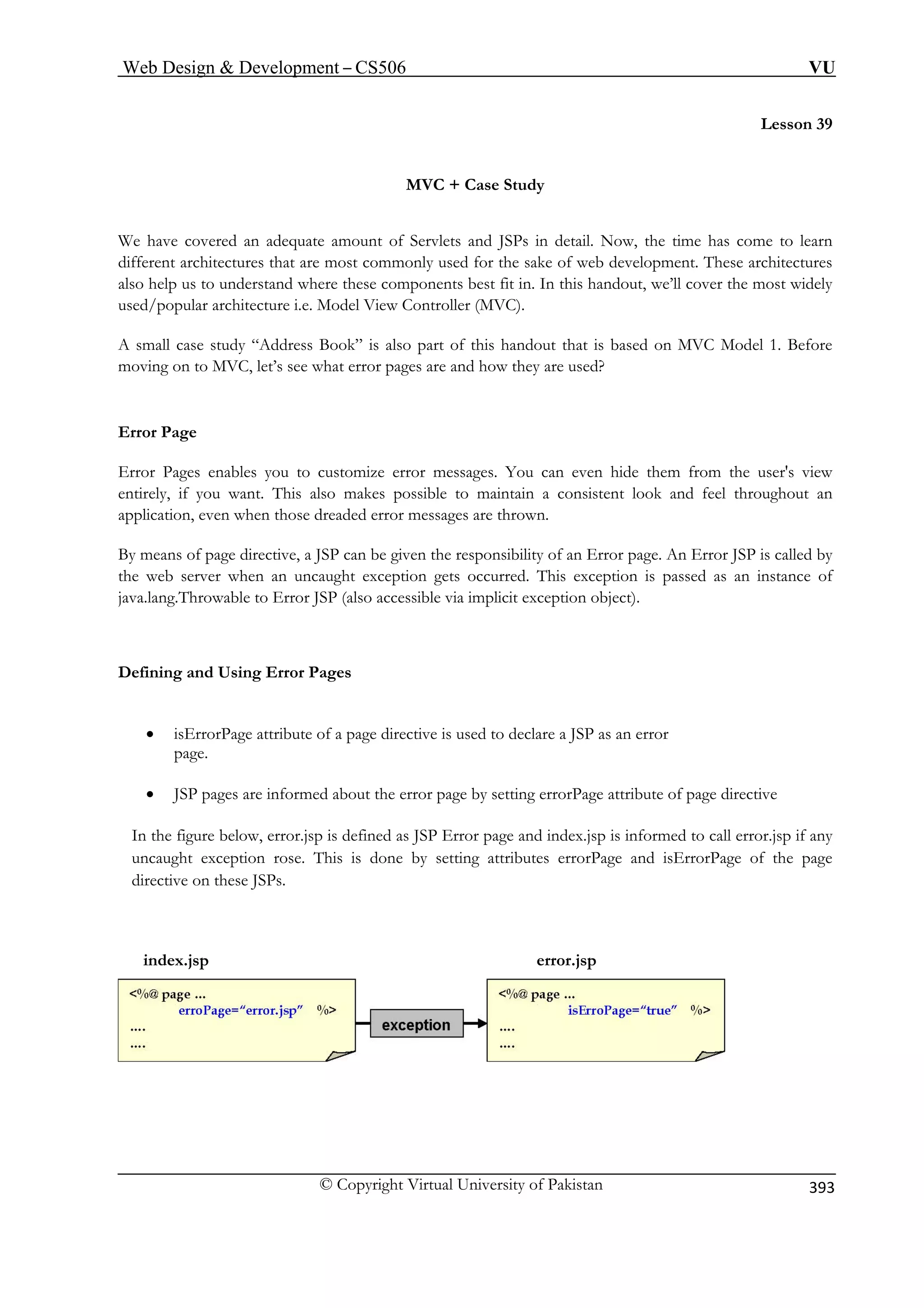
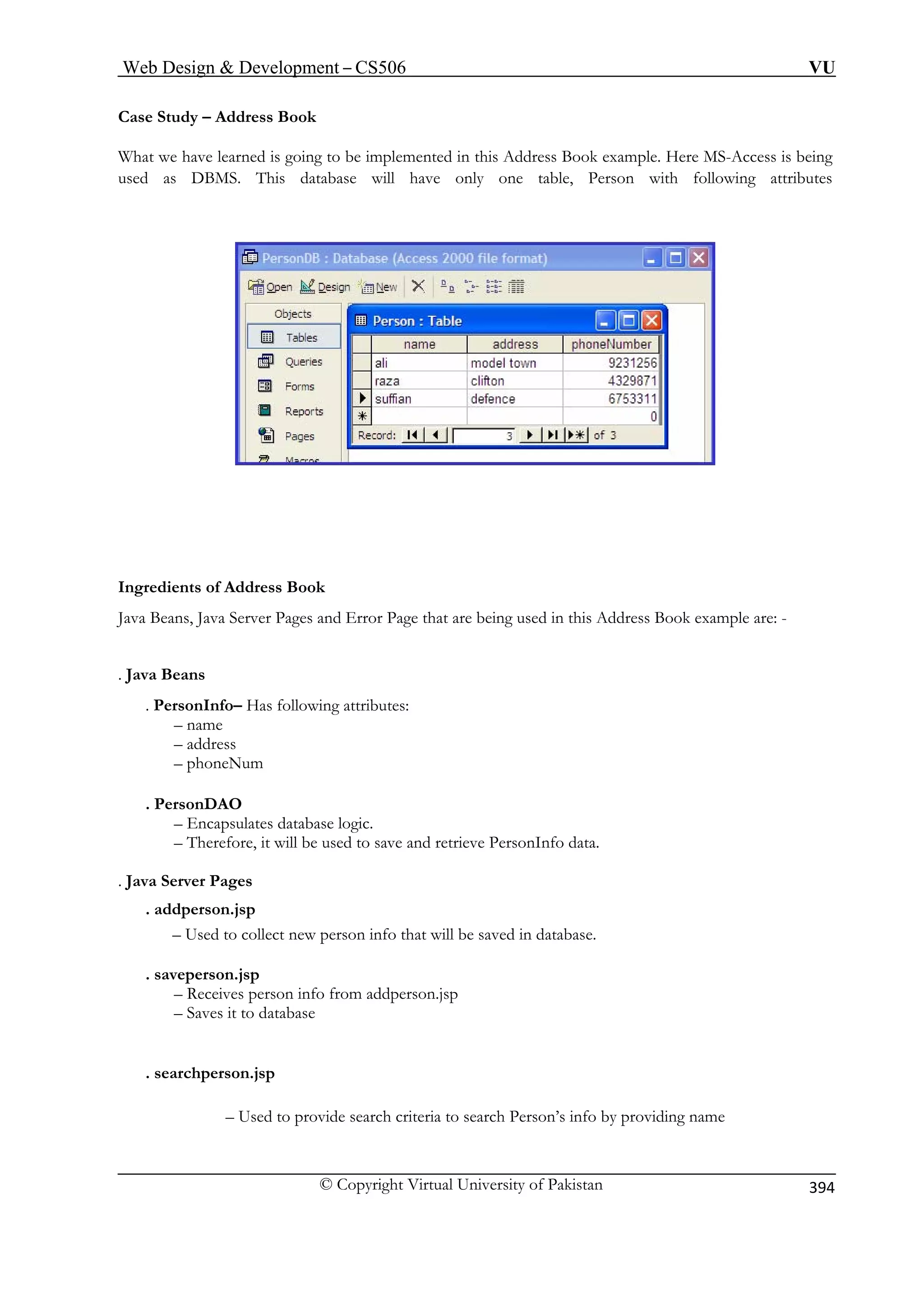
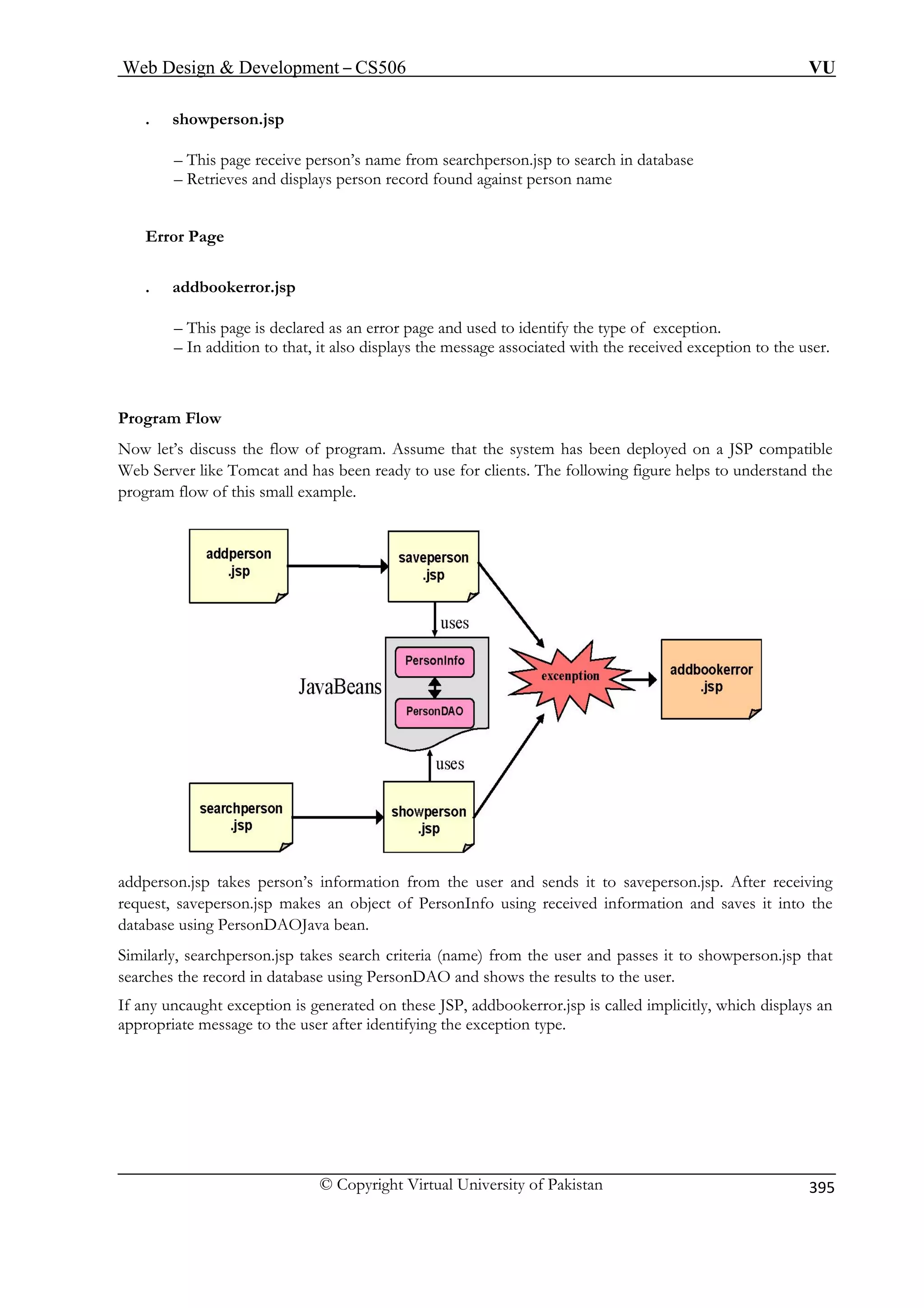
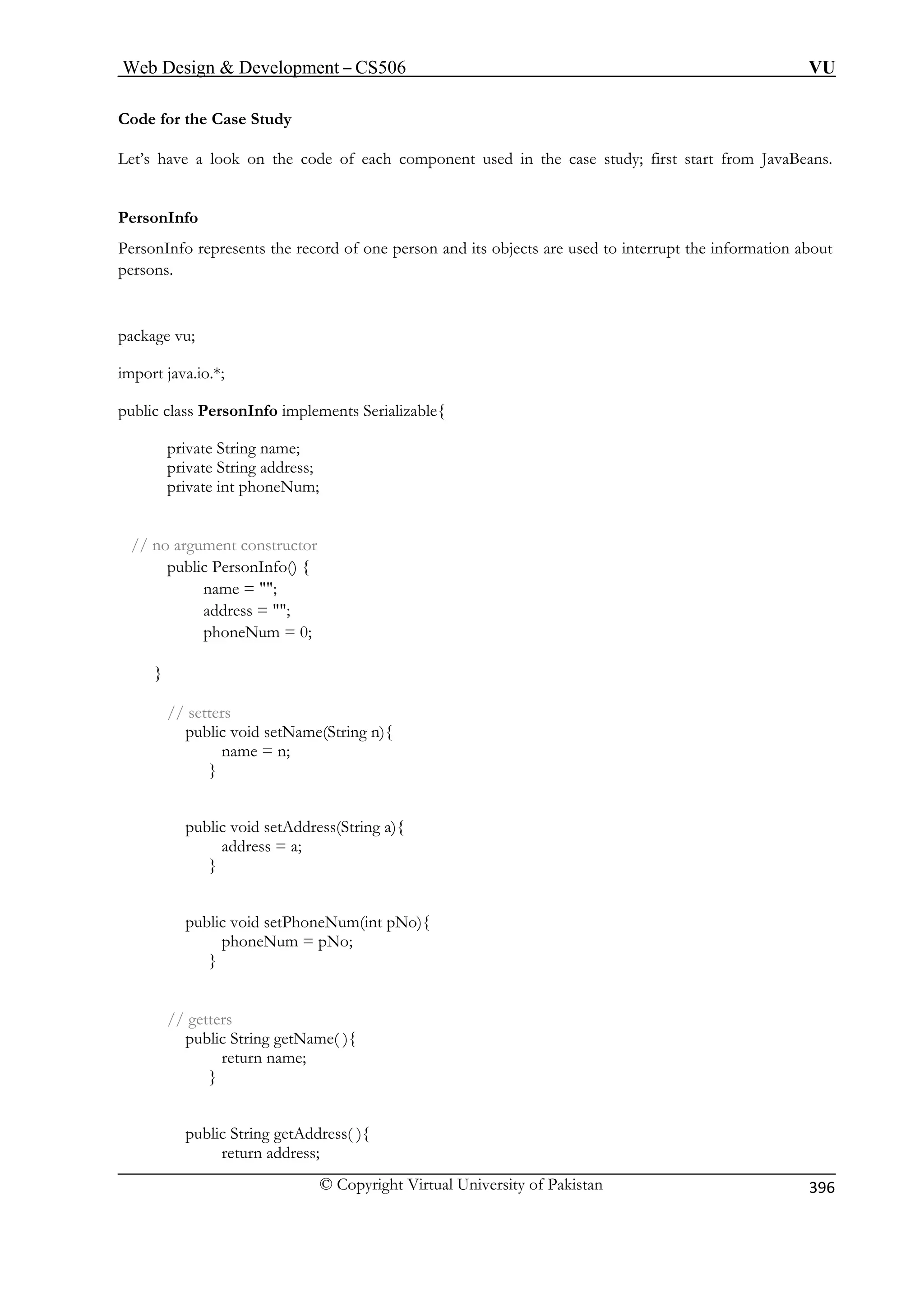
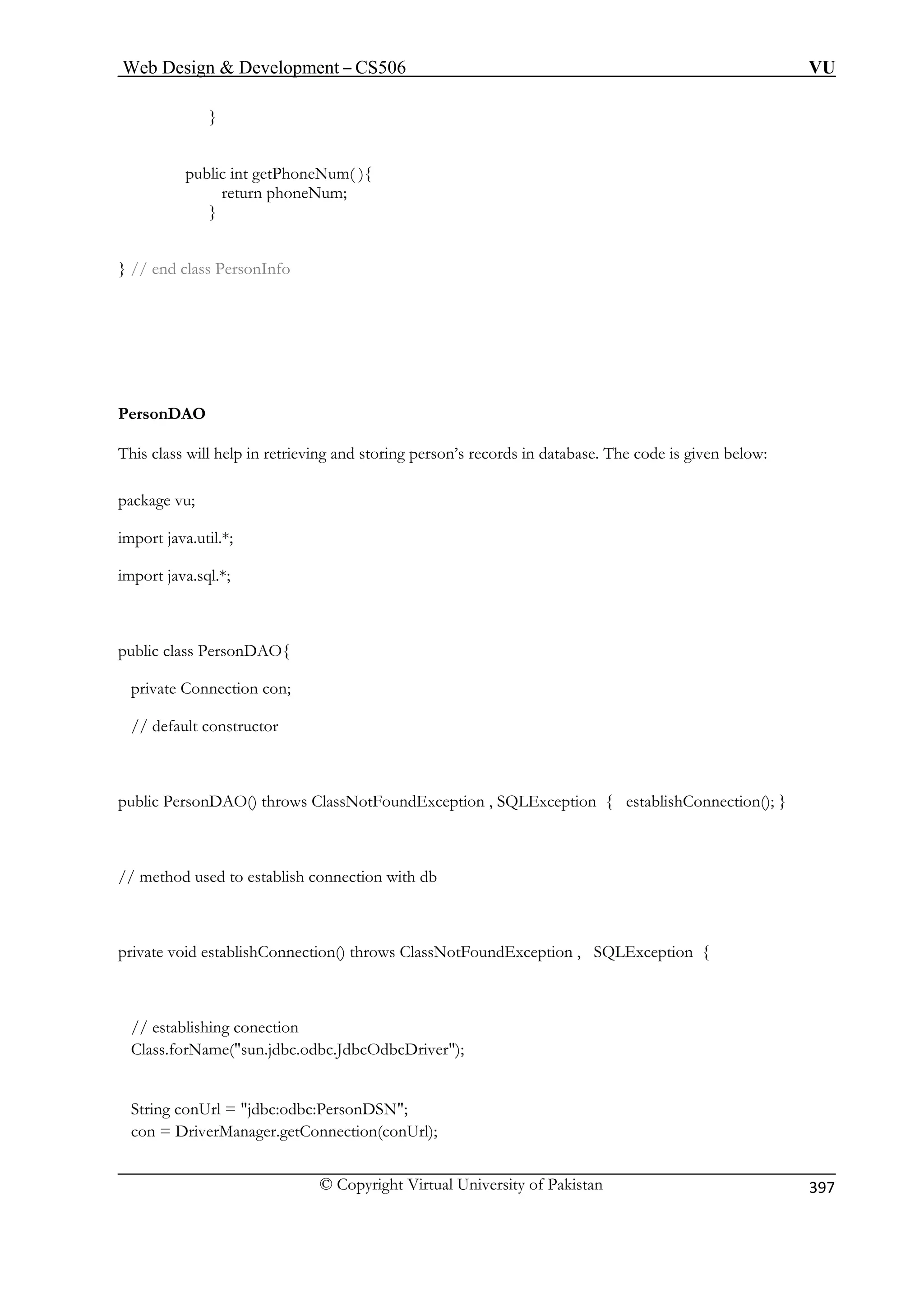

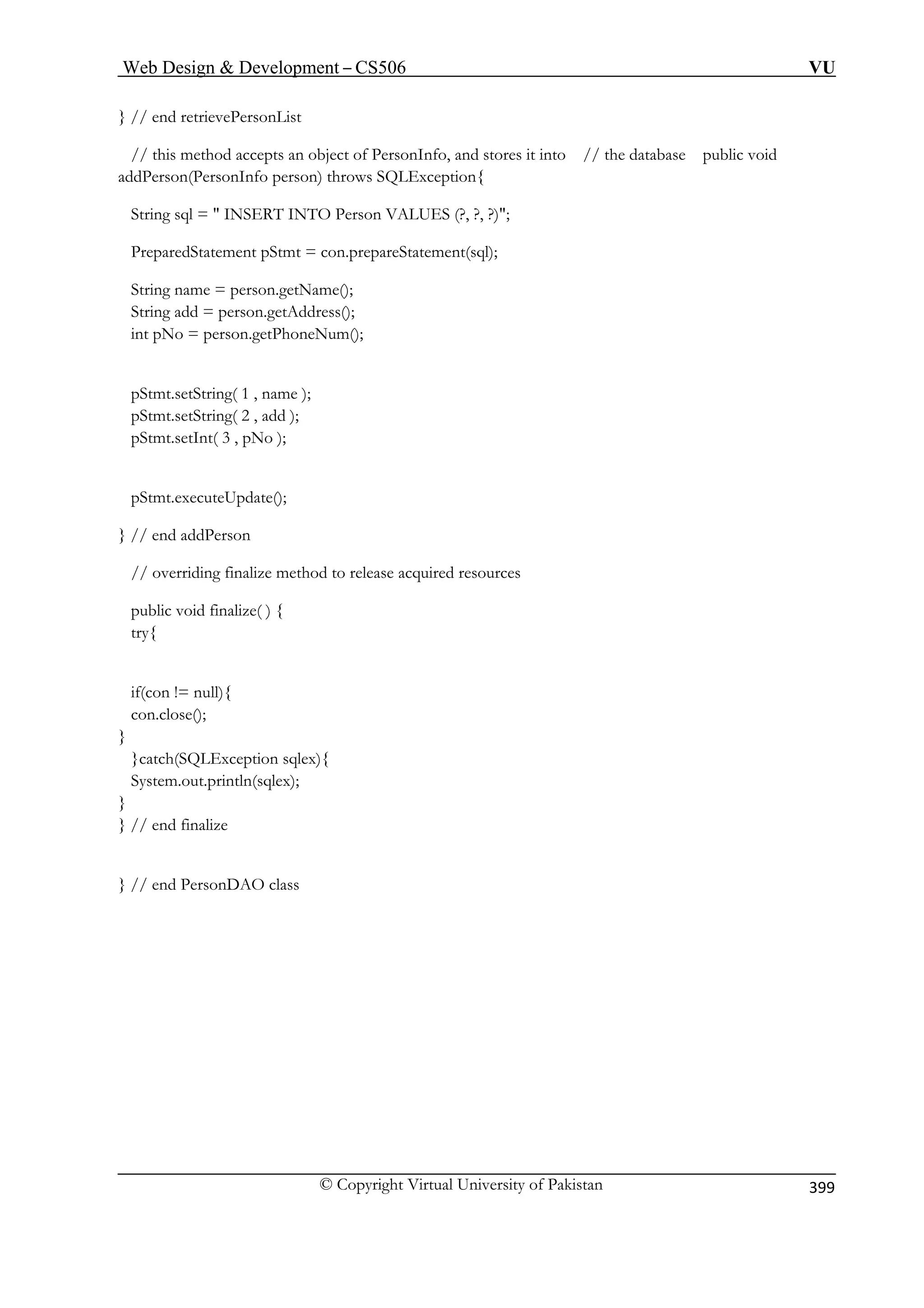
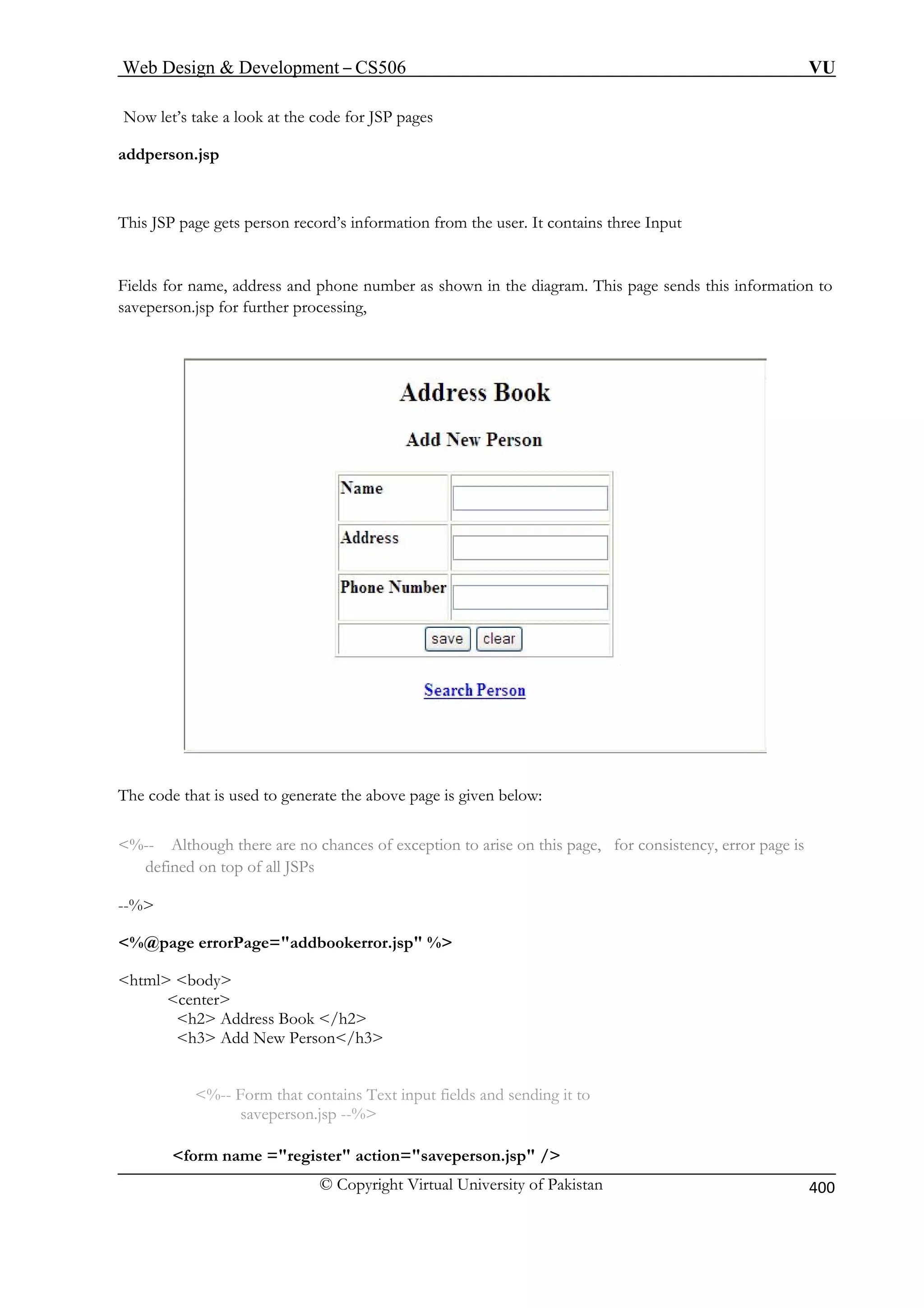
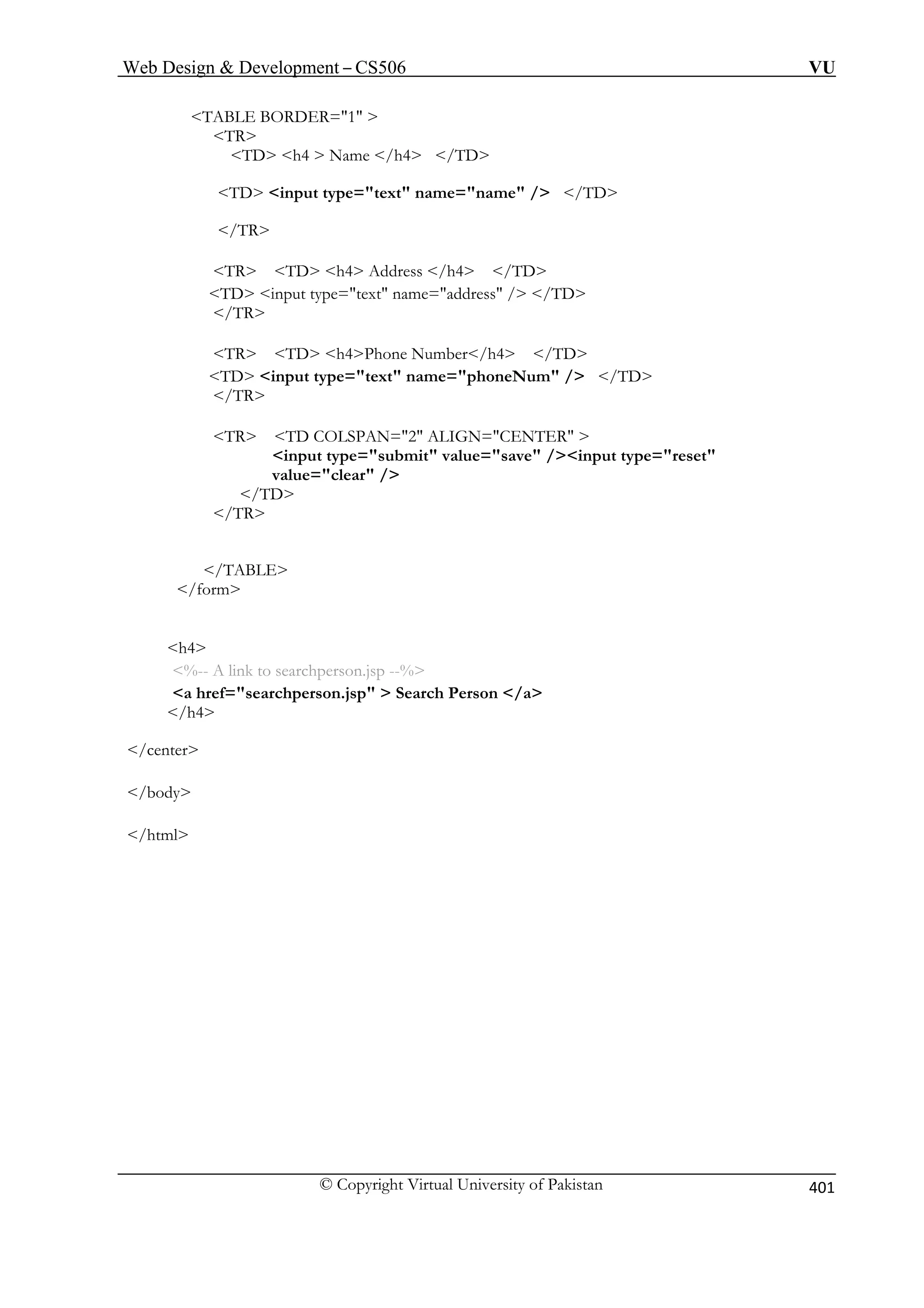
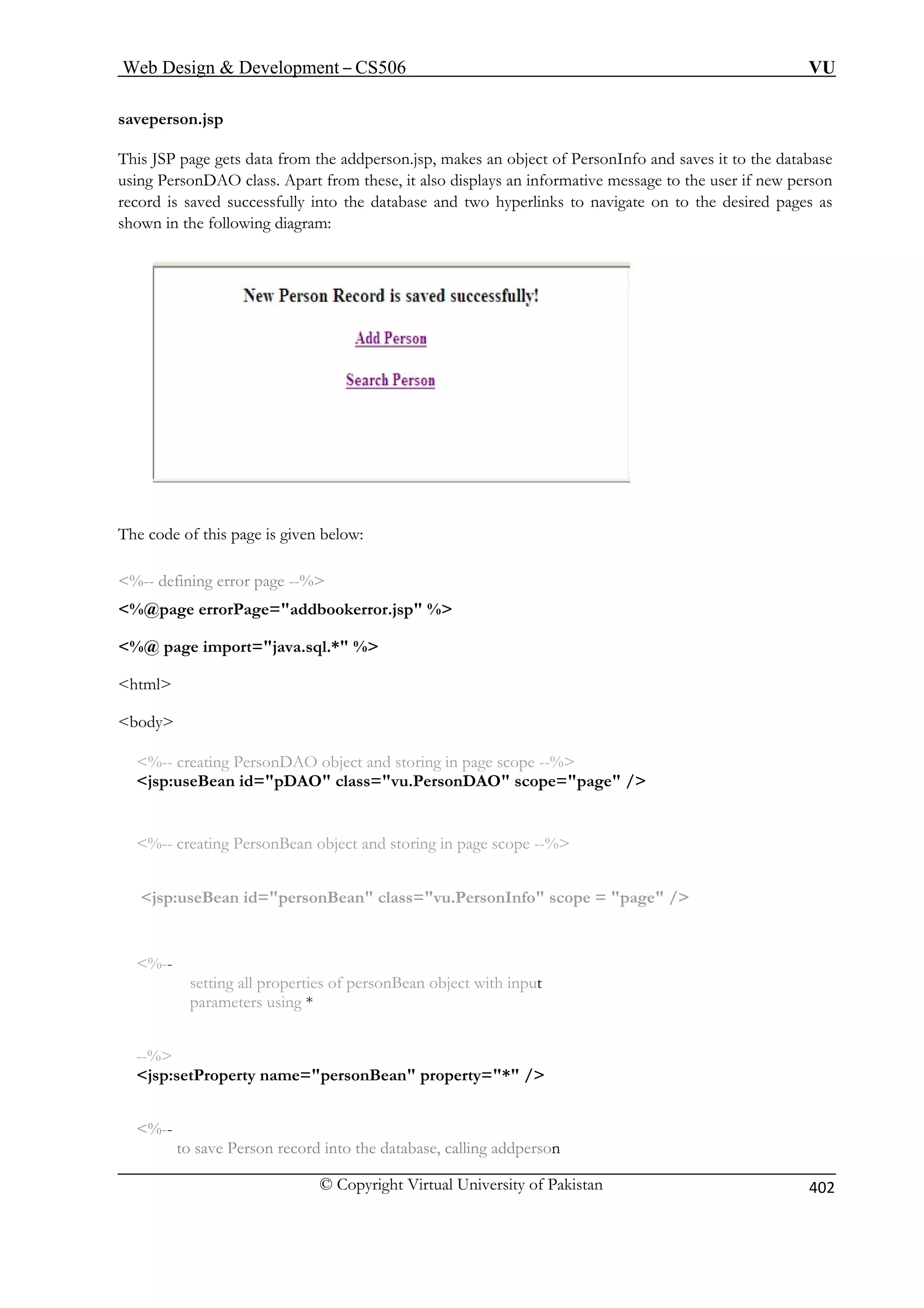
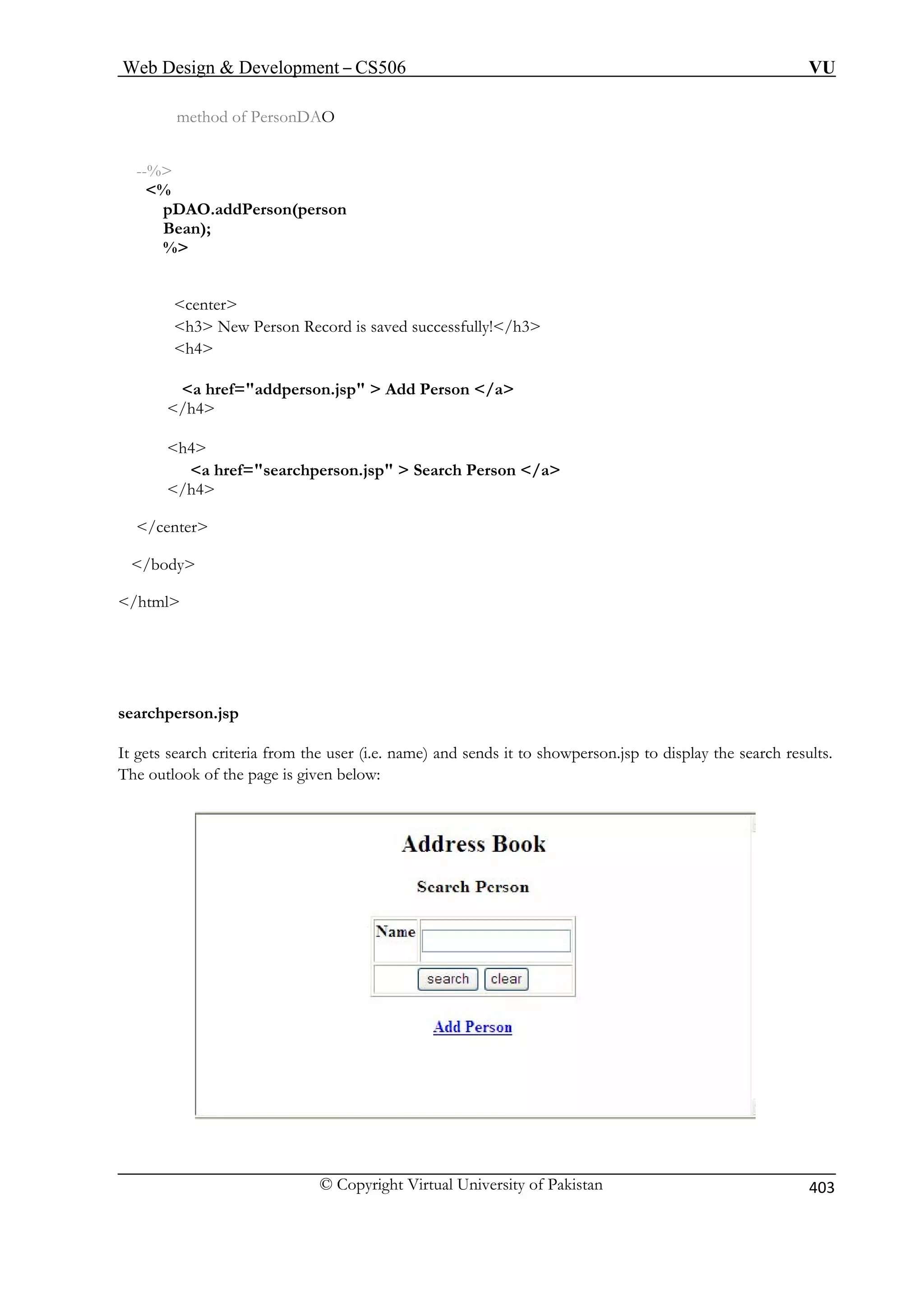
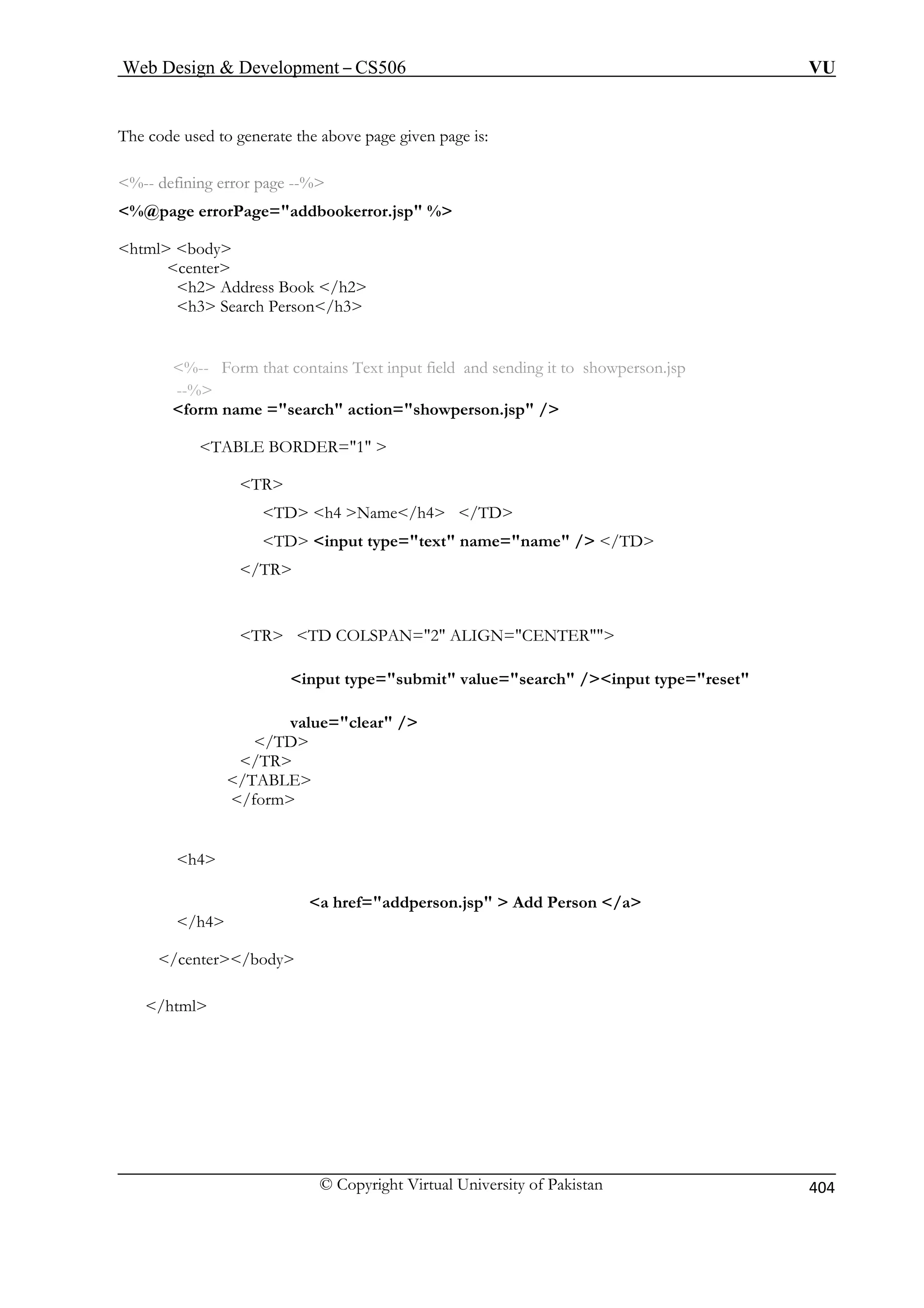
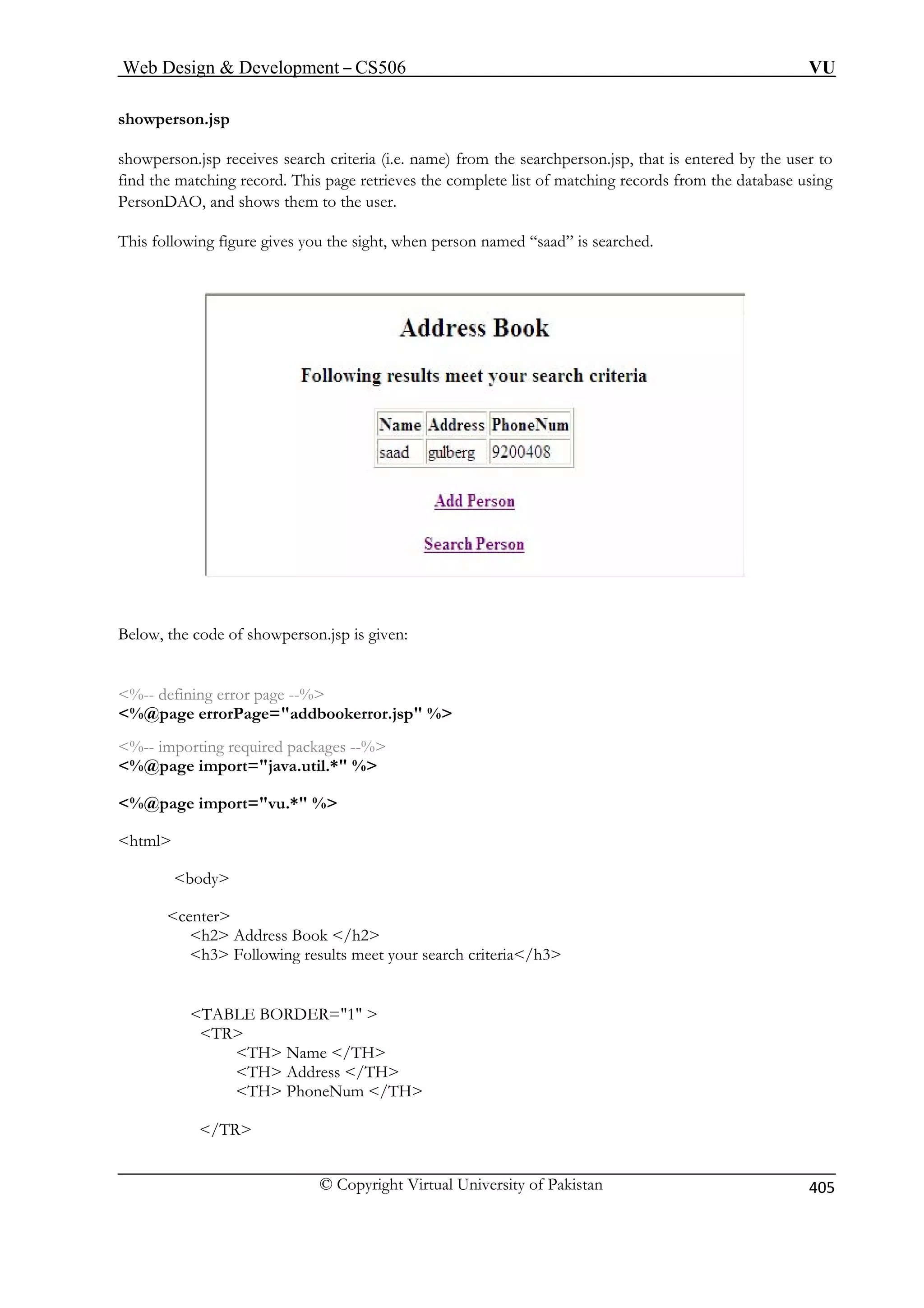
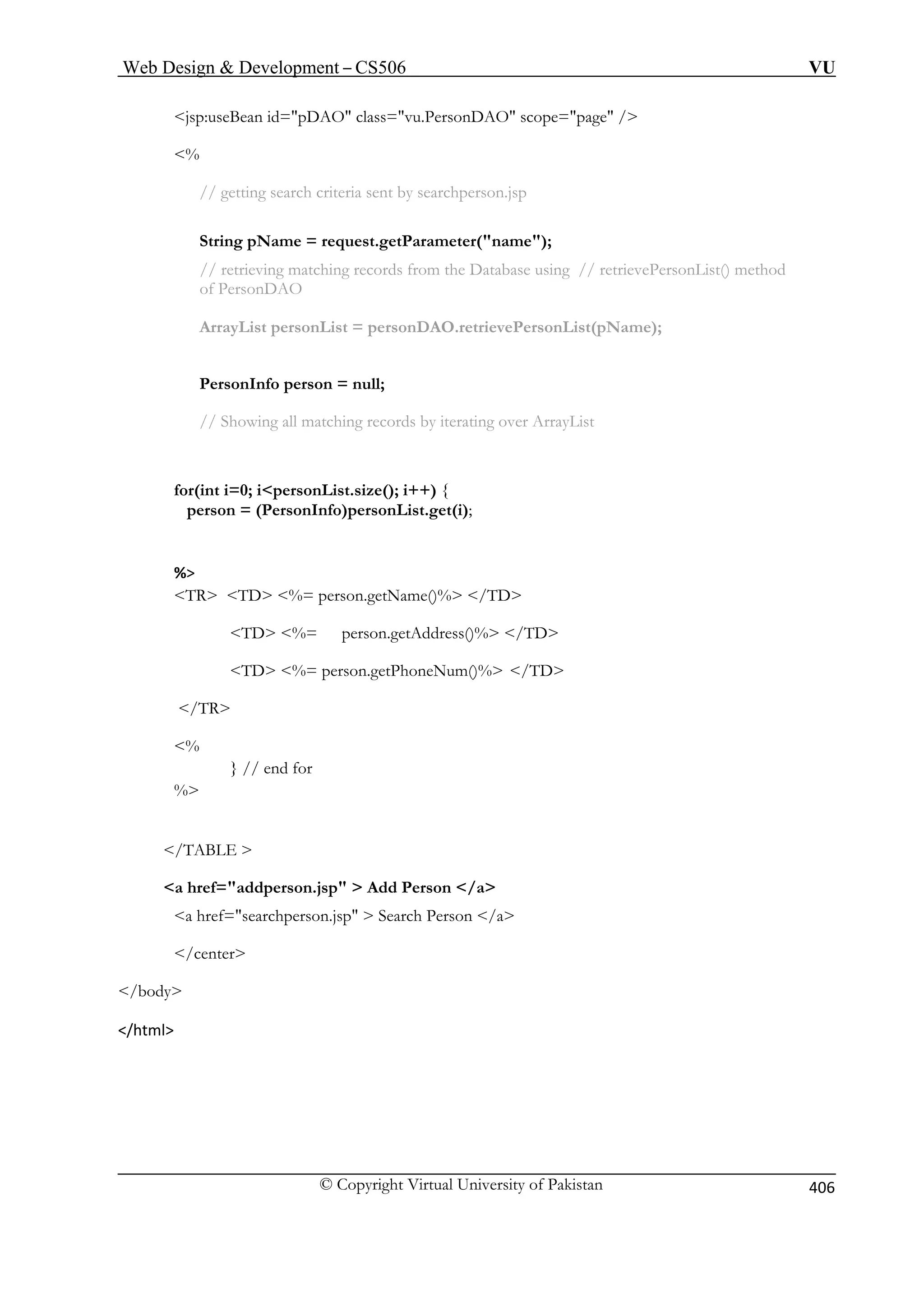
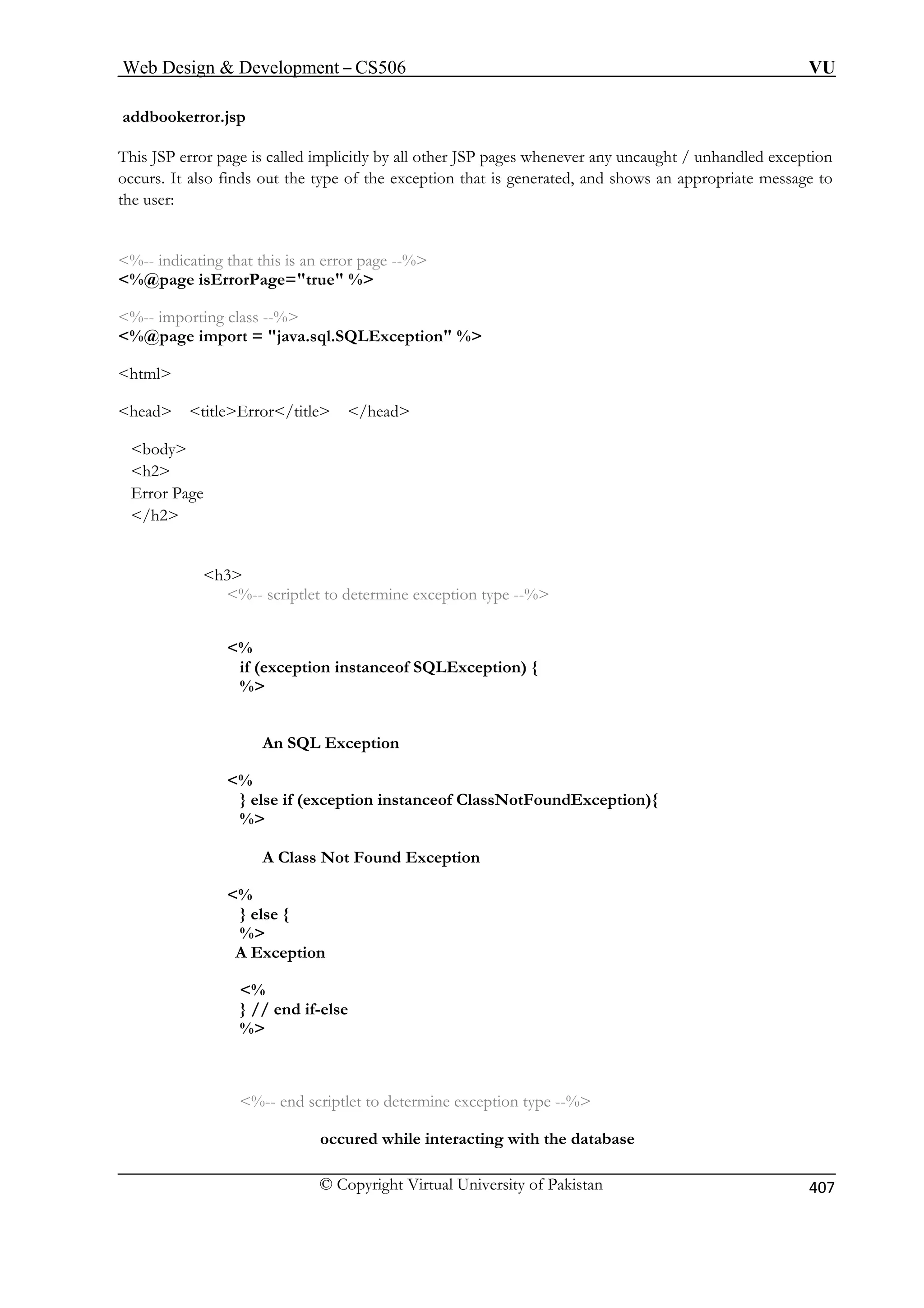
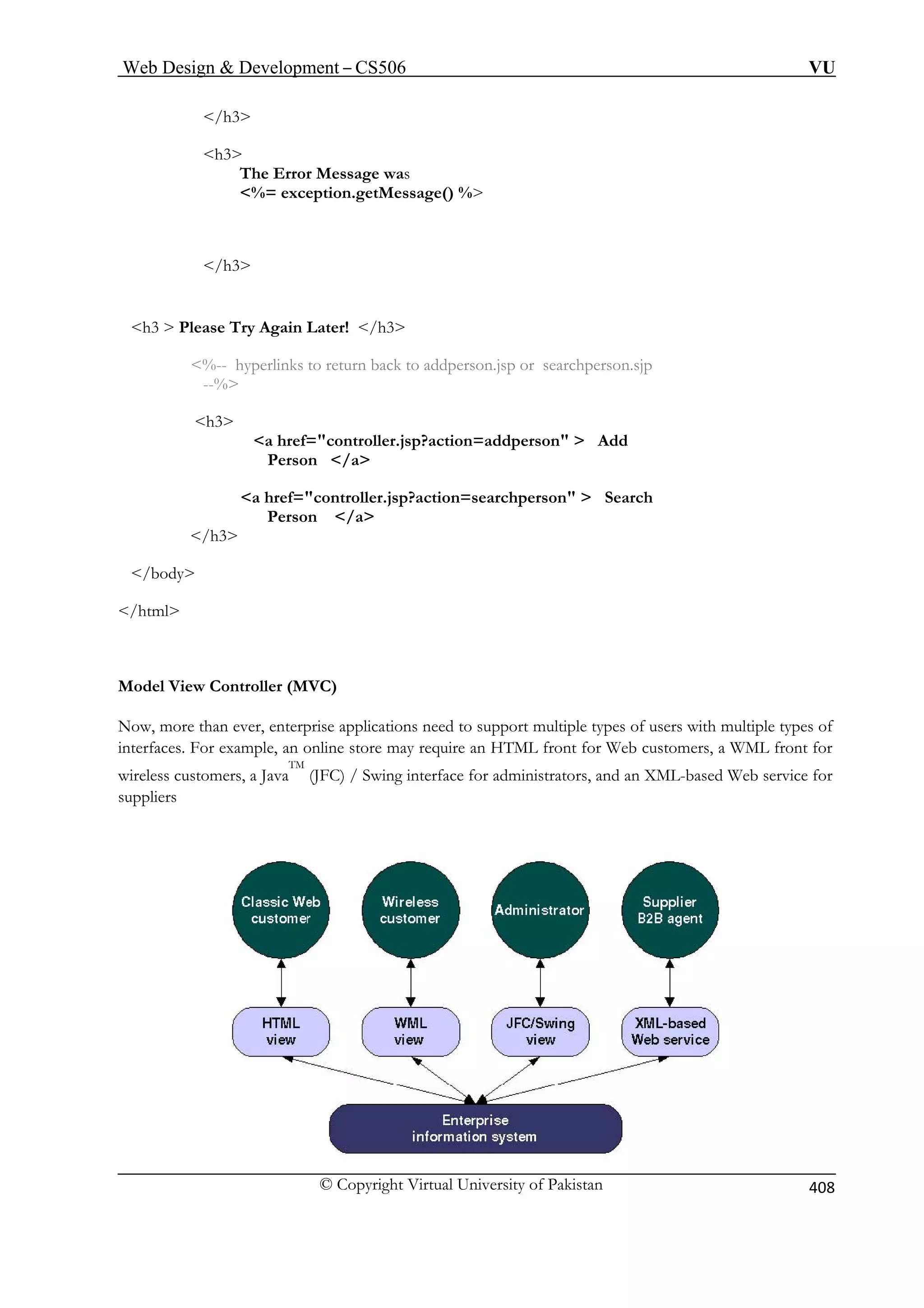
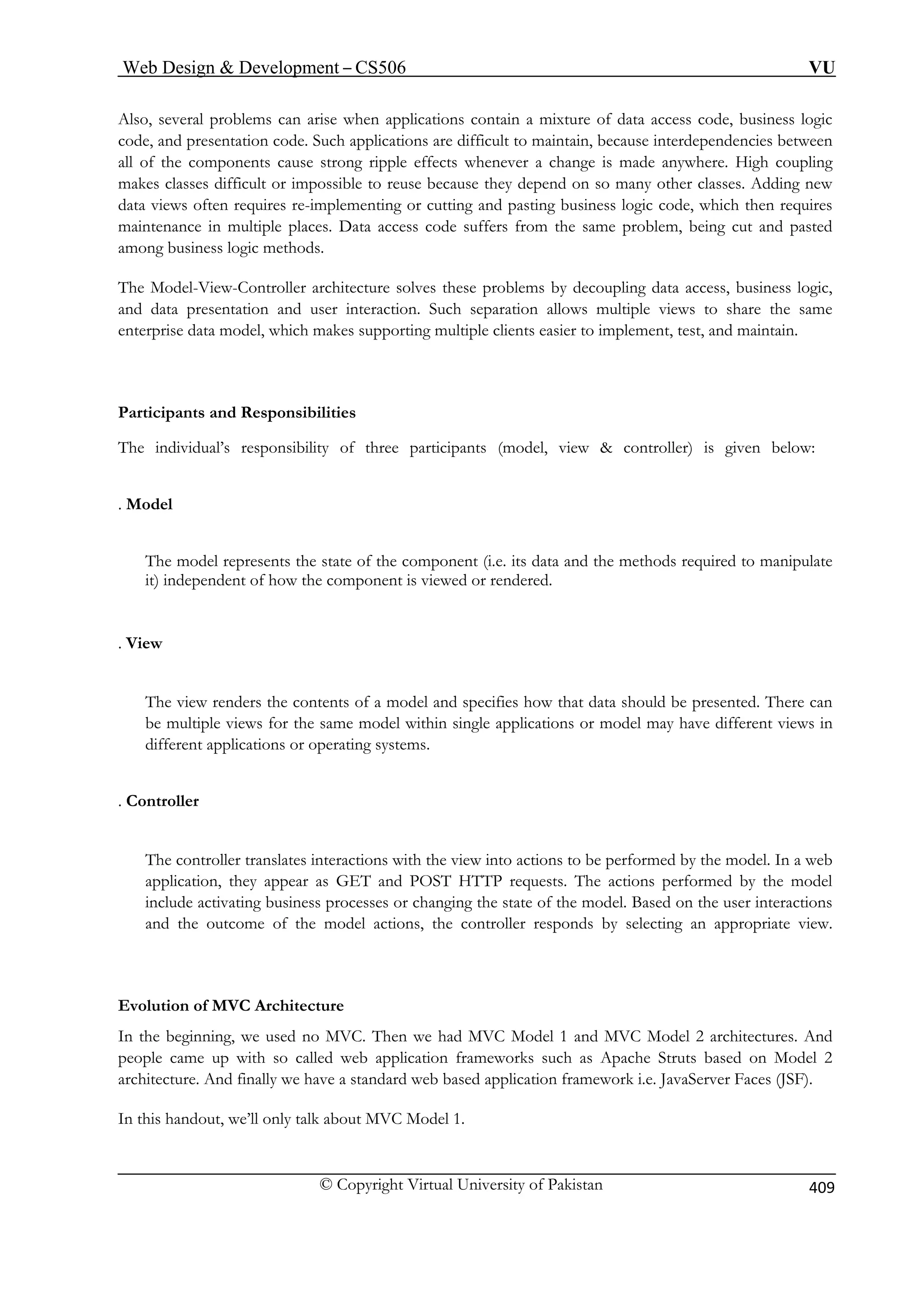
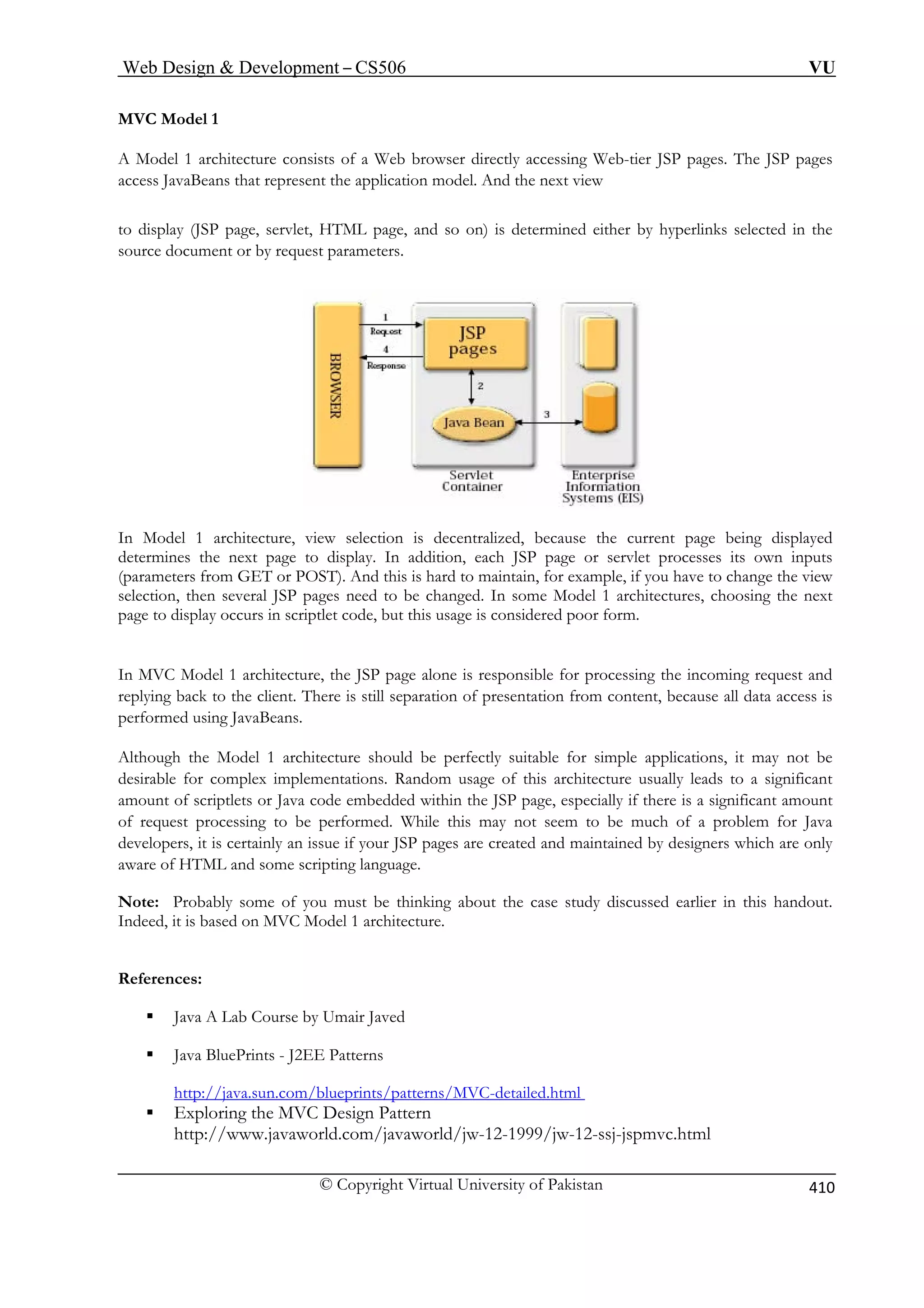

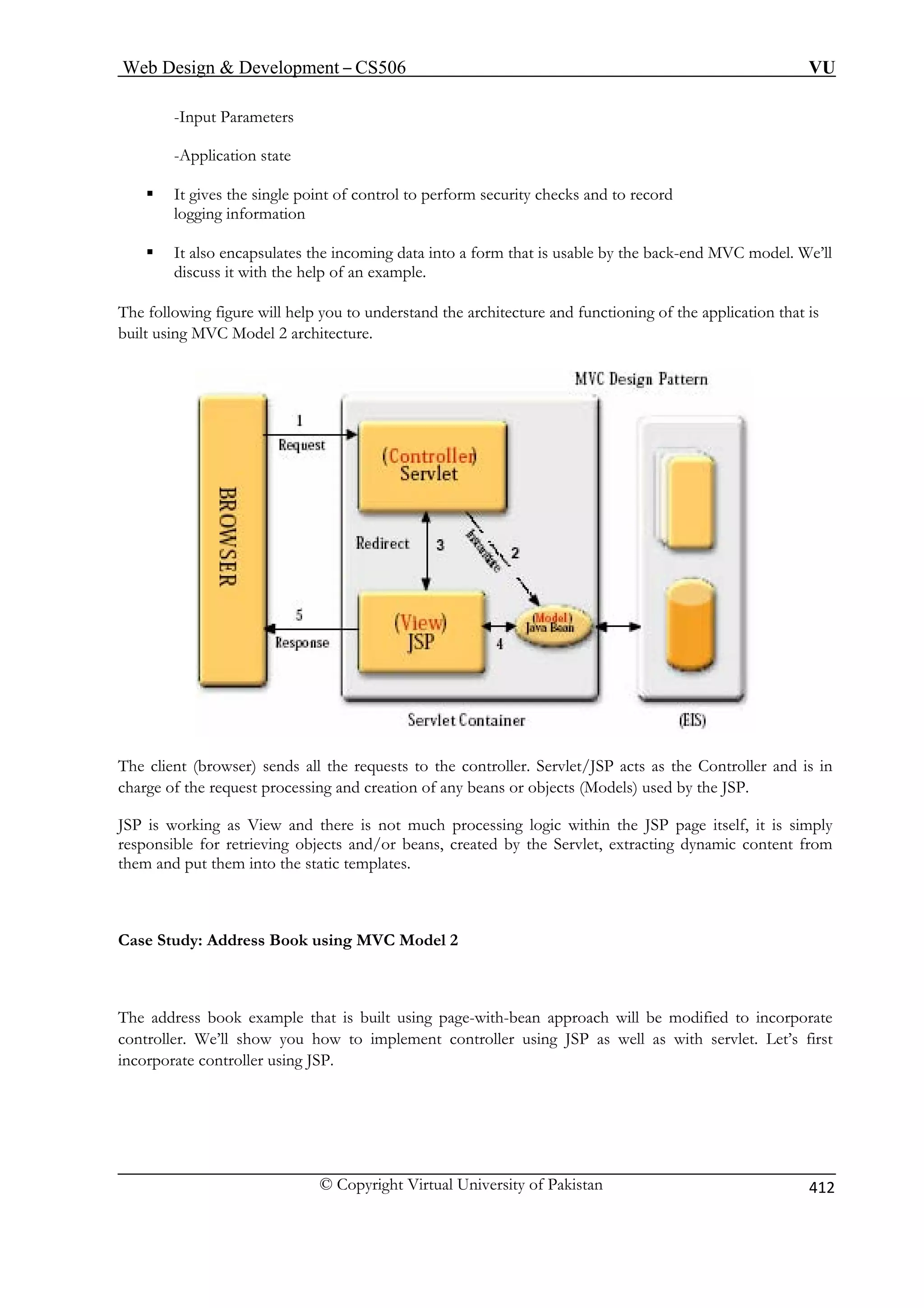
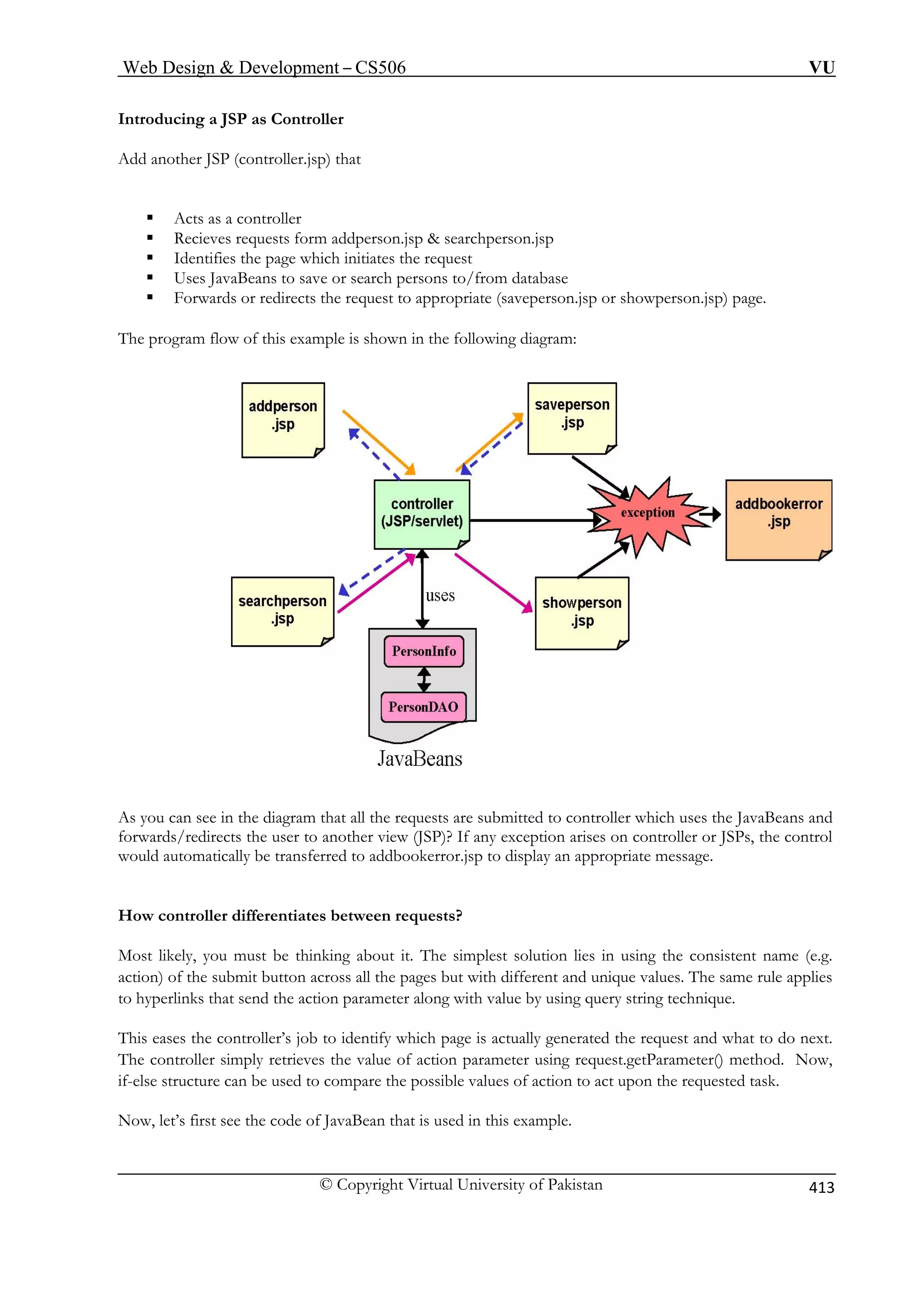
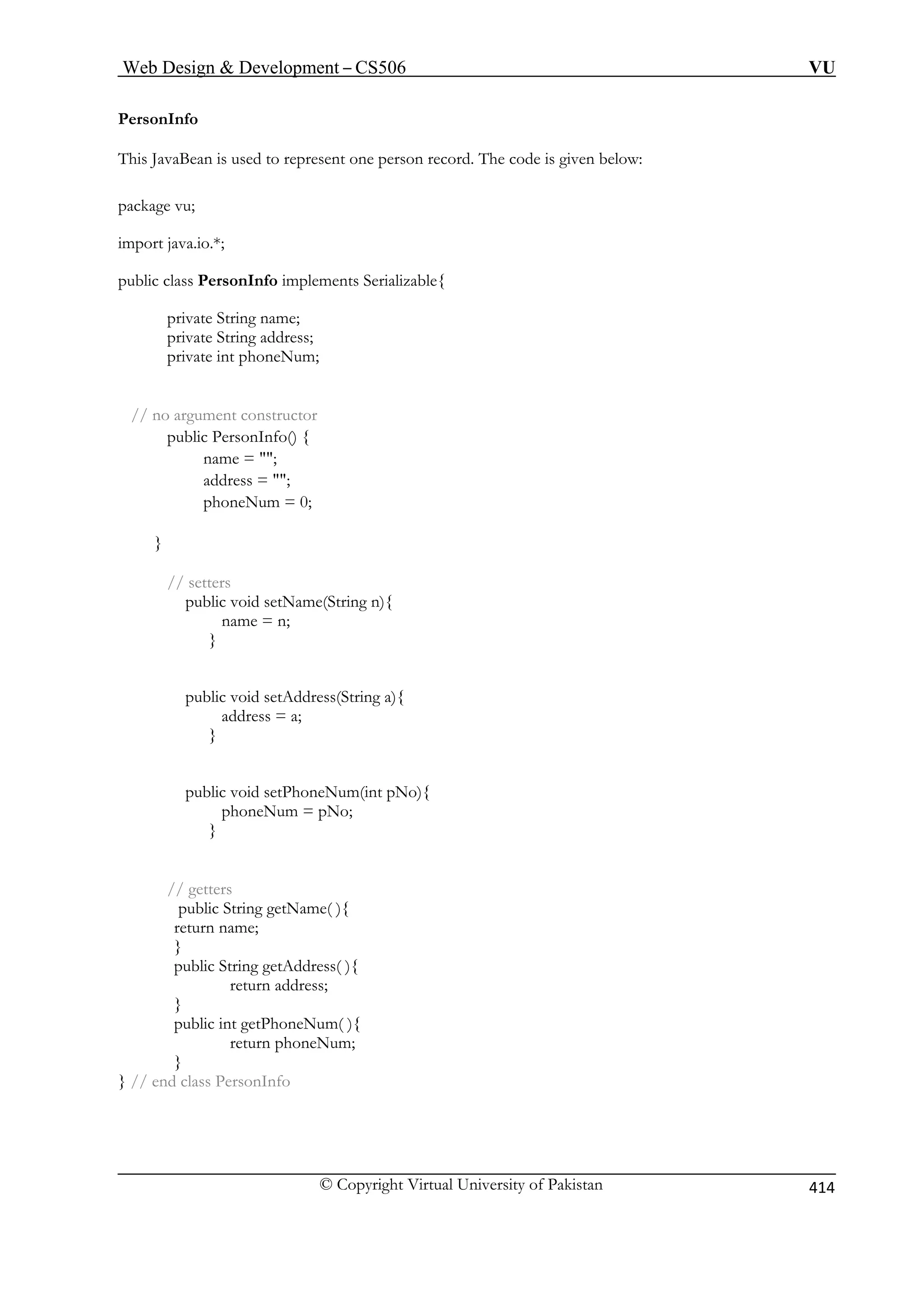
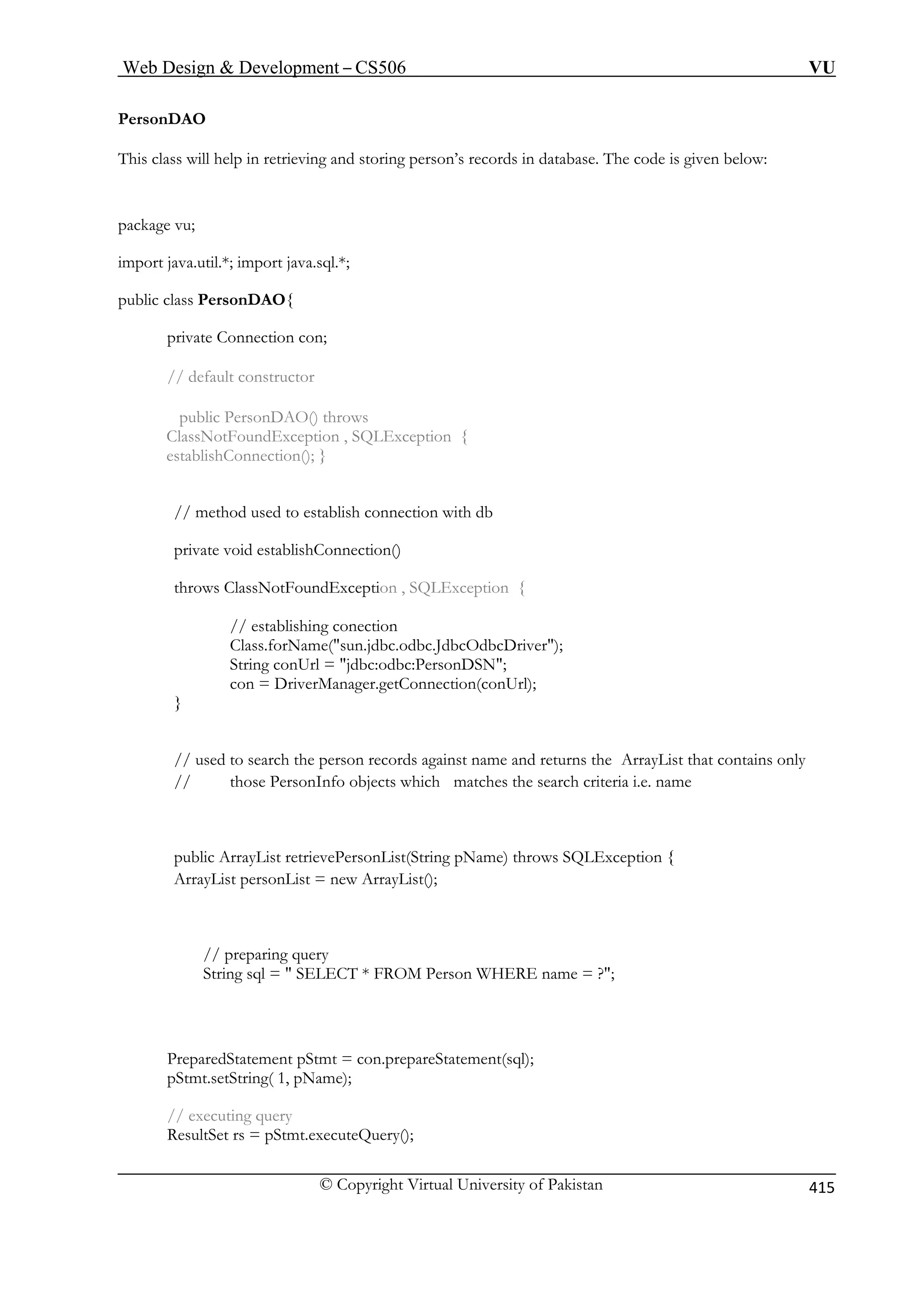
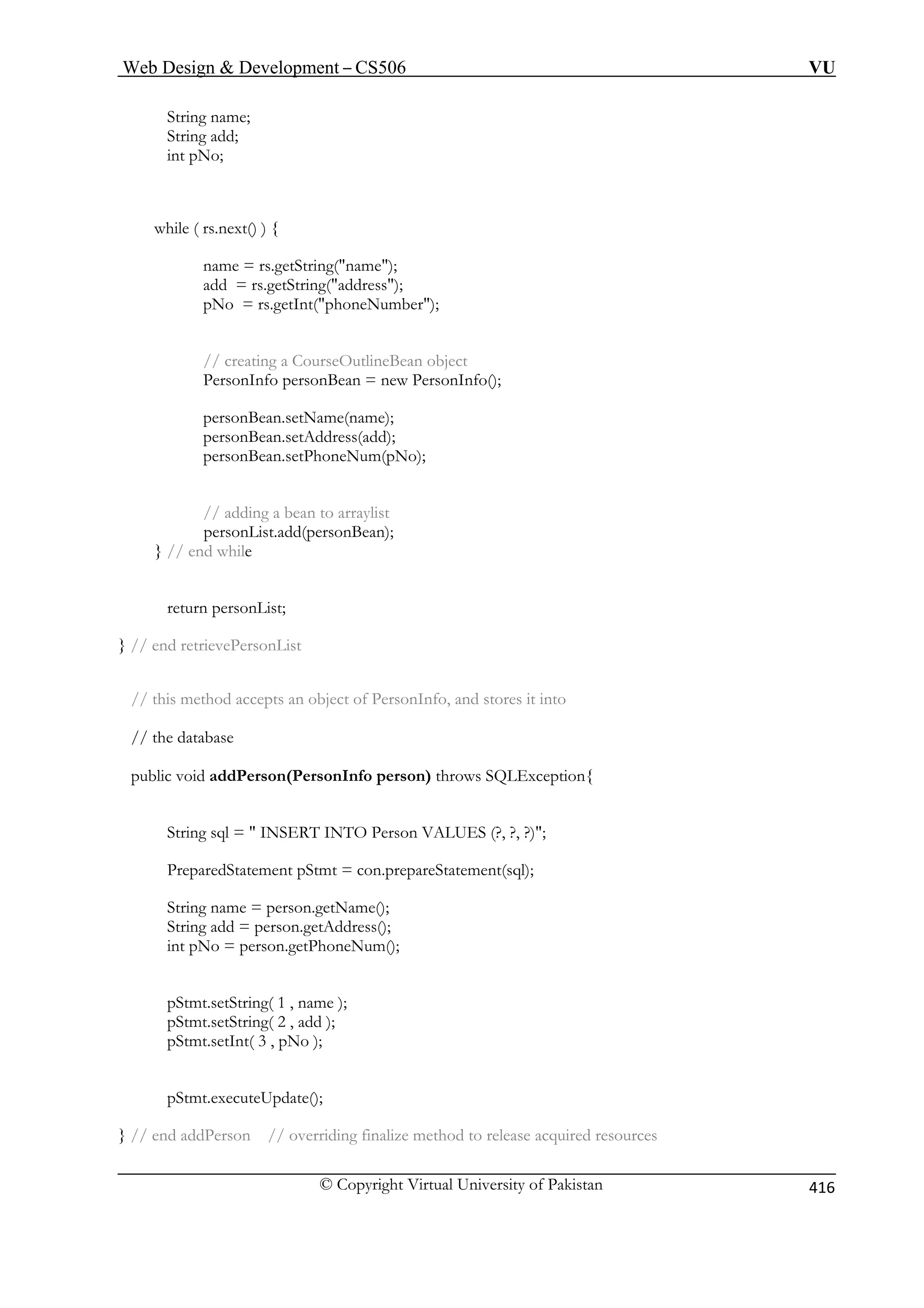
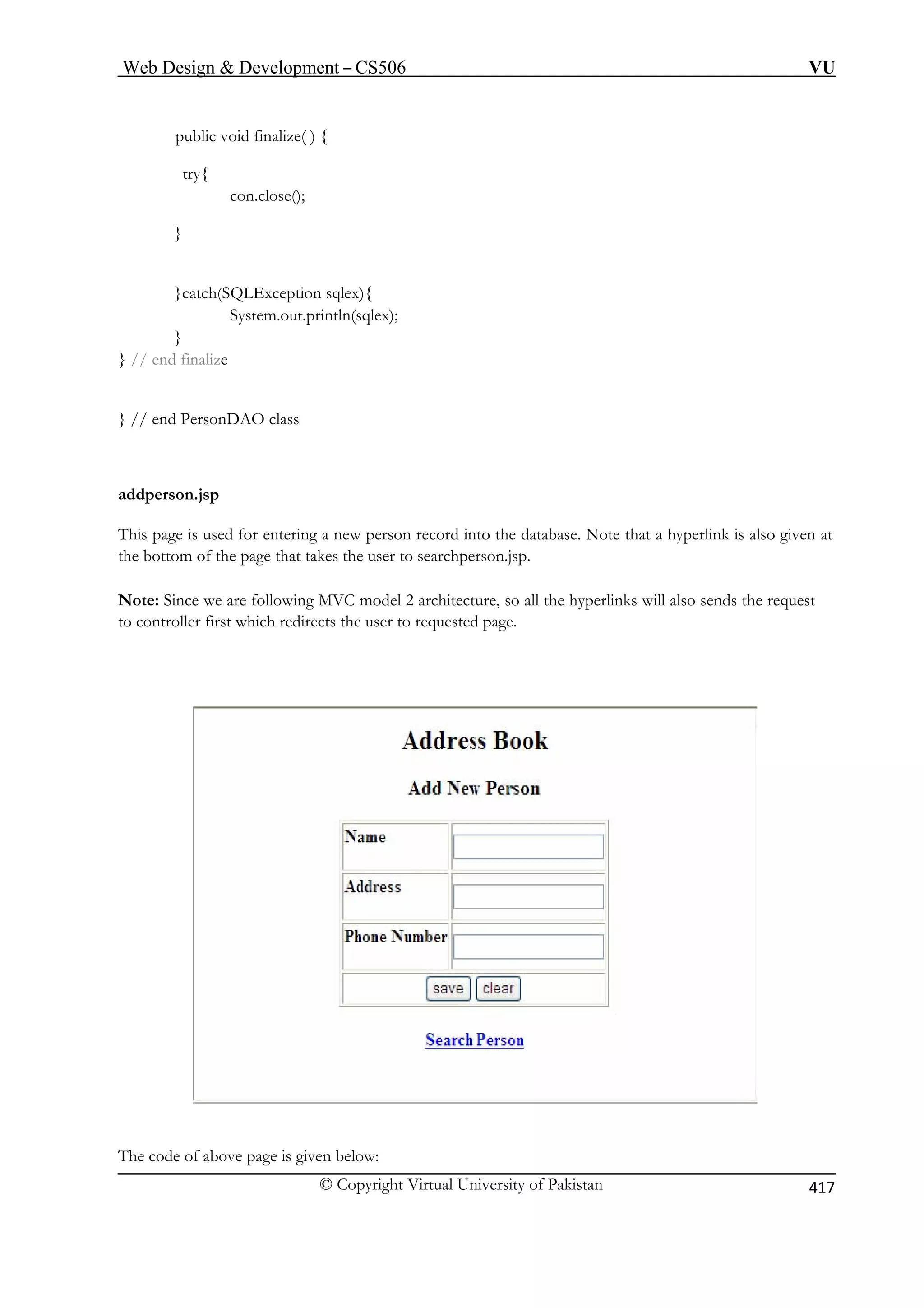
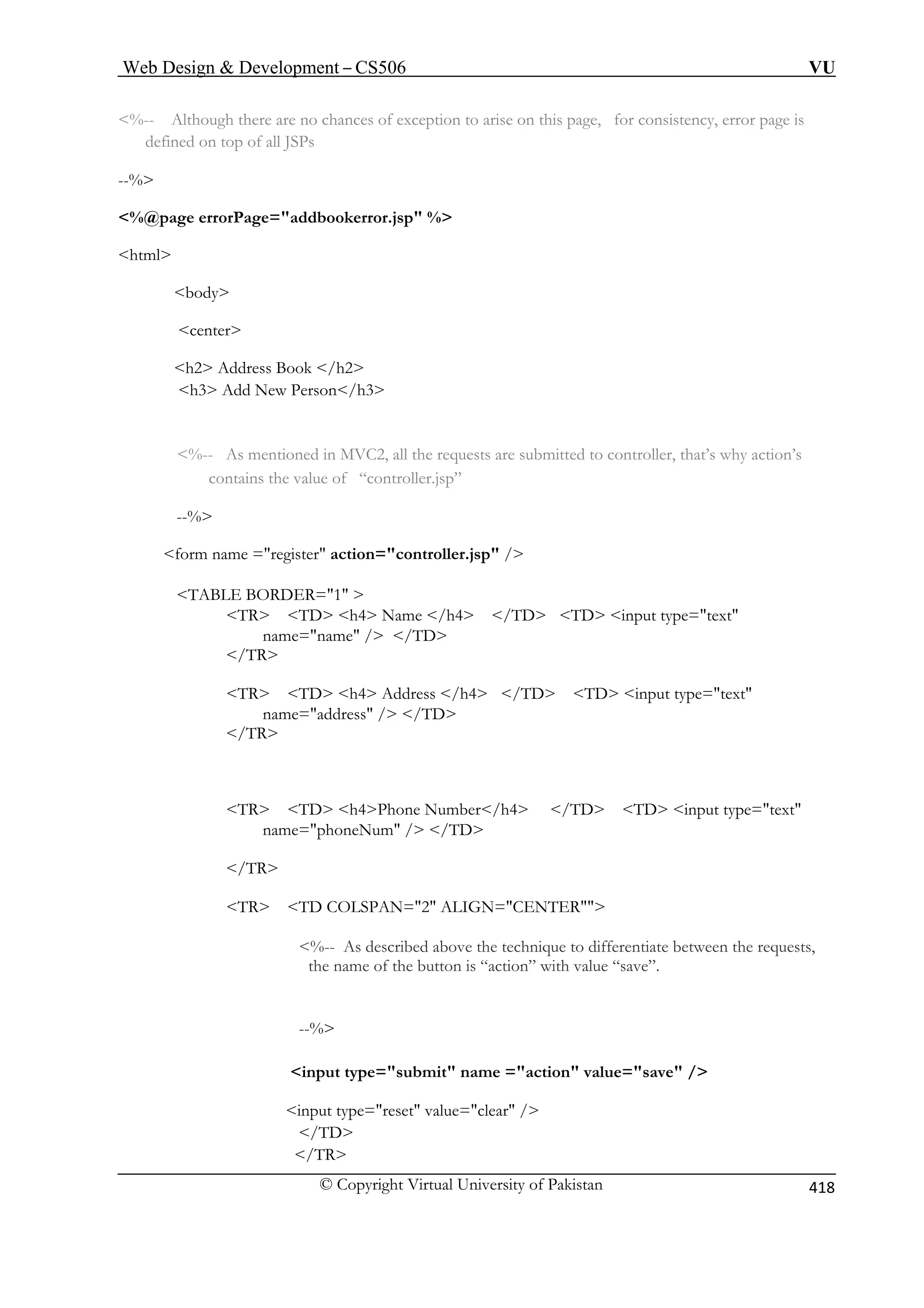
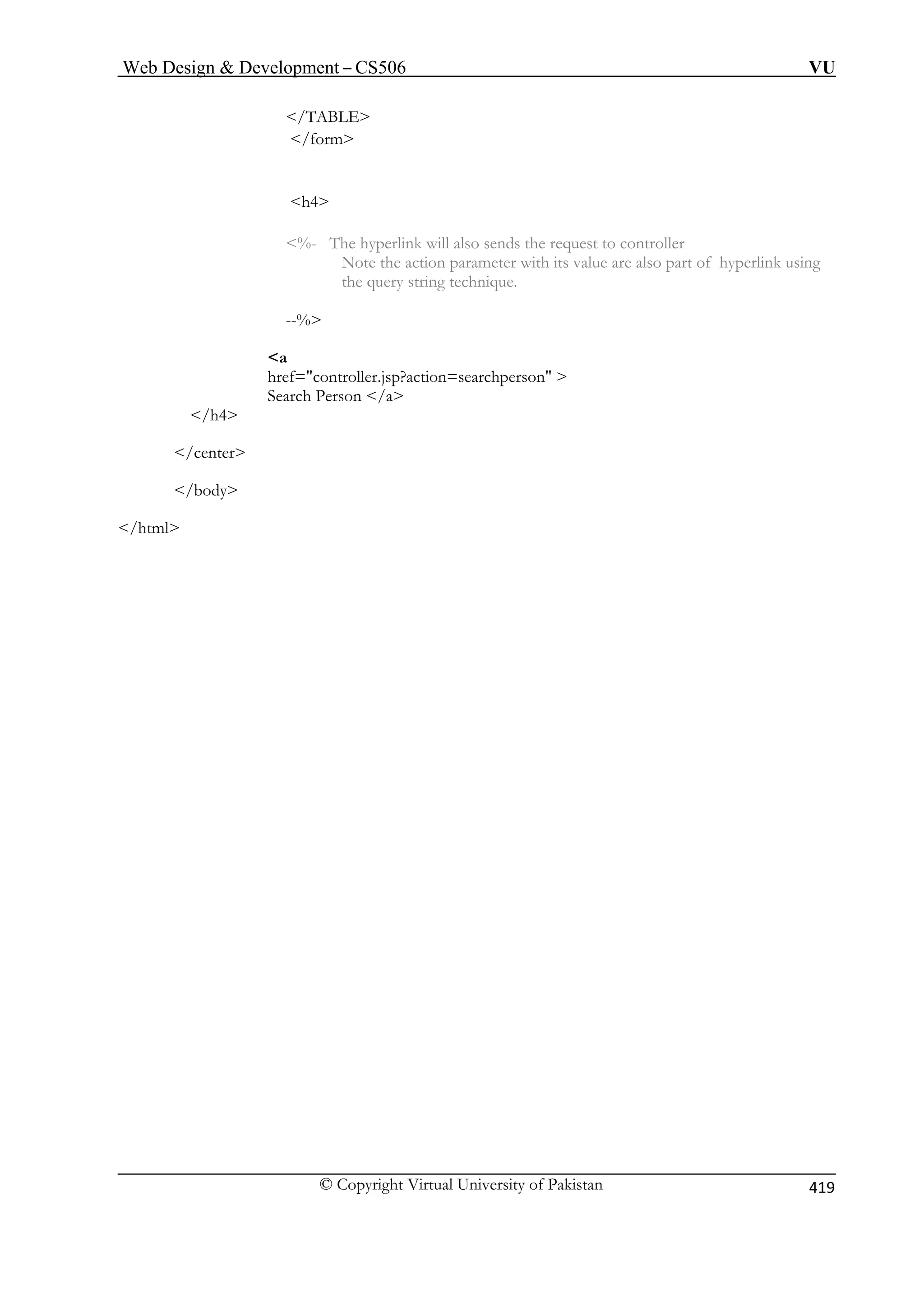
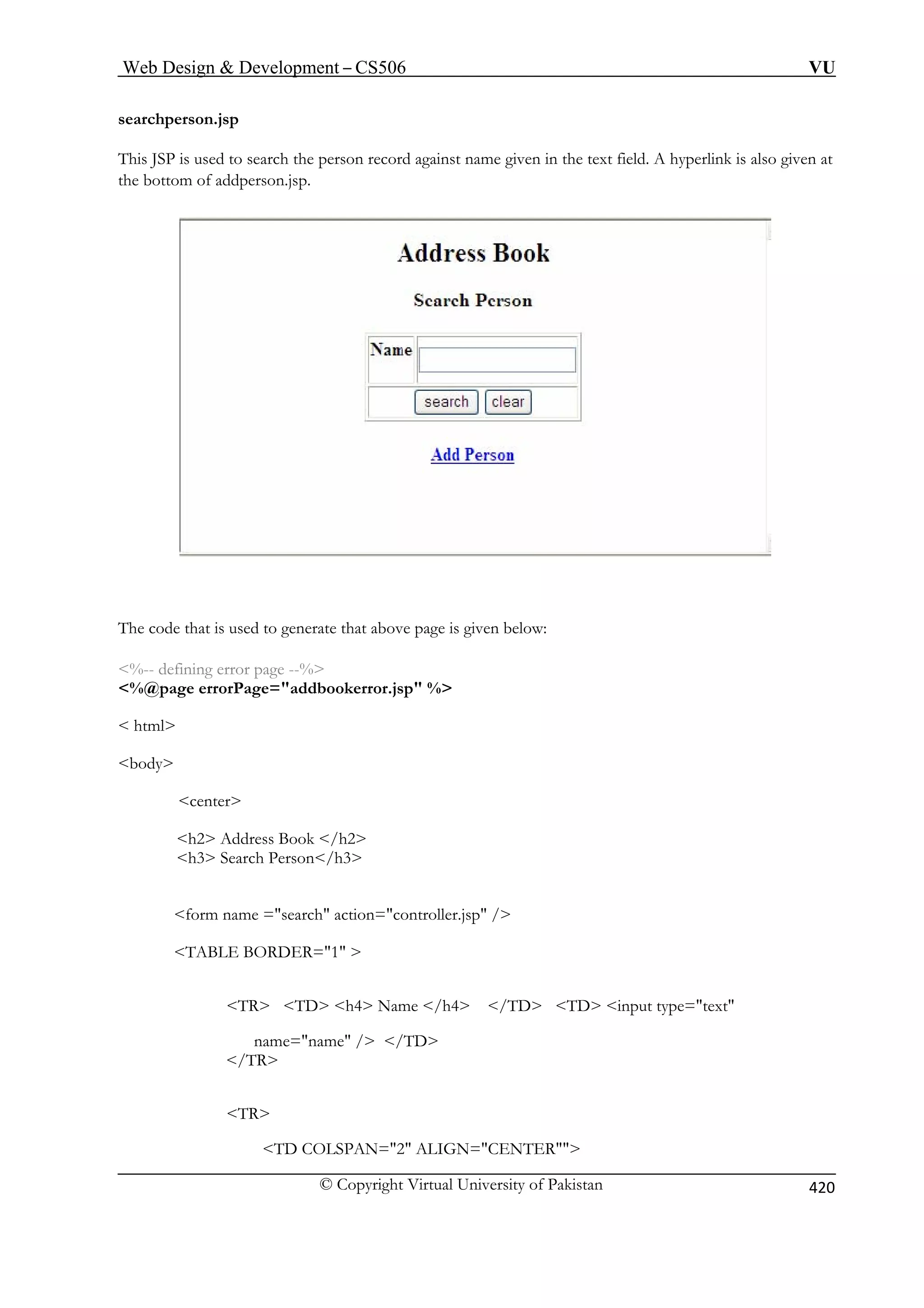
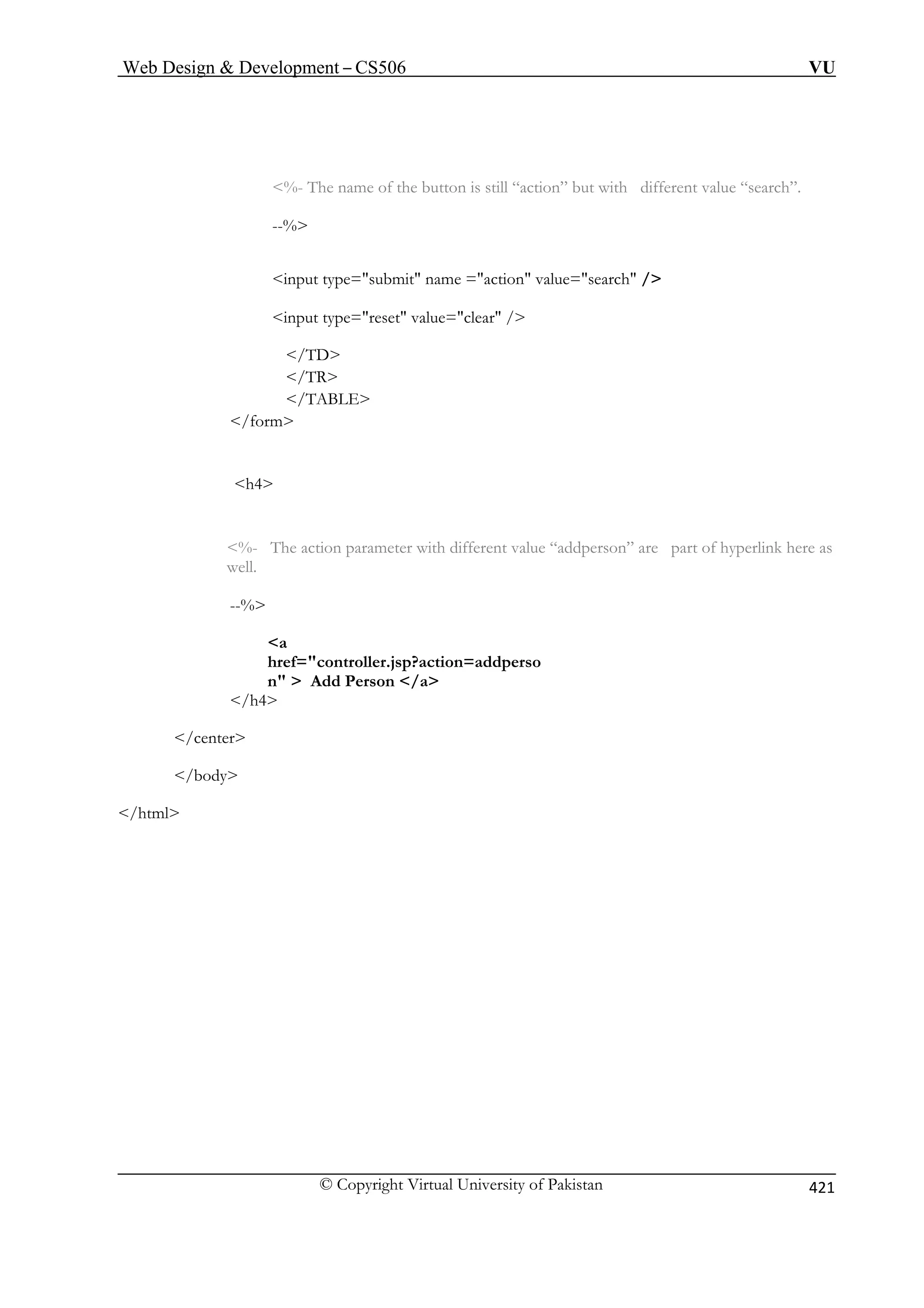
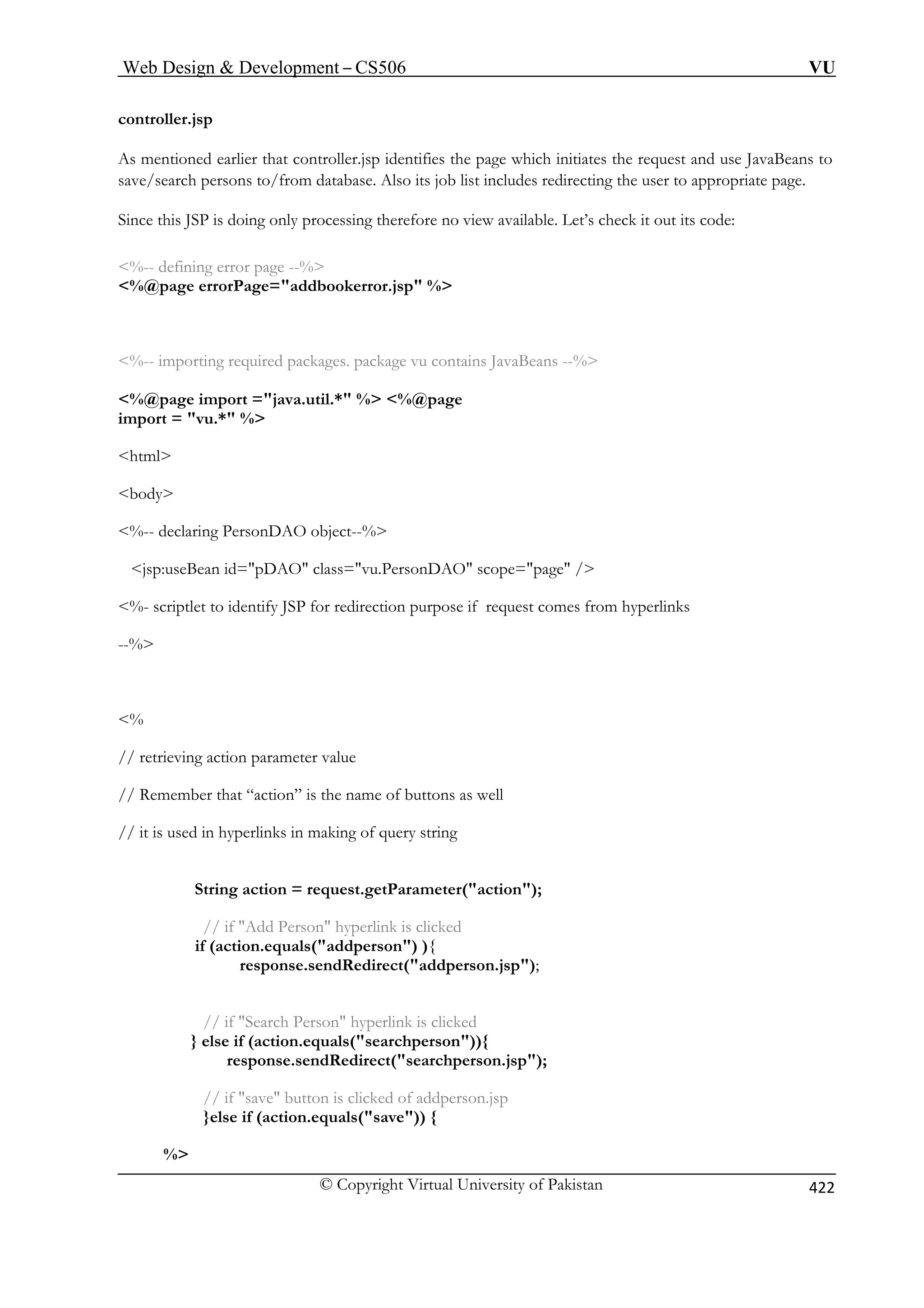
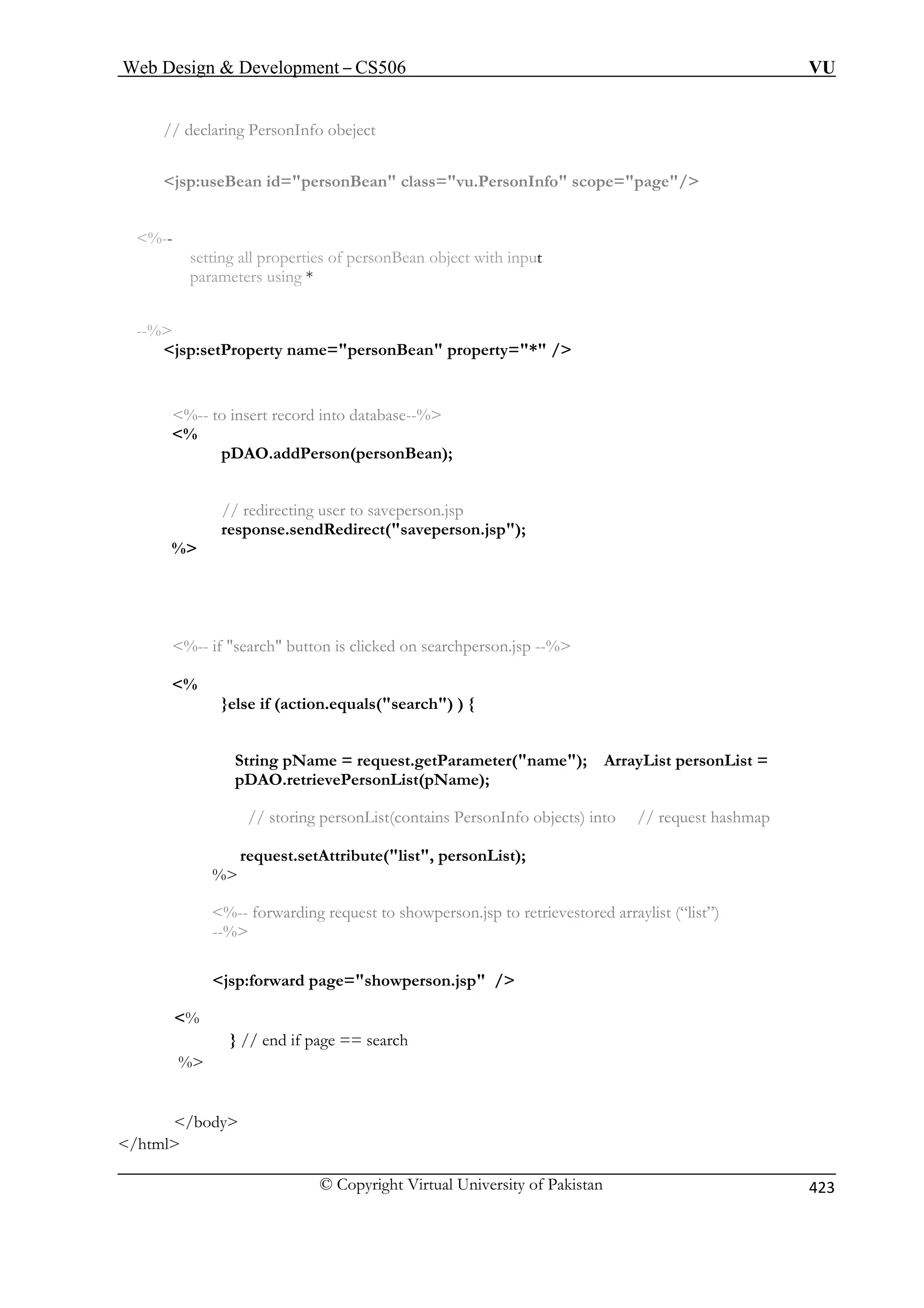
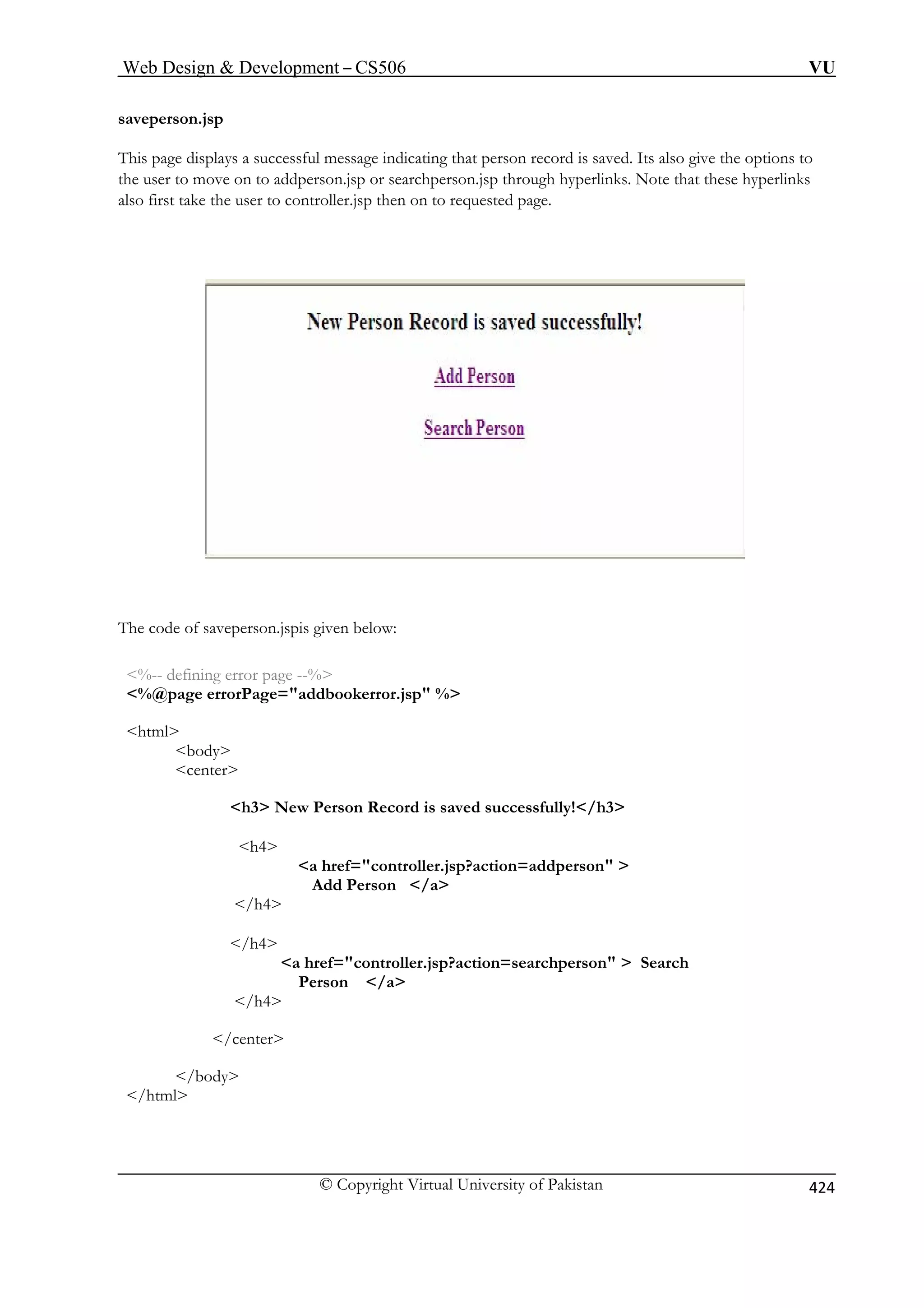
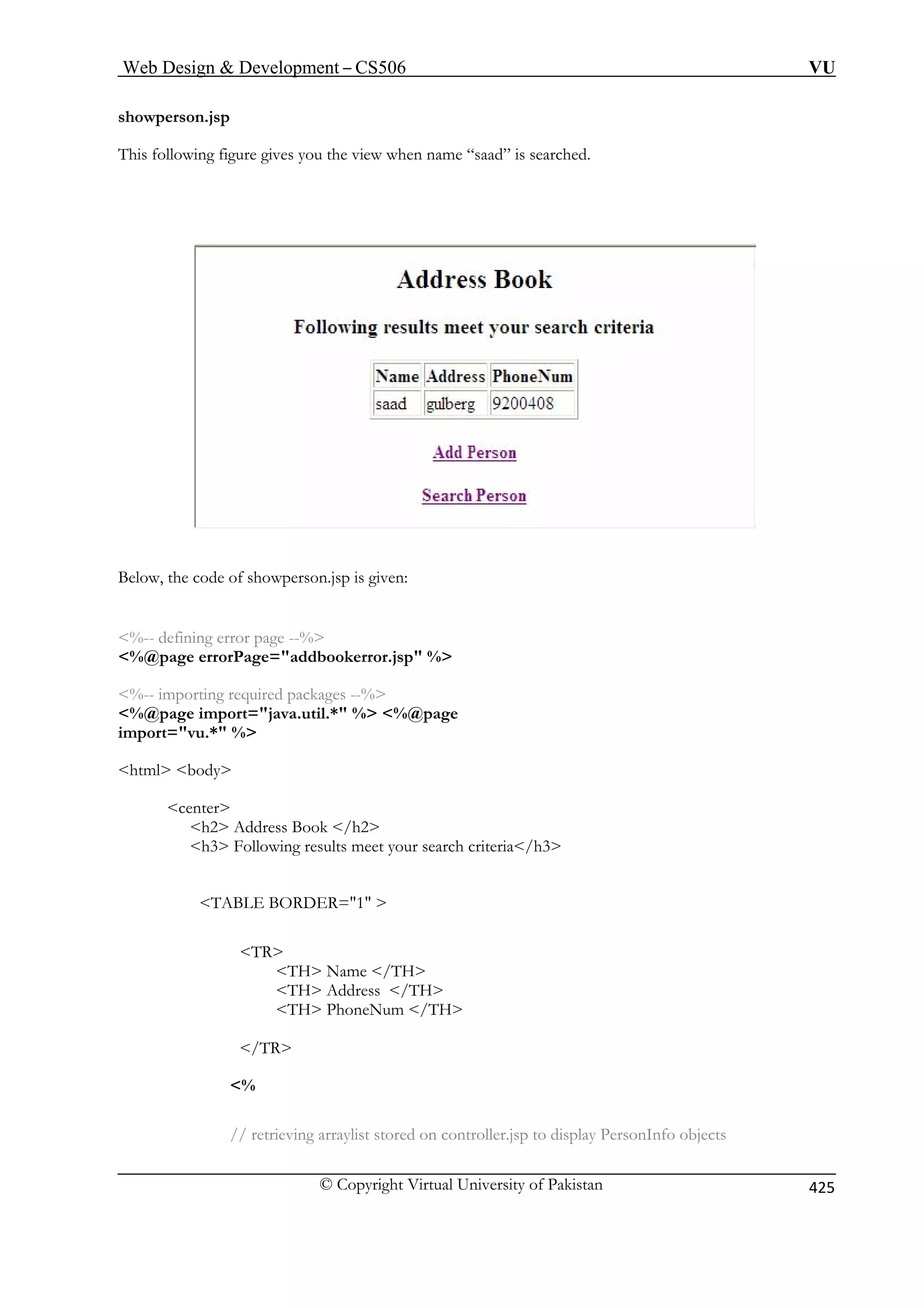
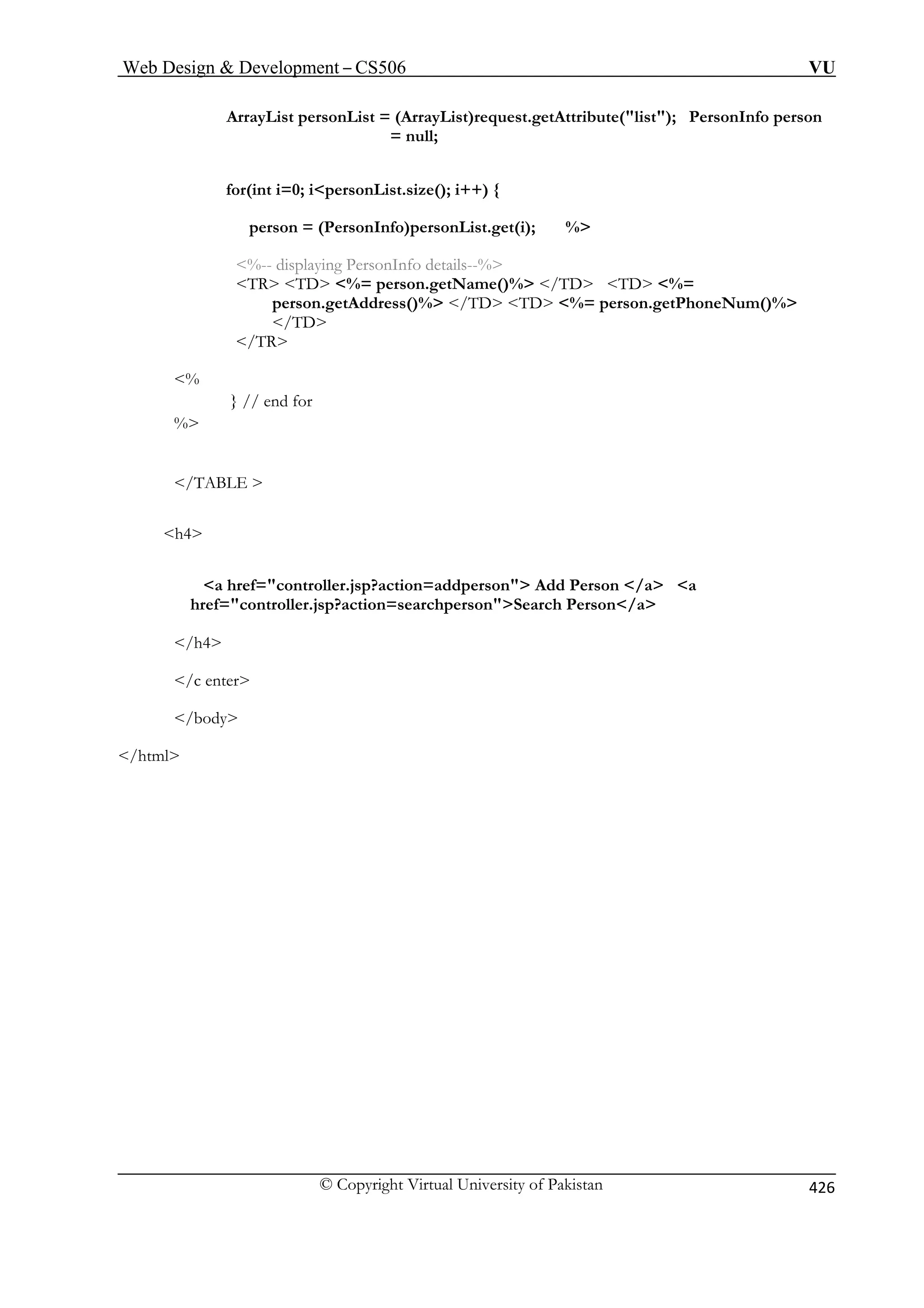
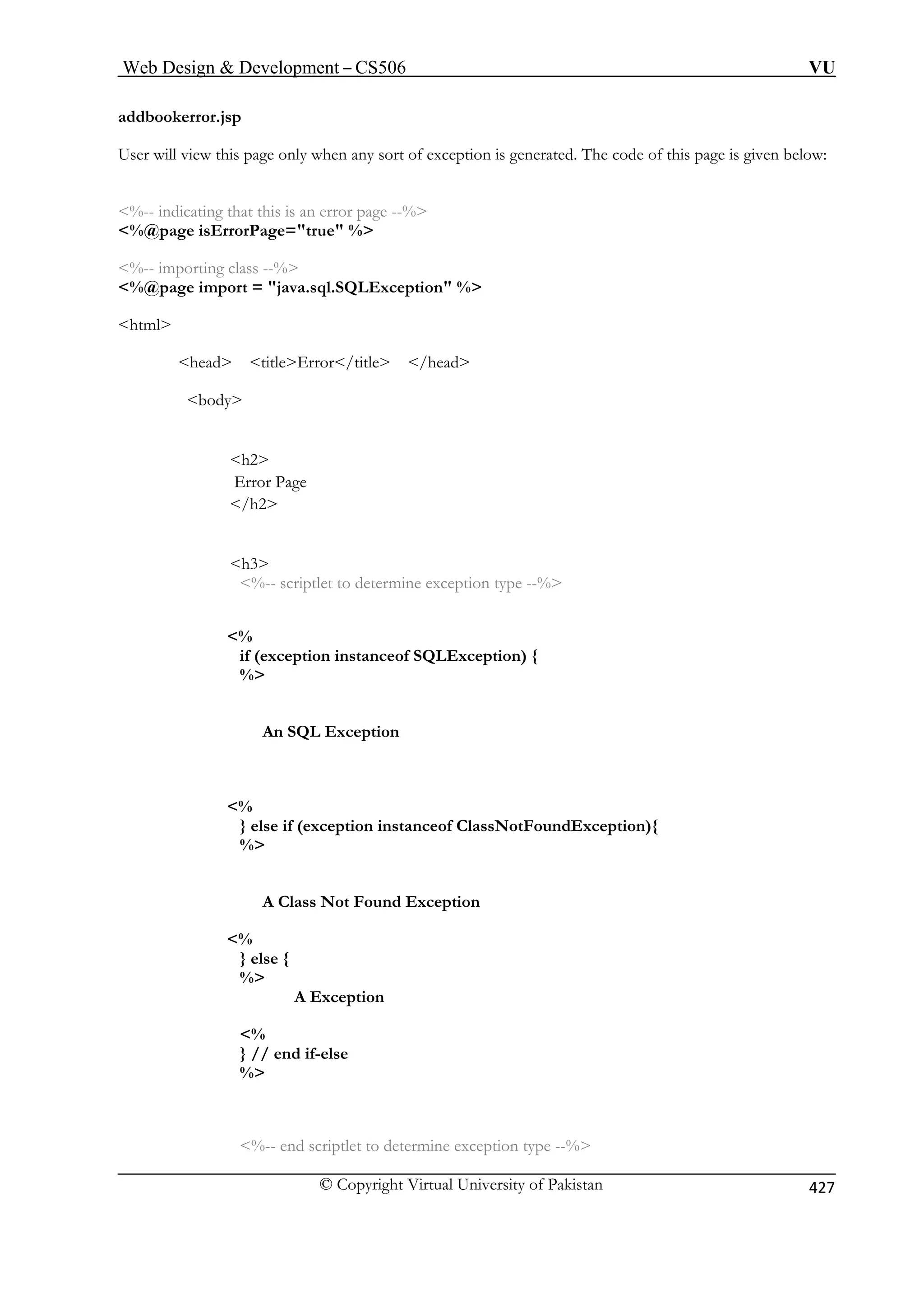
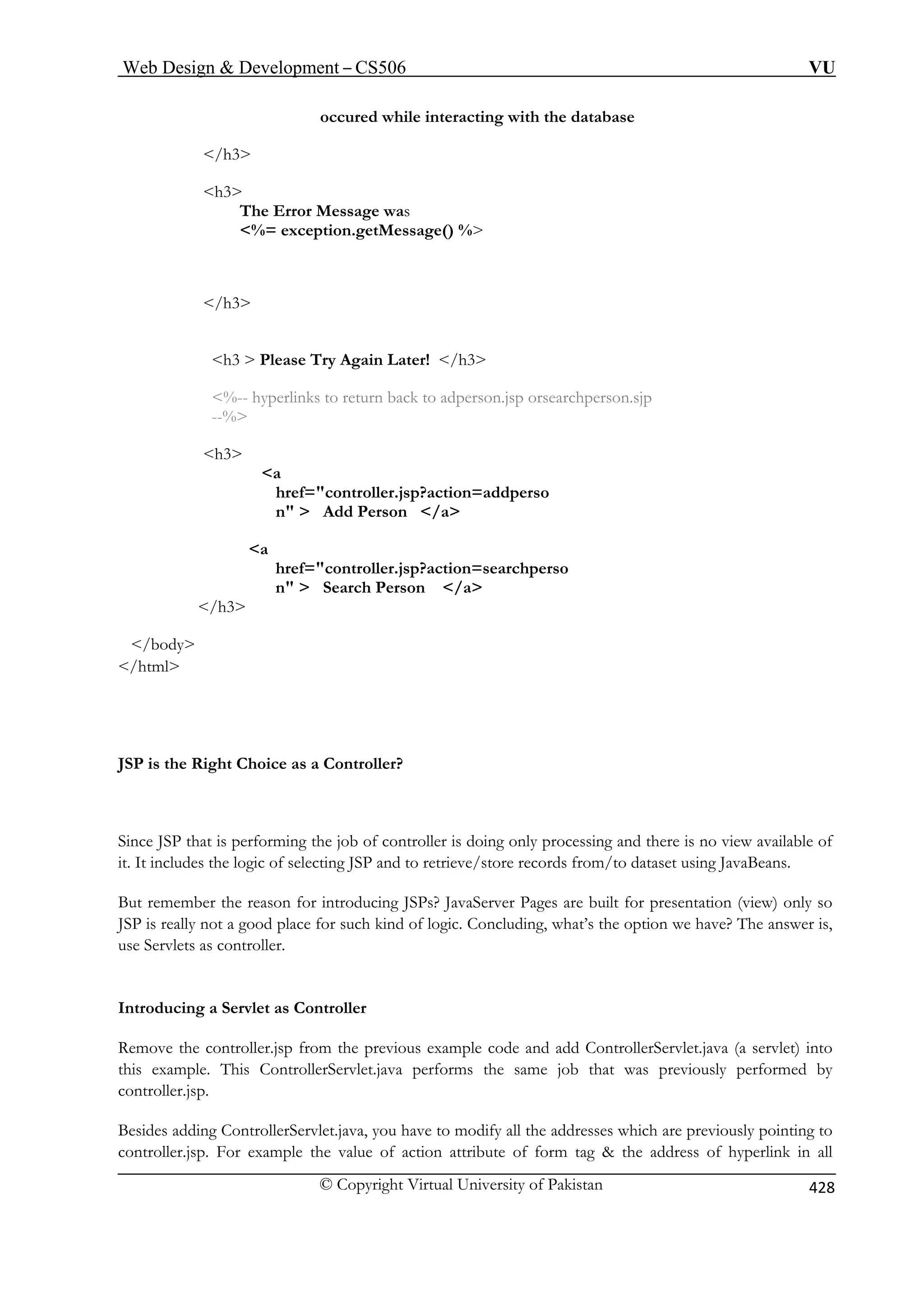
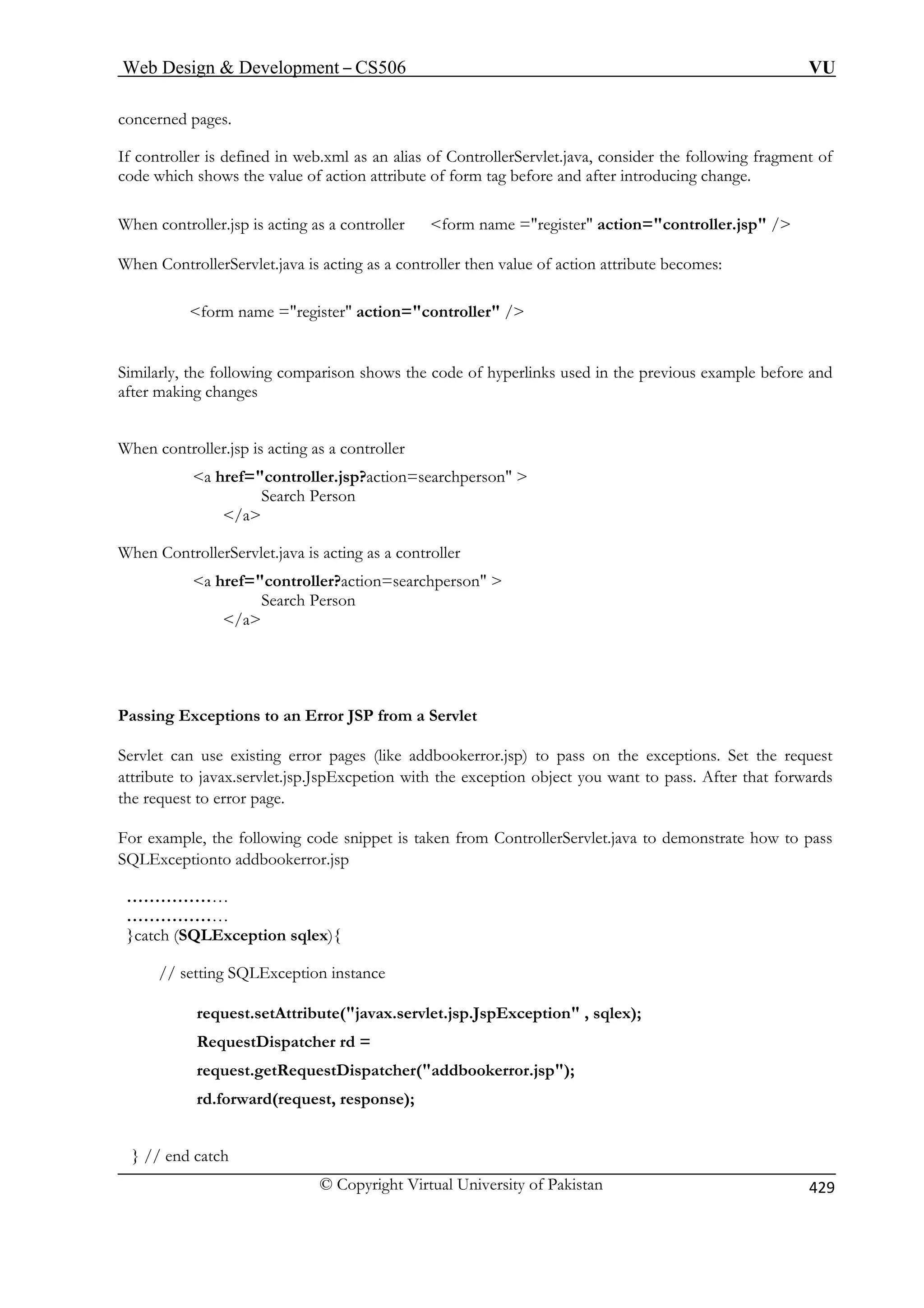
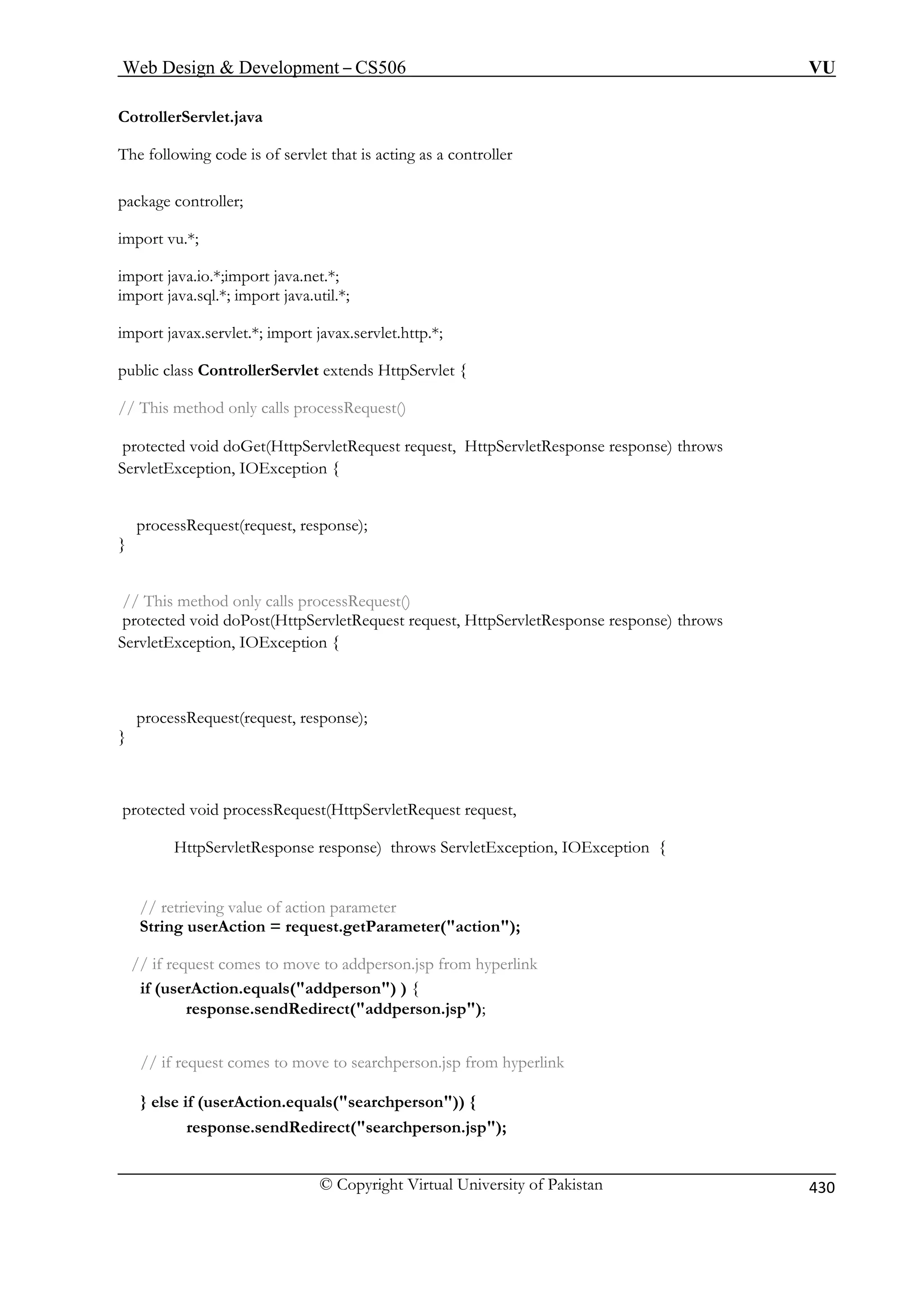
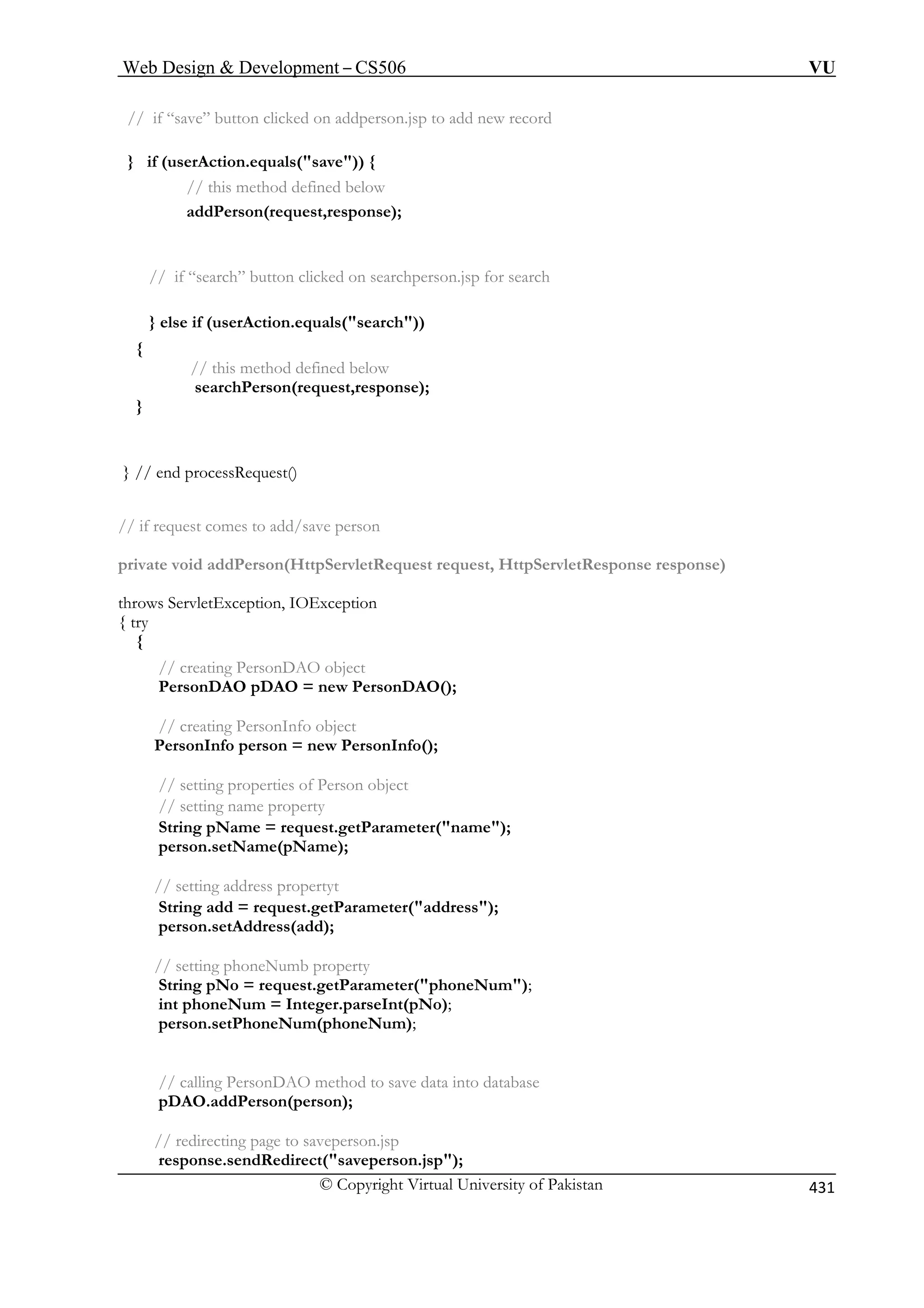
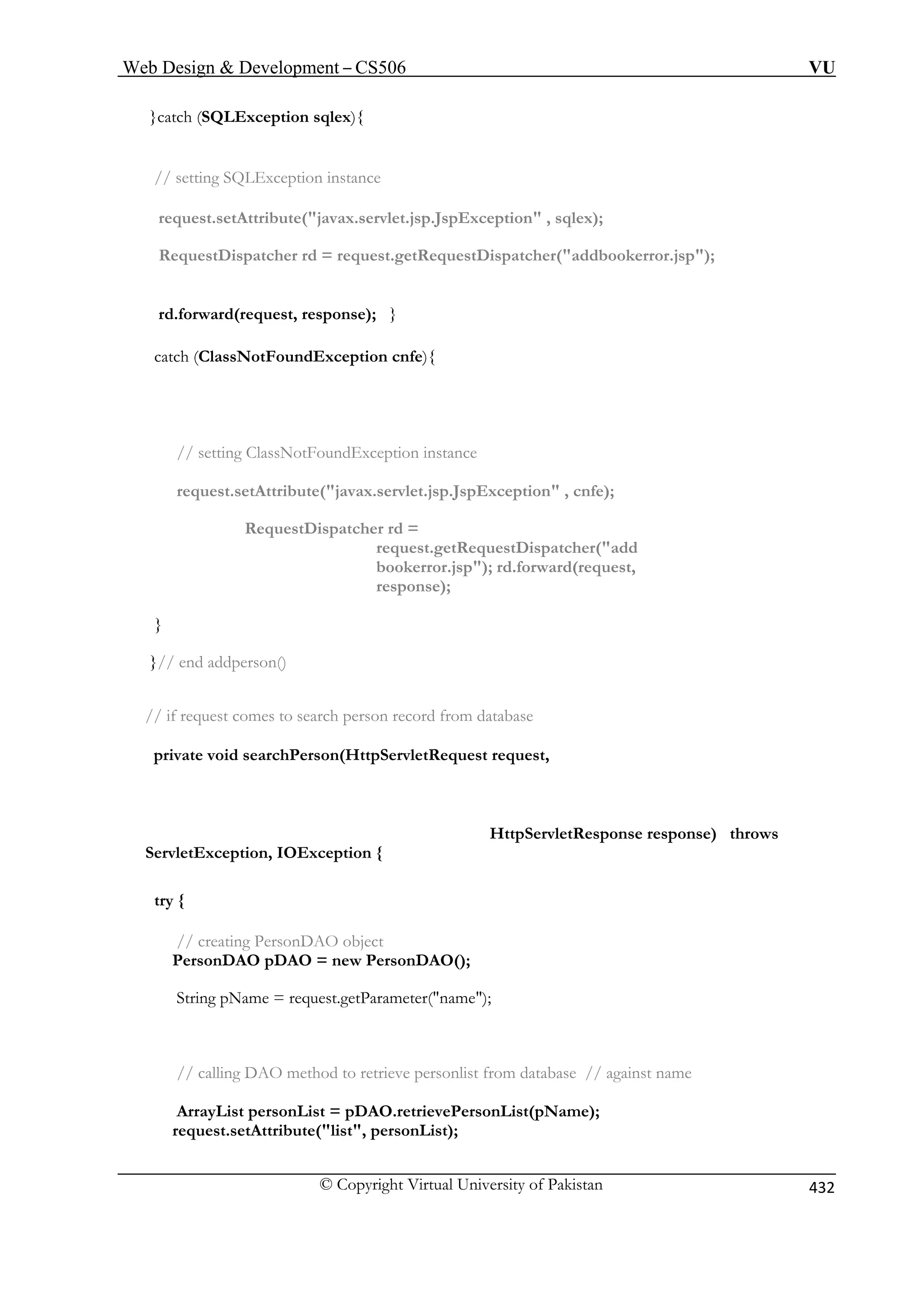
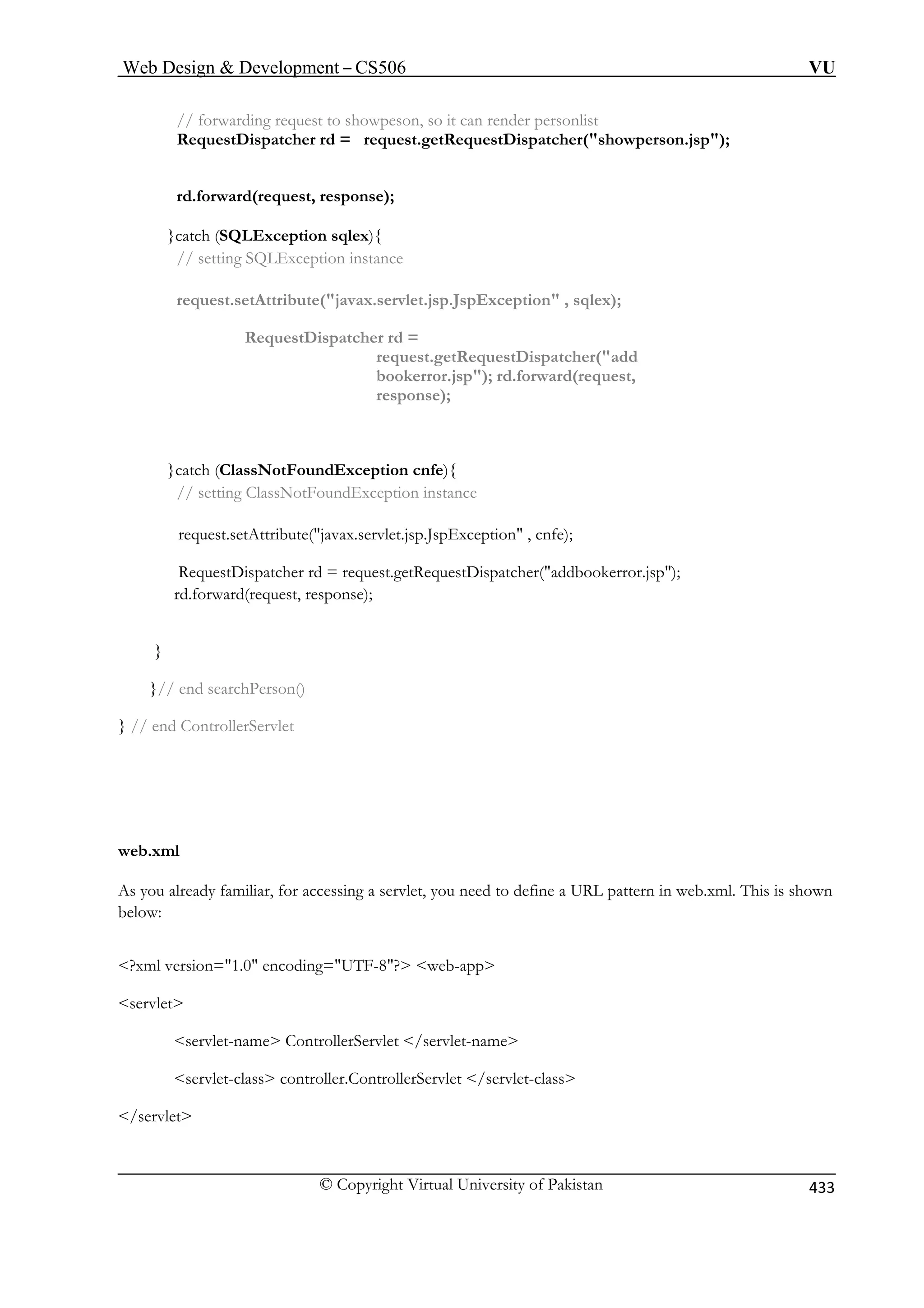
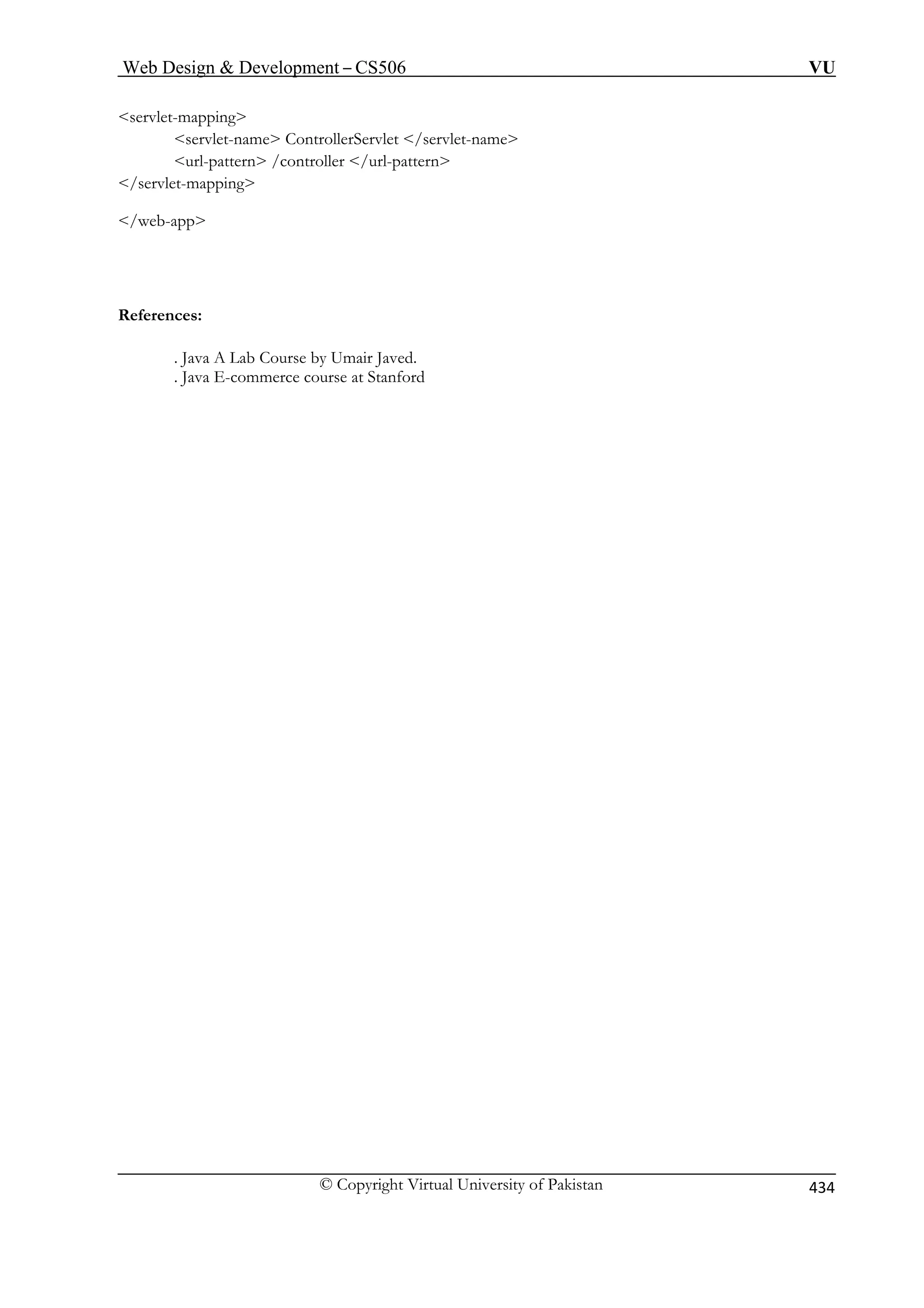
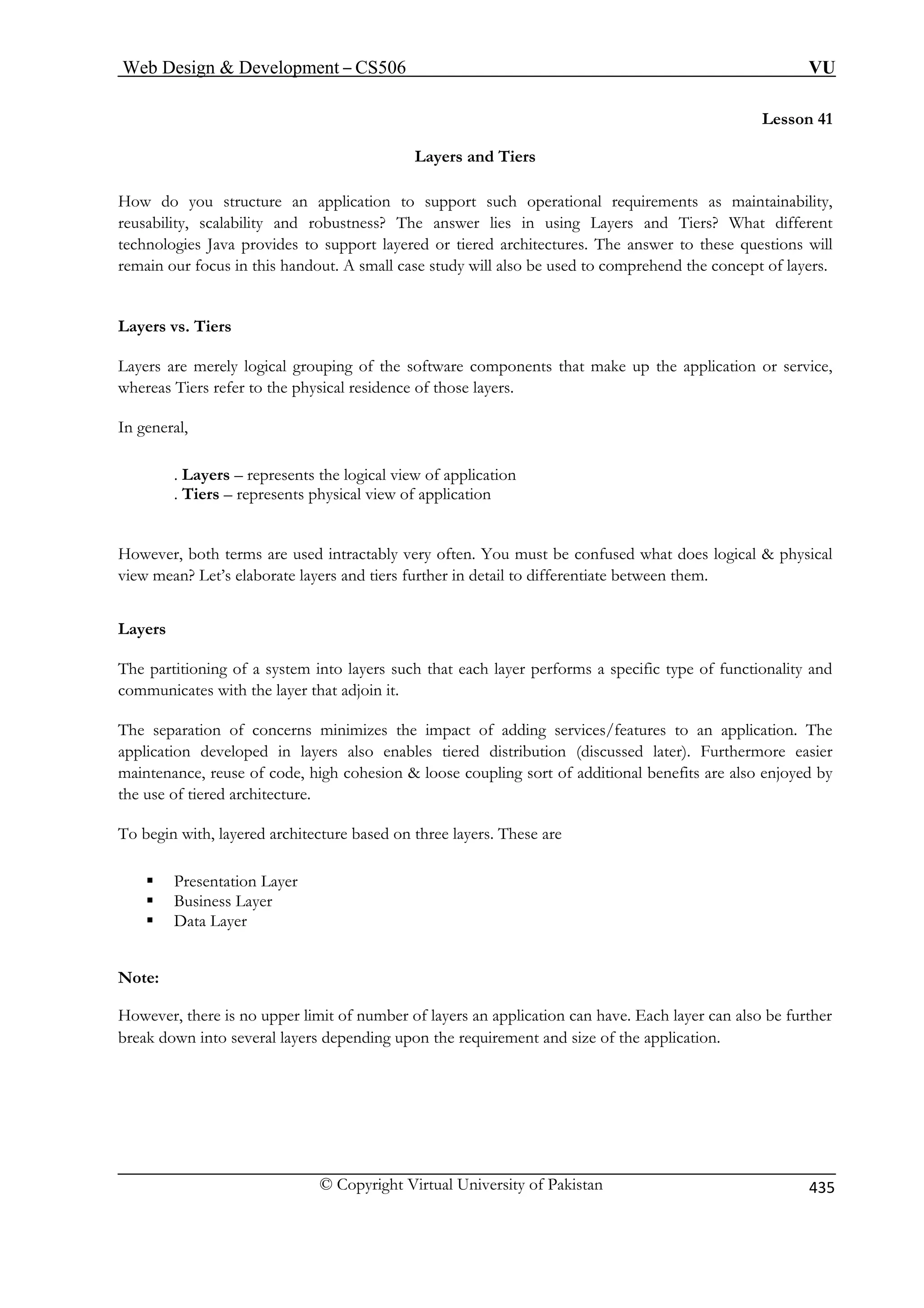
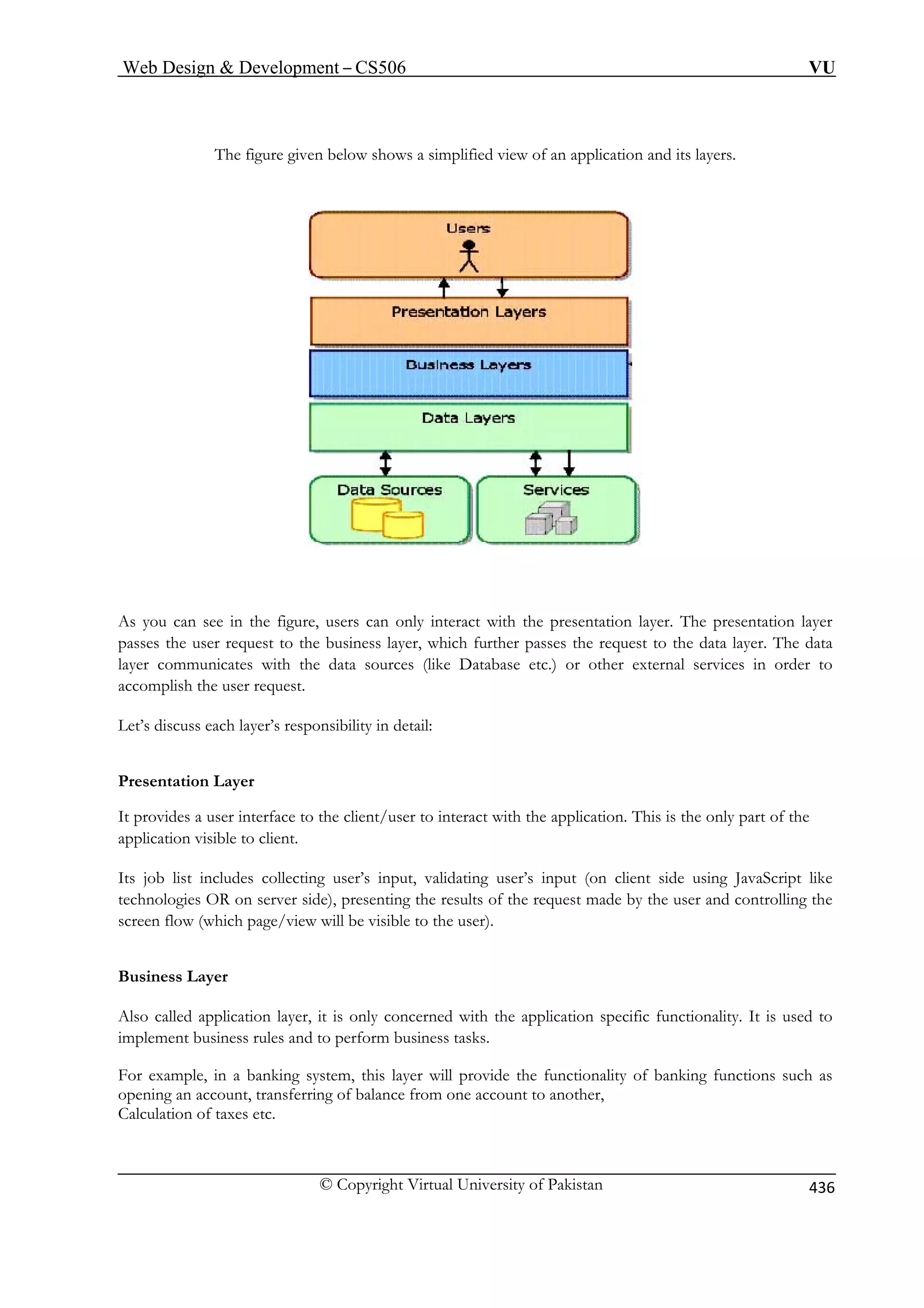
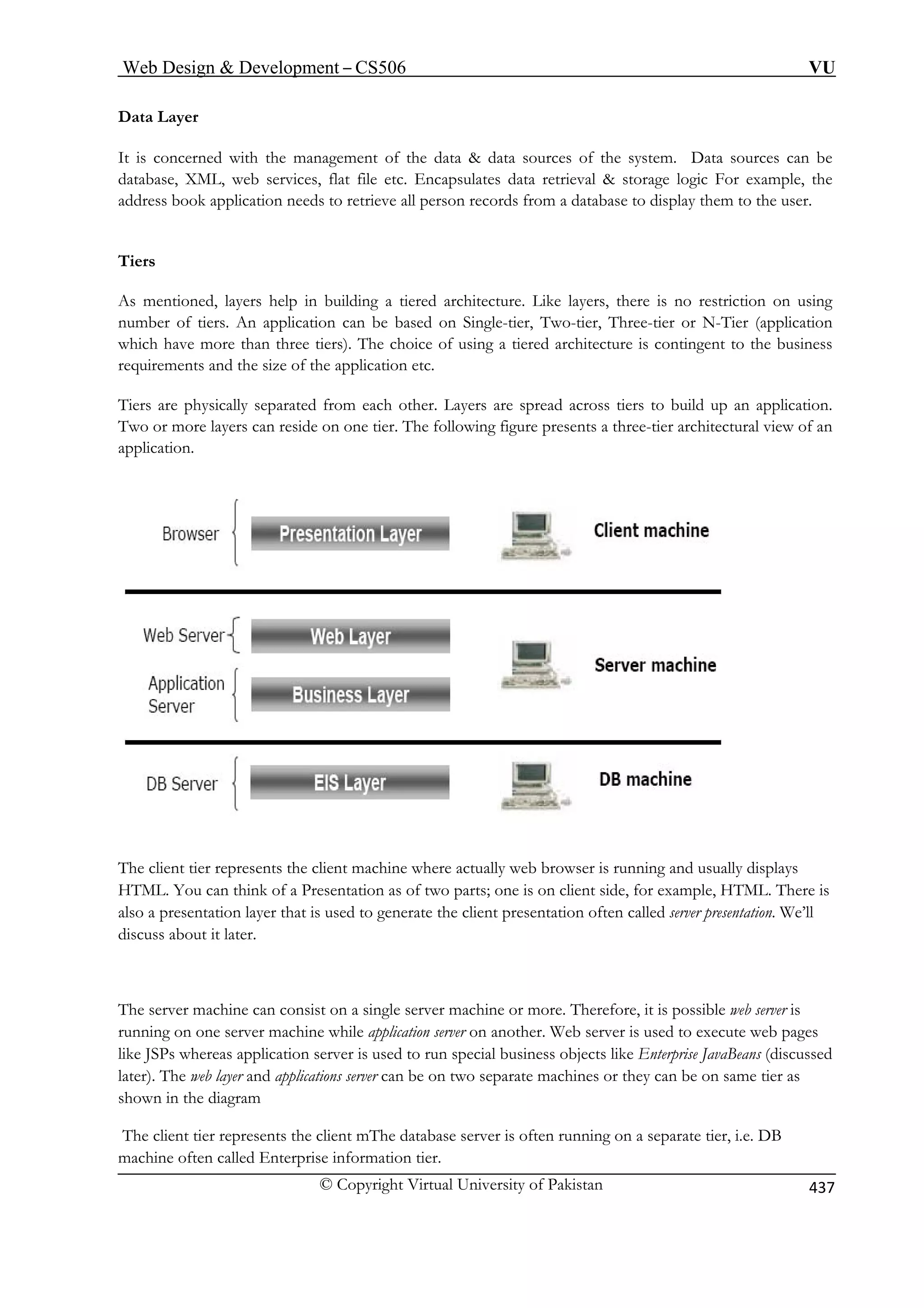
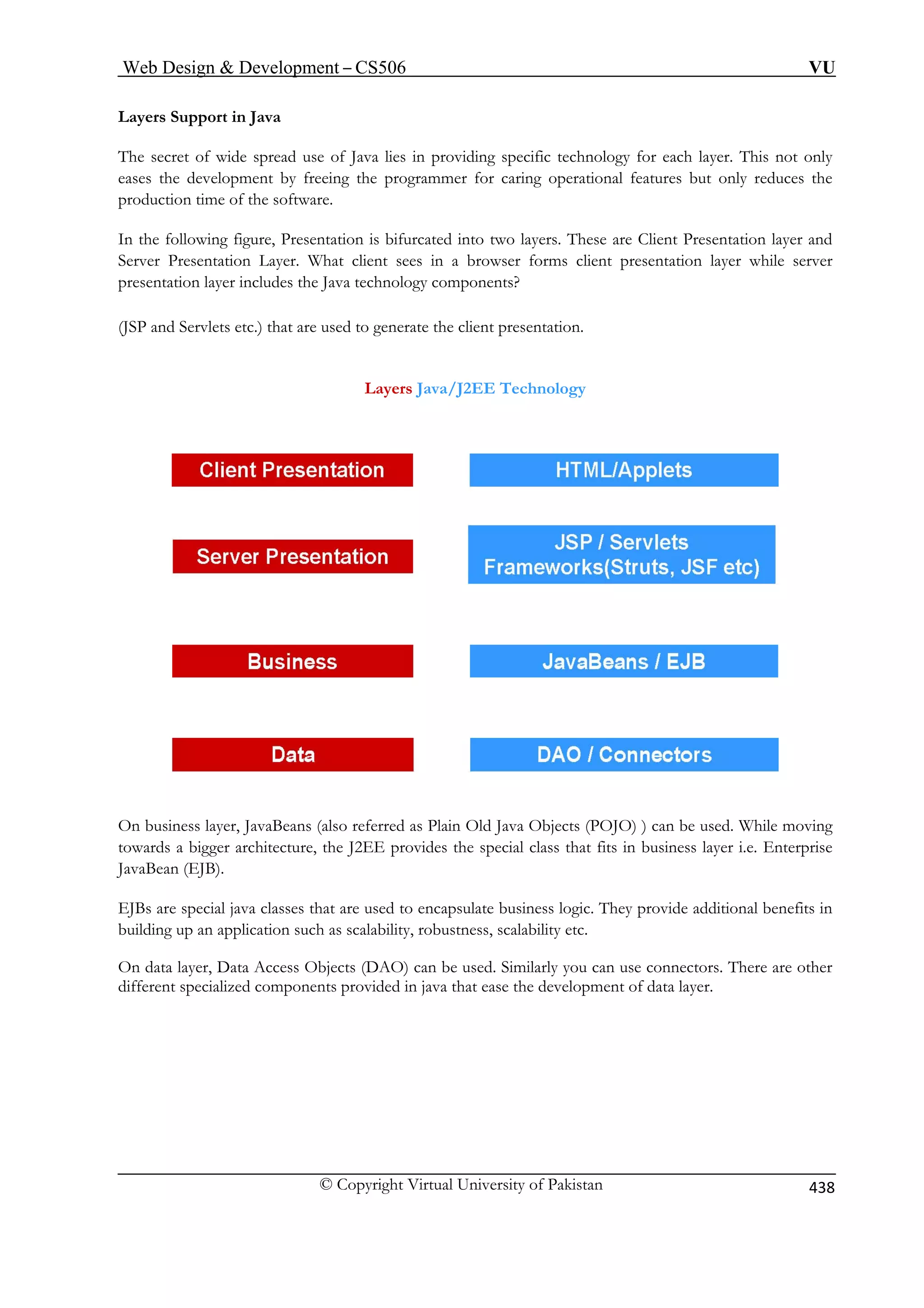
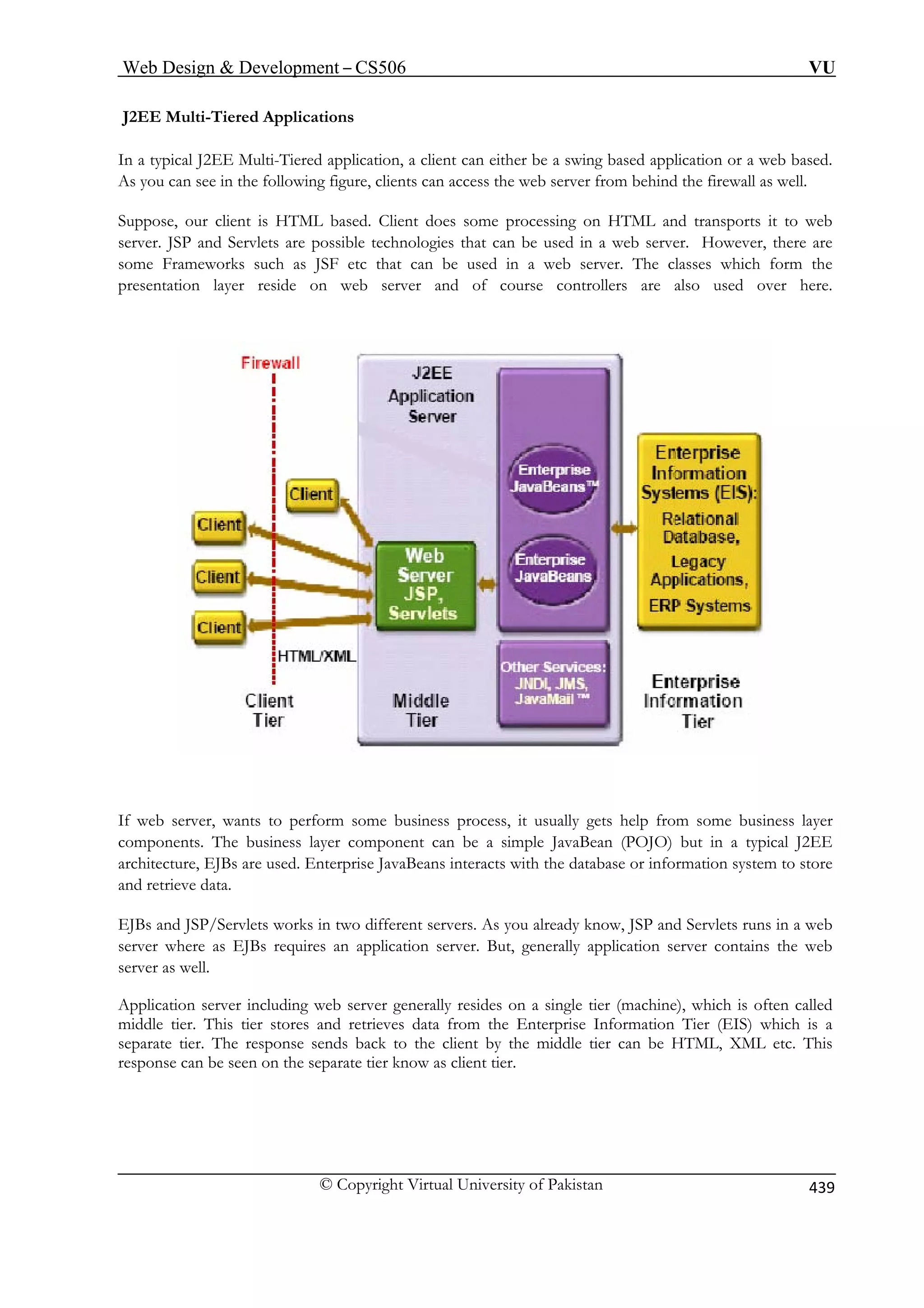
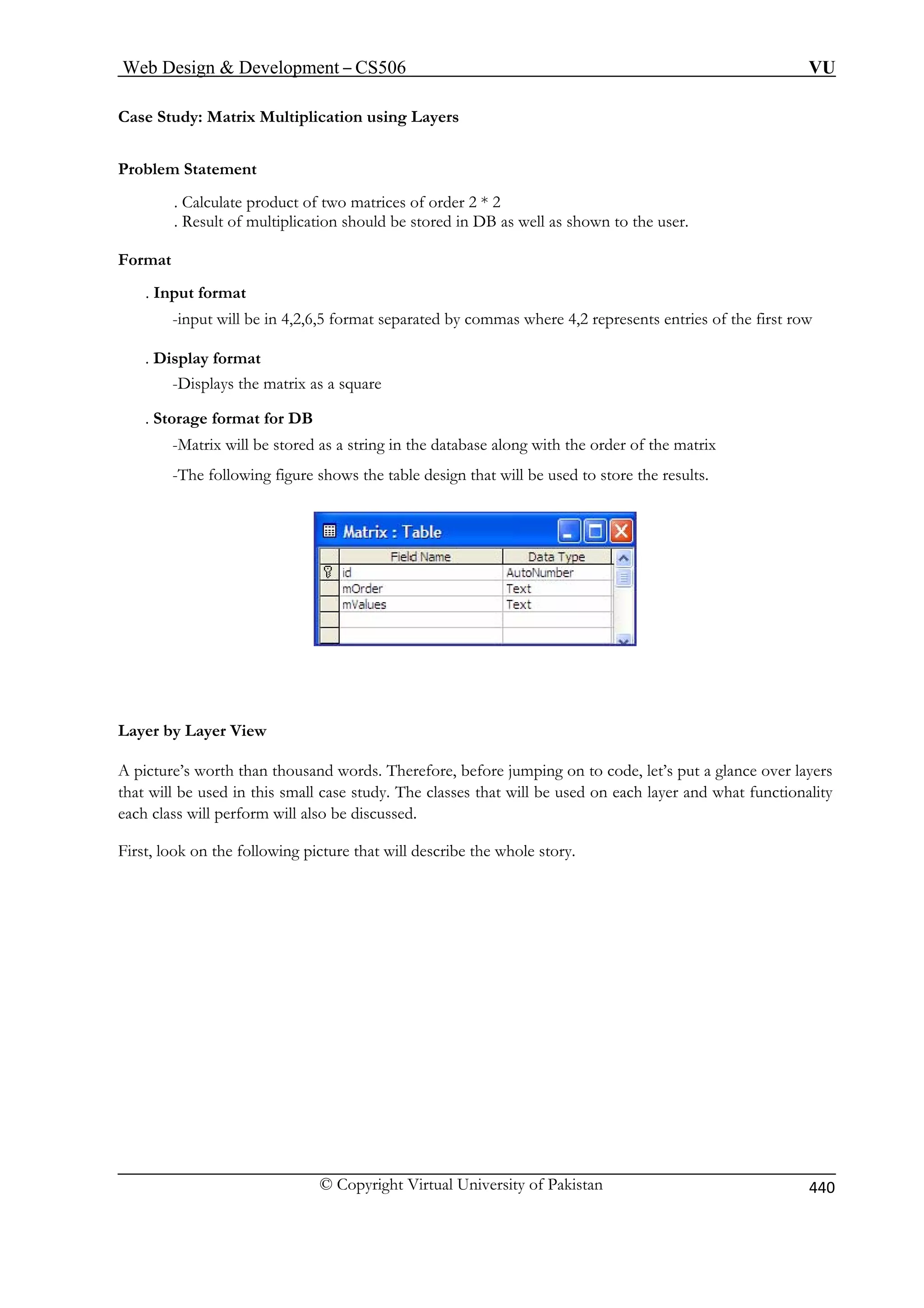
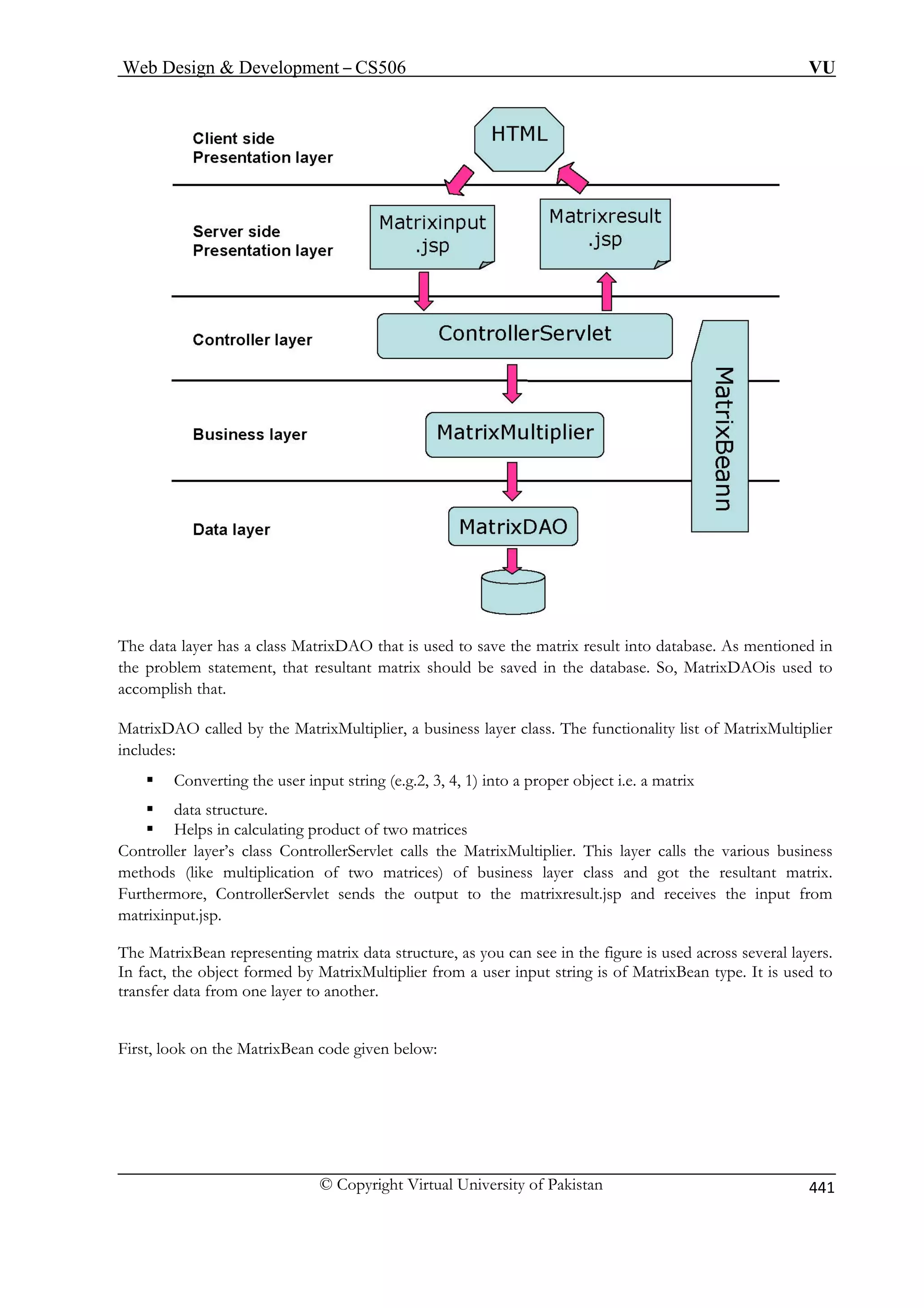
![Web Design Development – CS506 VU
© Copyright Virtual University of Pakistan 442
MatrixBean
package bo;
import java.io.*;
public class MatrixBean implements Serializable{
// a 2D array representing matrix
public int matrix[
// construc
matrix = new int[2][2];
matrix[0][1] = 0;
matrix[1][0] = 0;
matrix[1][1] = 0;
}
// setter tha to array
public void t y, int z)
{
matrix[1][0] = y;
matrix[1][1] = z;
}
turning a 2D array
{
return m
}
rt 2D array into string
toString(){ return matrix[0][0] + , +
, +
matrix[1][0] + , +matrix[1][1] ; }
} // end MatrixBean
][ ] ;
tor
public MatrixBean() {
matrix[0][0] = 0;
t takes 4 int values and assigns these setMatrix(int w, int x, in
matrix[0][0] = w;
matrix[0][1] = x;
// getter re public int[ ][ ] getMatrix() atrix;
// used to conve
public String matrix[0][1] +](https://image.slidesharecdn.com/webdesignanddevelopment-cs506handouts-141110100145-conversion-gate01/75/Web-design-and-development-cs506-handouts-442-2048.jpg)
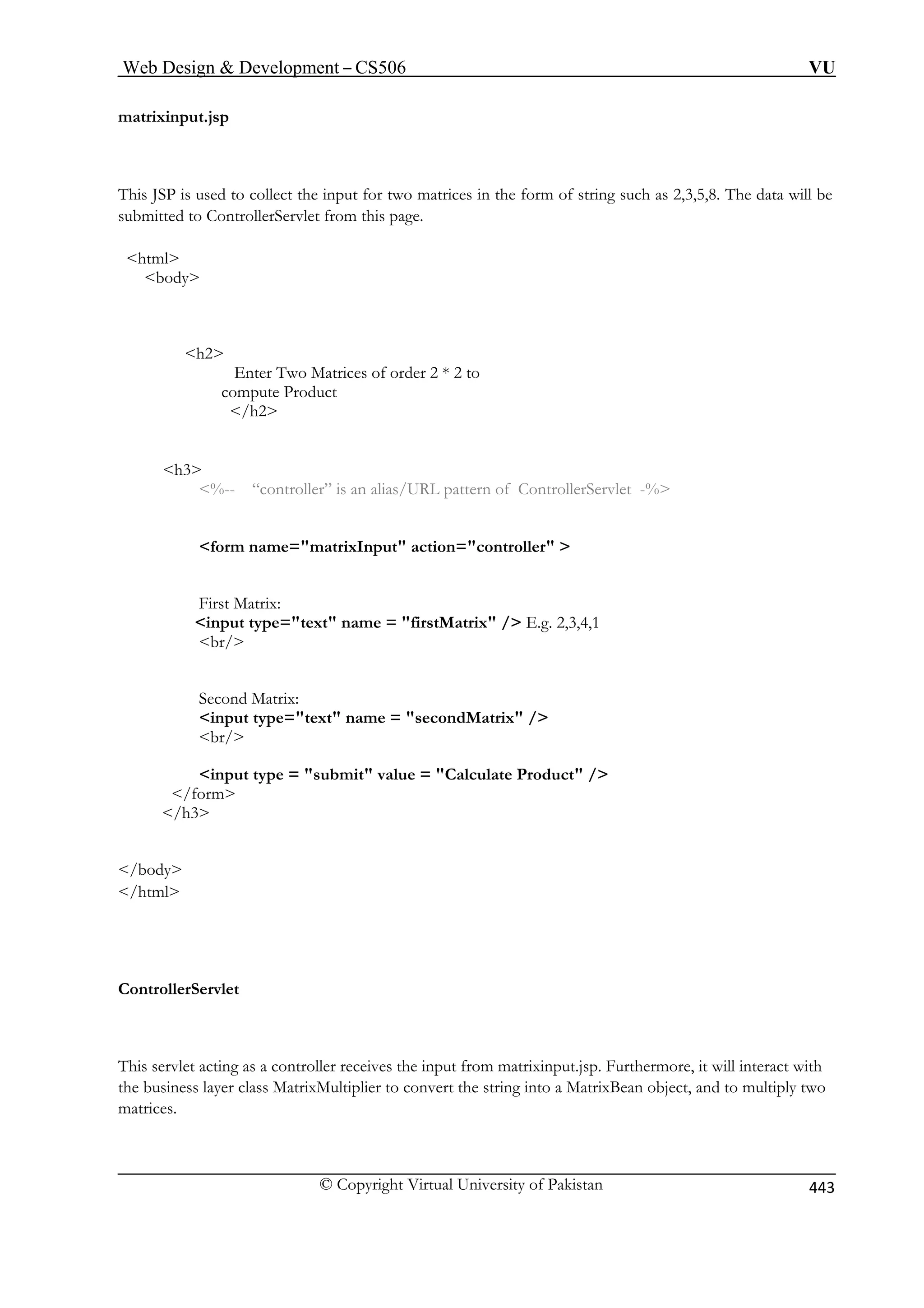
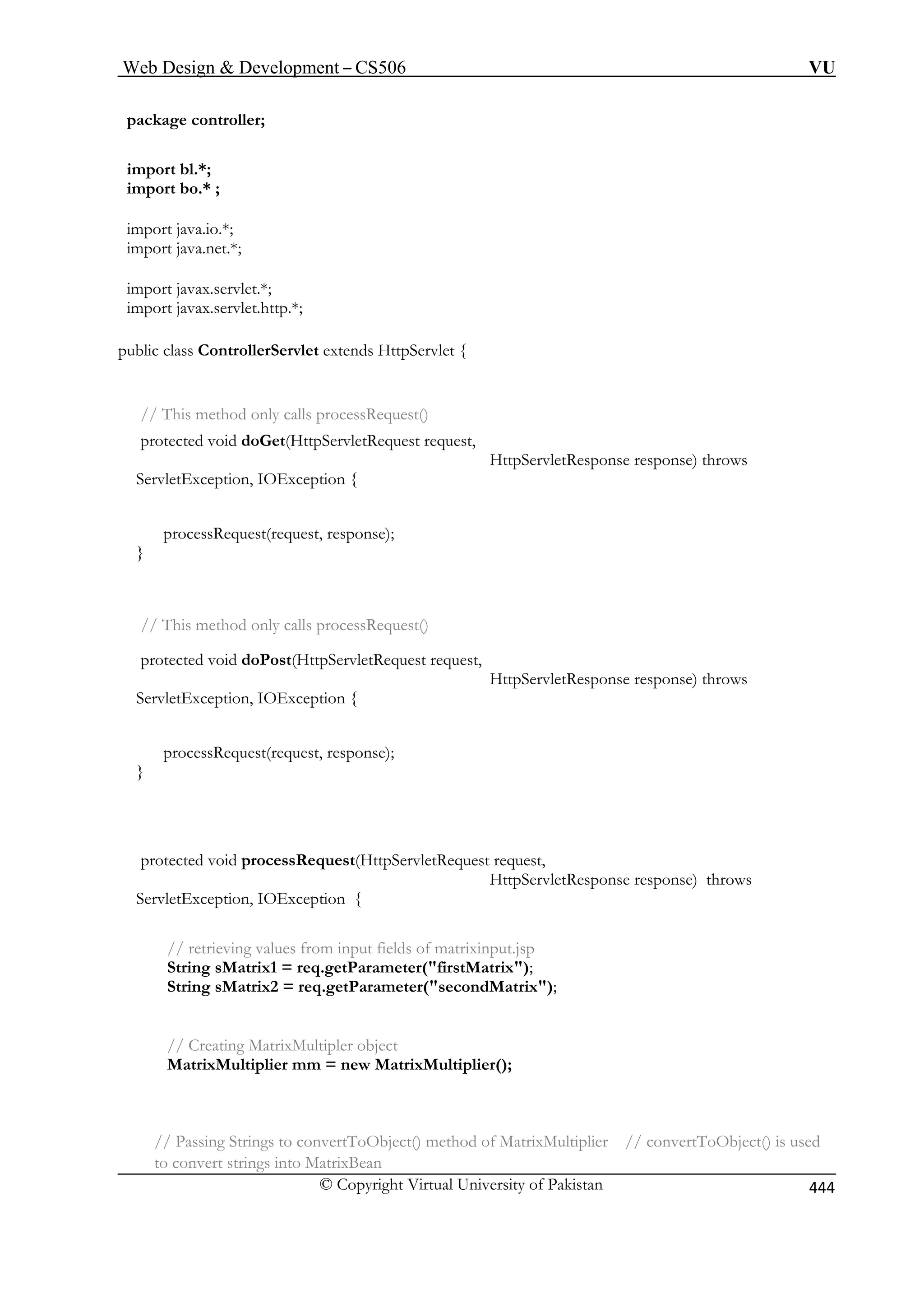
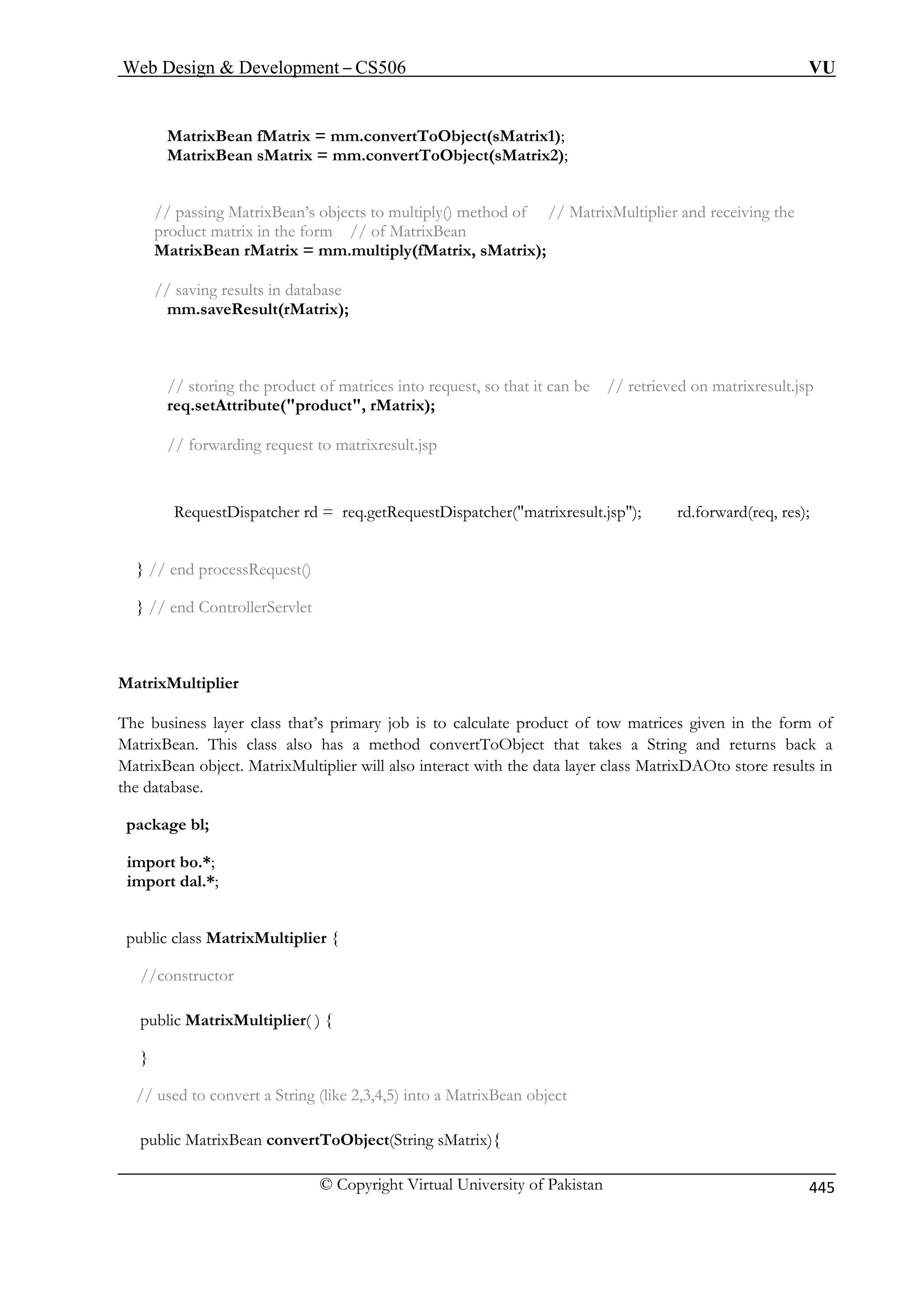
![Web Design Development – CS506 VU
© Copyright Virtual University of Pakistan 446
//splitting received string into tokens by passing “,” as delimeter
String tokens[] = sMatrix.split(,);
//creating MatrixBean object
MatrixBean matrixBO = new MatrixBean(
// converting tokens into integers
int w = Integer.parseInt(tokens[0]);
int x = Integer.parseInt(tokens[1]);
int y = Integer.parseInt(tokens[2]);
int z = Integer.parseInt(tokens[3]);
matrixBO.setMatrix(w , x , y, z);
return matrixBO;
ixBean objects
form of MatrixBean as well
an sMatrix){
// creating MatrixBean object where product of the matrices will be tored
MatrixBean resultMatrix = new MatrixBean();
// r eans object to // perform multipication
trix();
trix();
;
// code to multiply two matrices
for (int i=0; i2; i++) {
] += (matrixA[i][k] * matrixB[k][j]);
}
}
// storing the product from 2d array to MatrixBean object by // calling setter
);
// setting values into MatrixBean object by calling setter
} // end convertToObject() // used to multiply two matrices , receives two Matr
// and returns the product in the
public MatrixBean multiply(MatrixBean fMatrix , MatrixBe
retieving two dimensional arrays from MatrixB
int matrixA[ ][ ] = fMatrix.getMaintmatrixB[ ][ ] = sMatrix.getMa
int matrixC[ ][ ] = resultMatrix.getMatrix()
for (int j=0; j2; j++) { for (int k=0; k2; k++){
matrixC[i][j
}](https://image.slidesharecdn.com/webdesignanddevelopment-cs506handouts-141110100145-conversion-gate01/75/Web-design-and-development-cs506-handouts-446-2048.jpg)
![Web Design Development – CS506 VU
© Copyright Virtual University of Pakistan 447
re xC[0][0], matrixC[0][1], matrixC[1][0], matrixC[1][1] );
} // end MatrixMulitplier
} // end multiply()
// save results (MatrixBean containg product of two matrices) into // database using DAO
public void saveResult( MatrixBean resultMatrix )
atrixDAO dao = new MatrixDAO();
dao.saveMatrix(resultMatrix);
} // end MatrixMu
As class name depicts, it is used to store product results into database. Let’s look on the code to see how it
is accomplished.
import java.util.*; import java.sql.*;
import bo.*; public class MatrixDAO{
private Connection con;
// constructor public MatrixDAO() throws ClassNotFoundException , SQLException {
ablishConnection();
}
method used to estab lishConnection() throws
ClassNotFoundException , SQLException {
// establishing conection
Class.forName(sun.jdbc.odbc.JdbcOdbcDriver);
ng conUrl = jdbc:odbc:MatrixDSN;
con = DriverManager.getConnection(conUrl);
}
sultMatrix.setMatrix( matri
return resultMatrix;
{
M
}
litplier
MatrixDAO
package dal;
est
//
lish connection with db private void estab
Stri](https://image.slidesharecdn.com/webdesignanddevelopment-cs506handouts-141110100145-conversion-gate01/75/Web-design-and-development-cs506-handouts-447-2048.jpg)
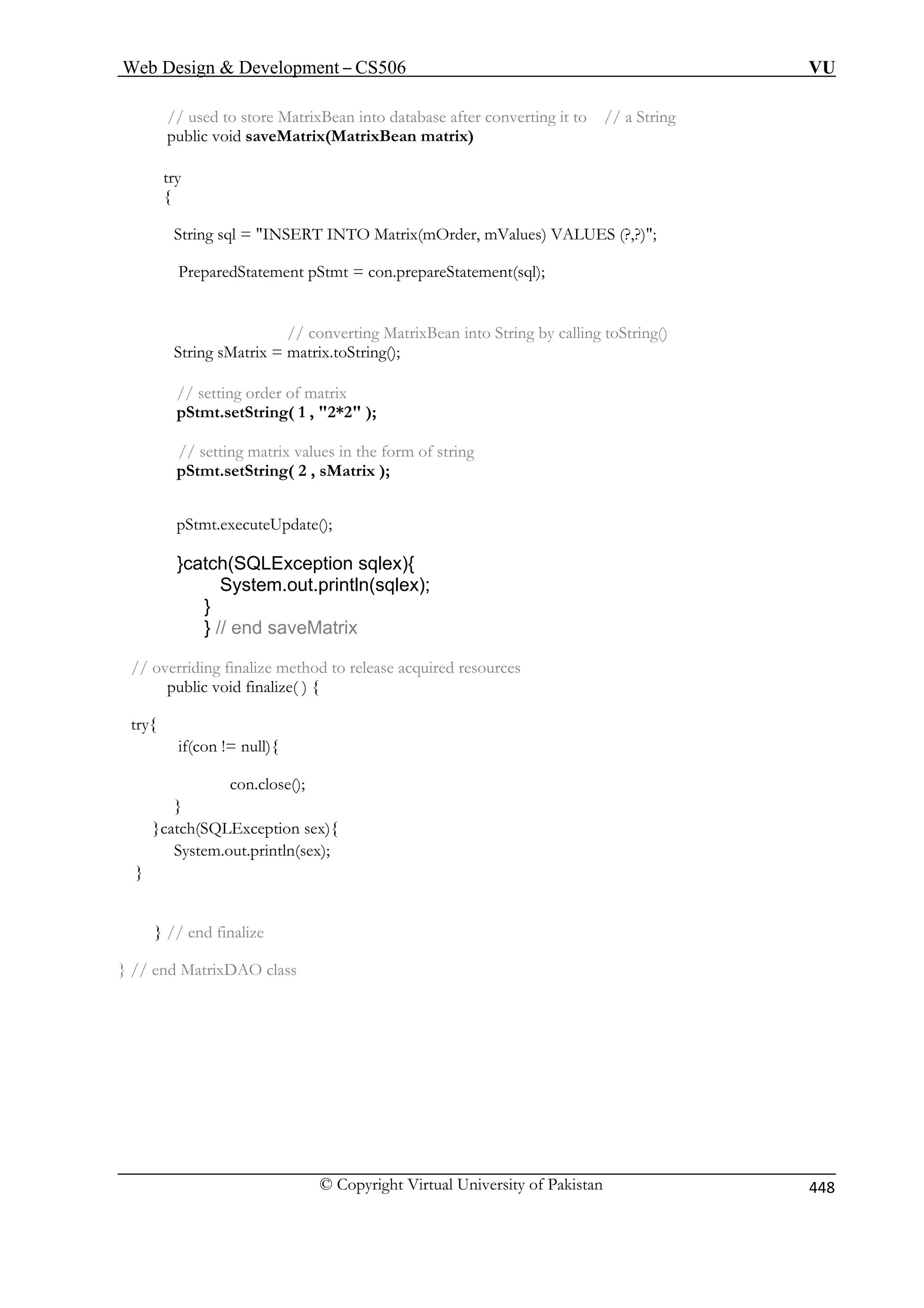
![Web Design Development – CS506 VU
matrixresult.jsp
Used to display resultant product o
%-- importing “bo” package th
%@ page import=bo.*%
html
body
h1The resultant Matrix is /h1
llerServlet
% MatrixBean productMatrix = (MatrixBean)request.getAttribute(product);
at it can be displayed
int matrix[][] = productMatrix.getMatrix() ;
ABLE
TR
TD %= matrix[0][0] % /TD
TD %= matrix[1][0] % /TD
/body
/html
f two matrices. The code is given below: at contains MatrixBean -%
%-- retrieving MatrixBean object from request, that was set on Contro --%
// retrieving values in 2d array so th
% %-- displaying MatrixBean’s object values -%
T
TD %= matrix[0][1] % /TD
/TR
TR
TD %= matrix[1][1] % /TD
/TABLE
© Copyright Virtual University of Pakistan 449](https://image.slidesharecdn.com/webdesignanddevelopment-cs506handouts-141110100145-conversion-gate01/75/Web-design-and-development-cs506-handouts-449-2048.jpg)

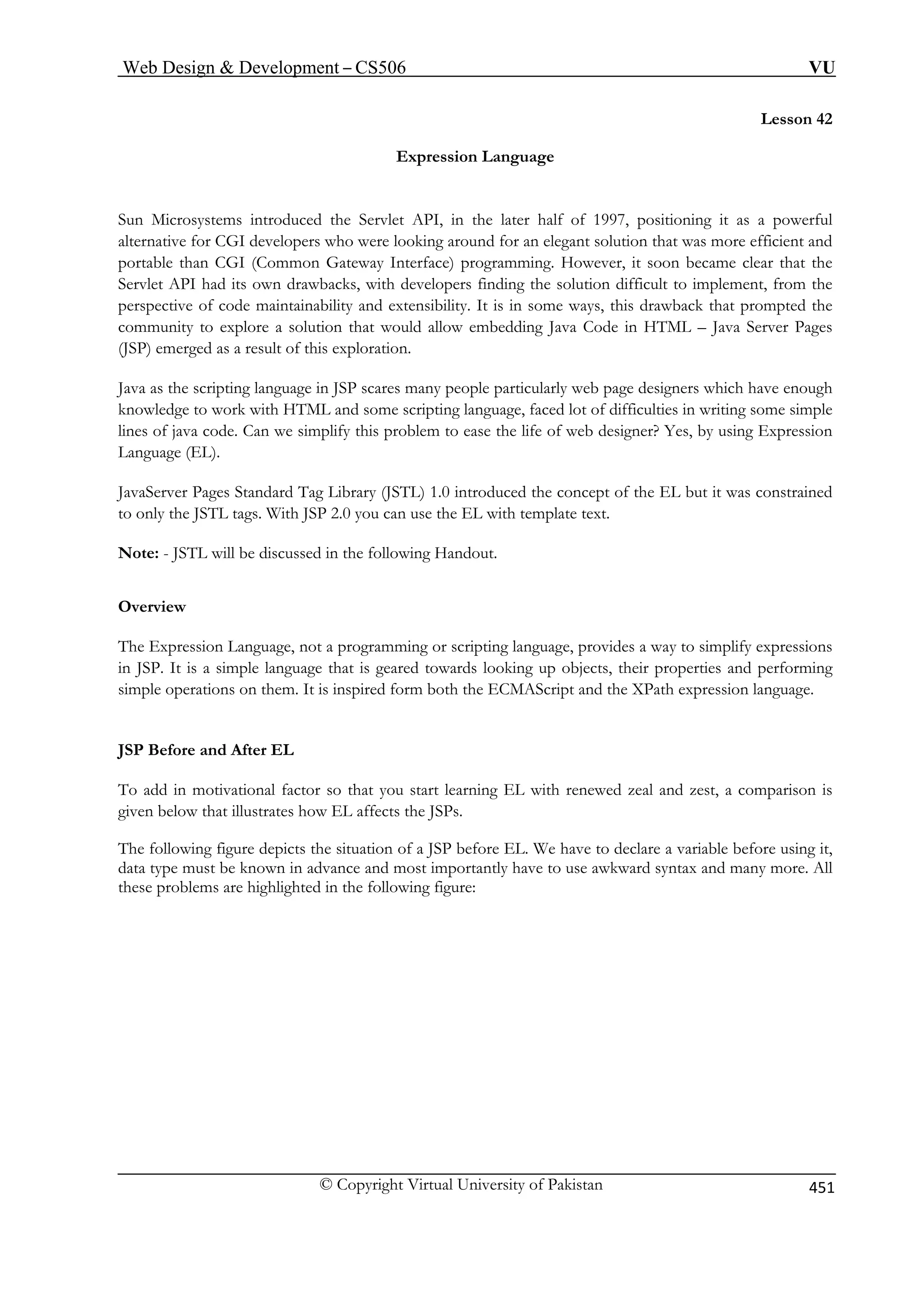
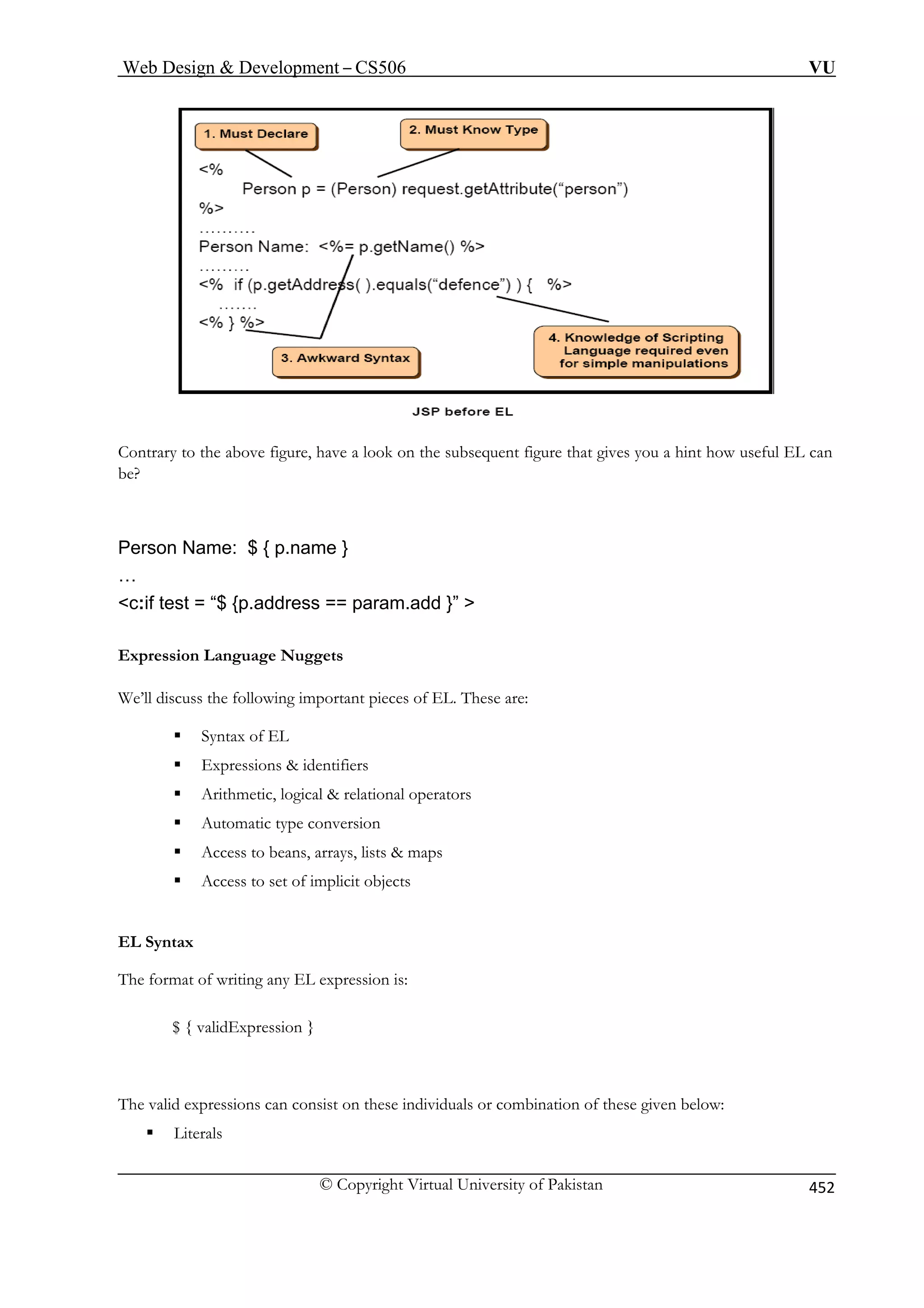
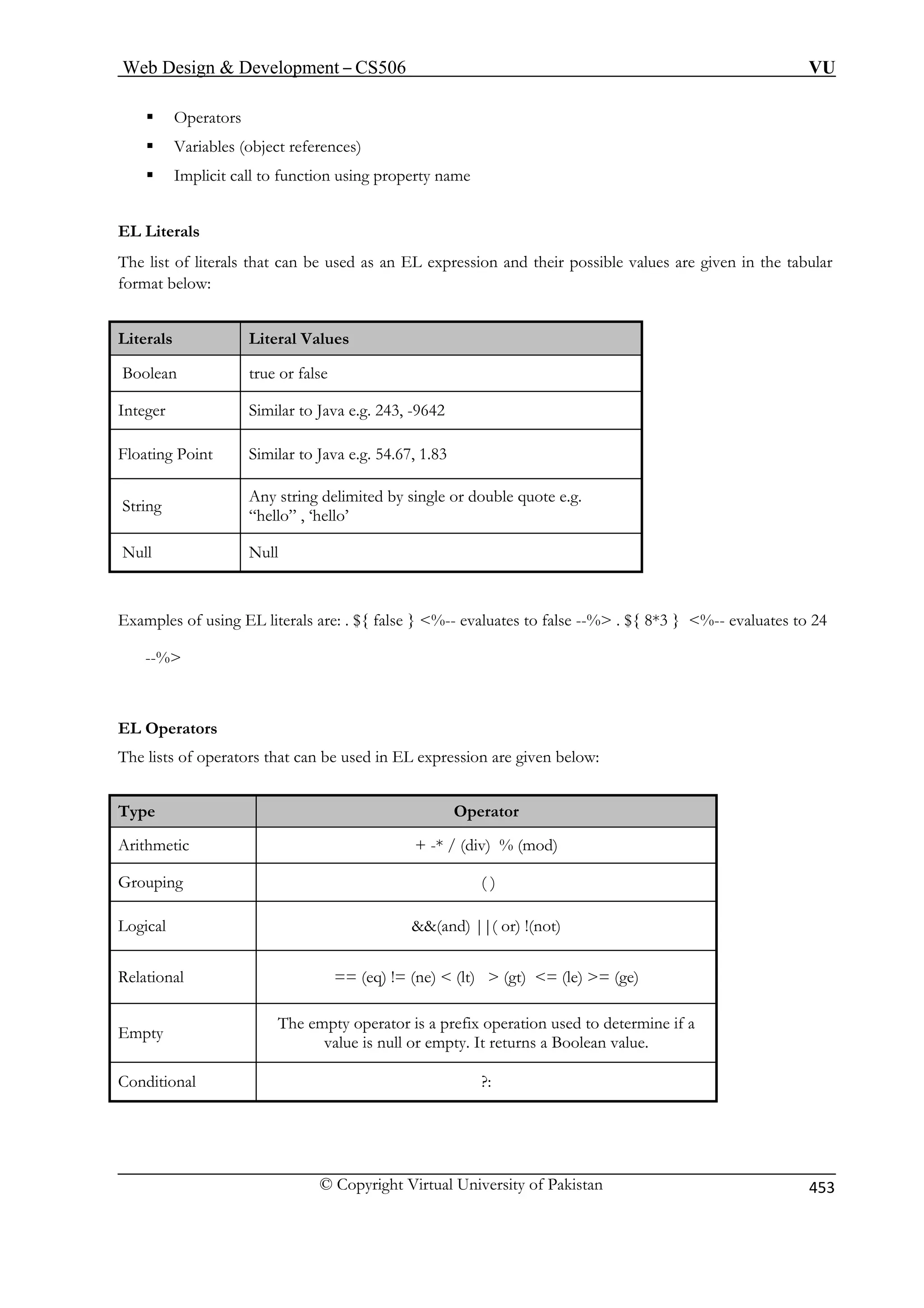
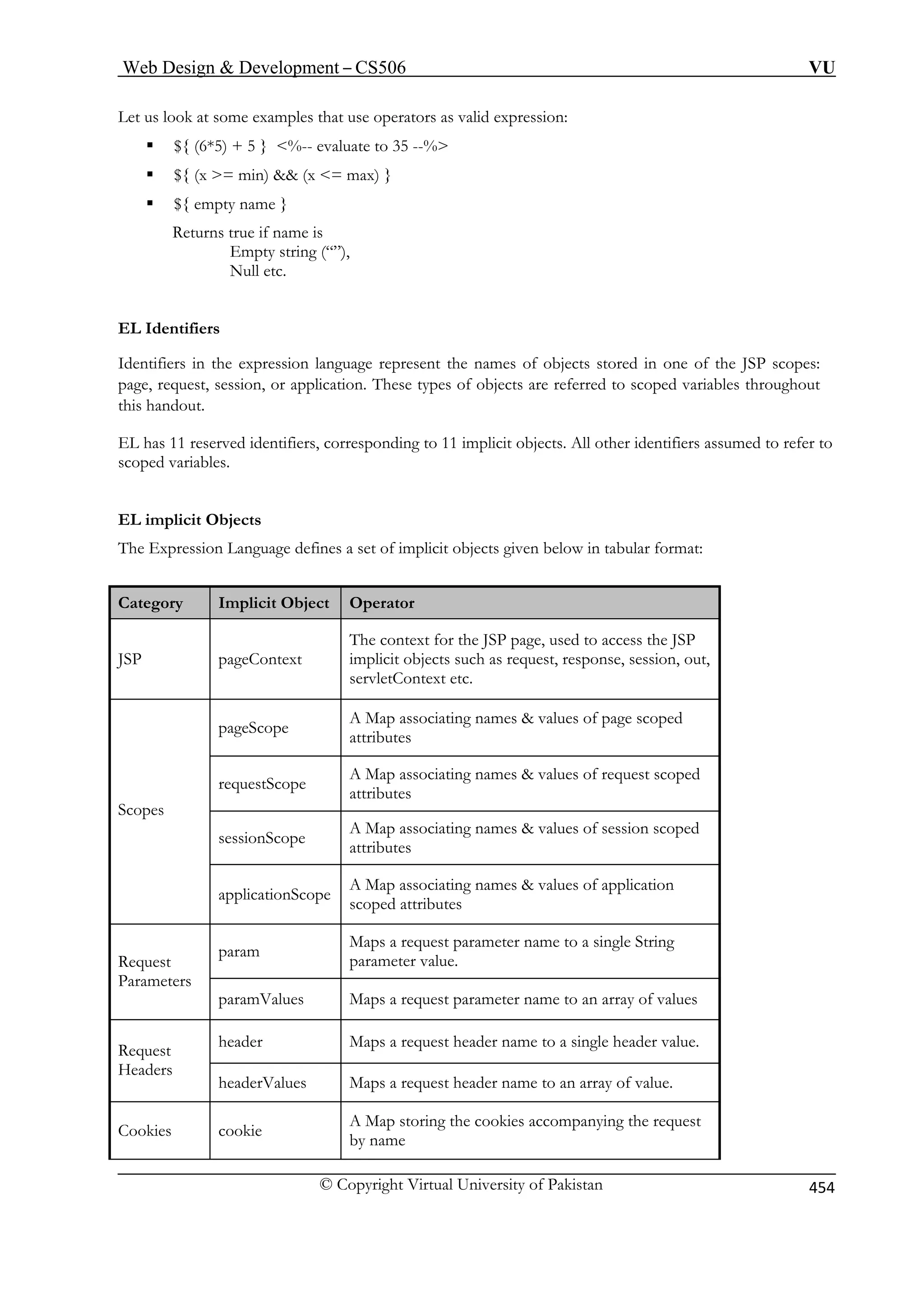
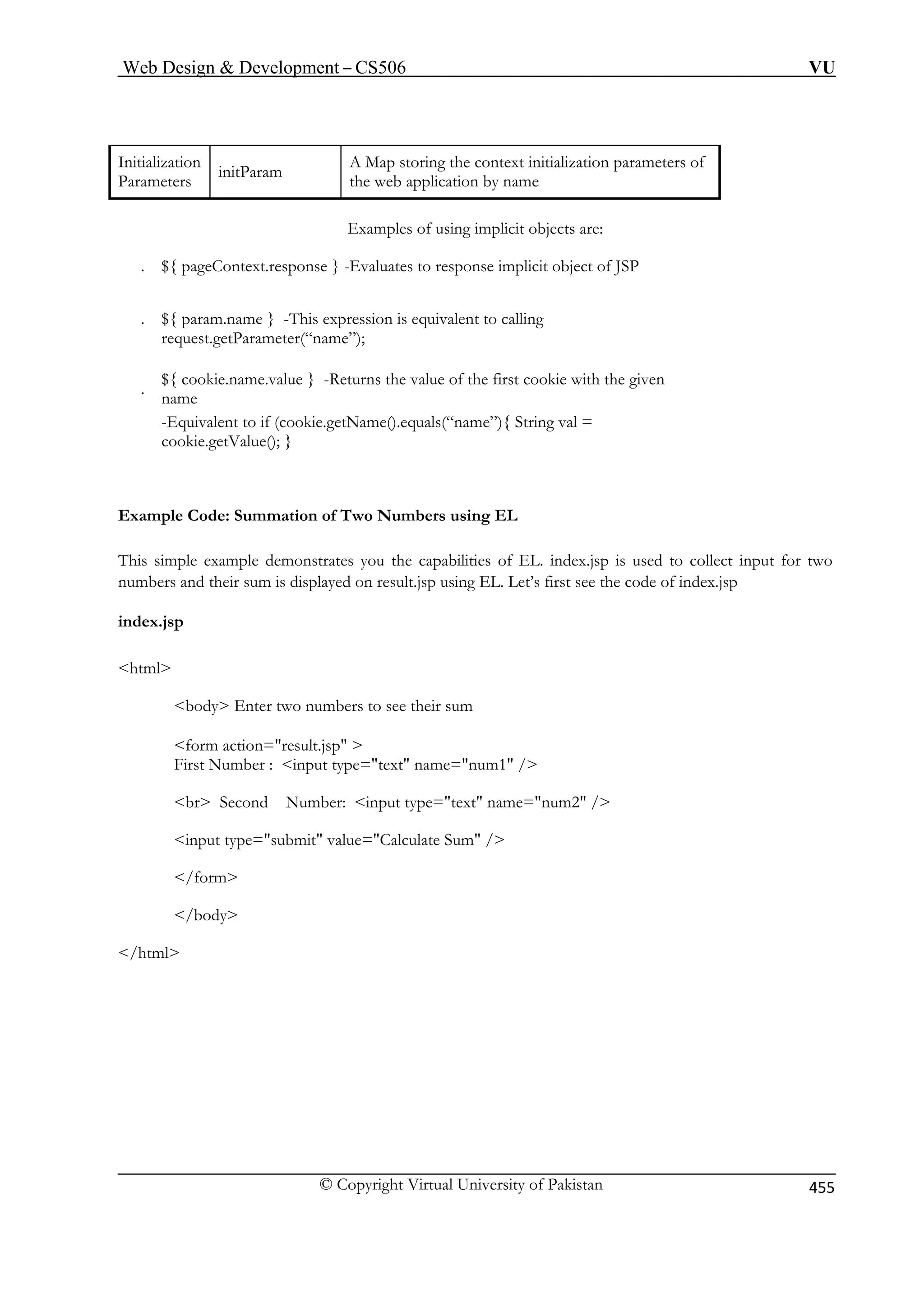
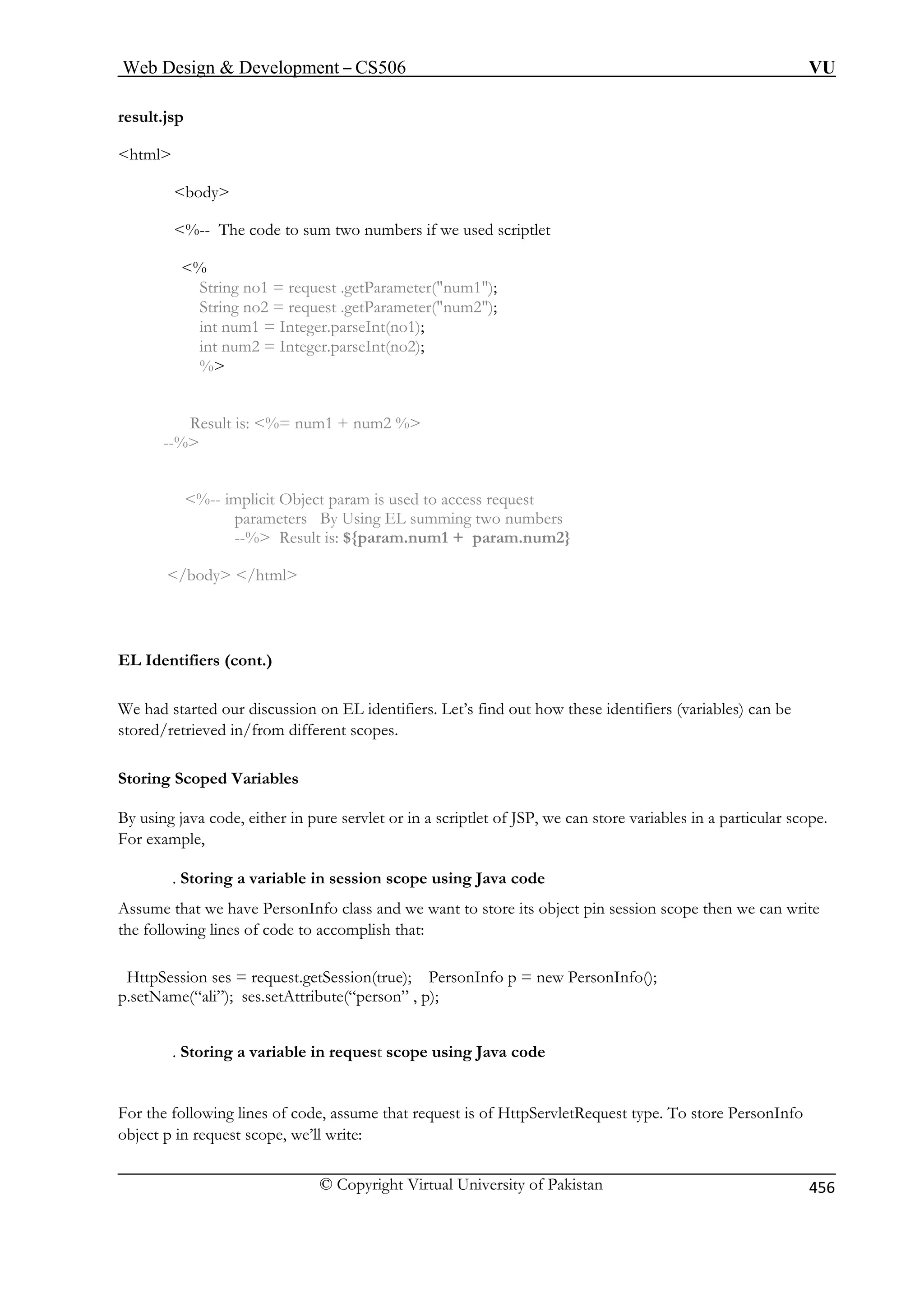
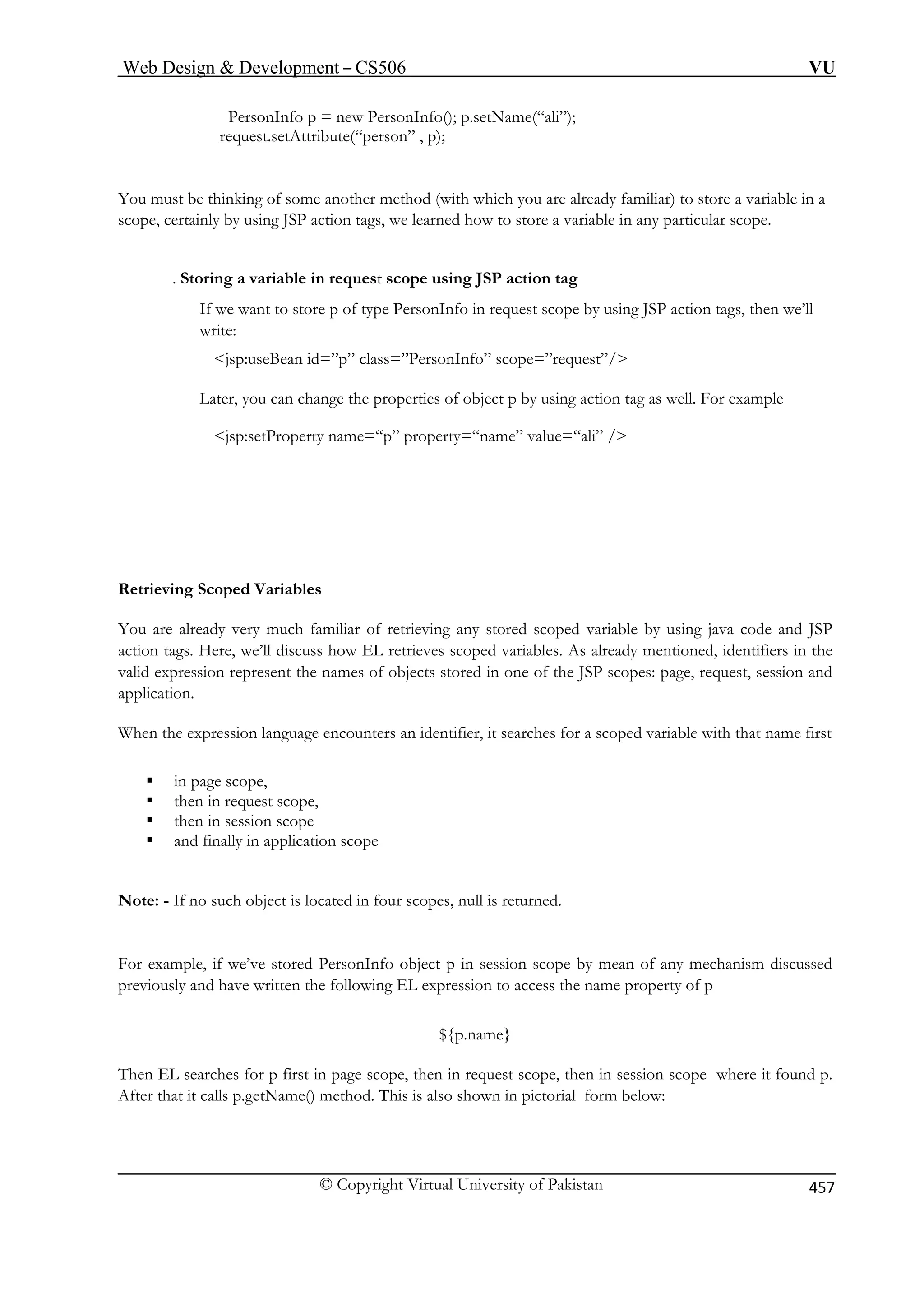
![Web Design Development – CS506 VU
© Copyright Virtual University of Pakistan
458
EL Accessors
The dot (.) and bracket ([ ]) operator let you access identifies and their properties. The dot operator
typically used for accessing the properties of an object and the bracket operator is generally used to retrieve
elements of arrays and collections.
. Dot (.) operator
as name property and its object person is stored in some scope.
Then to access the name property of person object, we’ll write the following expression using EL:
Assume that JavaBean PersonInfo h The EL accesses the object’s properties using the JavaBeans conventions therefore getName() must be
define sonInfo. Moreover, if property being accessed itself an object, the dot operator can be
applied recurs example
d in Perively. For
${user. address. city}](https://image.slidesharecdn.com/webdesignanddevelopment-cs506handouts-141110100145-conversion-gate01/75/Web-design-and-development-cs506-handouts-458-2048.jpg)
![Web Design Development – CS506 VU
© Copyright Virtual University of Pakistan 459
. Brack
This operator can be applied to arrays collections implementing List interface e.g. ArrayList etc.
ƒ
ƒ ample, ${ personList[2] } returns the 3rd element stored in it
Moreover, this operator can also be applied to collections implementing Map interface e.g. HashMapetc.
ƒ Key is specified inside brack
ƒ For example, ${ myMap[“id”] } returns the value associated with the id(key)
EL – Robust Features
racteristics of Expression Language are:
e
$ { “Hello” ${user.firstName} ${user.lastName} }
ƒ EL also supports automatic type conversion; as a result primitive can implicitly wrap and unwrap
java classes. For example
ƒ Most importantly, if object/identifier is null, no NullPointerException would be thrown☺. For
xample
Assum ha exception would be thrown and the result would also be null.
Using Expressio Language
Expression Language can be used in following situations
ƒ A custom actions. E.g.
jsp:setProperty id = “person” value = ${….} /
et ([ ]) operator
Index of the element appears inside brackets
For ex
ets
Some powerful cha
ƒ Multiple expressions can be combined and intermixed with static text. For exampl
into/from their corresponding
e. If the expression written is:
${person.name}
e tt person is null, then non
s attribute values in standard](https://image.slidesharecdn.com/webdesignanddevelopment-cs506handouts-141110100145-conversion-gate01/75/Web-design-and-development-cs506-handouts-459-2048.jpg)
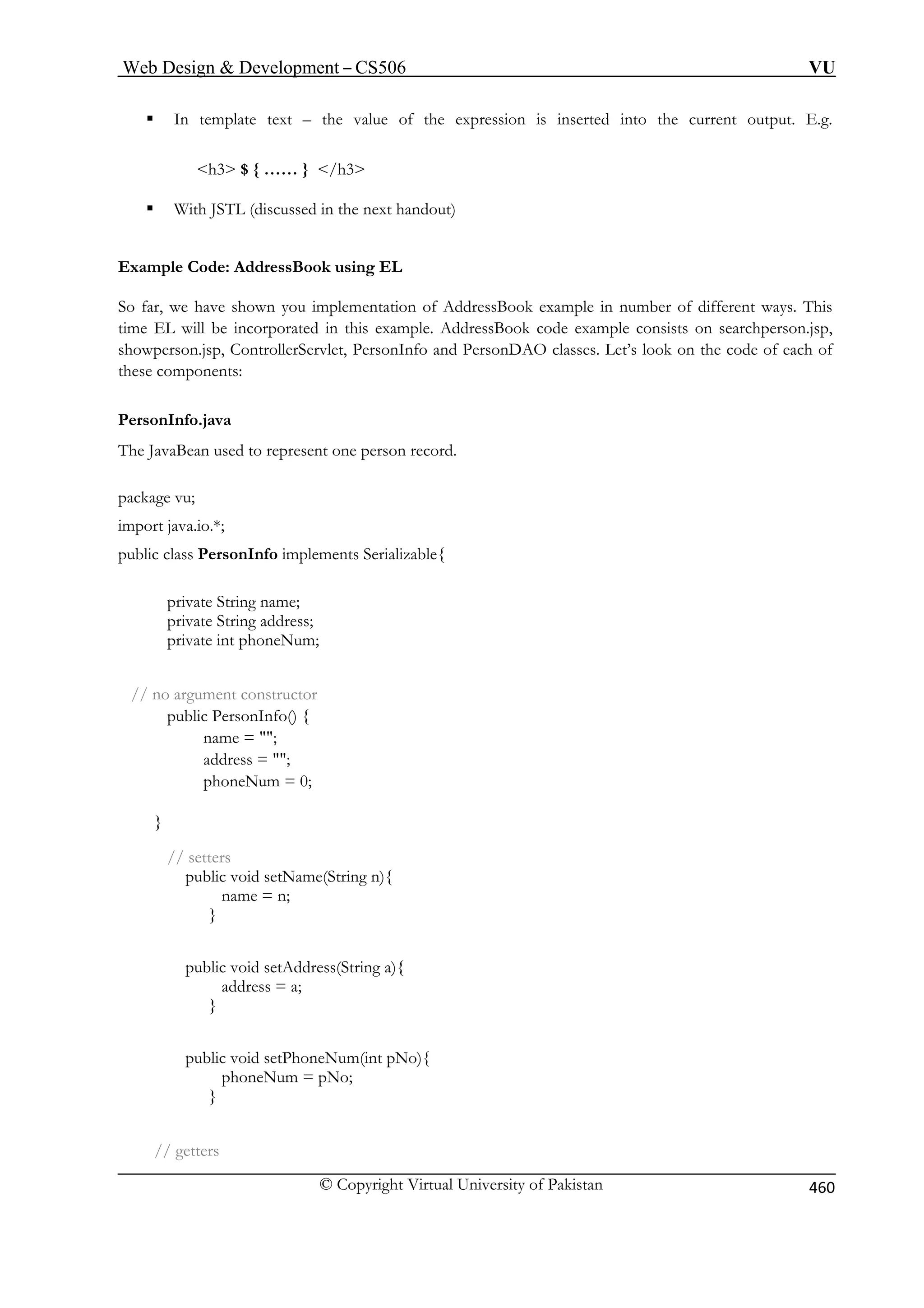
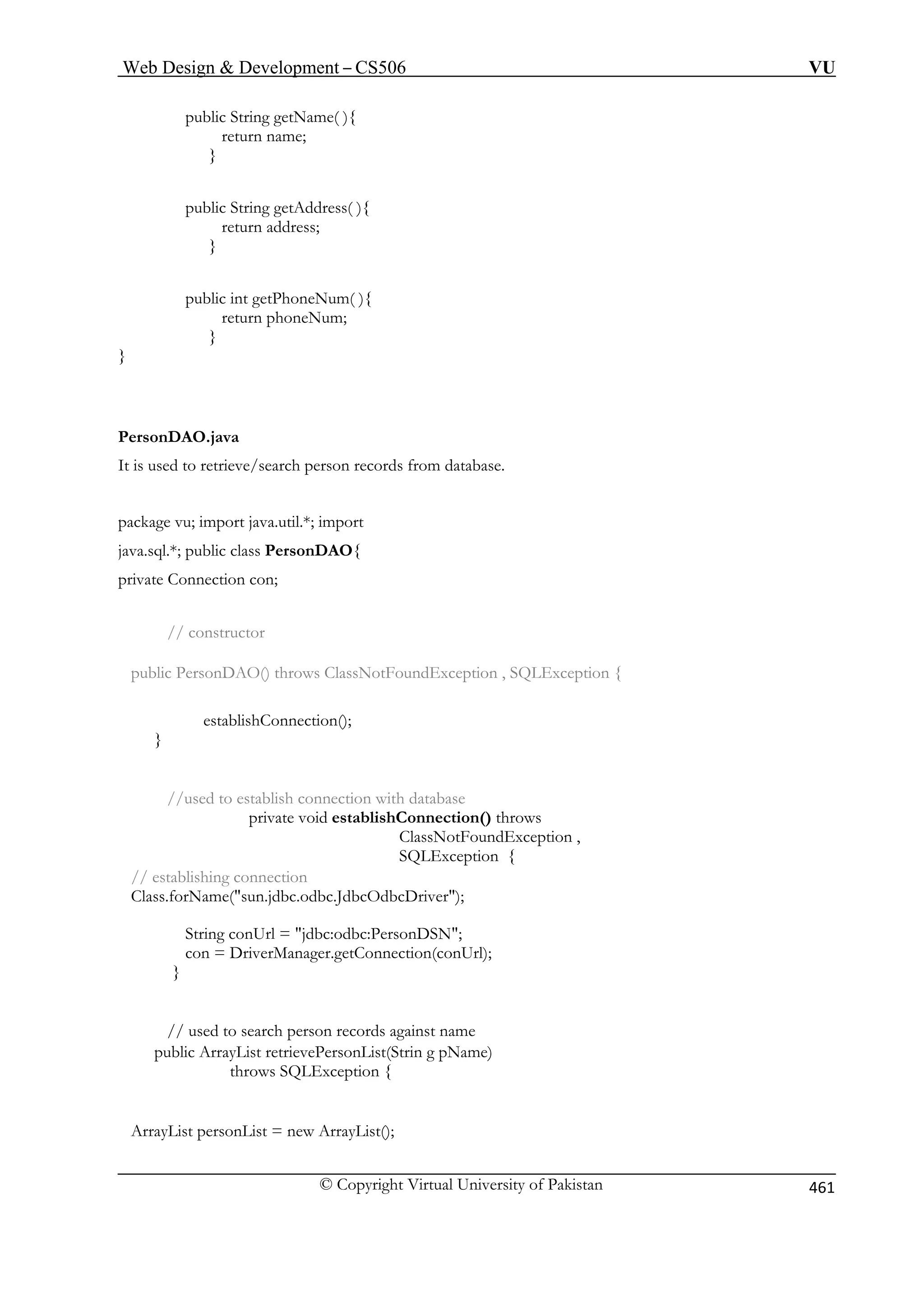
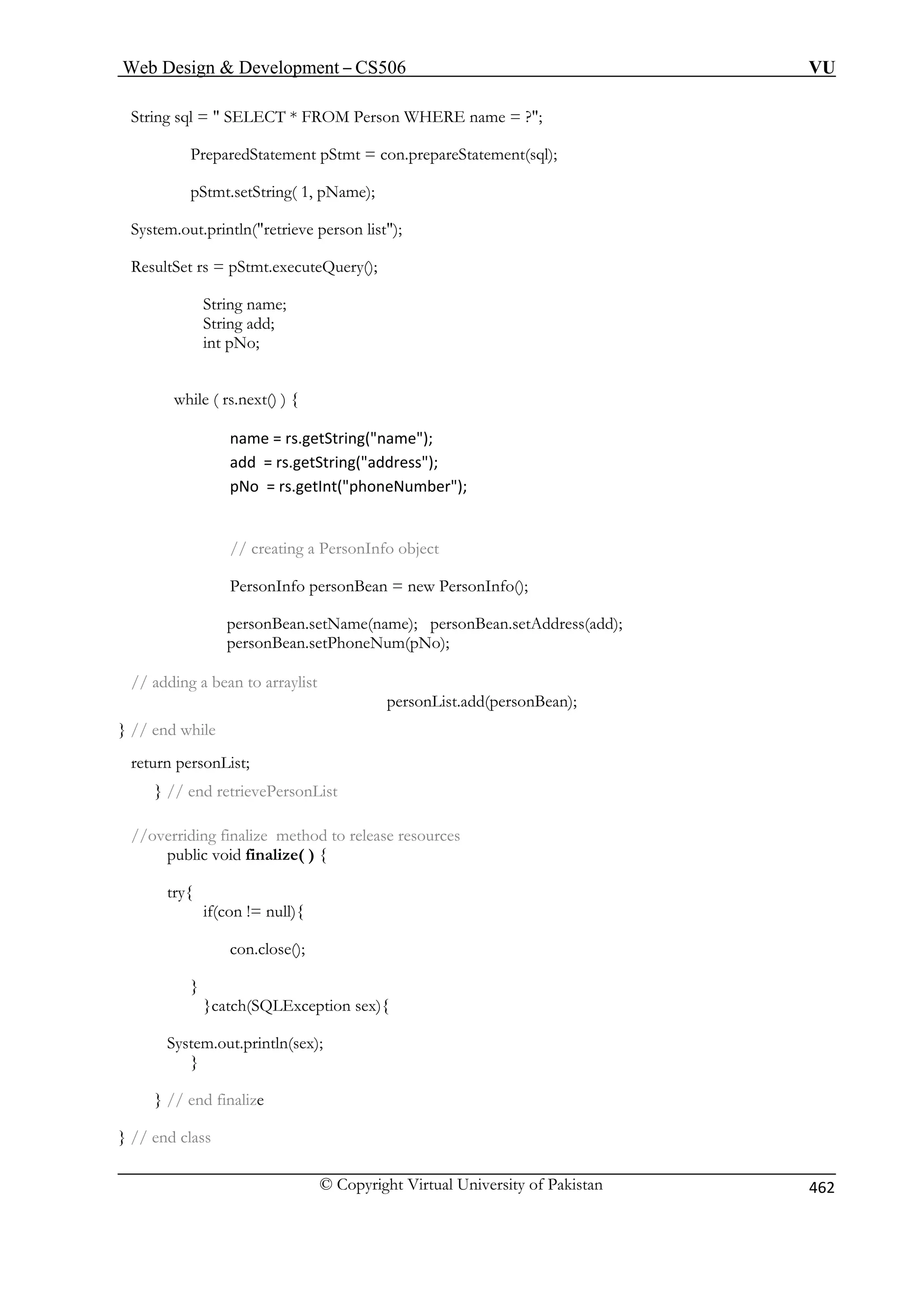
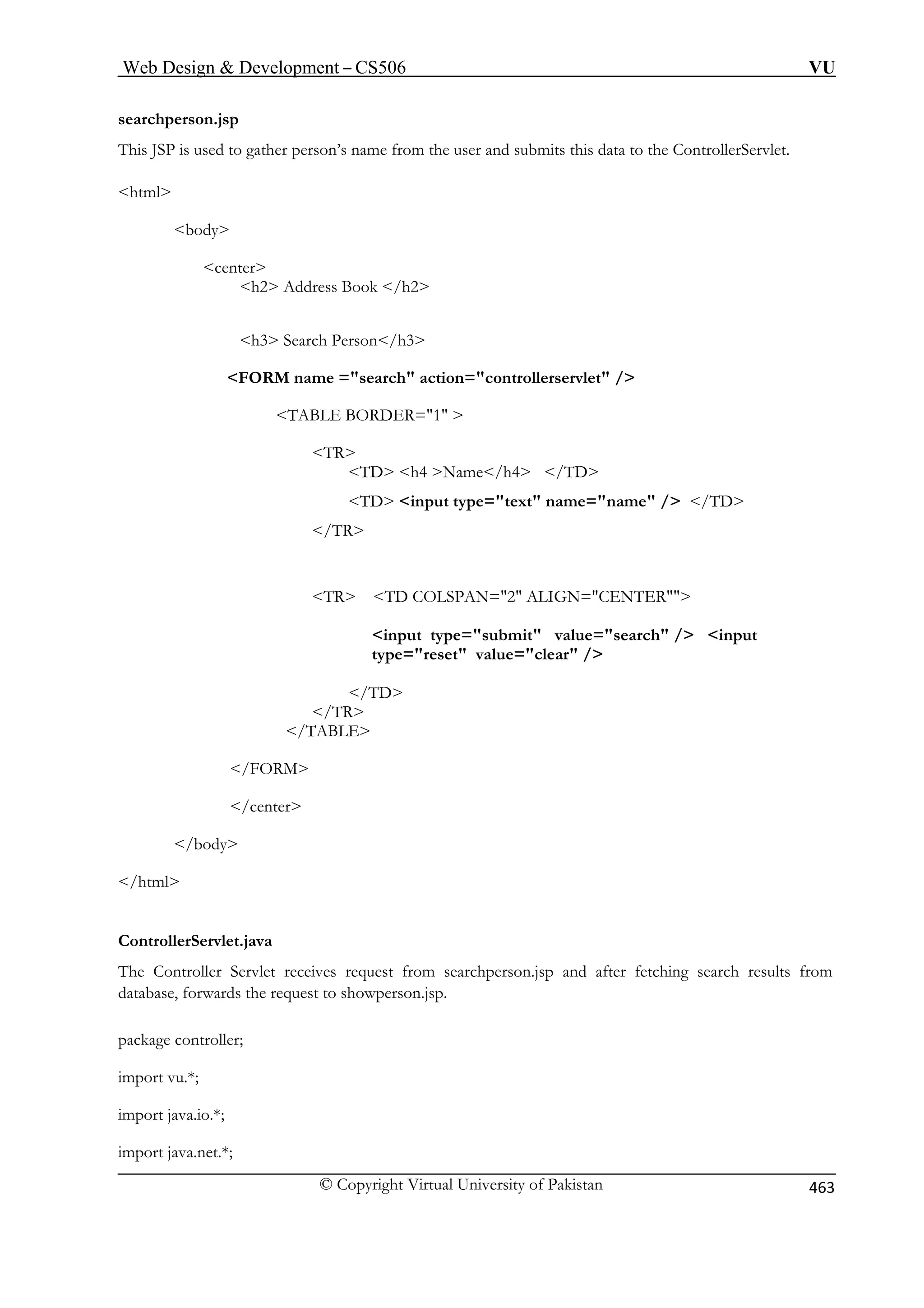
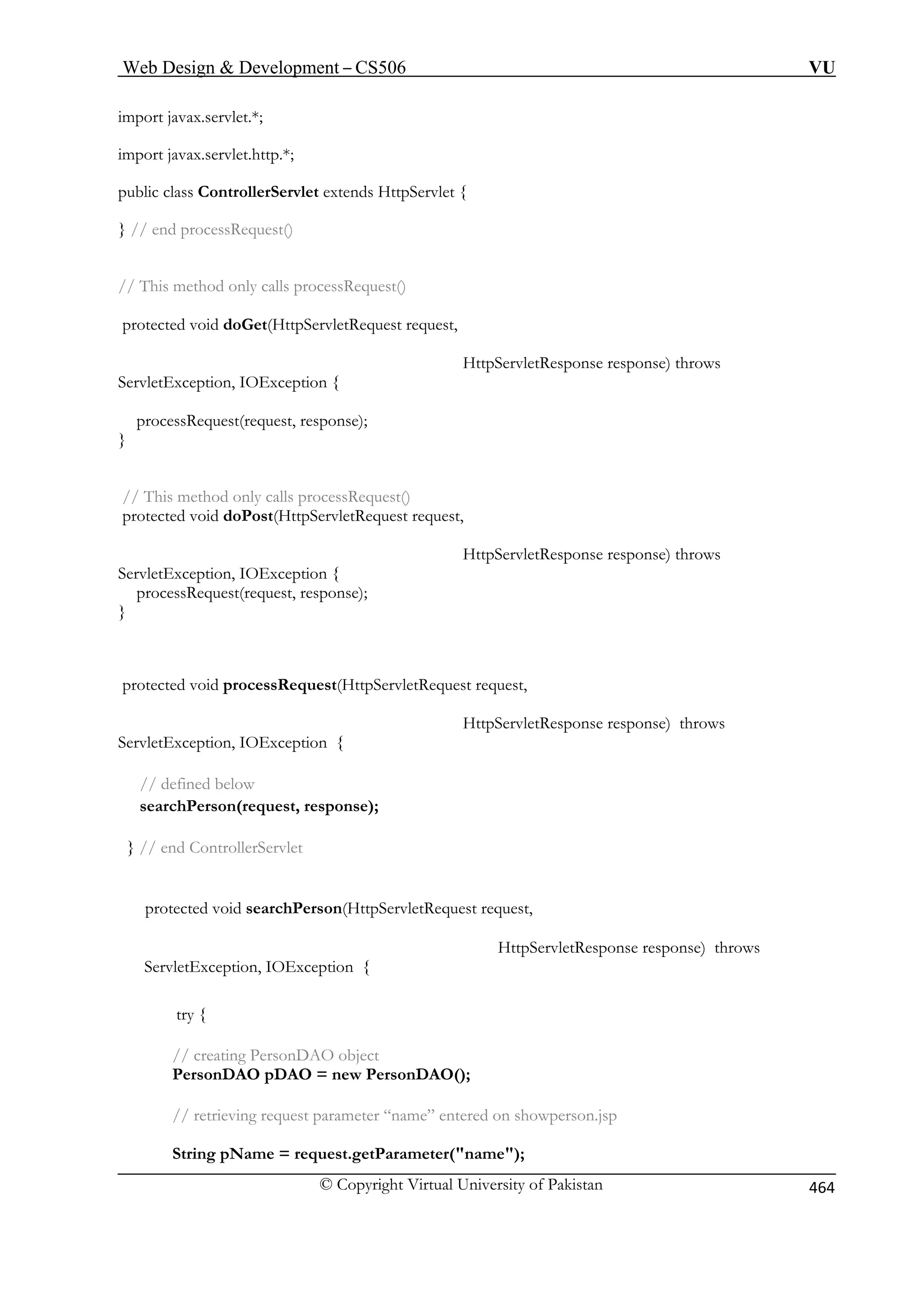
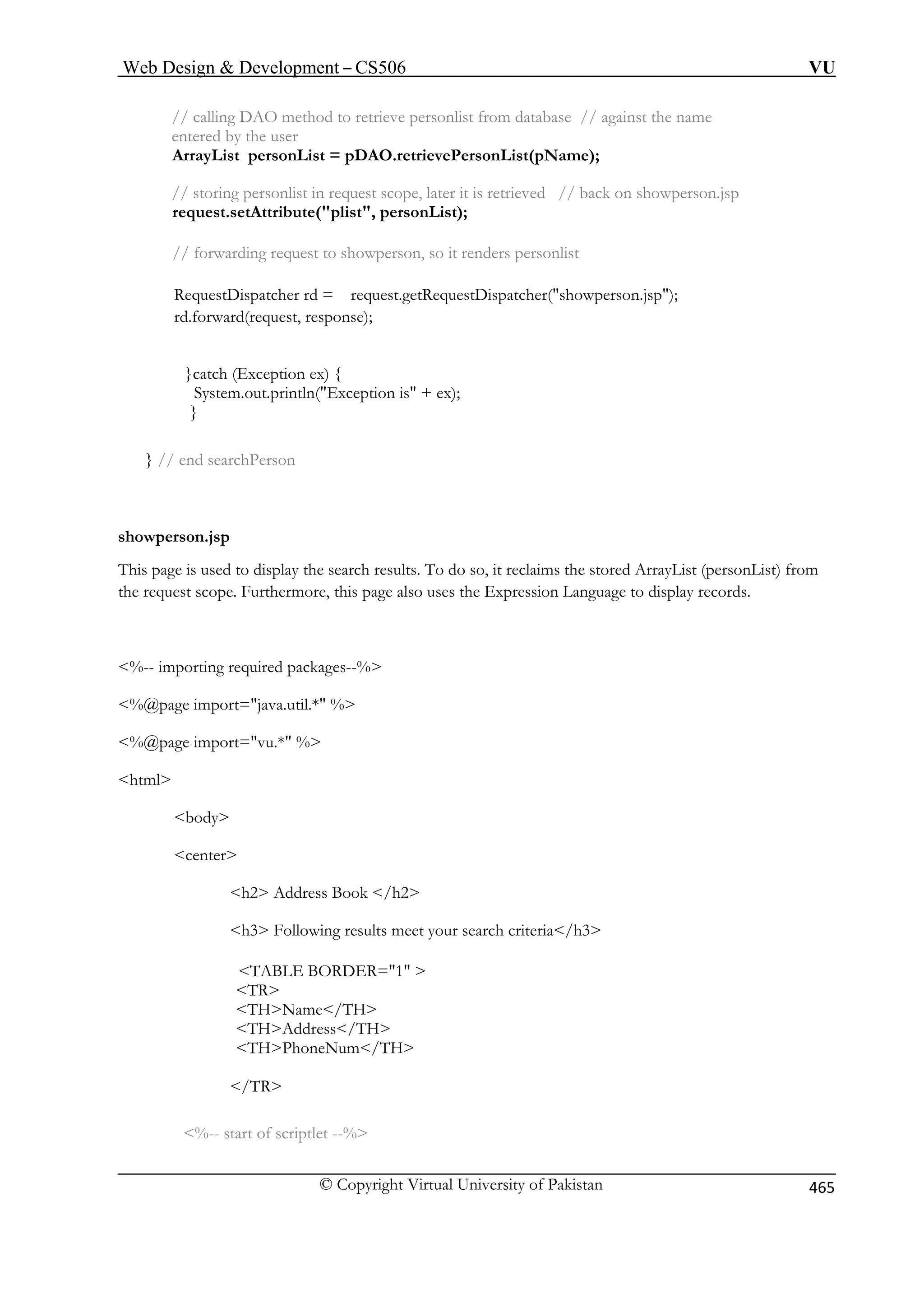
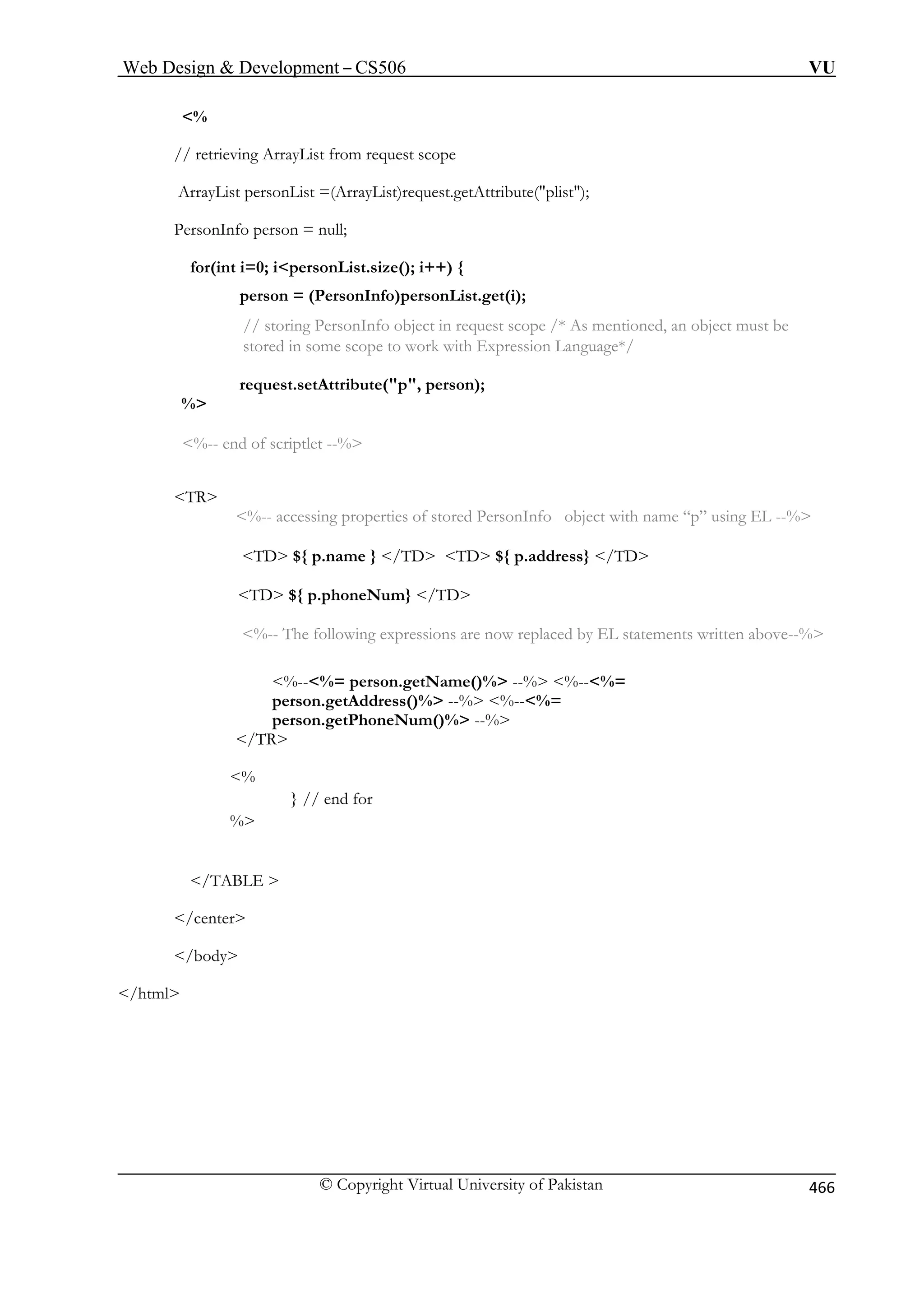
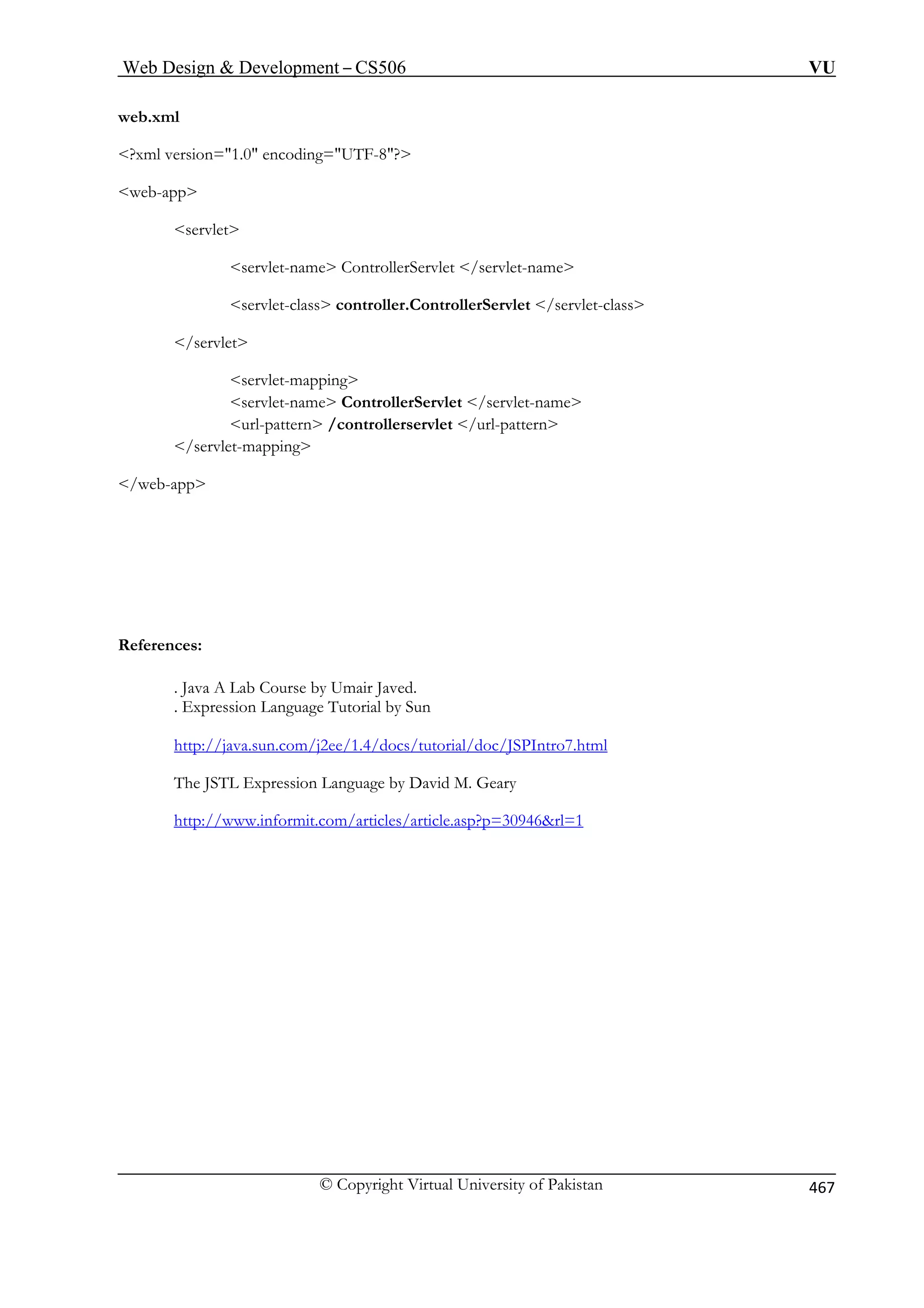
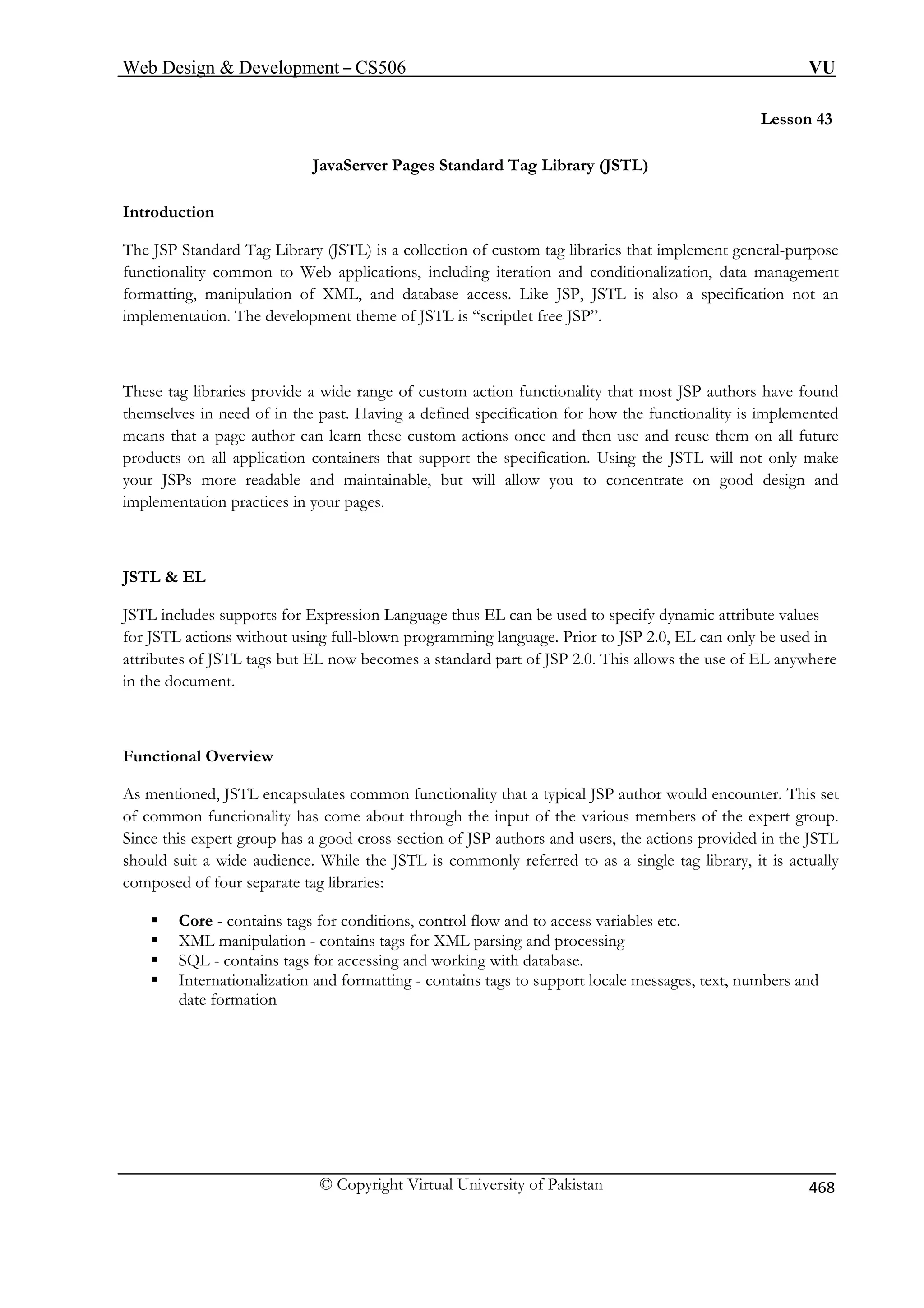
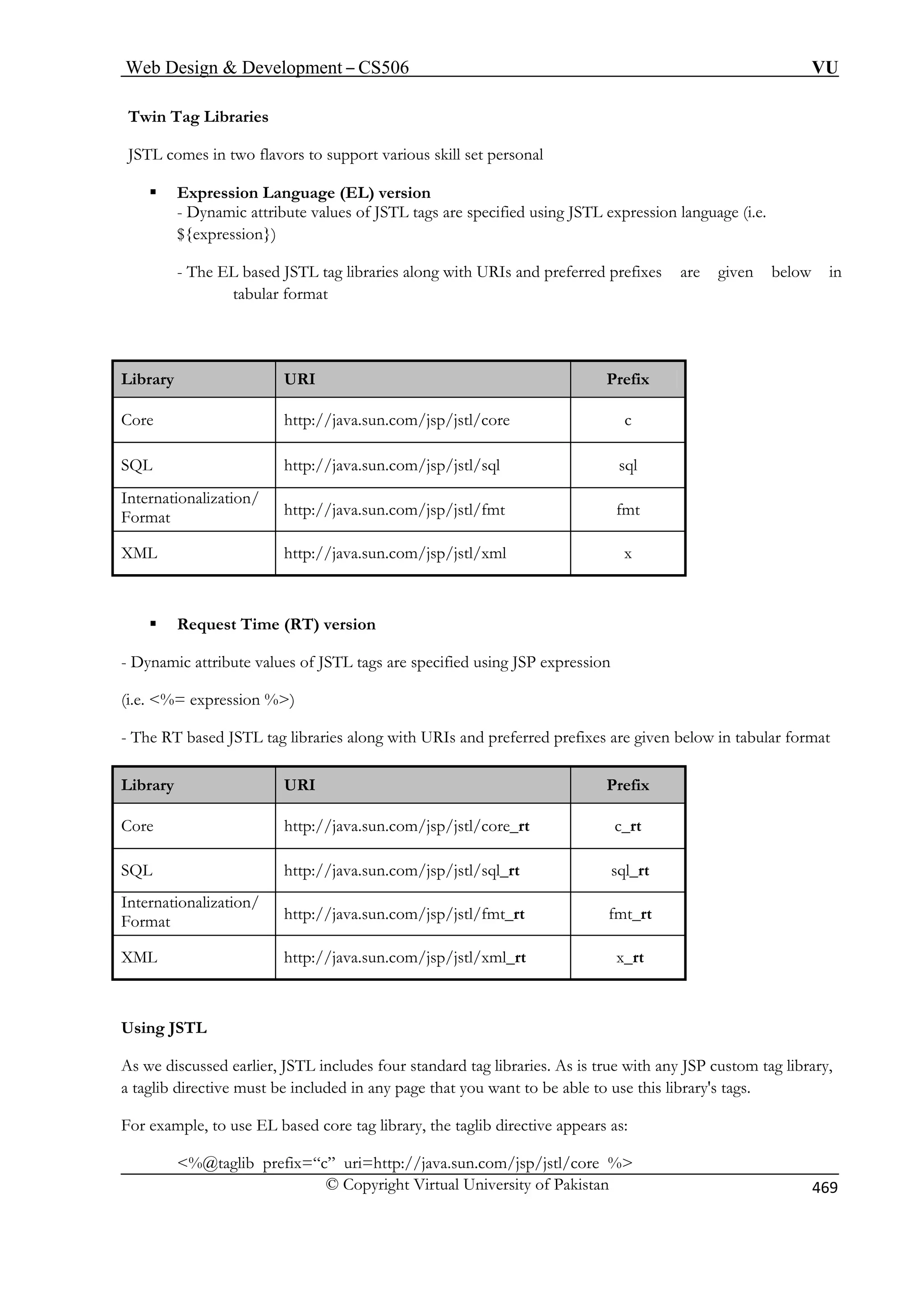
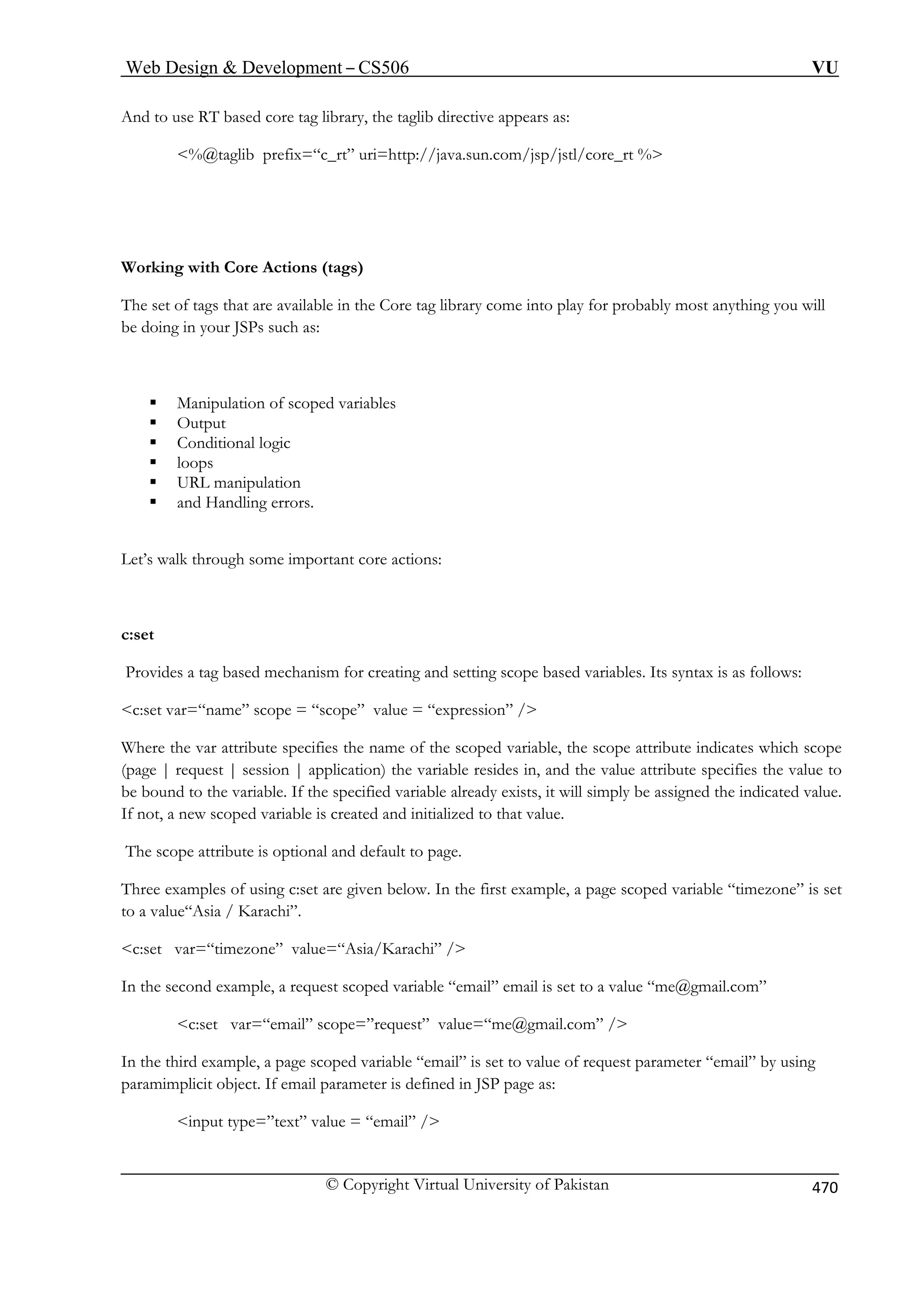
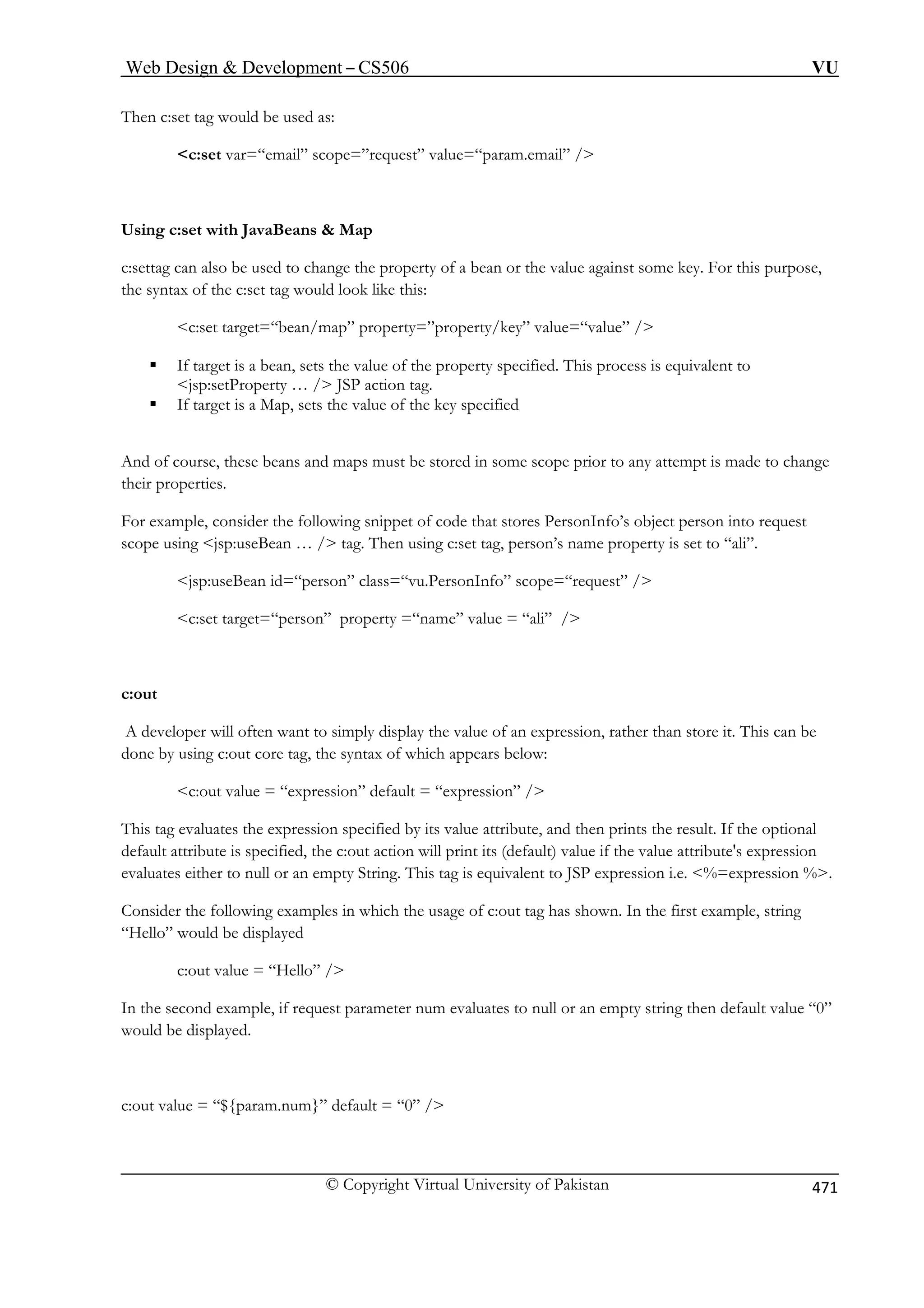
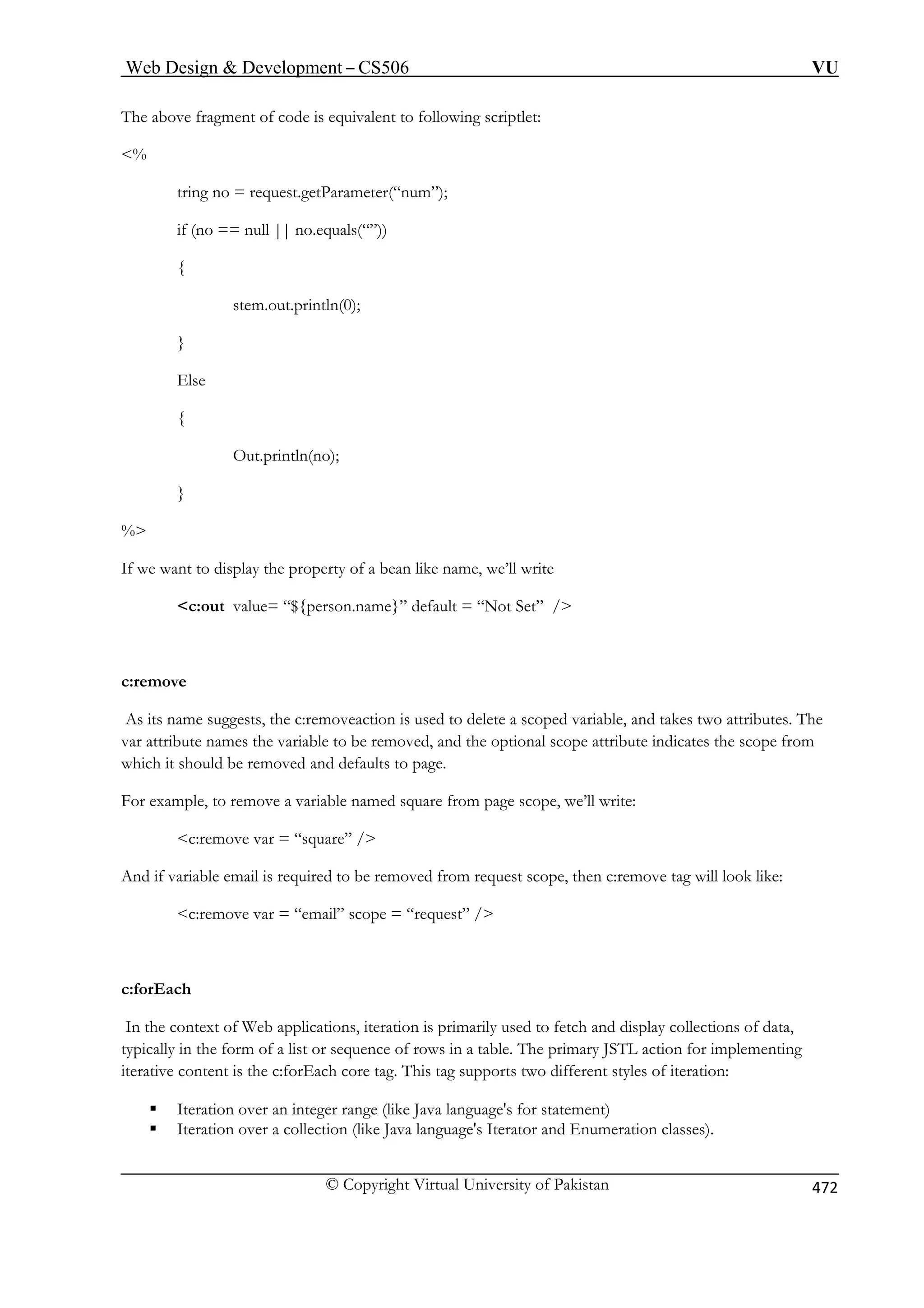
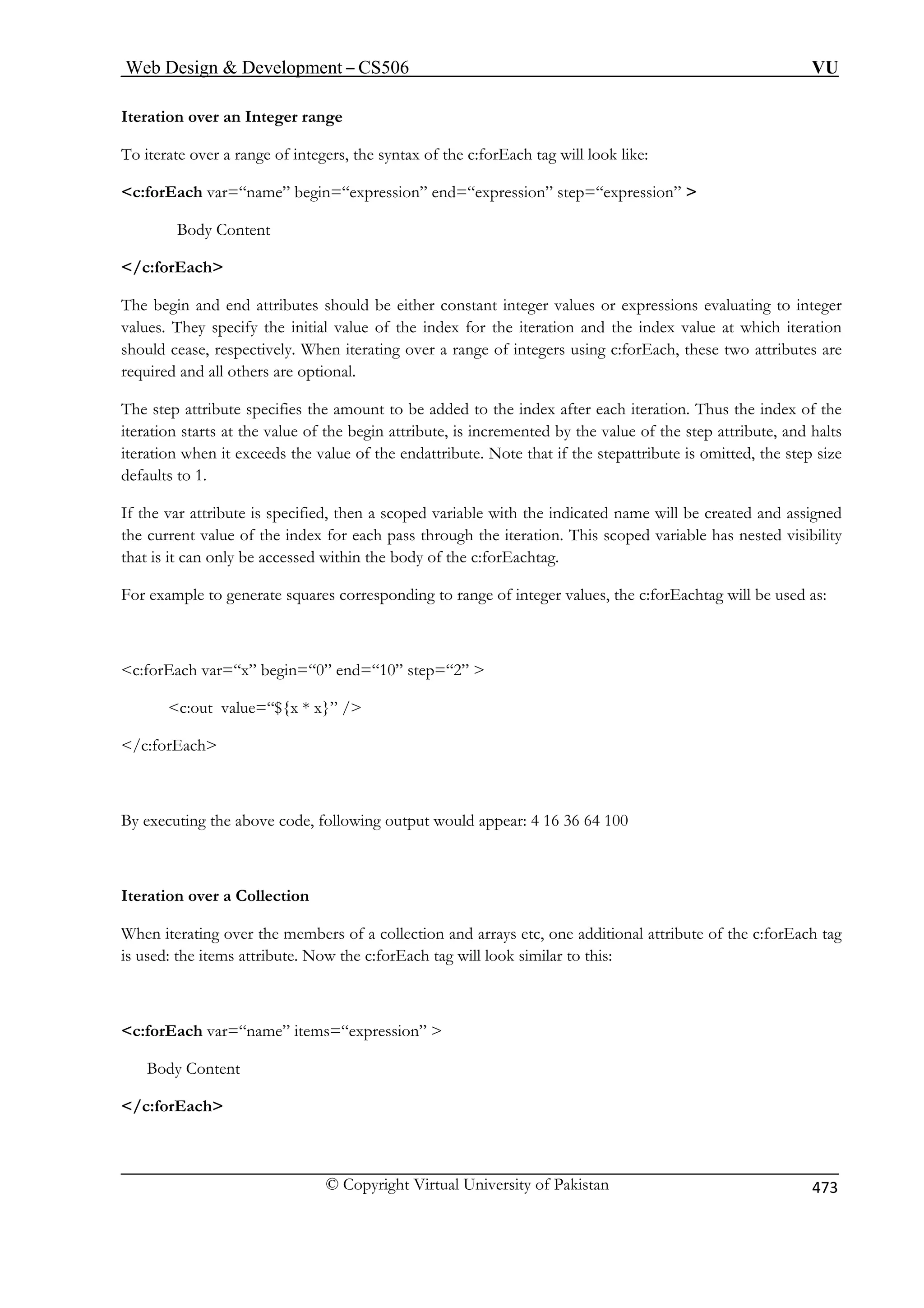
![Web Design Development – CS506 VU
© Copyright Virtual University of Pakistan 474
When you use this form of the c:forEach tag, the items attribute is the only required attribute. T
the items attribute should be the collection/array over whose members the iteration is to occur, and is
typically specified using an EL expression. If a vari o specified using var attribute, then the
named variable will be bound to collection for each iteration pass.
For example, to iterate over a Str java code, we used to write in JSP:
for(int i=0; imessages.length; i++) {
String msg = messag s[i];
%
%= msg %
%
his can be done using c:forEach tag in much simpler way as shown below:
c:forEach var=“msg” items=“${messages}”
c:out value= “${msg}” /
/c:forEach
Similarly, to iterate over a persons ArrayList that contains PersonInfo objects, we used to write in JSP:
%
{
PersonInfo p == (PersonInfo)persons.get(i);
String name = p.getName();
%
%= name %
%
} // end for
%
he value of
able name is alssuccessive elements of theing array (messages) using
%
e
} // end for
%
T
ArrayList persons = (ArrayList)request.getAttribute(“pList”); for(int i=0; ipersons.size(); i++)](https://image.slidesharecdn.com/webdesignanddevelopment-cs506handouts-141110100145-conversion-gate01/75/Web-design-and-development-cs506-handouts-474-2048.jpg)
